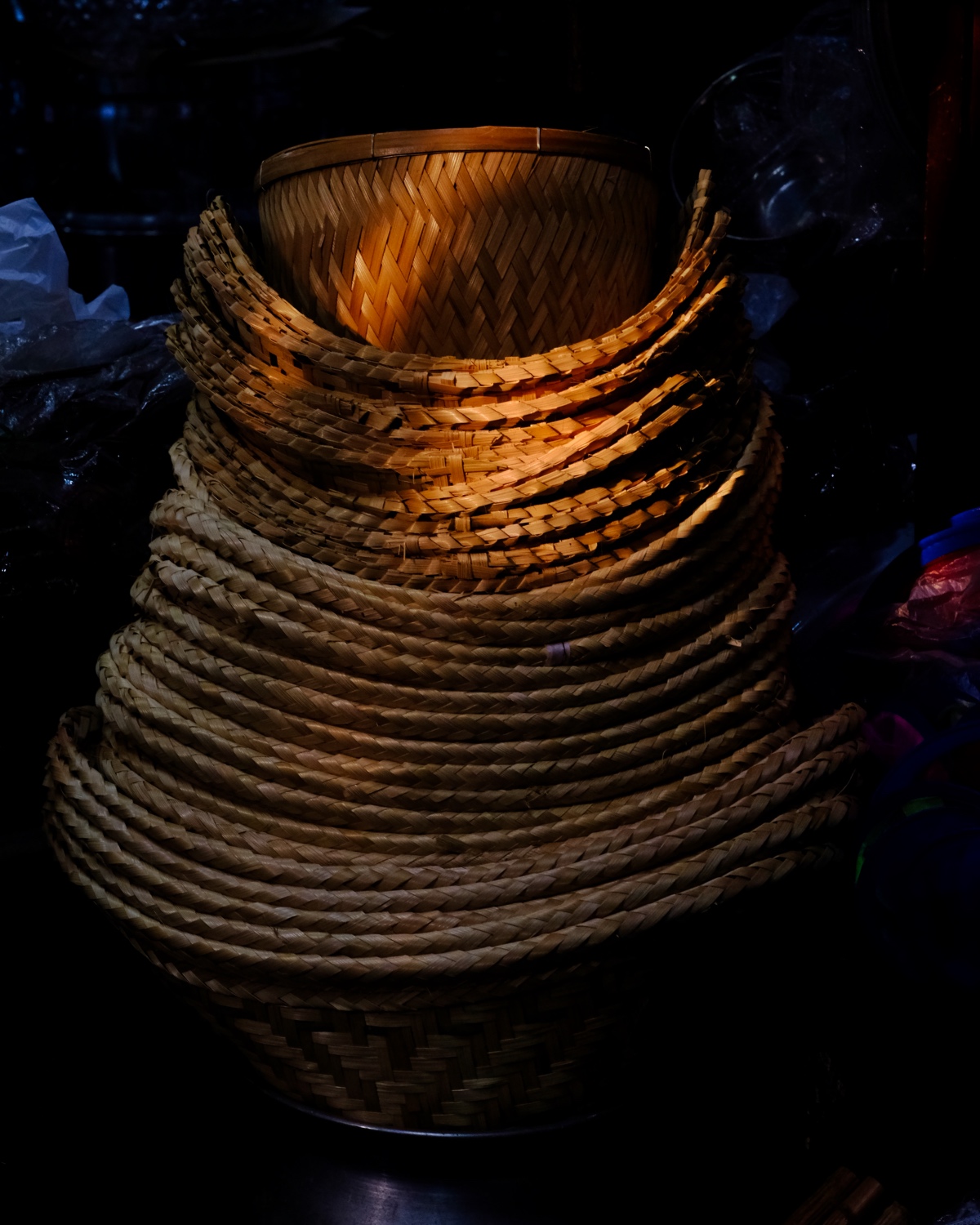My most current blog entry:
Entries in Outdoor Markets (25)
Poland: Gdansk is a beautiful vacation destination!
 Friday, April 24, 2020 at 5:40PM
Friday, April 24, 2020 at 5:40PM My wife and I visited Poland (Kraków and Gdańsk) in the summer of 2014. This entry is of the three days we spent in Gdańsk, while there is another entry for Kraków HERE.
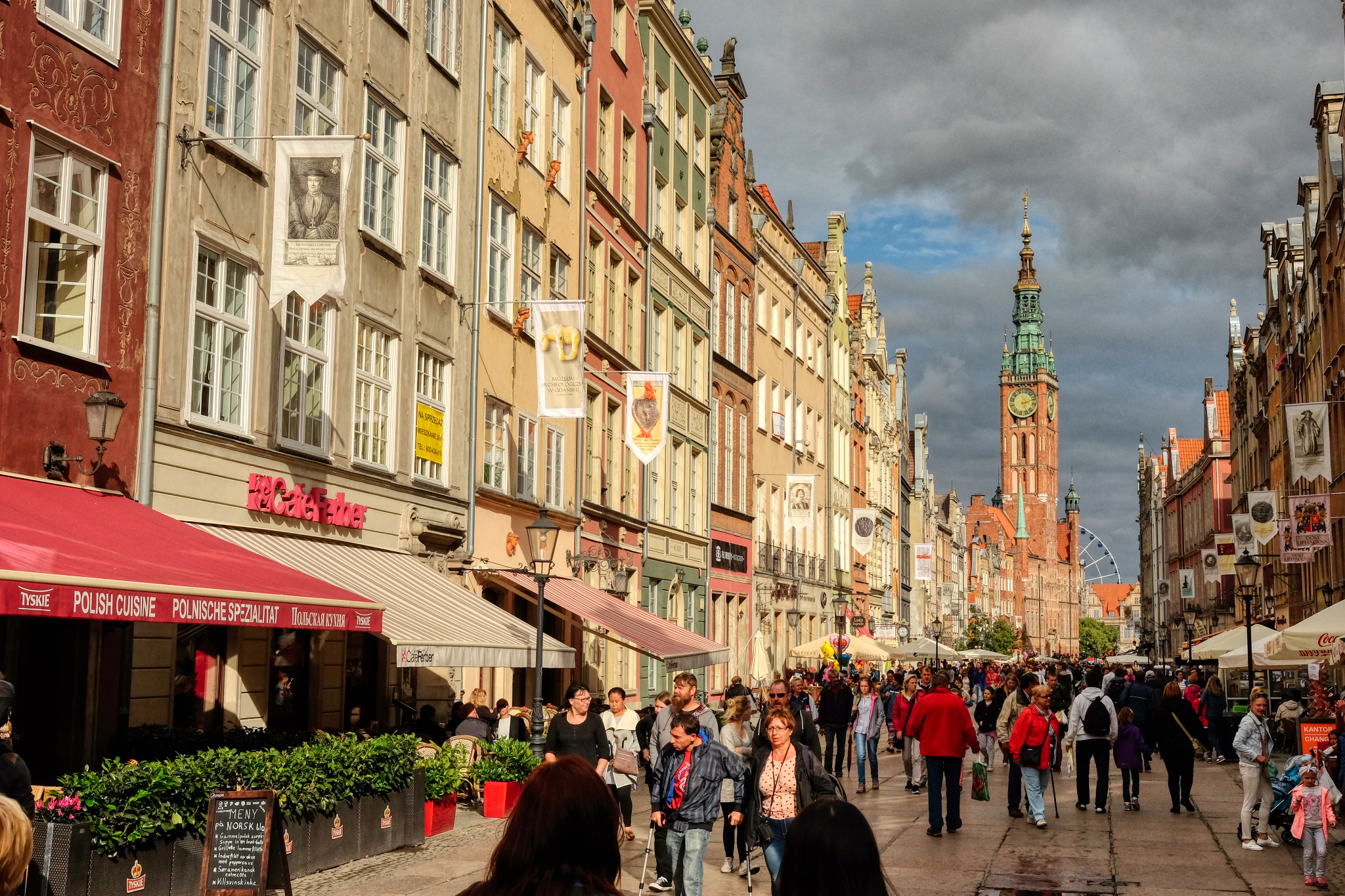 Gdańsk is one of the most beautiful cities I have ever visited . . . and as good luck would have it, we visited during a street festival!
Gdańsk is one of the most beautiful cities I have ever visited . . . and as good luck would have it, we visited during a street festival!
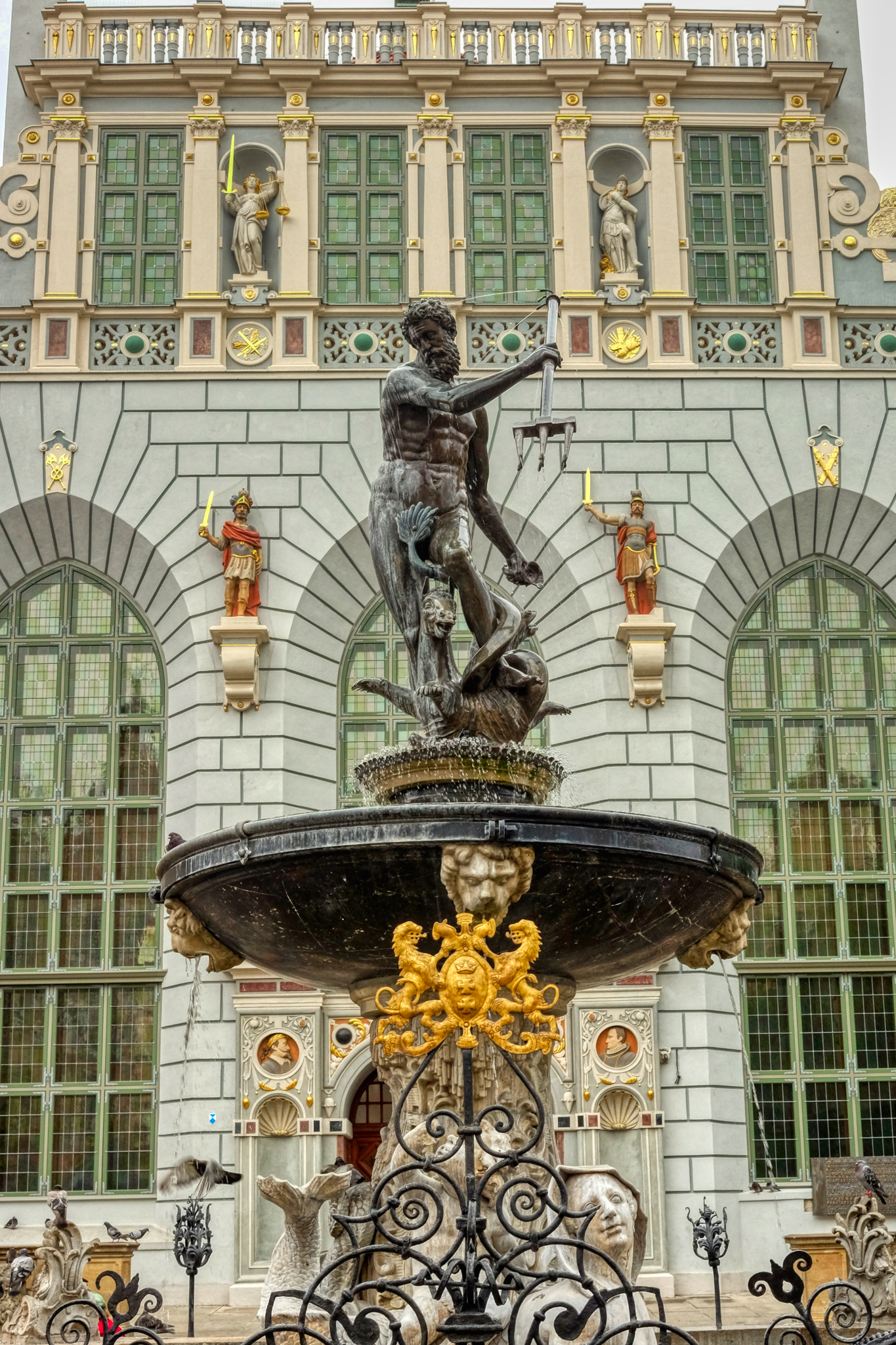 The statue to Neptune.
The statue to Neptune.
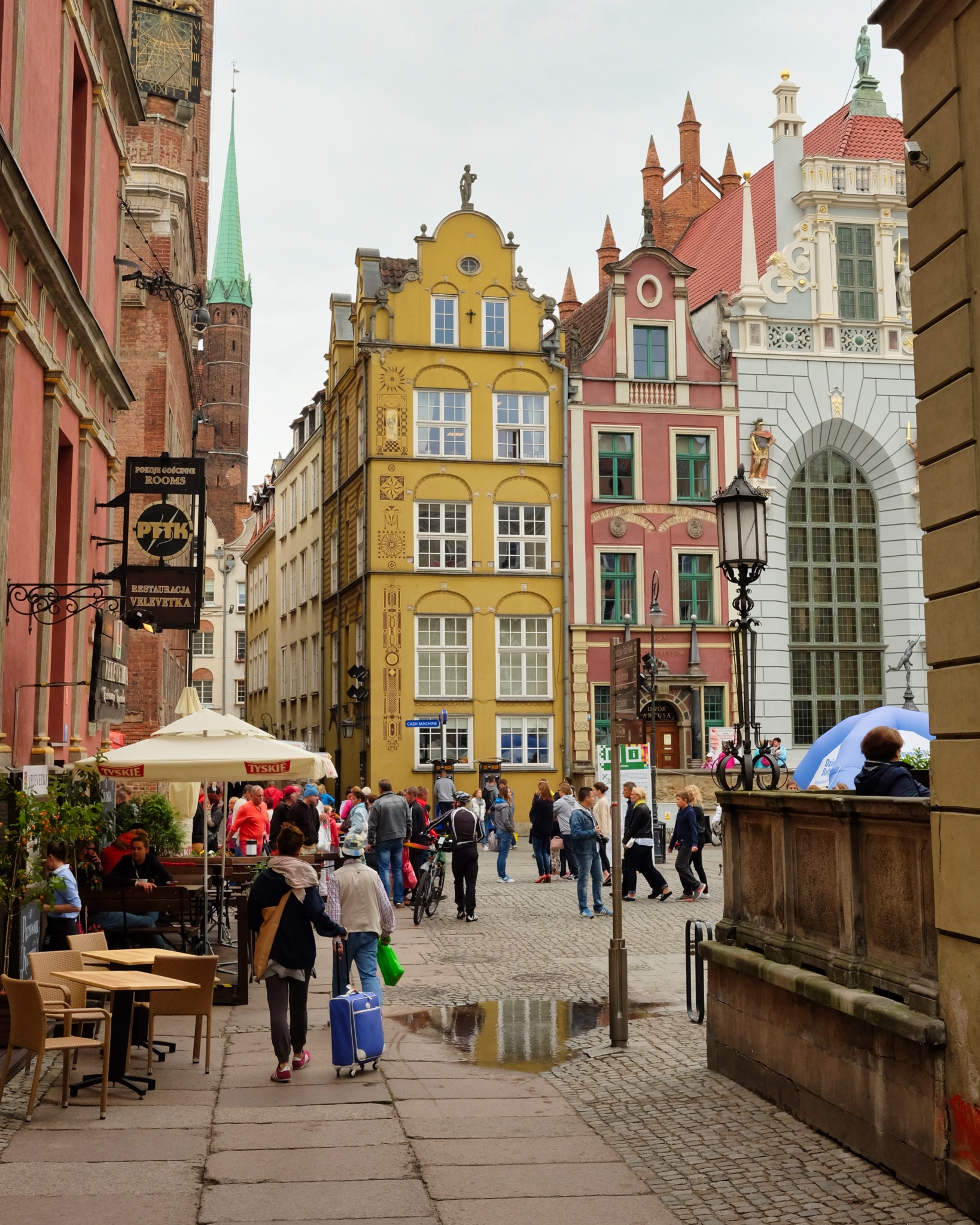 One of many small squares in the city center. The architectural style was surprisingly . . . . Dutch.
One of many small squares in the city center. The architectural style was surprisingly . . . . Dutch.
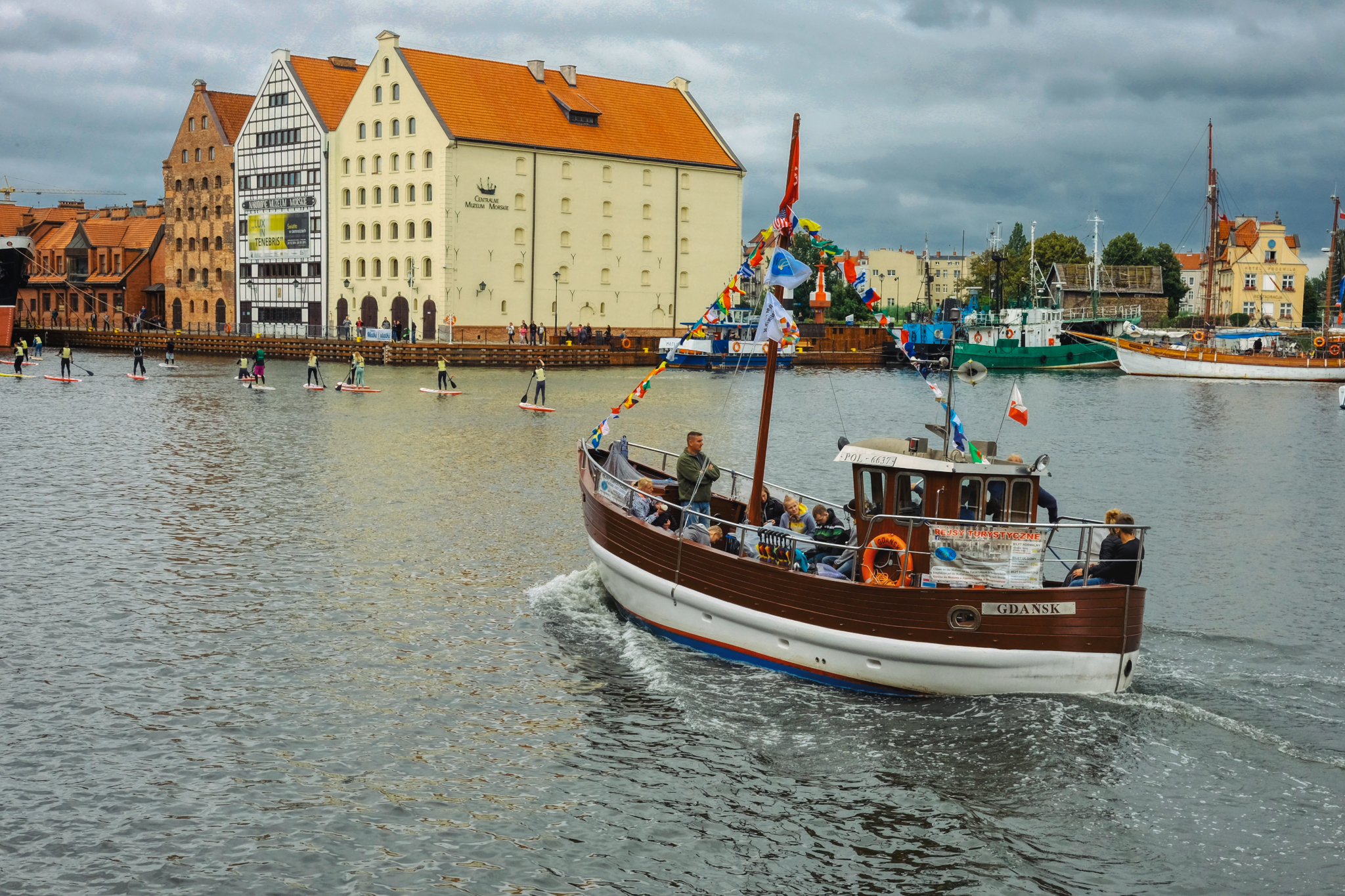 Gdańsk is on the Motlawa River estuary.
Gdańsk is on the Motlawa River estuary.
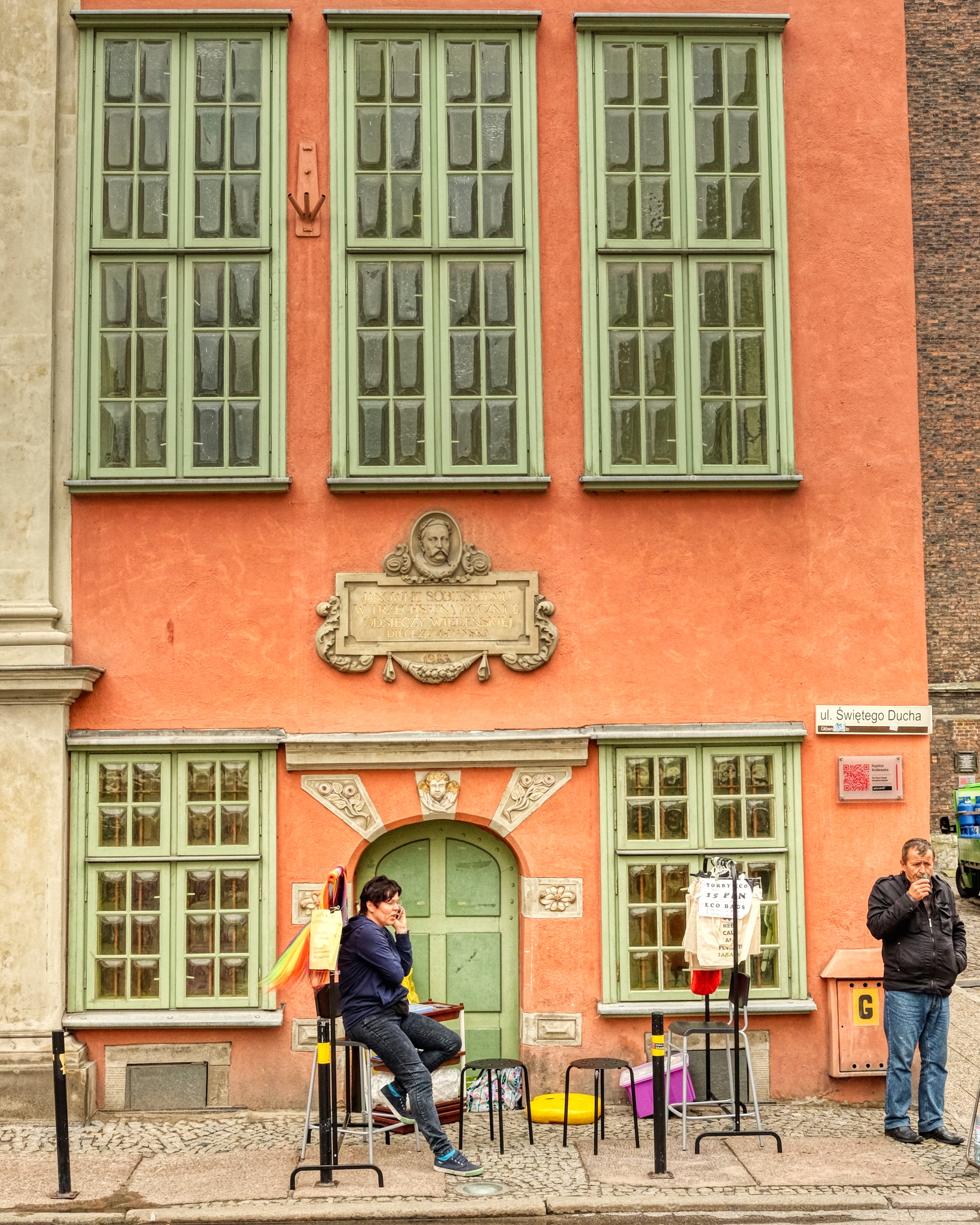 An old city filled with wonderful architecture.
An old city filled with wonderful architecture.
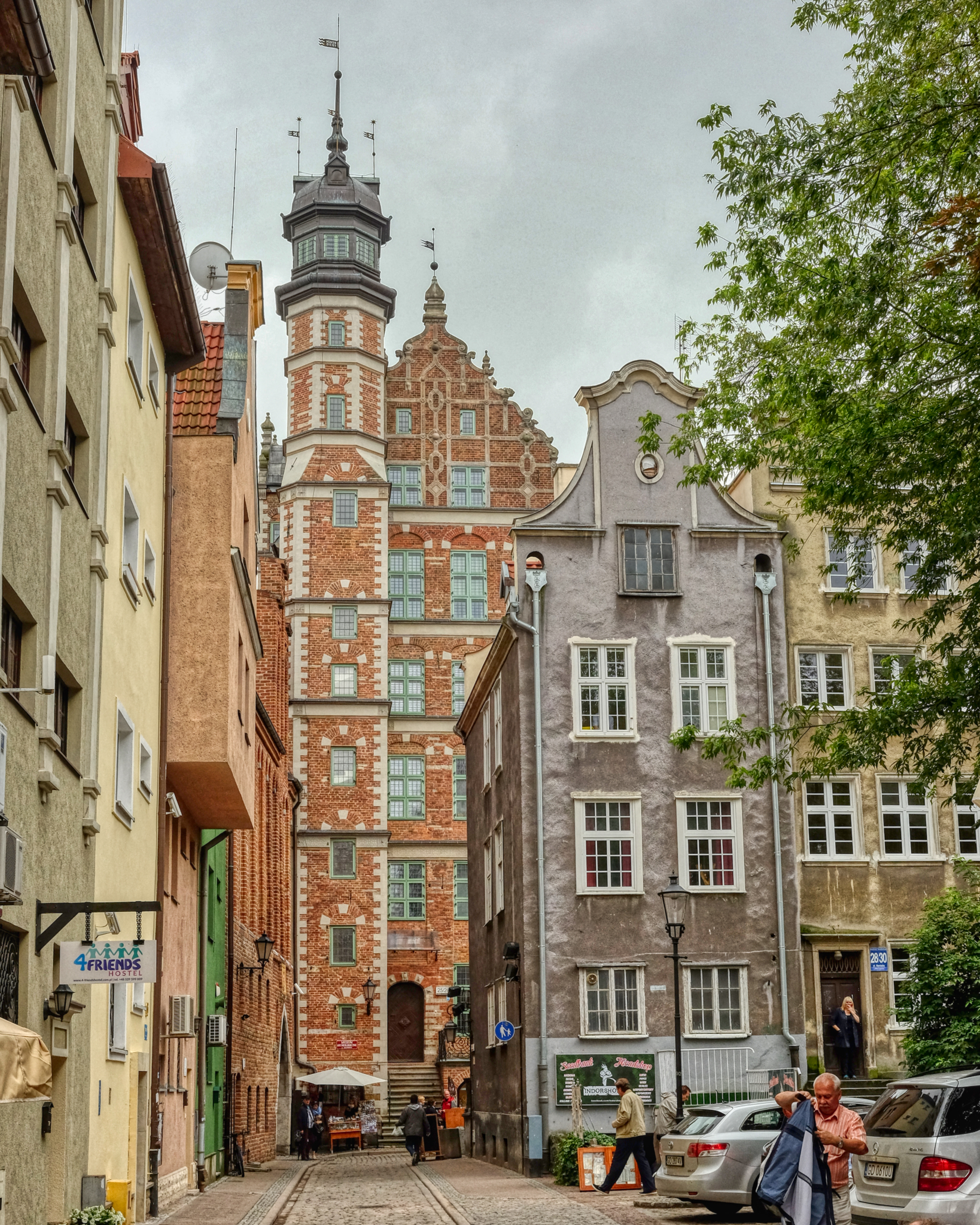 The architecture of Gdańsk tells a story: "Parts of the historic old city of Gdańsk, which had suffered large-scale destruction during the war, were rebuilt during the 1950s and 1960s. The reconstruction was not tied to the city's pre-war appearance, but instead was politically motivated as a means of culturally cleansing and destroying all traces of German influence from the city. Any traces of German tradition were ignored by the communists, suppressed, or regarded as Prussian barbarism only worthy of demolition, while communist and Flemish/Dutch, Italian and French influences were used to replace the historically accurate Germanic architecture which the city was built upon since the 14th century. [Citation]
The architecture of Gdańsk tells a story: "Parts of the historic old city of Gdańsk, which had suffered large-scale destruction during the war, were rebuilt during the 1950s and 1960s. The reconstruction was not tied to the city's pre-war appearance, but instead was politically motivated as a means of culturally cleansing and destroying all traces of German influence from the city. Any traces of German tradition were ignored by the communists, suppressed, or regarded as Prussian barbarism only worthy of demolition, while communist and Flemish/Dutch, Italian and French influences were used to replace the historically accurate Germanic architecture which the city was built upon since the 14th century. [Citation]
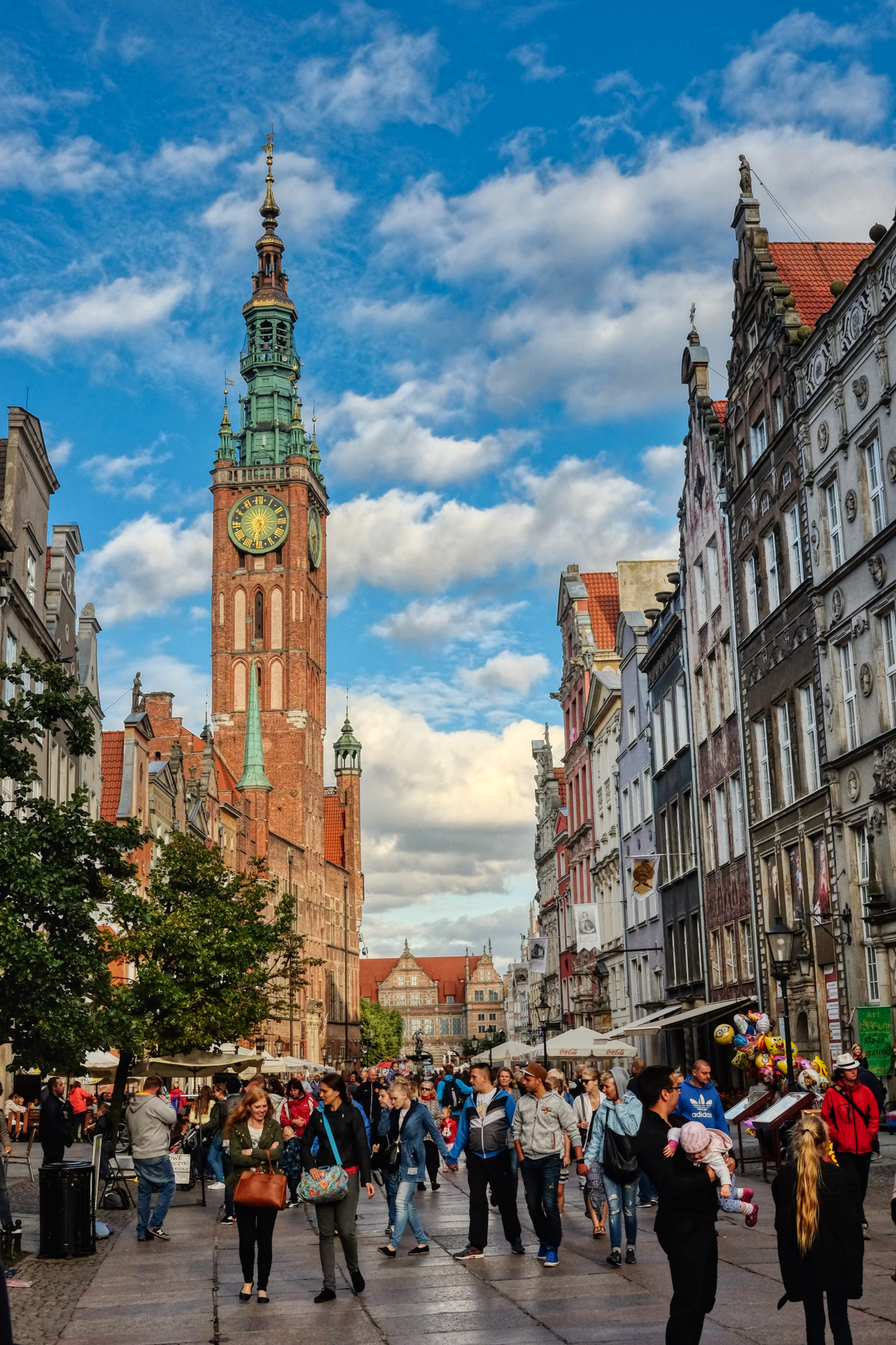 The Long Street with the old (circa 1327) City Hall towering over it.
The Long Street with the old (circa 1327) City Hall towering over it.
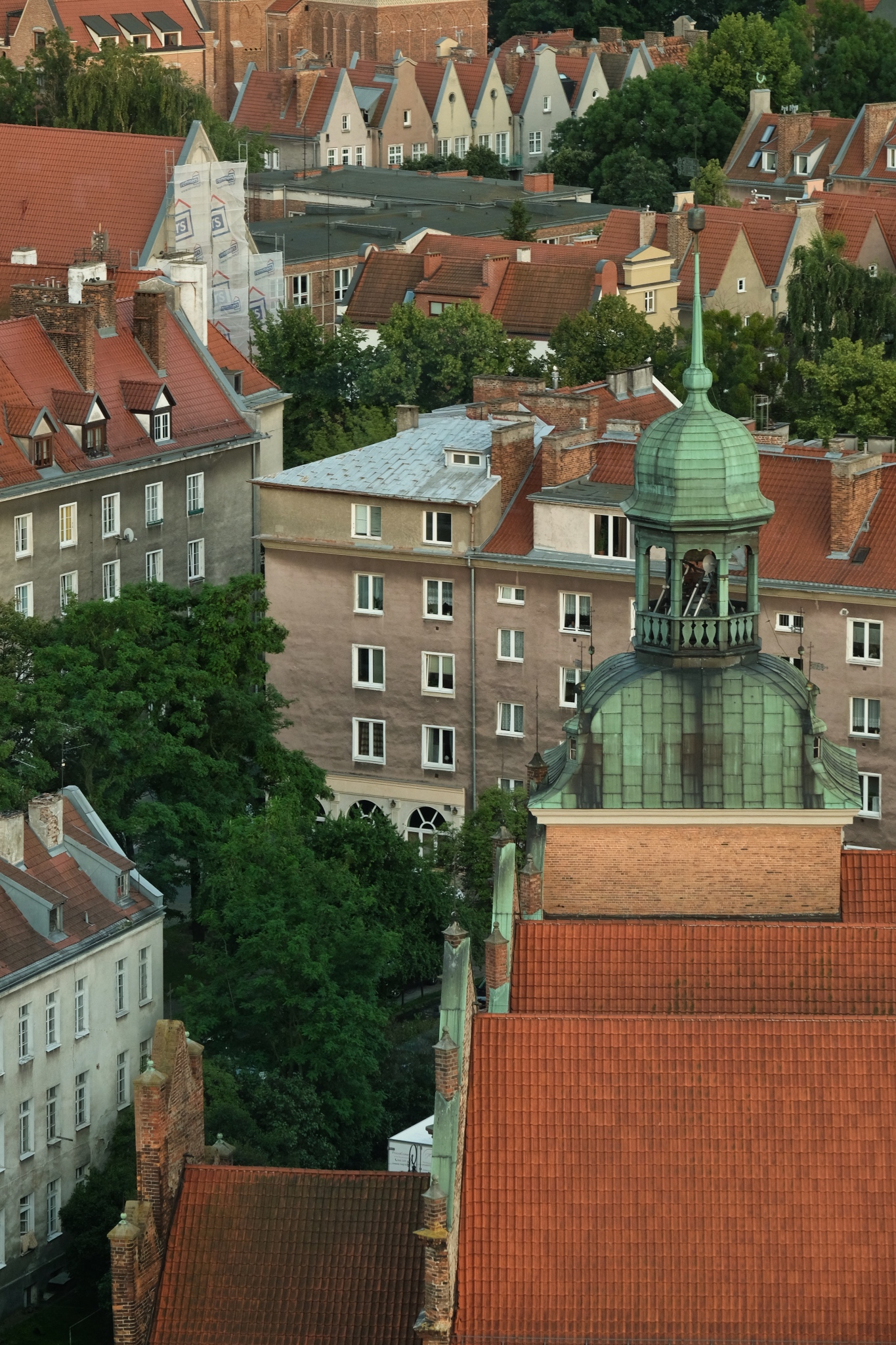 Although I would have preferred to stay at an old 'boutique hotel,' we instead stayed at a modern 25 story hotel. The plus side of the modern hotel were the views over the city.
Although I would have preferred to stay at an old 'boutique hotel,' we instead stayed at a modern 25 story hotel. The plus side of the modern hotel were the views over the city.
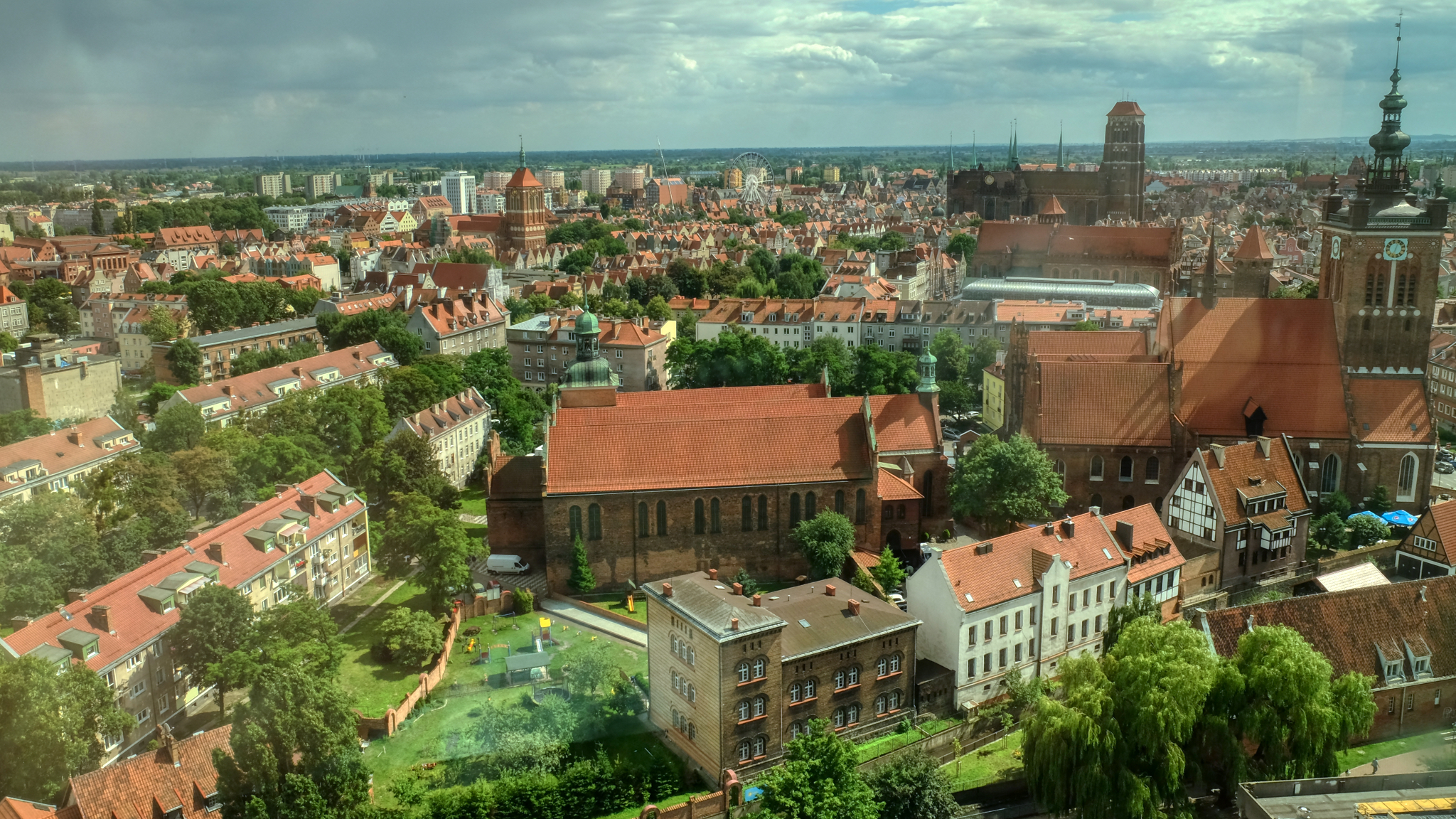
Gdańsk was reduced to piles of stone and brick during WWII by Allied and Soviet bombers. Almost all of what you see here was reconstructed during the 1950s and 1960s.
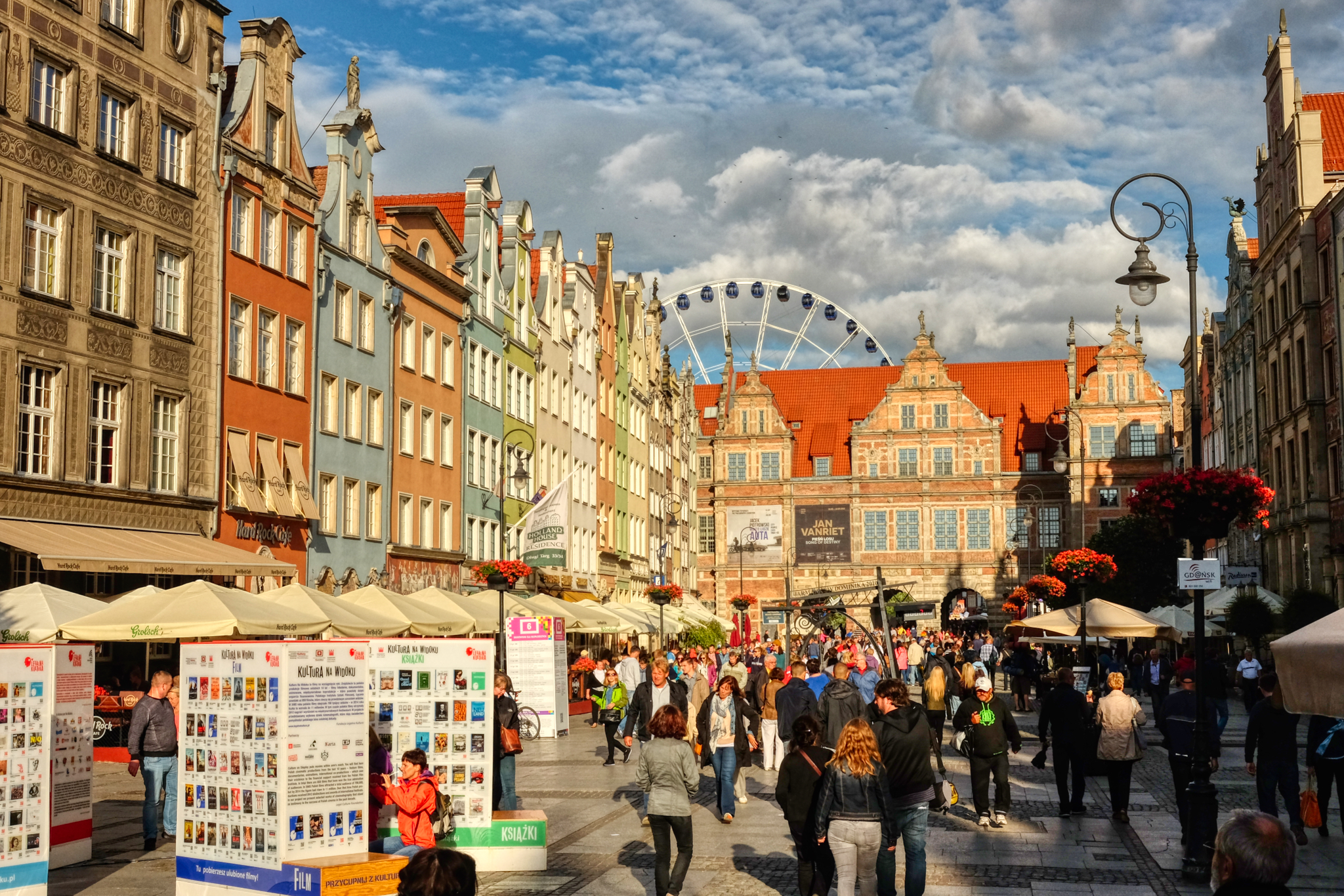 As luck would have it, we arrived in Gdańsk right in the middle of the annual St. Dominic's Fair. With 750 years of successful tradition, the history of the Fair goes back to the year 1260, when it was established by the decree of Pope Alexander IV.
As luck would have it, we arrived in Gdańsk right in the middle of the annual St. Dominic's Fair. With 750 years of successful tradition, the history of the Fair goes back to the year 1260, when it was established by the decree of Pope Alexander IV.
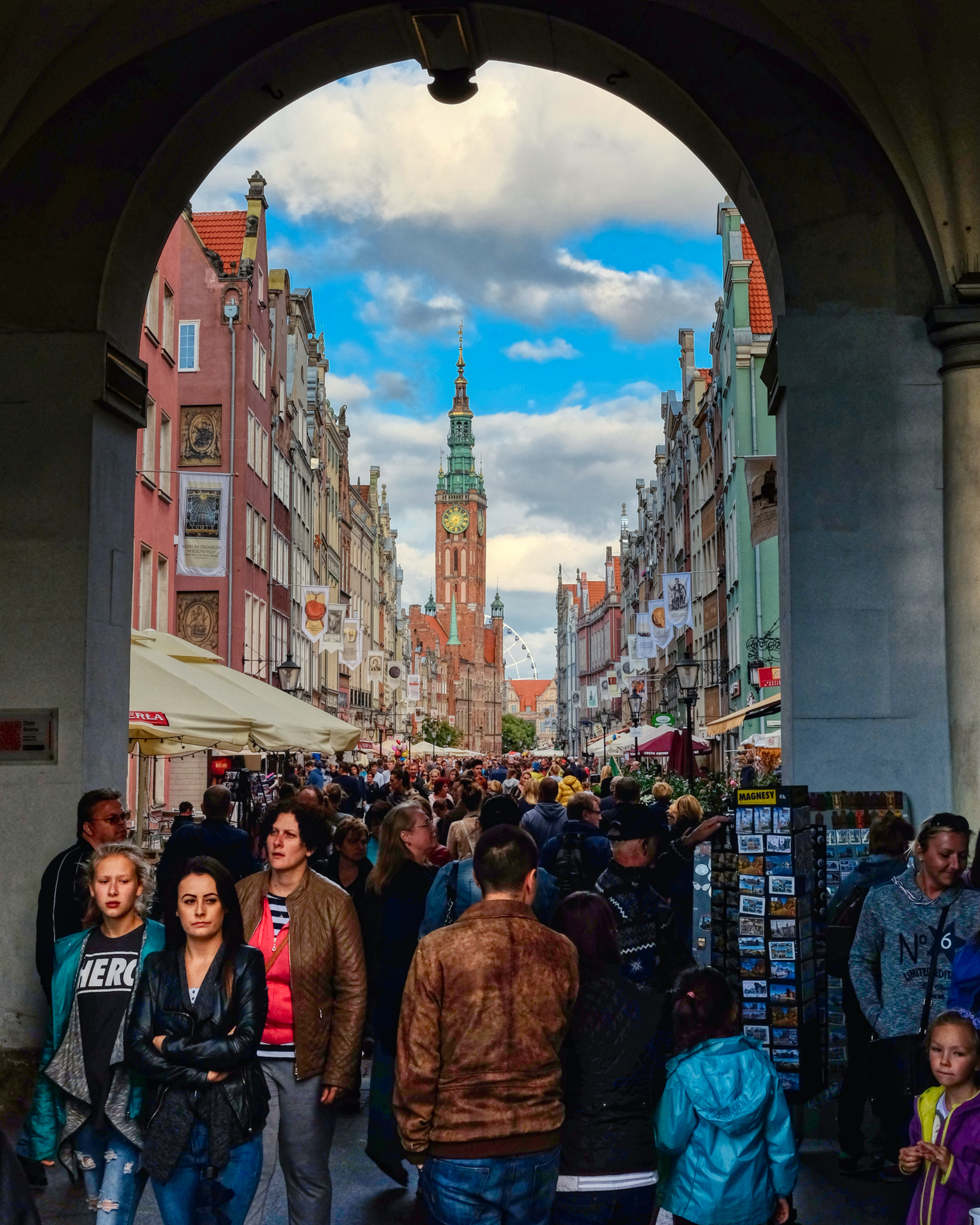 St. Dominic's Fair brought tourists from all over Poland, Europe, and the Far East.
St. Dominic's Fair brought tourists from all over Poland, Europe, and the Far East.
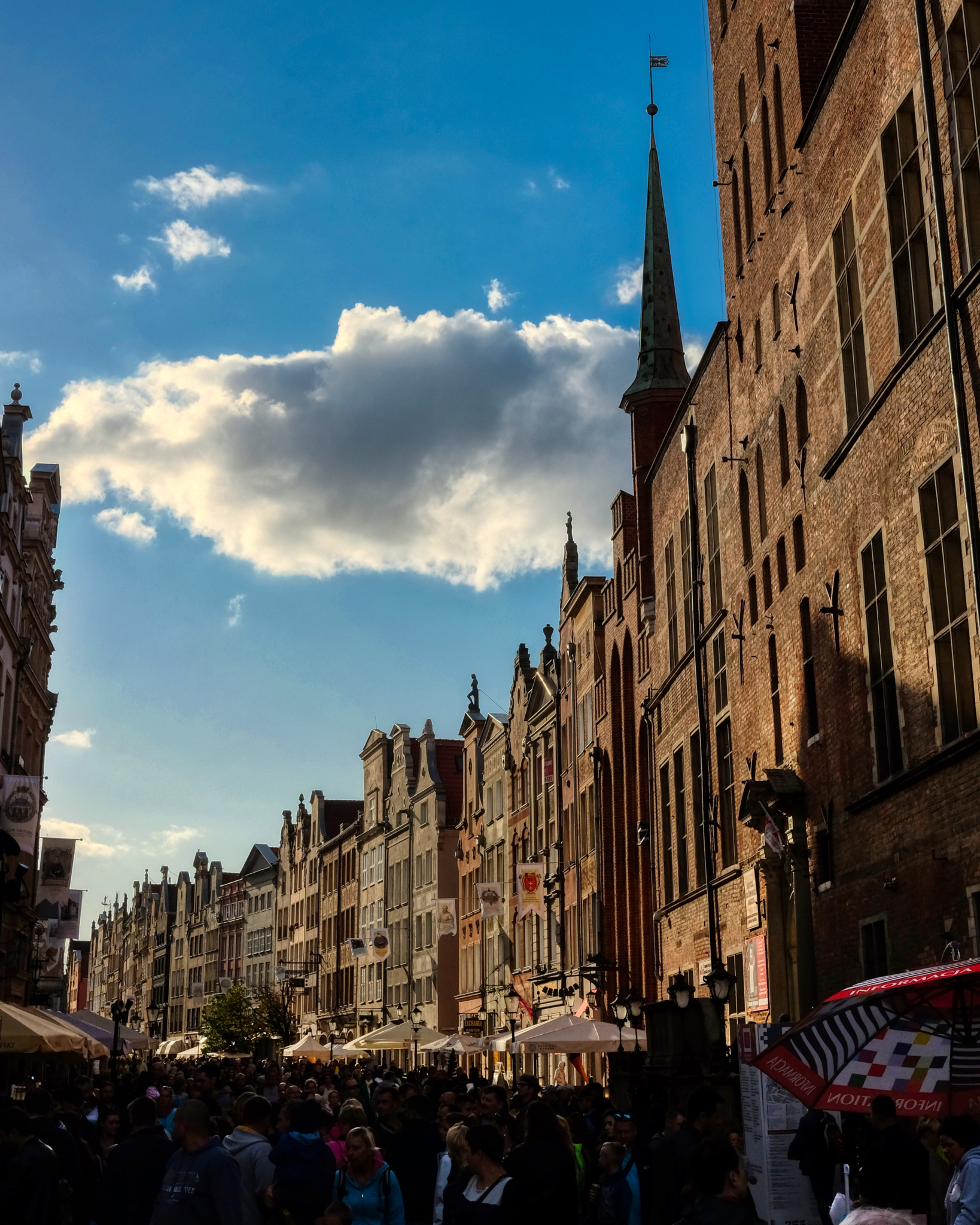 Every street in the city was set up with stalls selling food and crafts. It was the biggest street food and crafts fair I have ever seen!
Every street in the city was set up with stalls selling food and crafts. It was the biggest street food and crafts fair I have ever seen!
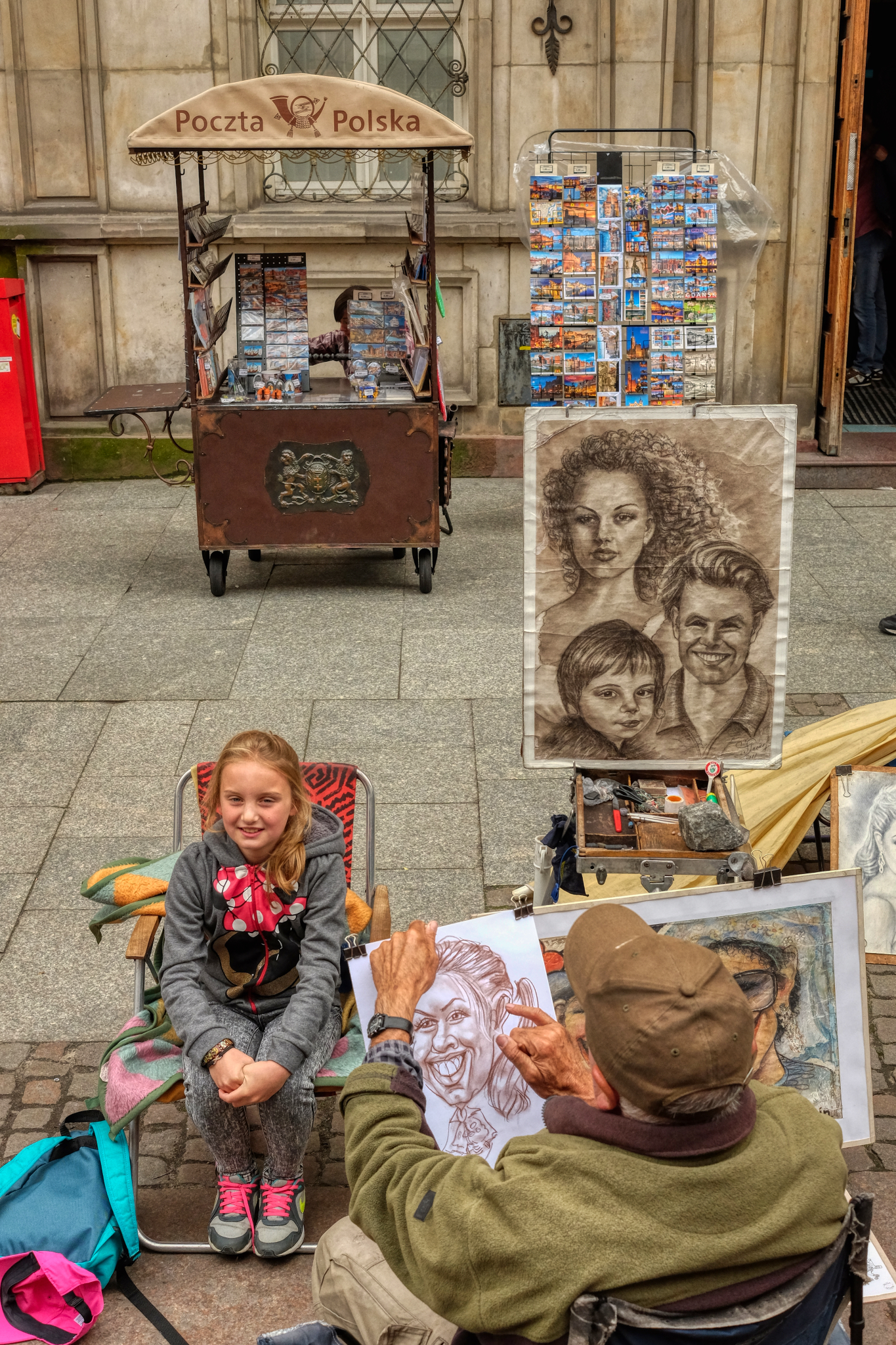
In addition to the street stalls, the fair attracted artists . . .
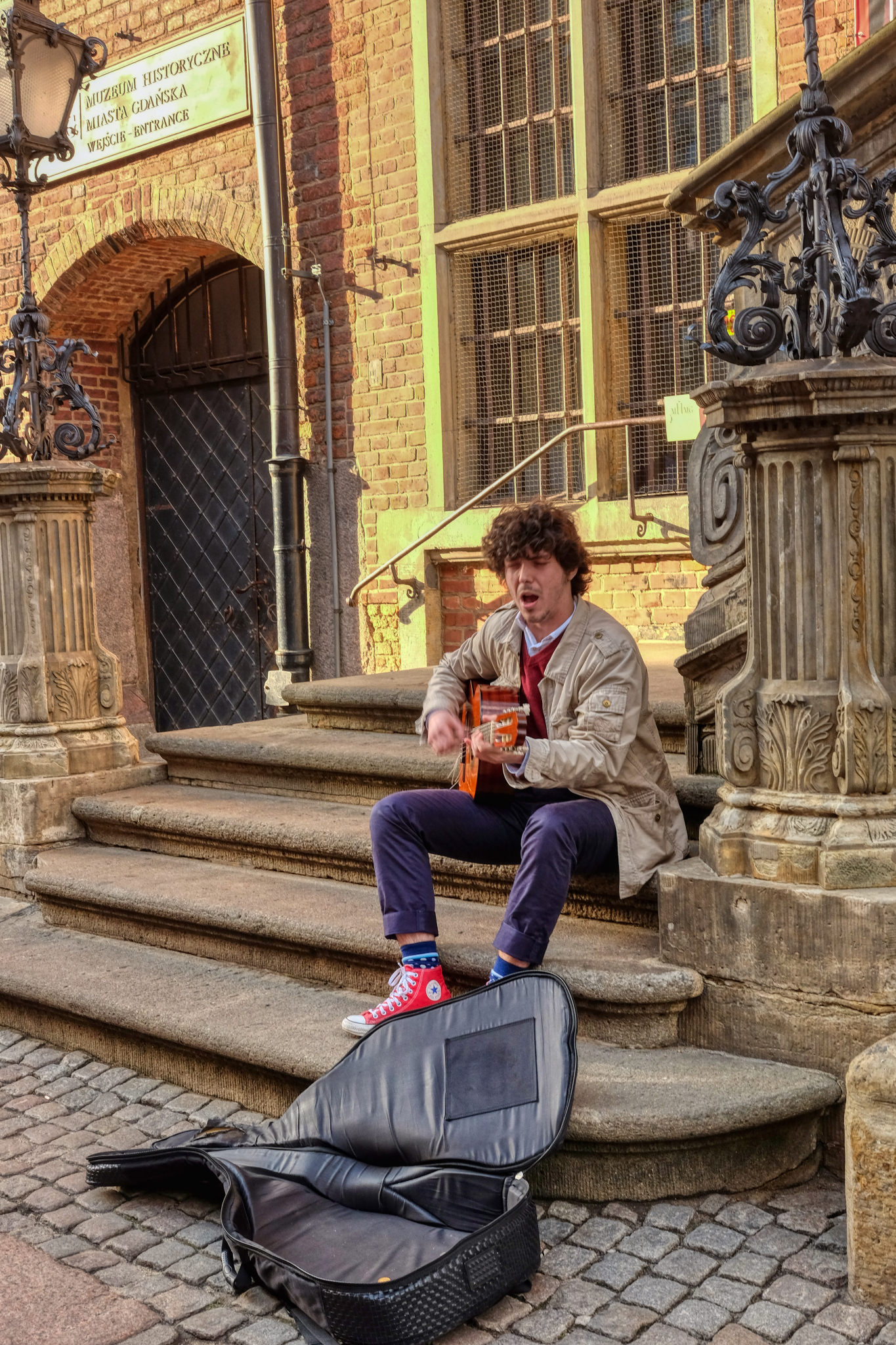
. . . buskers . . .
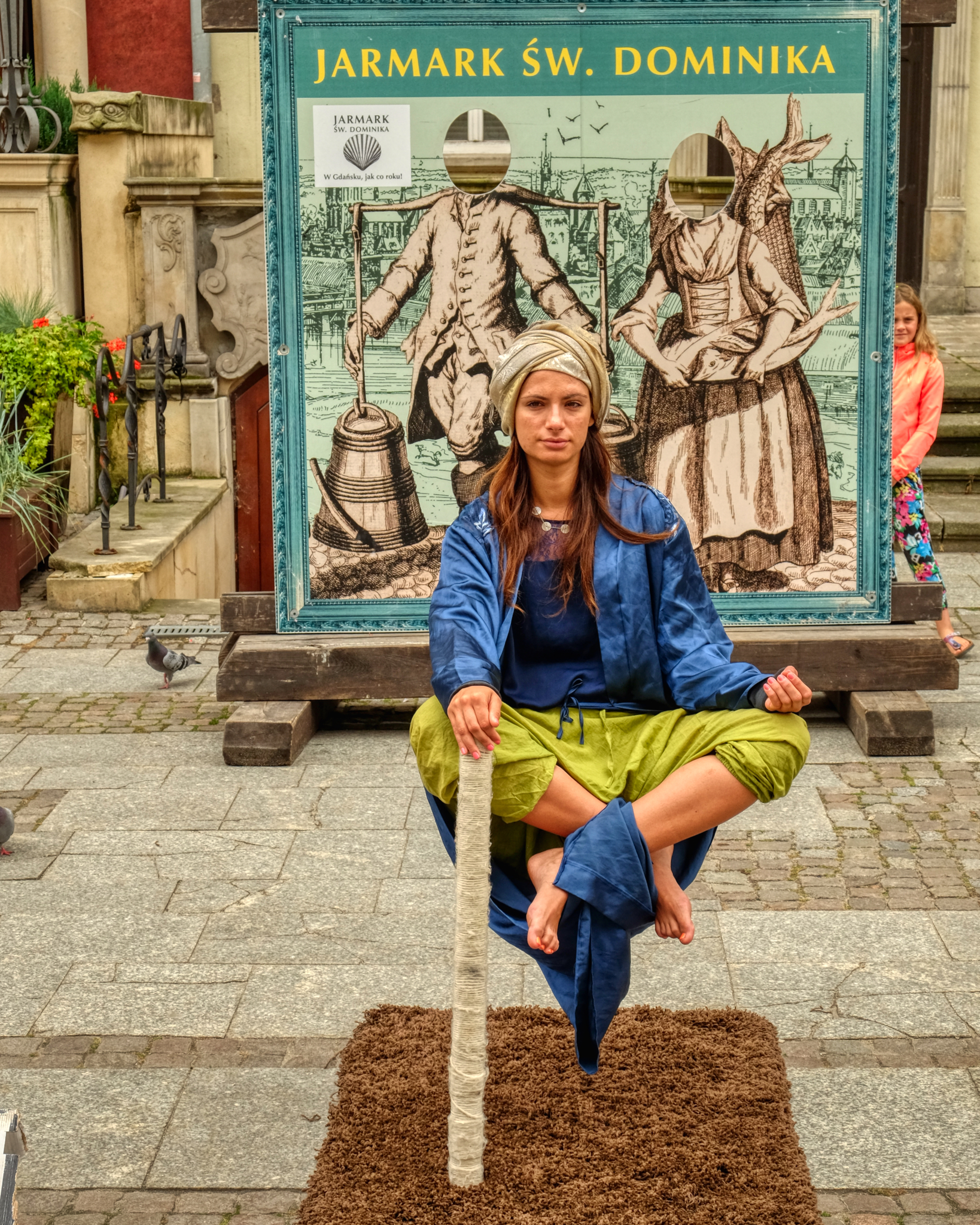 . . . street performers . . .
. . . street performers . . .
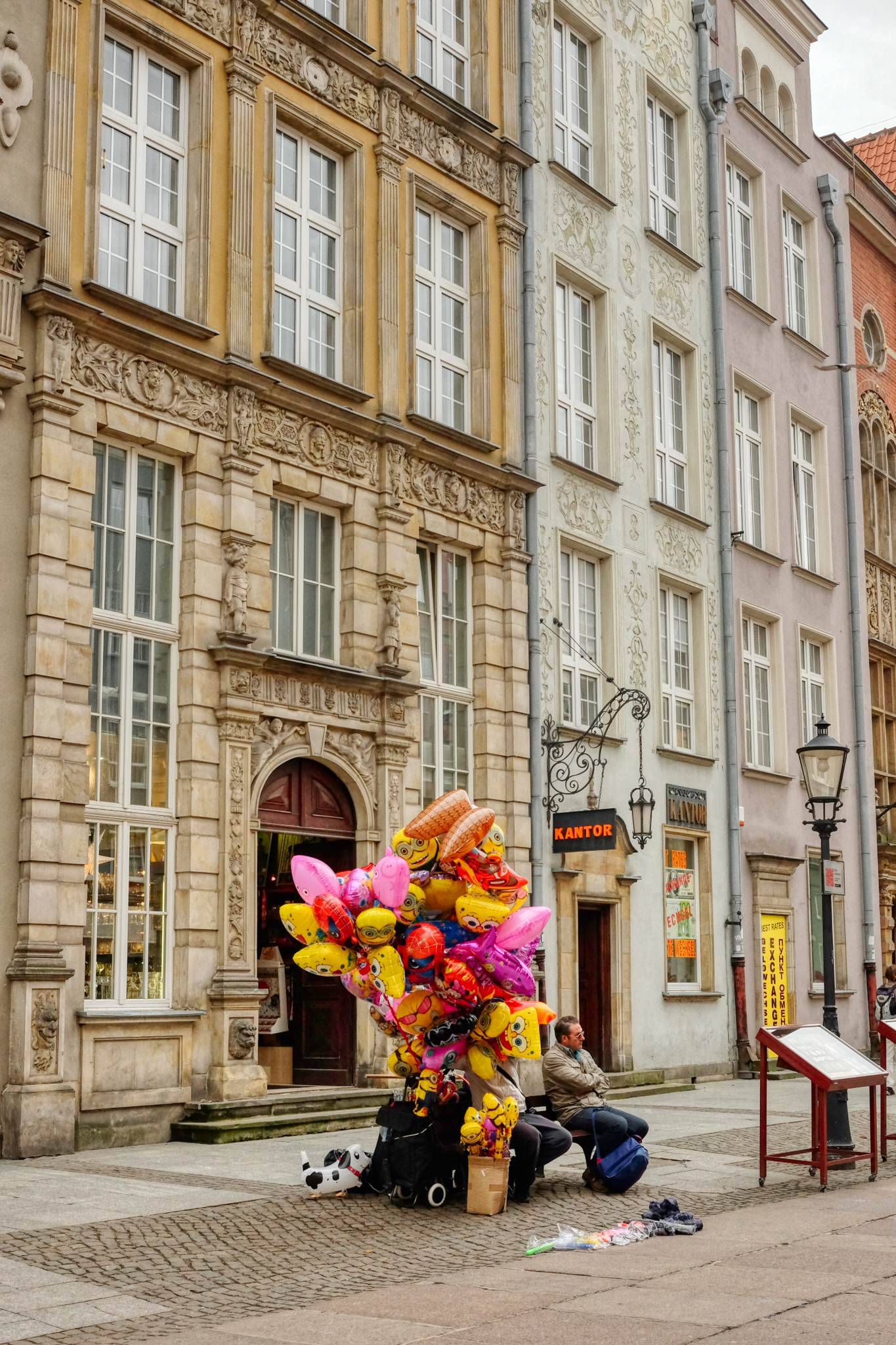 . . . morose balloon salesperson . . .
. . . morose balloon salesperson . . .
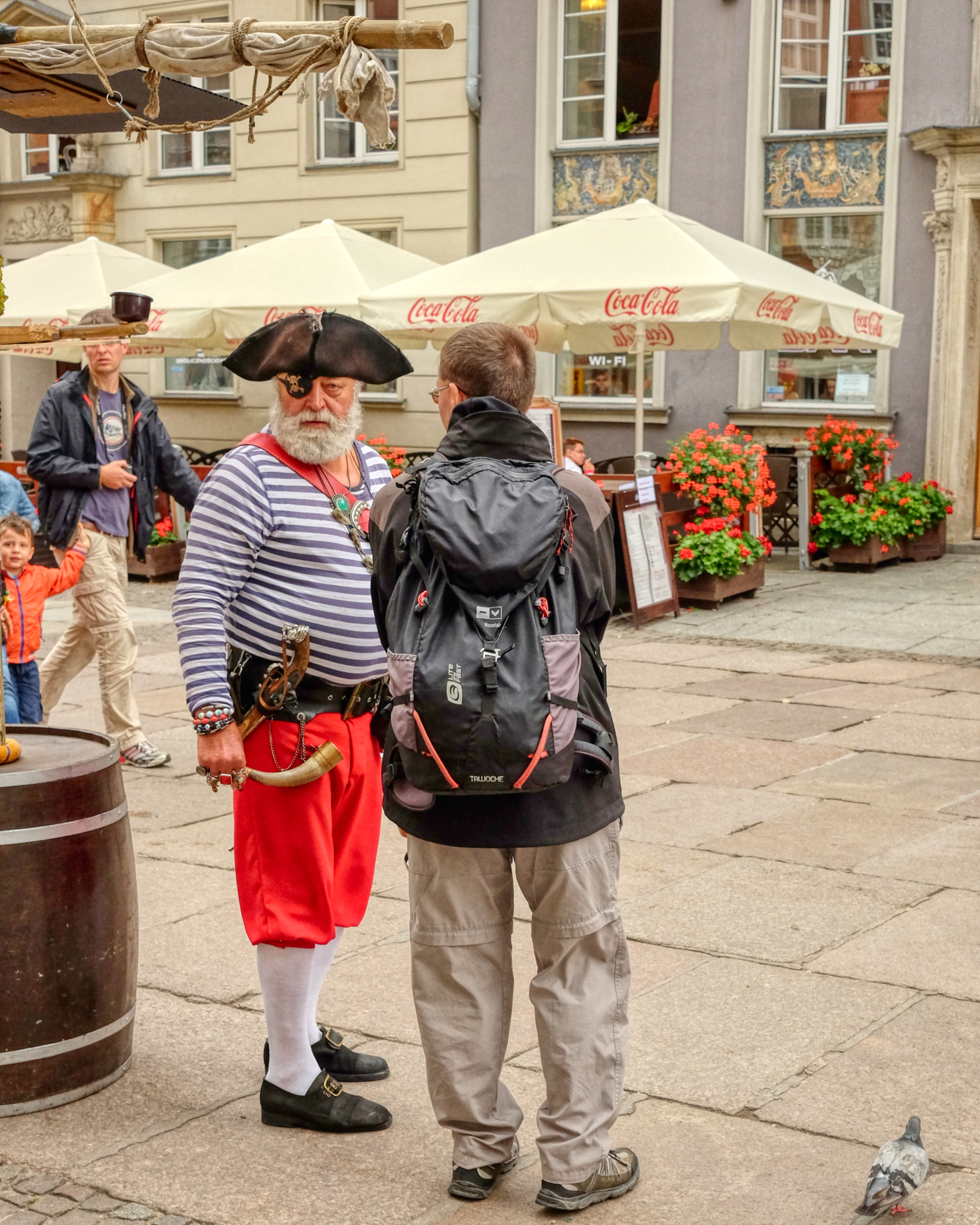 . . . historically costumed information givers . . . giving me the Evil Eye! YAR!
. . . historically costumed information givers . . . giving me the Evil Eye! YAR!
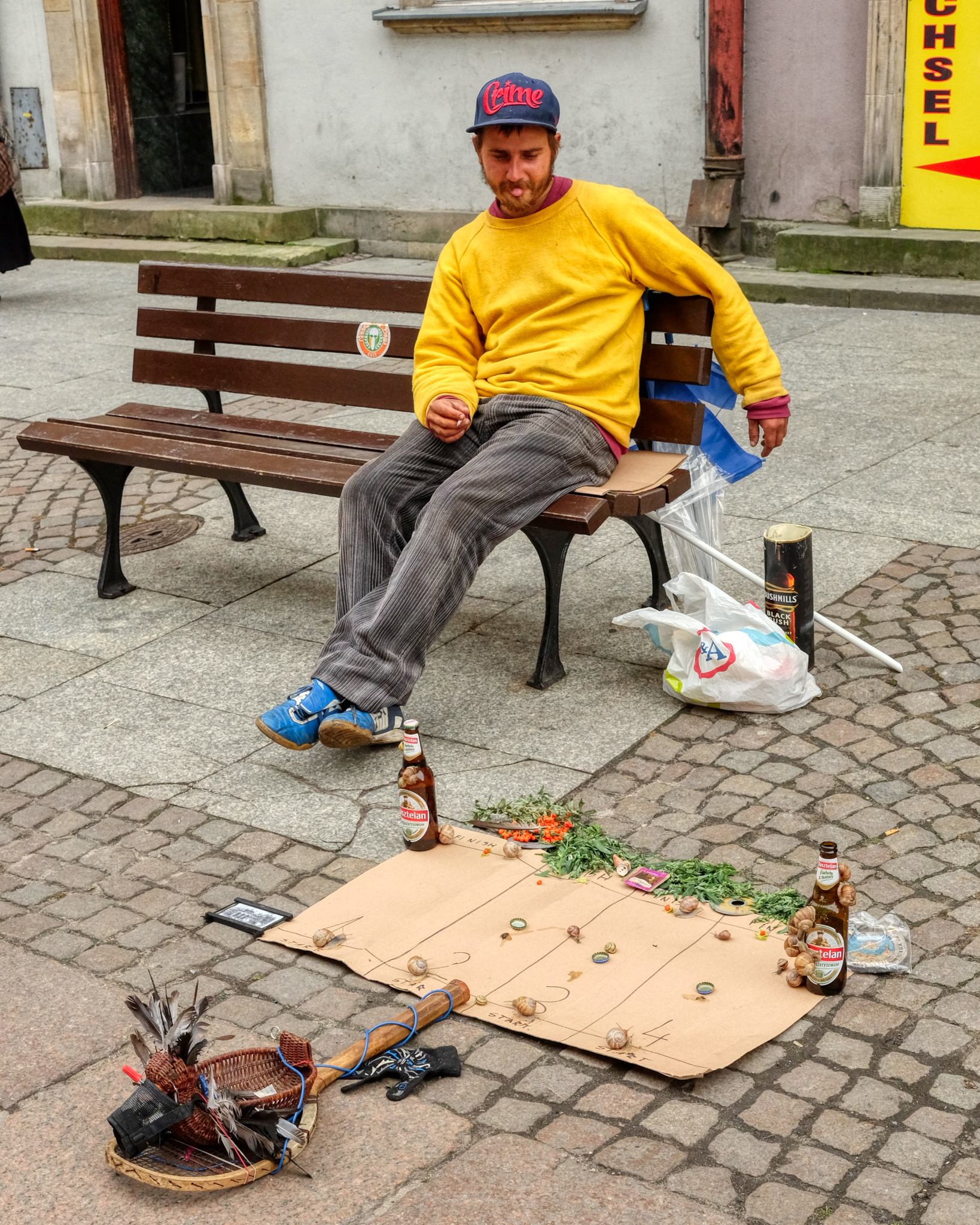 . . . and this guy (wearing a hat that said Crime!) who tried to entice the tourists to wager on his 'snail races.' The street fair was, in many ways, still like its medieval origins.
. . . and this guy (wearing a hat that said Crime!) who tried to entice the tourists to wager on his 'snail races.' The street fair was, in many ways, still like its medieval origins.
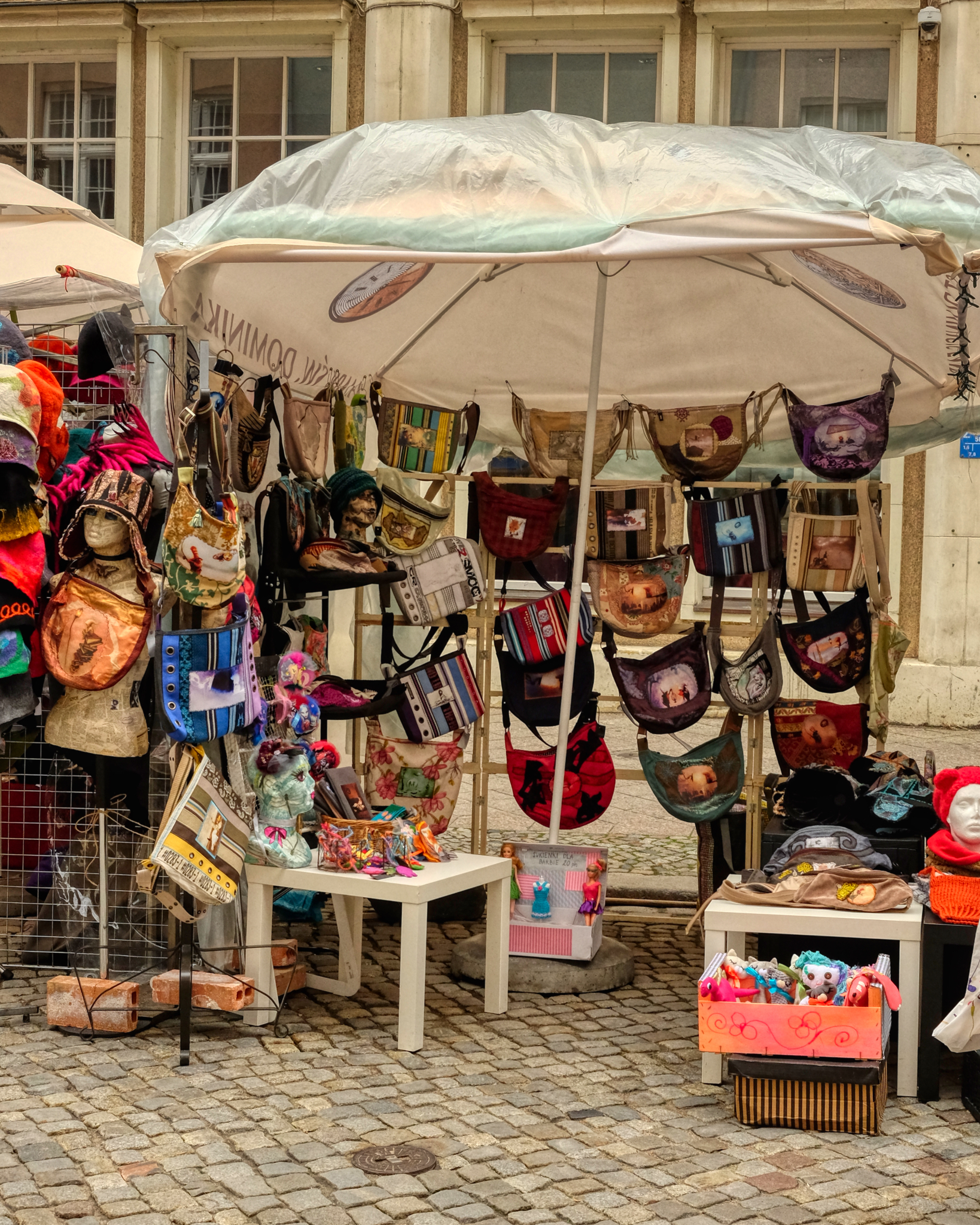 We enjoyed shopping at the many interesting crafts stalls.
We enjoyed shopping at the many interesting crafts stalls.
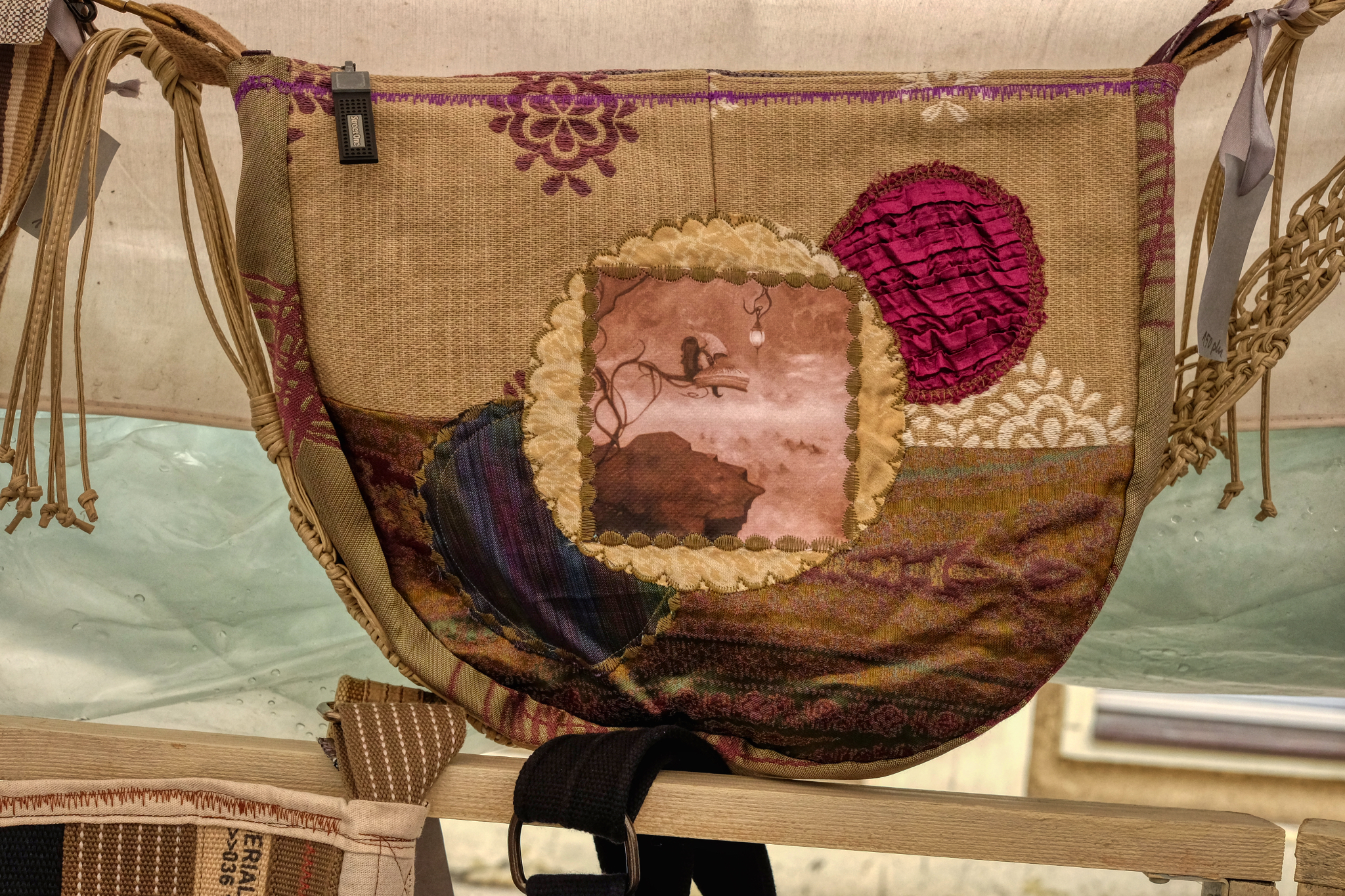 Interesting bags . . .
Interesting bags . . .
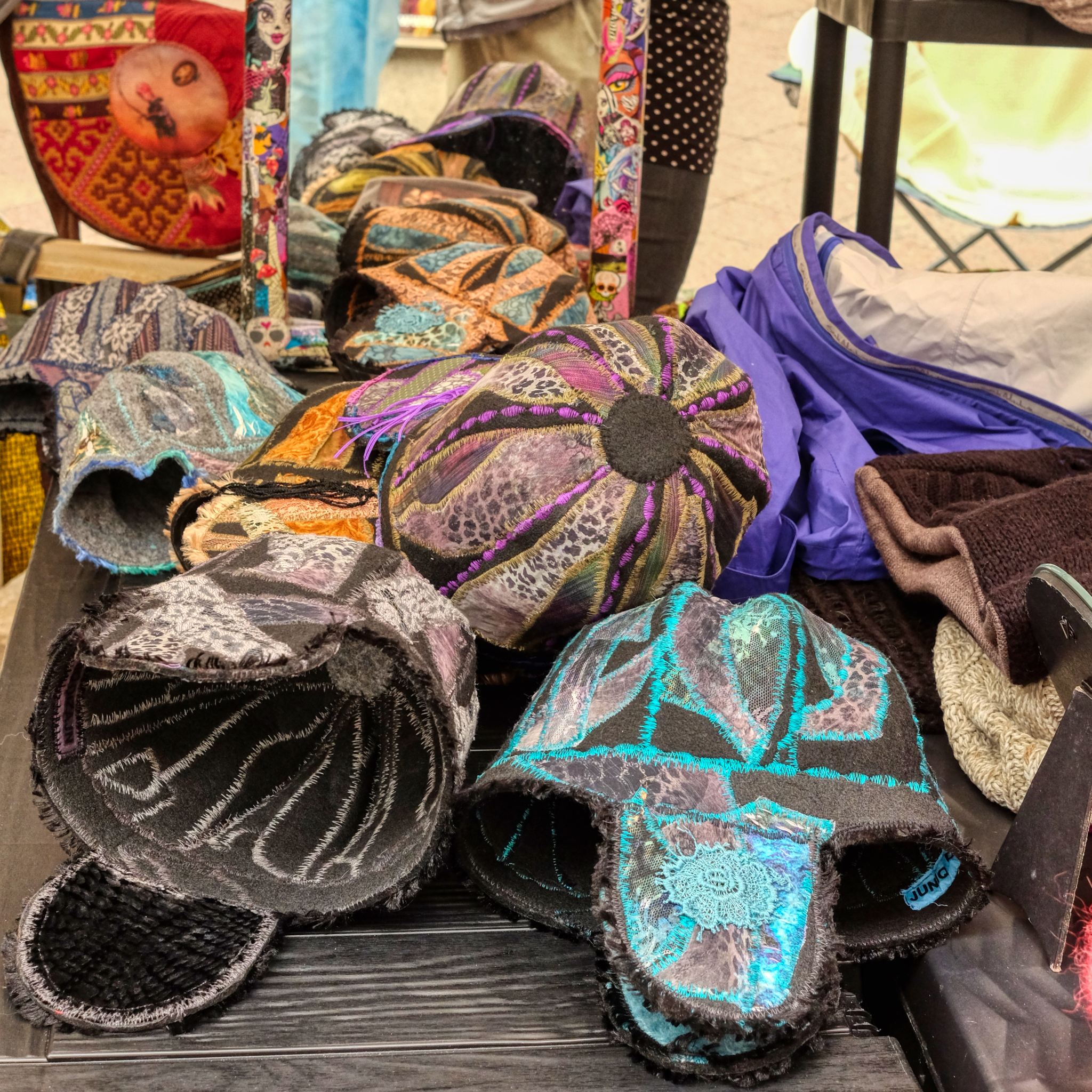 . . . very cool hats . . .
. . . very cool hats . . .
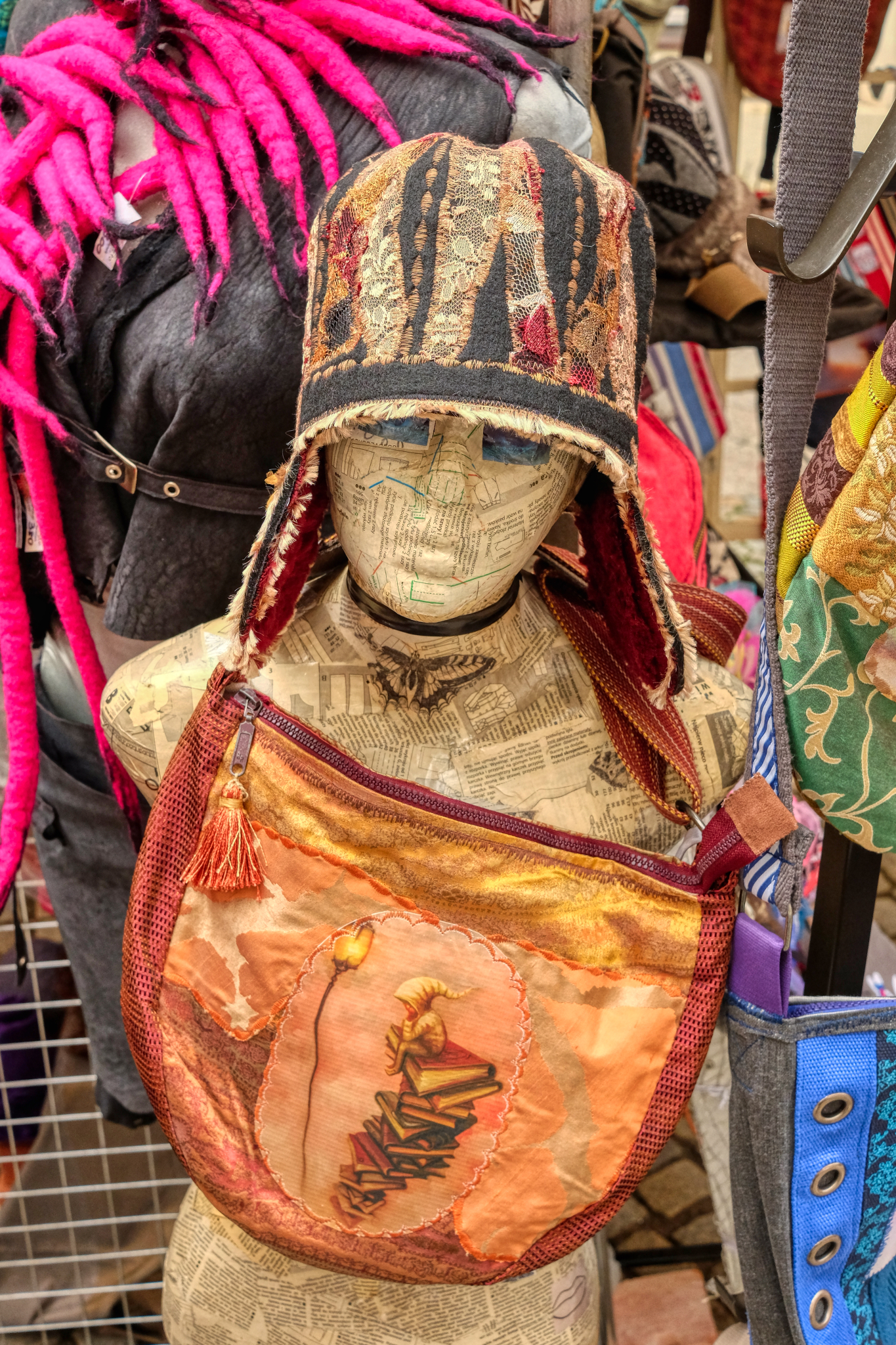 . . . very cool hat and bag! There were some very unusual arts at the fair.
. . . very cool hat and bag! There were some very unusual arts at the fair.
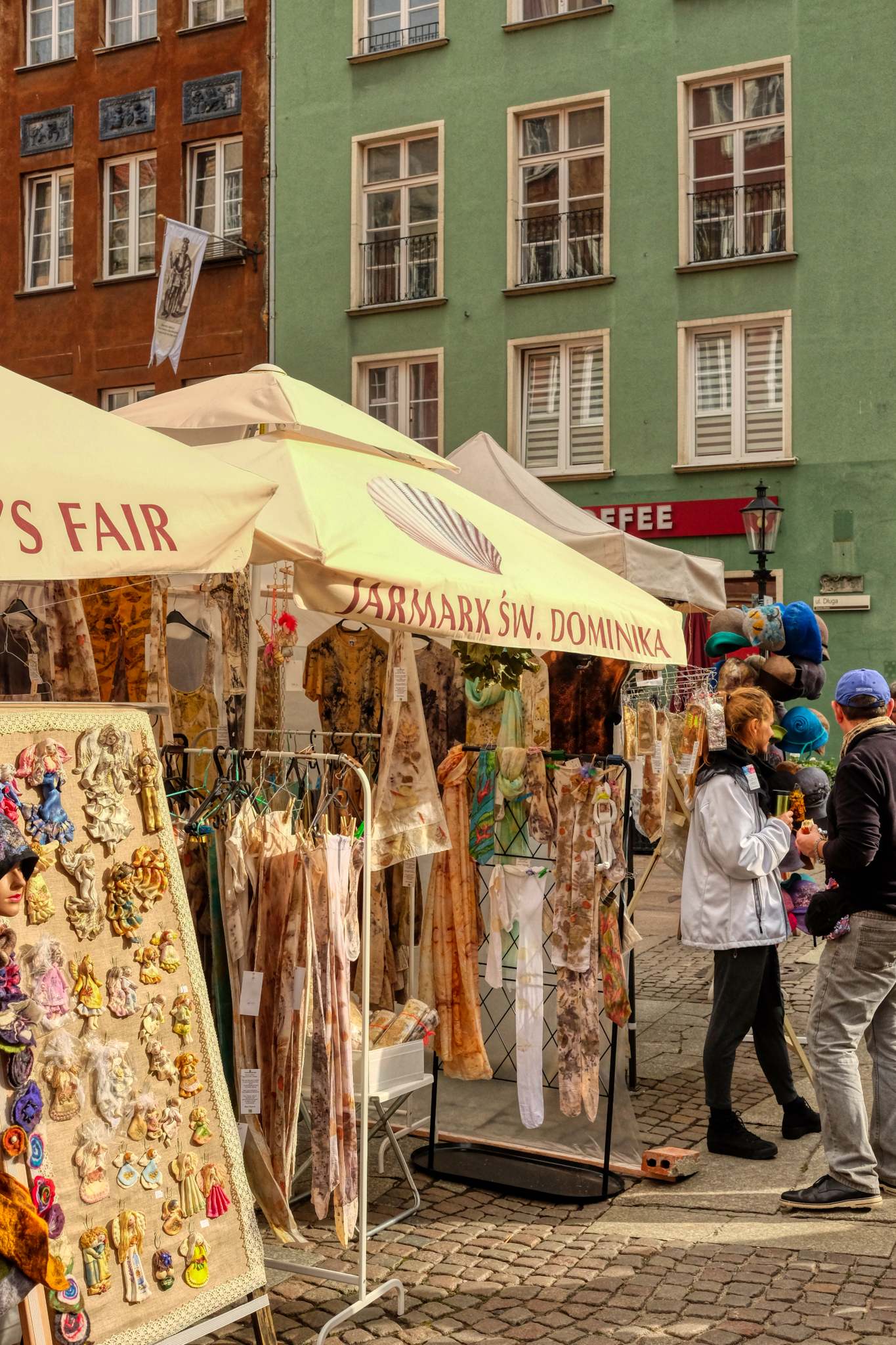 Many beautiful textiles on sale. We bought many things at the these stalls to take back home to Scotland with us. I bought a hat!
Many beautiful textiles on sale. We bought many things at the these stalls to take back home to Scotland with us. I bought a hat!
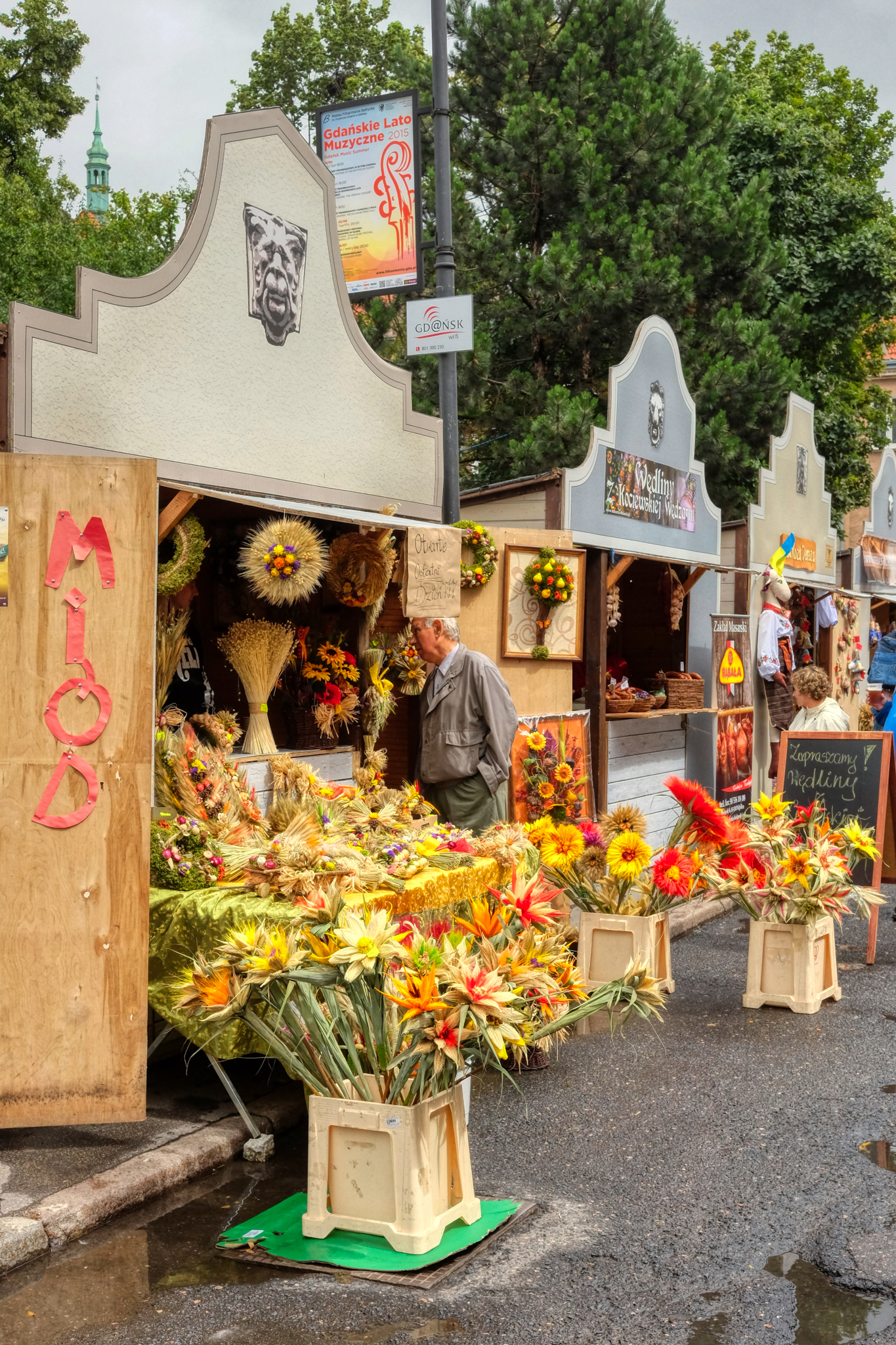 These street stalls were so cute: they mimicked the style of the Gdańsk buildings.
These street stalls were so cute: they mimicked the style of the Gdańsk buildings.
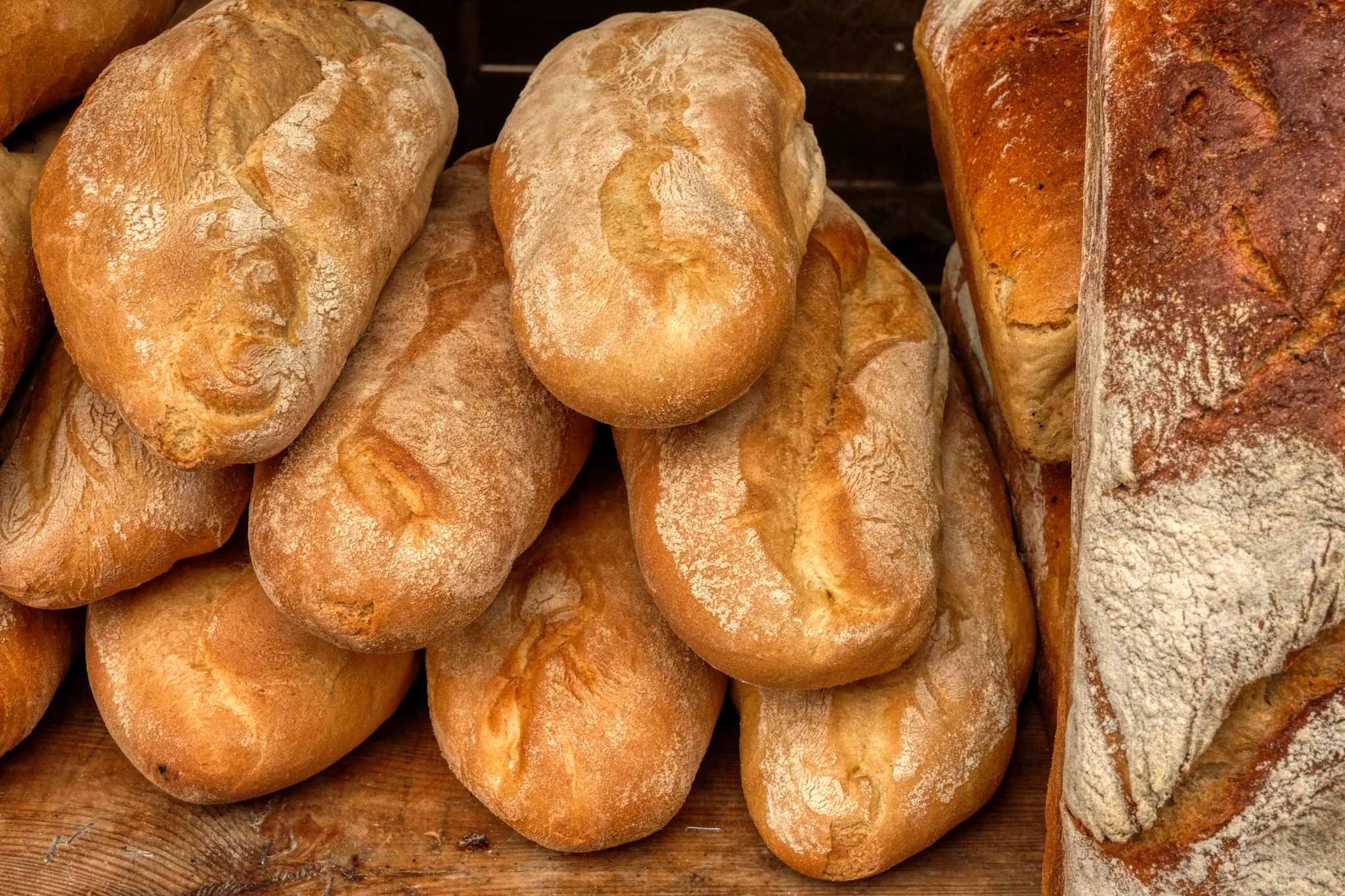 The textiles, hats, and bags were nice . . . but the variety of FOOD at the festival was incredible!!!
The textiles, hats, and bags were nice . . . but the variety of FOOD at the festival was incredible!!!
The breads were fantastic!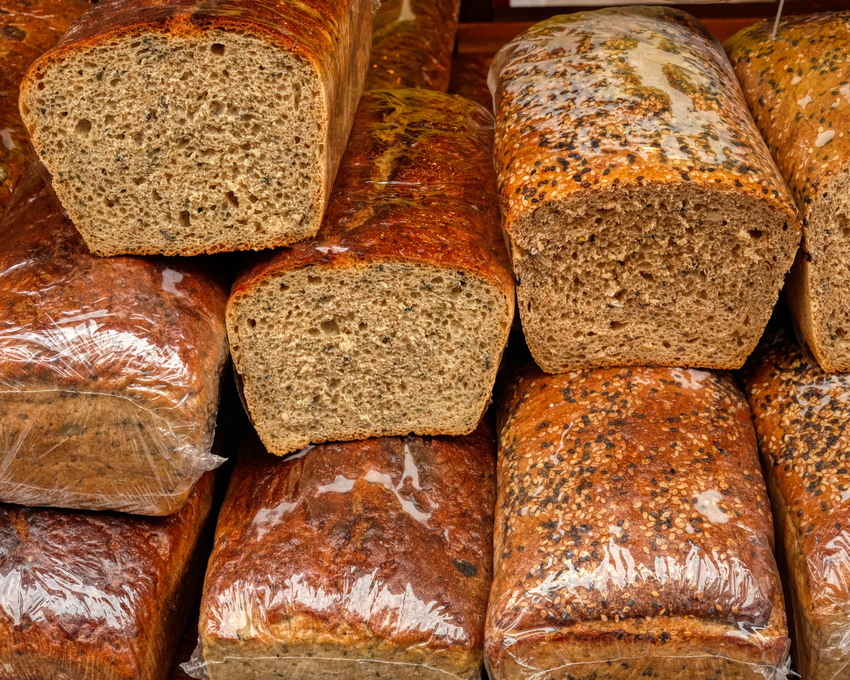
The breads were fantastic!
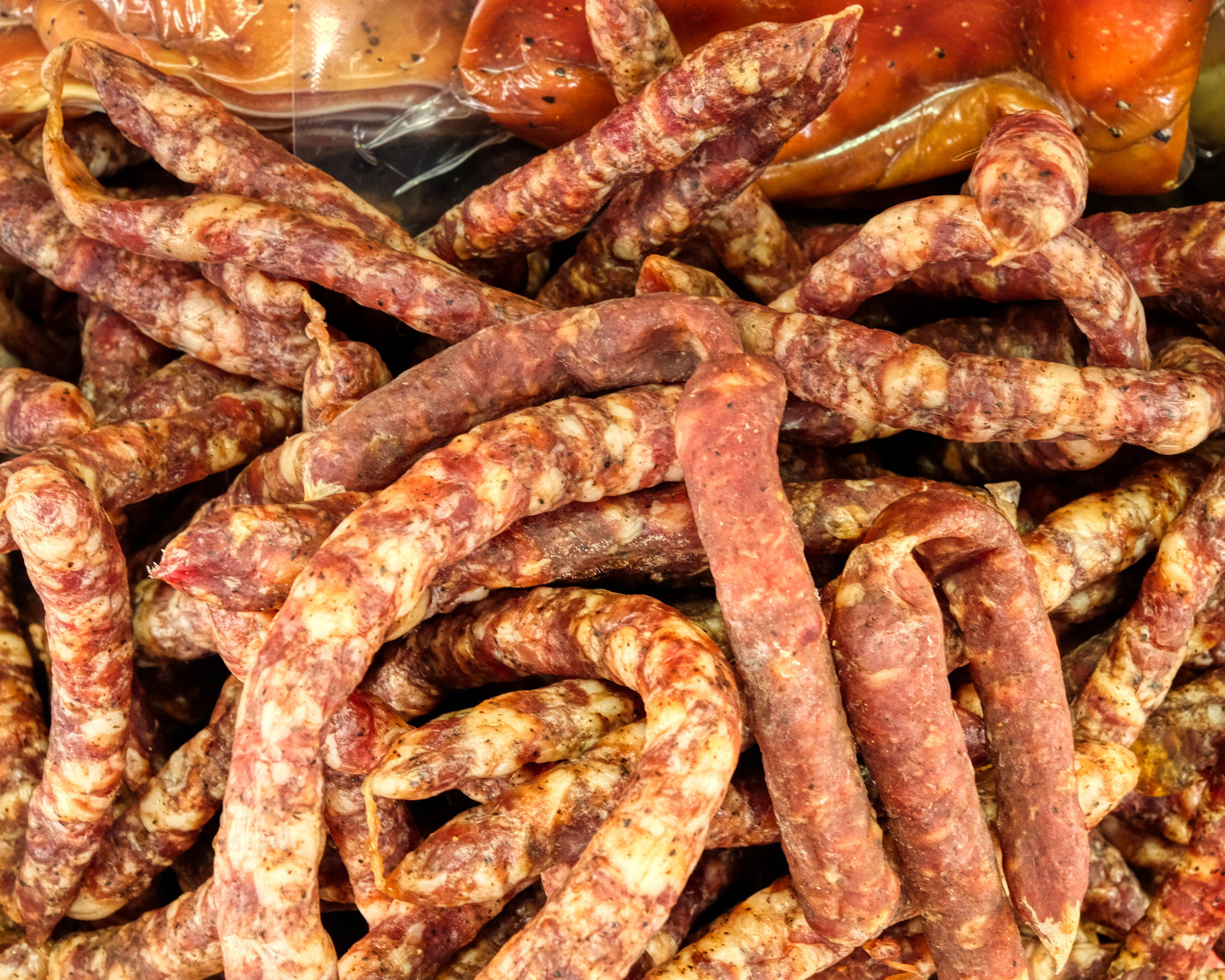 I was in pig heaven for sausage lovers like me!
I was in pig heaven for sausage lovers like me!
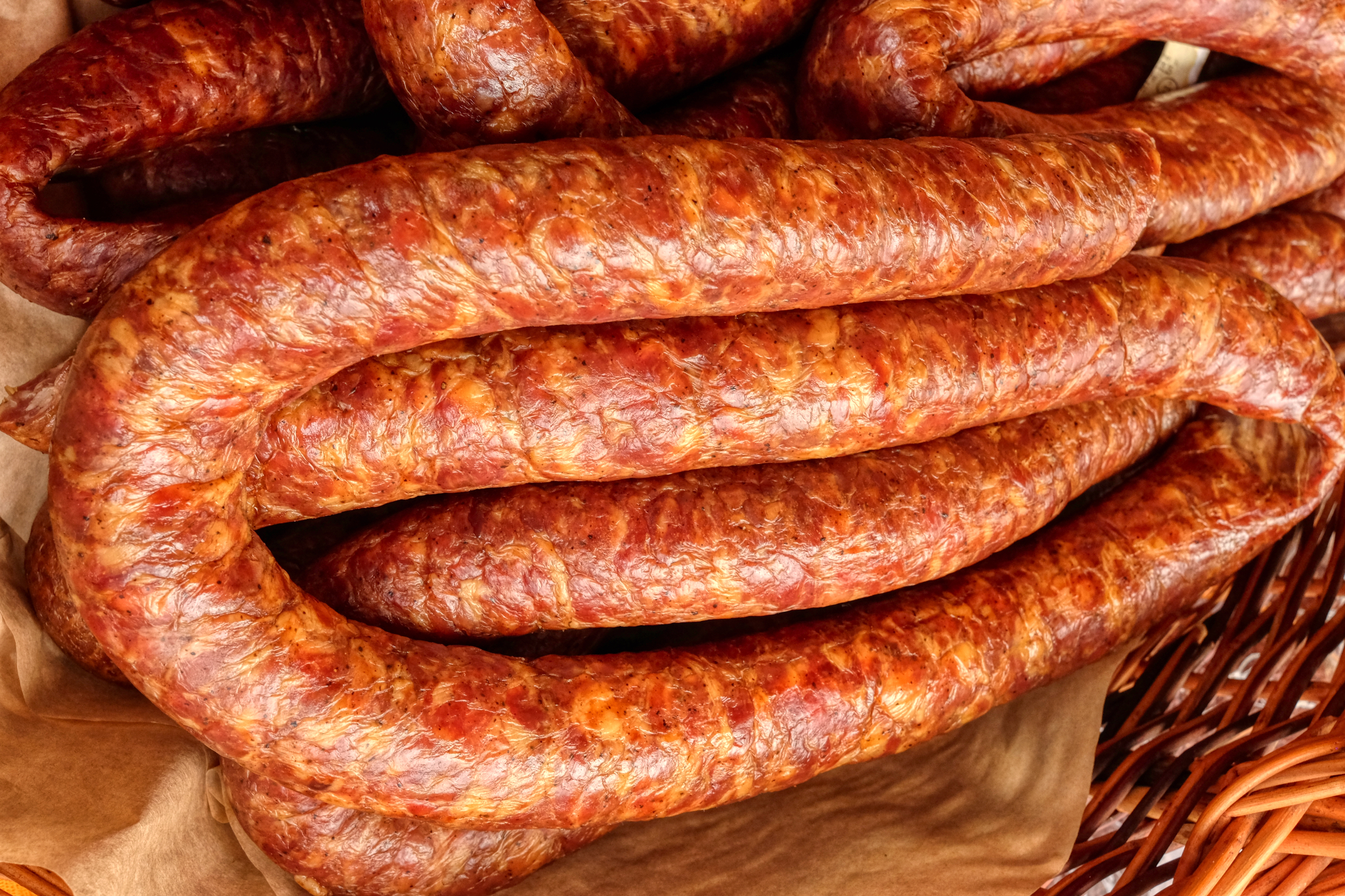 SAUSAGE!!!!
SAUSAGE!!!!
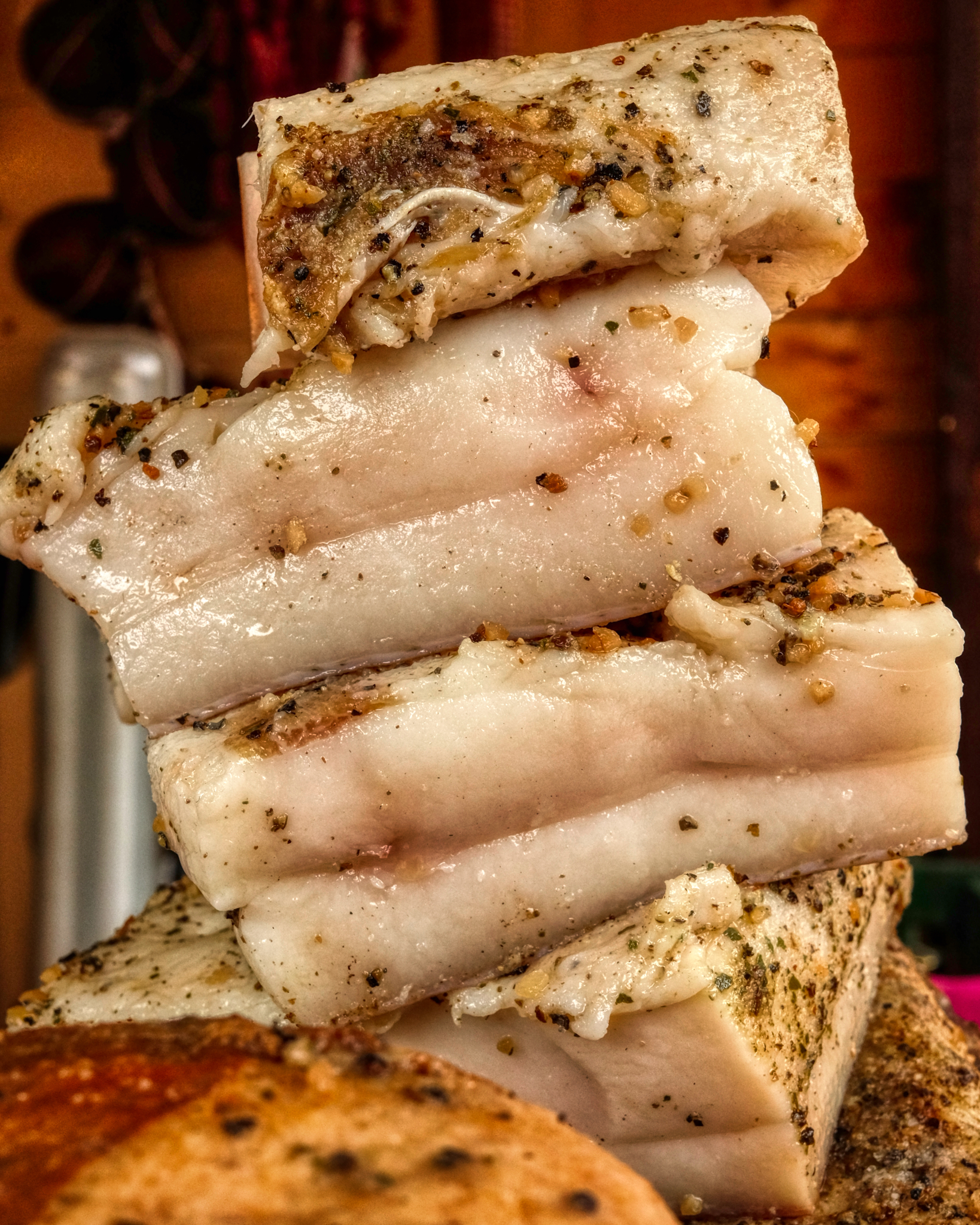 I loved cured and smoked pork fat as a child . . . a few thin slabs on a piece of peasant bread . . . mmmmmm! But I resisted!
I loved cured and smoked pork fat as a child . . . a few thin slabs on a piece of peasant bread . . . mmmmmm! But I resisted!
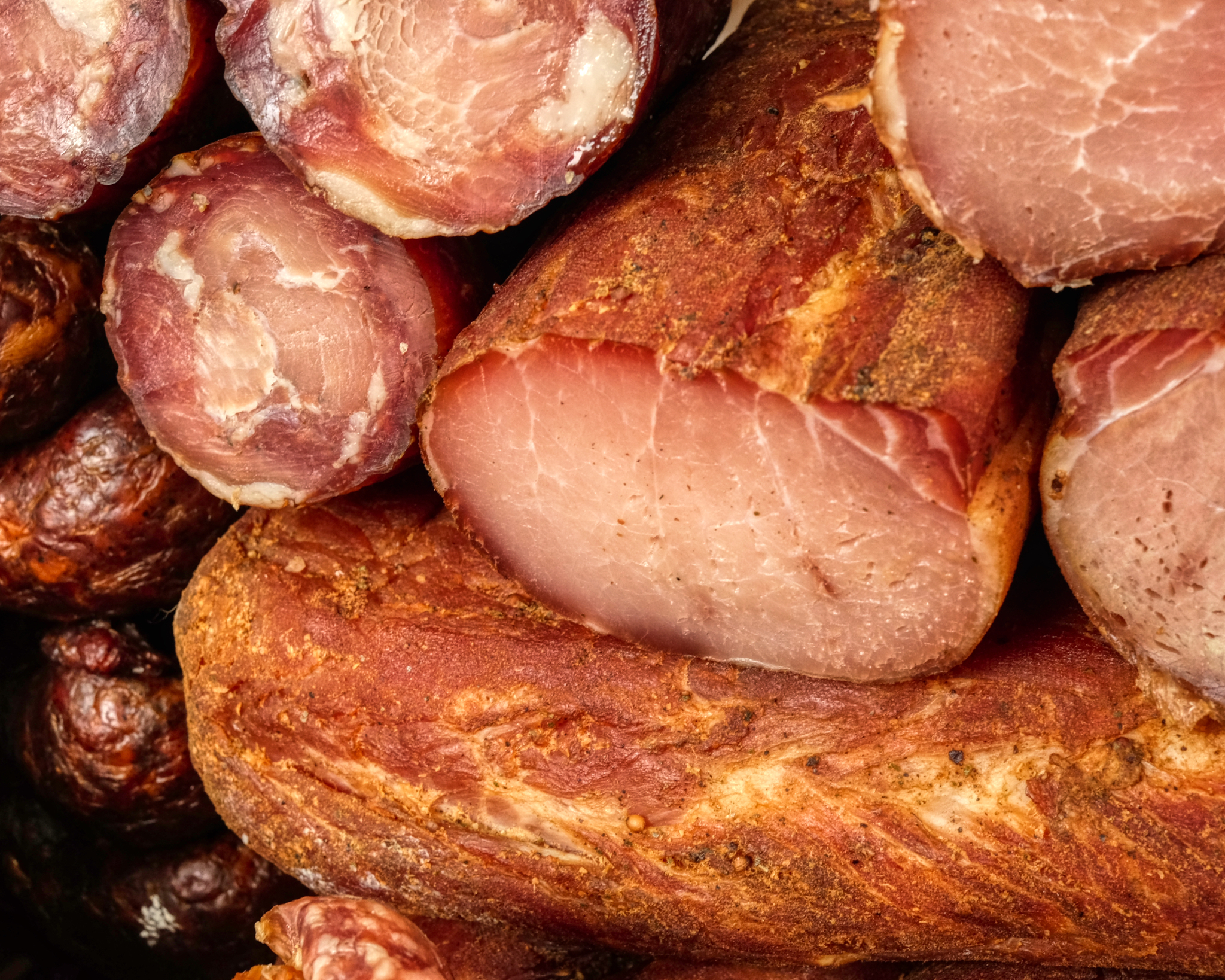 Cures and smoked meats . . . a very Eastern European way of eating . . . and so very tasty!
Cures and smoked meats . . . a very Eastern European way of eating . . . and so very tasty!
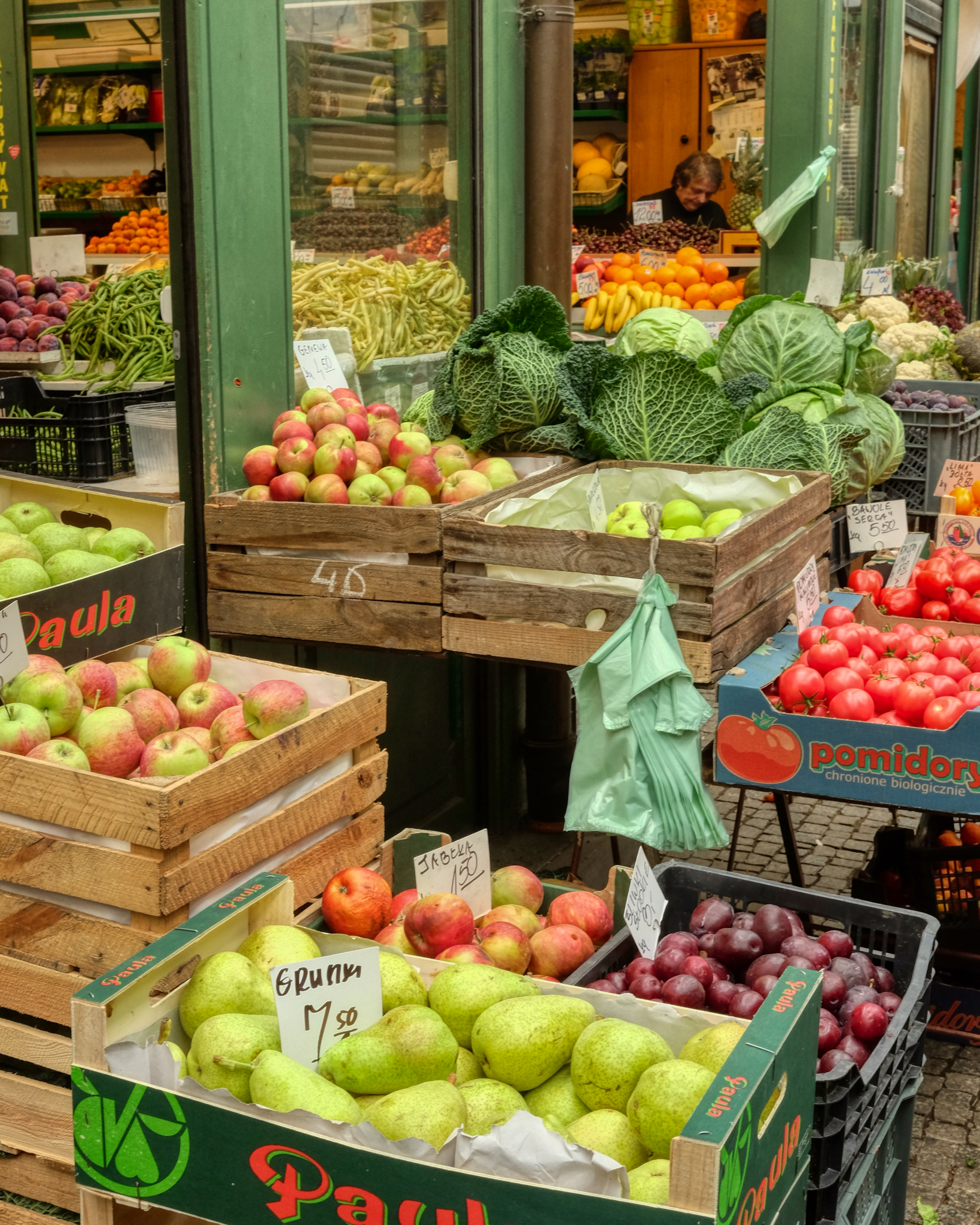 Many of the shops put their fruits and vegetables out on the street.
Many of the shops put their fruits and vegetables out on the street.
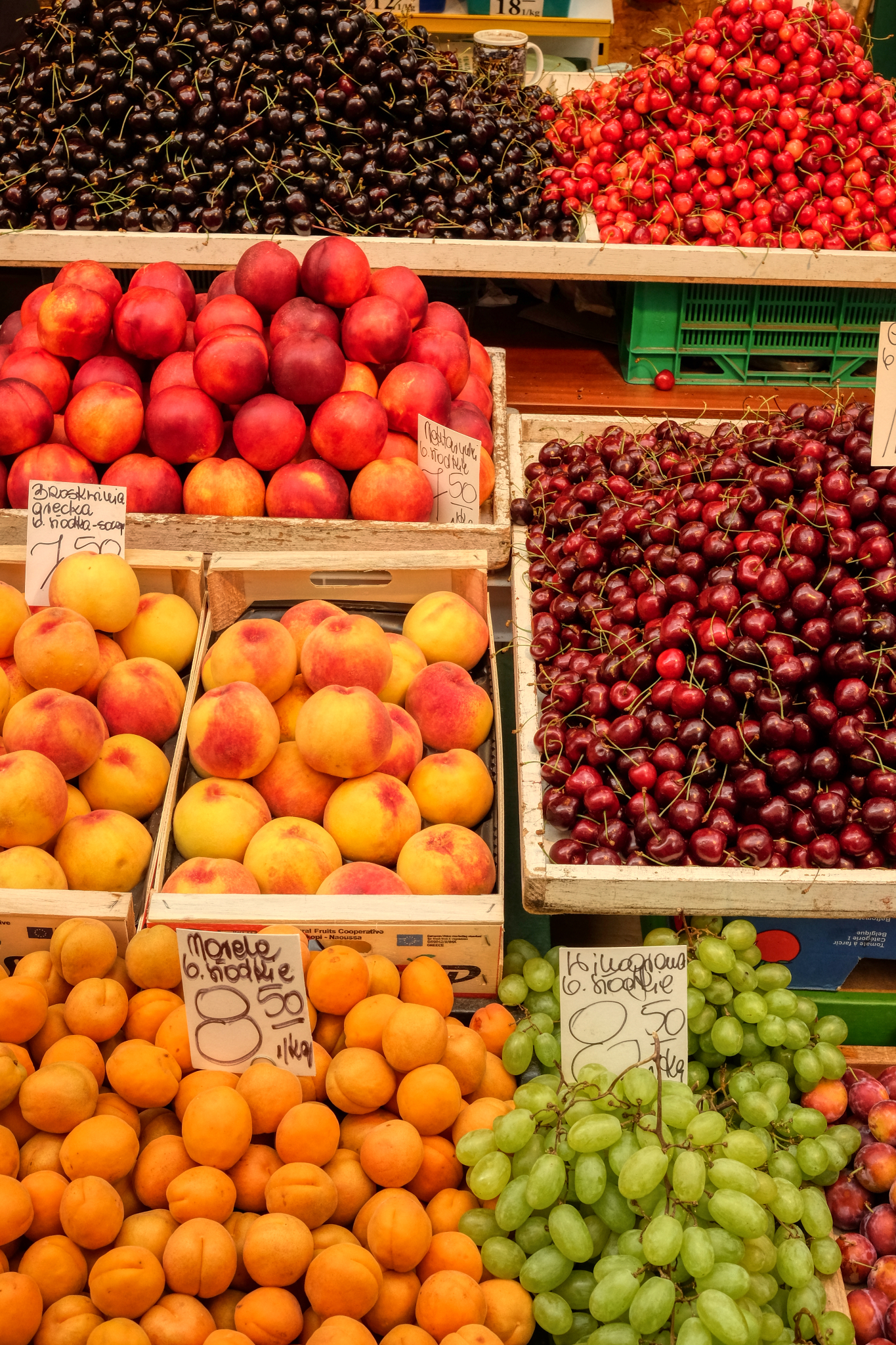 Temperate climate fruits are a real treat for us. These kinds of fruit in Bangkok cost a small fortune, so we went crazy living in Europe for a few years.
Temperate climate fruits are a real treat for us. These kinds of fruit in Bangkok cost a small fortune, so we went crazy living in Europe for a few years.
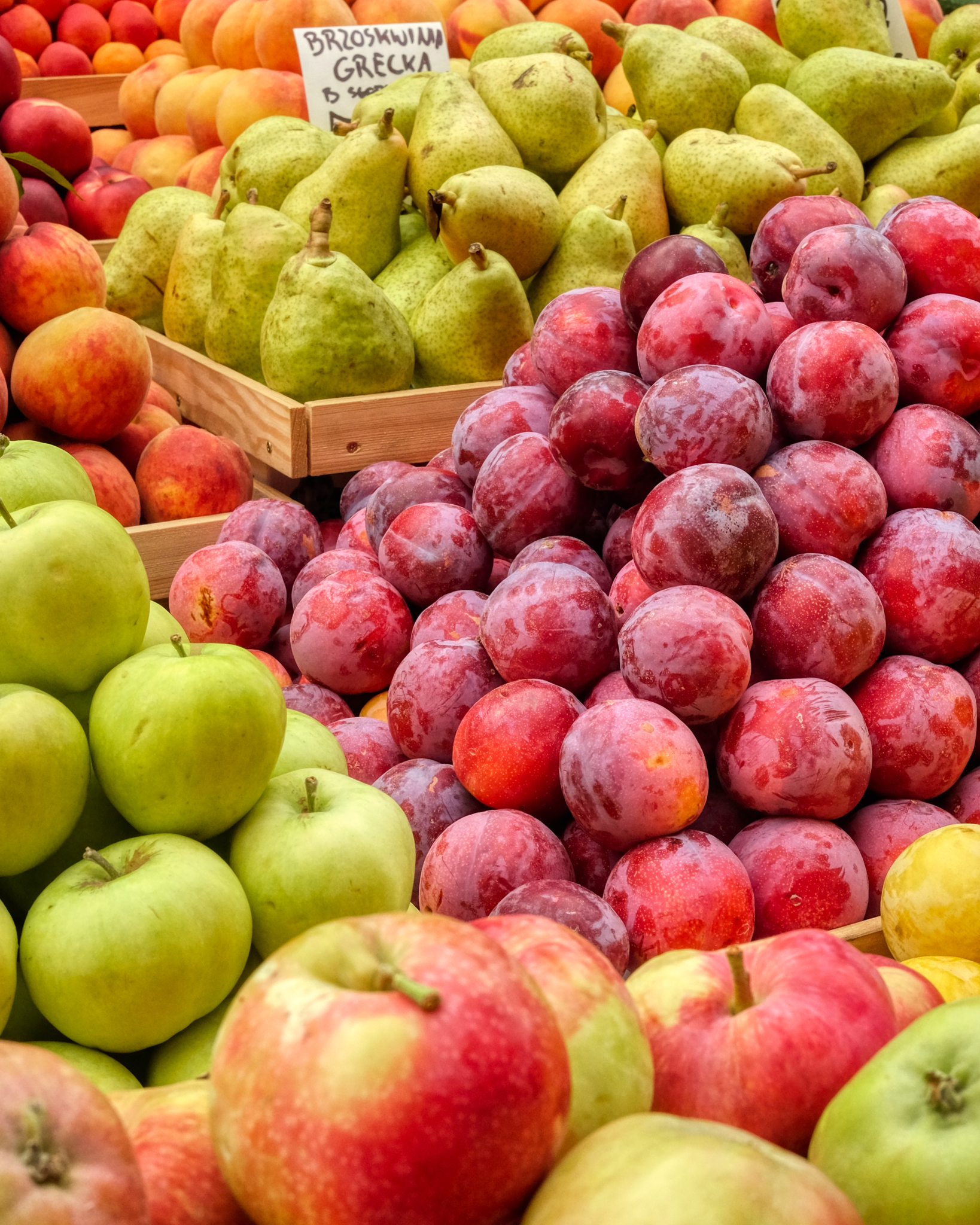 Lovely fruit.
Lovely fruit.
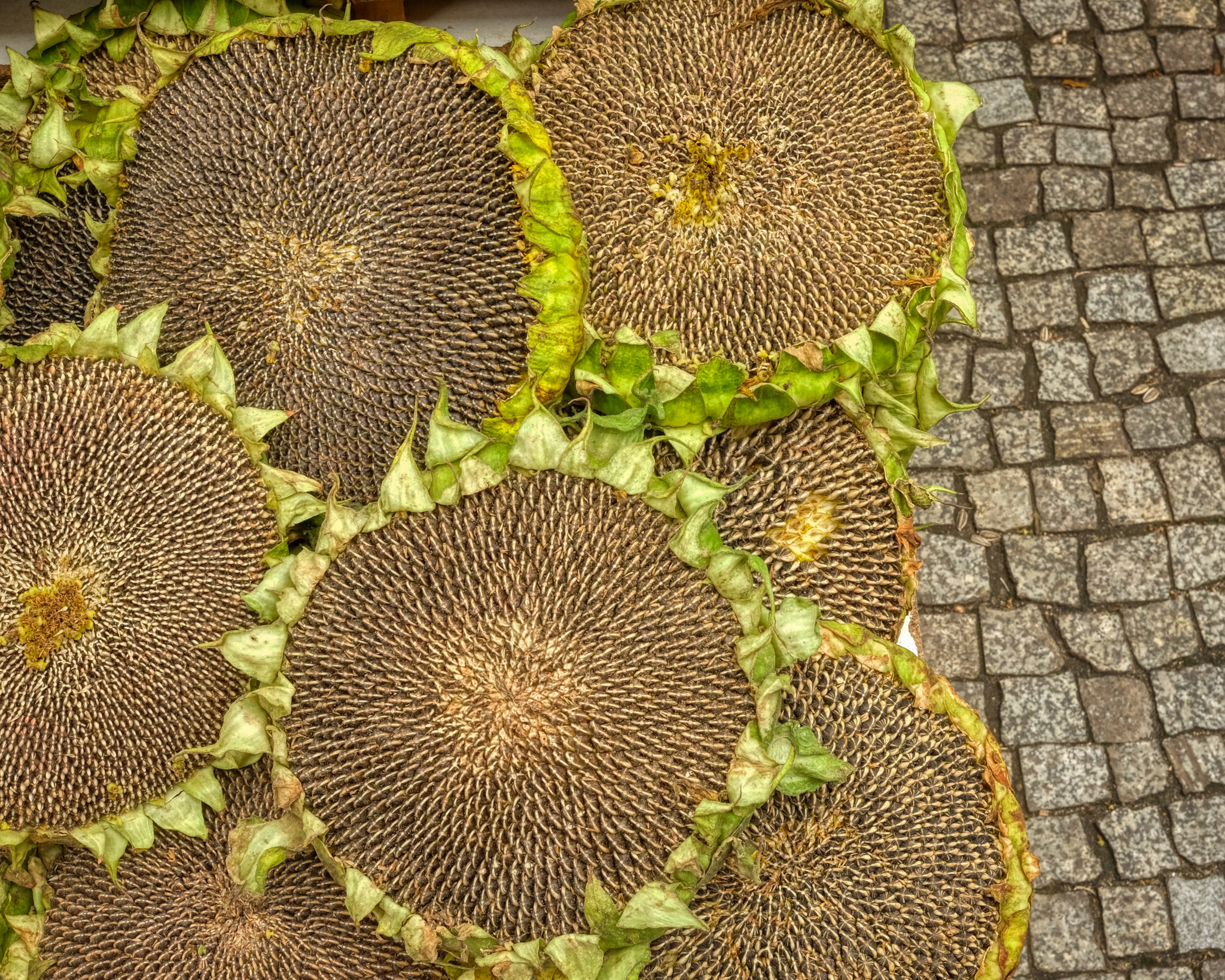 Whole heads of sunflowers . . . that's the way to sell sunflower seeds!
Whole heads of sunflowers . . . that's the way to sell sunflower seeds!
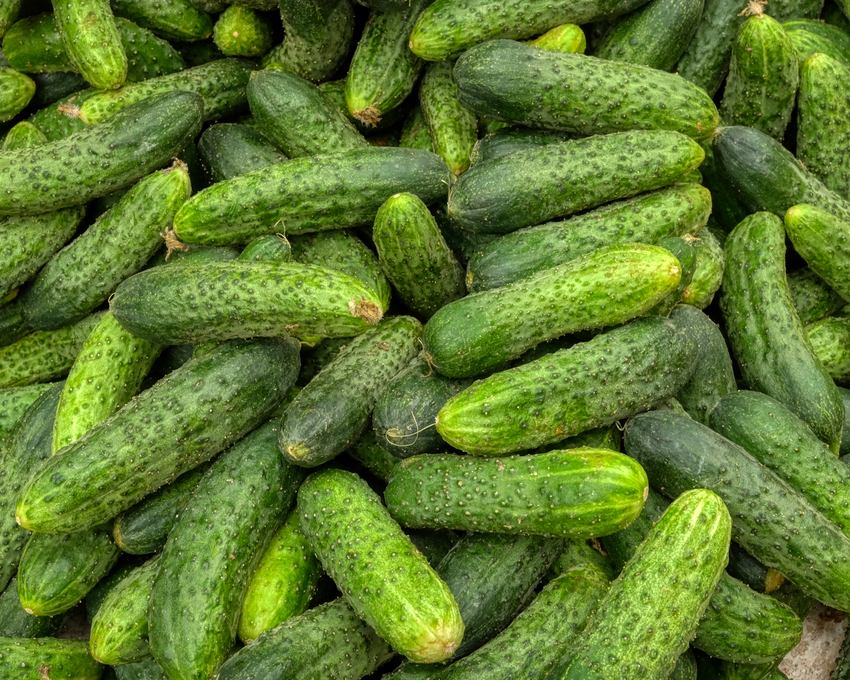 Fresh, crispy cucumbers!
Fresh, crispy cucumbers!
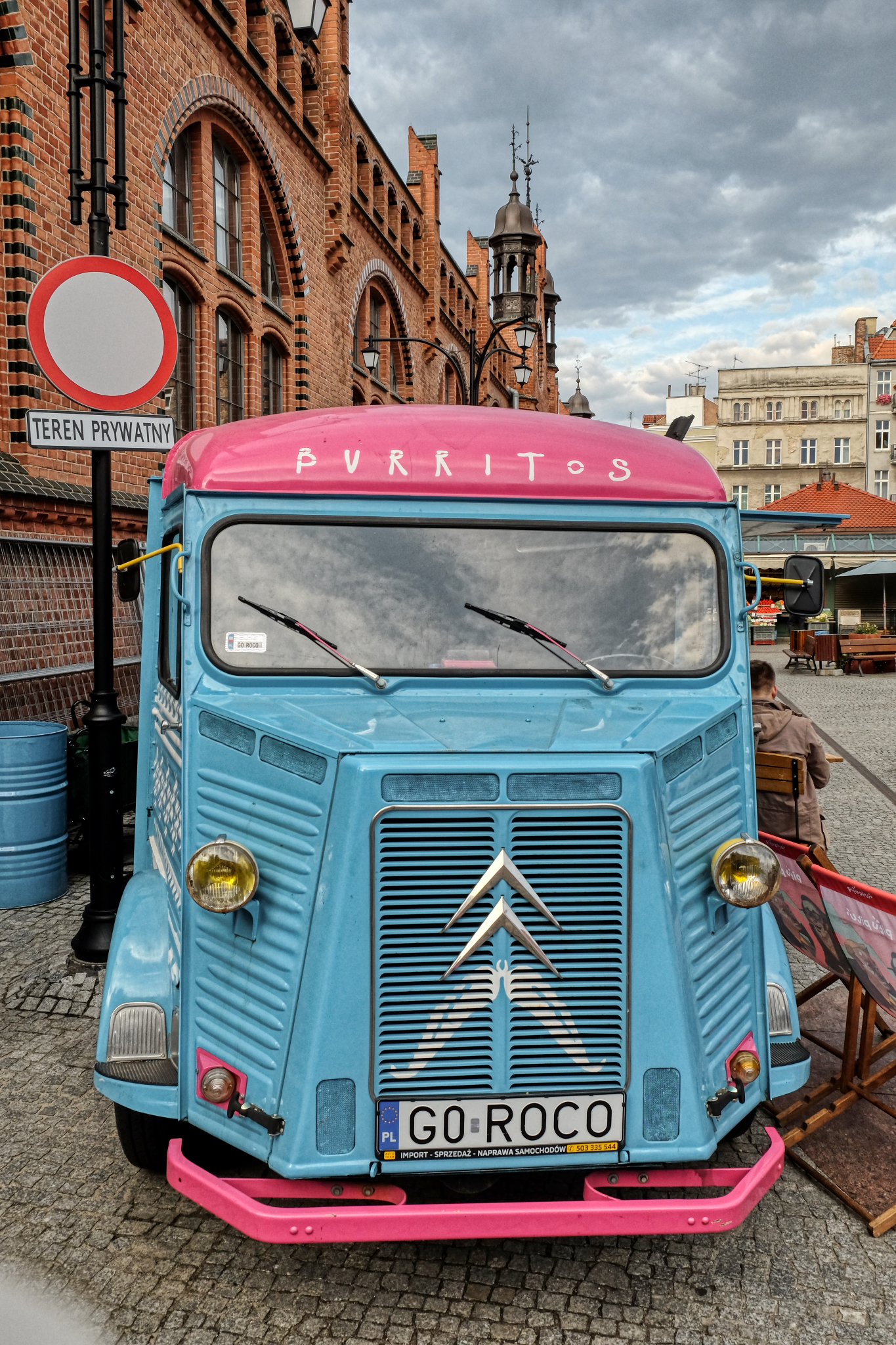 They had every kind of street food at the fair, including this actual Burrito Truck! Amazing! (I didn't buy one, and immediately regreted it!)
They had every kind of street food at the fair, including this actual Burrito Truck! Amazing! (I didn't buy one, and immediately regreted it!)
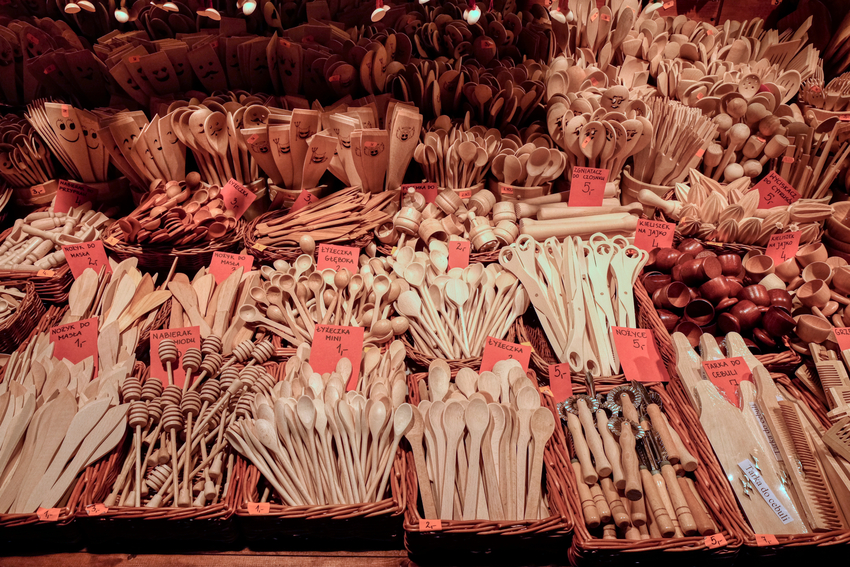 We bought a lot at the wooden spoon stand to take back home to our cottage in Scotland.
We bought a lot at the wooden spoon stand to take back home to our cottage in Scotland.
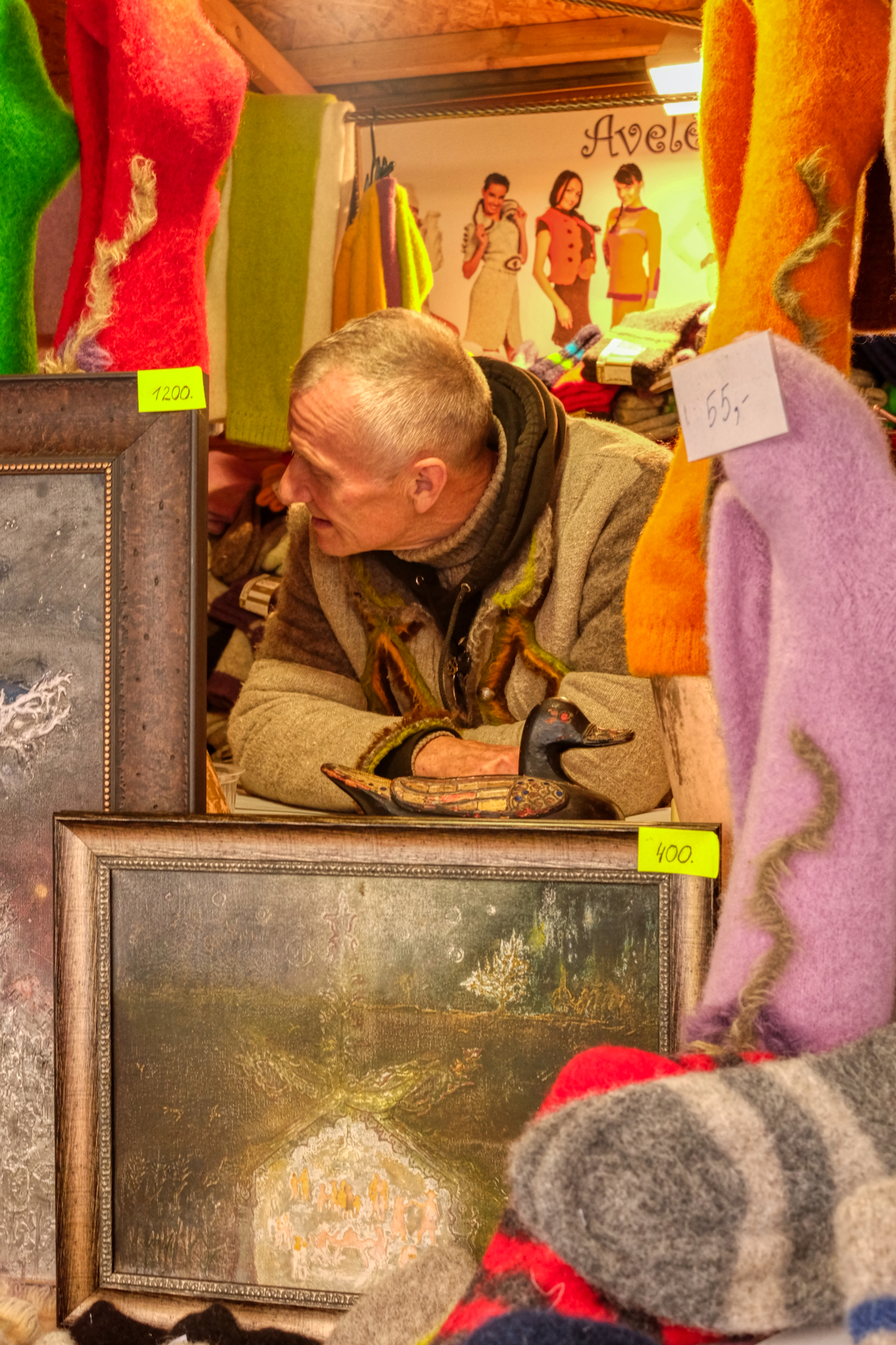 A dealer of art and socks . . .
A dealer of art and socks . . .
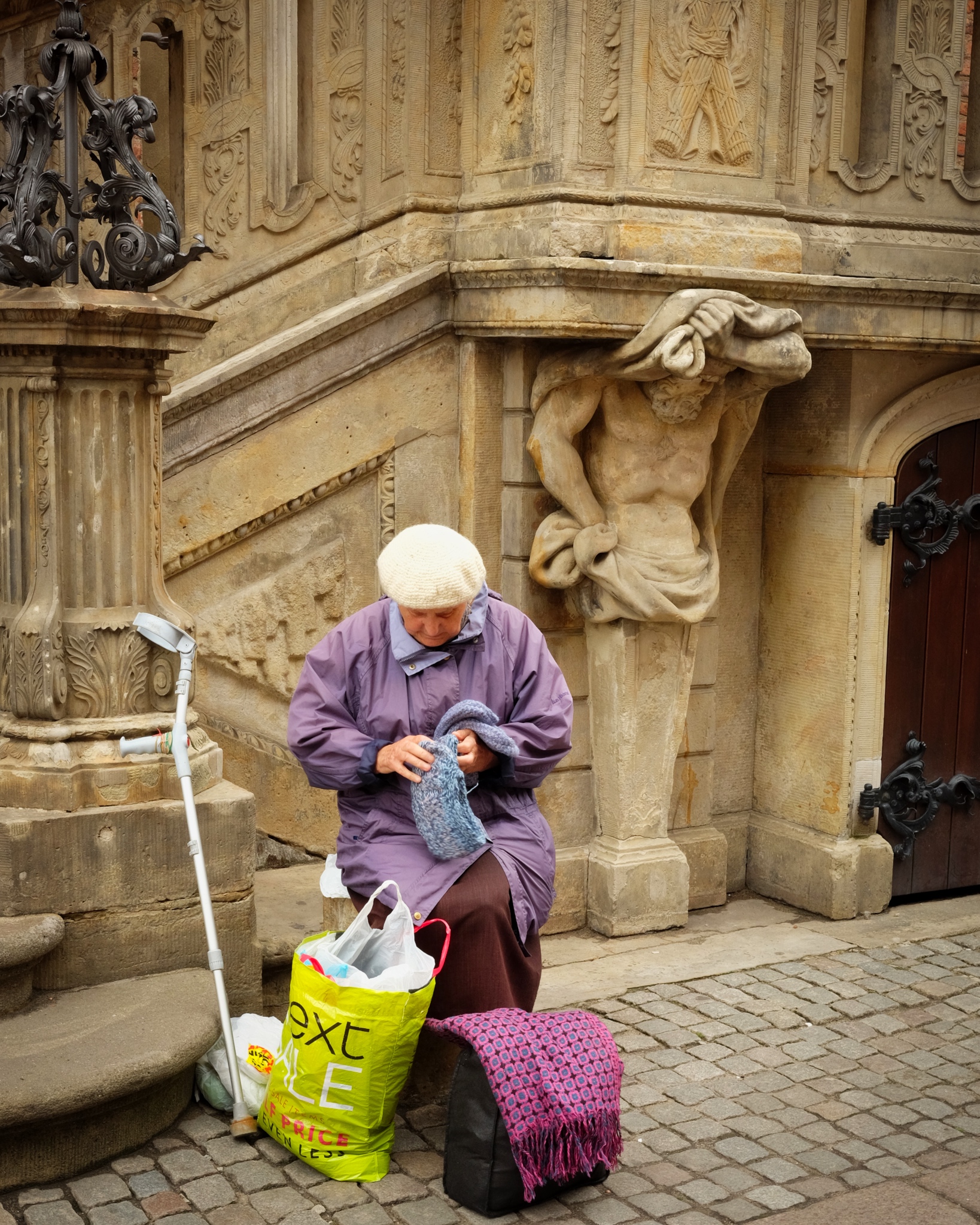 A woman set up her stool and sold her own crocheted items. Sweet.
A woman set up her stool and sold her own crocheted items. Sweet.
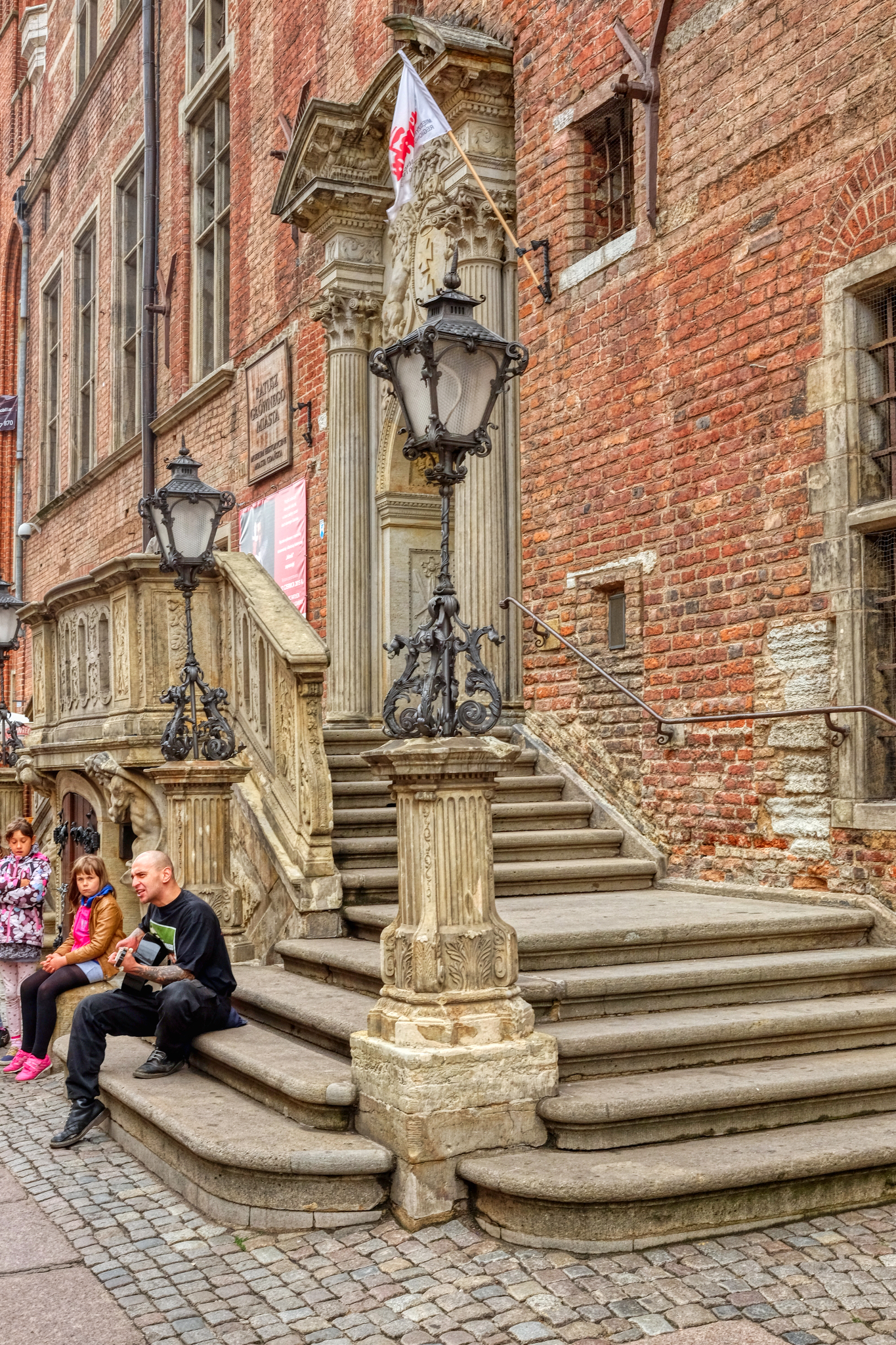 There were many buskers, but this guy was exceptionally good.
There were many buskers, but this guy was exceptionally good.
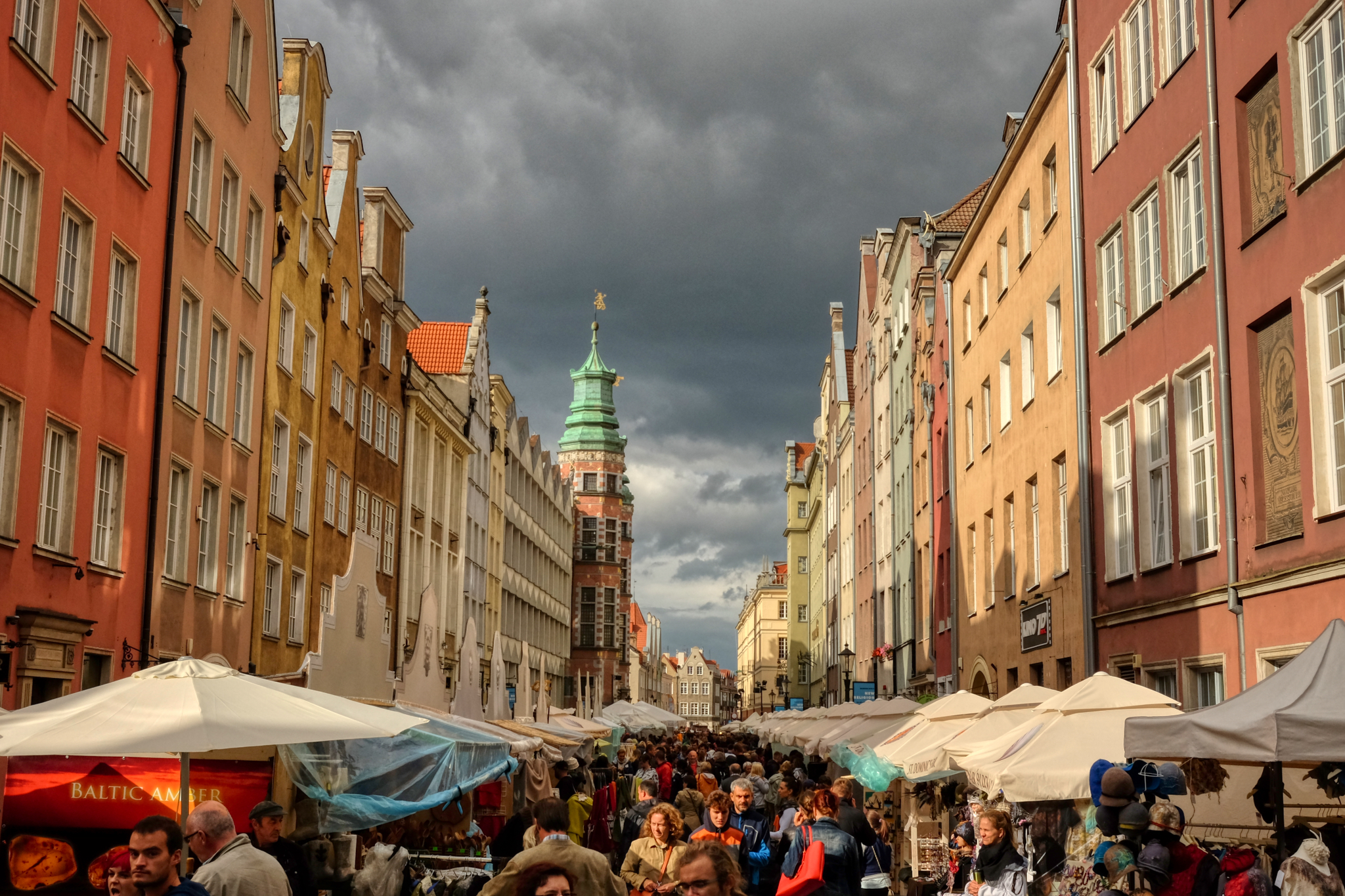 The weather varied from bright sunshine to dark clouds and sudden bursts of rain.
The weather varied from bright sunshine to dark clouds and sudden bursts of rain.
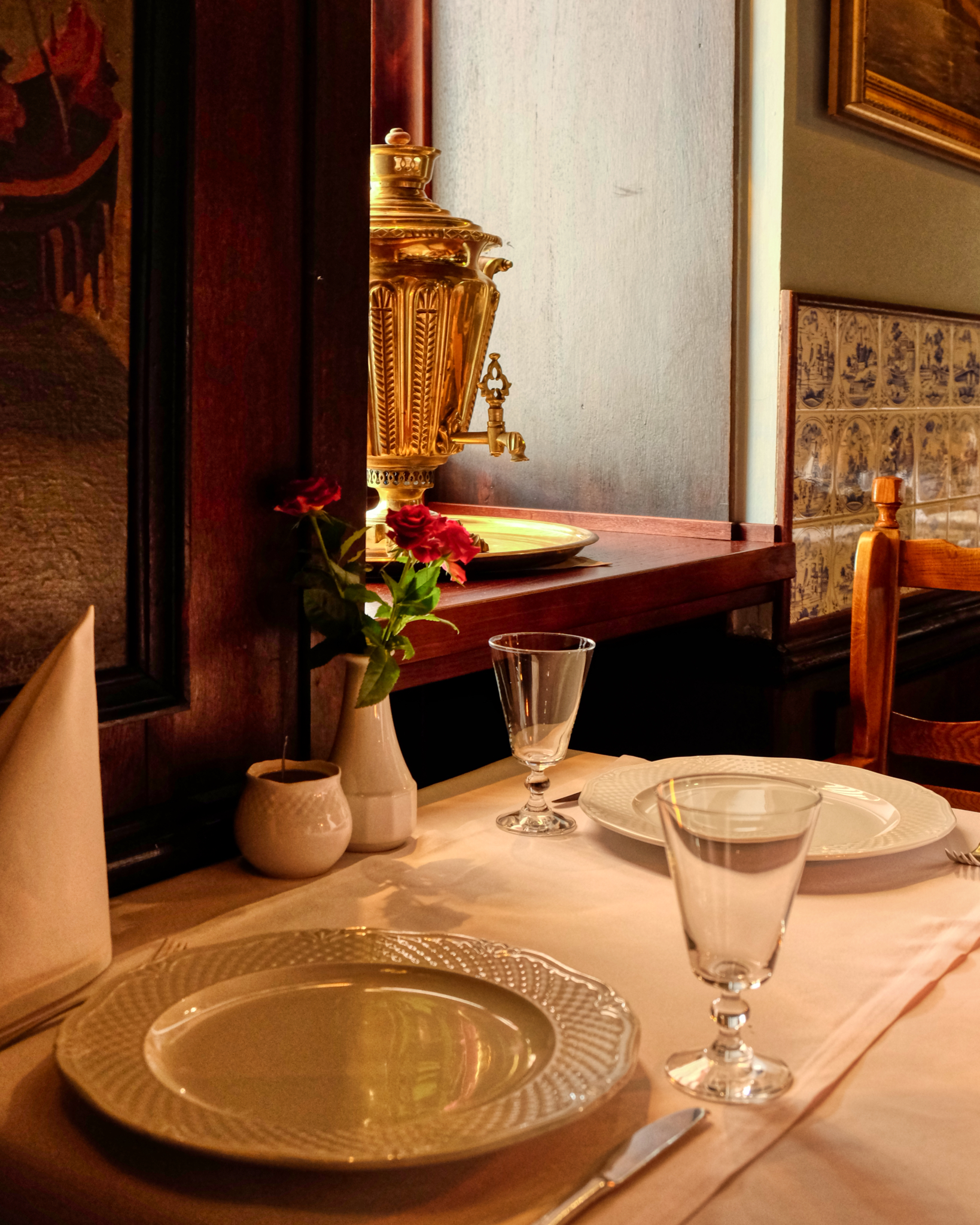 We found thee perfect Old Europe restaurant . . .
We found thee perfect Old Europe restaurant . . .
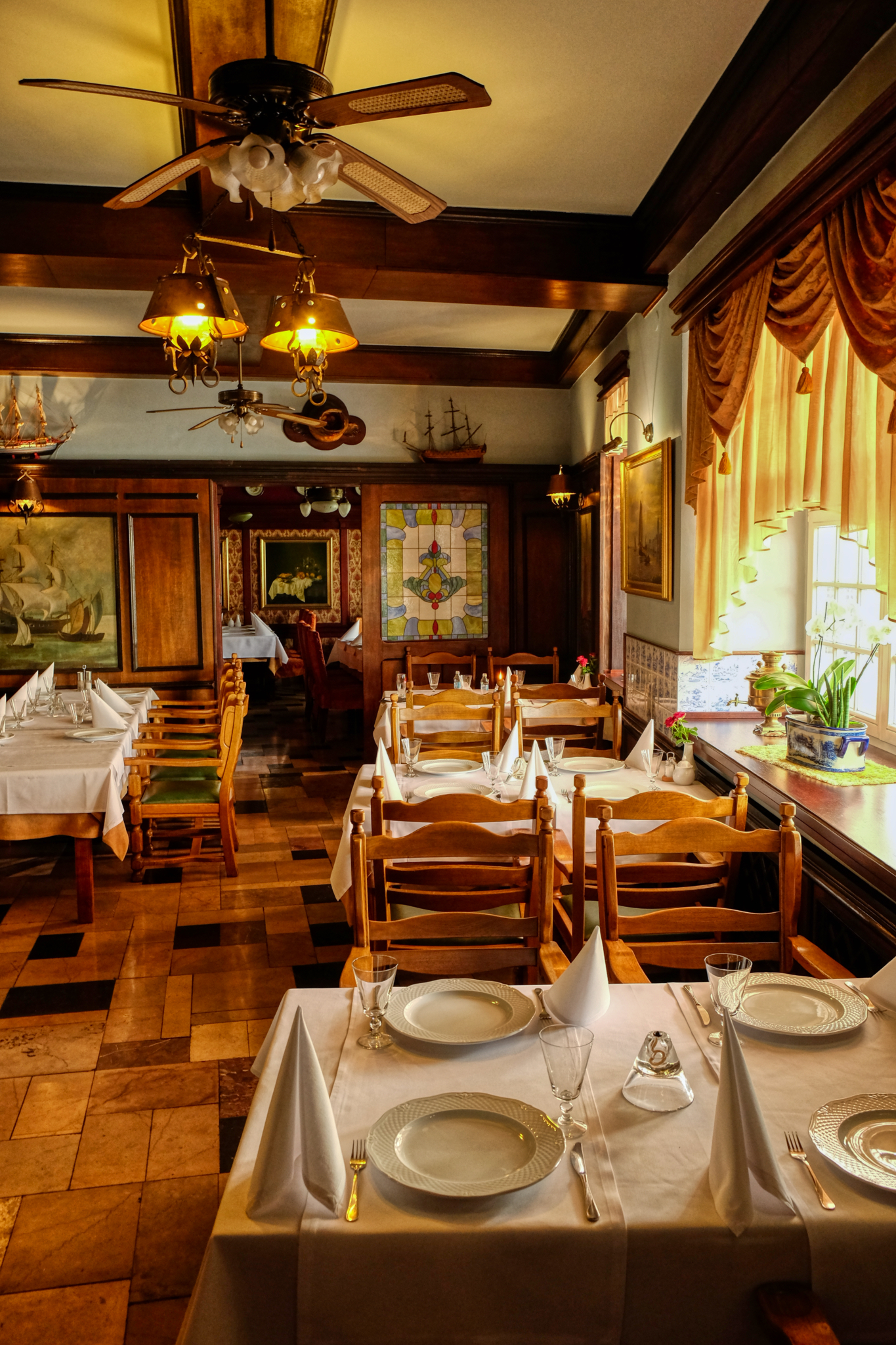 We were hungry for lunch and found this charming old restaurant.
We were hungry for lunch and found this charming old restaurant.
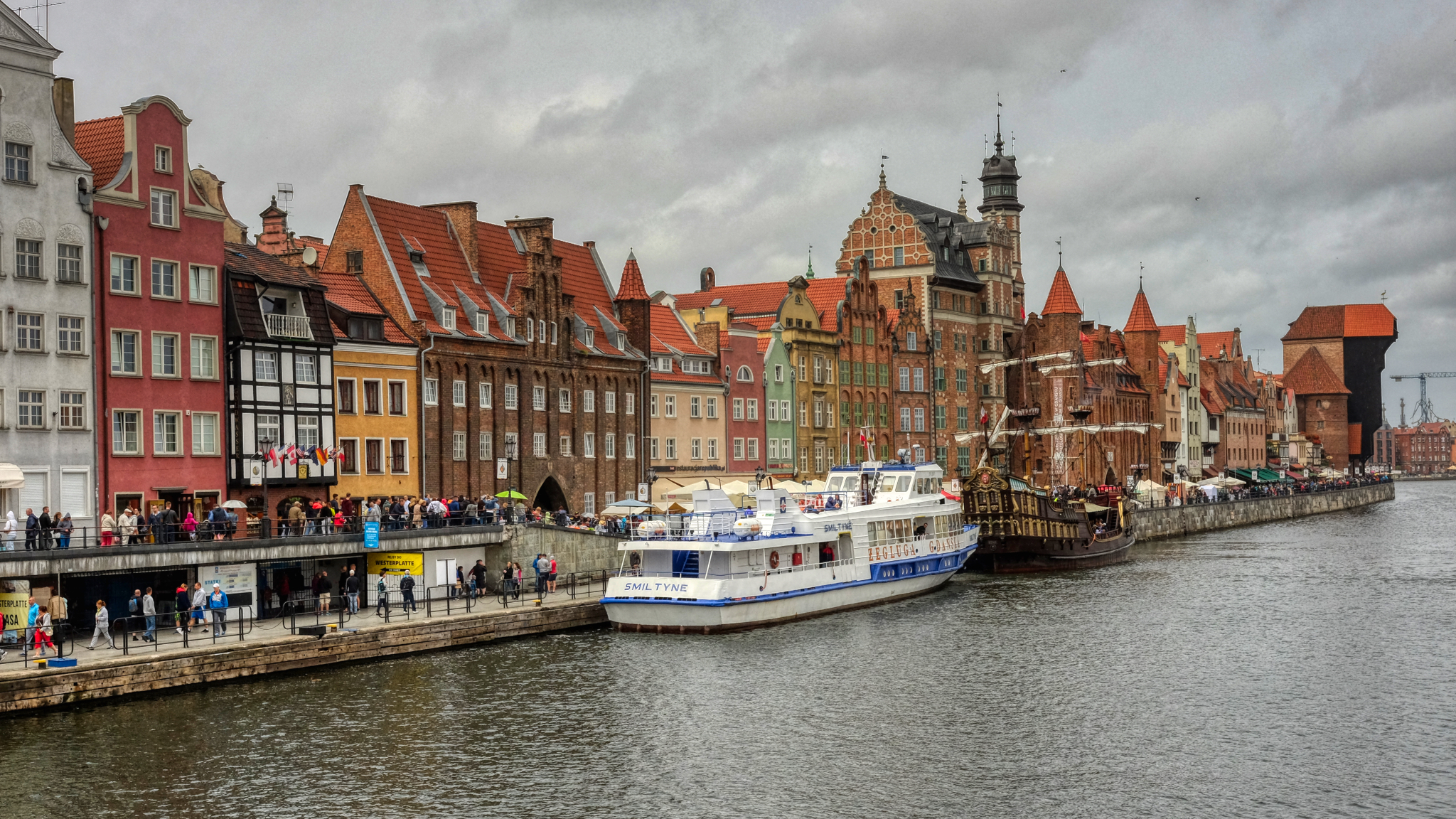 Down along the river quay. A fine medieval dock crane on the far left.
Down along the river quay. A fine medieval dock crane on the far left.
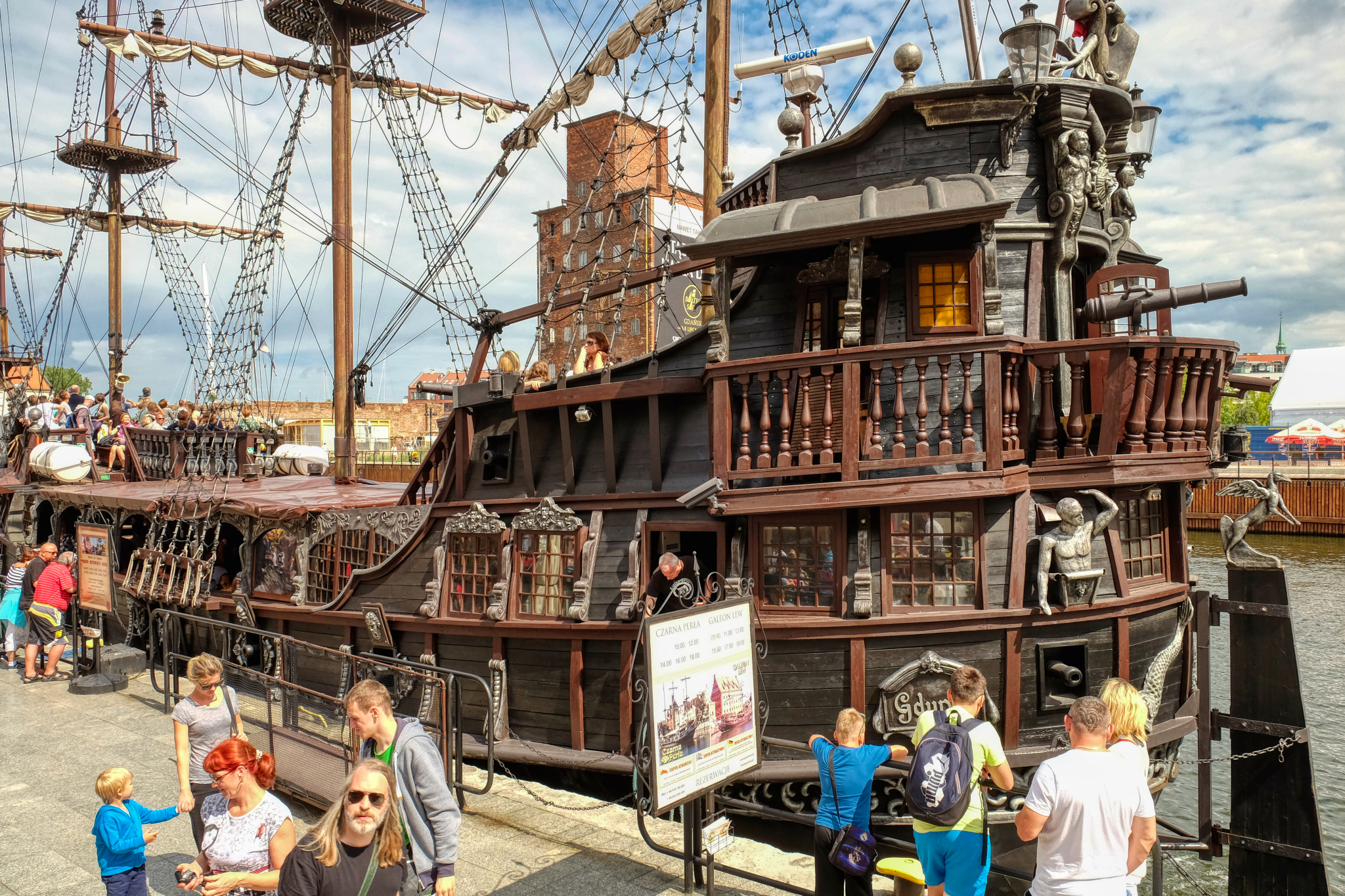 River cruise ship for the tourists . . .
River cruise ship for the tourists . . .
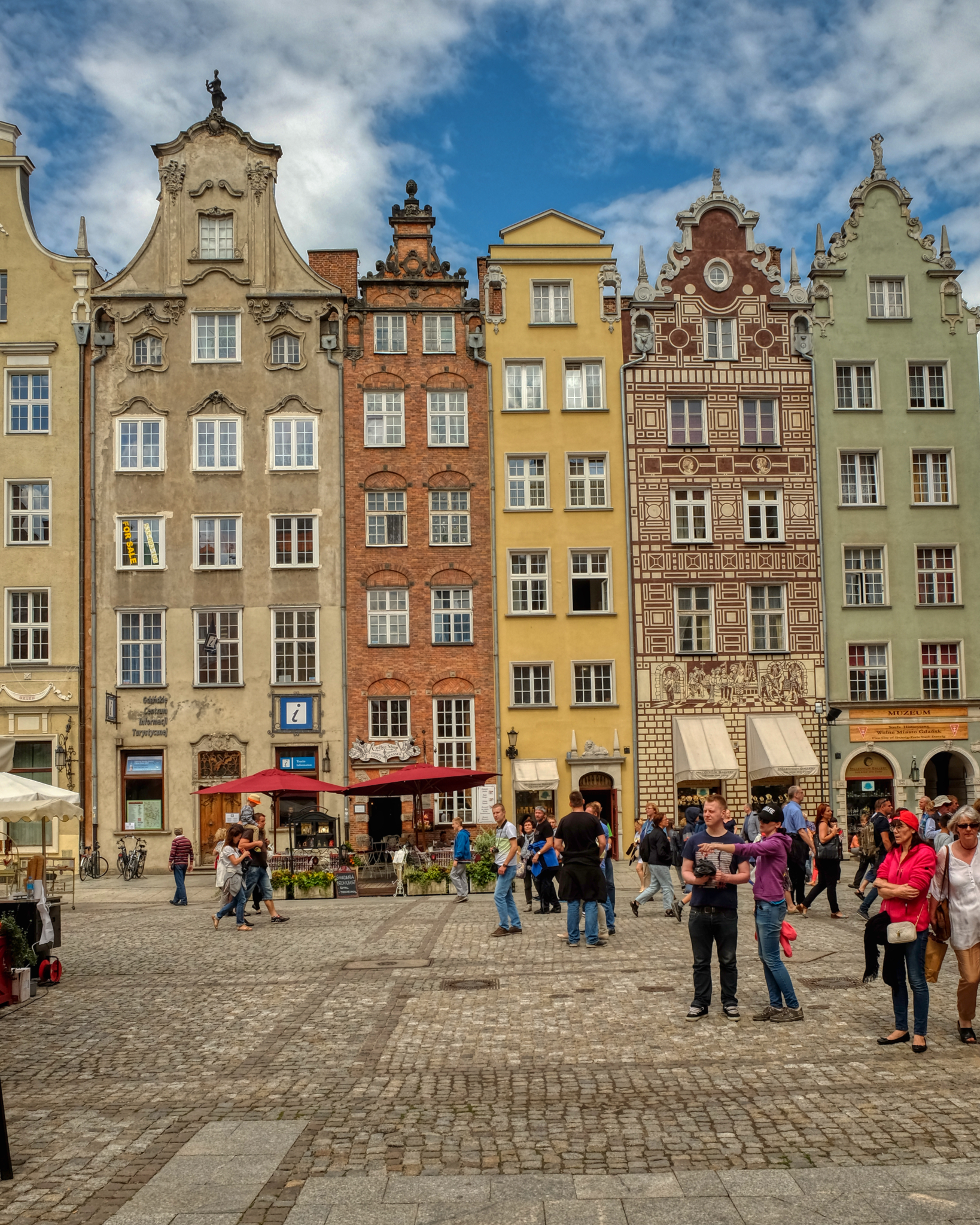 For me, the lure of Gdańsk was the marvelous array of fascinating architecture.
For me, the lure of Gdańsk was the marvelous array of fascinating architecture.
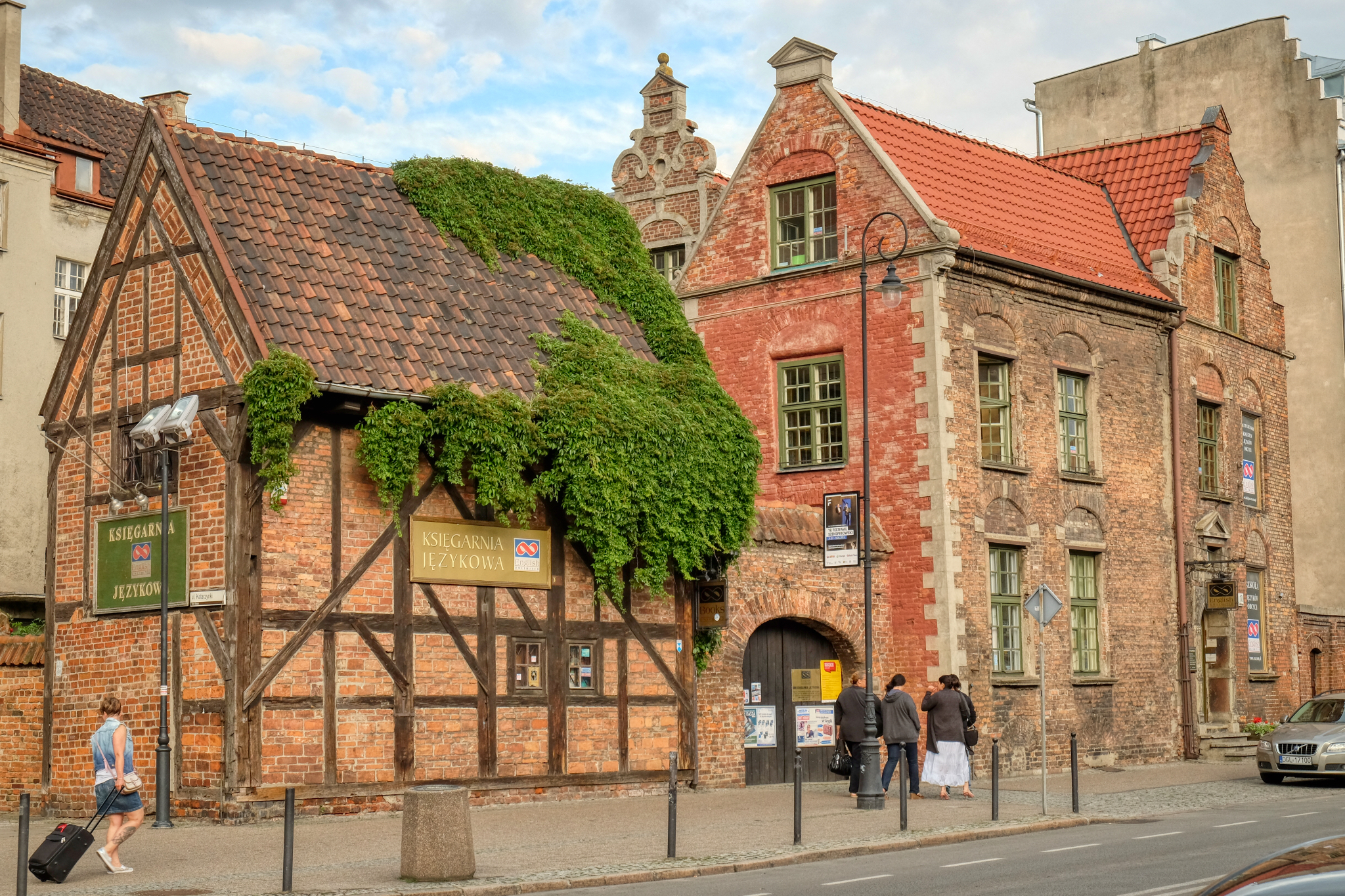 A few of the old buildings survived the carpet bombing.
A few of the old buildings survived the carpet bombing.
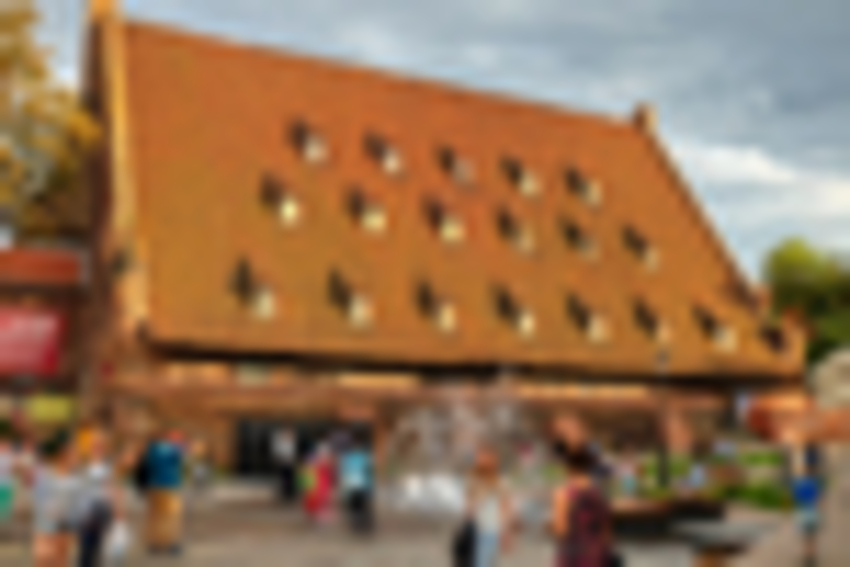 Such an odd building . . . all roof and dormers . . .
Such an odd building . . . all roof and dormers . . .
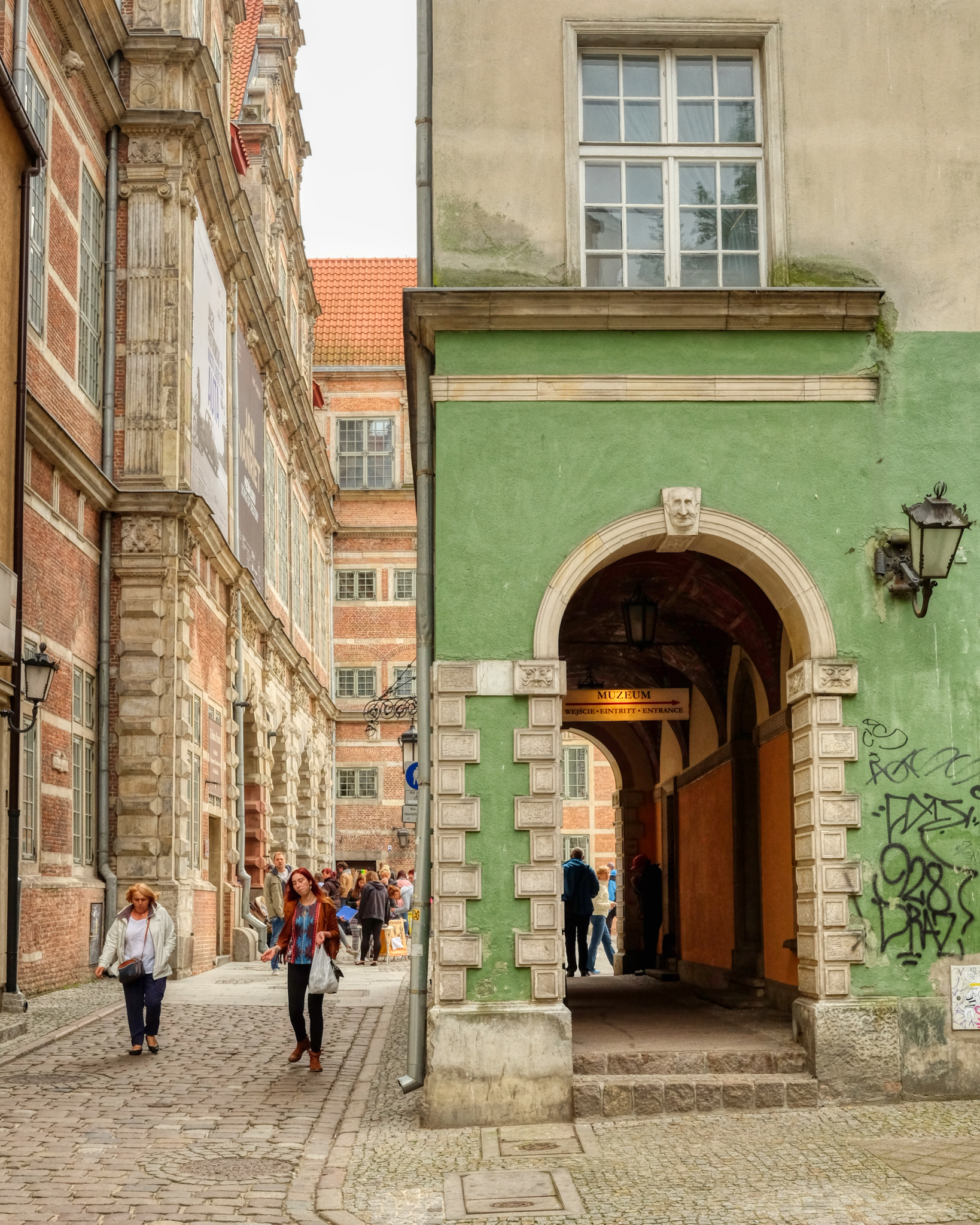 Narrow alleys, cobbles streets, ancient buildings . . . the charms of old Europe.
Narrow alleys, cobbles streets, ancient buildings . . . the charms of old Europe.
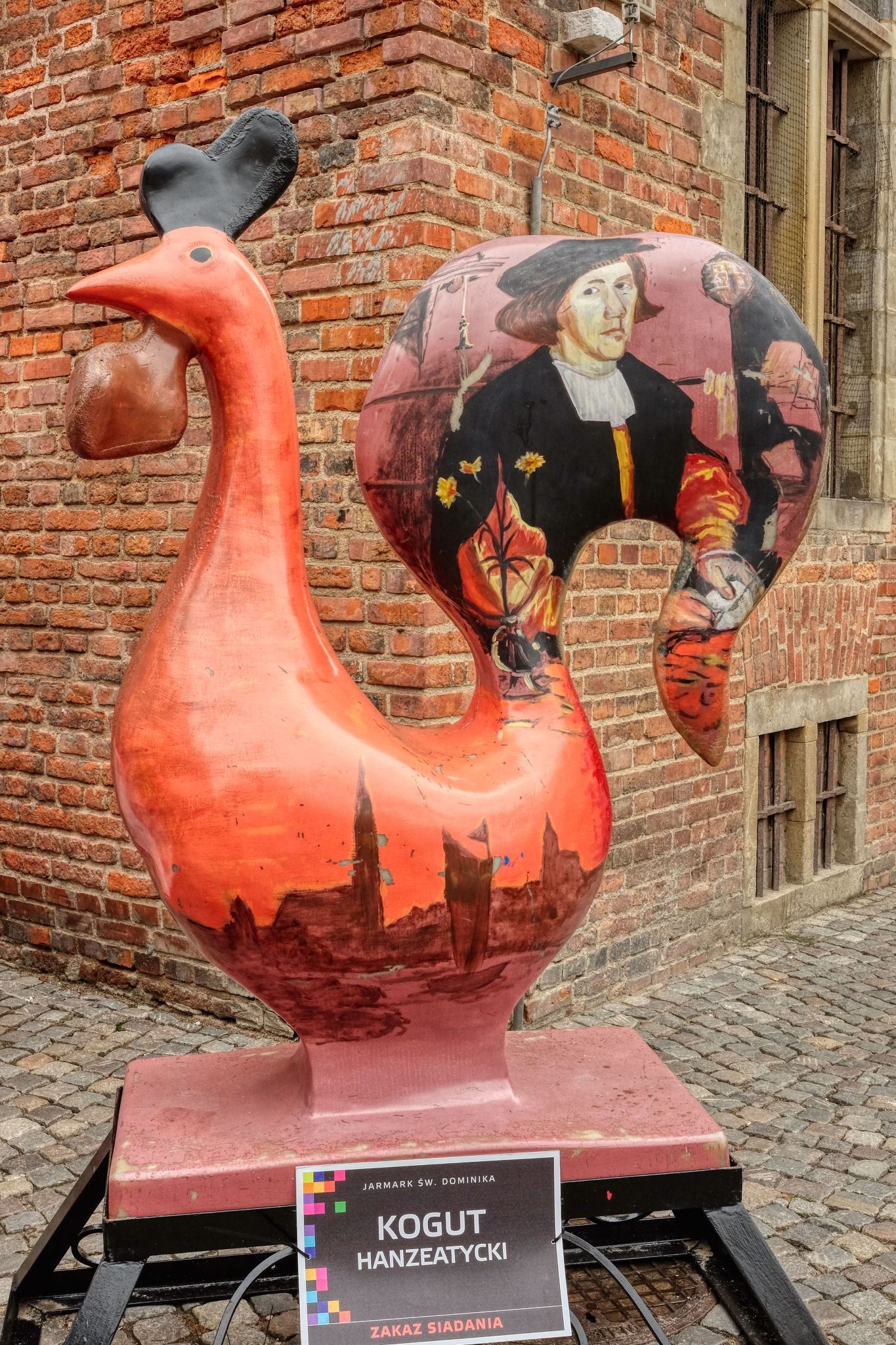 Here and there . . . public art . . .
Here and there . . . public art . . .
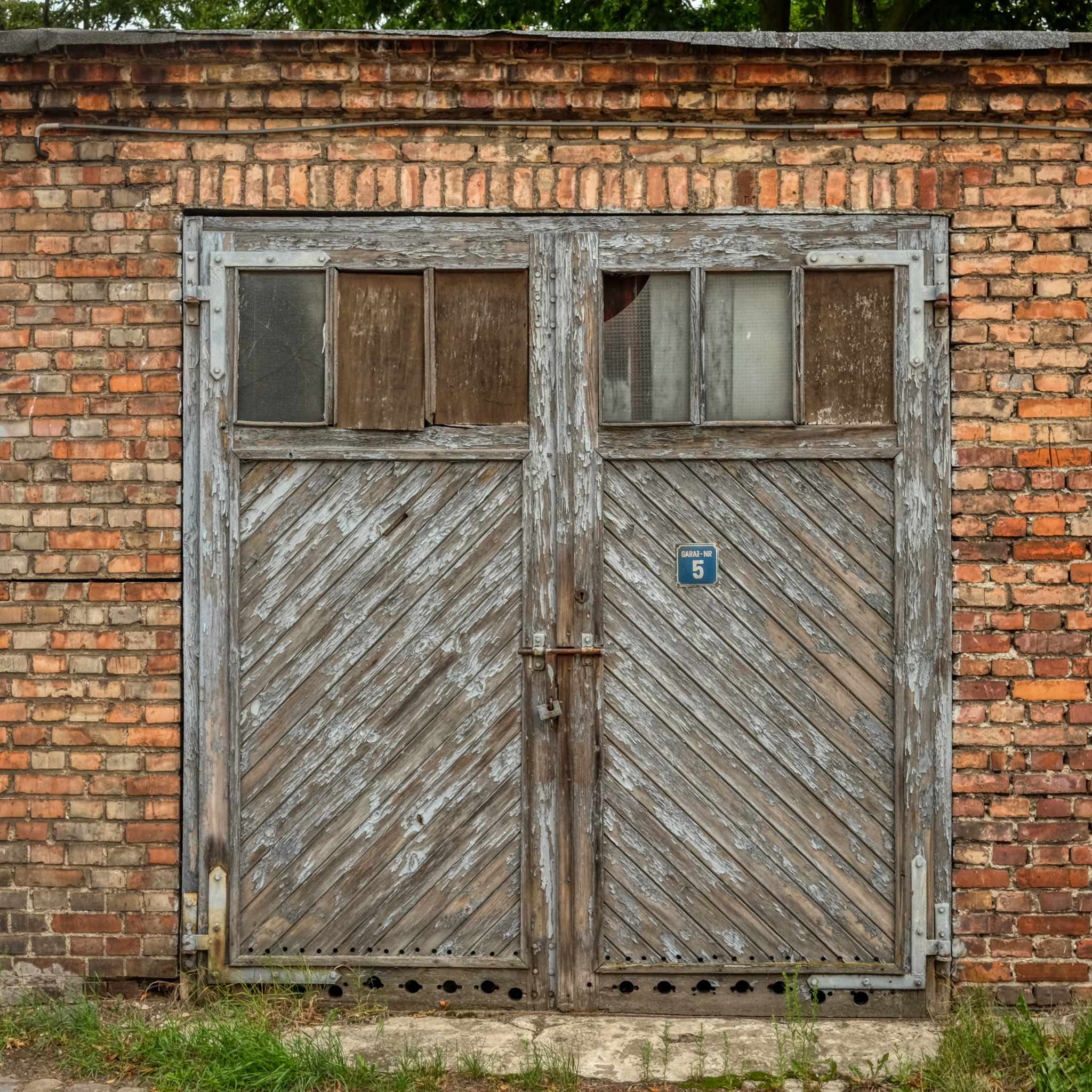 My love of old doors, walls and windows was satisfied in a big way in Gdańsk!
My love of old doors, walls and windows was satisfied in a big way in Gdańsk!
 I was told by a shopkeeper that some of these grand old doors and their stone casings were pulled from the rubble after the bombings and restored and reused. Marvelous.
I was told by a shopkeeper that some of these grand old doors and their stone casings were pulled from the rubble after the bombings and restored and reused. Marvelous.
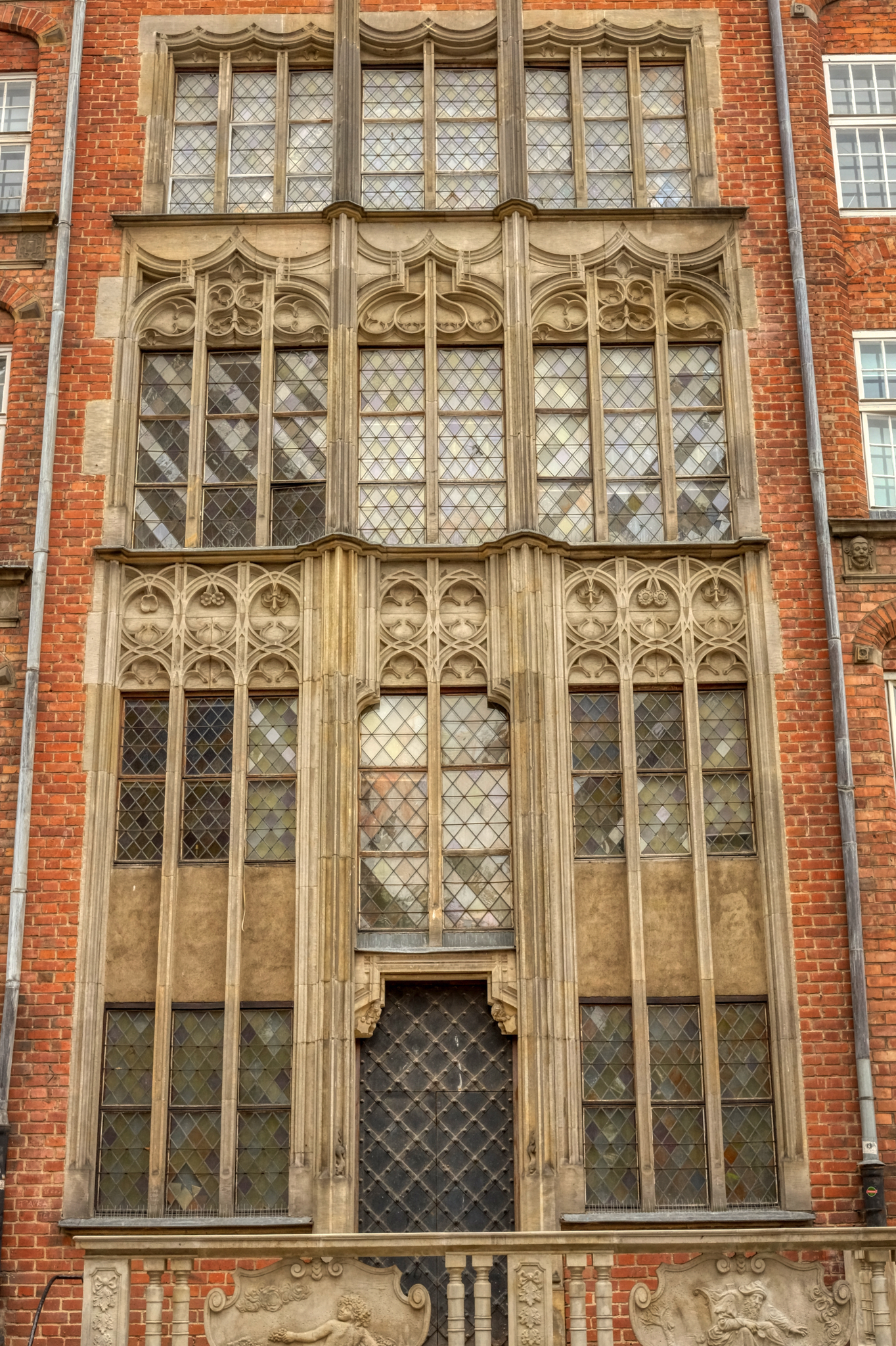 I marveled at these windows . . . exquisite!
I marveled at these windows . . . exquisite!
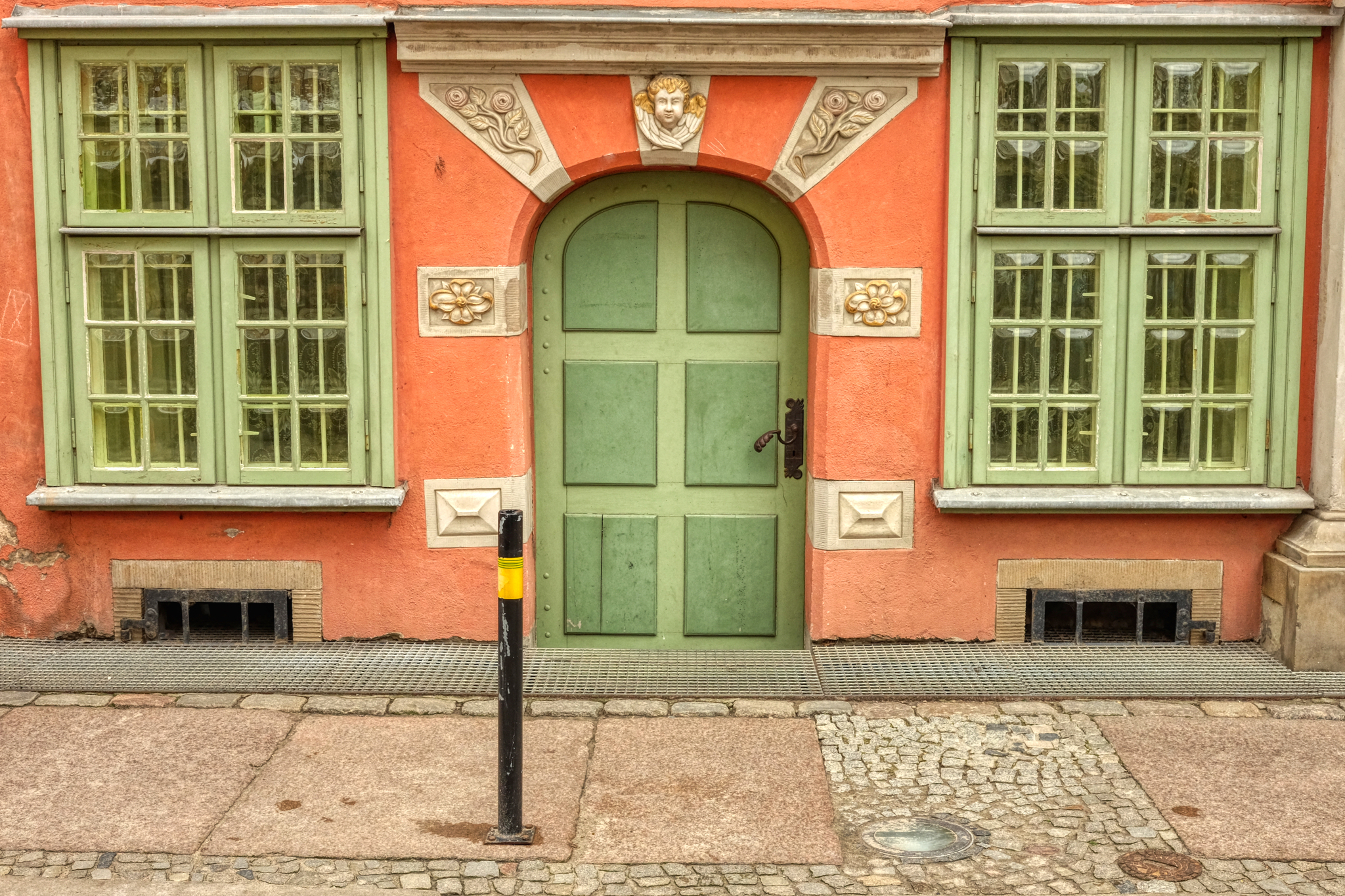 Such lovely symmetry, color, shape . . .
Such lovely symmetry, color, shape . . .
 A gate from the time of horse drawn carriages . . .
A gate from the time of horse drawn carriages . . .
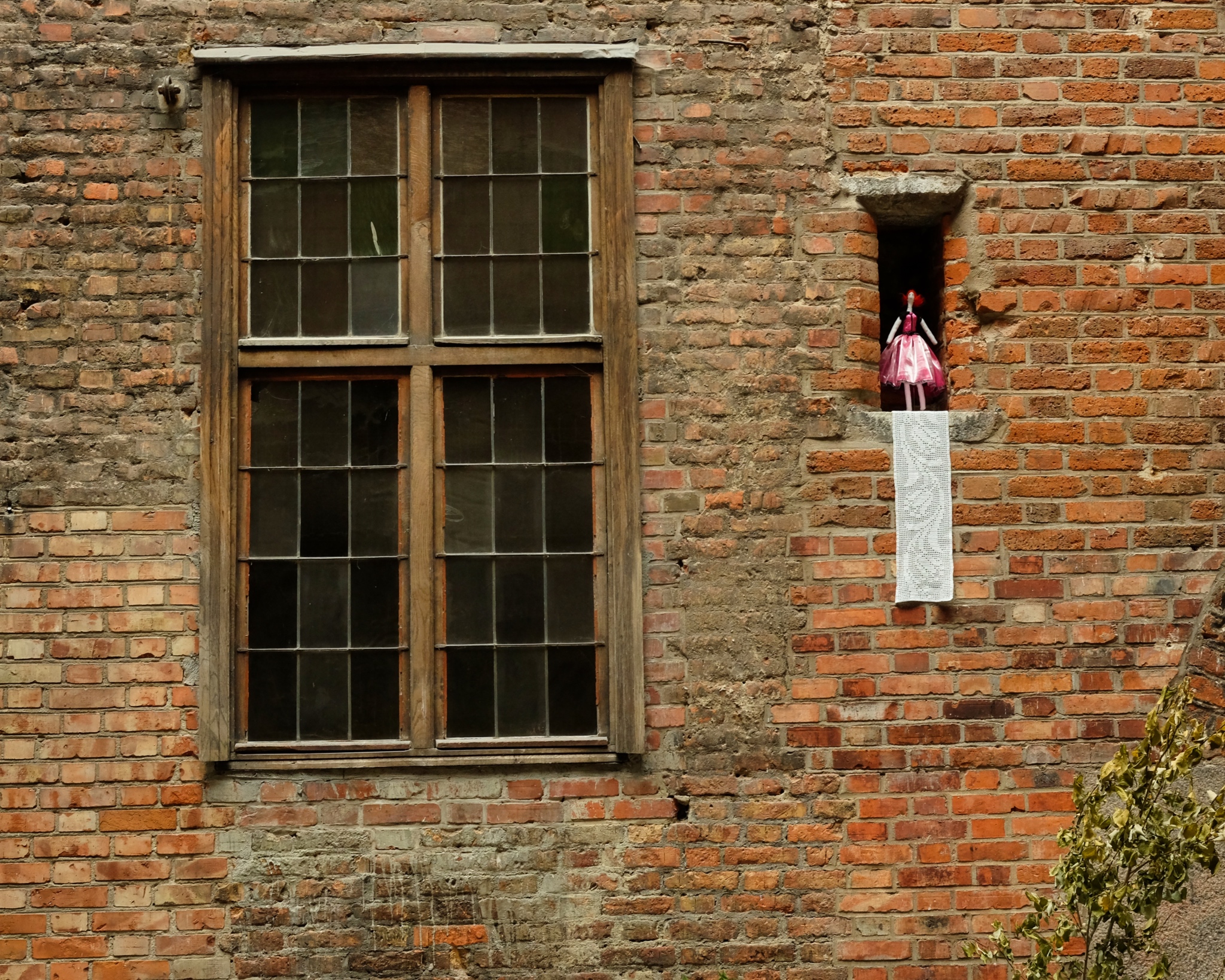 I loved the whimsical display.
I loved the whimsical display.
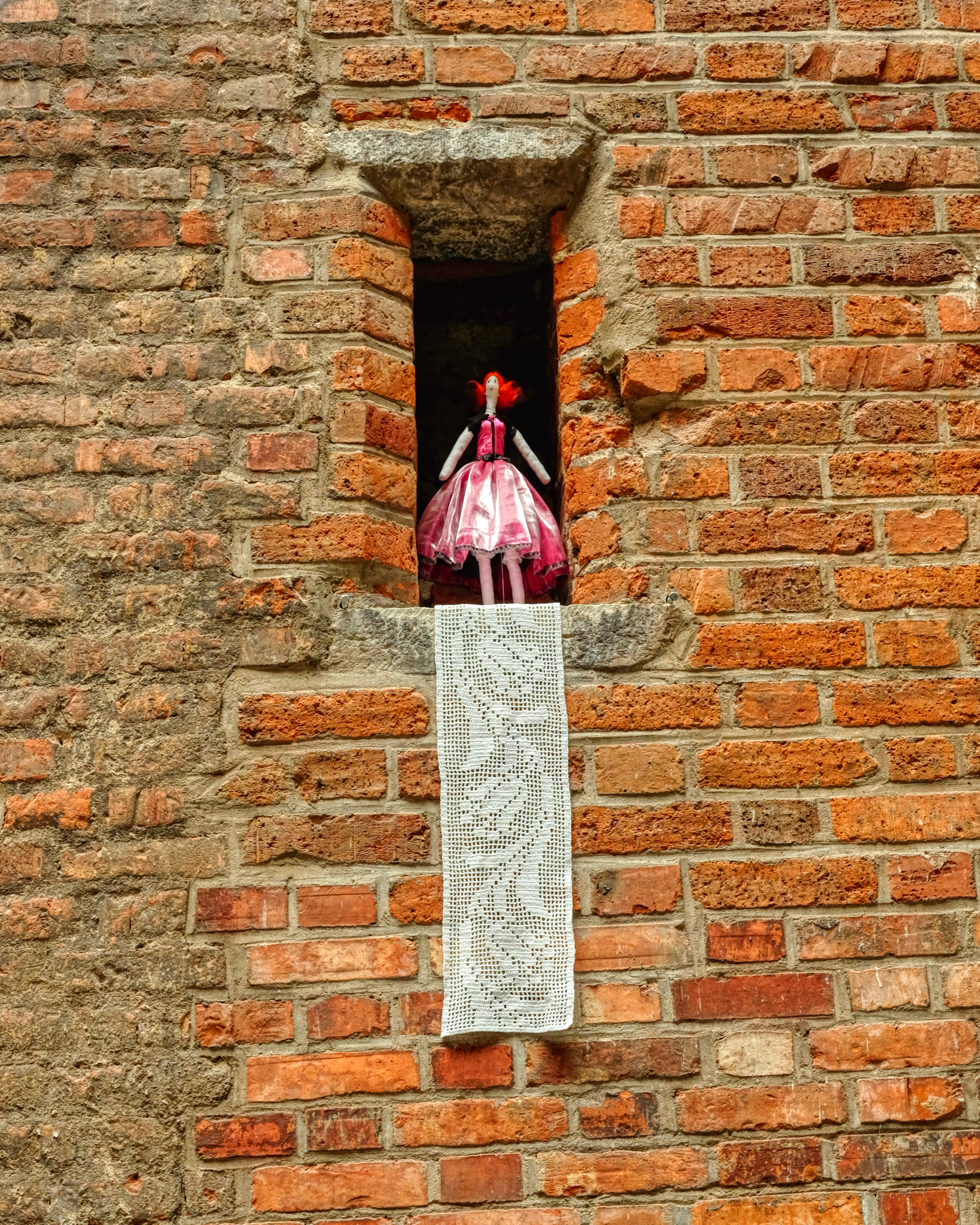 So sweet.
So sweet.
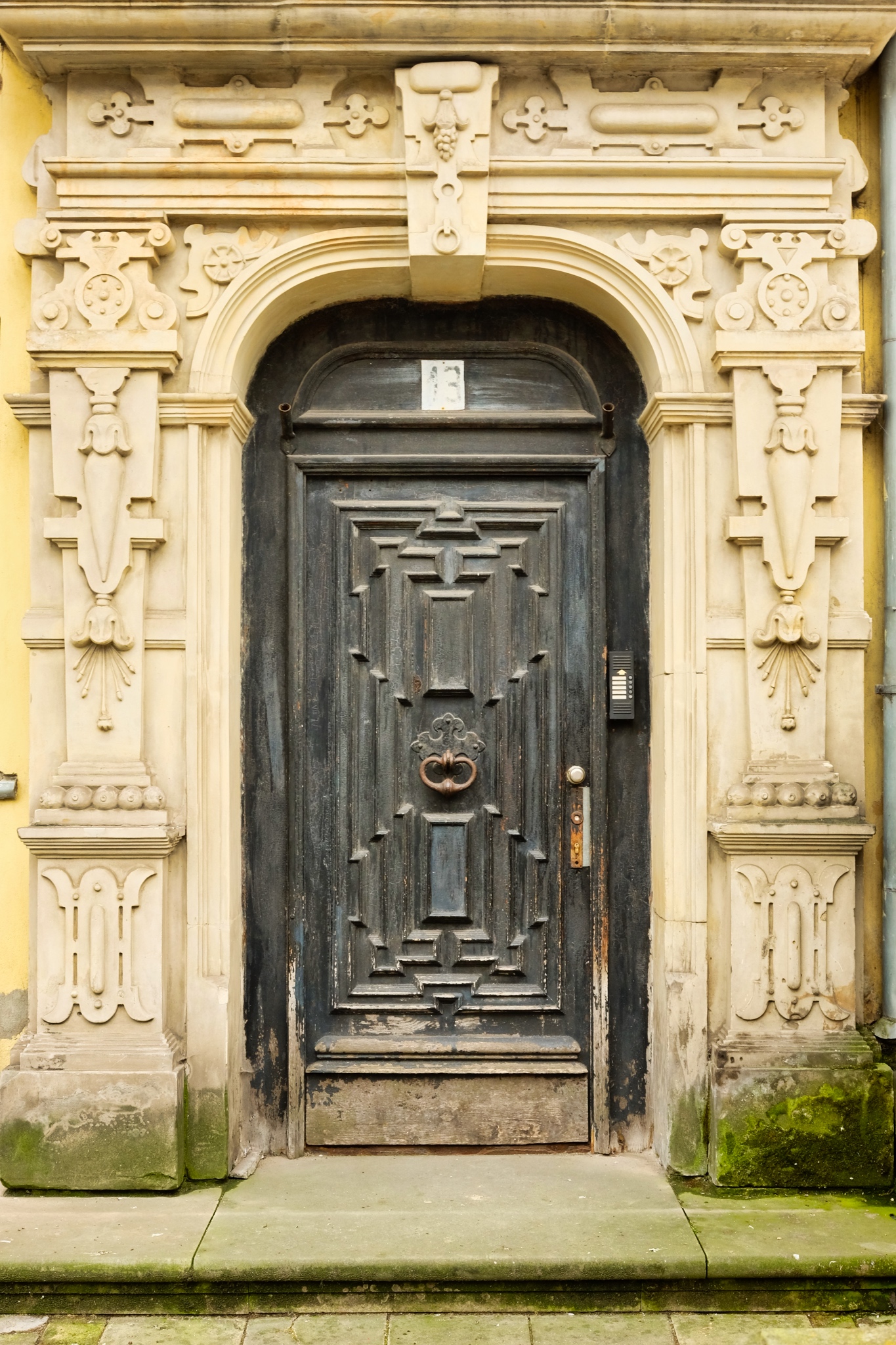 A weathered door . . . and . . .
A weathered door . . . and . . .
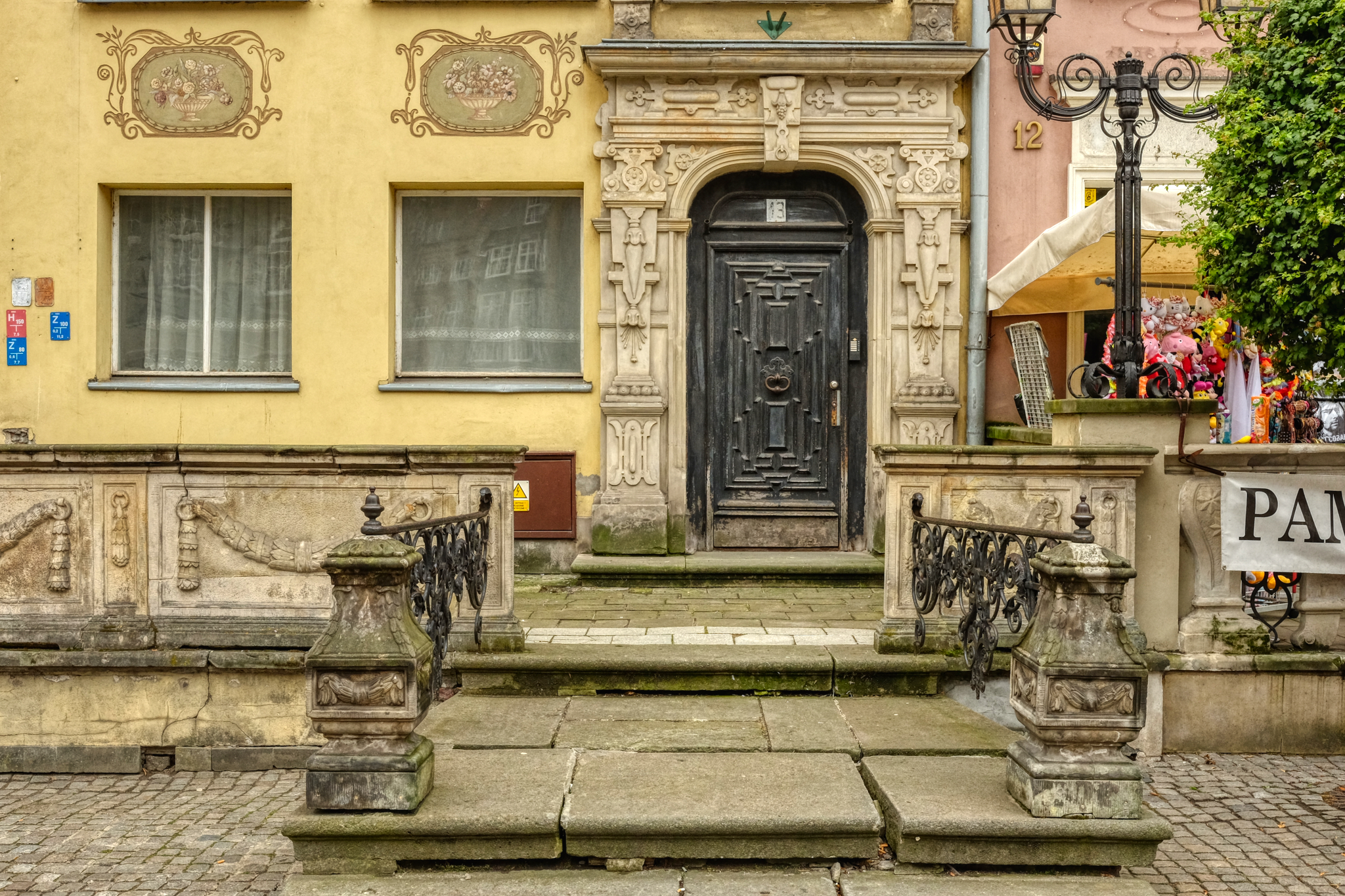 . . . and its context.
. . . and its context.
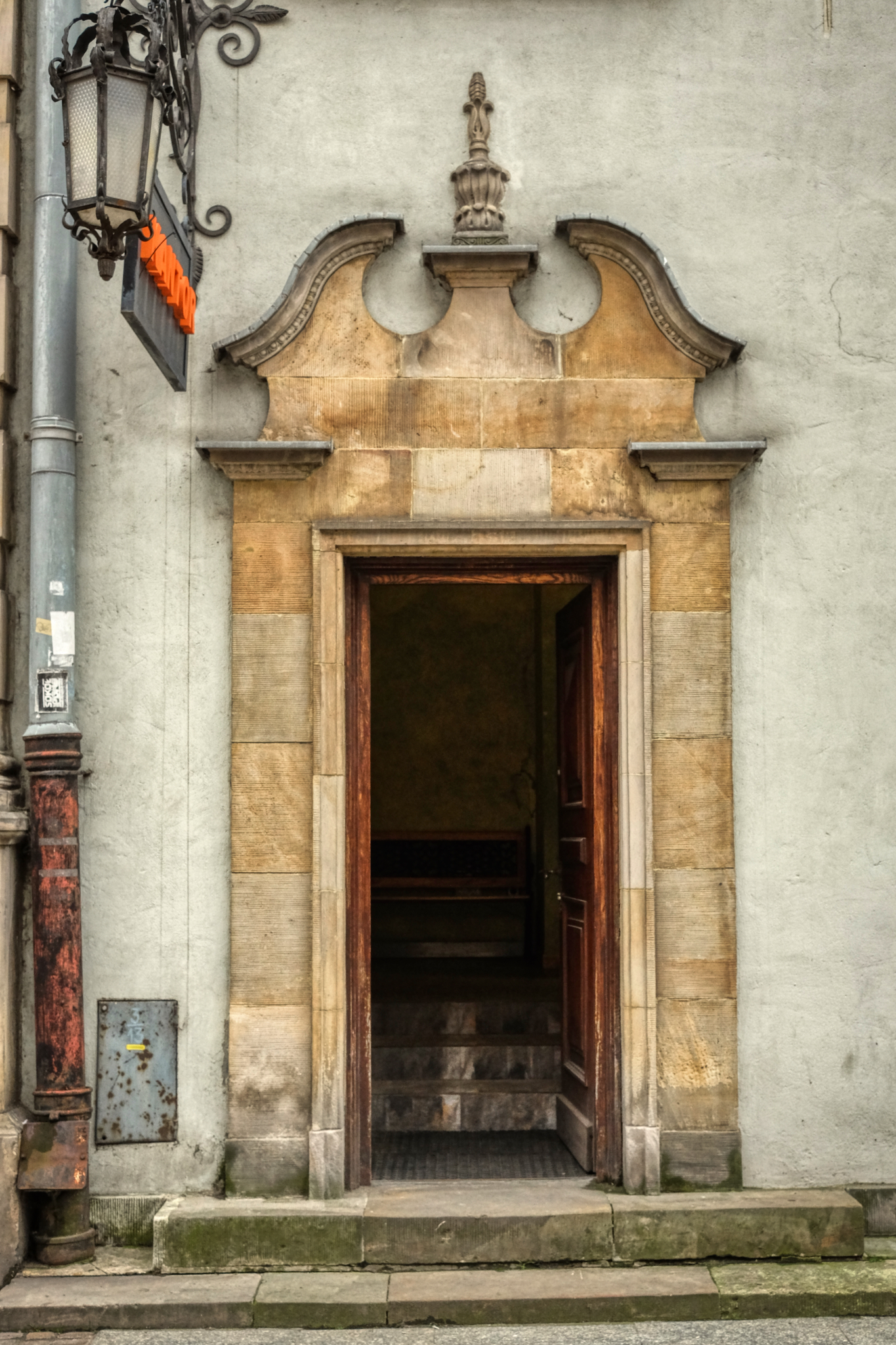 A fine, formal marble doorway.
A fine, formal marble doorway.
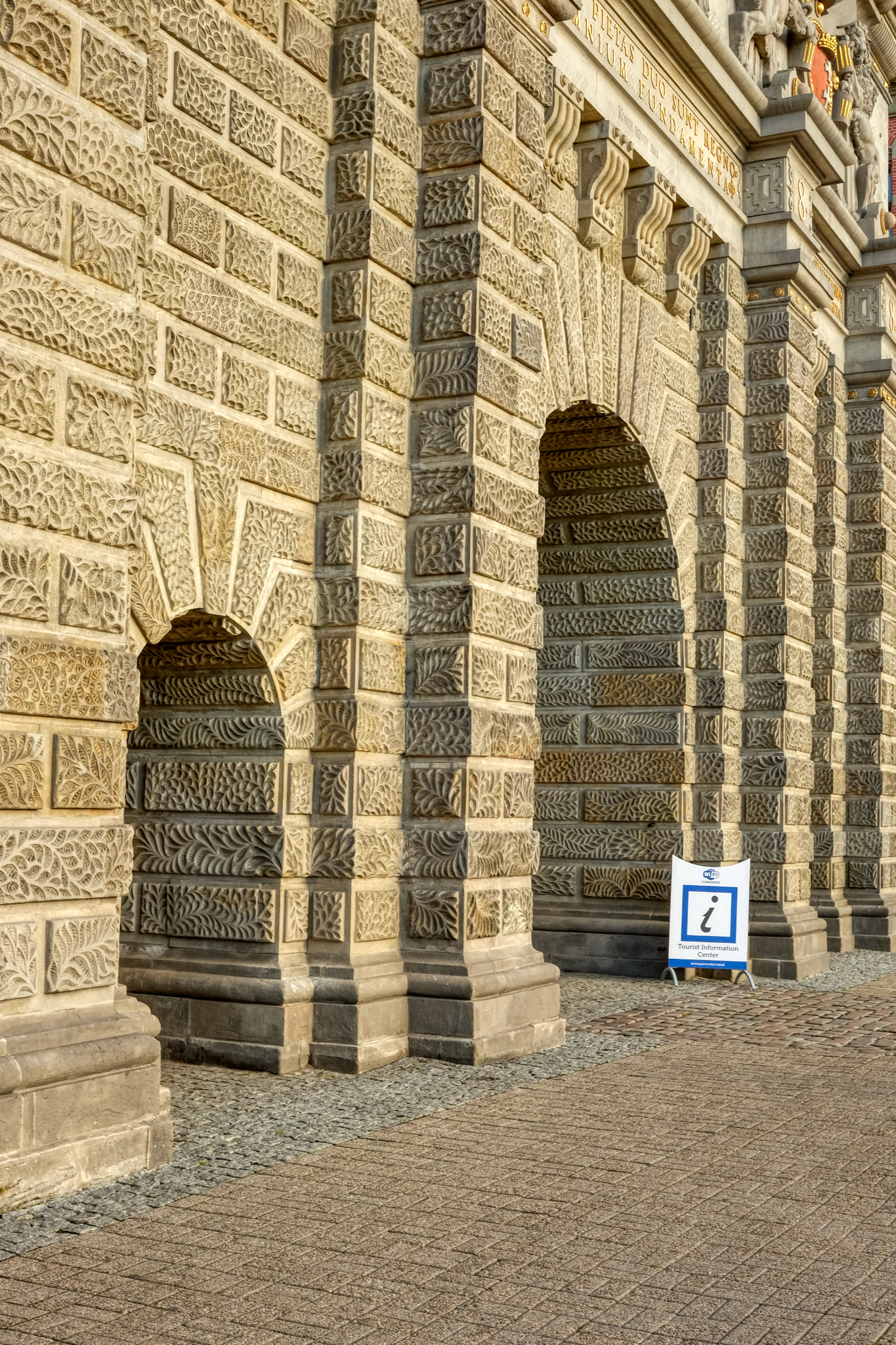 High relief stonework. Nice.
High relief stonework. Nice.
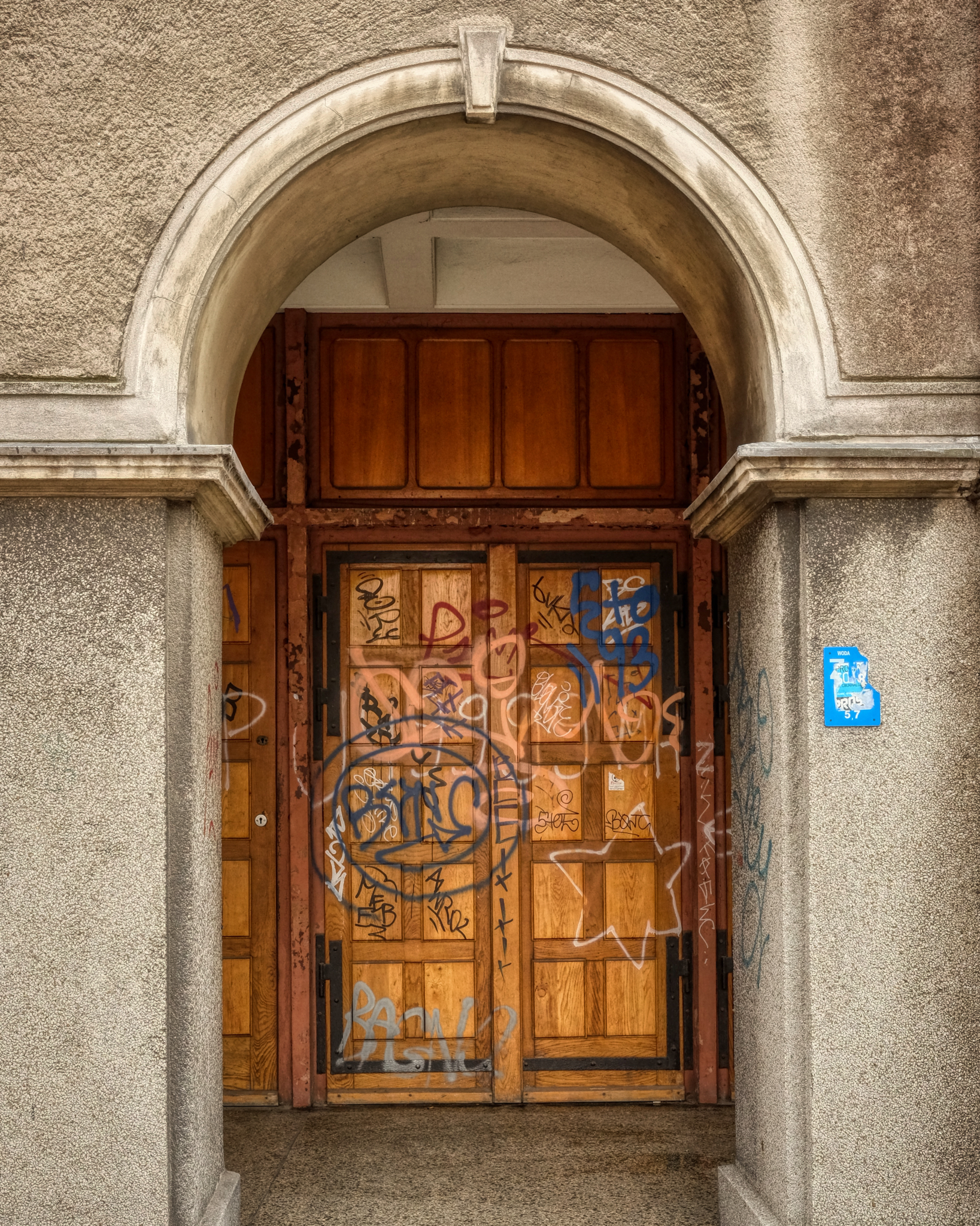 Not all of Gdańsk's doors were as appreciated as I would like to have seen.
Not all of Gdańsk's doors were as appreciated as I would like to have seen.
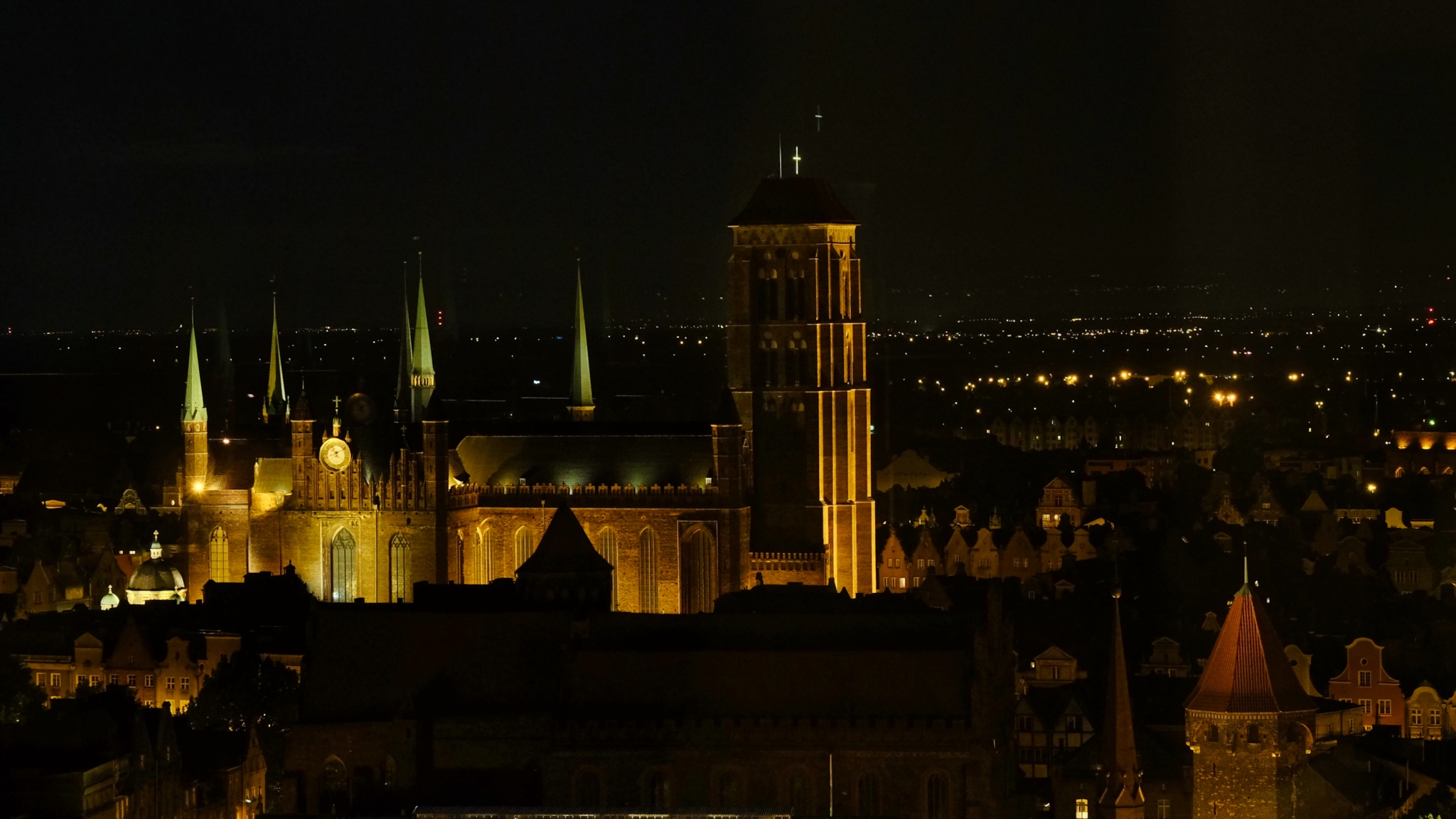 The views out over Gdańsk at night from our high rise hotel room were wonderful.
The views out over Gdańsk at night from our high rise hotel room were wonderful.
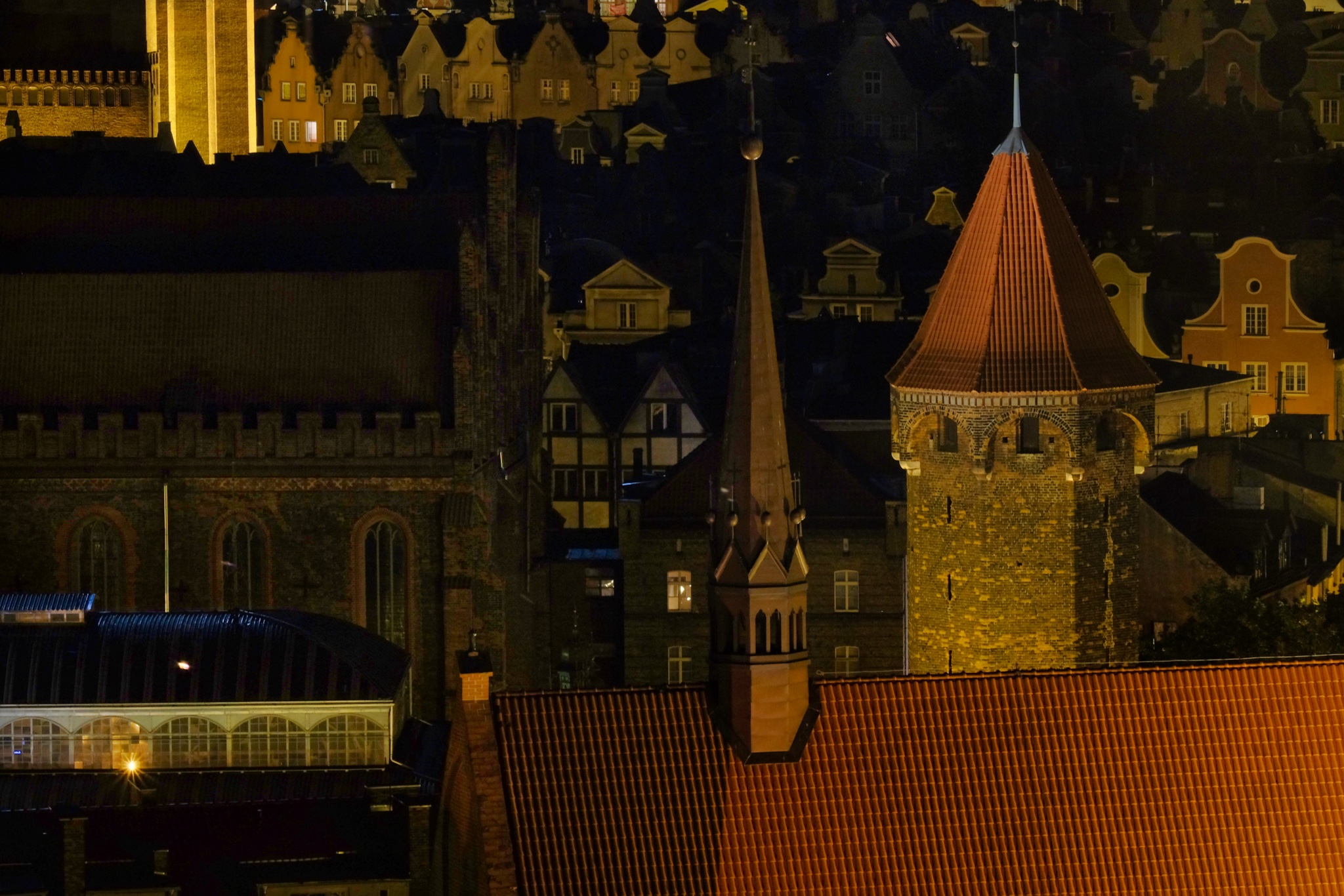 Making this photo blog about this wonderful city has made me very homesick for living in Europe . . .
Making this photo blog about this wonderful city has made me very homesick for living in Europe . . .
 I don't know if I will ever return to Gdańsk, but I know I will always have fond memories of it.
I don't know if I will ever return to Gdańsk, but I know I will always have fond memories of it.
Luang Prabang, Laos - A Wonderful Little Town
 Sunday, October 27, 2019 at 3:19PM
Sunday, October 27, 2019 at 3:19PM 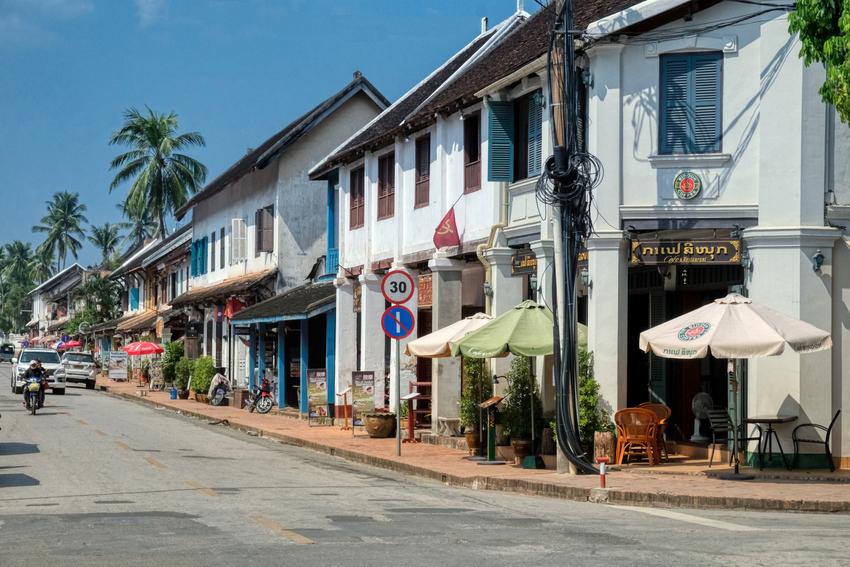 The old French colonial town of Luang Prabang (pop. est. 56,000) in west central Laos is a noted UNESCO World Heritage Centre, and with good reason.
The old French colonial town of Luang Prabang (pop. est. 56,000) in west central Laos is a noted UNESCO World Heritage Centre, and with good reason.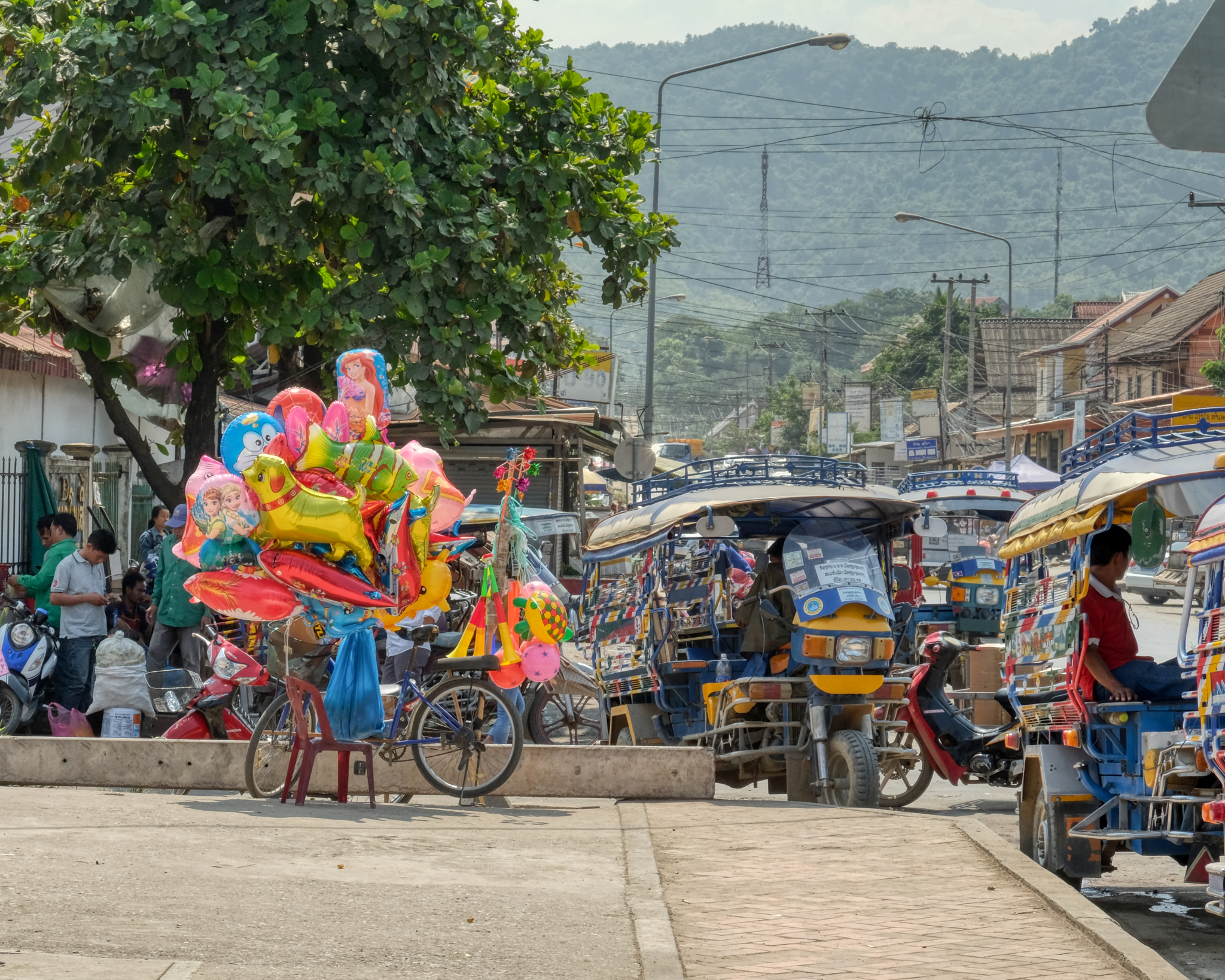 Although I was in Luang Prabang a month before the start of the busy tourist season, it was still a very active little town, especially in and around the city centre market.
Although I was in Luang Prabang a month before the start of the busy tourist season, it was still a very active little town, especially in and around the city centre market.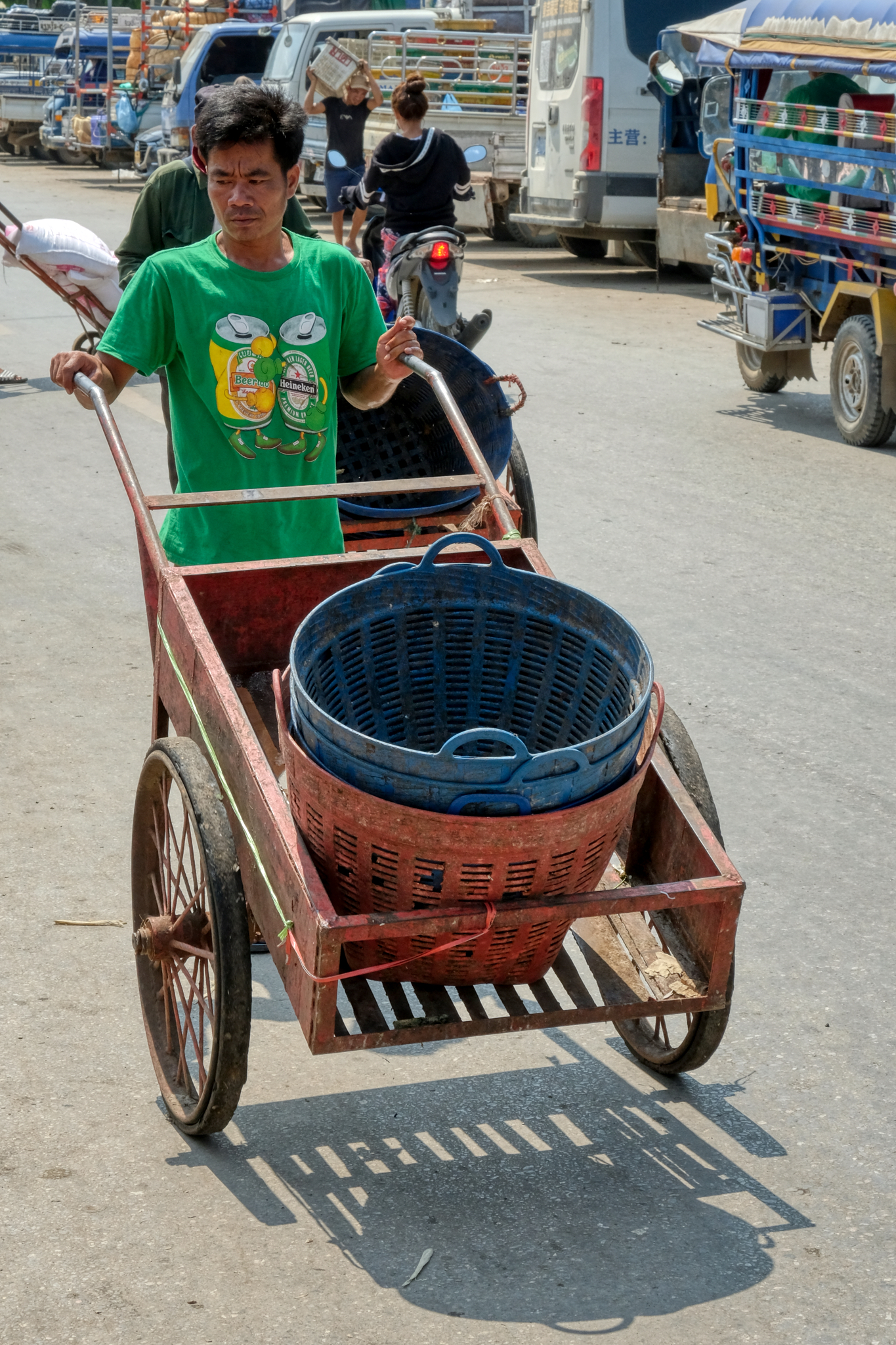 I have a photographic infatuation with the draymen . . . those who push carts by hand. They are still widely used in and around crowded marketplaces in Asia (and Africa) as the best way to get goods in and out of the crowded lanes and alleyways.
I have a photographic infatuation with the draymen . . . those who push carts by hand. They are still widely used in and around crowded marketplaces in Asia (and Africa) as the best way to get goods in and out of the crowded lanes and alleyways.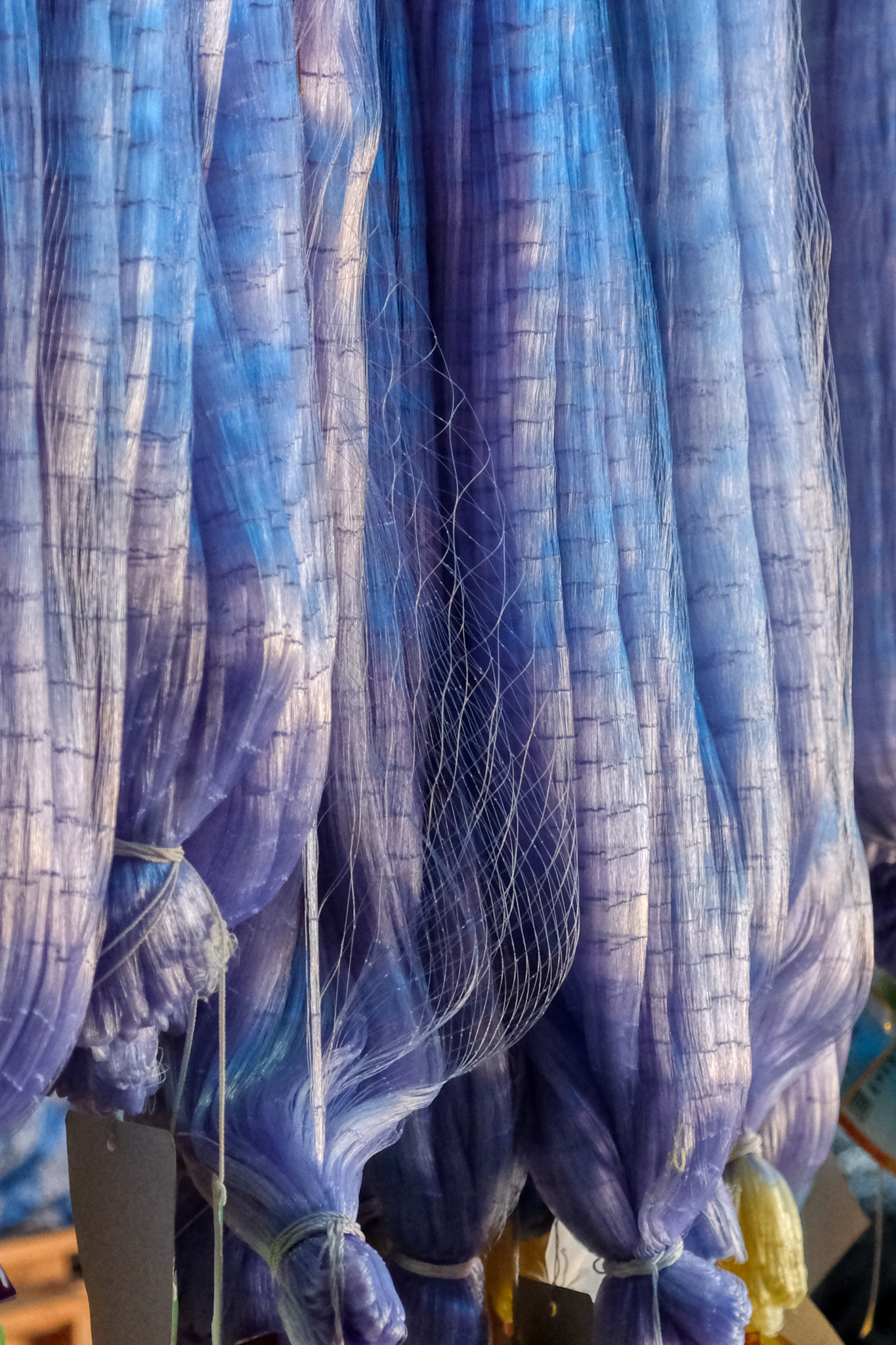 If you didn't already know that this town was on a large river, the goods in the town market would tell you.
If you didn't already know that this town was on a large river, the goods in the town market would tell you.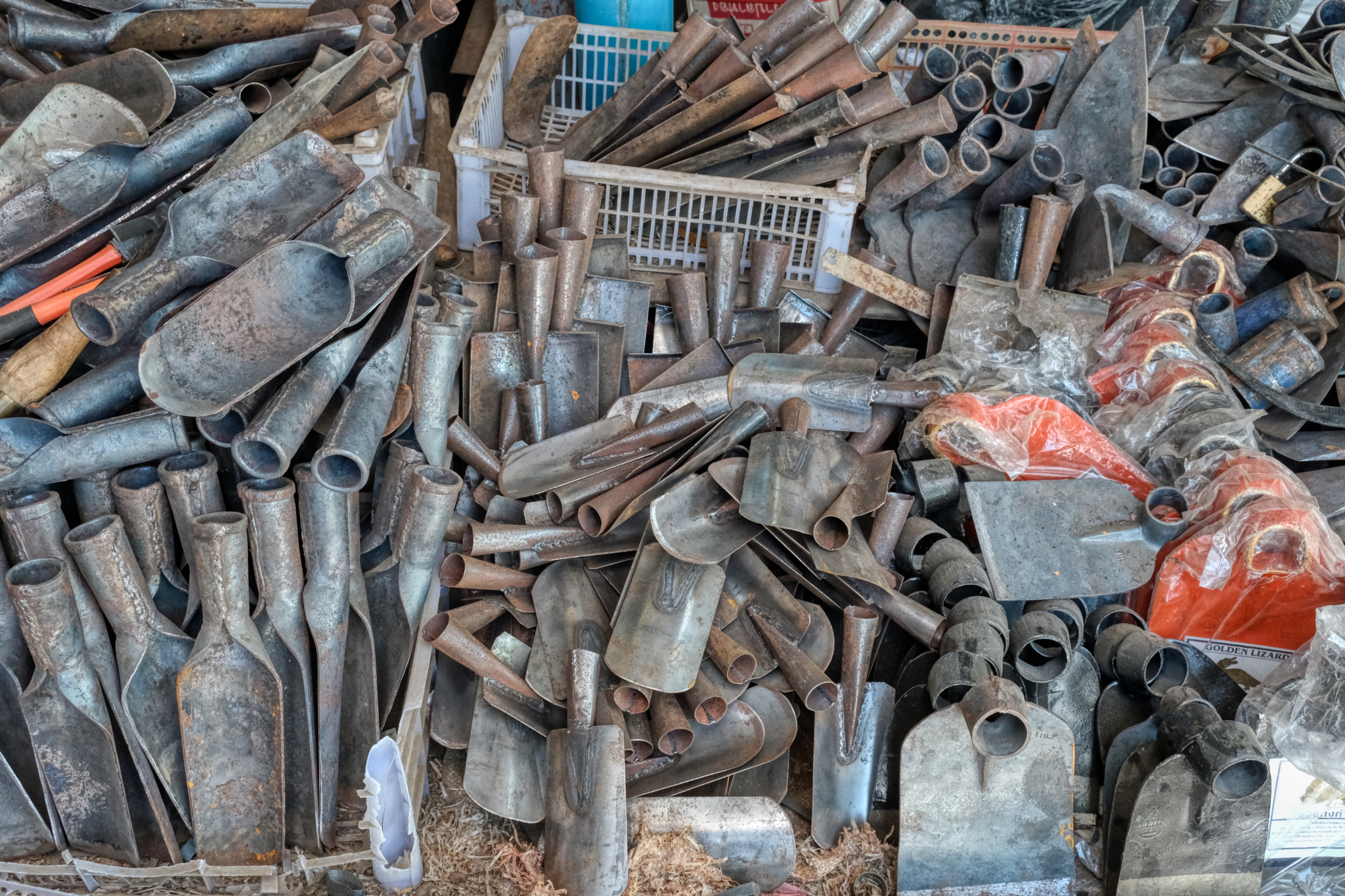 You would also learn from the market that there was still a lot of manual labour being done nearby.
You would also learn from the market that there was still a lot of manual labour being done nearby.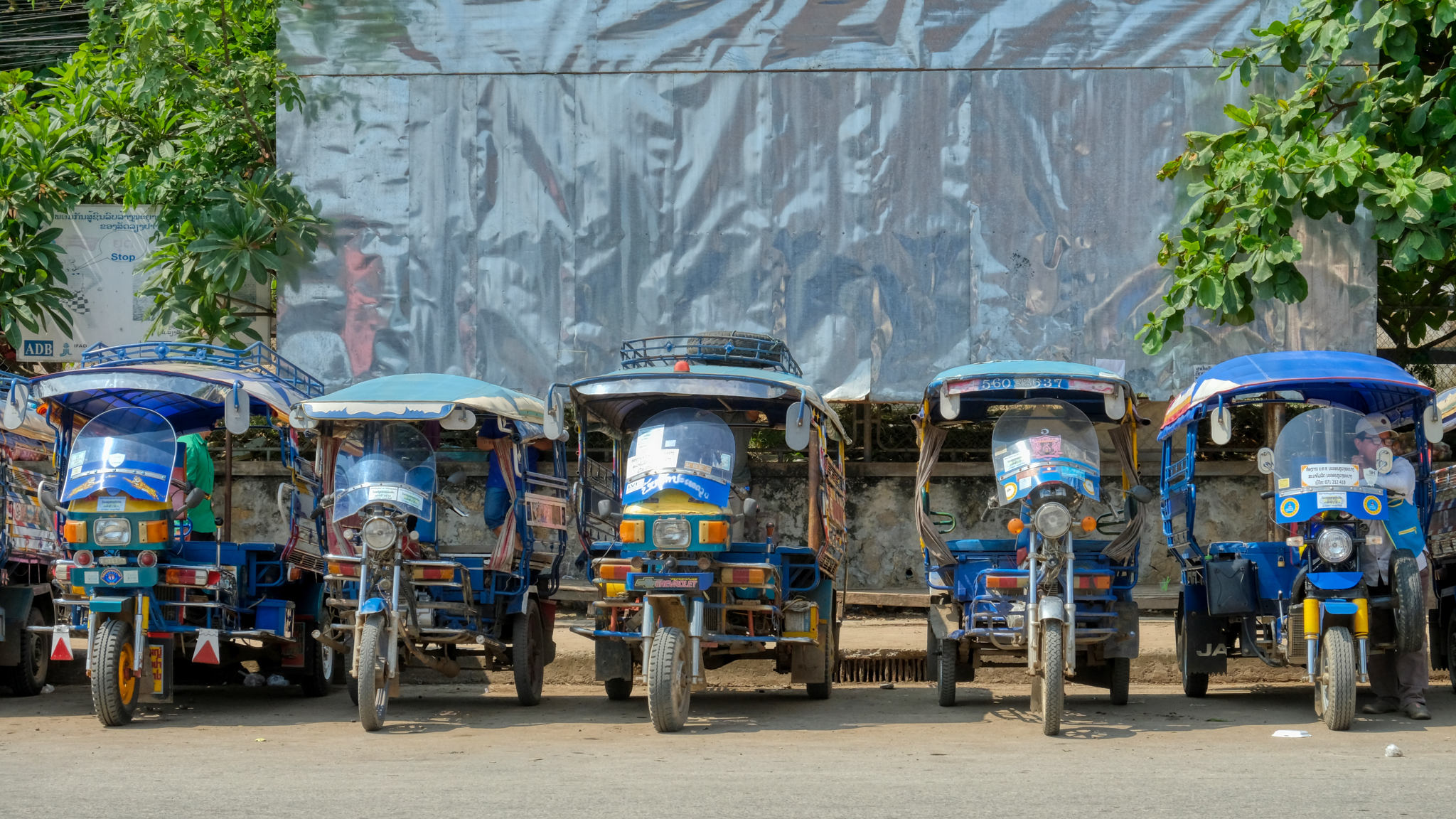 The ubiquitous Asian 'tuk-tuk' takes on a slightly different flavor in each country in the region . . . these are the Laotian version.
The ubiquitous Asian 'tuk-tuk' takes on a slightly different flavor in each country in the region . . . these are the Laotian version.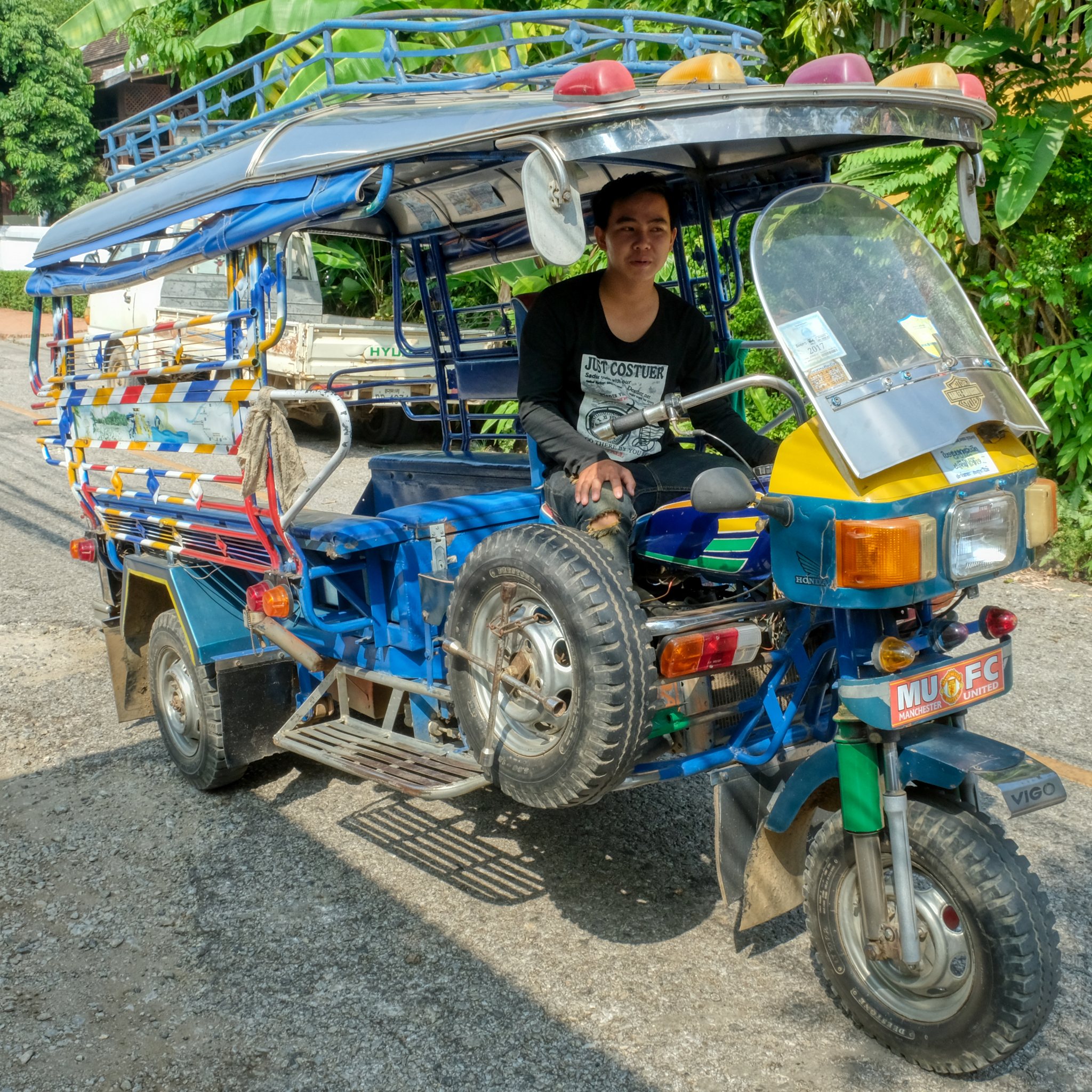 Since we were going to be in town for four days, we decided to employ our own tuk-tuk for the duration. We were very lucky to hire this 18-year old who spoke very good English . . . and doubled as a tour guide.
Since we were going to be in town for four days, we decided to employ our own tuk-tuk for the duration. We were very lucky to hire this 18-year old who spoke very good English . . . and doubled as a tour guide.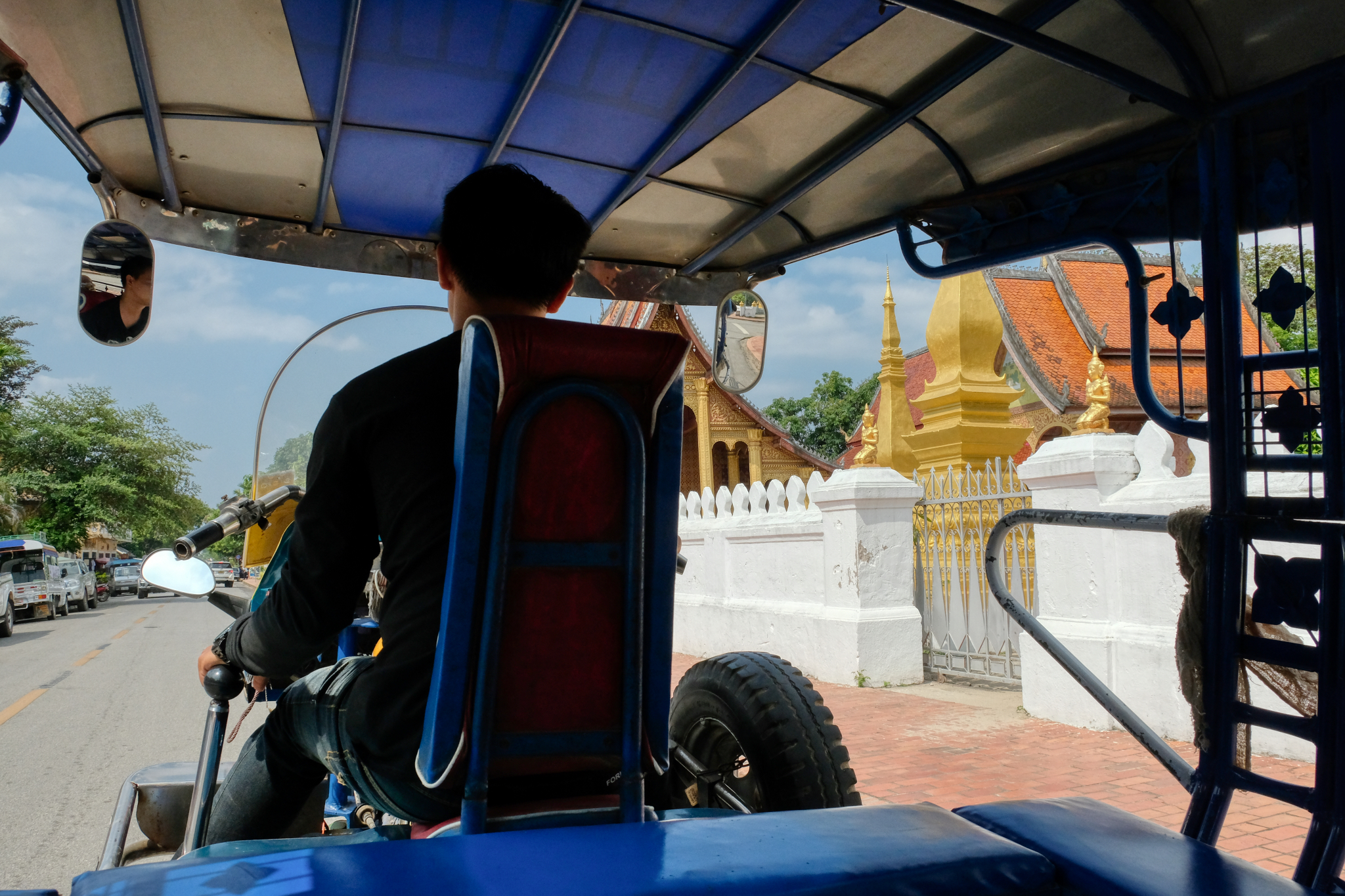 This is a very good way to get to know a small town. If you see something interesting/photogenic, just ask to stop.
This is a very good way to get to know a small town. If you see something interesting/photogenic, just ask to stop.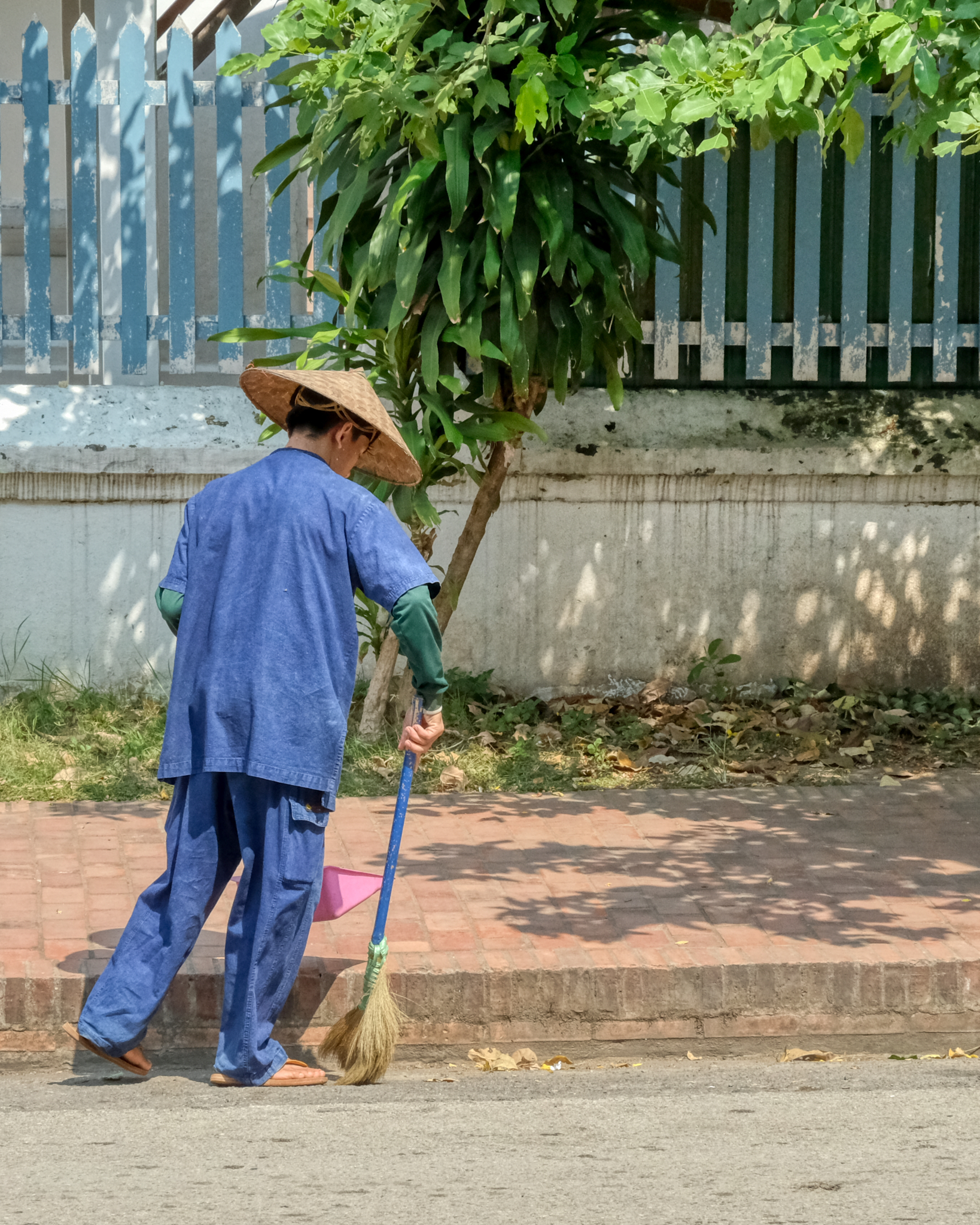 Luang Prabang was a very, very clean city. They take pride in their World Heritage Center designation.
Luang Prabang was a very, very clean city. They take pride in their World Heritage Center designation.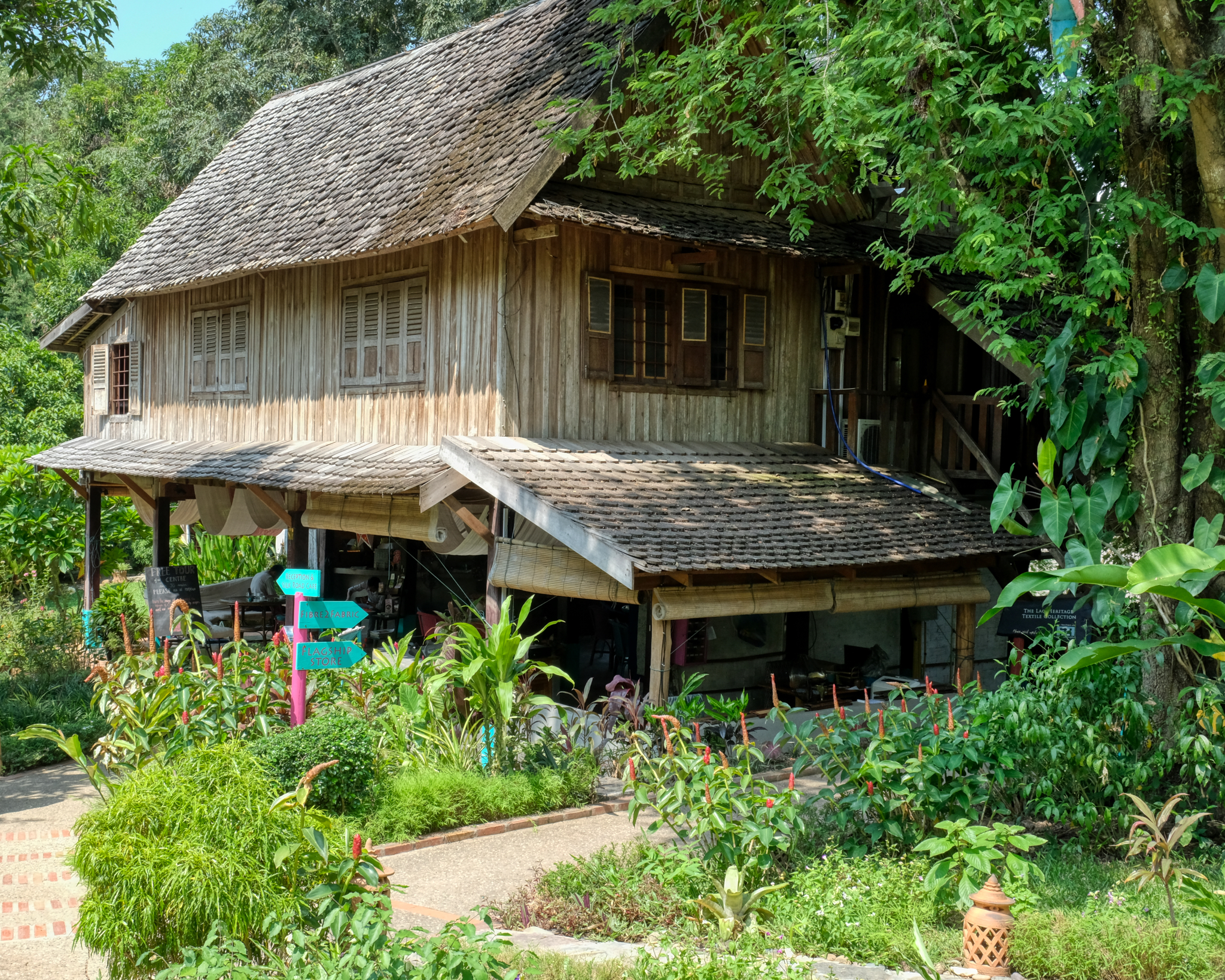 We asked our tuk-tuk jockey what might be interesting to see . . . he recommended the Craft Center. He was correct, it was fascinating.
We asked our tuk-tuk jockey what might be interesting to see . . . he recommended the Craft Center. He was correct, it was fascinating.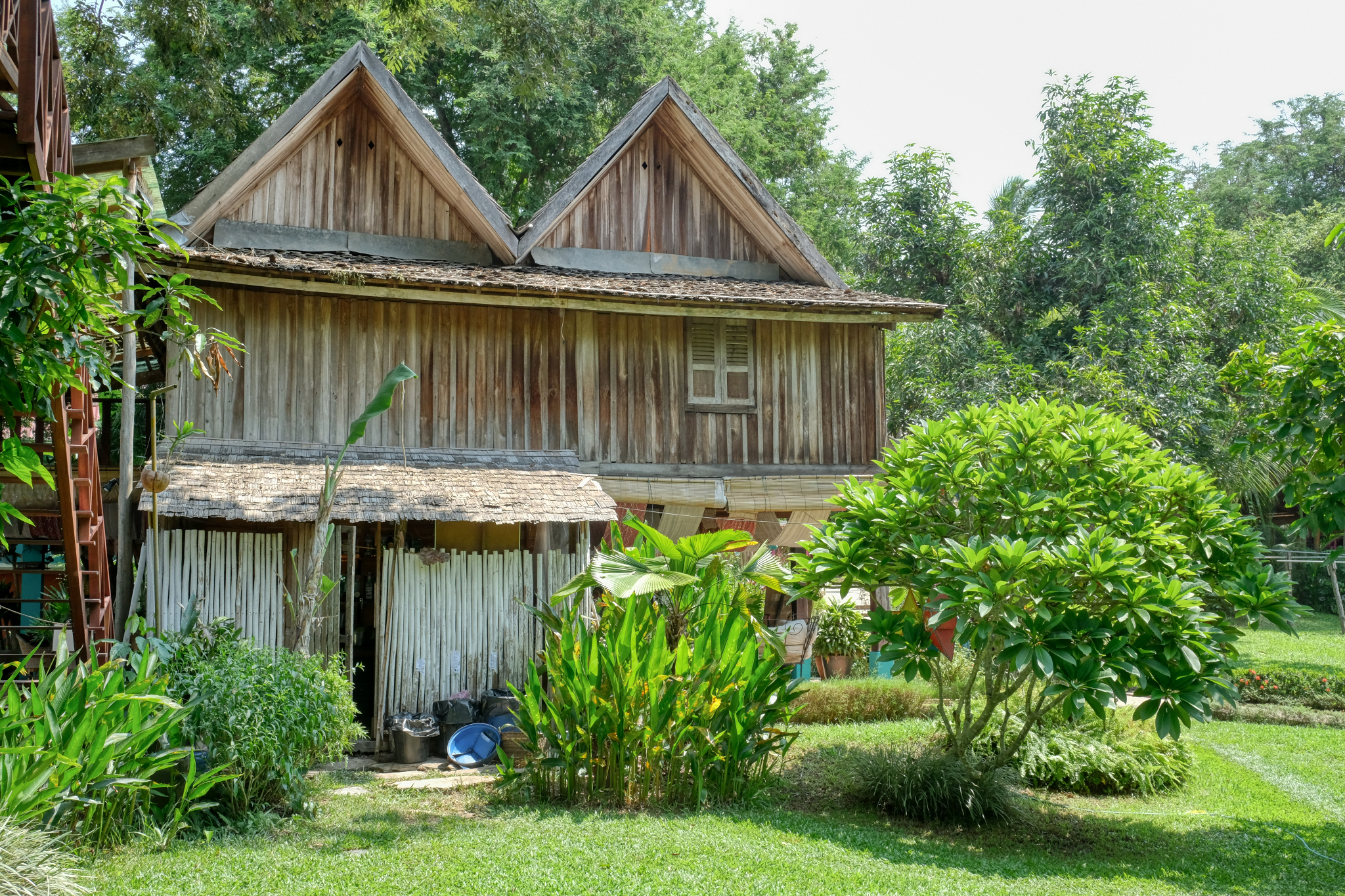 The Craft Center was a collection of old wooden buildings in a tropical garden setting.
The Craft Center was a collection of old wooden buildings in a tropical garden setting.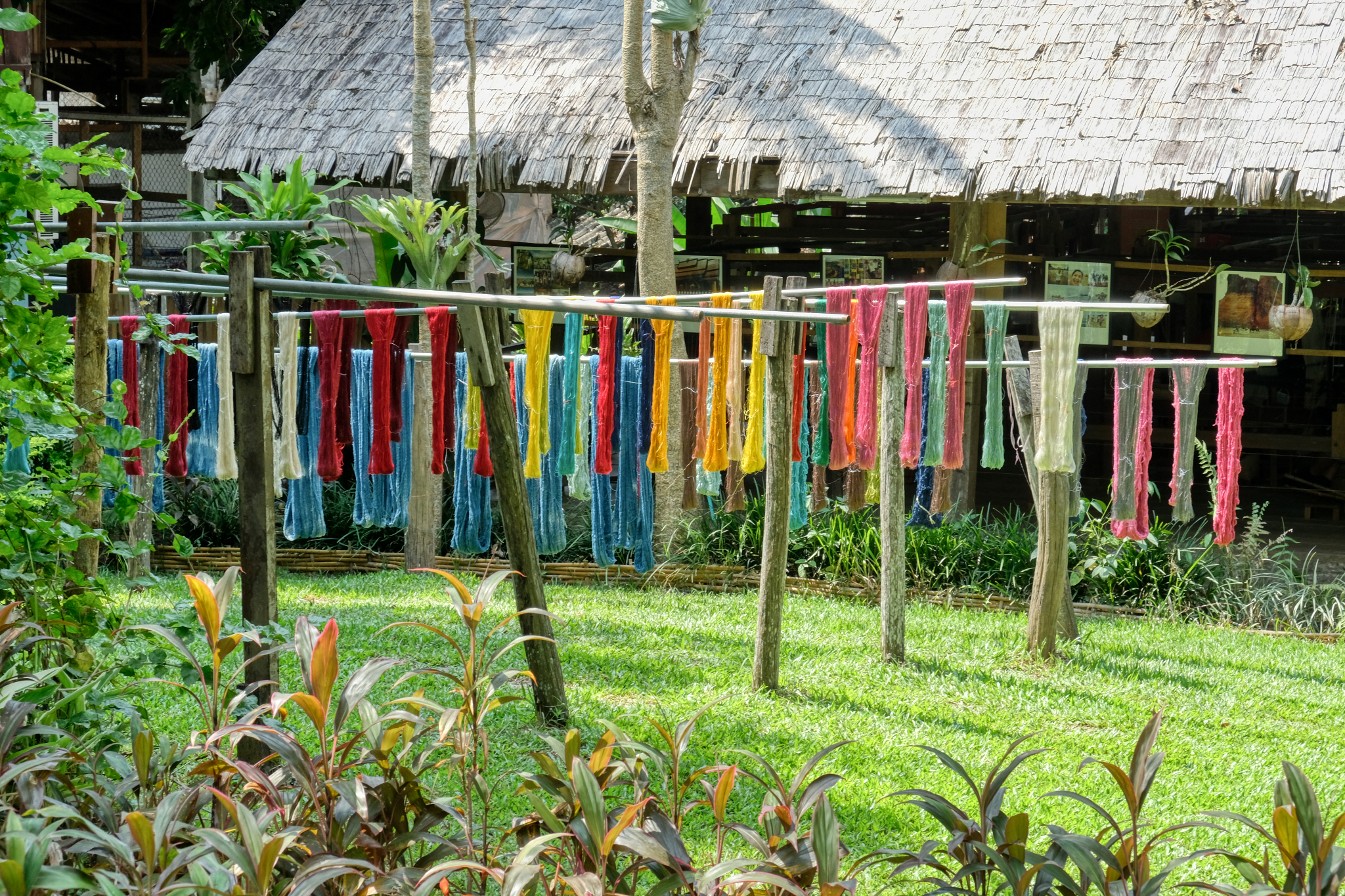 The craft that was being practiced here was silk-making, natural dying, and weaving . . . here recently dyed silk being dried in the sun.
The craft that was being practiced here was silk-making, natural dying, and weaving . . . here recently dyed silk being dried in the sun.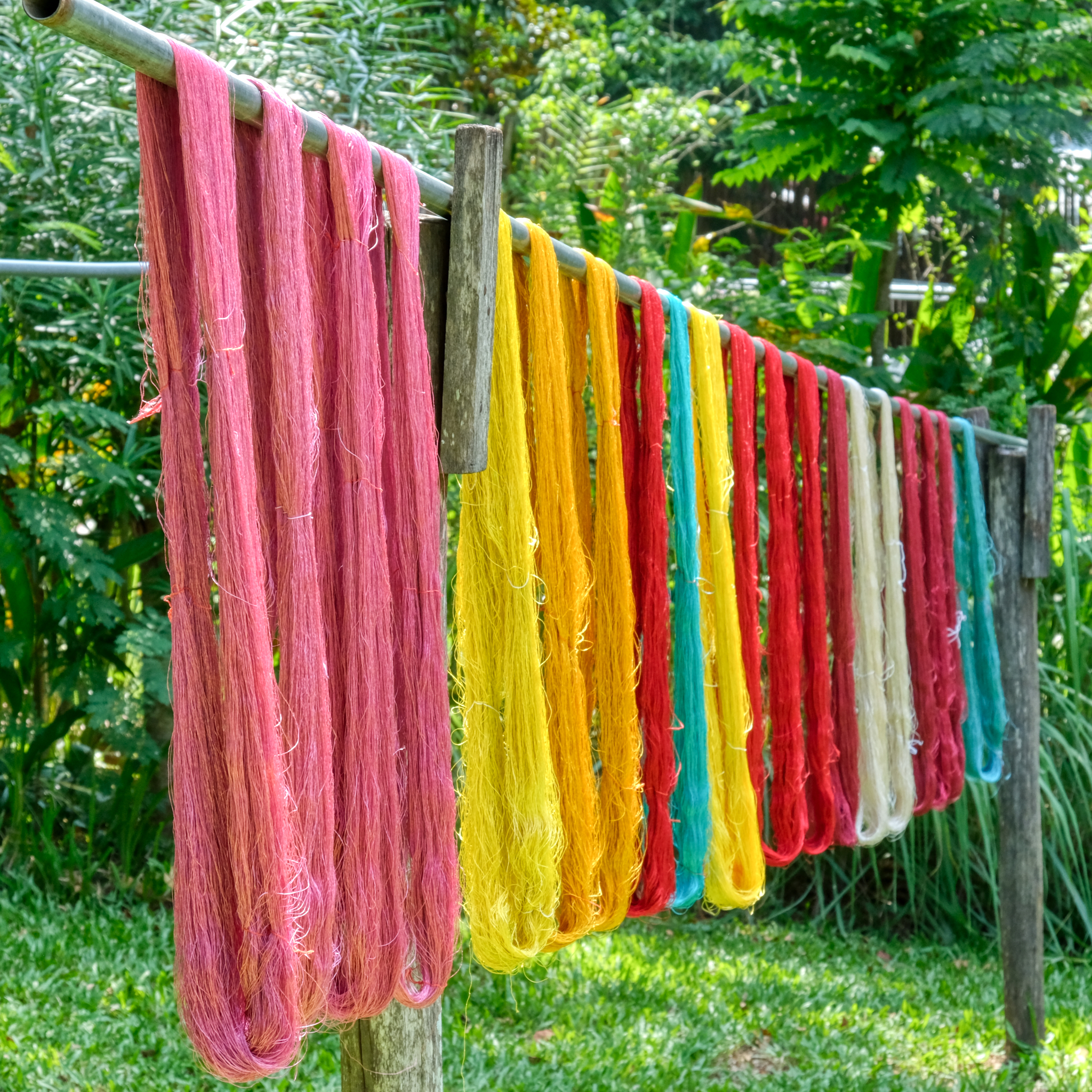 Such marvelous colors . . . and all from natural plant-based dyes.
Such marvelous colors . . . and all from natural plant-based dyes.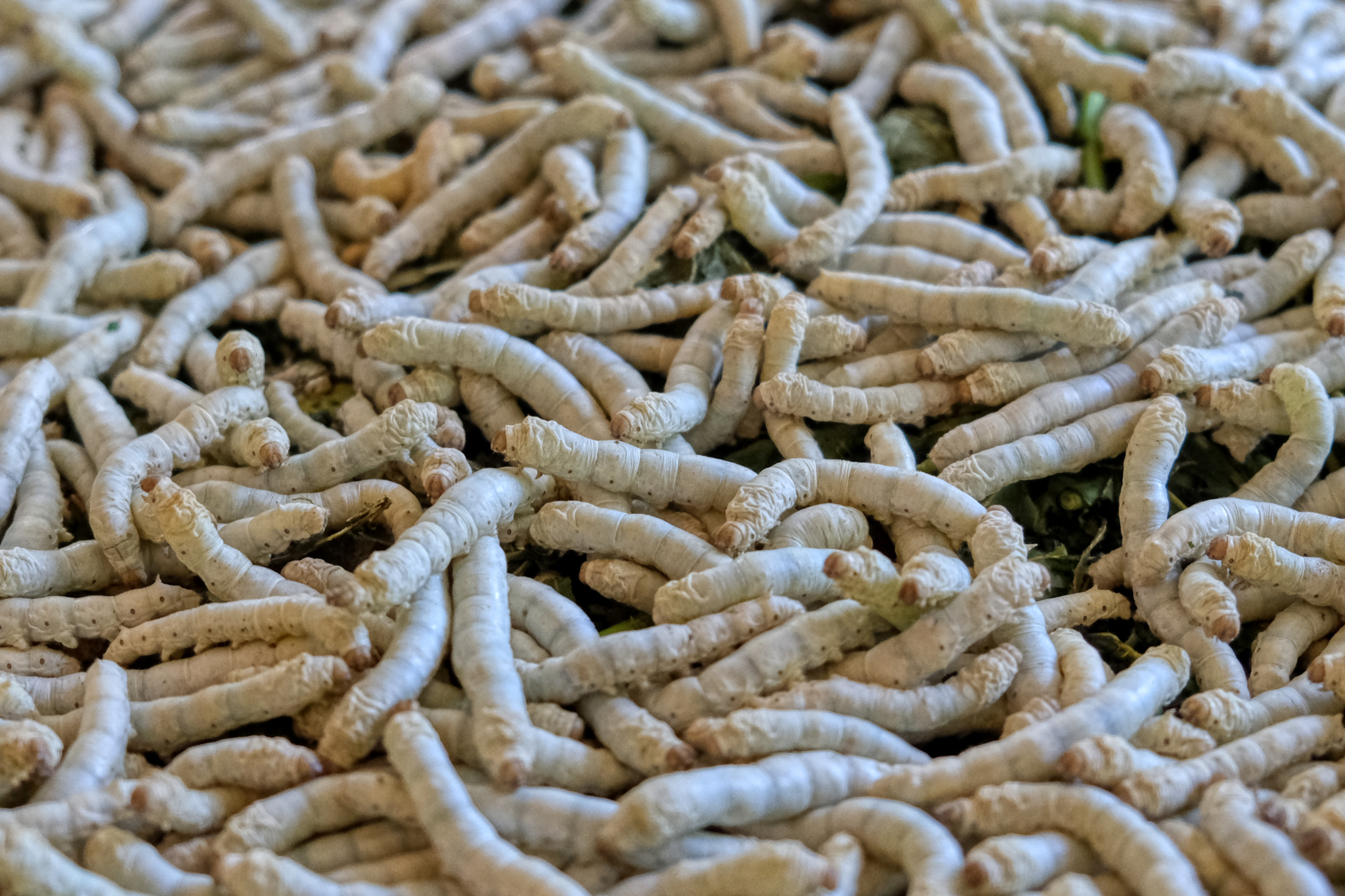 Silk worms. We took a brief tour of the silk-making facility by a very eager young man with very good English wearing a badge that said "Trainee." The tourists are coming!
Silk worms. We took a brief tour of the silk-making facility by a very eager young man with very good English wearing a badge that said "Trainee." The tourists are coming!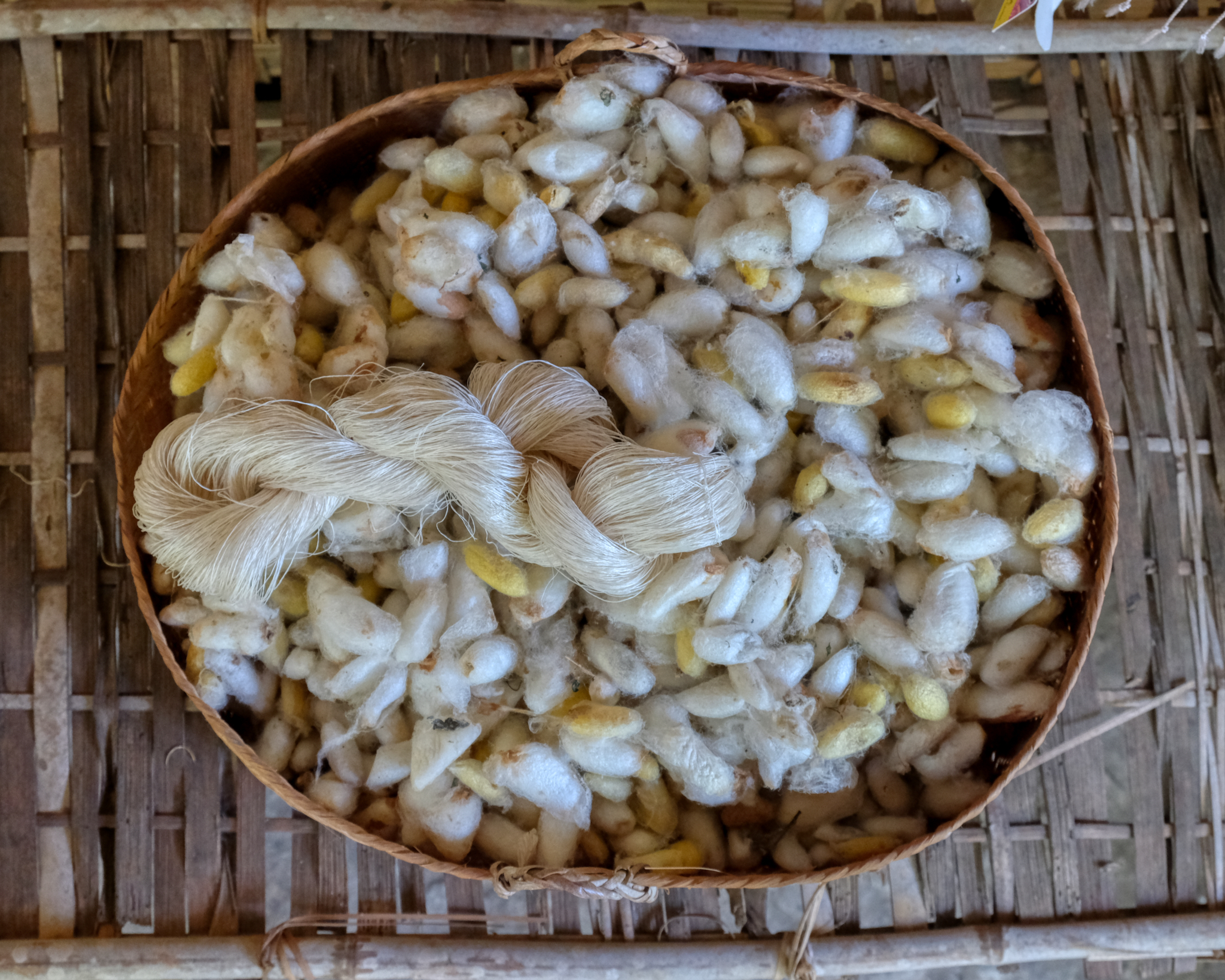 The silk worms spin these silk pods for their larvae. These must be unwrapped. There are many grades of silk, some fine and some rough and coarse.
The silk worms spin these silk pods for their larvae. These must be unwrapped. There are many grades of silk, some fine and some rough and coarse.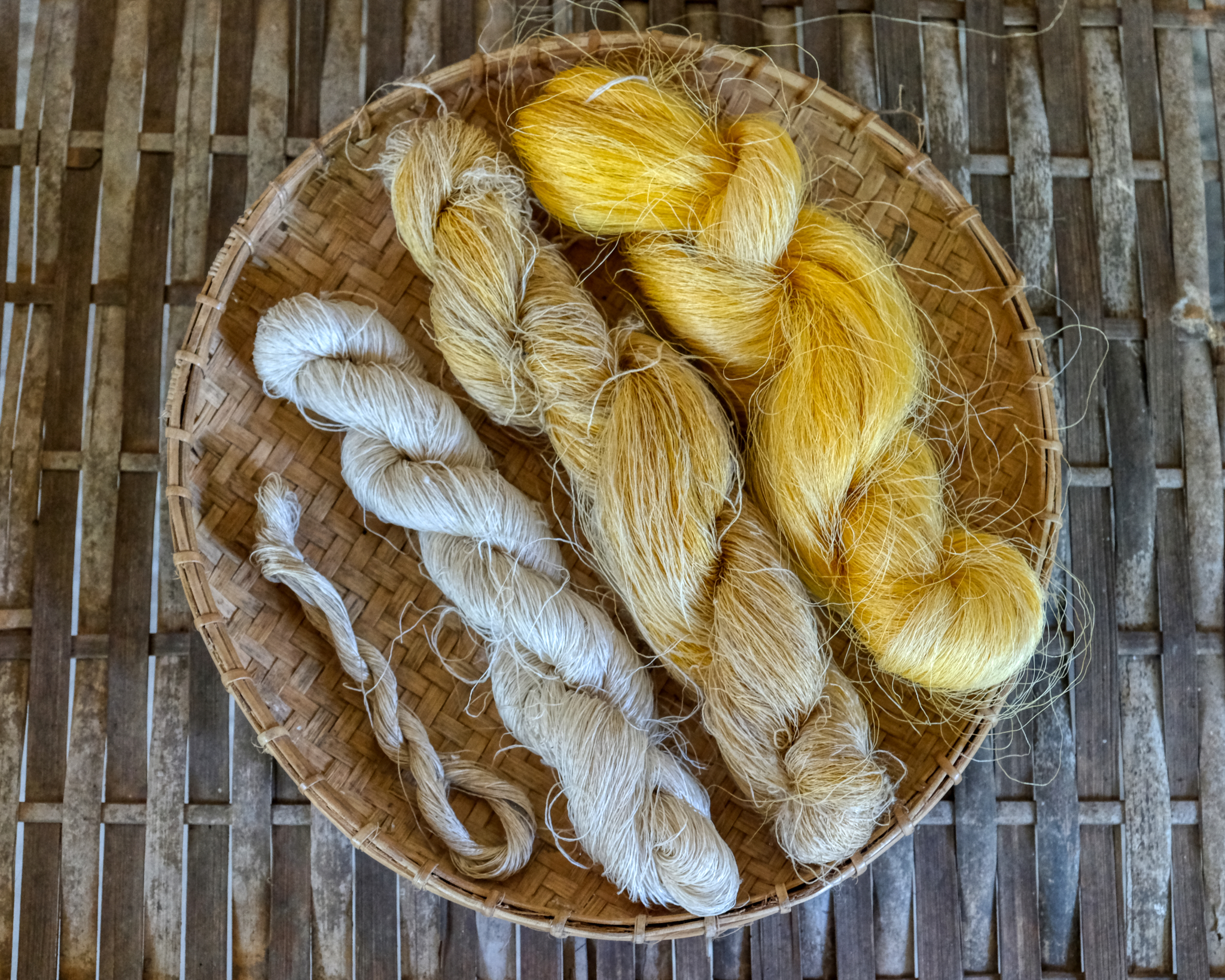 The rough raw silk.
The rough raw silk.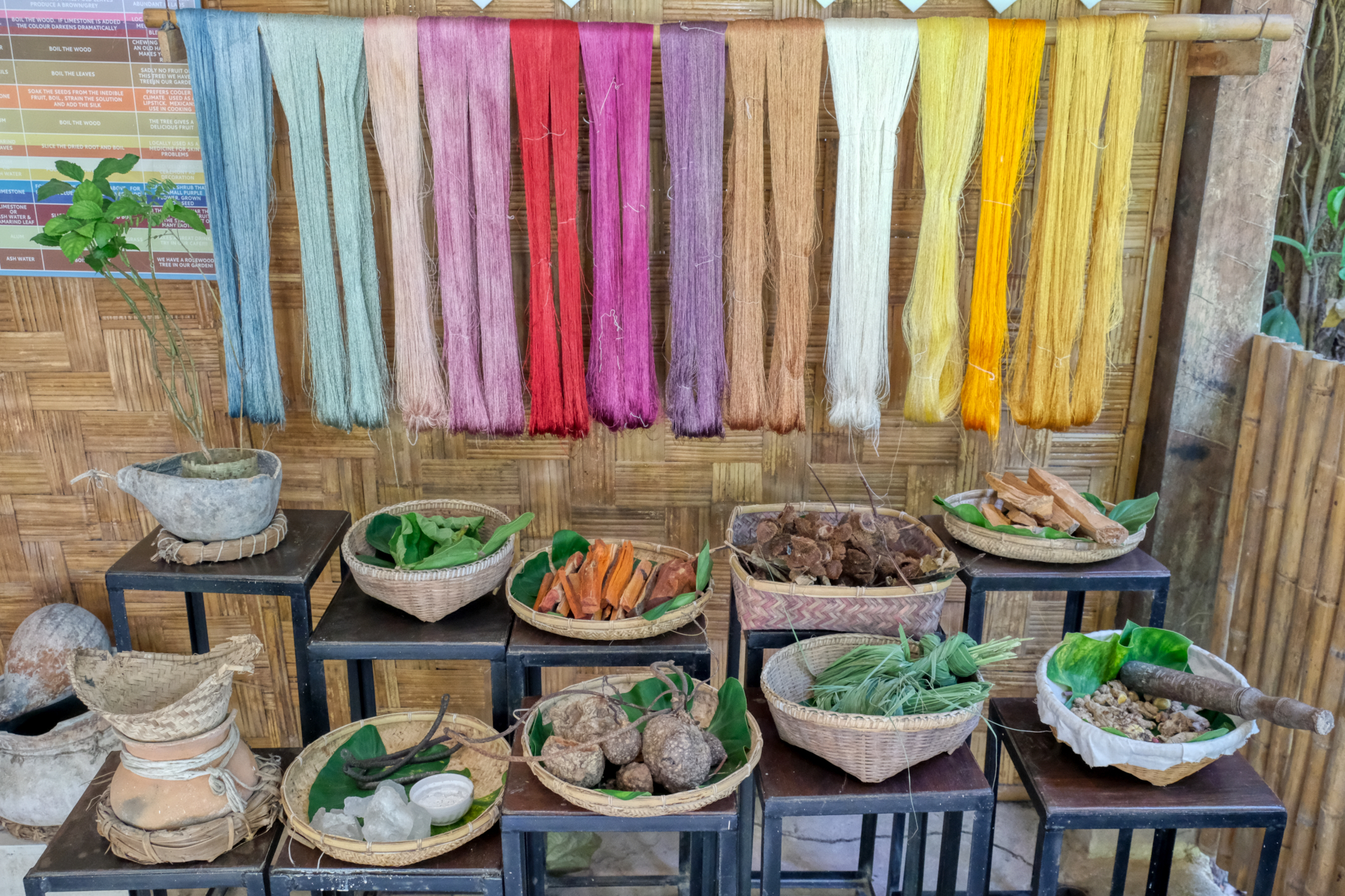 Ancient knowledge: what plant juices produce what colors.
Ancient knowledge: what plant juices produce what colors.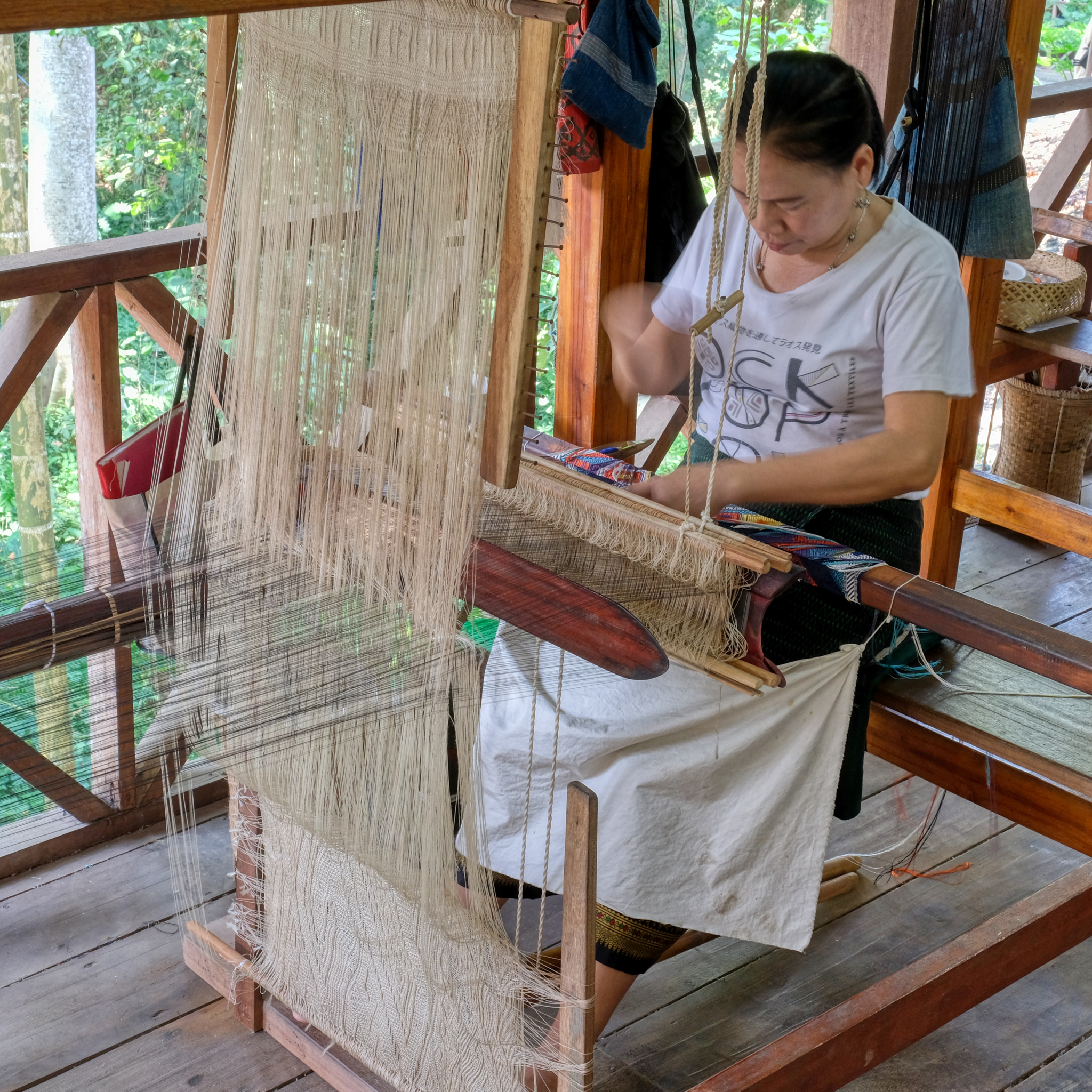 The Craft Center was also a woman's fair trade cooperative for silk weavers.
The Craft Center was also a woman's fair trade cooperative for silk weavers.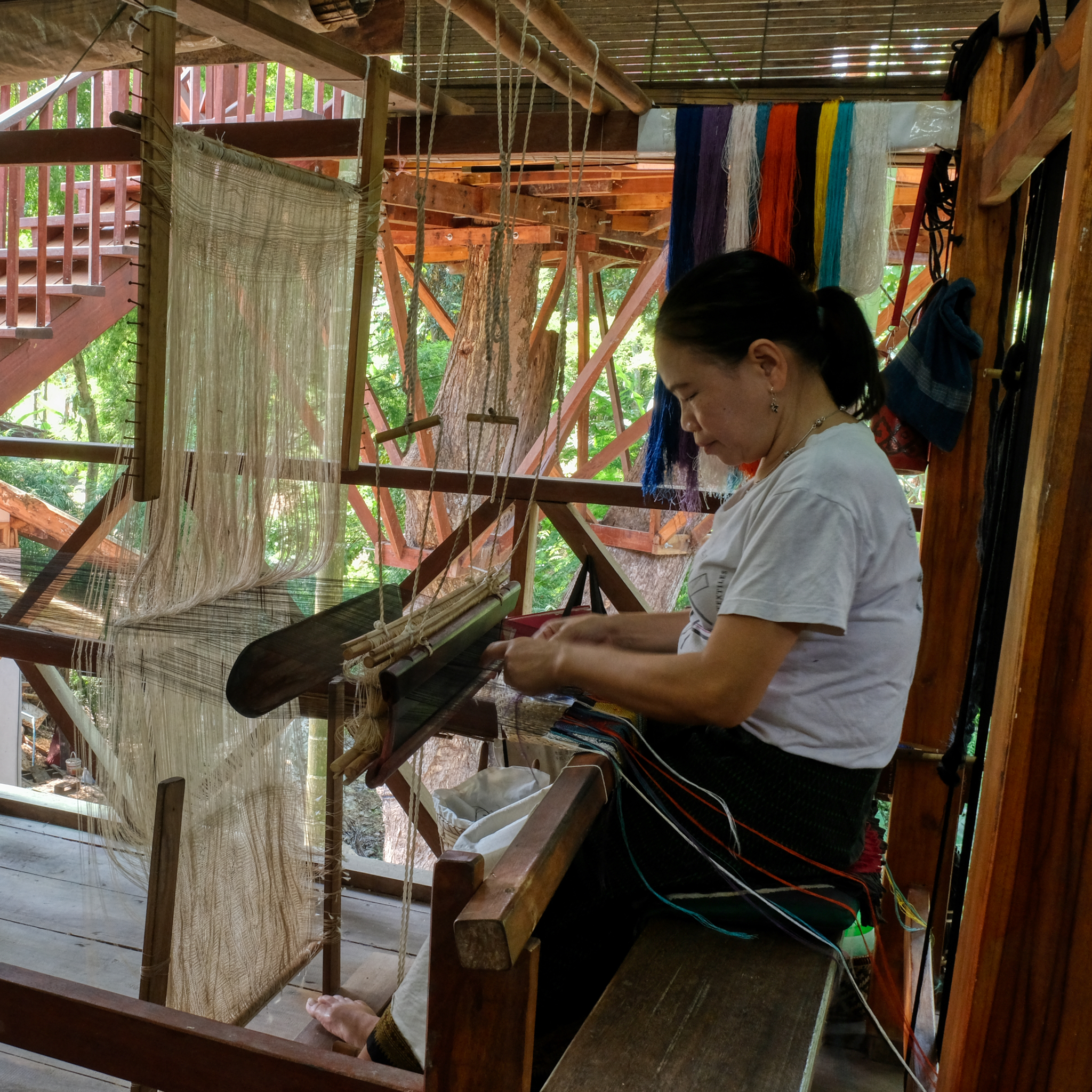 Such fine and beautiful work (available at the gift shop).
Such fine and beautiful work (available at the gift shop).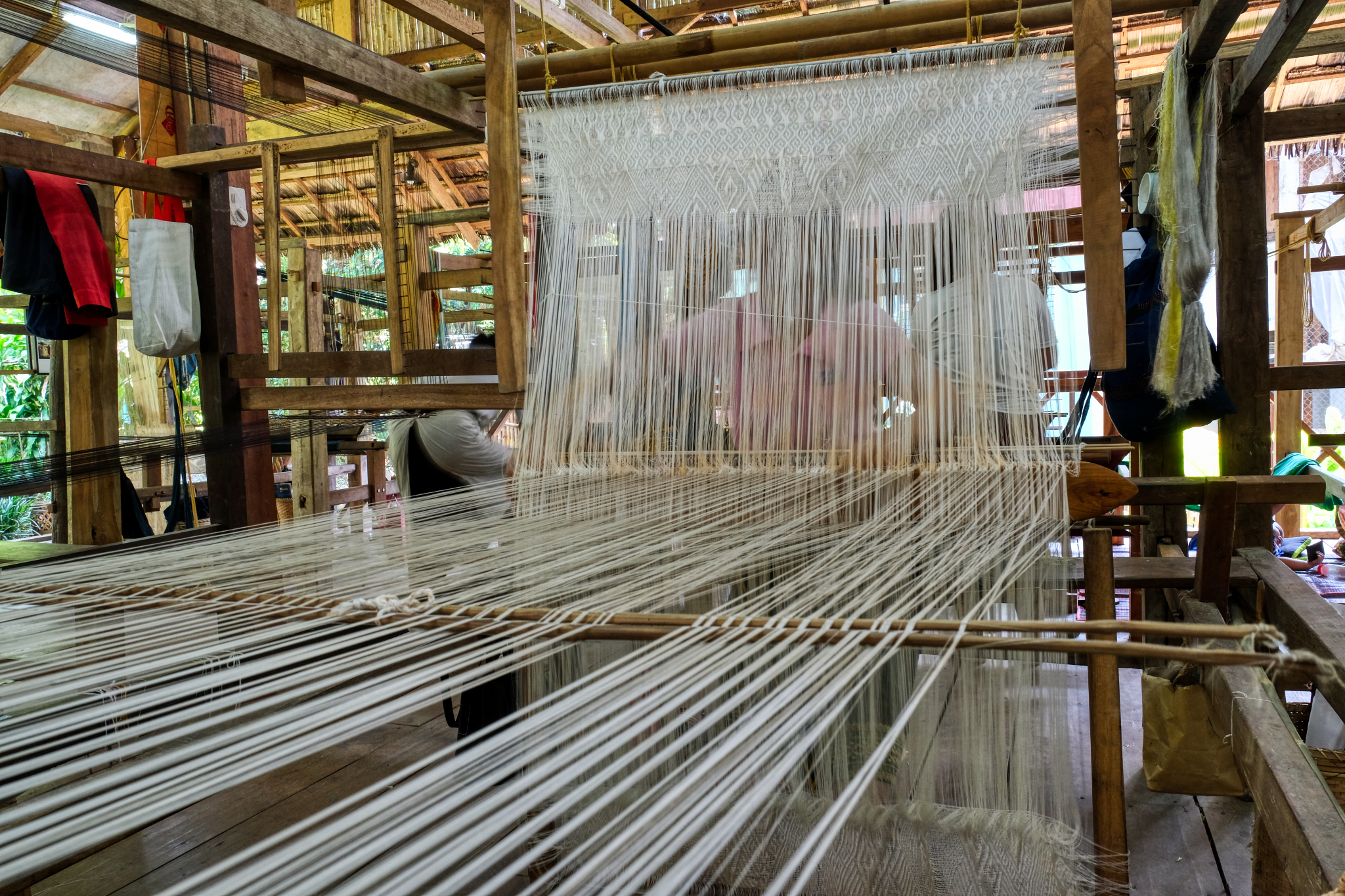 Artistic hand-weaving is hard and intricate work.
Artistic hand-weaving is hard and intricate work.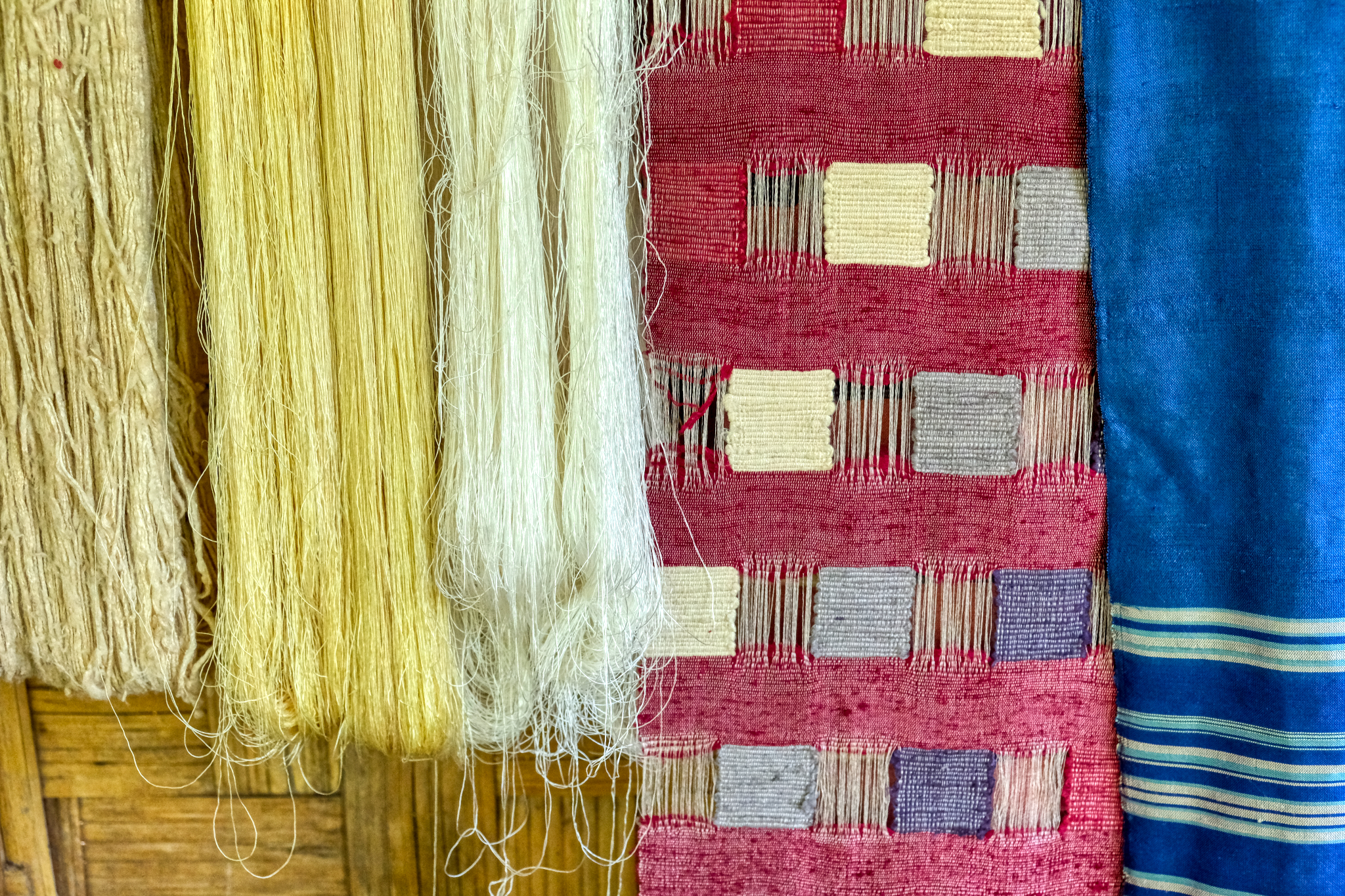 From coarse raw silk to beautiful textiles.
From coarse raw silk to beautiful textiles.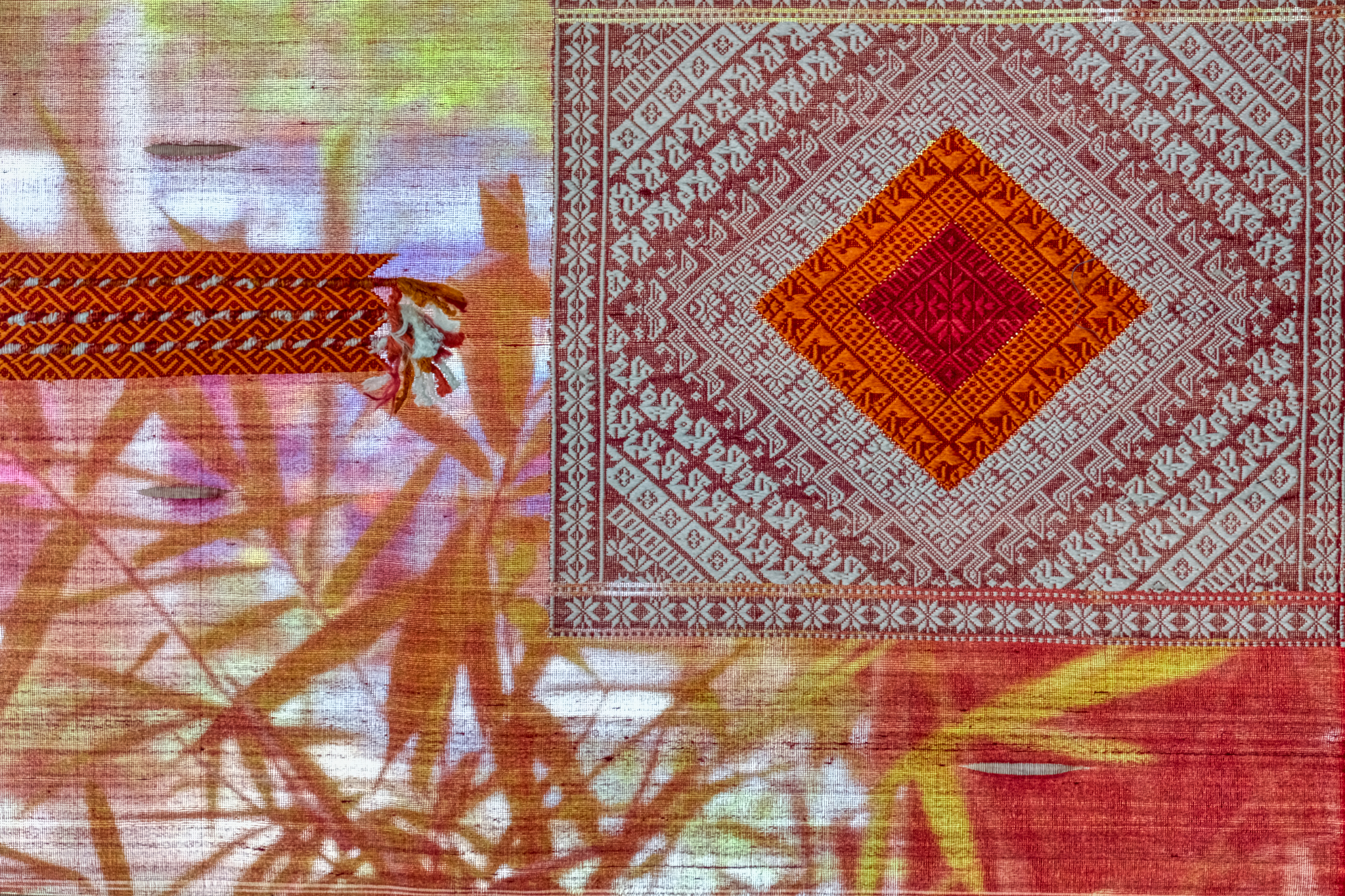 A display of old silk patterns in the museum.
A display of old silk patterns in the museum.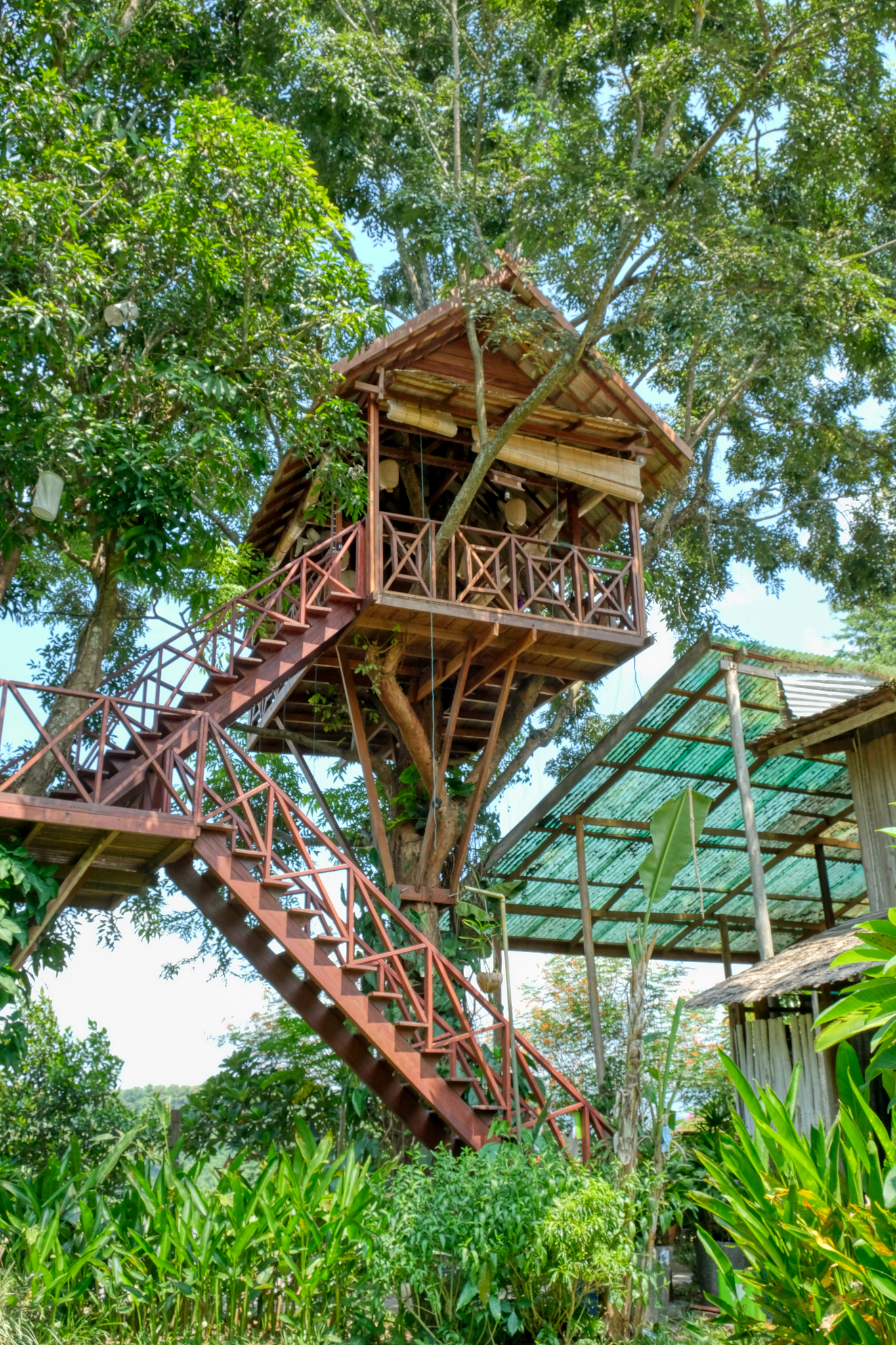 The Craft Center had a marvelous tree house with views to everywhere . . . but I was chicken, I mean, in a hurry to get some water.
The Craft Center had a marvelous tree house with views to everywhere . . . but I was chicken, I mean, in a hurry to get some water.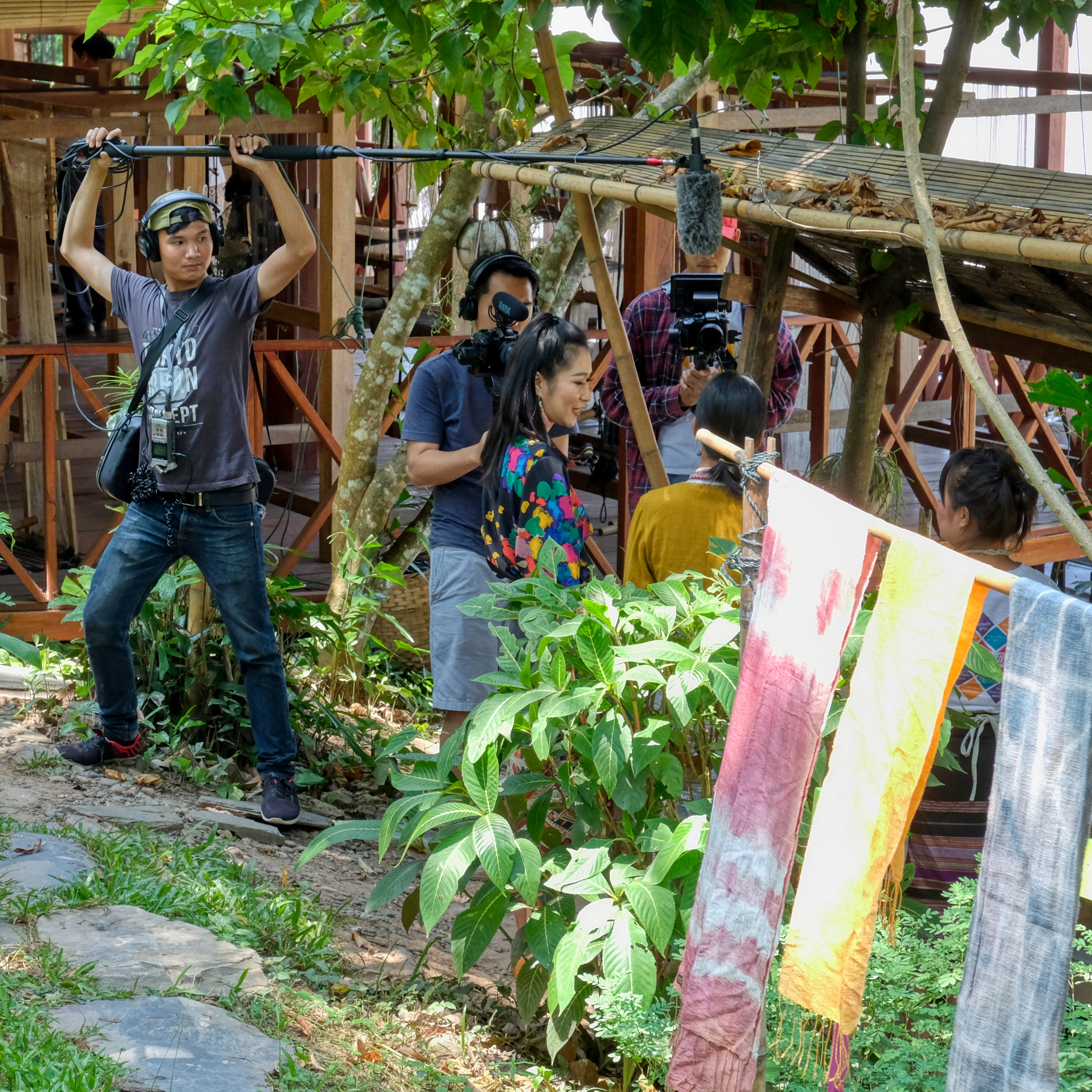 As it turned out, we weren't the only ones who were finding the Craft Center interesting that morning . . . a crew, and talent, were filming a piece for Lao TV.
As it turned out, we weren't the only ones who were finding the Craft Center interesting that morning . . . a crew, and talent, were filming a piece for Lao TV.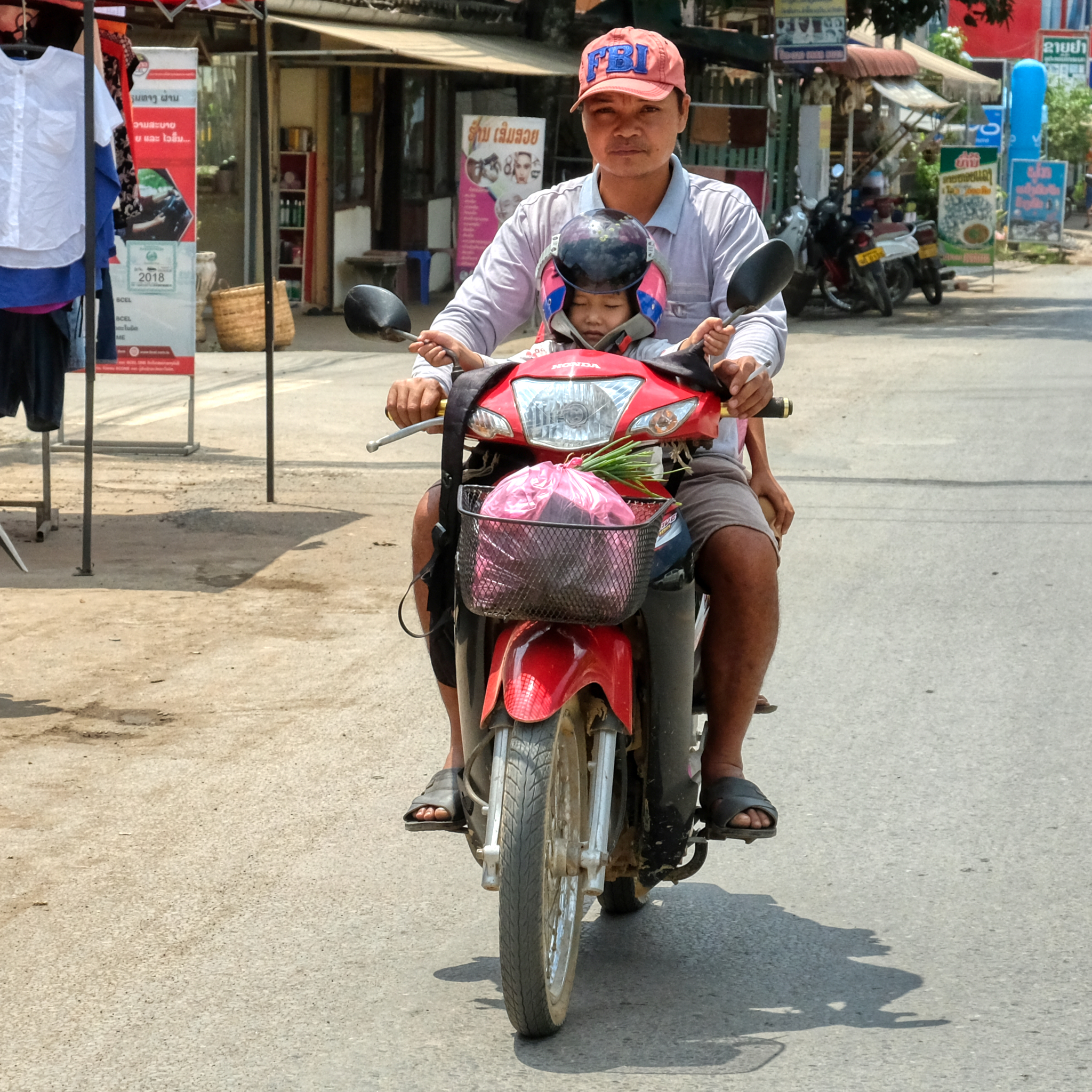 After the Craft Center we rode around for a while in the tuk-tuk looking for a recommended French Café and lunch . . . and taking photos out the back of the tuk-tuk along the way.
After the Craft Center we rode around for a while in the tuk-tuk looking for a recommended French Café and lunch . . . and taking photos out the back of the tuk-tuk along the way.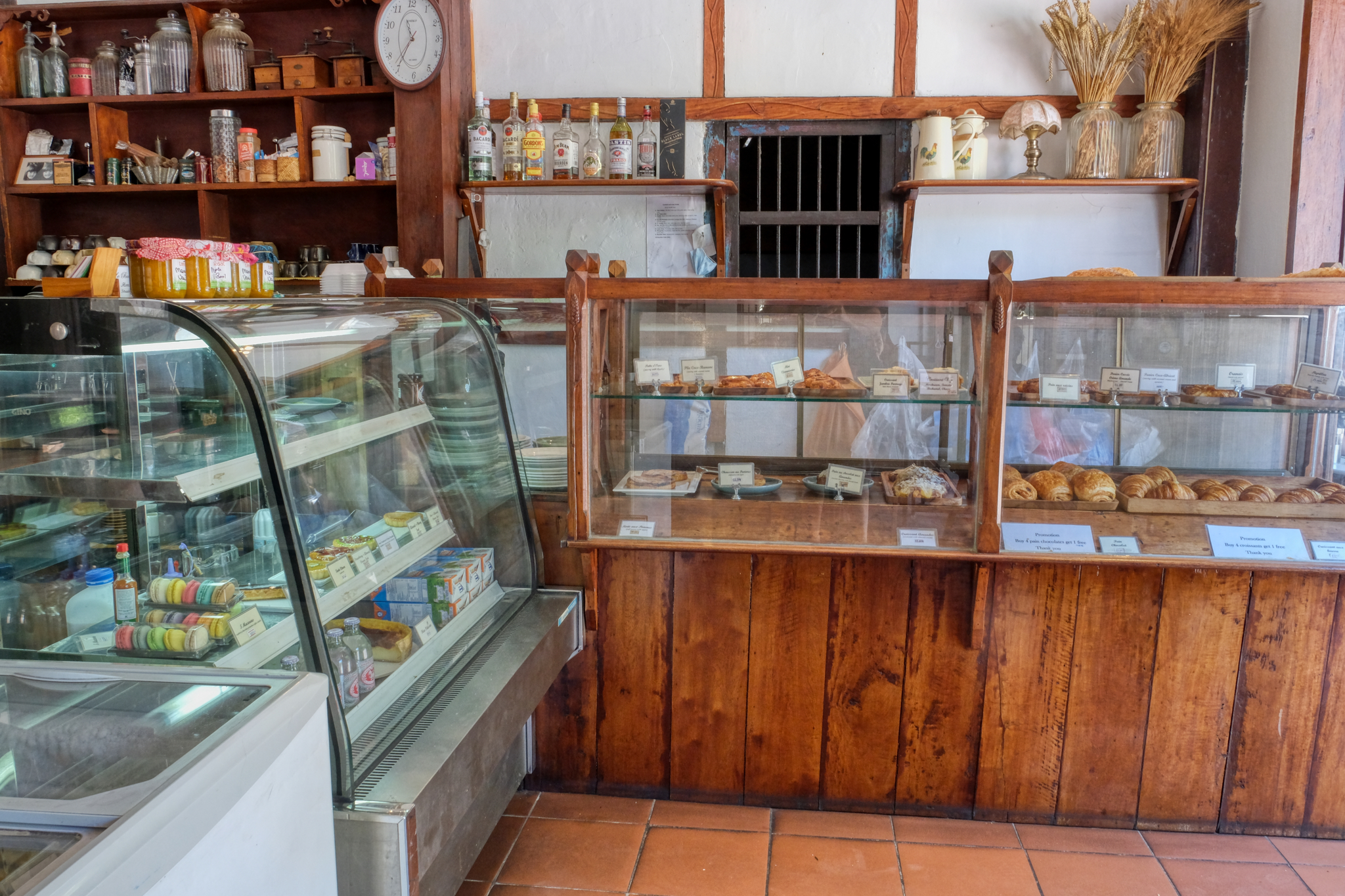 We found our French Bakery & Café where we had a delicious meal out on the sidewalk.
We found our French Bakery & Café where we had a delicious meal out on the sidewalk.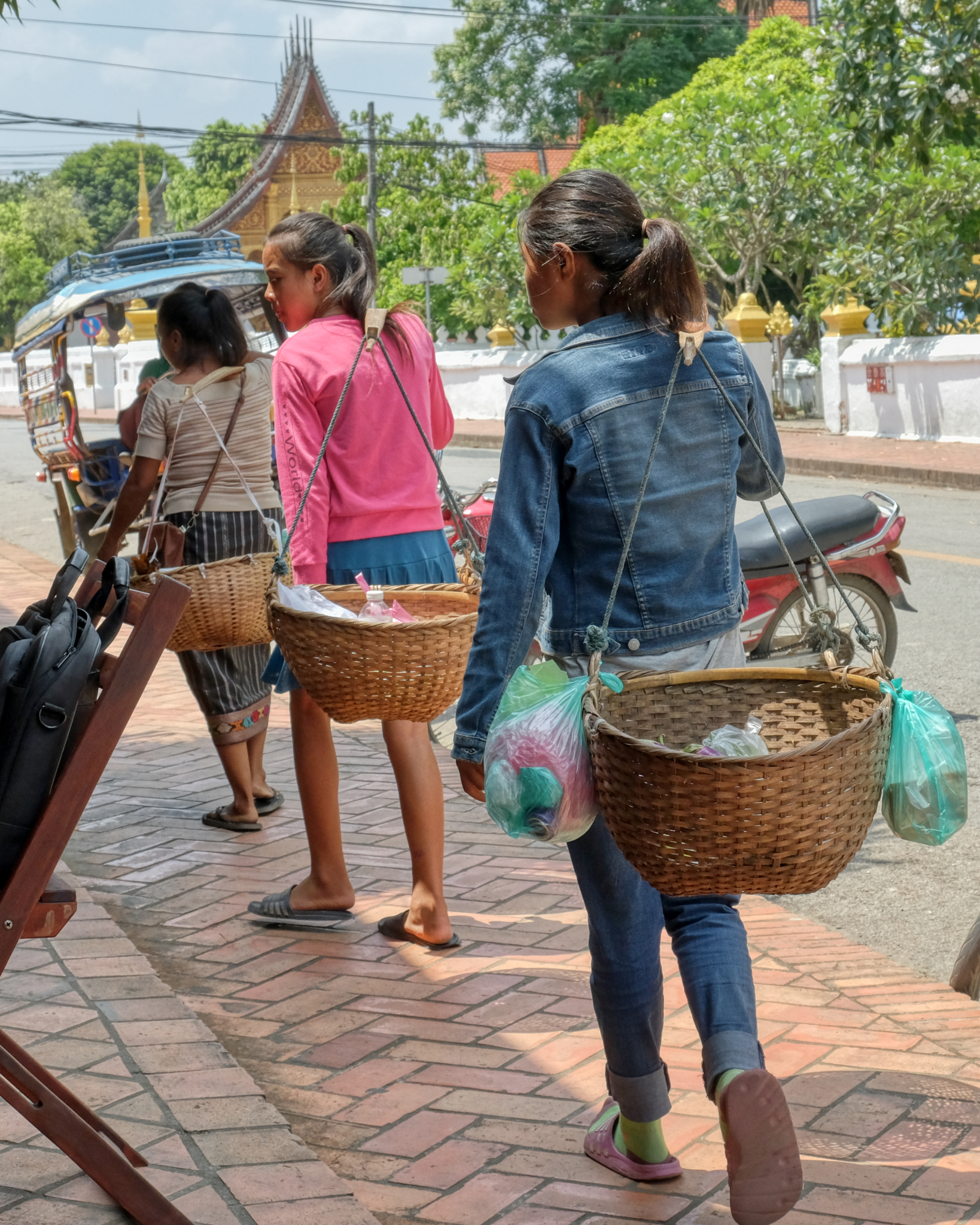 These street hawkers walked by on their way into the town center. They seemed to be practicing, or taking their first foray along the sidewalk . . . getting ready for tourist season to begin.
These street hawkers walked by on their way into the town center. They seemed to be practicing, or taking their first foray along the sidewalk . . . getting ready for tourist season to begin.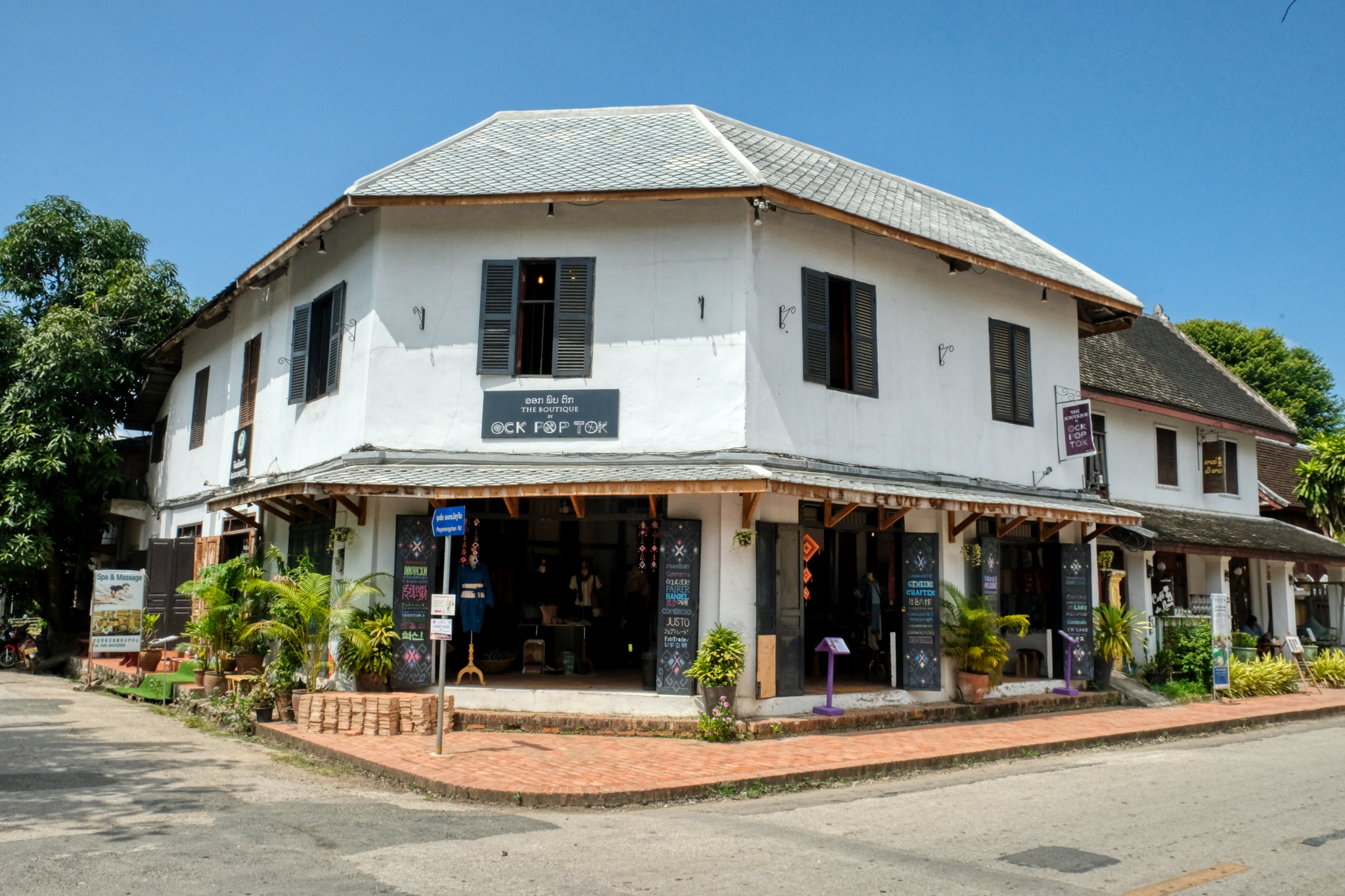 After lunch we went back into town and walked around among the shops.
After lunch we went back into town and walked around among the shops.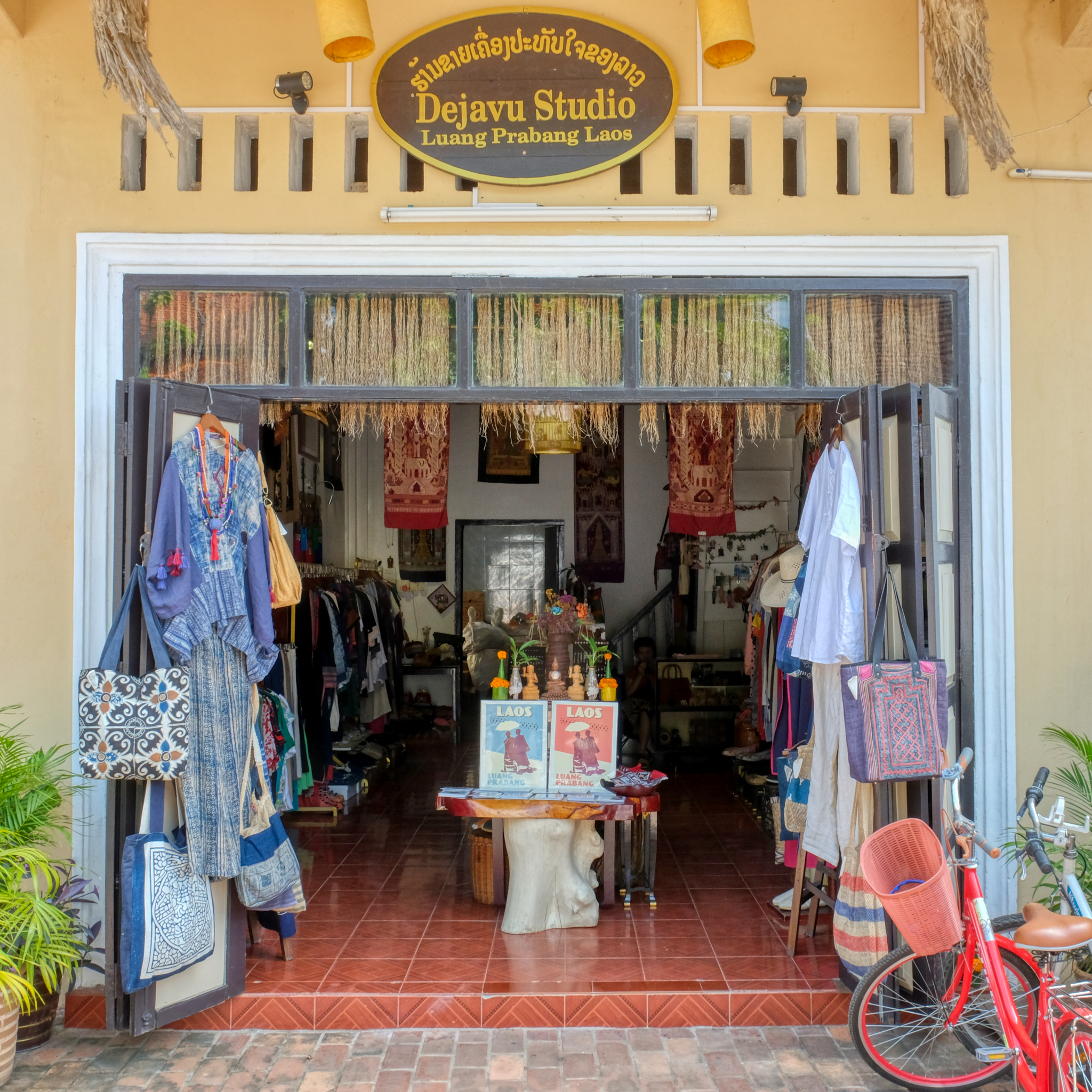 The shops were bulging with goods in anticipation of the 15,000 mostly French tourists a day who would begin to arrive within weeks. The fashions and styles were really wonderful. My wife bought several fabulous outfits here.
The shops were bulging with goods in anticipation of the 15,000 mostly French tourists a day who would begin to arrive within weeks. The fashions and styles were really wonderful. My wife bought several fabulous outfits here.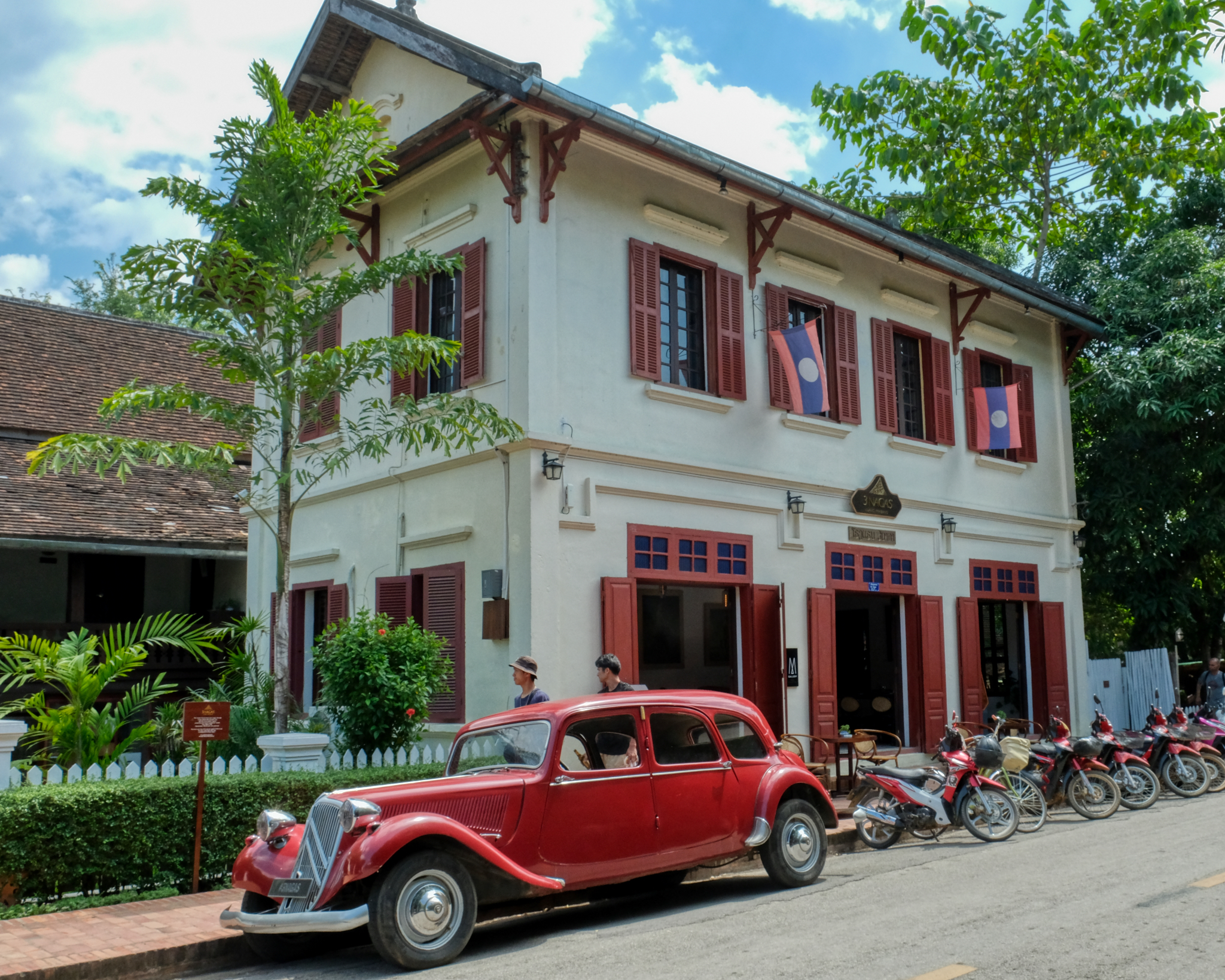 I'm sure the sight of this old Citroën will bring a big smile to the French tourists.
I'm sure the sight of this old Citroën will bring a big smile to the French tourists.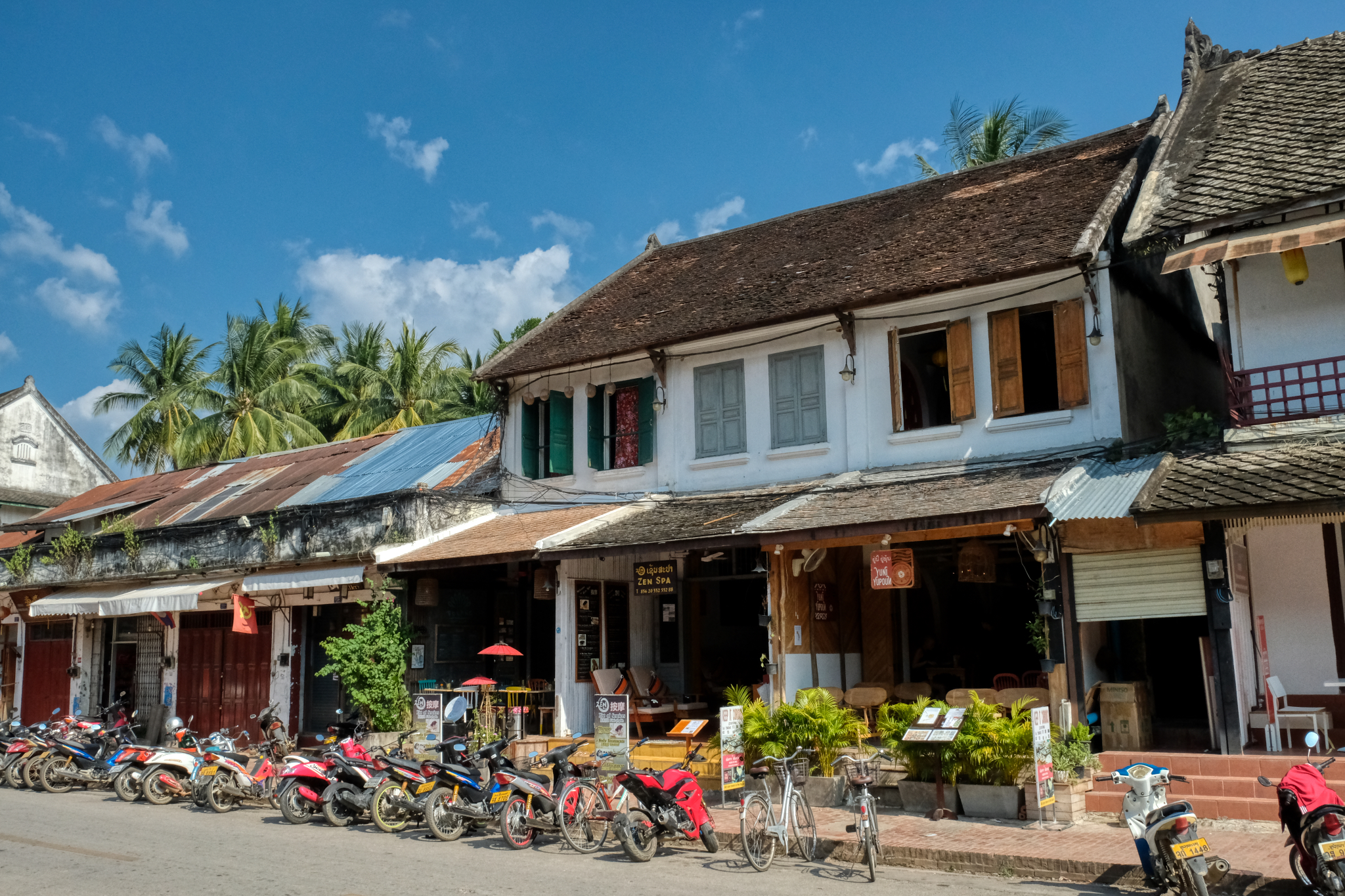 I love the feel of this old town.
I love the feel of this old town.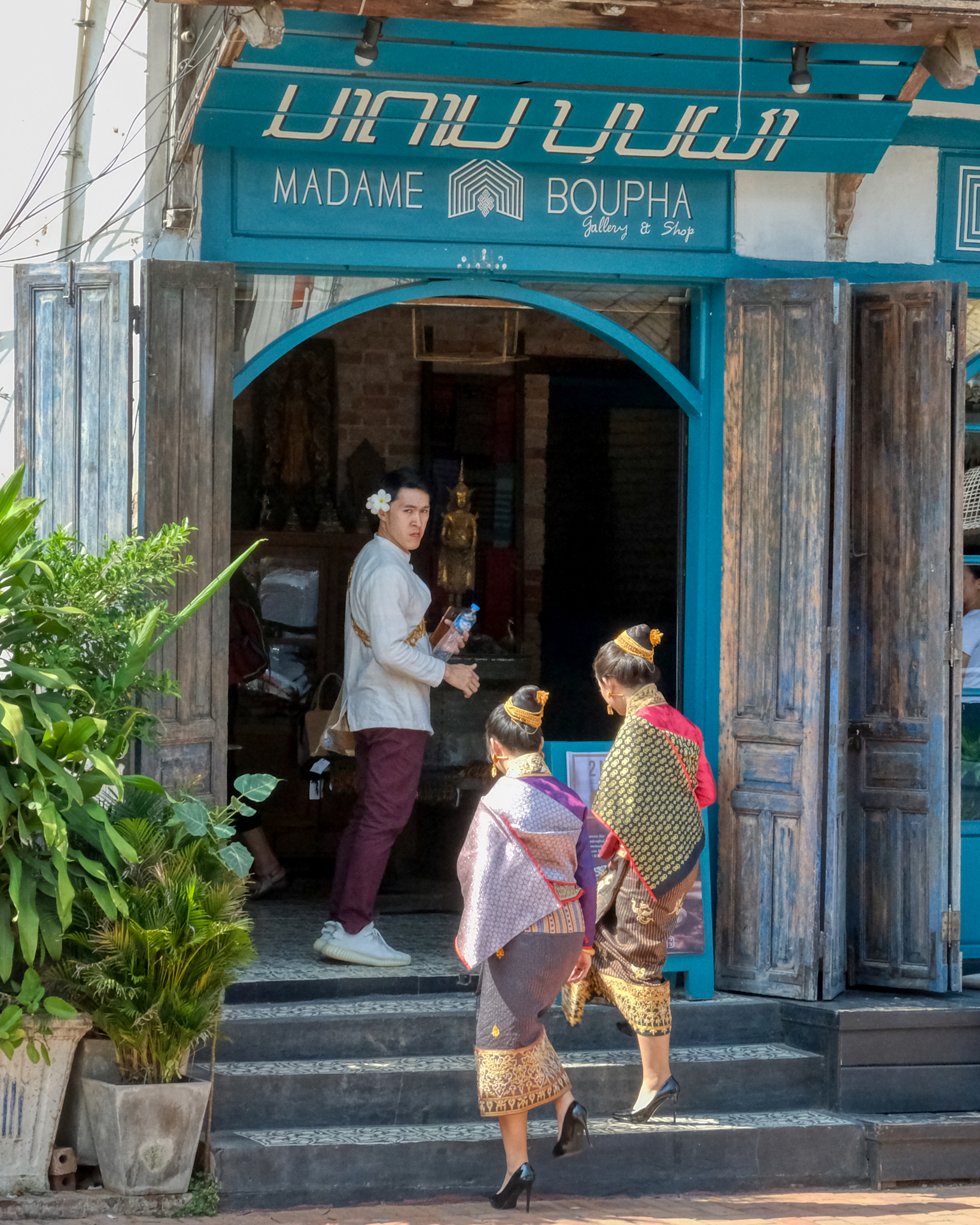 Well dressed patrons of a high end fashion shop.
Well dressed patrons of a high end fashion shop.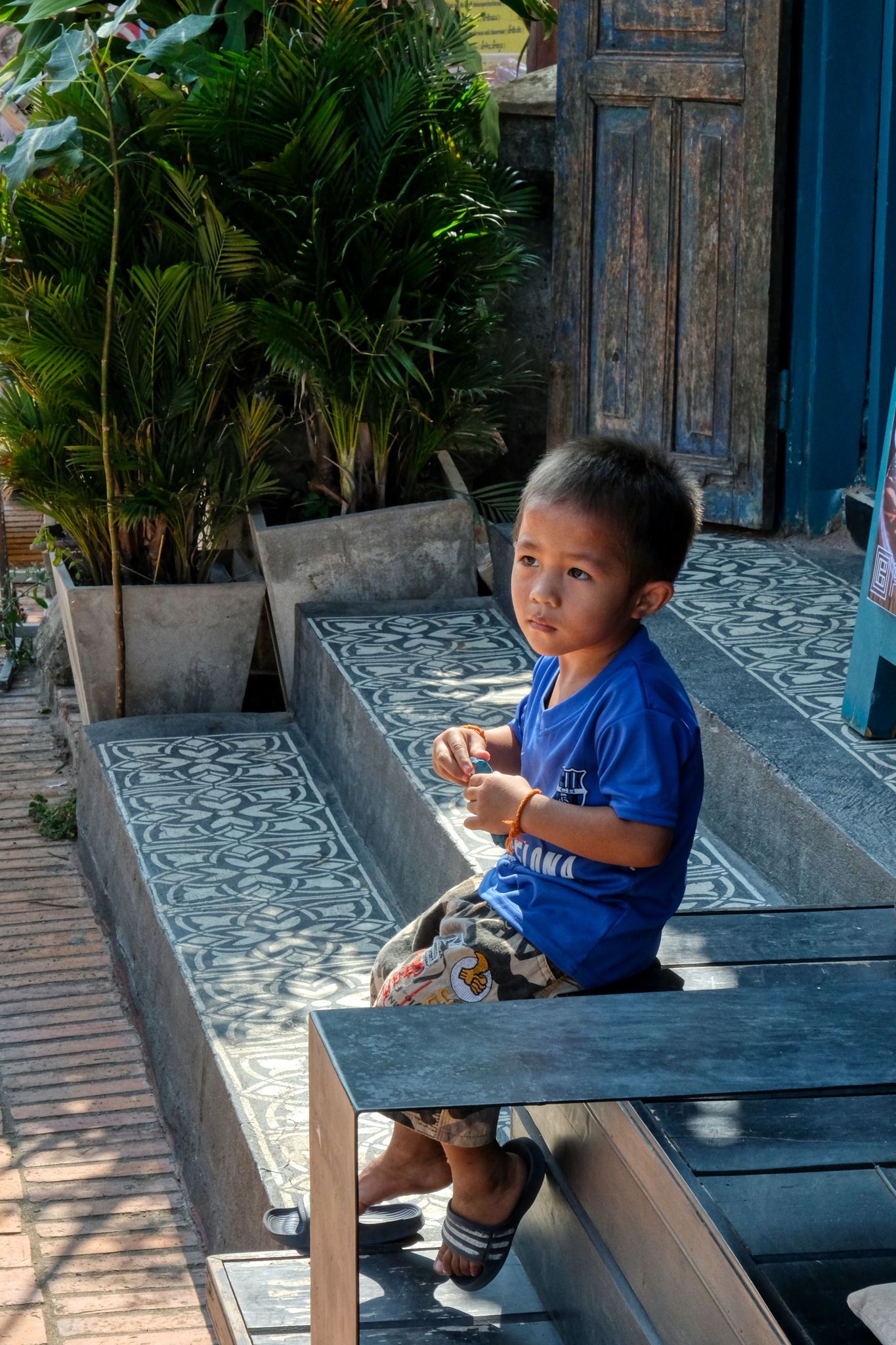 This little guy sat quietly out in front of his parent's shop.
This little guy sat quietly out in front of his parent's shop.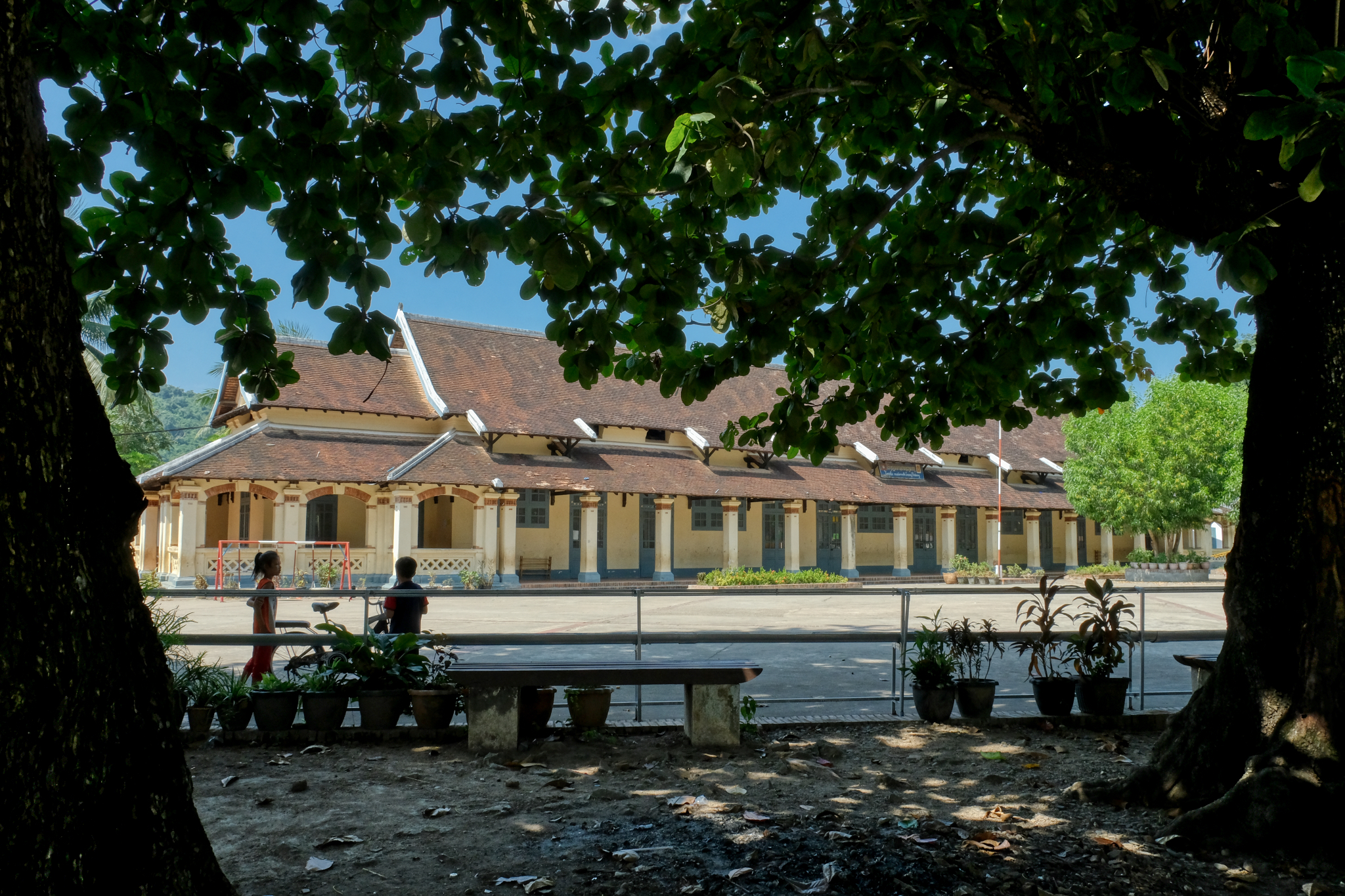 The Luang Prabang School . . . right on the main street.
The Luang Prabang School . . . right on the main street.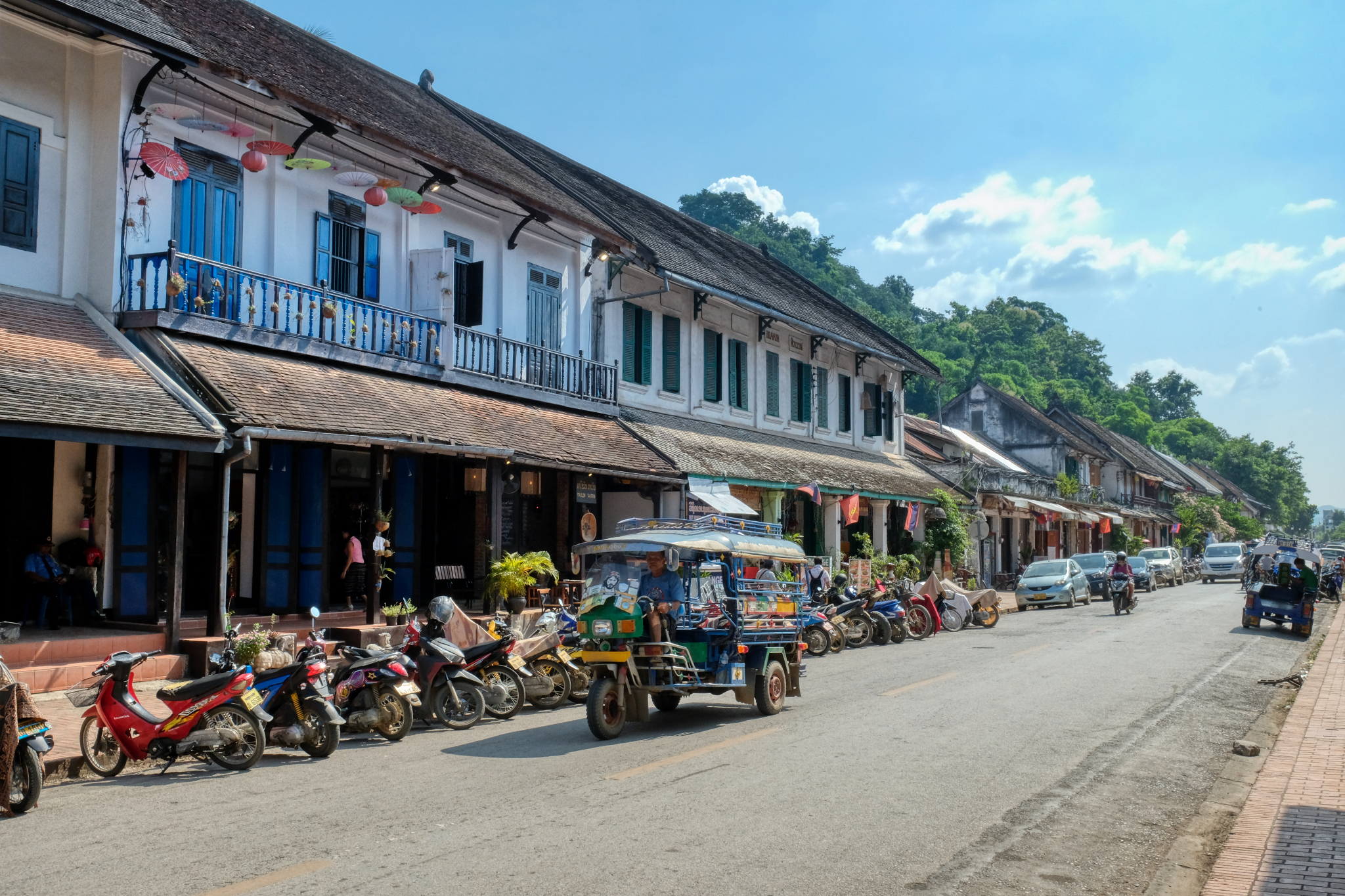 Coffee shops, textile stores, and curious shops dominate the old downtown now. When I first visited Luang Prabang 22 years ago there was very little in the way of catering to tourists . . . the World Heritage Center designation seems to have changed all of that.
Coffee shops, textile stores, and curious shops dominate the old downtown now. When I first visited Luang Prabang 22 years ago there was very little in the way of catering to tourists . . . the World Heritage Center designation seems to have changed all of that.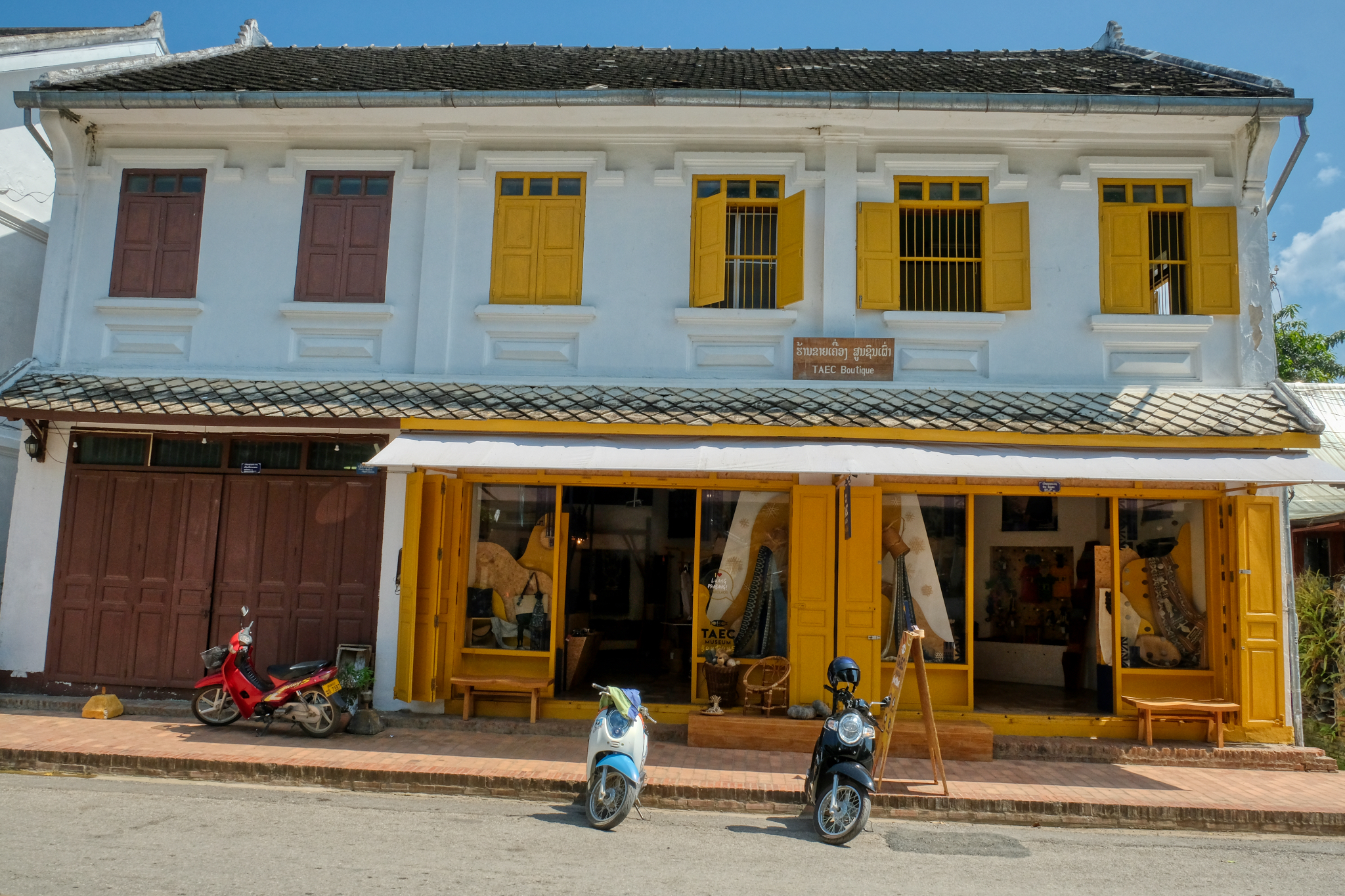 Another of the many fine boutiques.
Another of the many fine boutiques.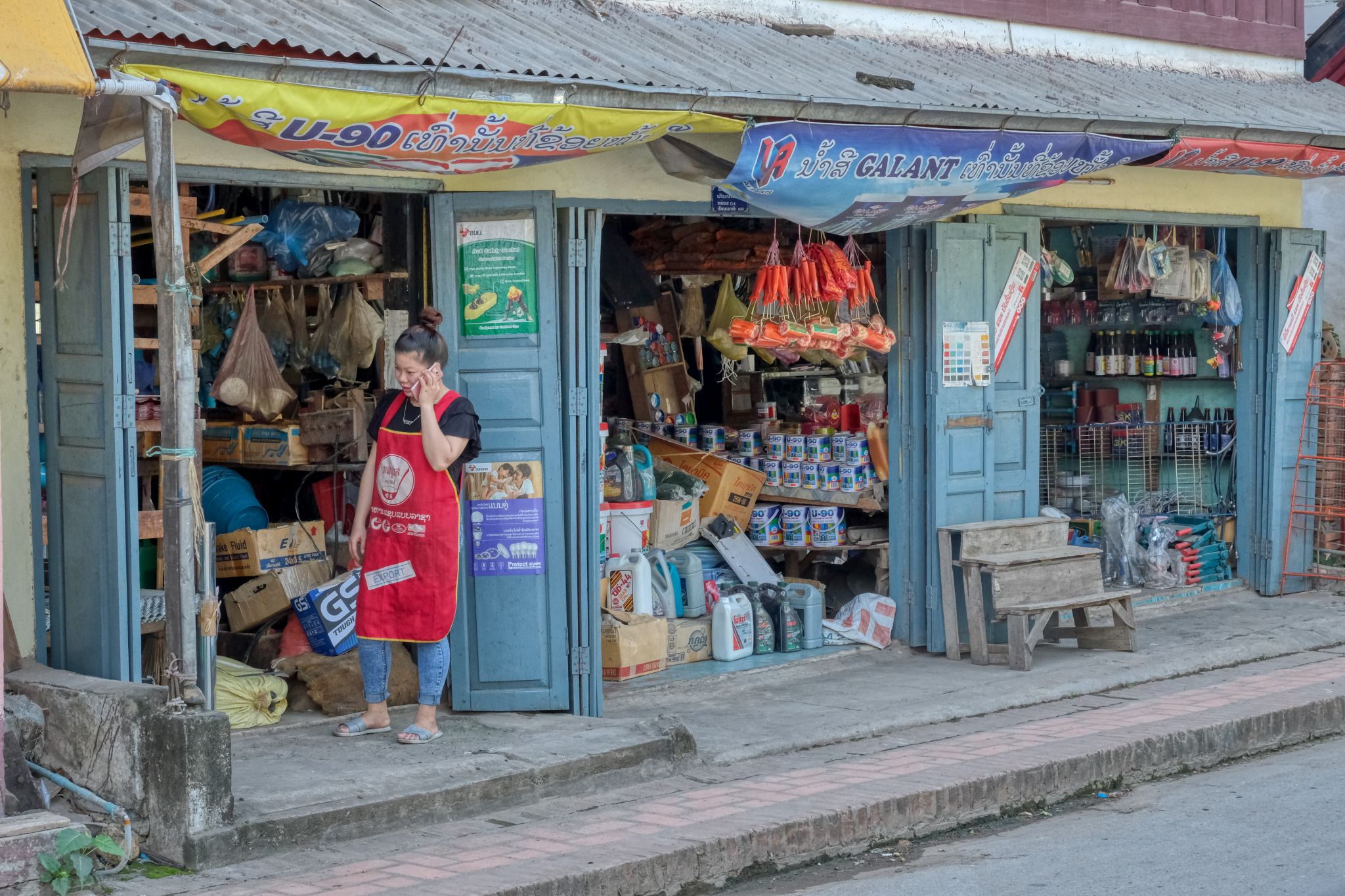 Of course Luang Prabang is not entirely a tourist town. There are the daily needs of the Lao who live here to be met. A lovely hardware store.
Of course Luang Prabang is not entirely a tourist town. There are the daily needs of the Lao who live here to be met. A lovely hardware store.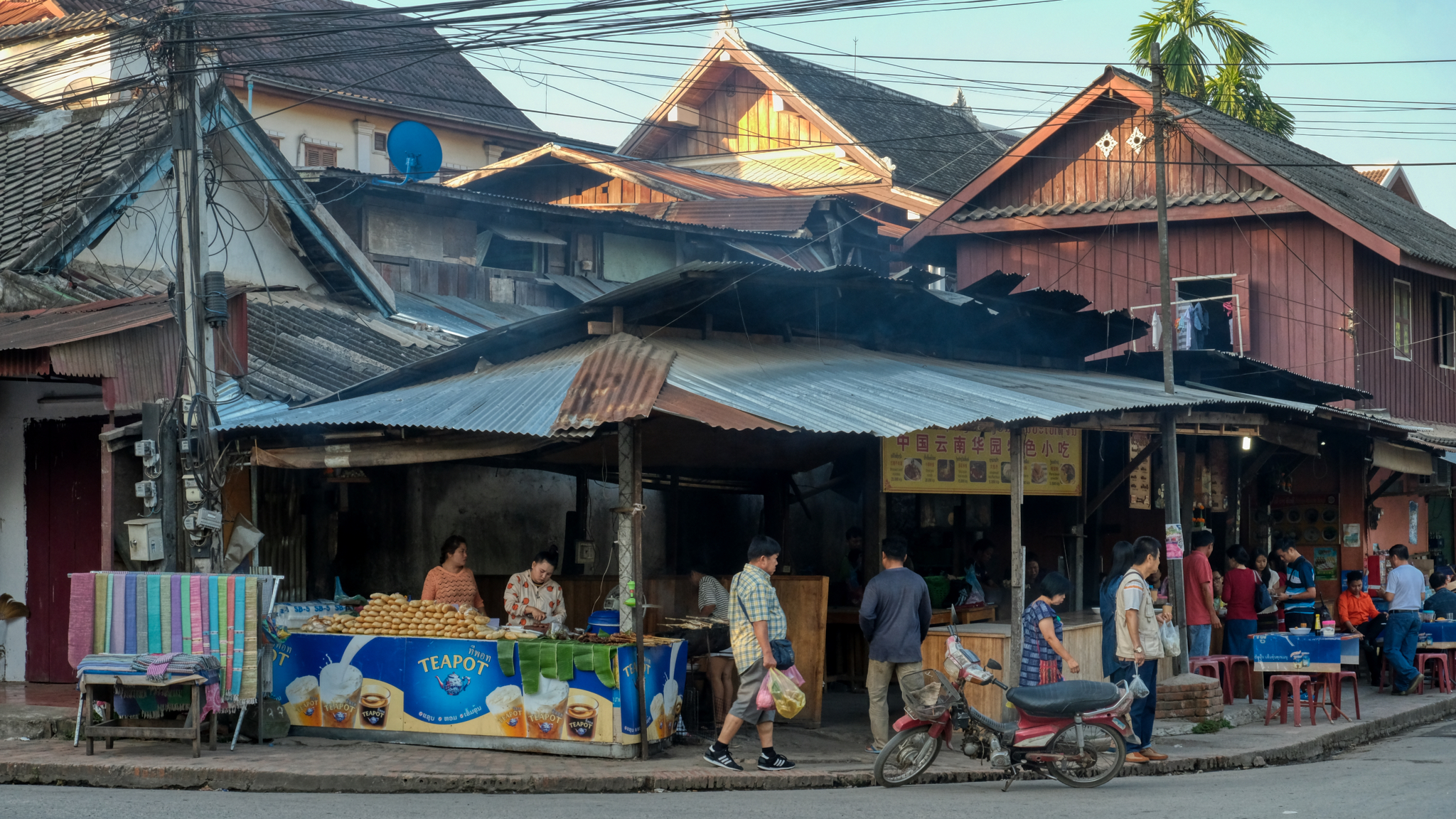 We knew of a favorite place the locals went to for breakfast of hot congee and fried bread, in this parade of shops next to the river.
We knew of a favorite place the locals went to for breakfast of hot congee and fried bread, in this parade of shops next to the river.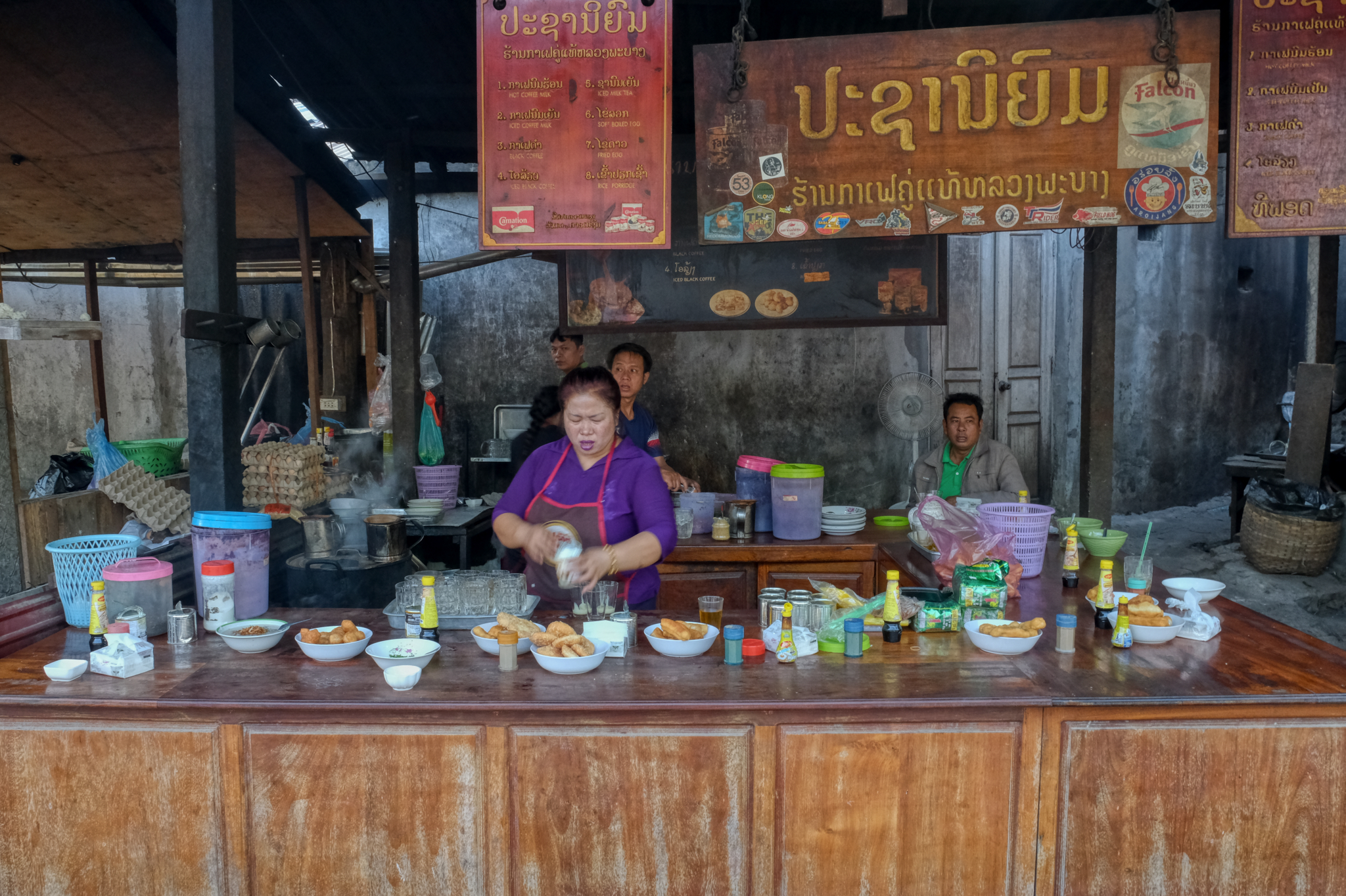 The proprietress readying the side dishes and the strong thick milk coffee.
The proprietress readying the side dishes and the strong thick milk coffee.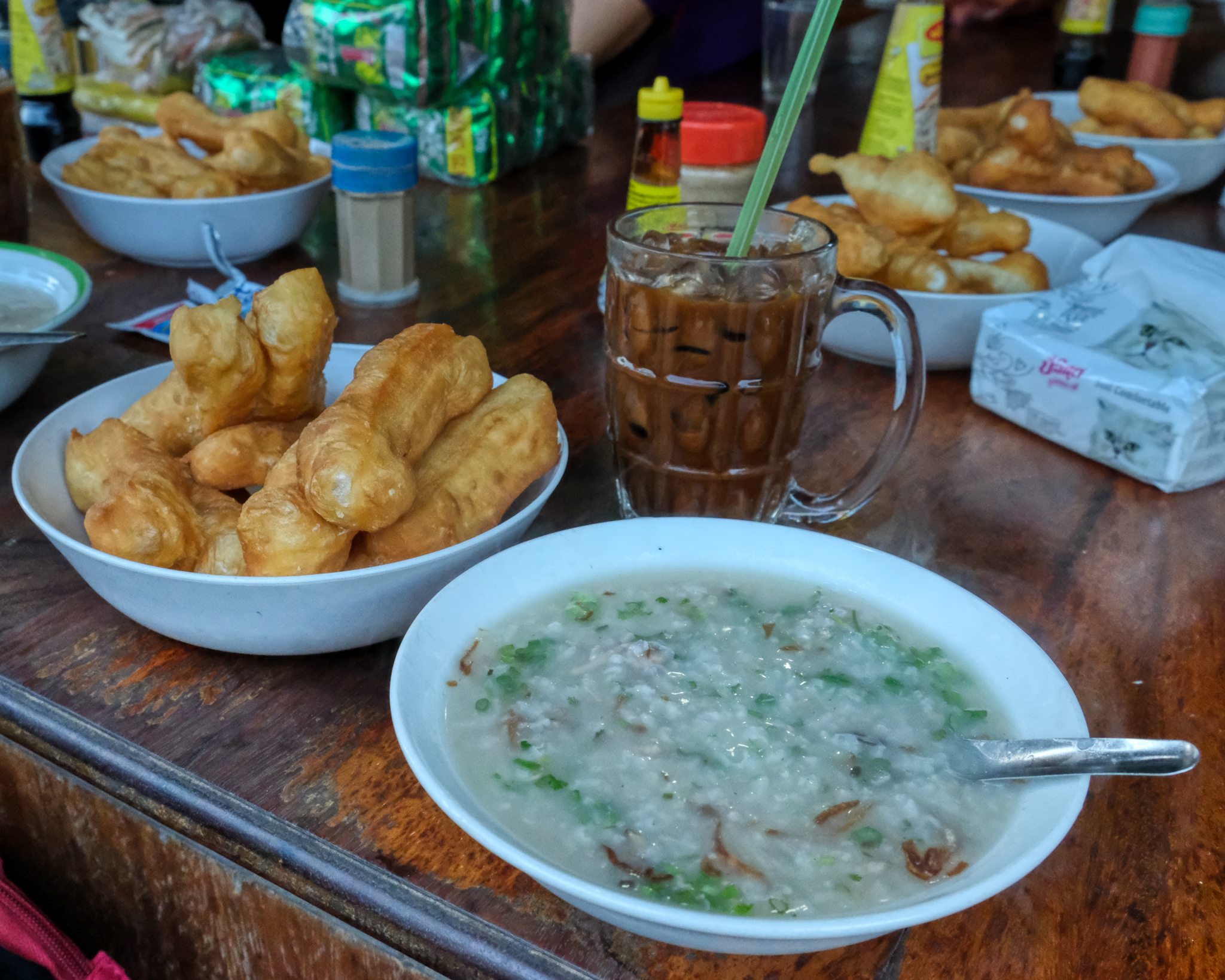 This is what we had come for: Lao congee, fried bread, and strong milk Lao coffee. Based on chicken stock, it was full of goodness!
This is what we had come for: Lao congee, fried bread, and strong milk Lao coffee. Based on chicken stock, it was full of goodness!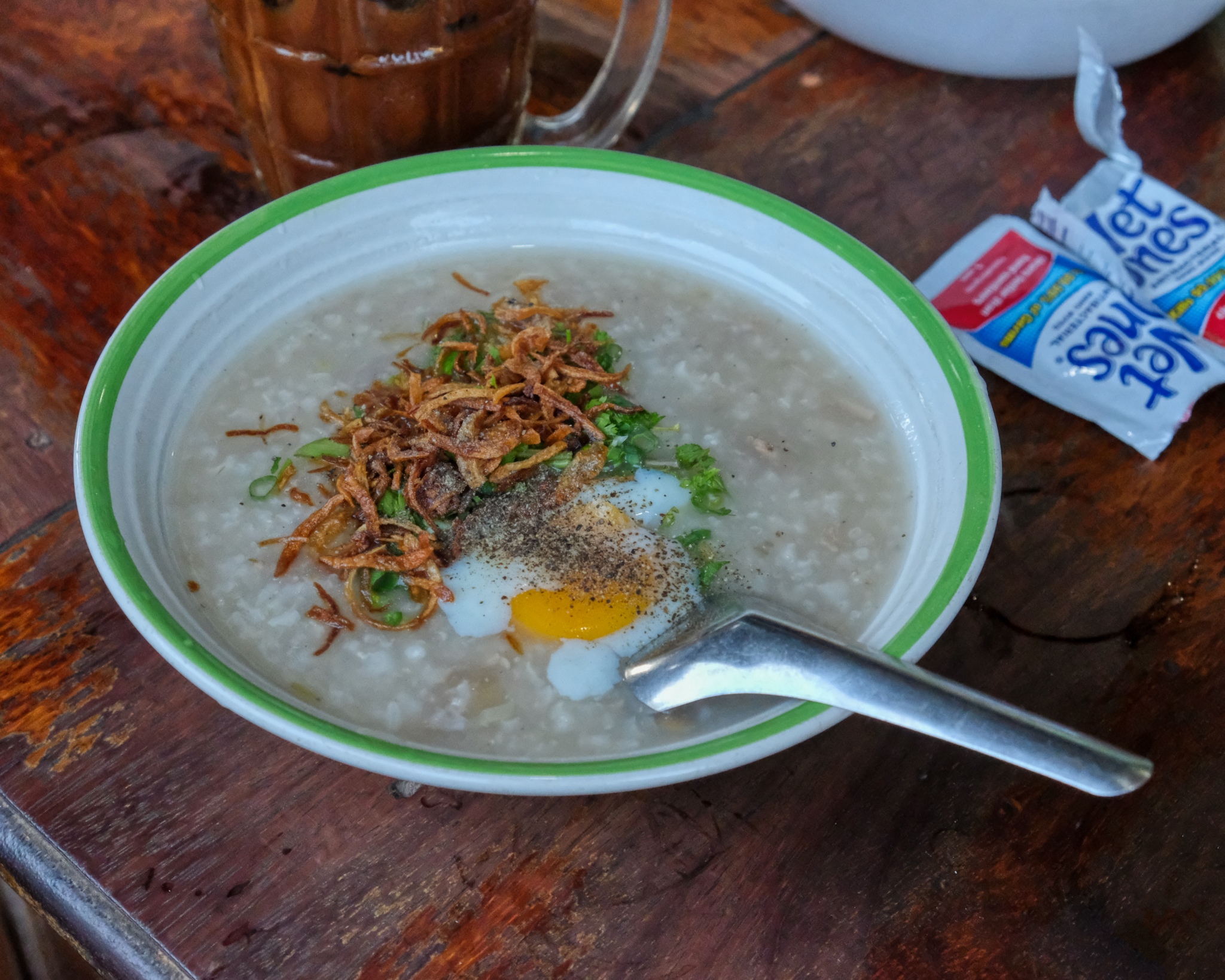 There were several variations on the menu for the delicious congee - like a raw egg that cooks in your congee!!!
There were several variations on the menu for the delicious congee - like a raw egg that cooks in your congee!!!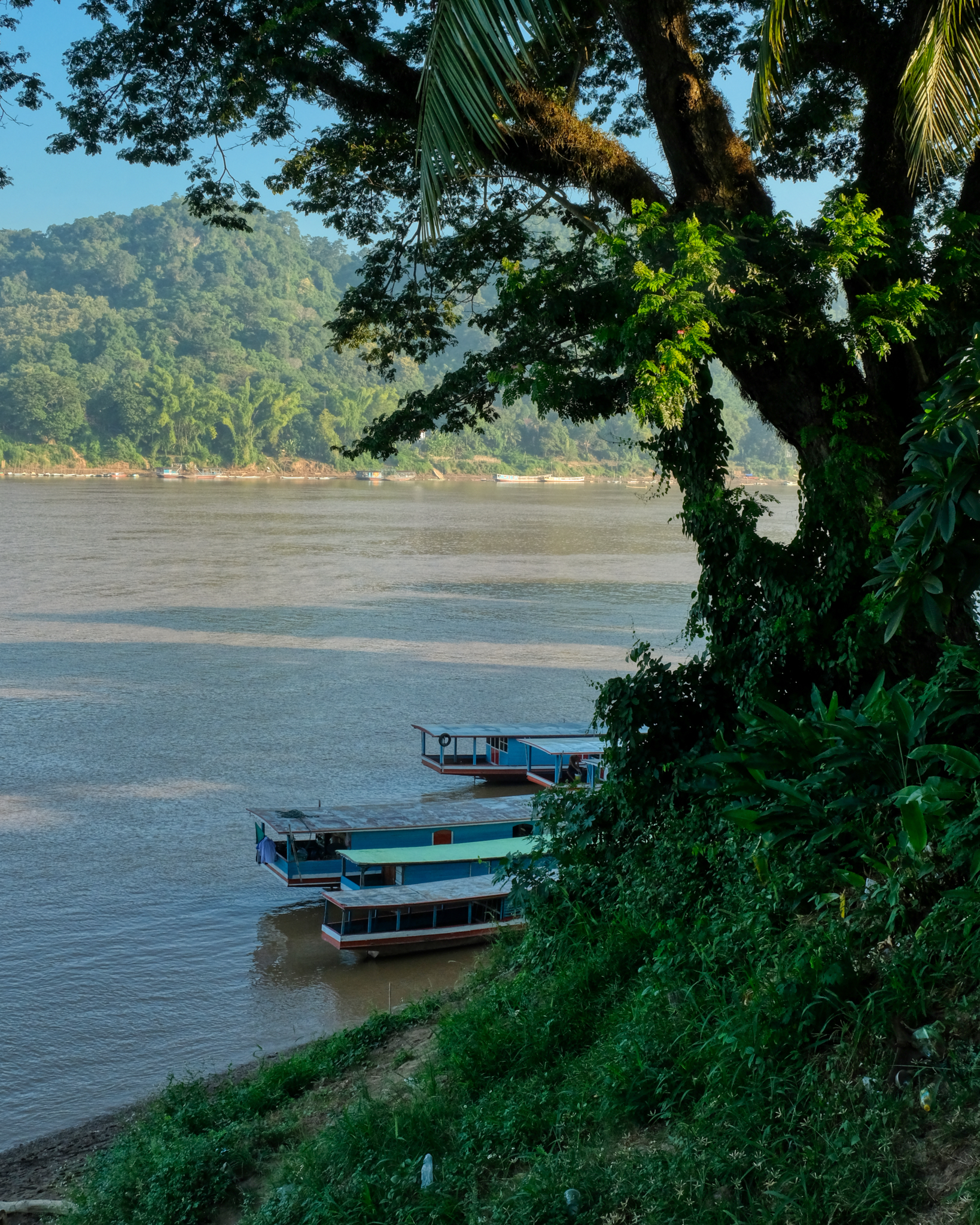 Just across the road from our congee shop was the mighty Mekong River.
Just across the road from our congee shop was the mighty Mekong River.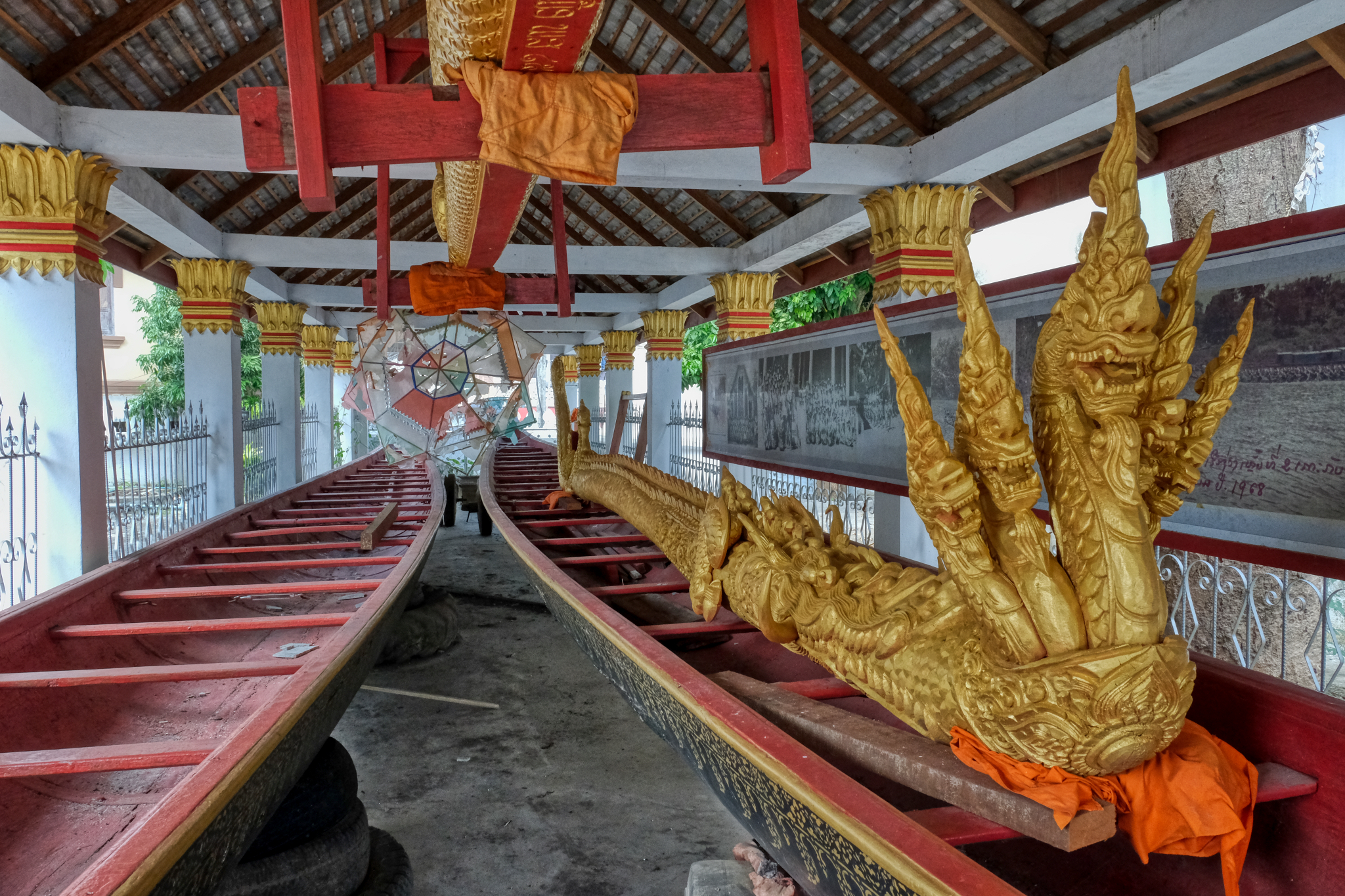
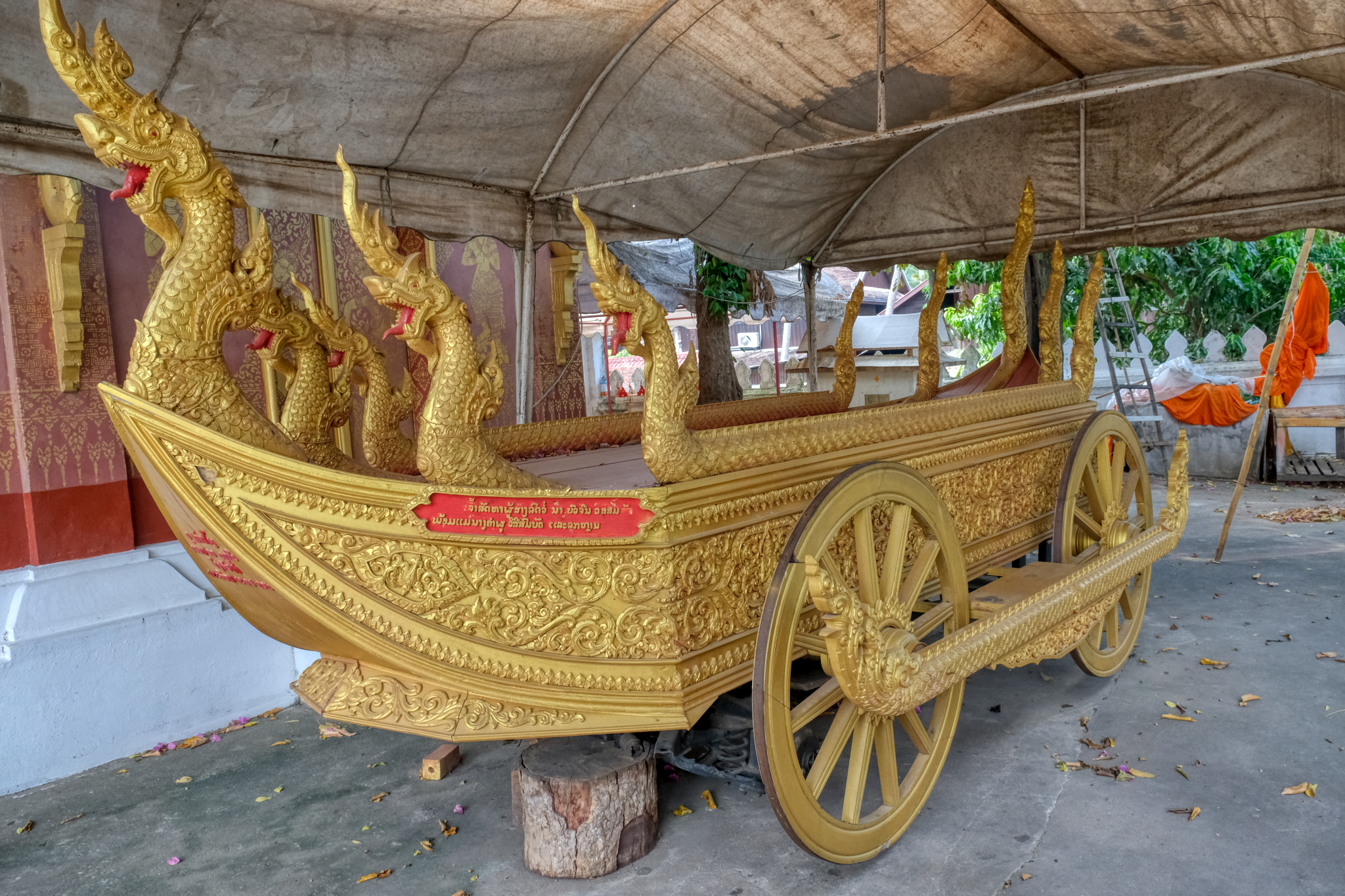
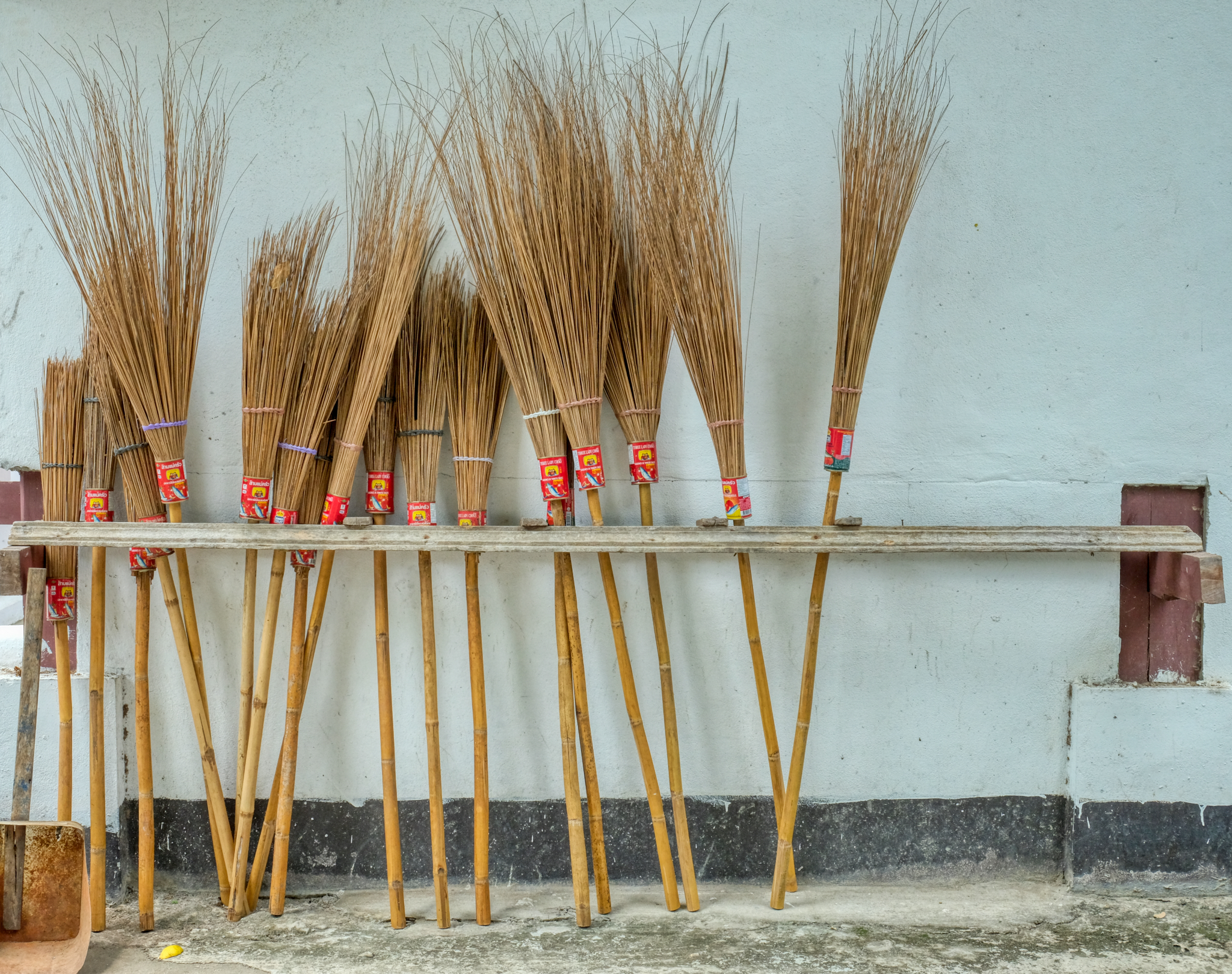 Luang Prabang is a photographer's dream . . . new brooms for the Wat.
Luang Prabang is a photographer's dream . . . new brooms for the Wat.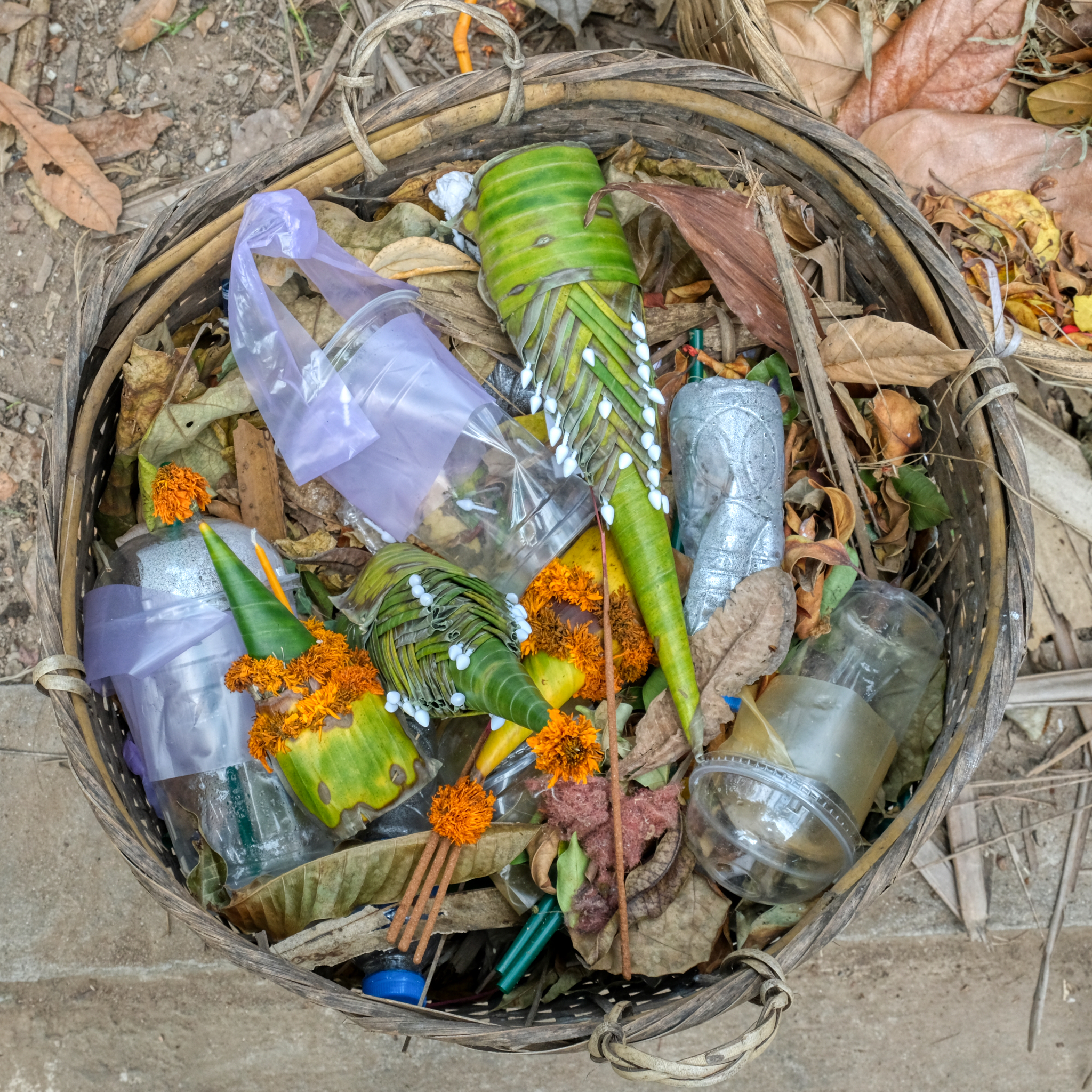 Even the garbage cans are interesting . . . .
Even the garbage cans are interesting . . . .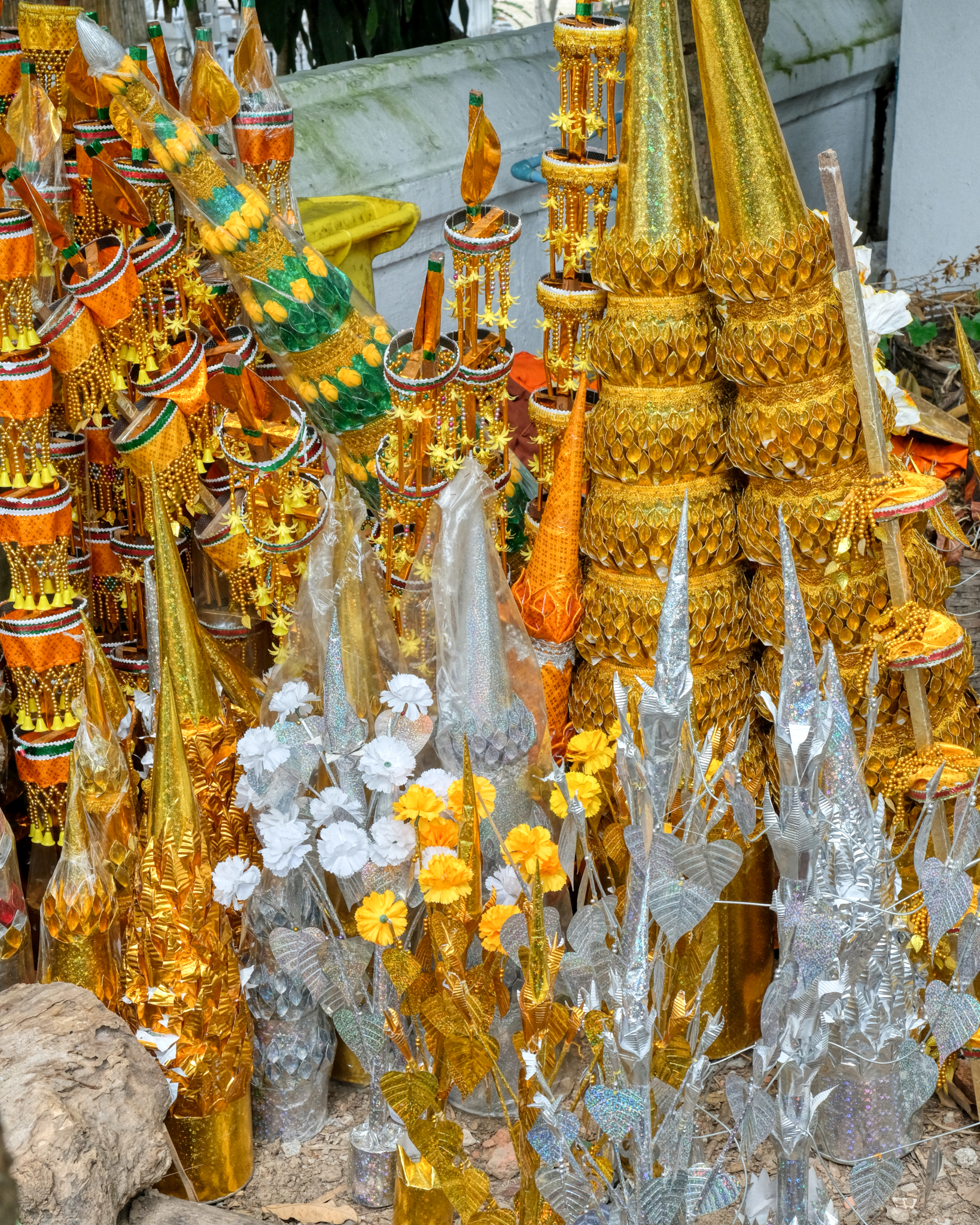 . . . this pile of ceremonial votive items were stacked up around some garbage cans . . .
. . . this pile of ceremonial votive items were stacked up around some garbage cans . . . 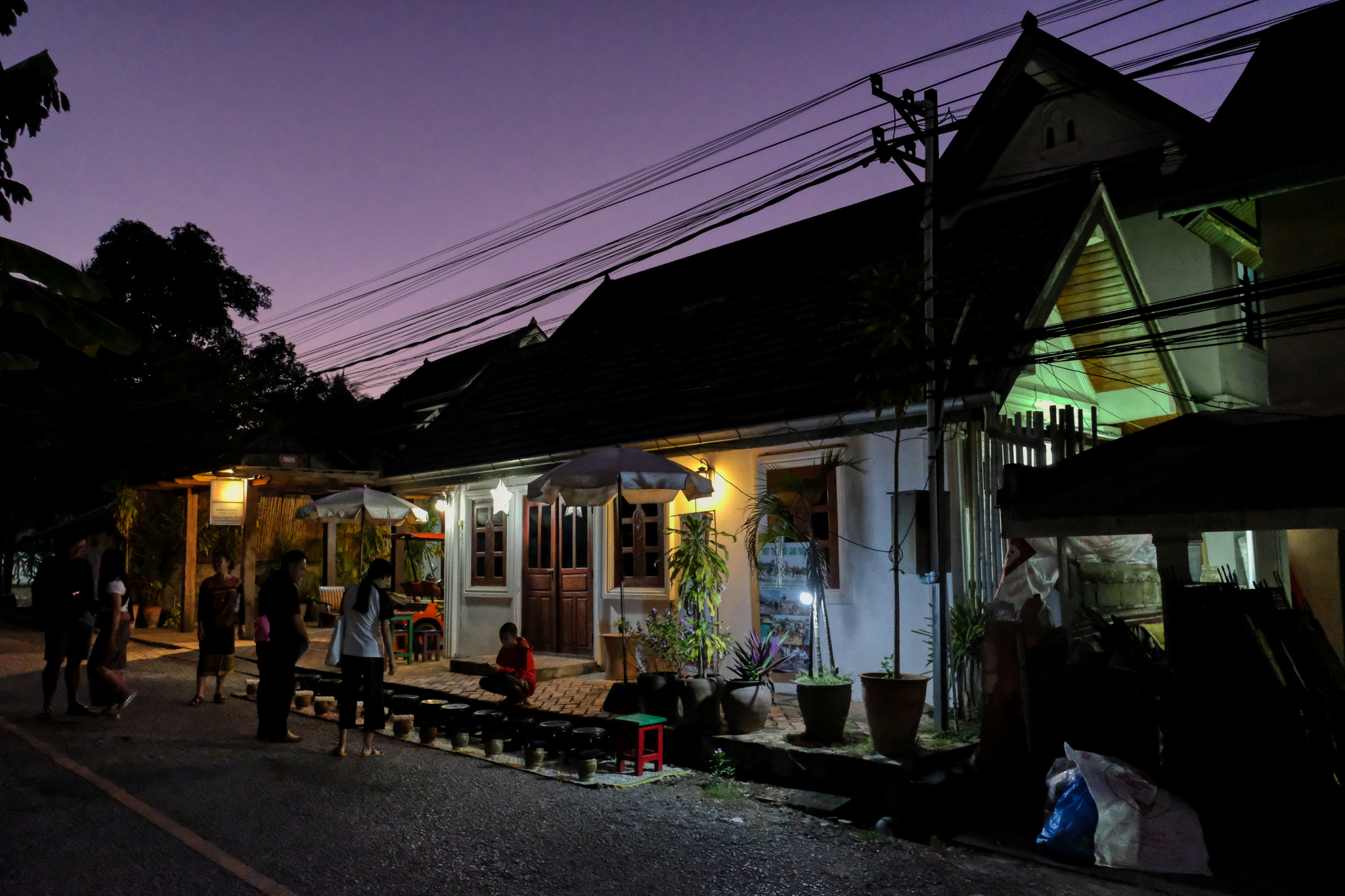 One of the most interesting and important activities one does when visiting Luang Prabang is to wake up at 5:00am and go out to the street and participate in the almsgiving. Your hotel or guesthouse may organize this for you.
One of the most interesting and important activities one does when visiting Luang Prabang is to wake up at 5:00am and go out to the street and participate in the almsgiving. Your hotel or guesthouse may organize this for you.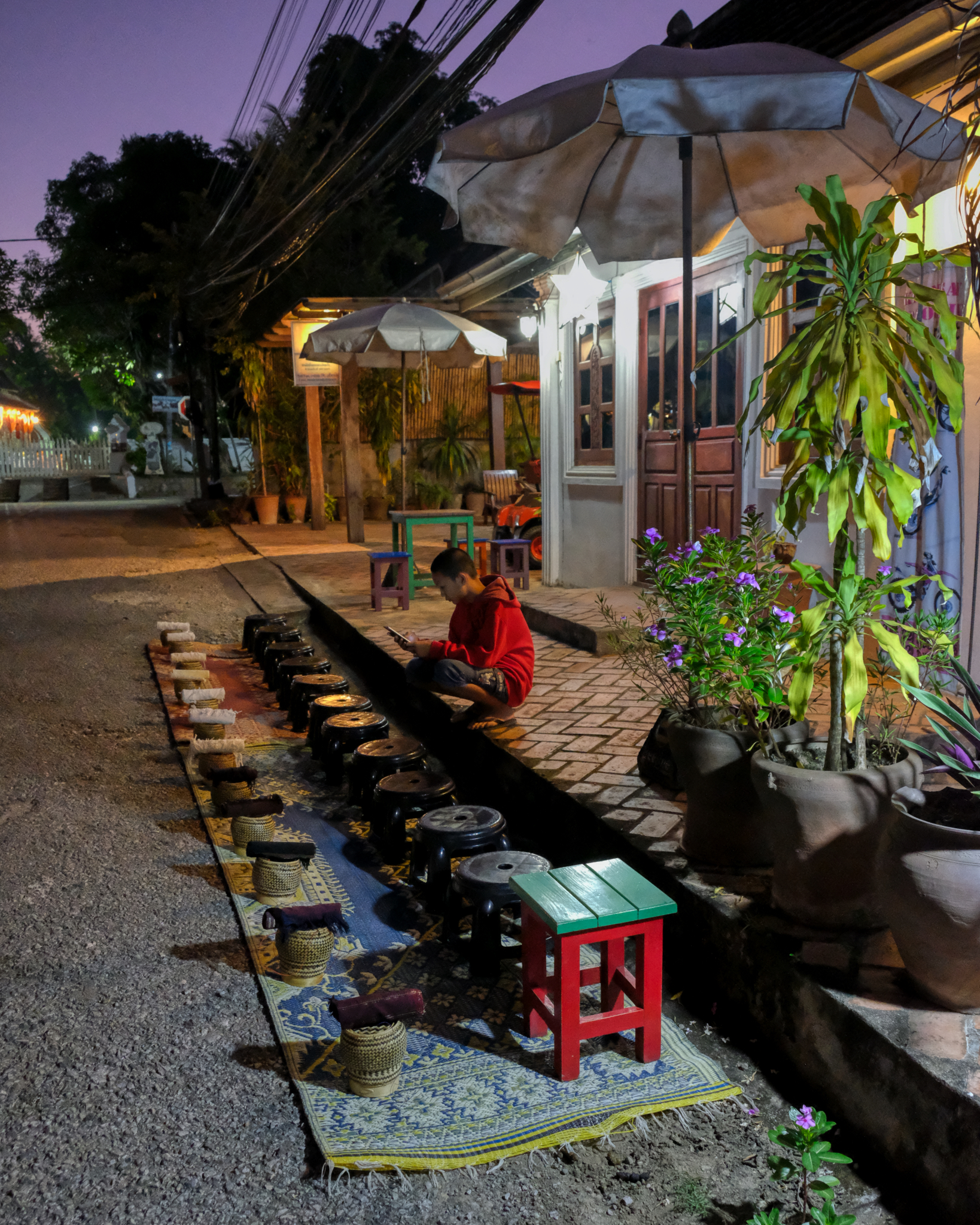 A small covered basket is filled with rice for distribution to the monks who will file past.
A small covered basket is filled with rice for distribution to the monks who will file past.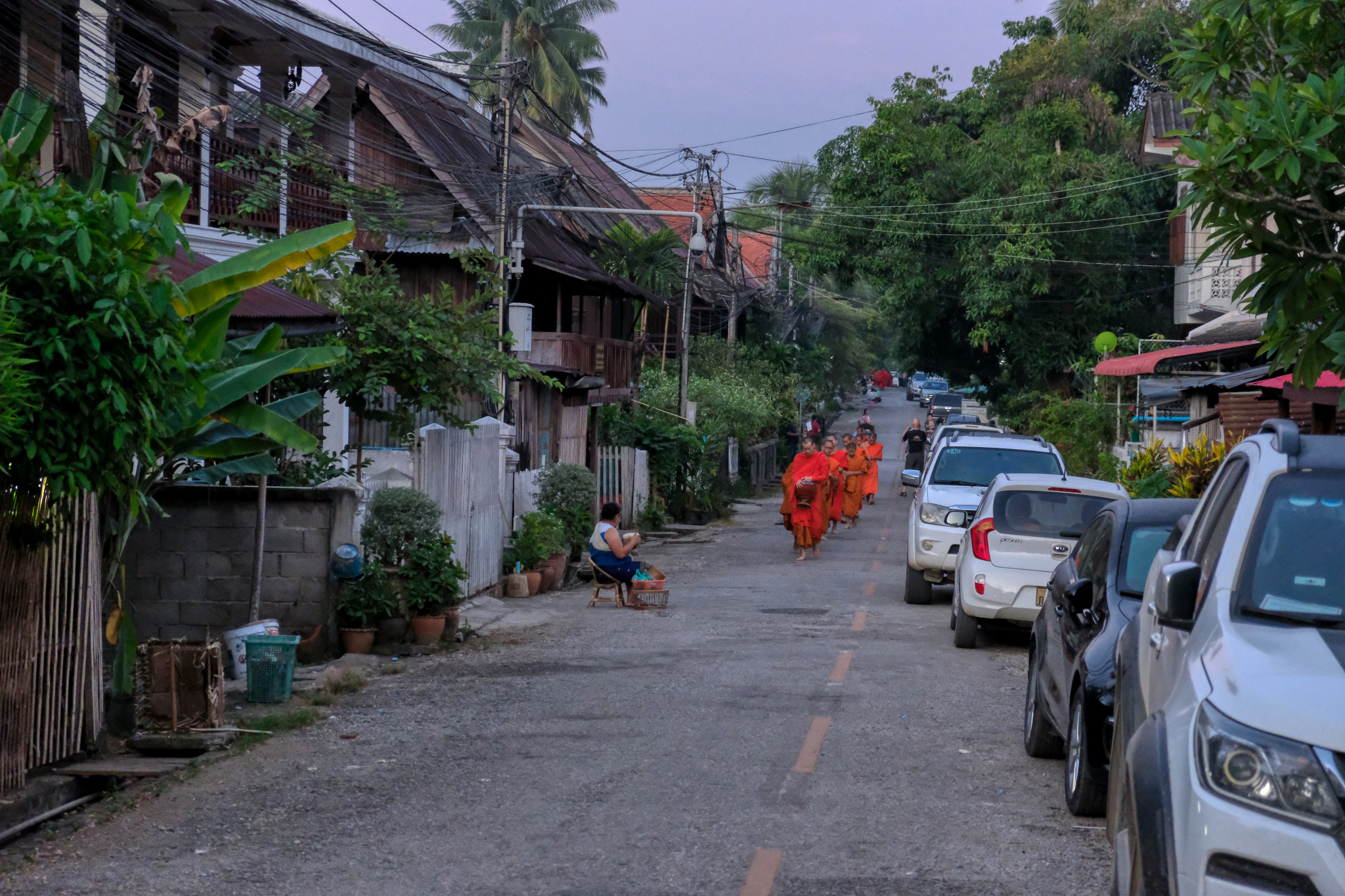 And . . . as the sun is beginning to light the sky, the line of monks begin to walk up our small lane.
And . . . as the sun is beginning to light the sky, the line of monks begin to walk up our small lane.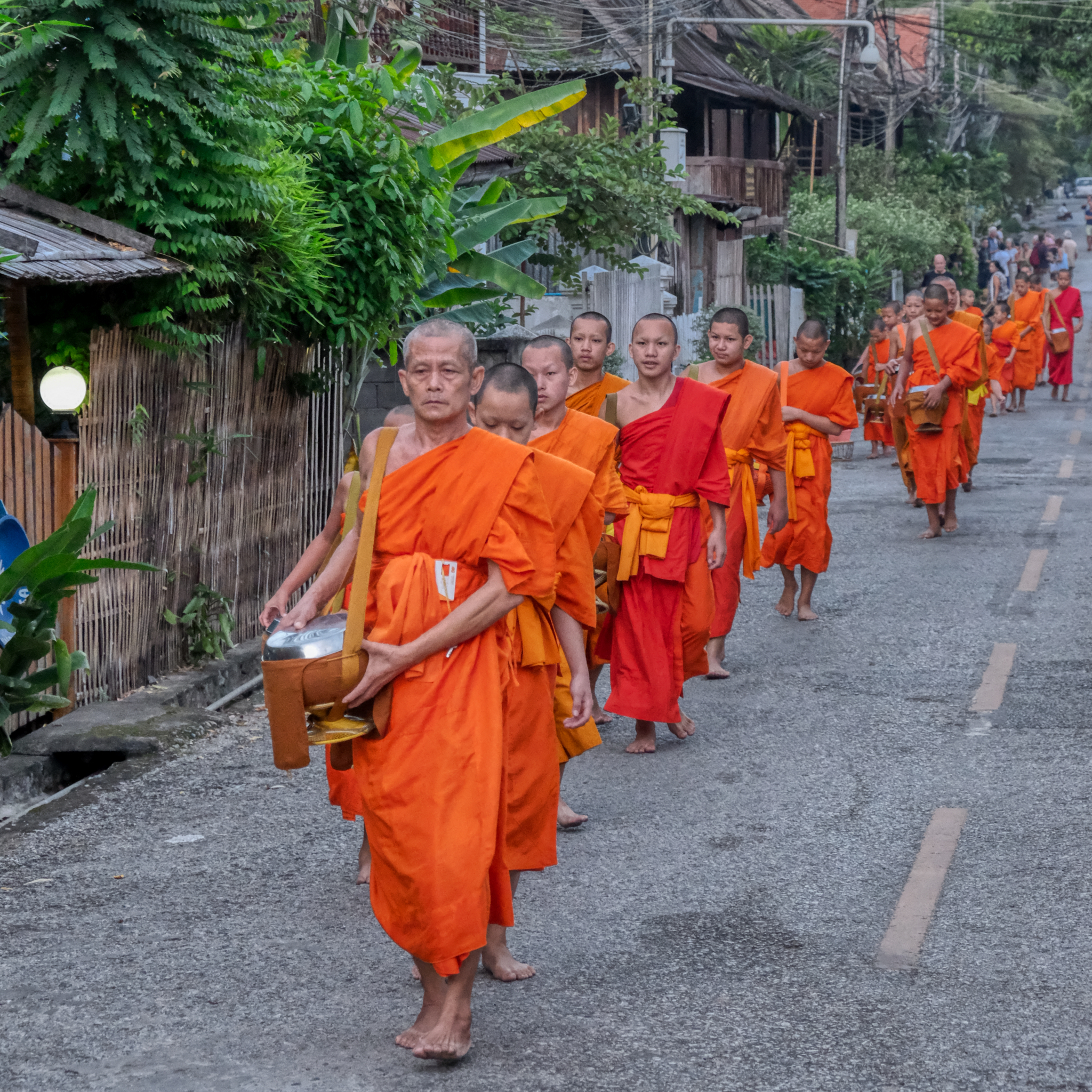 Monks on their morning walk for alms.
Monks on their morning walk for alms.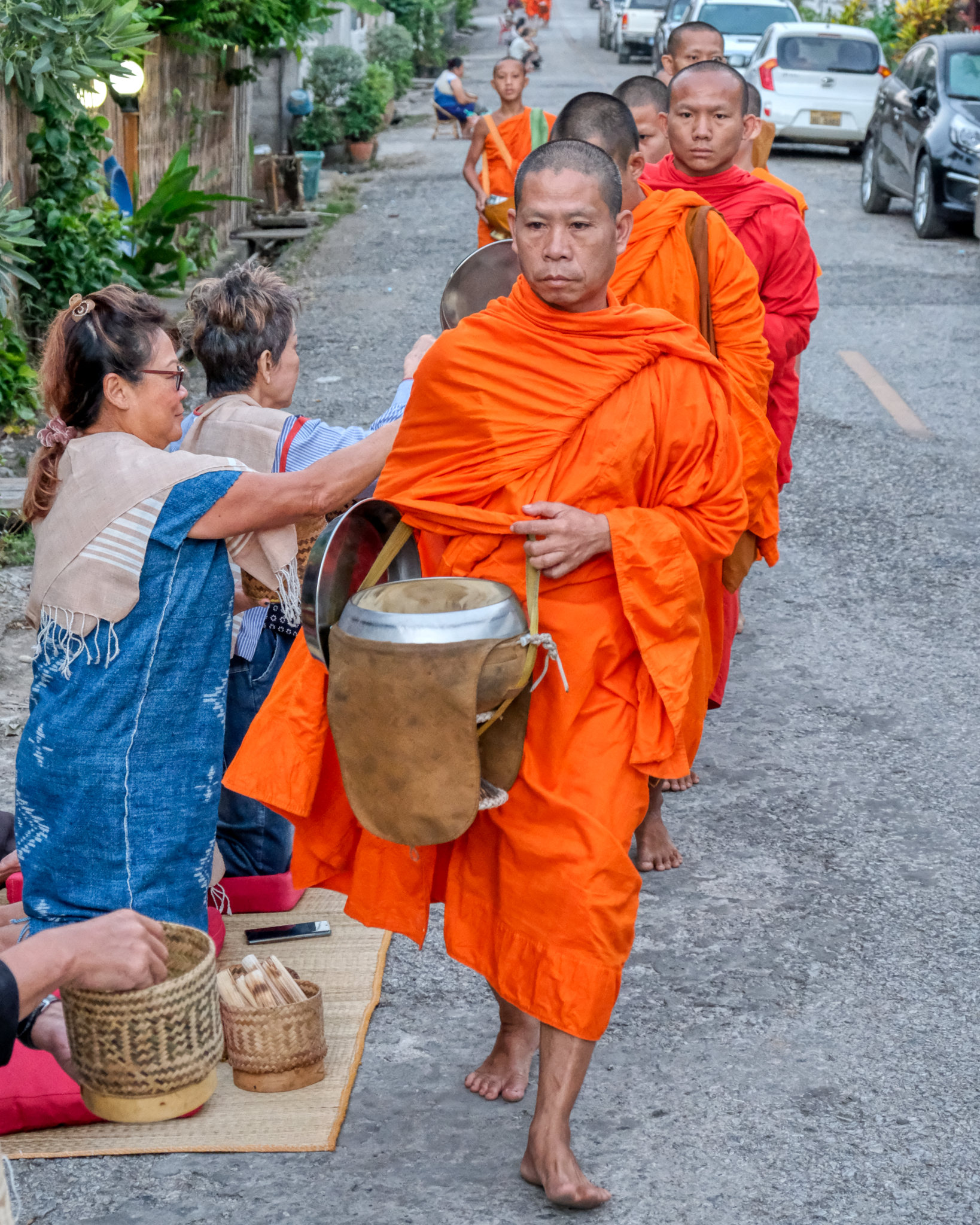 A small amount of rice is placed in each monk's bowl. Town folk take more substantial food directly to the Wats.
A small amount of rice is placed in each monk's bowl. Town folk take more substantial food directly to the Wats. 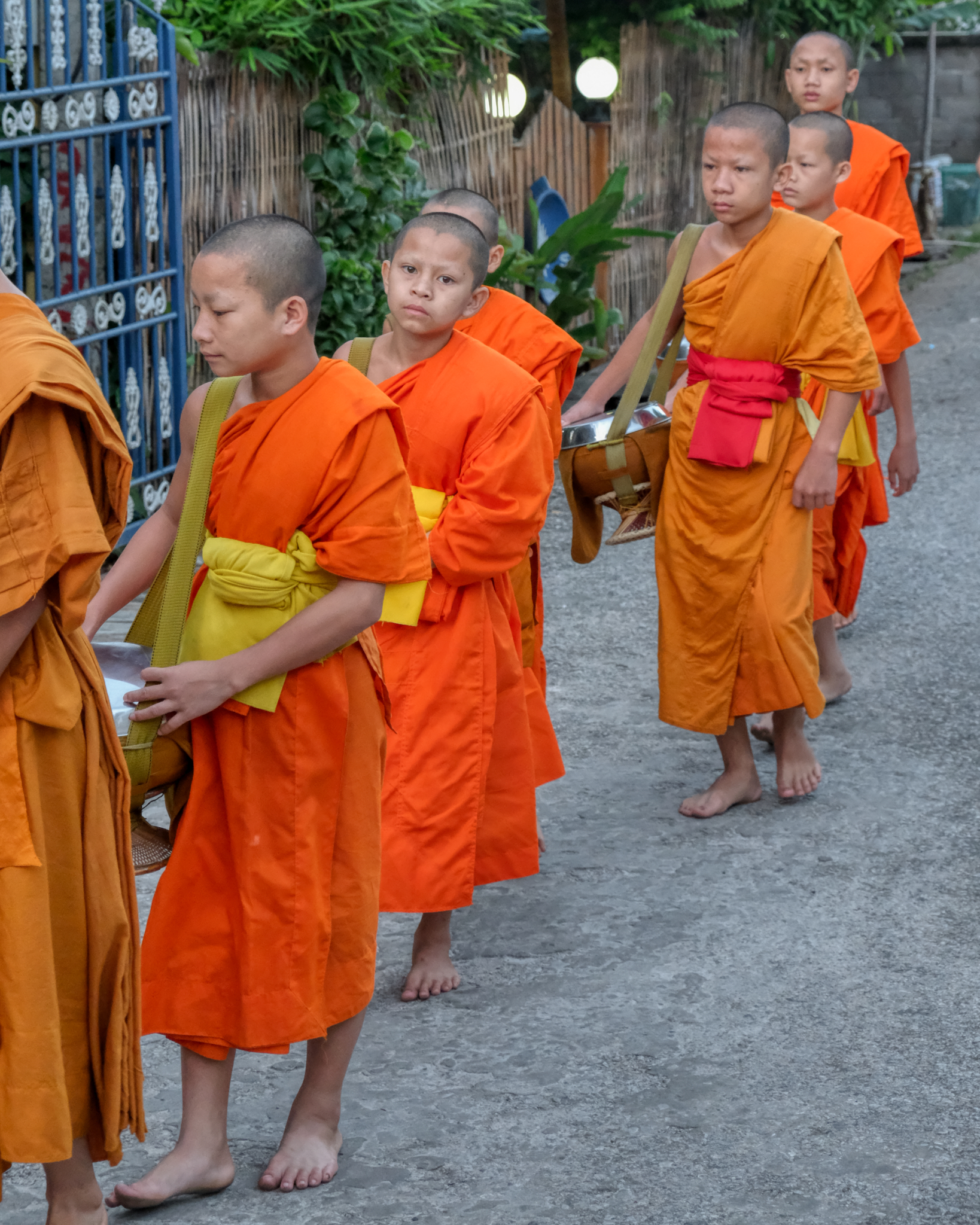 Some of the monks were surprisingly young.
Some of the monks were surprisingly young.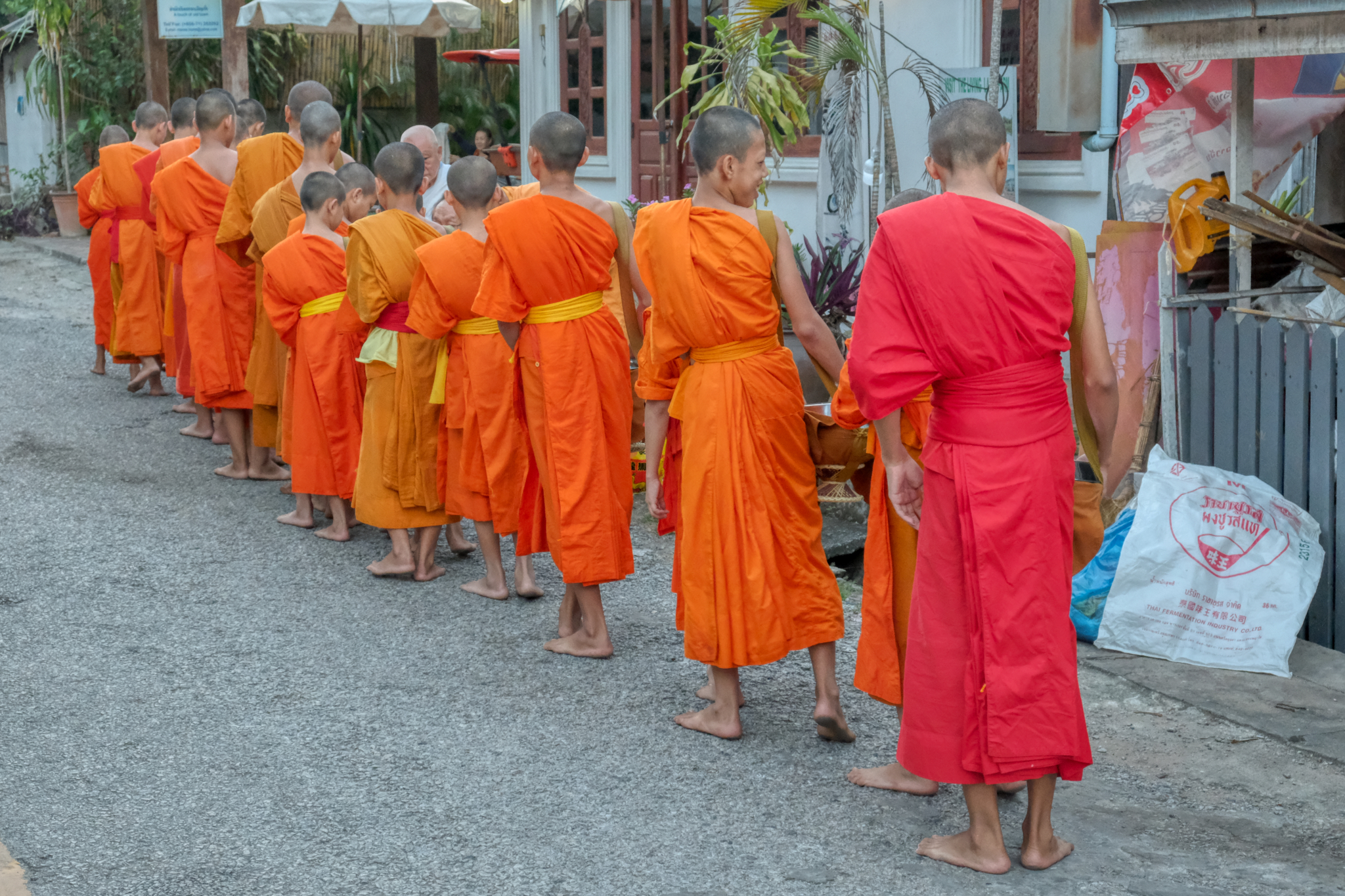 Many monks, over 200, passed our spot across from our hotel. It was a very moving and spiritual experience.
Many monks, over 200, passed our spot across from our hotel. It was a very moving and spiritual experience.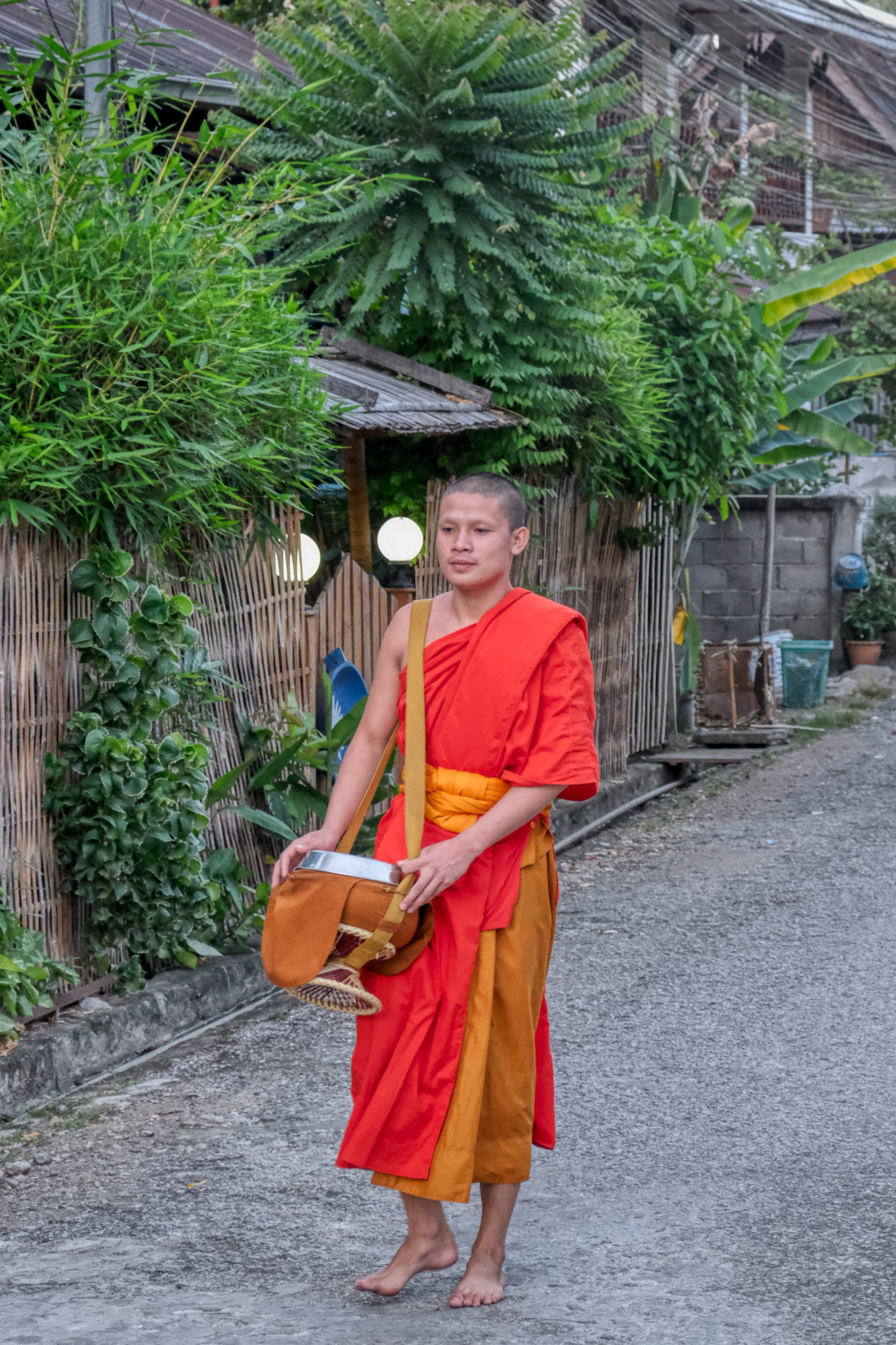 The last monk . . . he may have overslept . . . I am not sure . . .
The last monk . . . he may have overslept . . . I am not sure . . .Luang Prabang, Laos - Wat Xieng Thong
 Sunday, October 27, 2019 at 8:55AM
Sunday, October 27, 2019 at 8:55AM 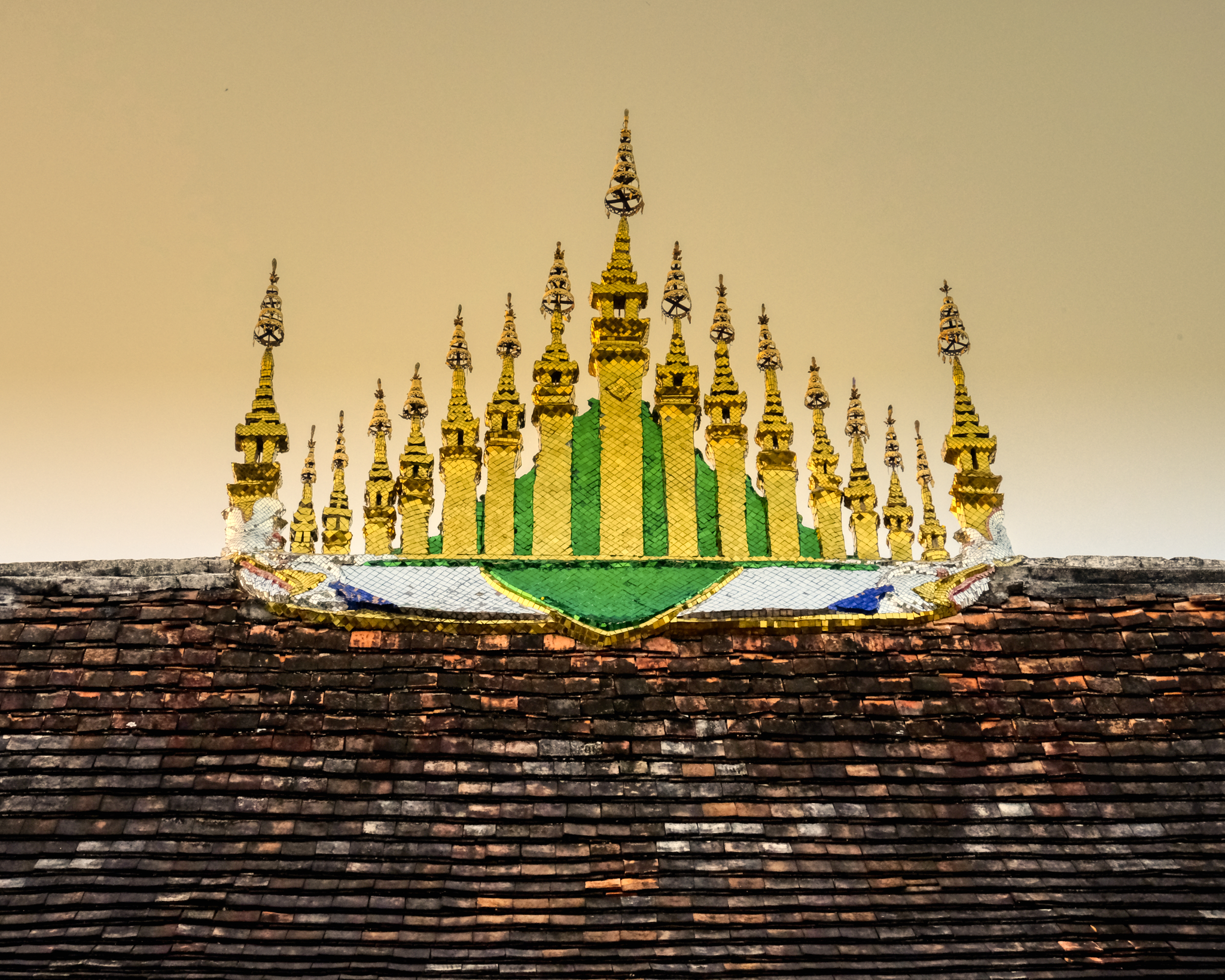
Luang Prabang is a UNESCO Word Heritage Site locate in west-central Laos. I was last here 22 years ago and always wanted to go back. I finally did . . . and I was very happy I did.
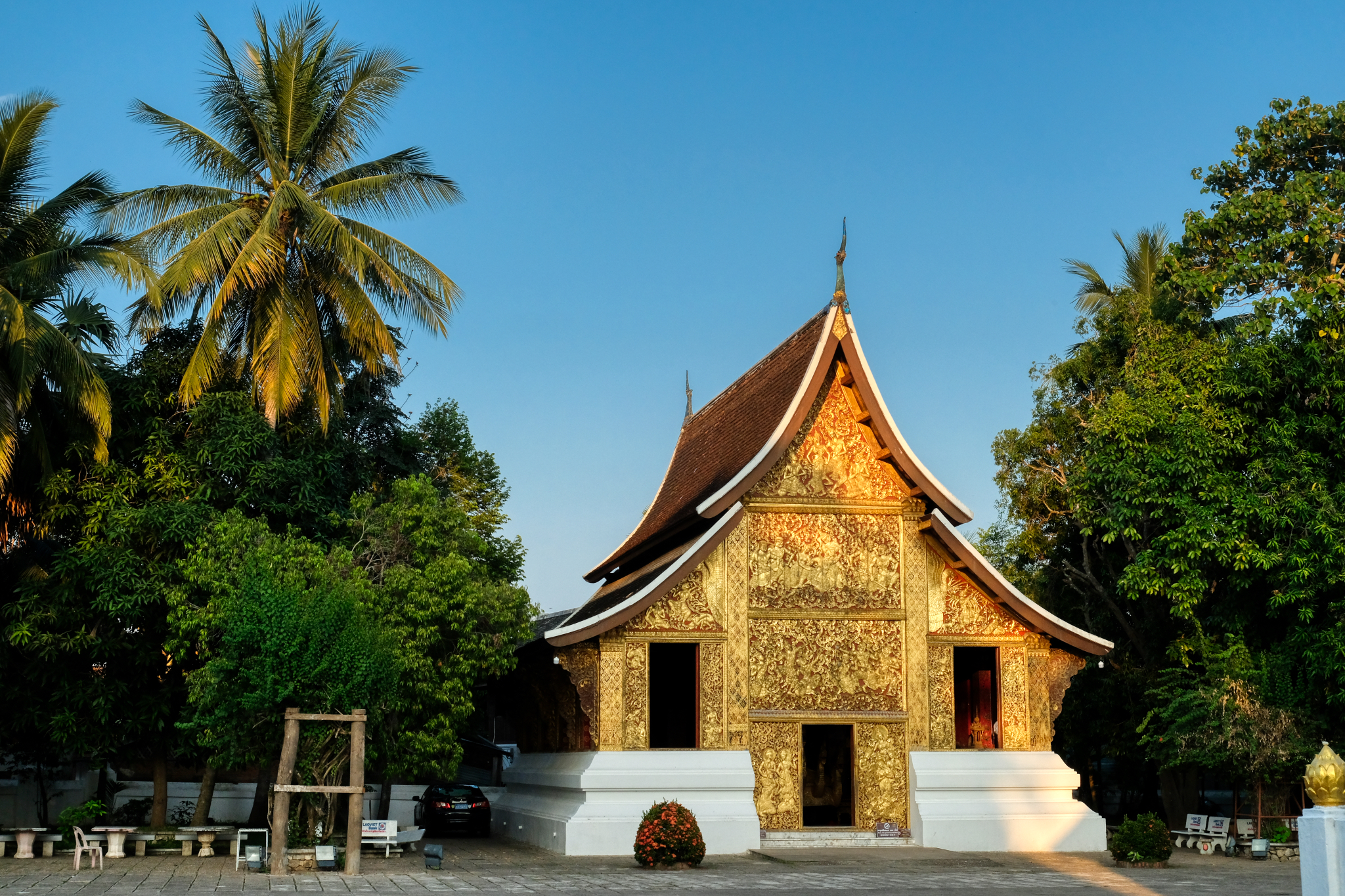
Wat Xieng Thong (c.1559) is the most revered Buddhist temple (wat) in all of Luang Prabang.
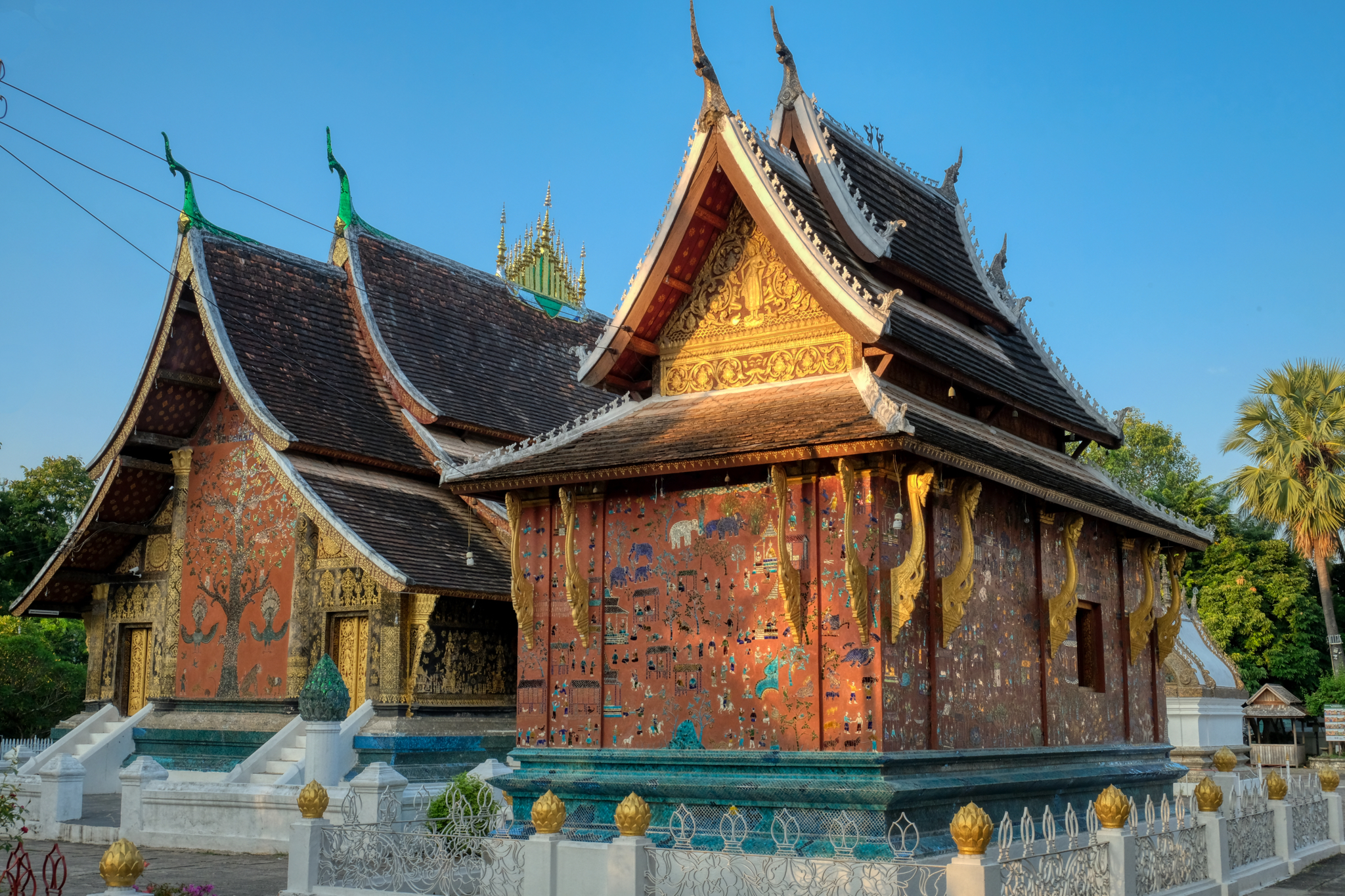
Wat Xieng Thong had many buildings within the grounds. Many had fine, primitive mosaic depictions of life in long gone times.
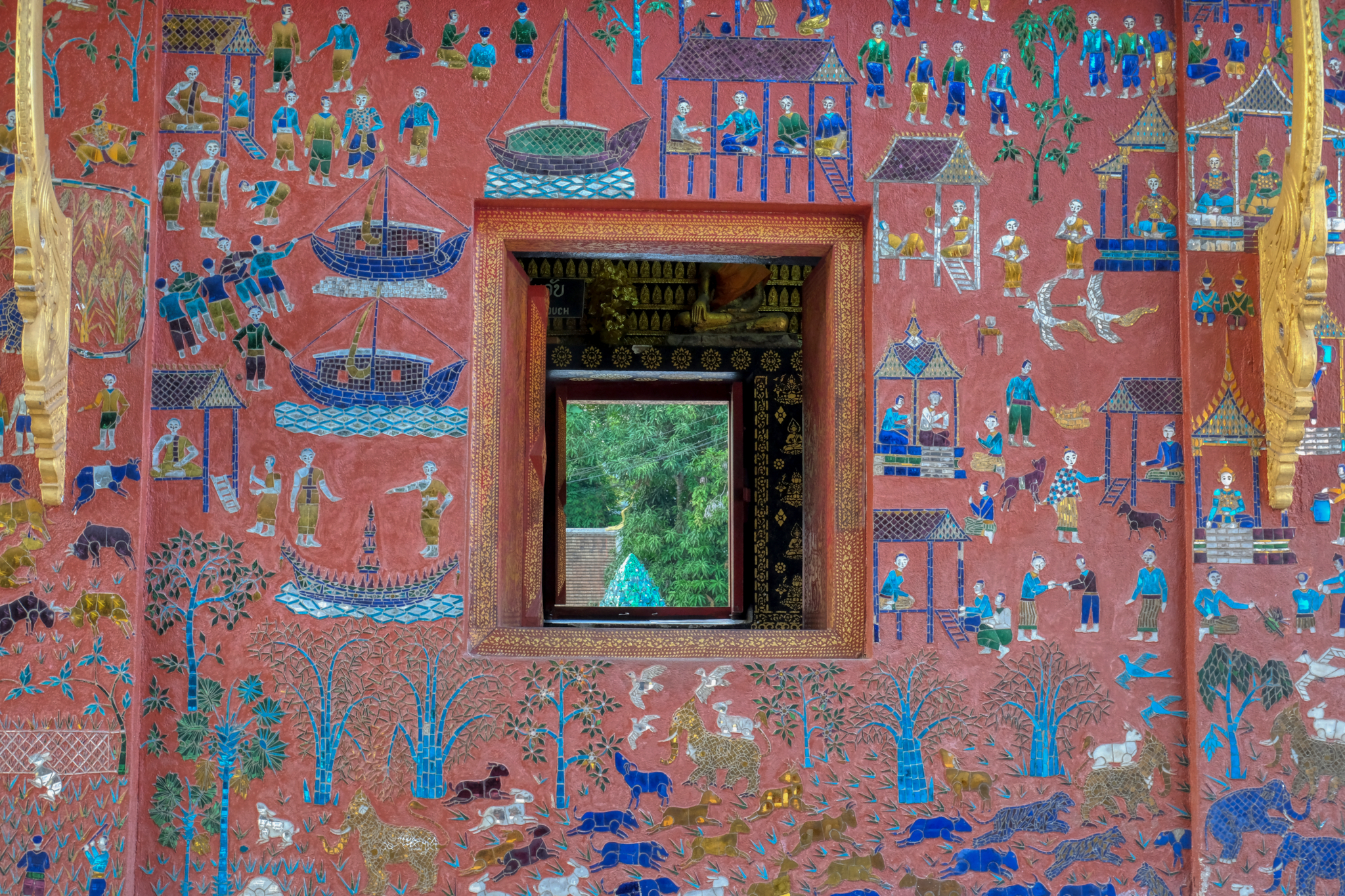 The state of preservation, restoration, love, and care of all of the wats in Luang Prabang was exemplary.
The state of preservation, restoration, love, and care of all of the wats in Luang Prabang was exemplary.
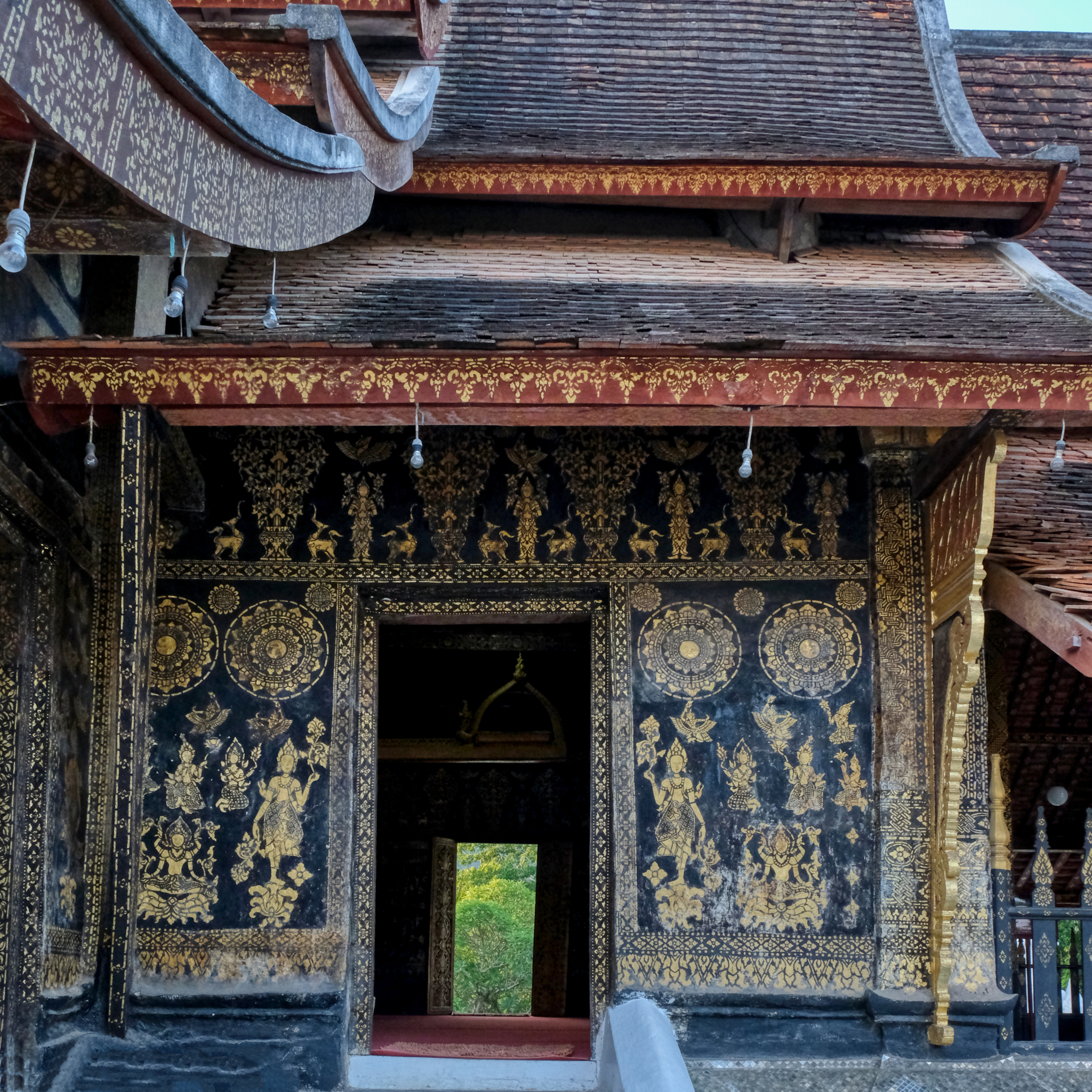 Ancient stenciled patterns on many walls.
Ancient stenciled patterns on many walls.
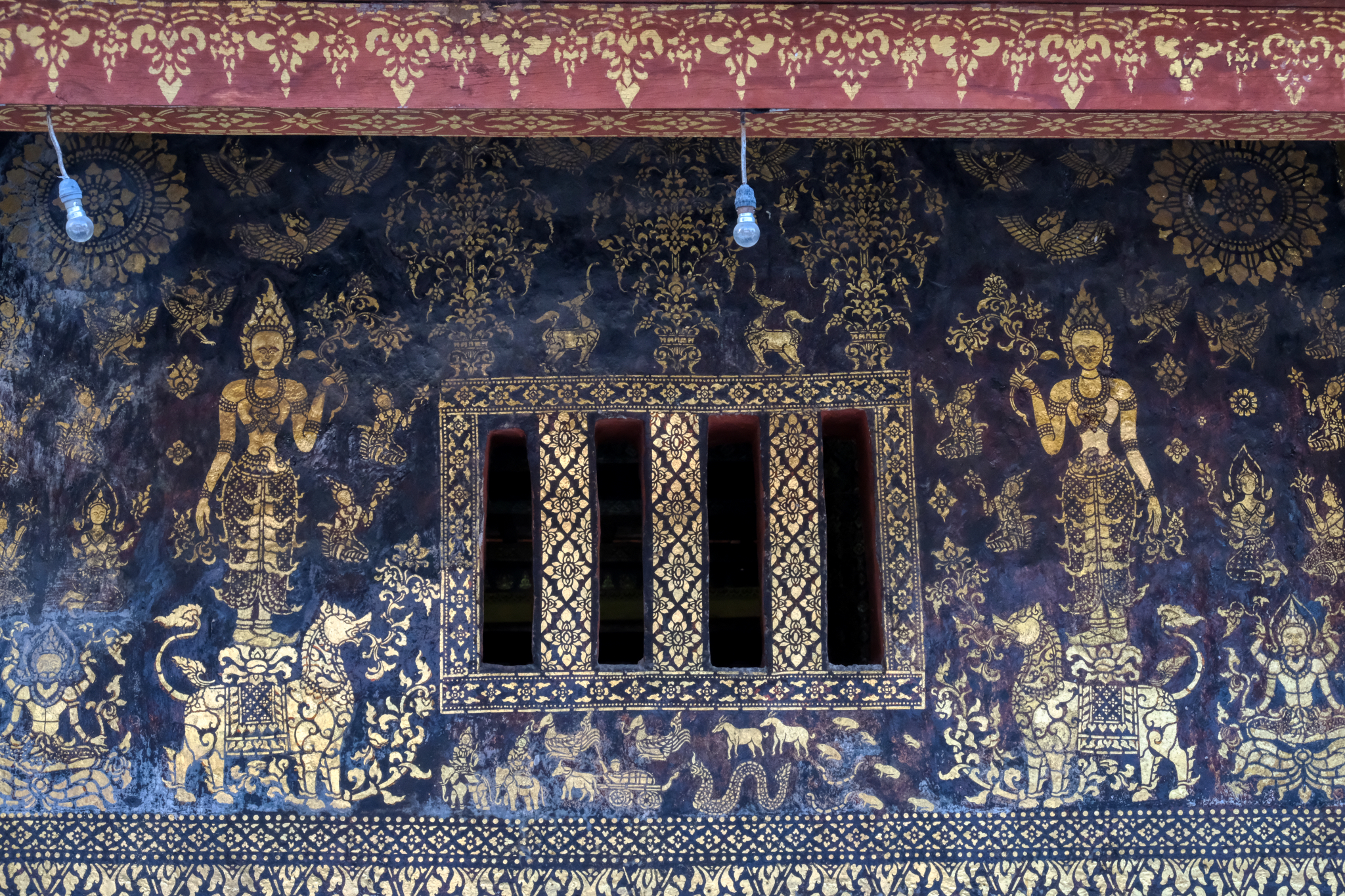 Lovely work.
Lovely work.
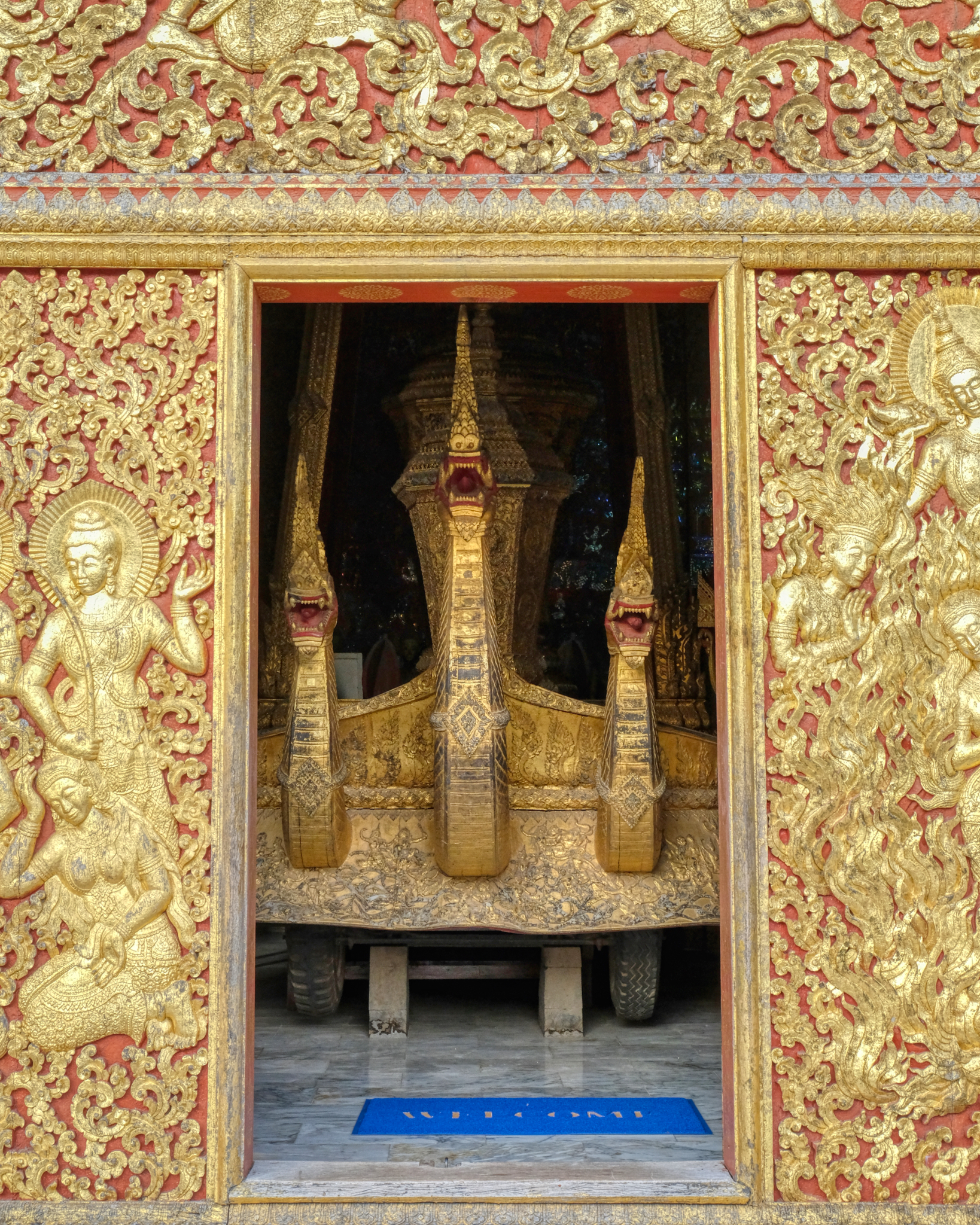 A special building was built to house this gold leaf funerary carriage.
A special building was built to house this gold leaf funerary carriage.
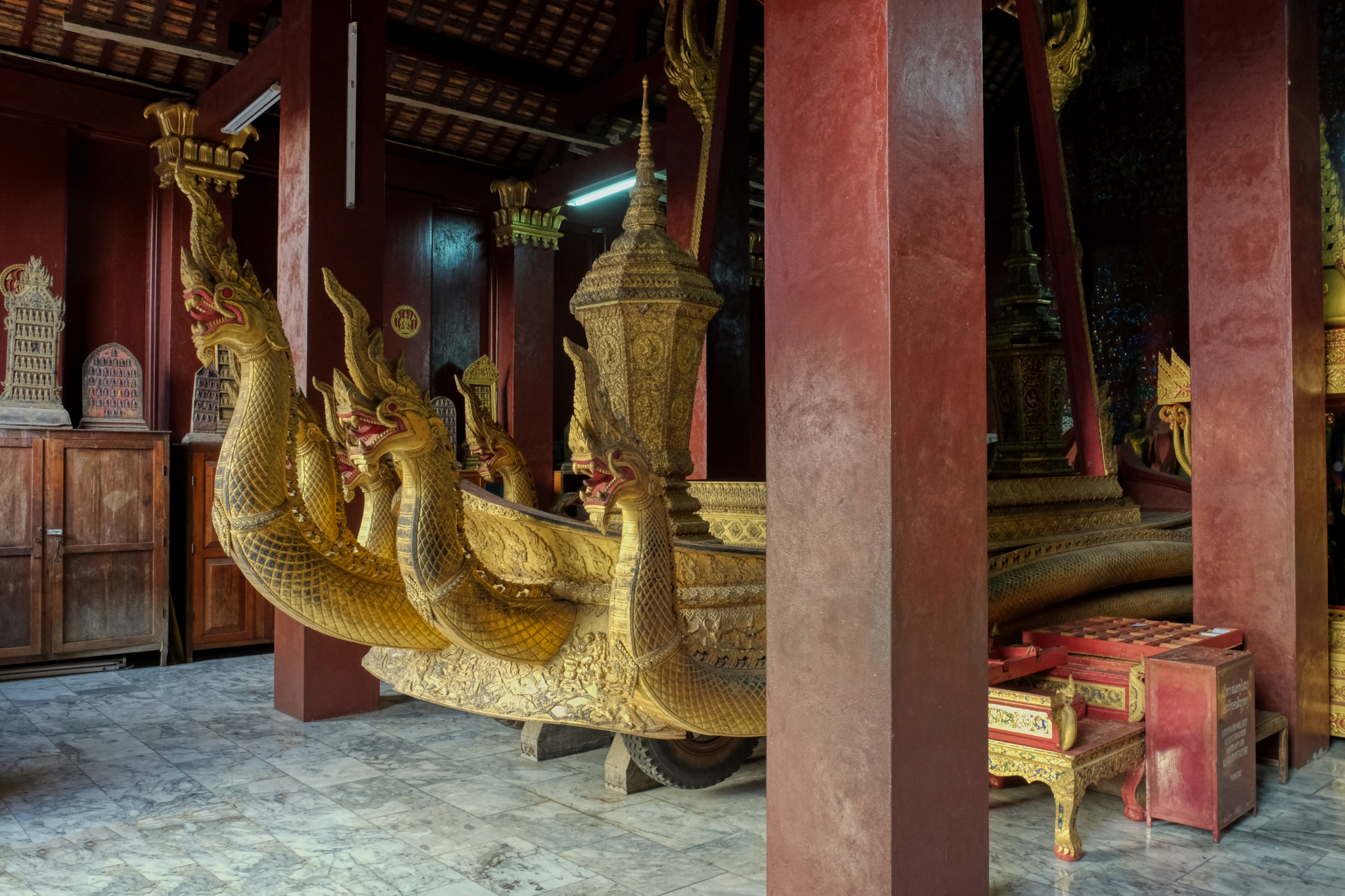 The inside of the funerary carriage temple was astounding! Such a surprise . . . and many nooks and crannies to look into.
The inside of the funerary carriage temple was astounding! Such a surprise . . . and many nooks and crannies to look into.
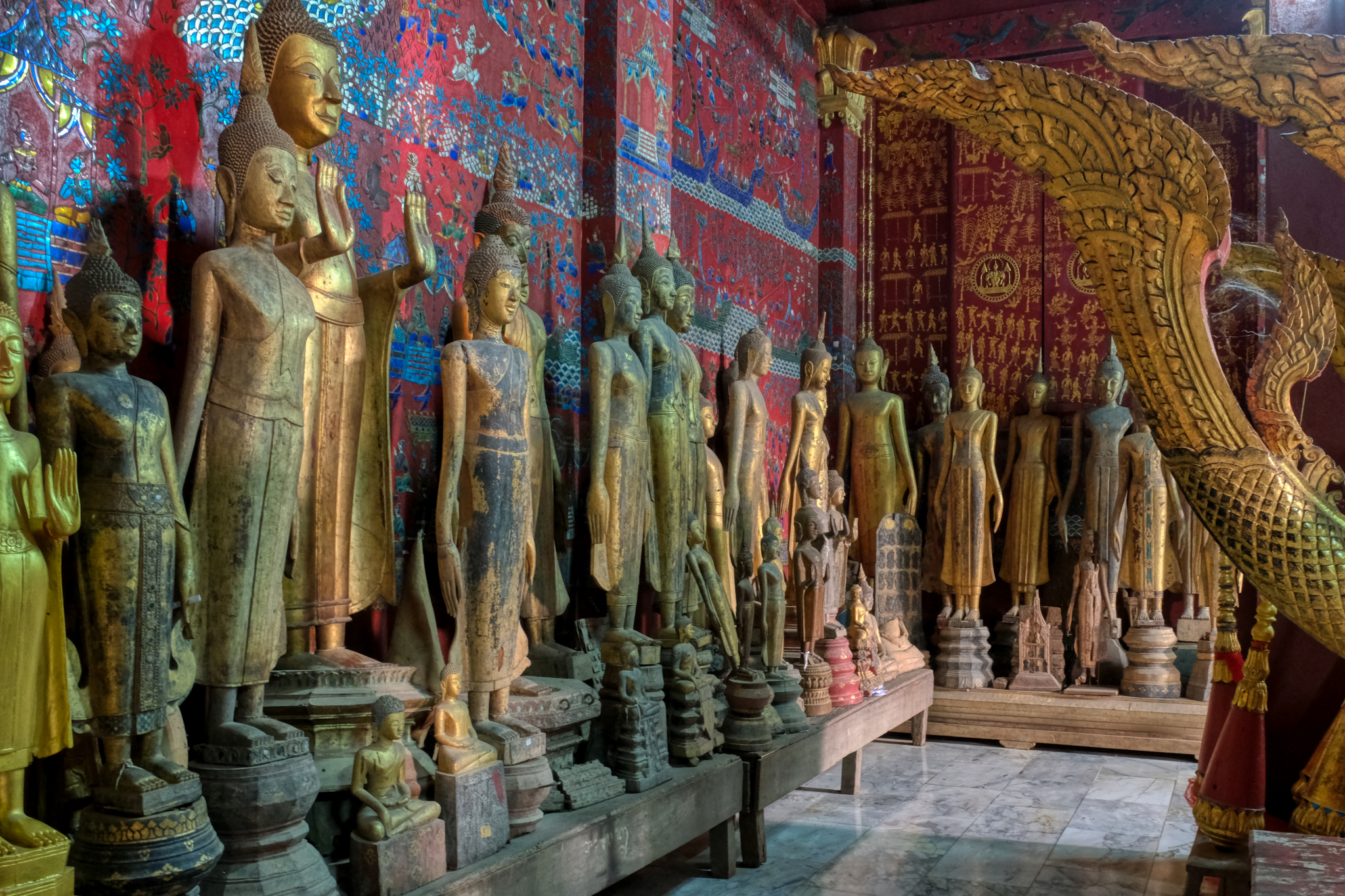 A mosaic covered wall with a line of ancient Buddha statuary.
A mosaic covered wall with a line of ancient Buddha statuary.
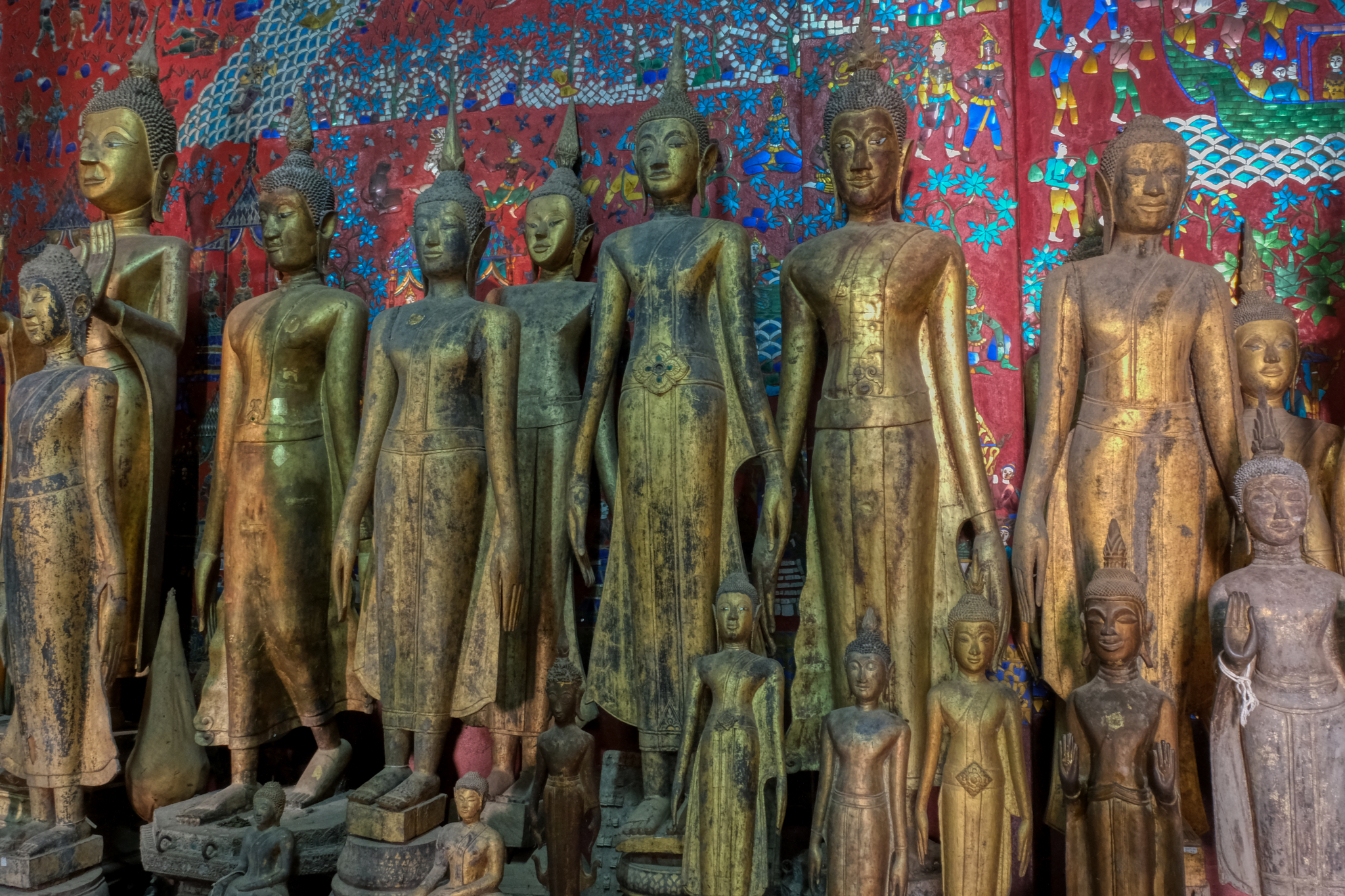 Spiritual simplicity depicted.
Spiritual simplicity depicted.
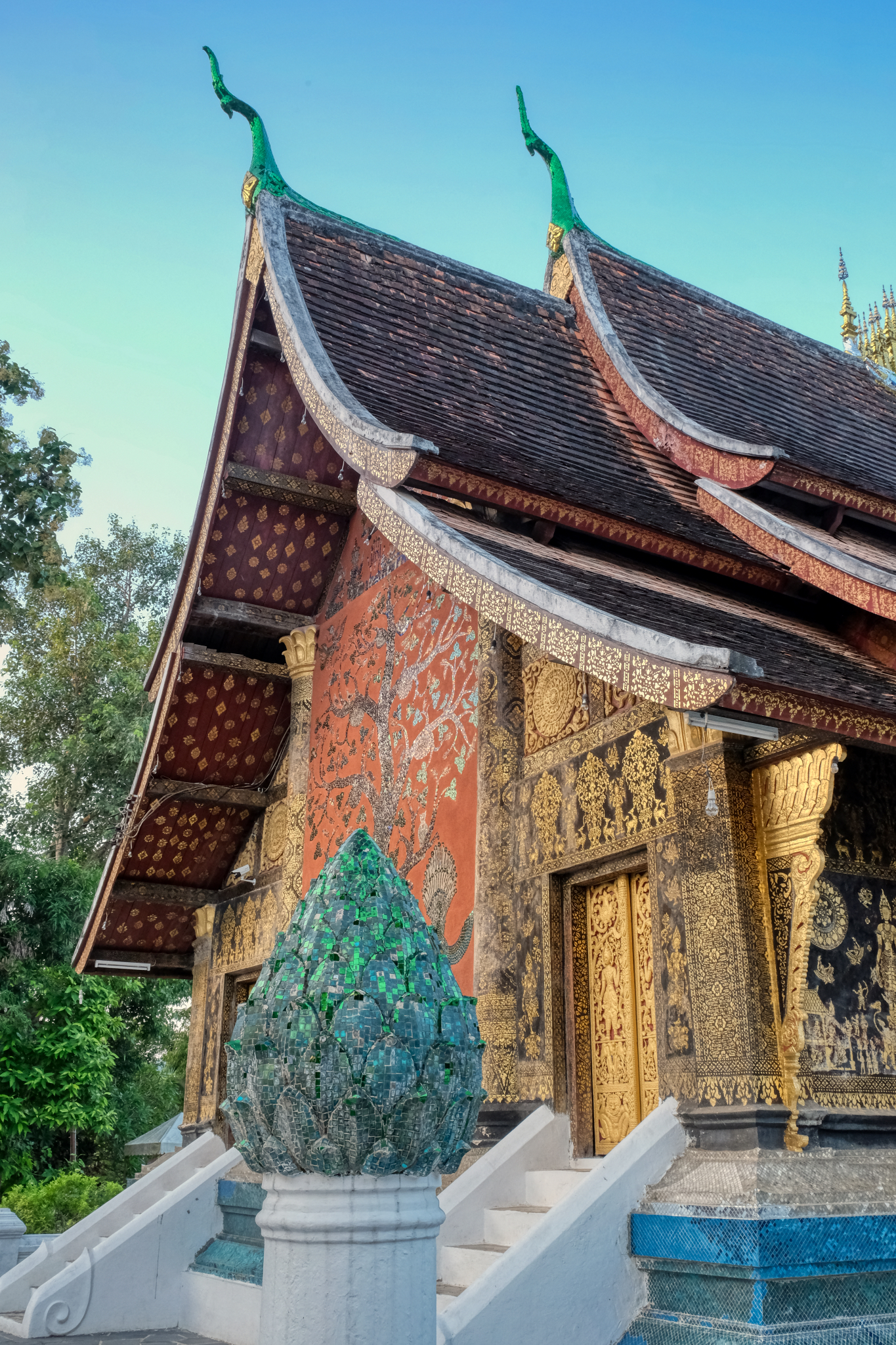 There were many structures to explore at this wat. I came twice with my camera as it was very close to our hotel.
There were many structures to explore at this wat. I came twice with my camera as it was very close to our hotel.
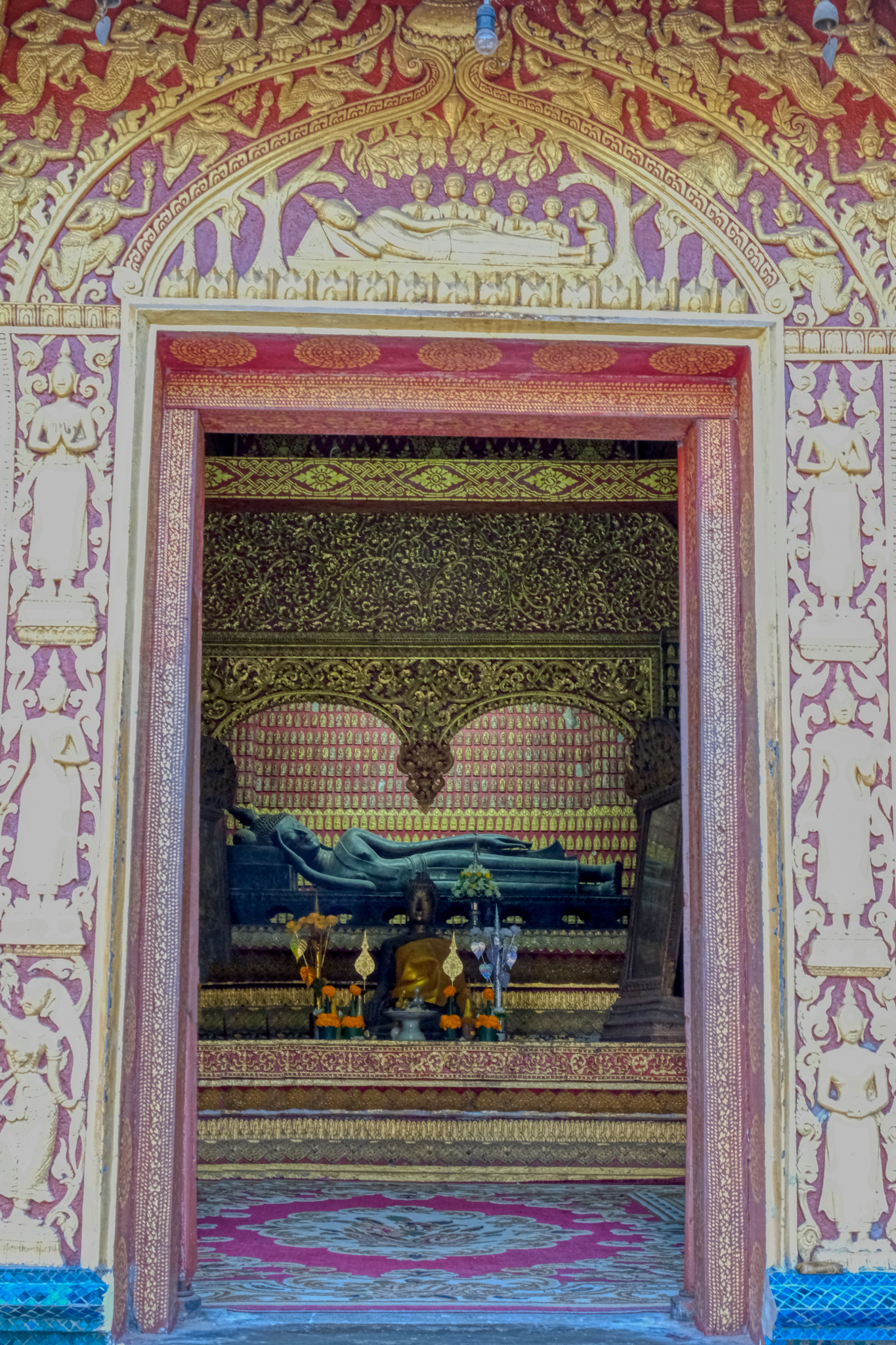 An inviting open temple.
An inviting open temple.
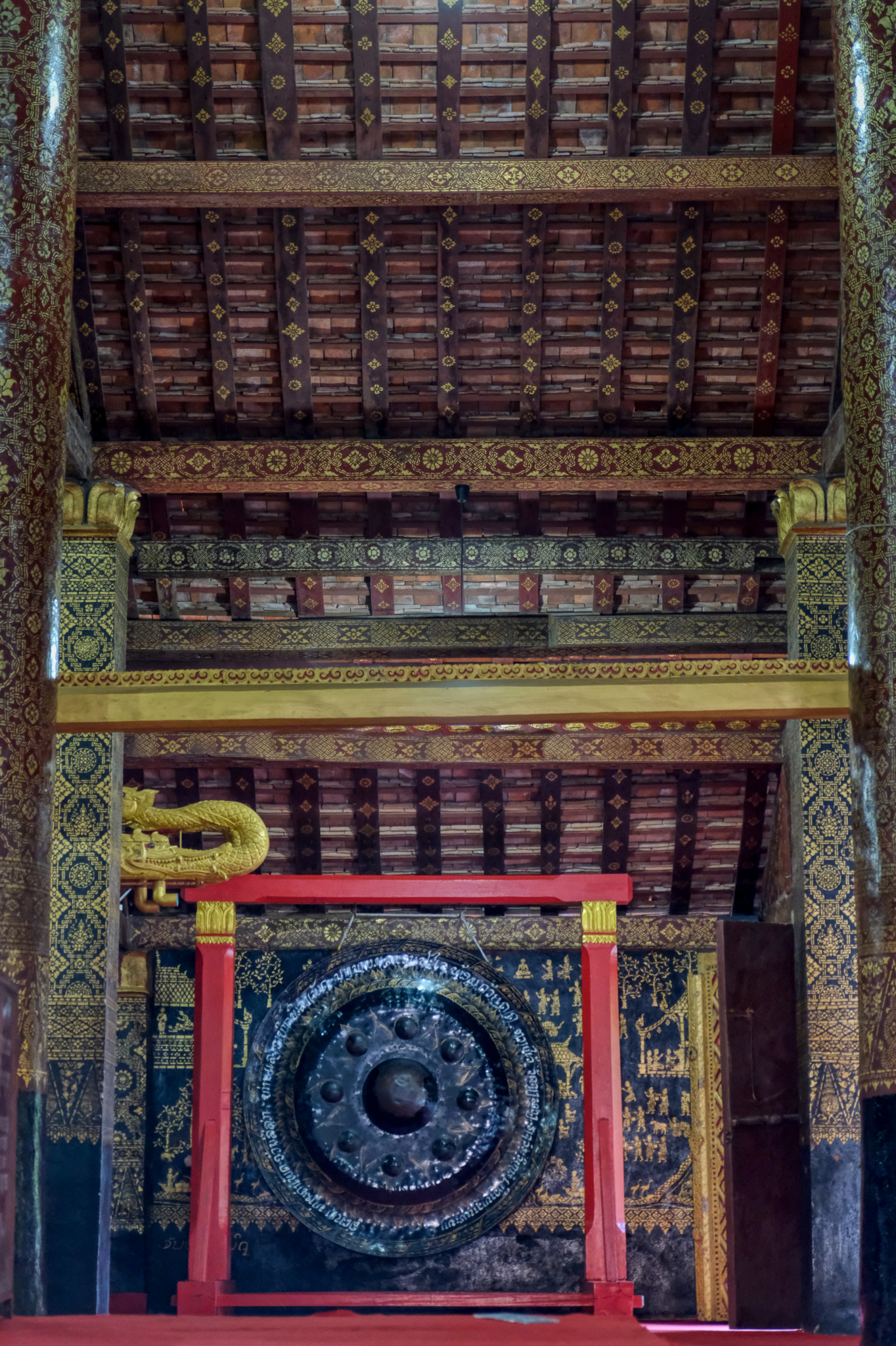 A temple gong.
A temple gong.
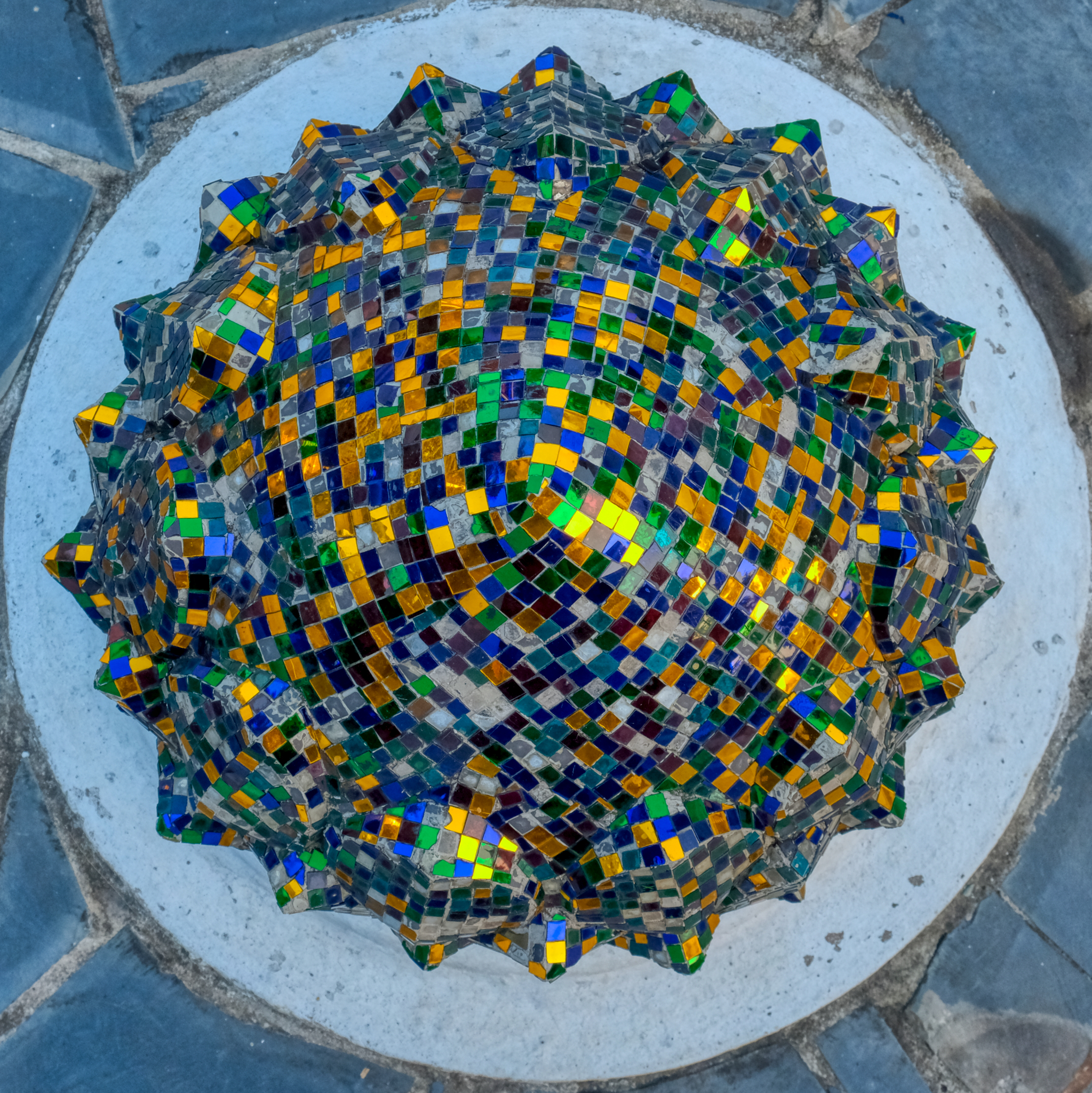 Shiny outdoor decoration.
Shiny outdoor decoration.
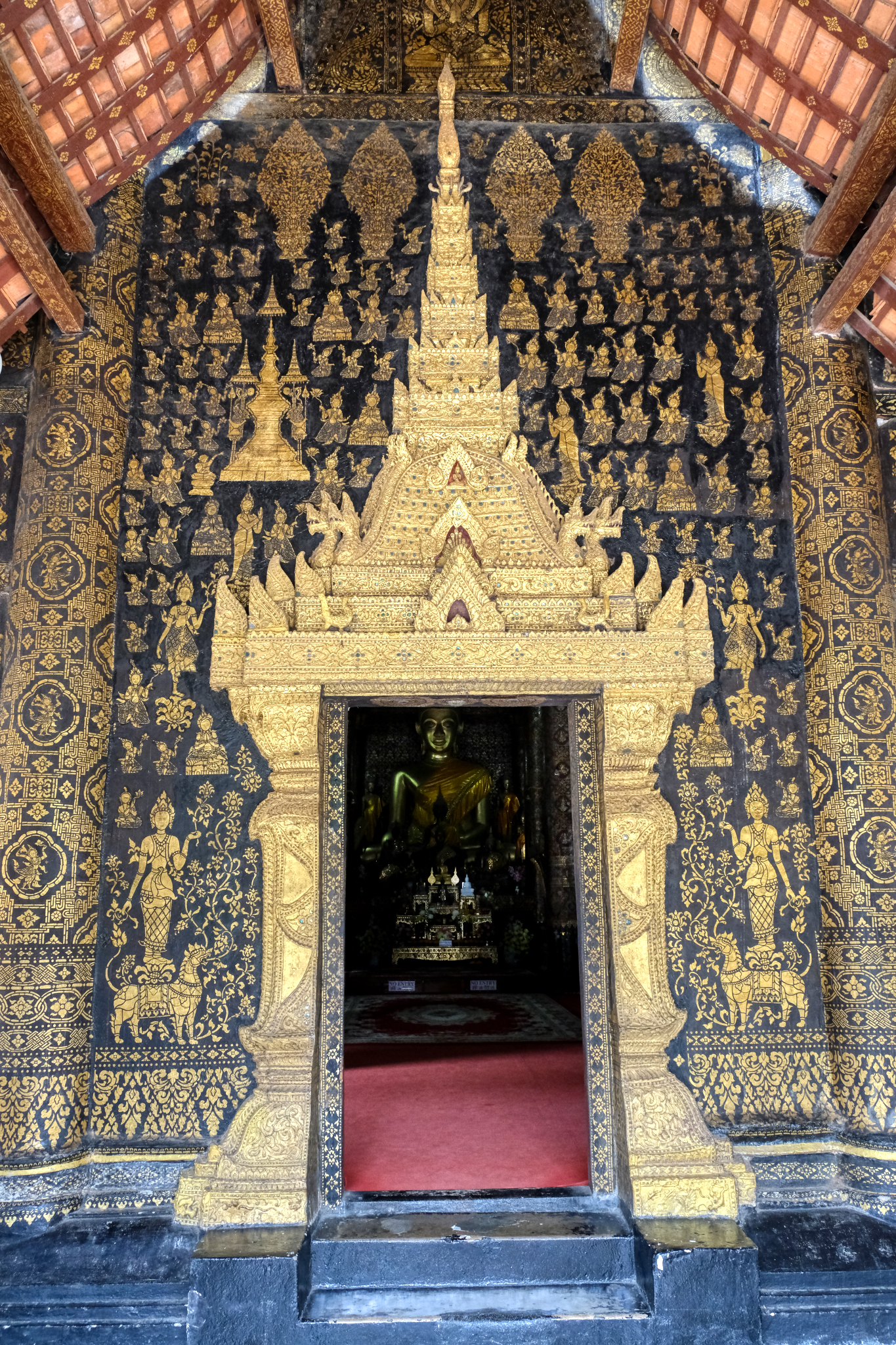 This looks inviting . . .
This looks inviting . . .
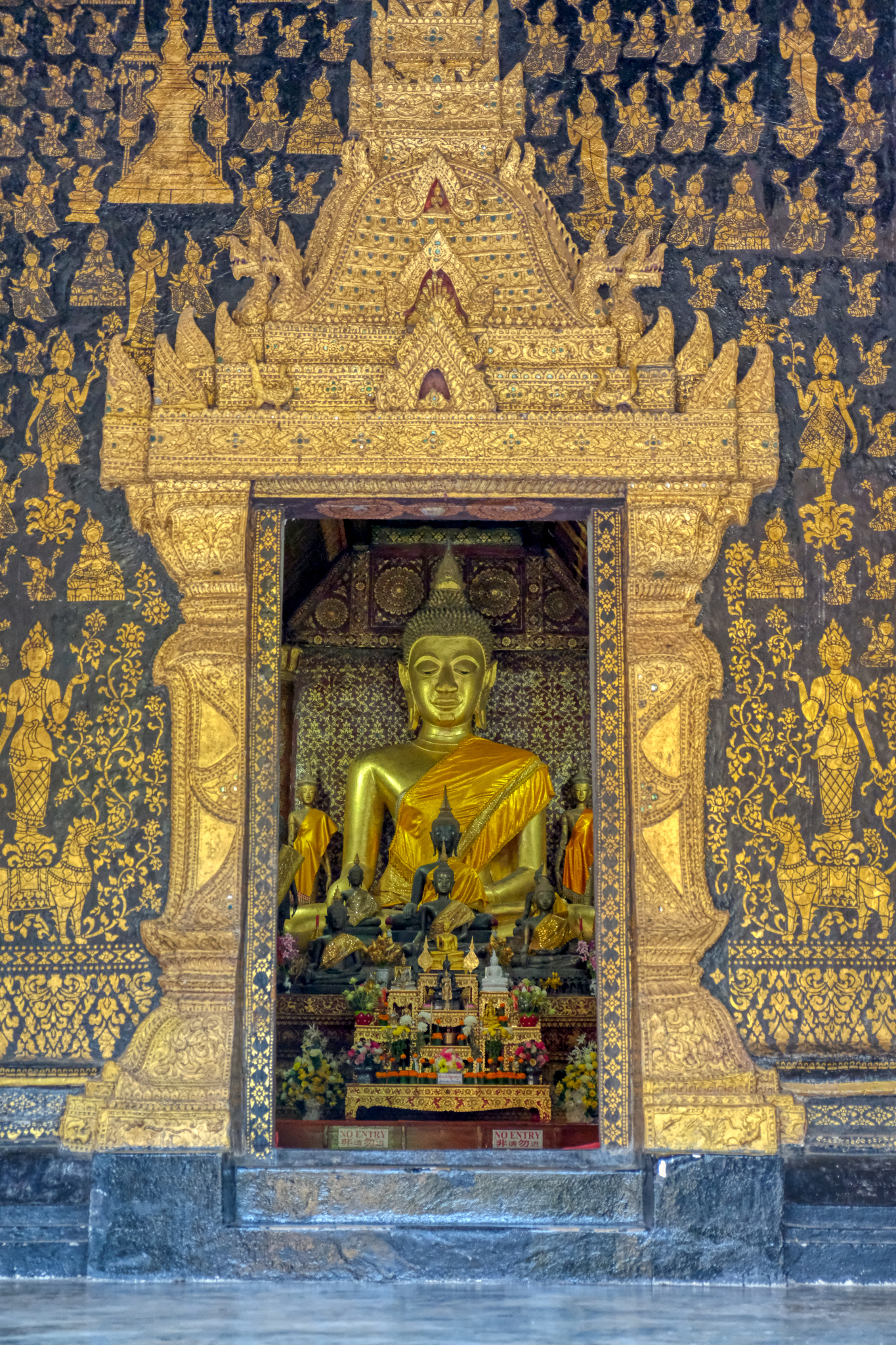 A view to the Buddha altar in the main hall. Magnificent architecture.
A view to the Buddha altar in the main hall. Magnificent architecture.
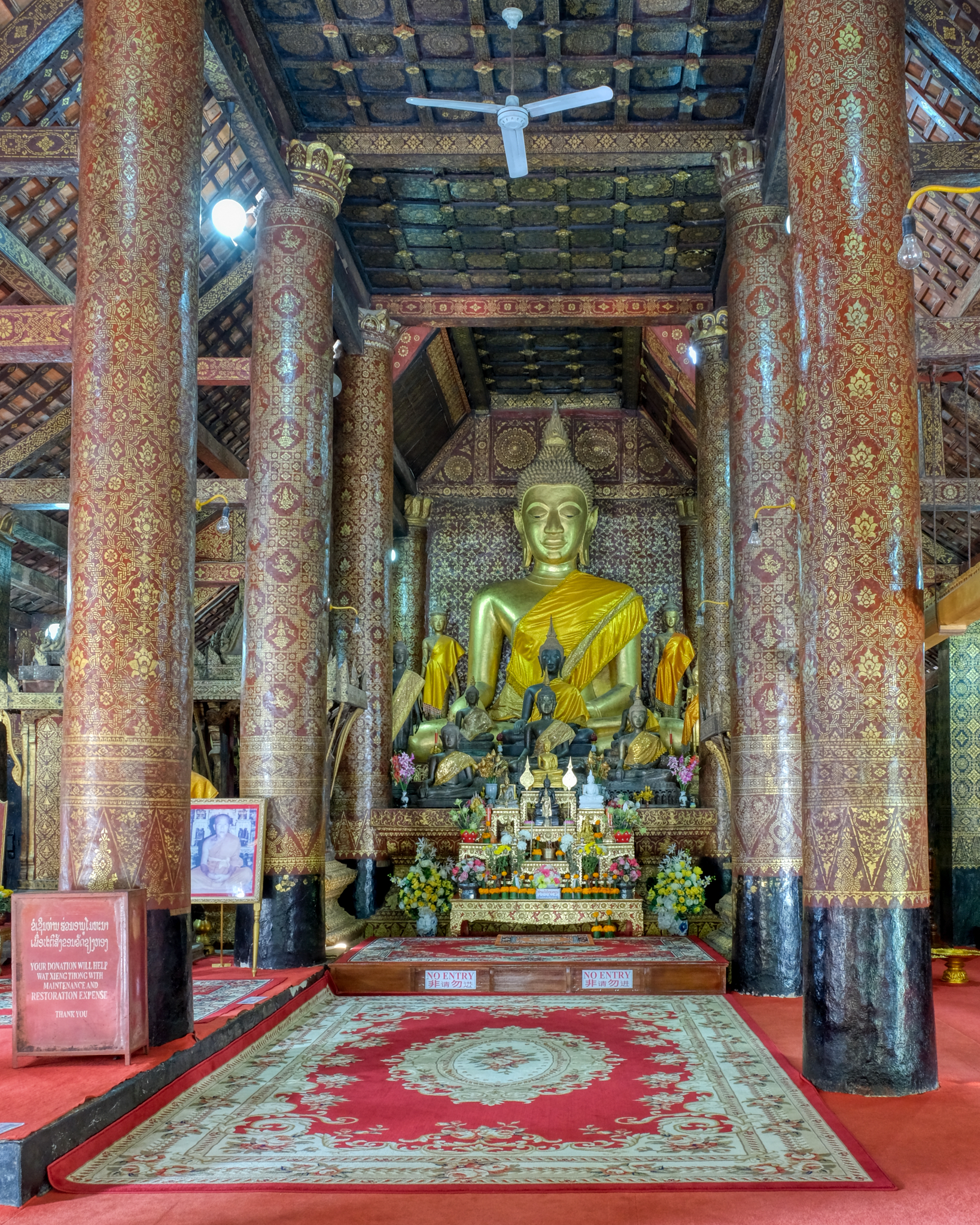 The main altar of Wat Xieng Thong.
The main altar of Wat Xieng Thong.
 A favorite altar.
A favorite altar.
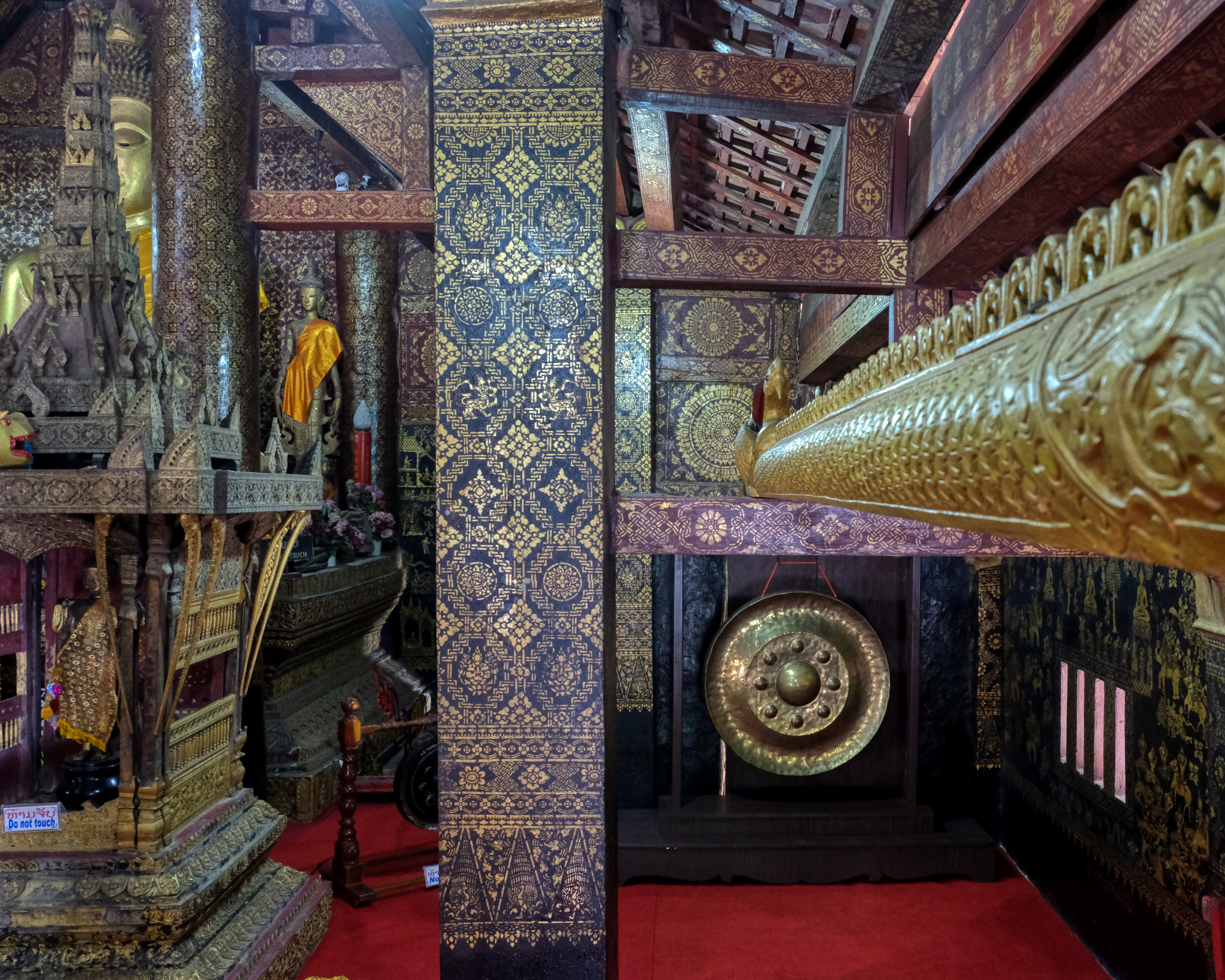 Rich detail in the main hall decoration.
Rich detail in the main hall decoration.
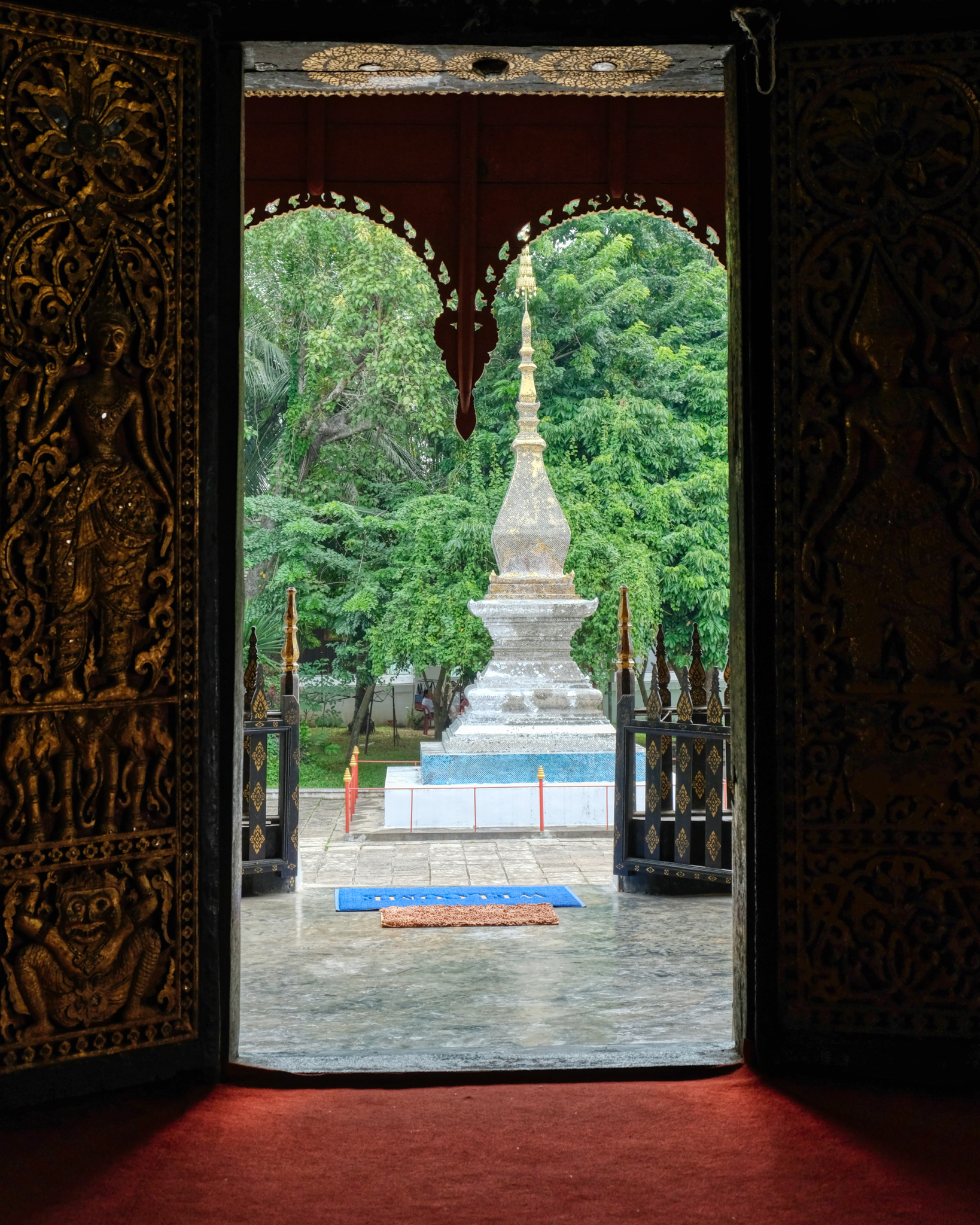 A view from inside the main hall to a glowing chedi on the temple grounds.
A view from inside the main hall to a glowing chedi on the temple grounds.
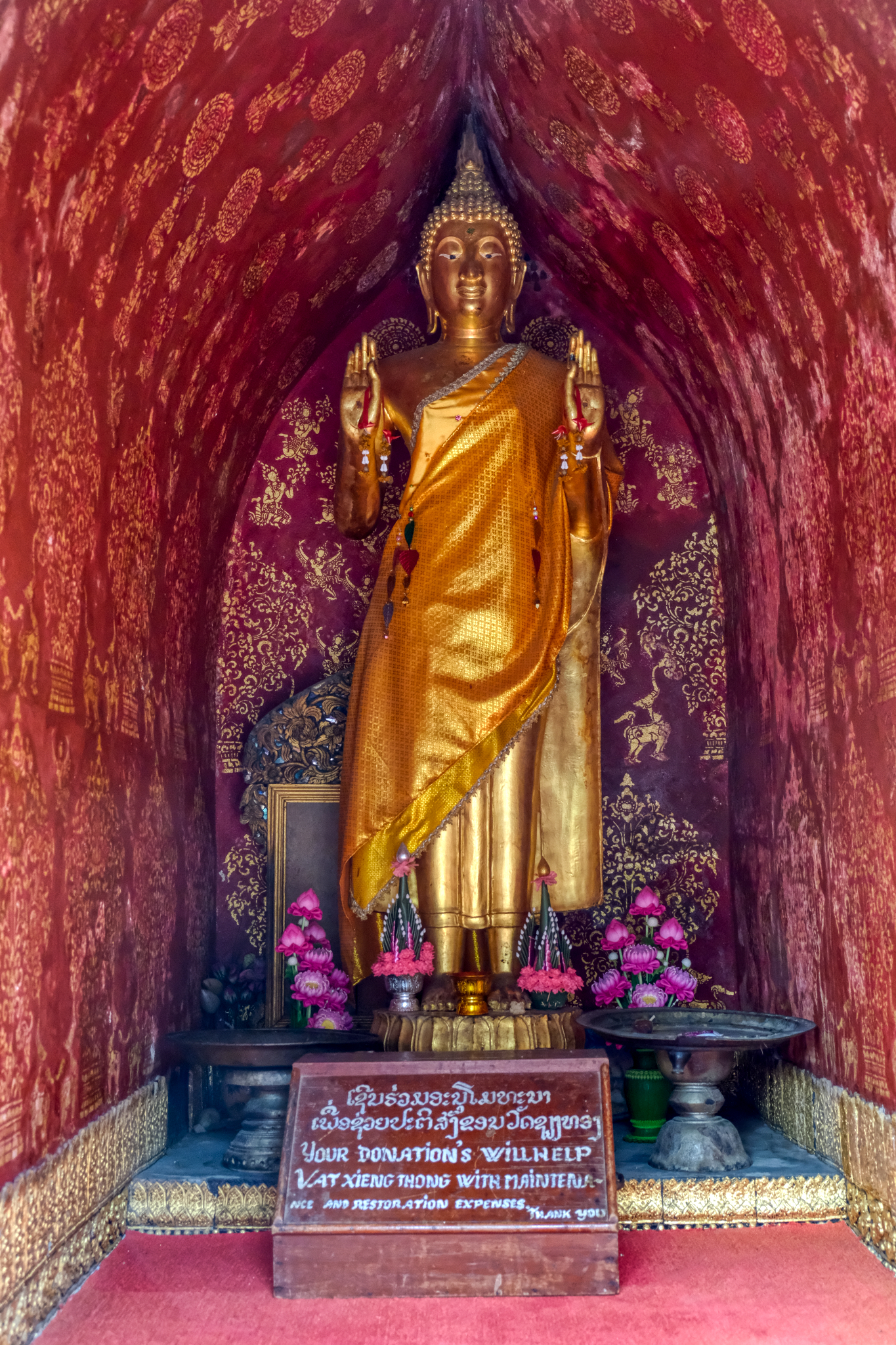 A lovely standing Buddha in a small grotto.
A lovely standing Buddha in a small grotto.
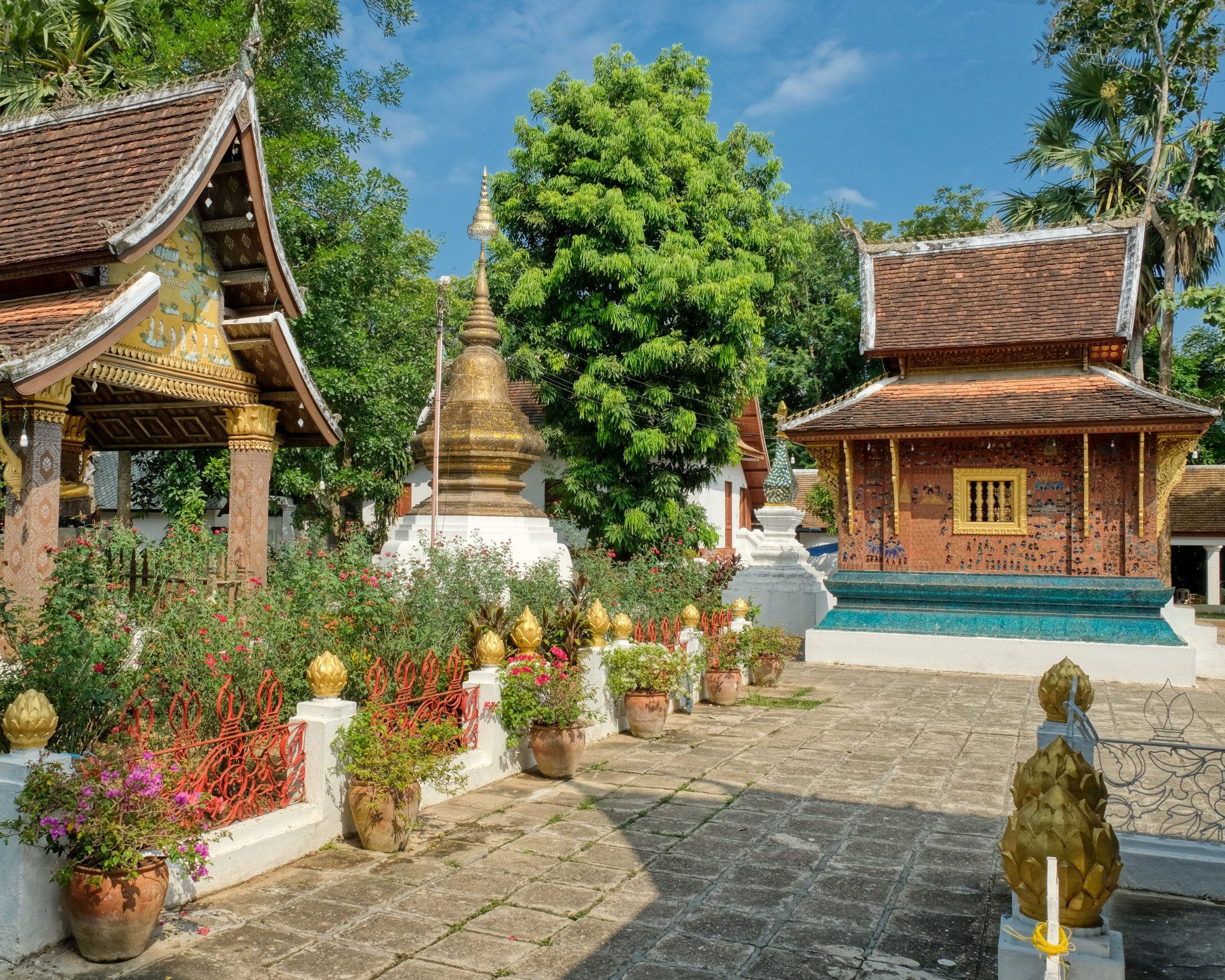 Such a pleasant and peaceful place.
Such a pleasant and peaceful place.
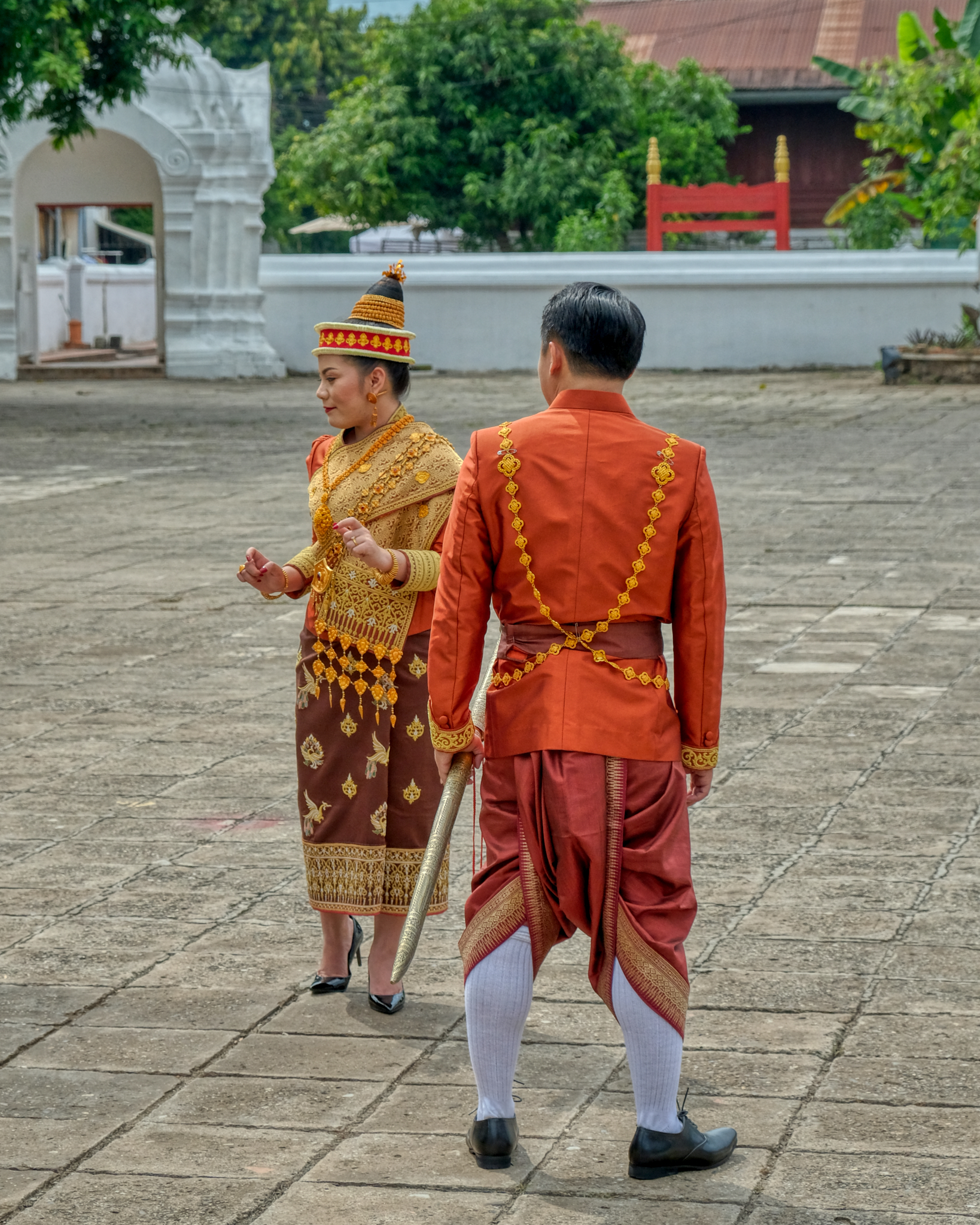 It was my good luck to be at the temple when a soon-to-be-married couple showed up for their bridal photo shoot in traditional Lao costume.
It was my good luck to be at the temple when a soon-to-be-married couple showed up for their bridal photo shoot in traditional Lao costume.
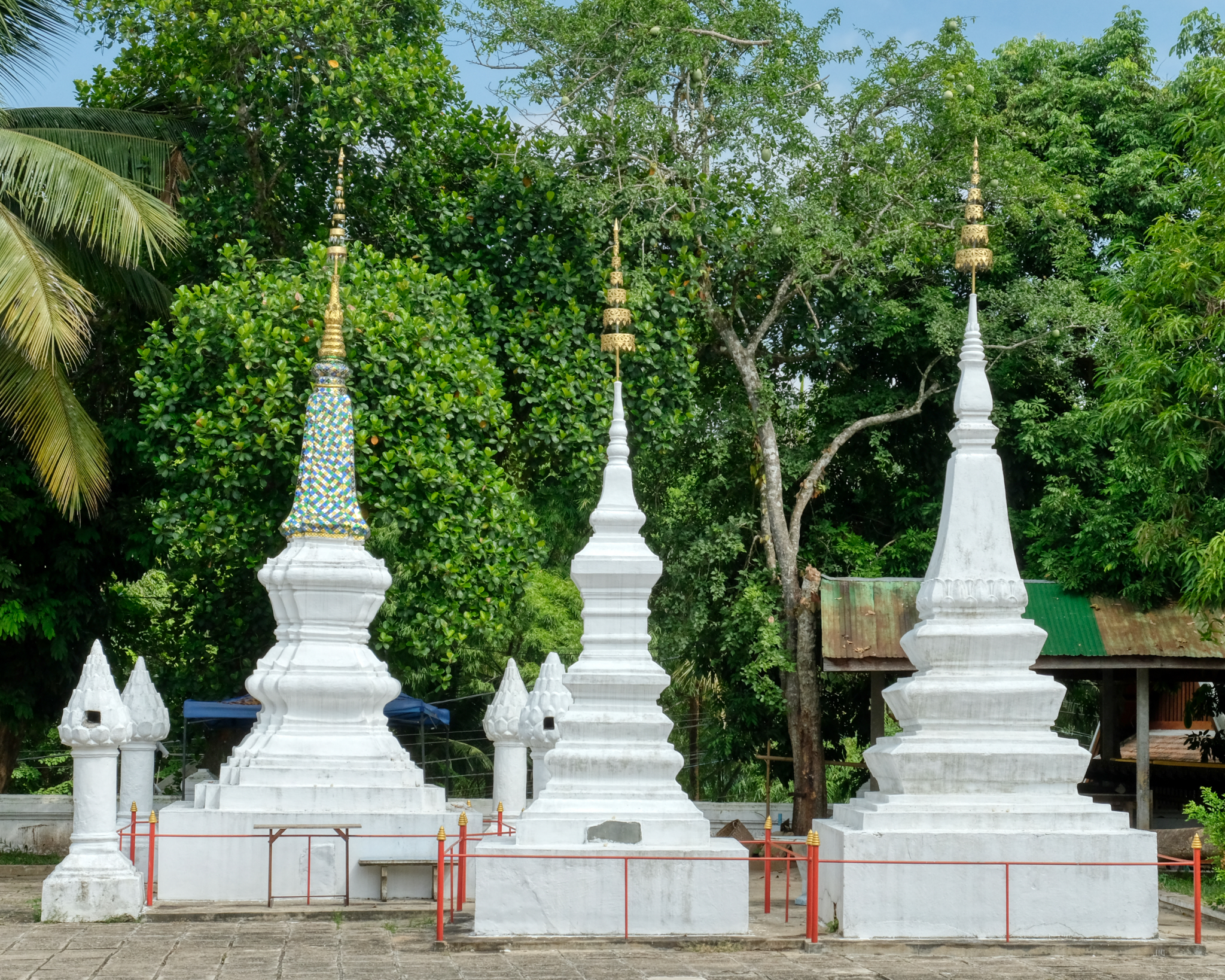 These chedis likely contain the remains of revered monks, abbots, and those who have made big donations to this wat.
These chedis likely contain the remains of revered monks, abbots, and those who have made big donations to this wat.
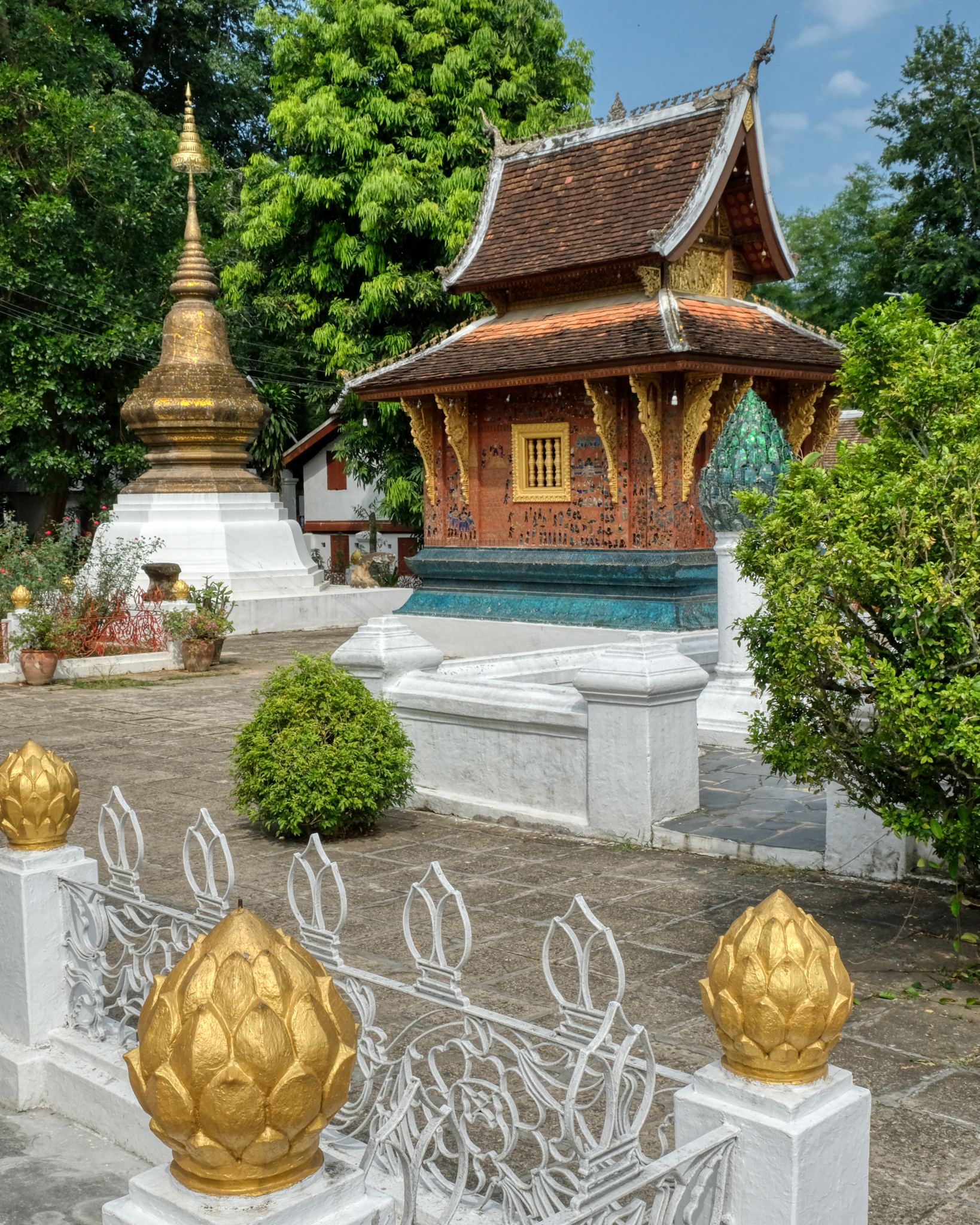 I have been to many, many Buddhist temples in many countries, but this one is one of the most beautiful.
I have been to many, many Buddhist temples in many countries, but this one is one of the most beautiful.
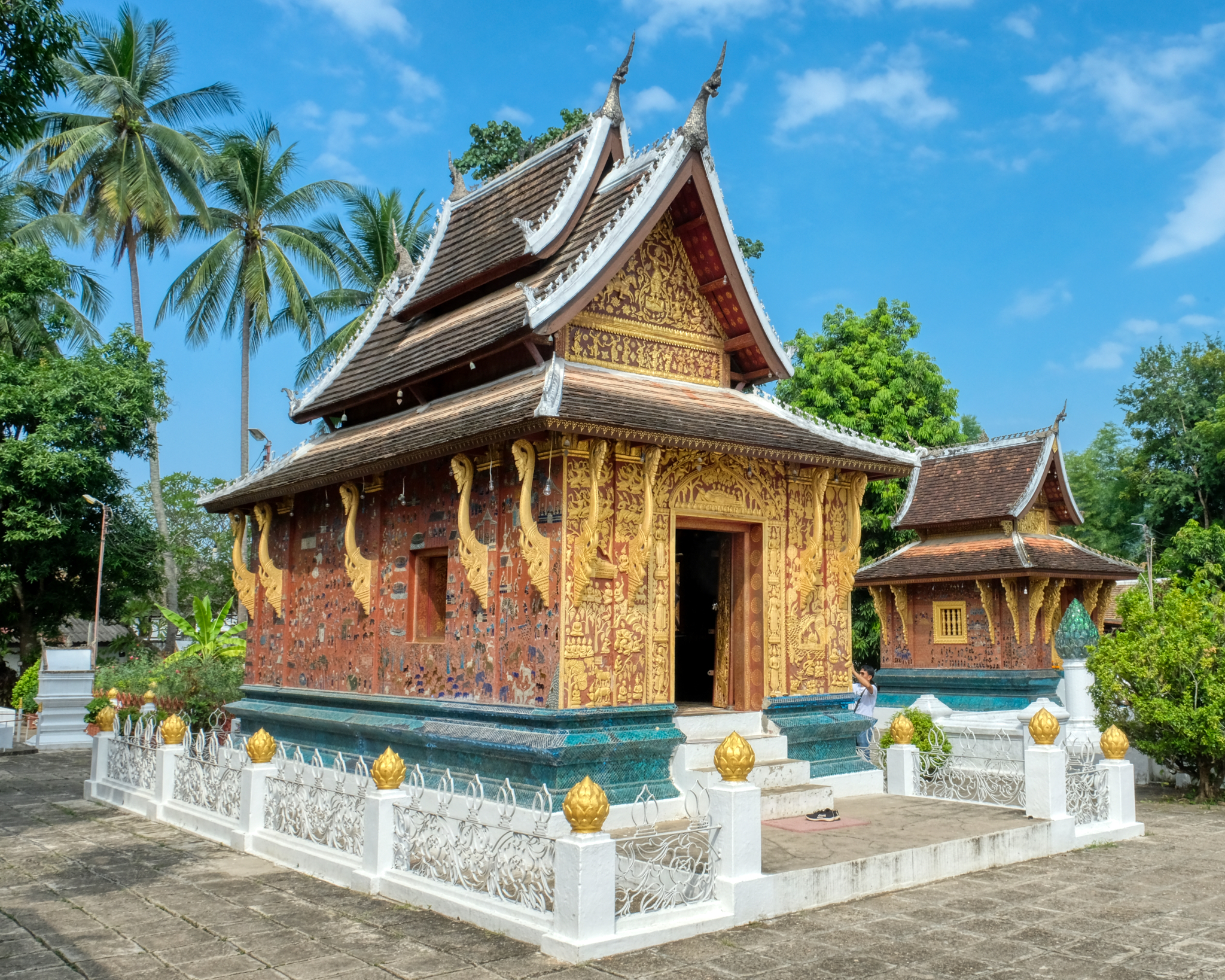 Many small structures for individual Buddha altars.
Many small structures for individual Buddha altars.
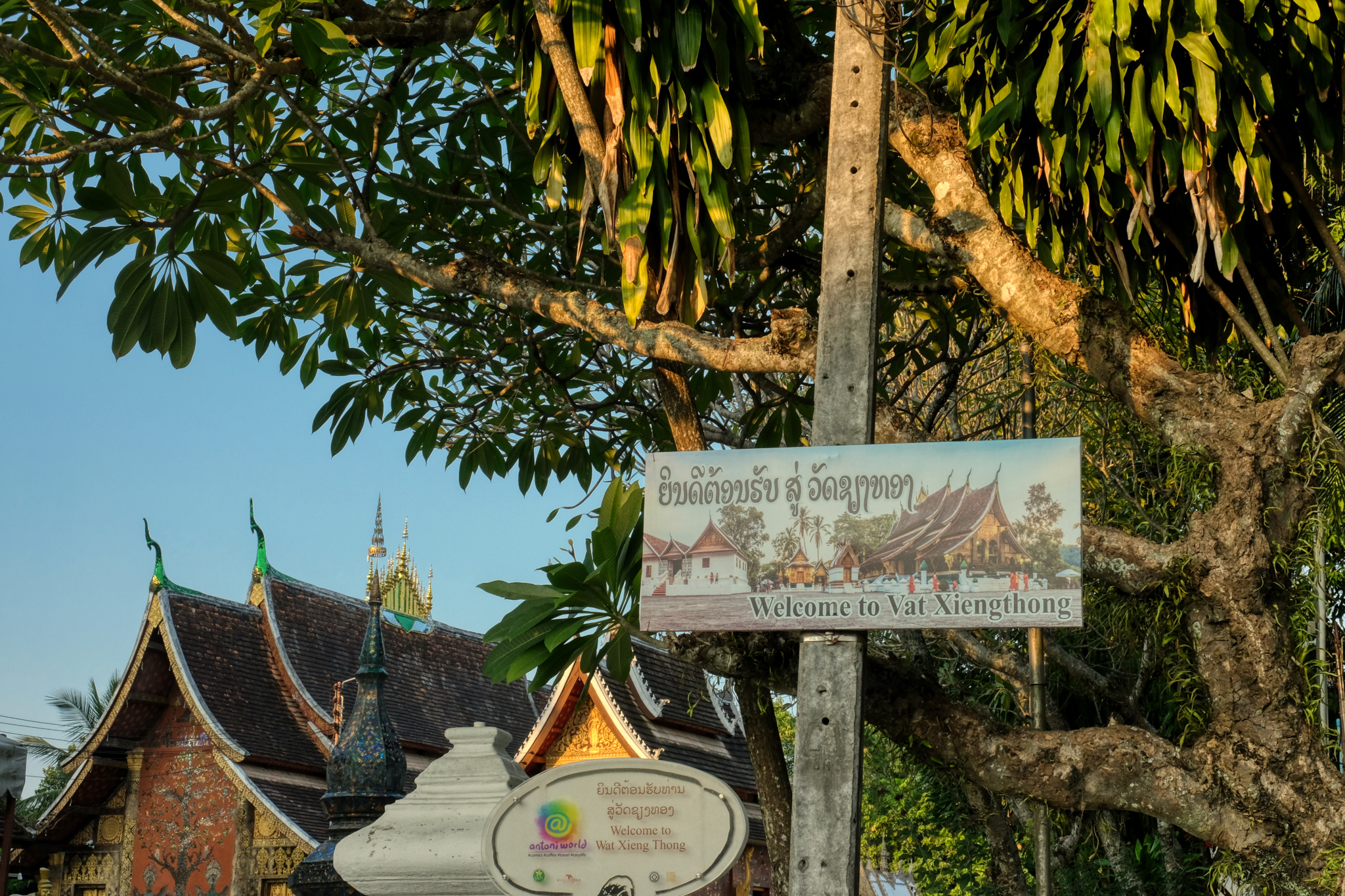 I came back one evening after dinner when the light was changing to a golden hue.
I came back one evening after dinner when the light was changing to a golden hue.
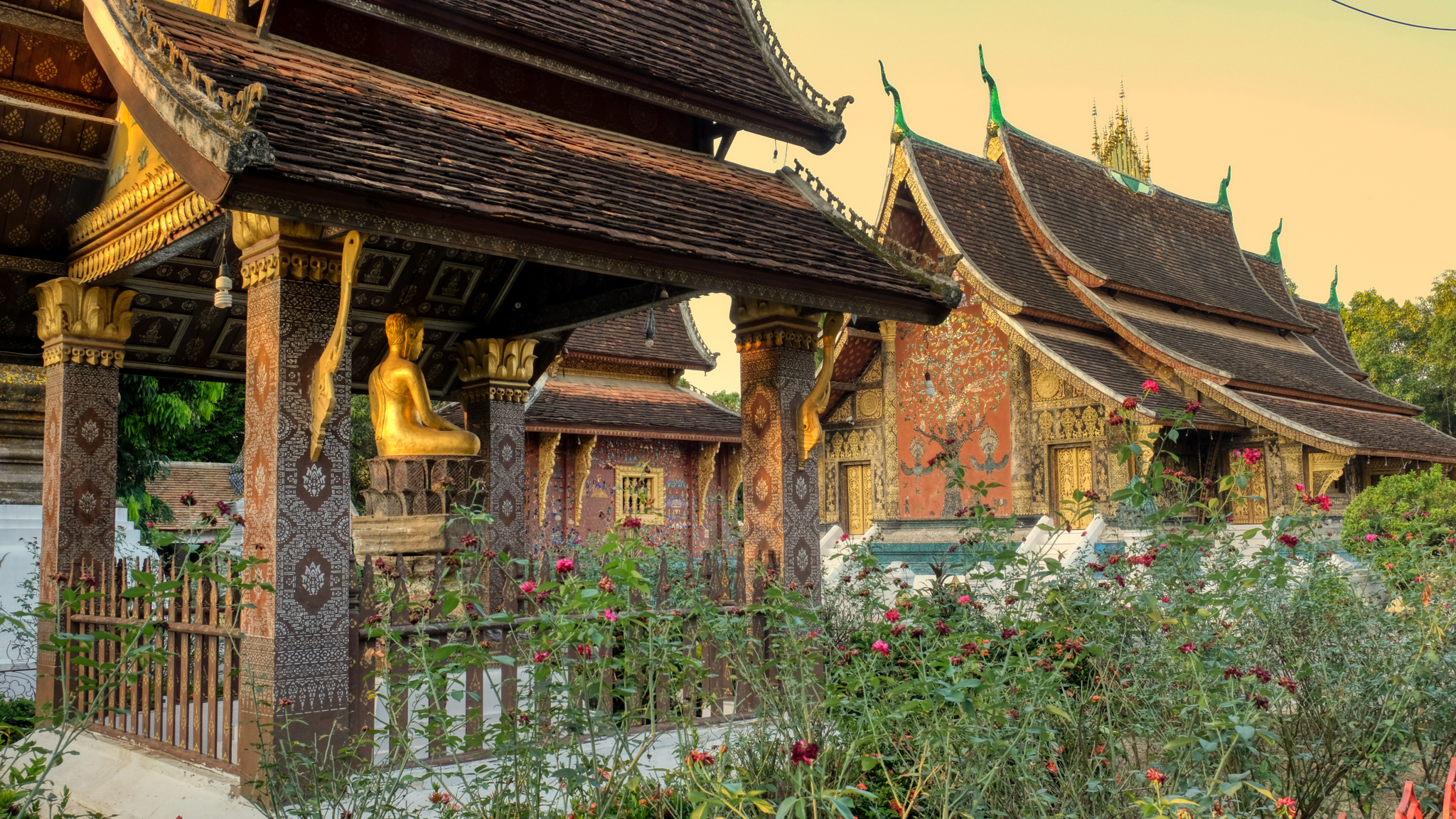 Magic light.
Magic light.
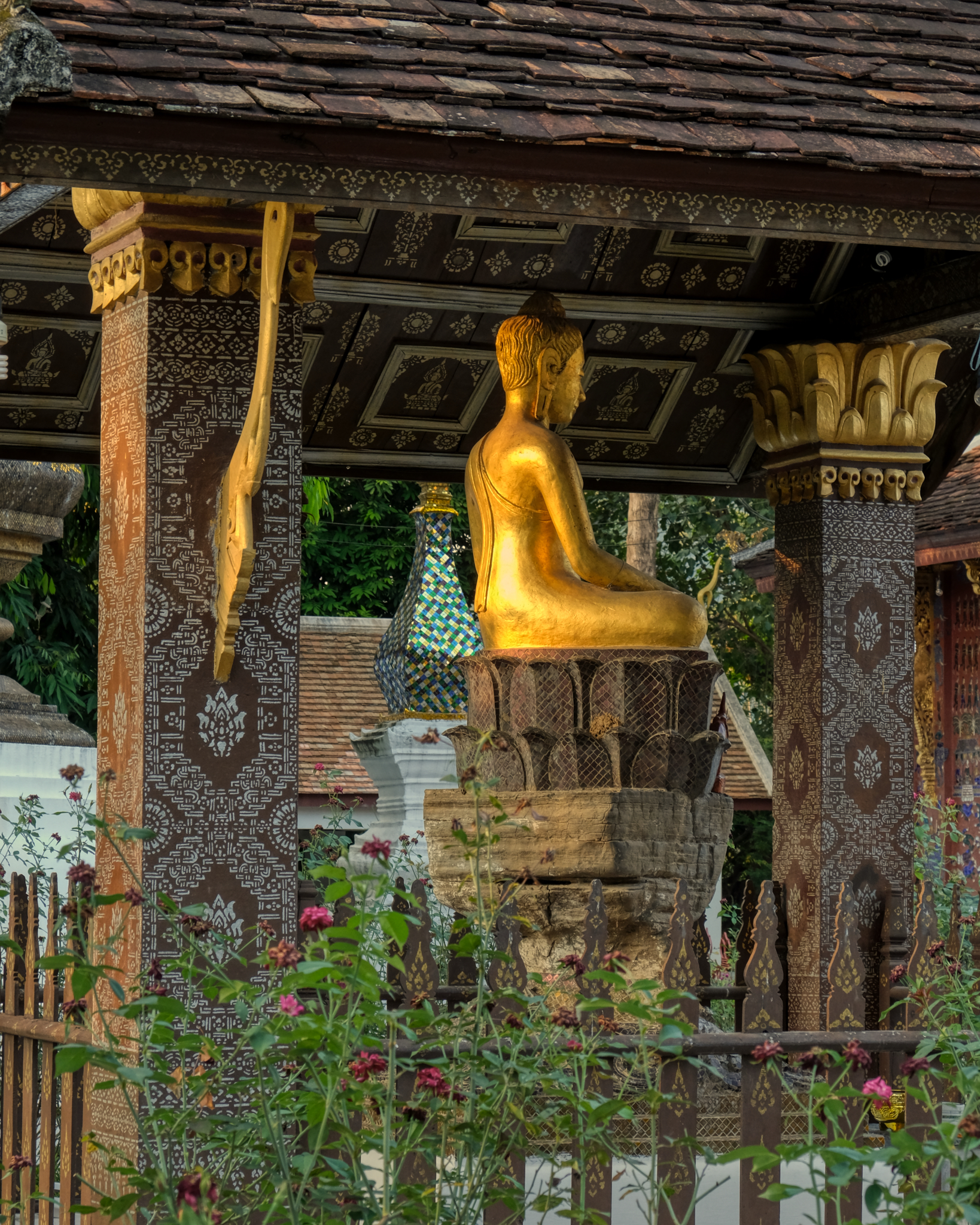 I will be back to Luang Prabang, and when I do, I will revisit Wat Xieng Thong.
I will be back to Luang Prabang, and when I do, I will revisit Wat Xieng Thong.
Samut Songkhran & Amphawa Village - A Good Day Out and About in Thailand
 Sunday, May 26, 2019 at 2:16PM
Sunday, May 26, 2019 at 2:16PM 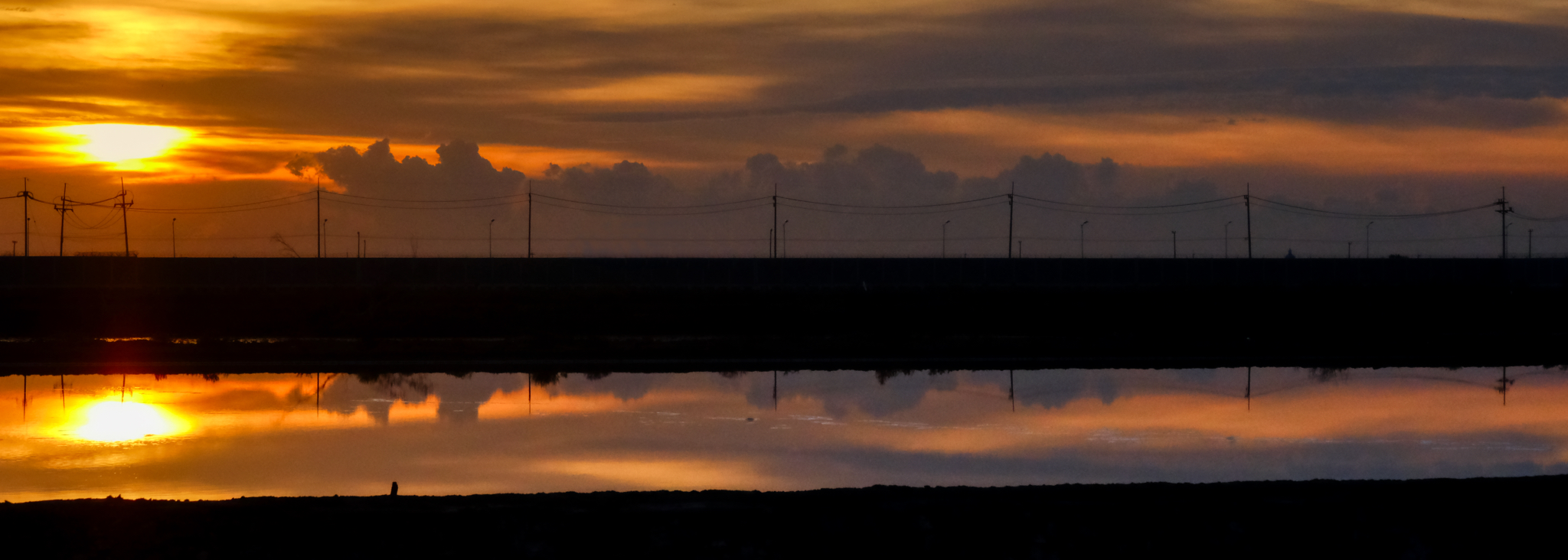 Up and out the door at 4:30am to catch the sun rise over the salt pans of Samut Songkhran with a couple of buddies . . . and for a day of photography.
Up and out the door at 4:30am to catch the sun rise over the salt pans of Samut Songkhran with a couple of buddies . . . and for a day of photography.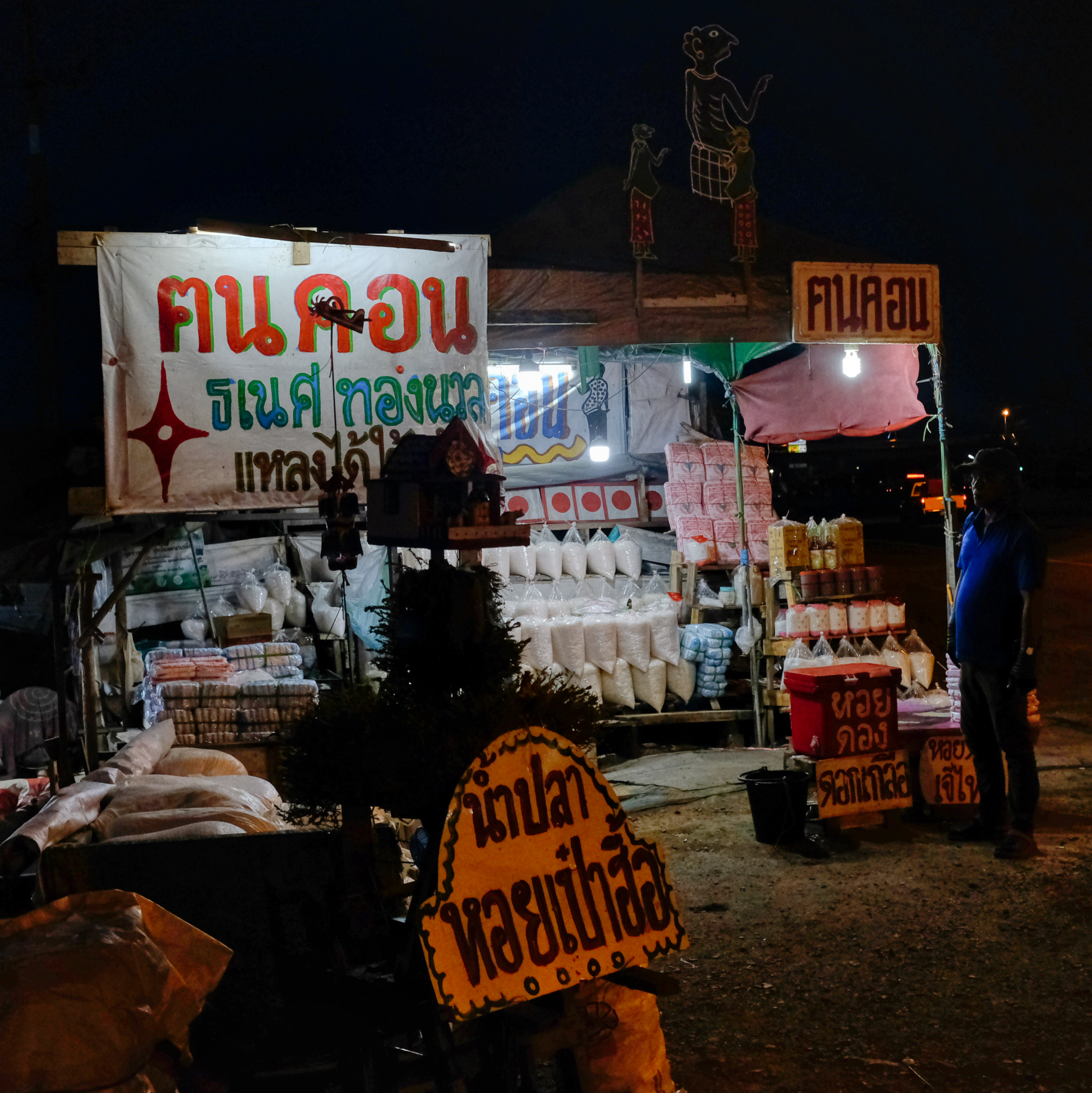 Roadside salt sales before sunset.
Roadside salt sales before sunset.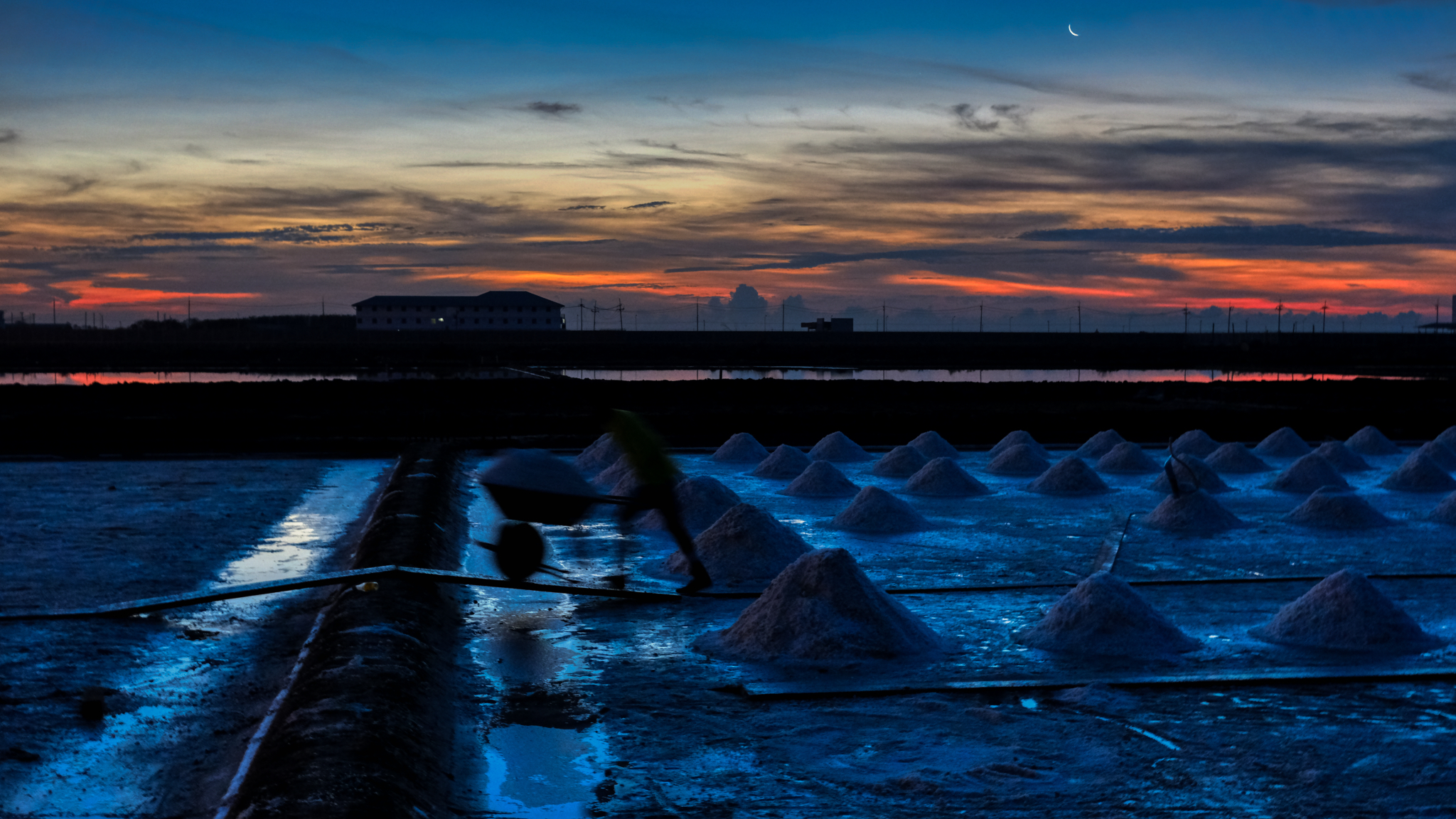 A workman is a blur in first light.
A workman is a blur in first light.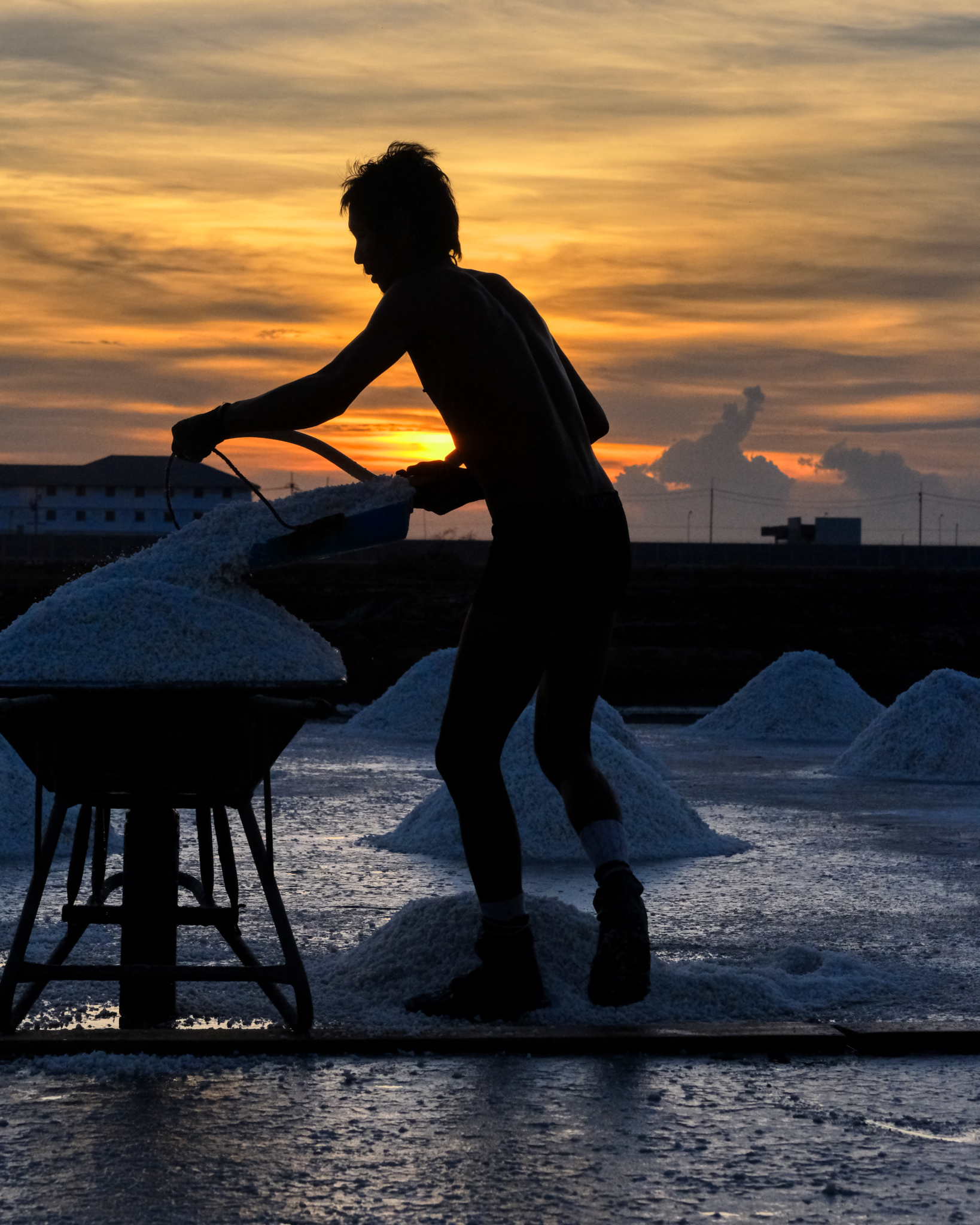 At 5:45am the ambient temperature was already 89f . . with a heat index of 105f!
At 5:45am the ambient temperature was already 89f . . with a heat index of 105f!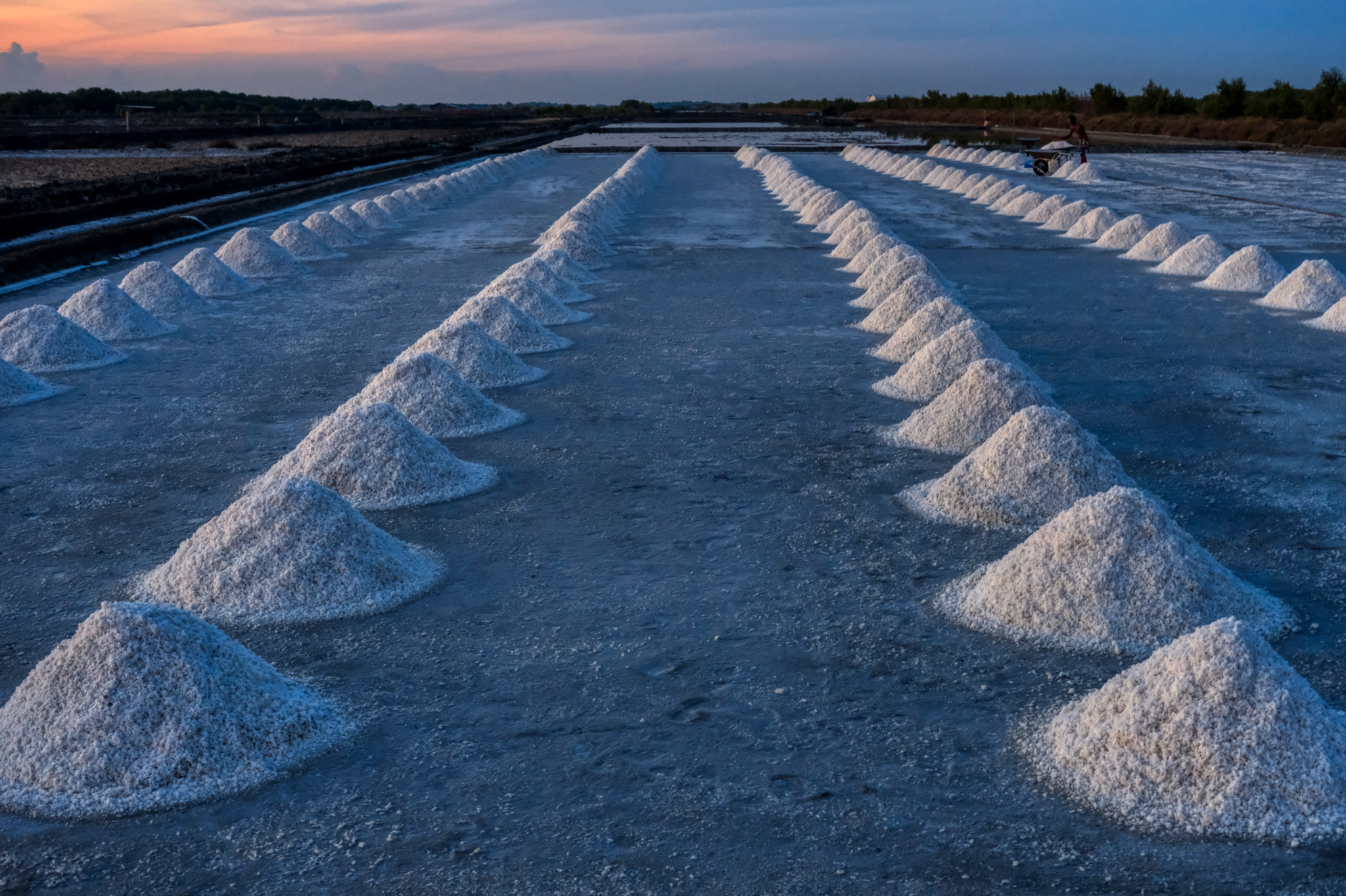 Early morning salt pan. The salt is raked up into cones by one crew, and picked up and hauled by wheelbarrow to a large pile near the highway for transportation.
Early morning salt pan. The salt is raked up into cones by one crew, and picked up and hauled by wheelbarrow to a large pile near the highway for transportation.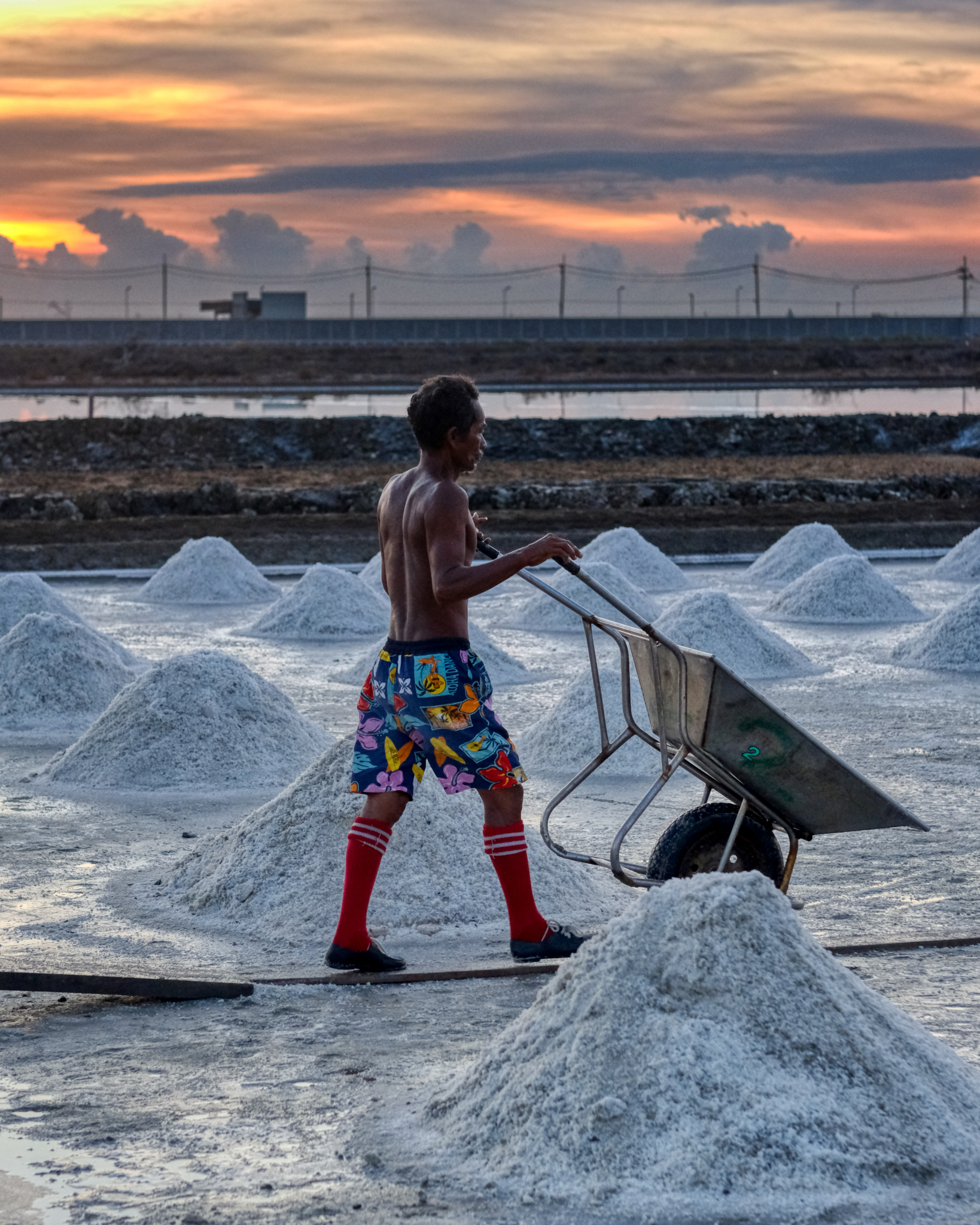 The salt workers were working hard at first light to get as much done before the blistering heat to come.
The salt workers were working hard at first light to get as much done before the blistering heat to come.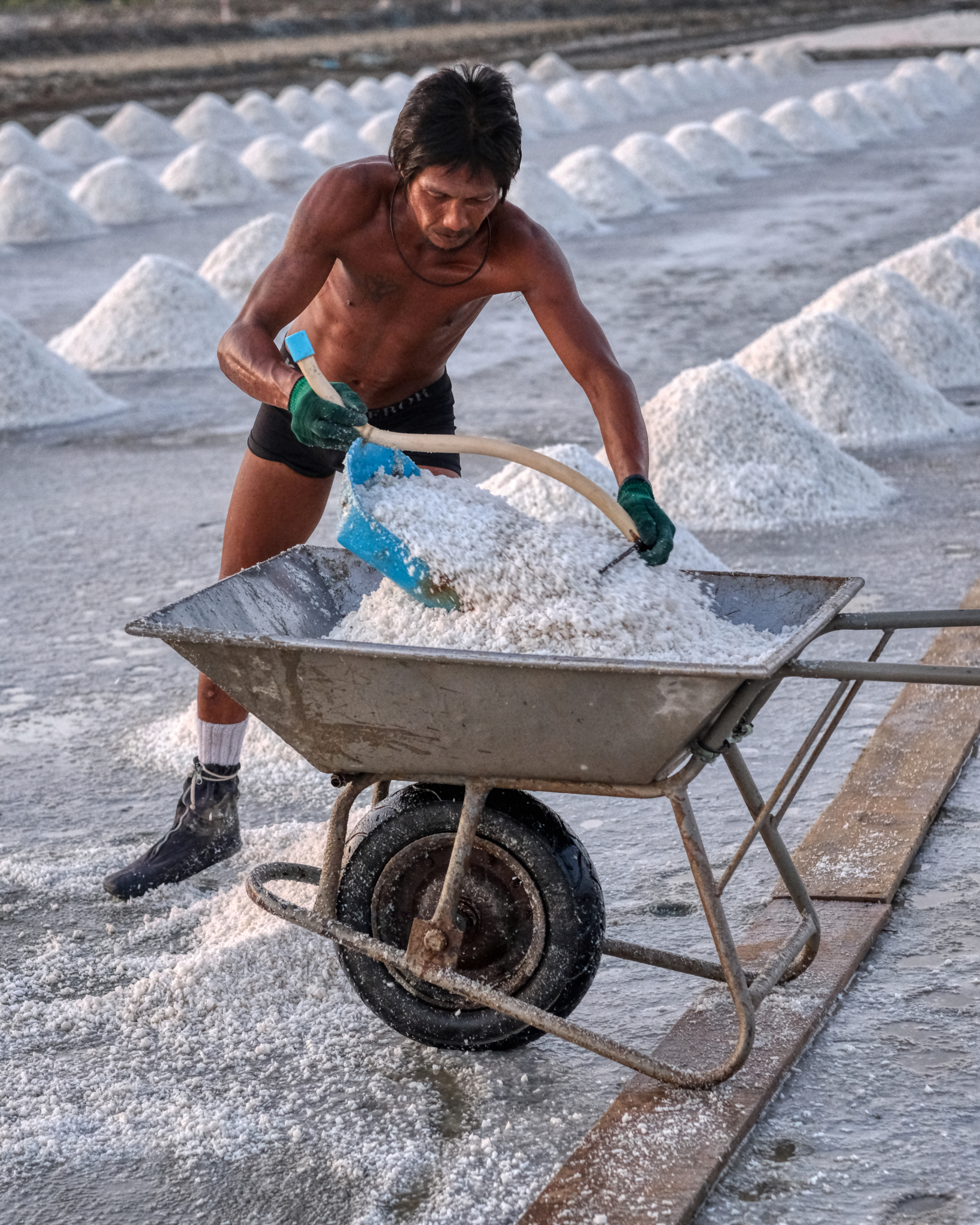 Scooping heavy, damp salt.
Scooping heavy, damp salt.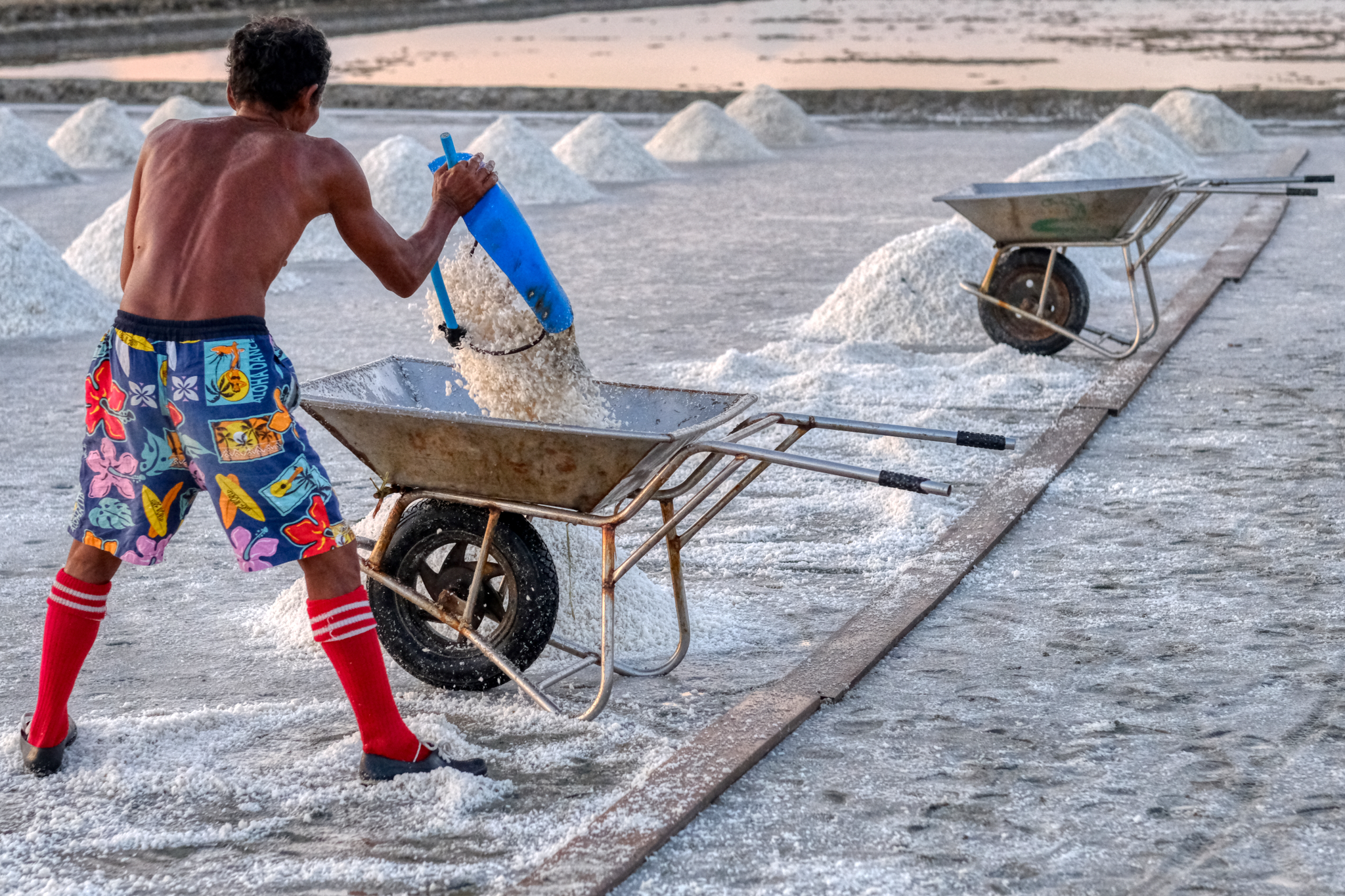 Loading the wheelbarrow for another trip to the highway.
Loading the wheelbarrow for another trip to the highway.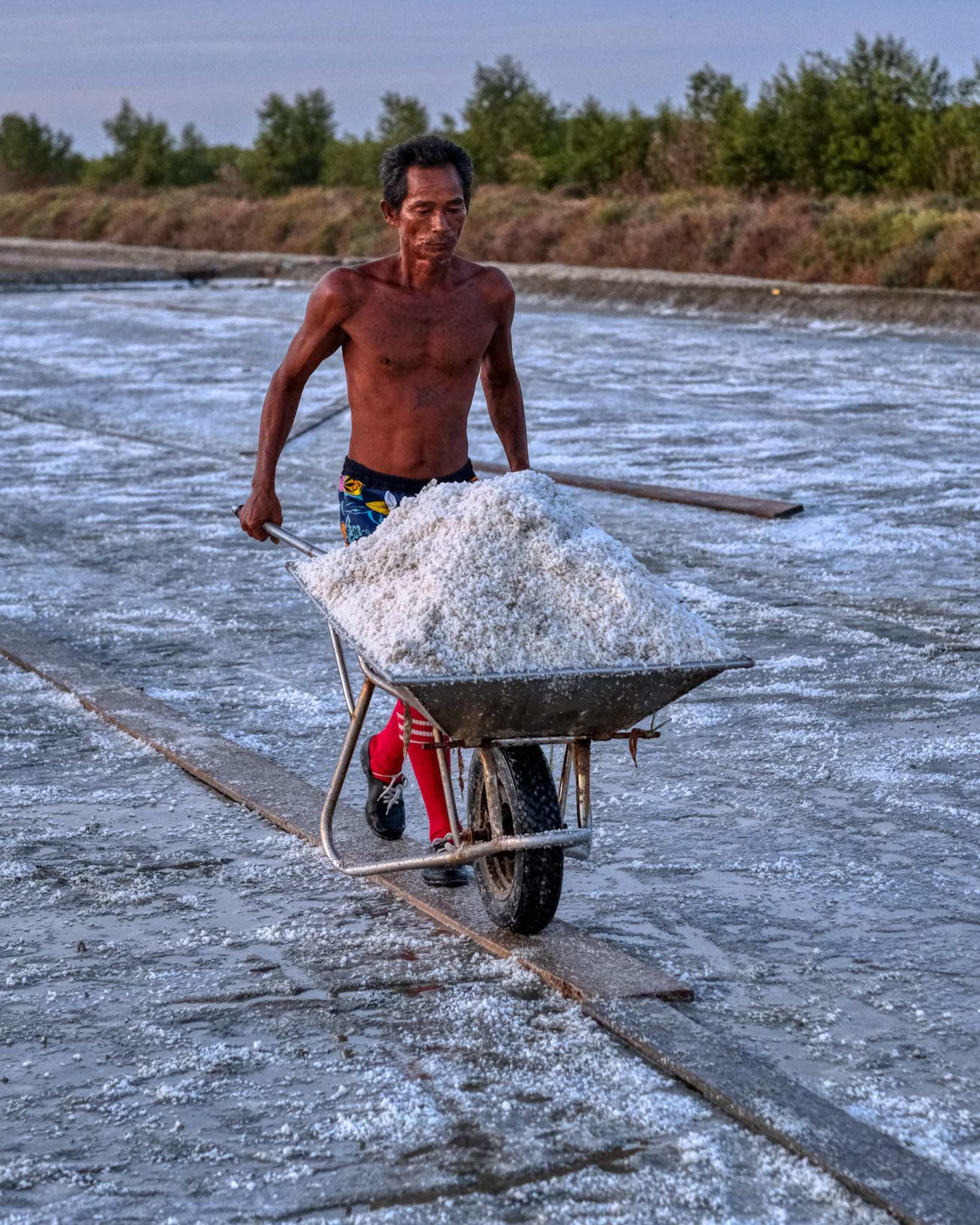 Another load full to wheel out . . .
Another load full to wheel out . . .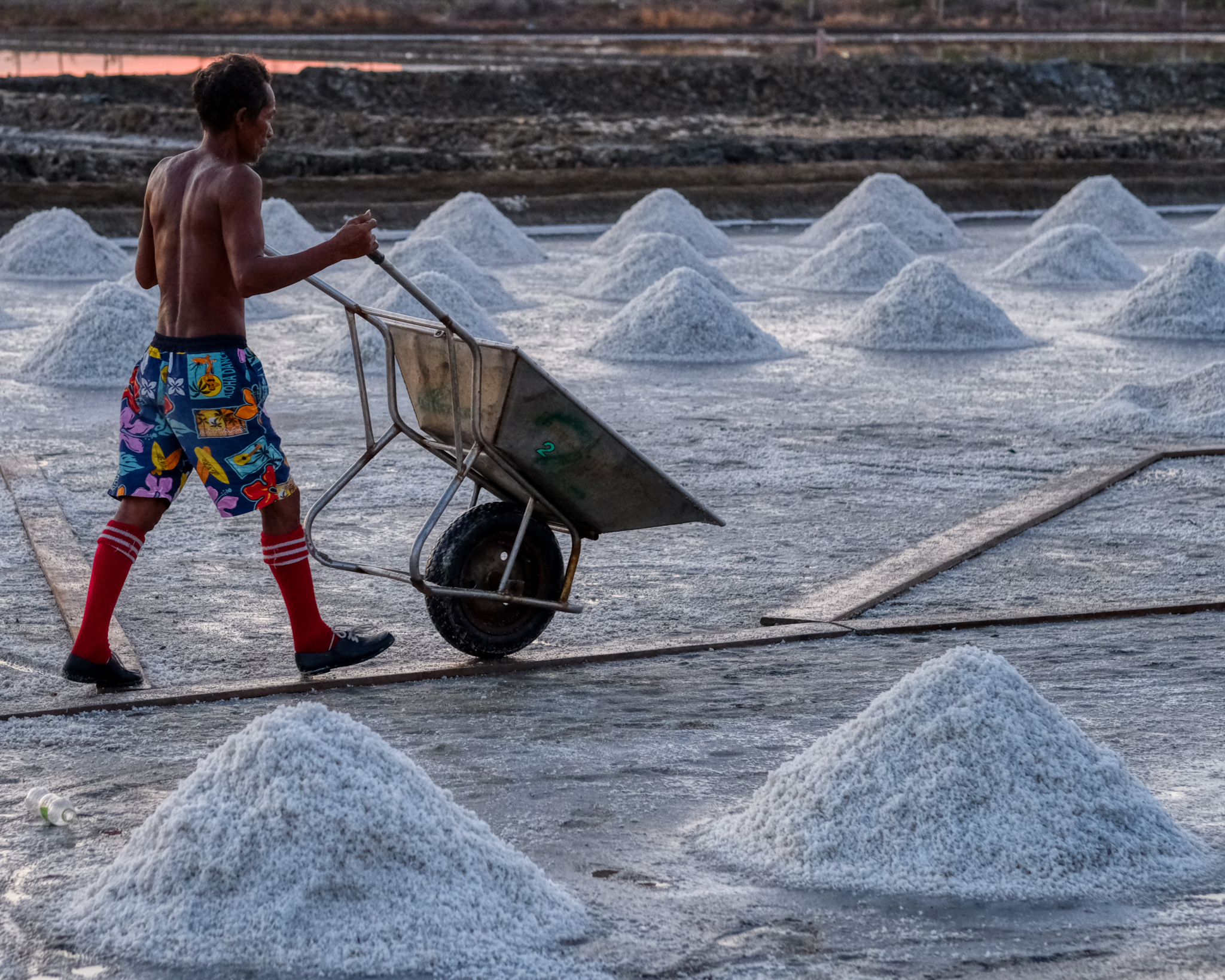 . . . and then back again in an endless loop of scoop, haul, return, scoop . . .
. . . and then back again in an endless loop of scoop, haul, return, scoop . . .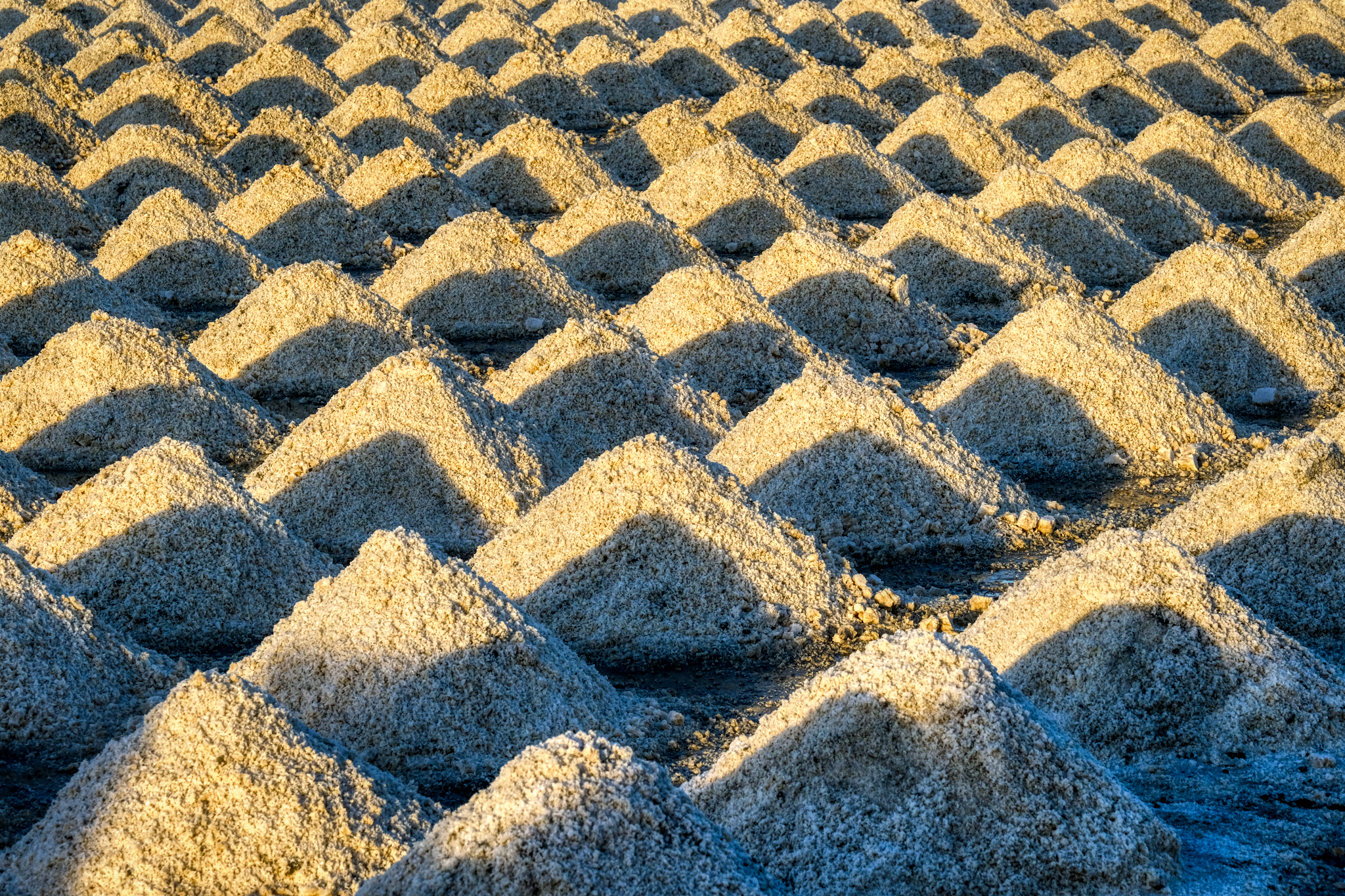 Marvelous patterns of salt cones in the morning magic hour light.
Marvelous patterns of salt cones in the morning magic hour light.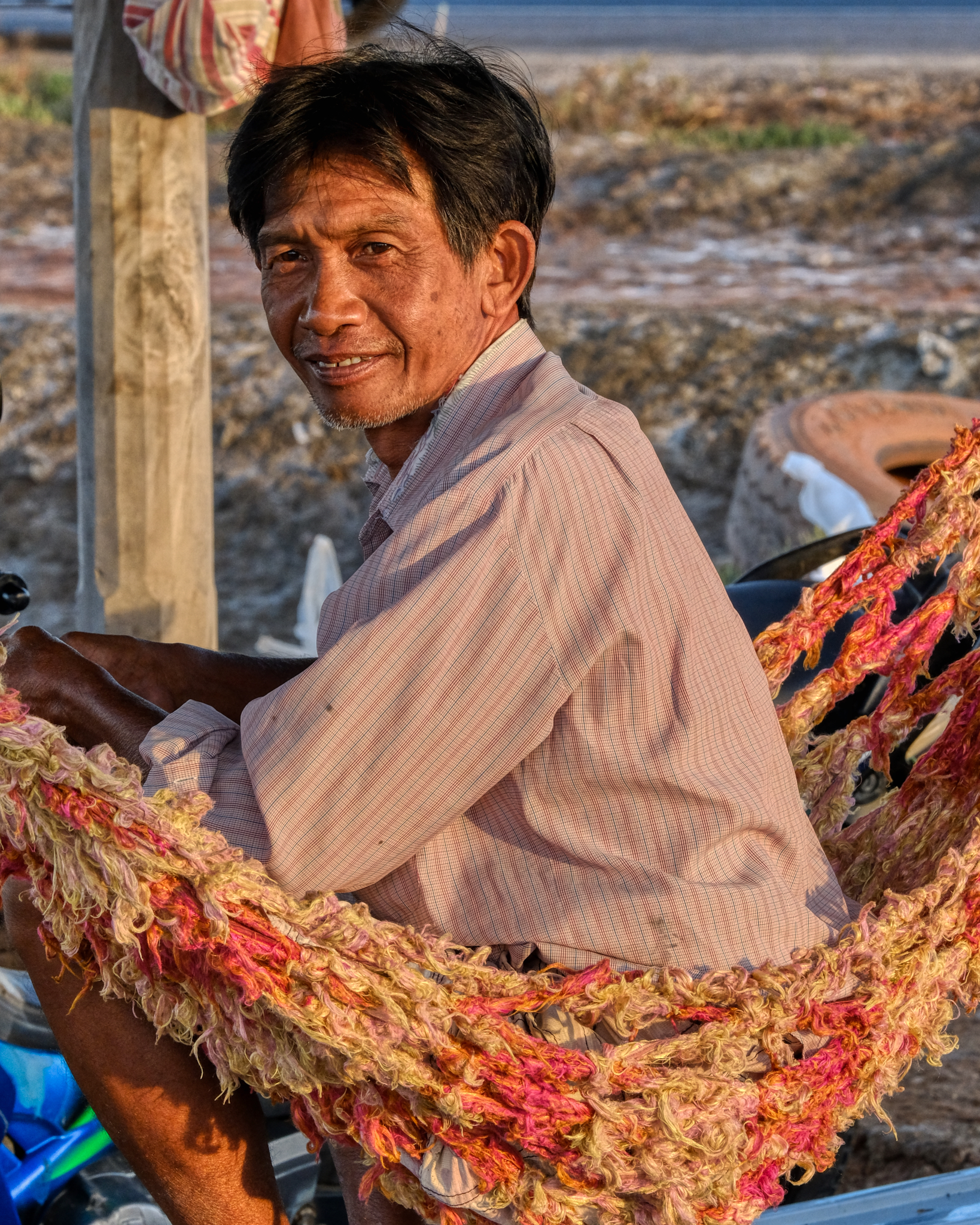 A kindly looking salt worker on a hammock.
A kindly looking salt worker on a hammock.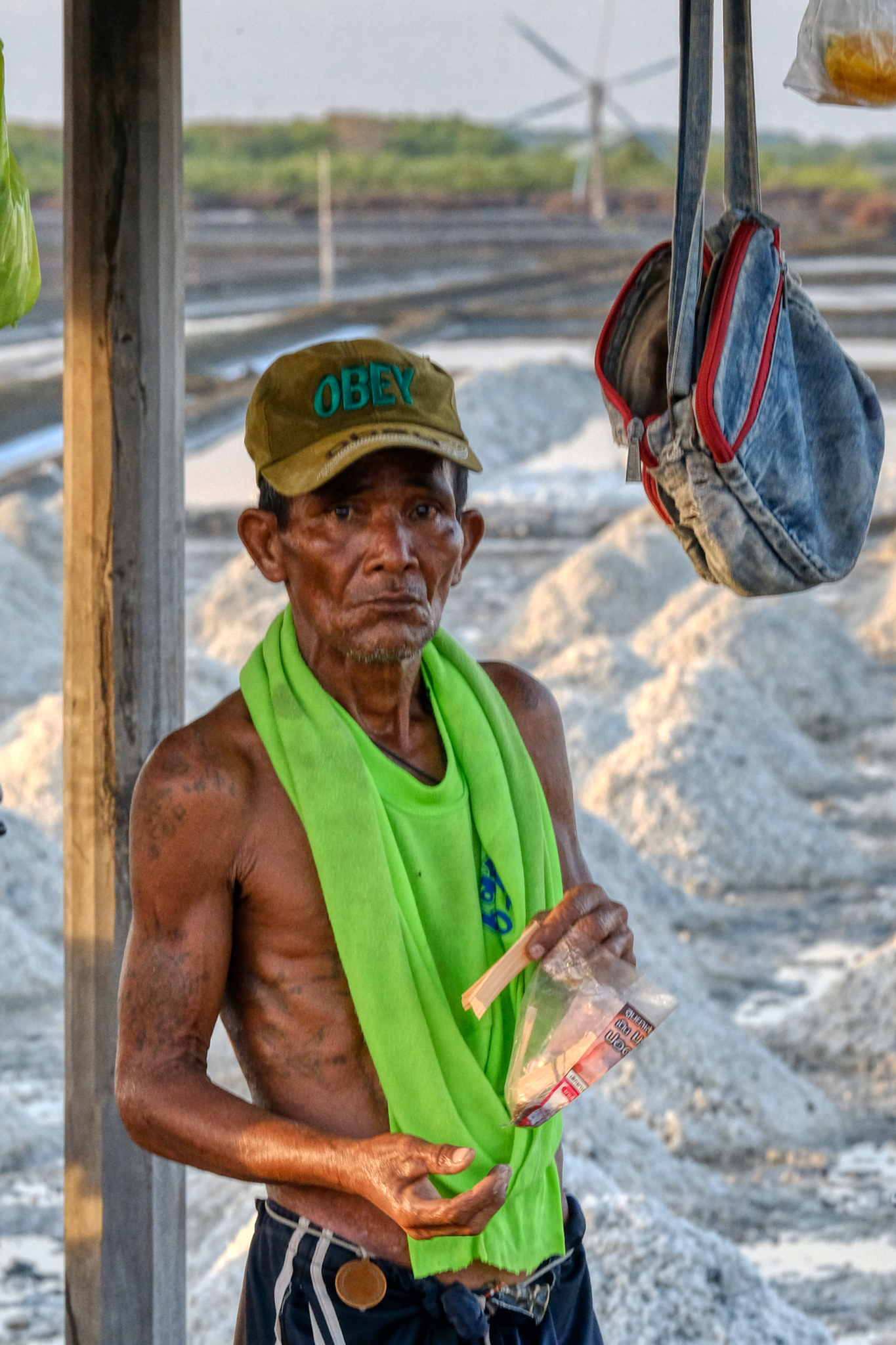 Obey. Indeed.
Obey. Indeed. Meanwhile, in another salt pan down the road . . .
Meanwhile, in another salt pan down the road . . .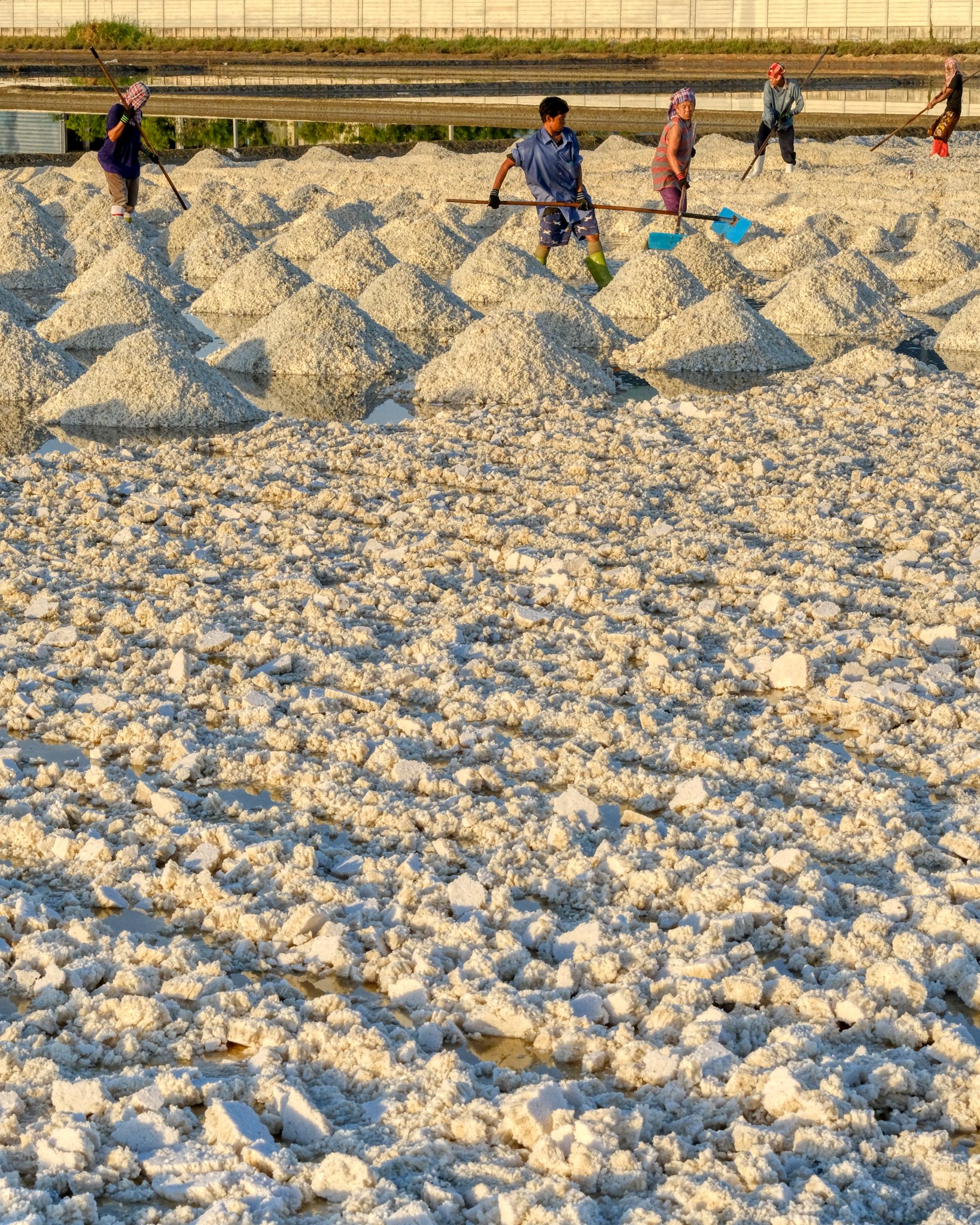 After an hour at the sunrise pans, we drove a kilometer up the road and found a big crew out in a damp pan raking the salt into the cones. Hard work in the morning sun.
After an hour at the sunrise pans, we drove a kilometer up the road and found a big crew out in a damp pan raking the salt into the cones. Hard work in the morning sun.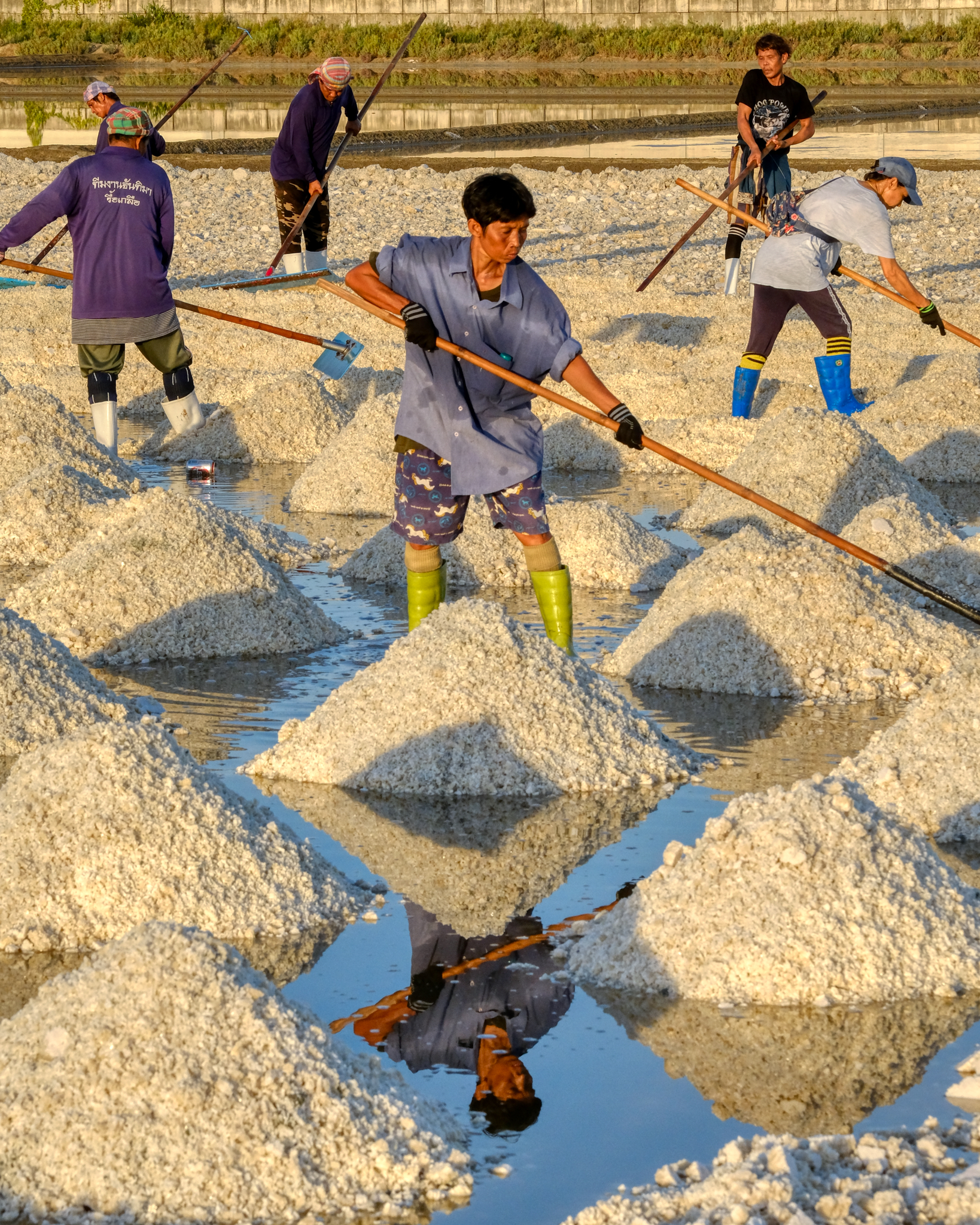 Hard at work while standing in supersaturated salt water.
Hard at work while standing in supersaturated salt water.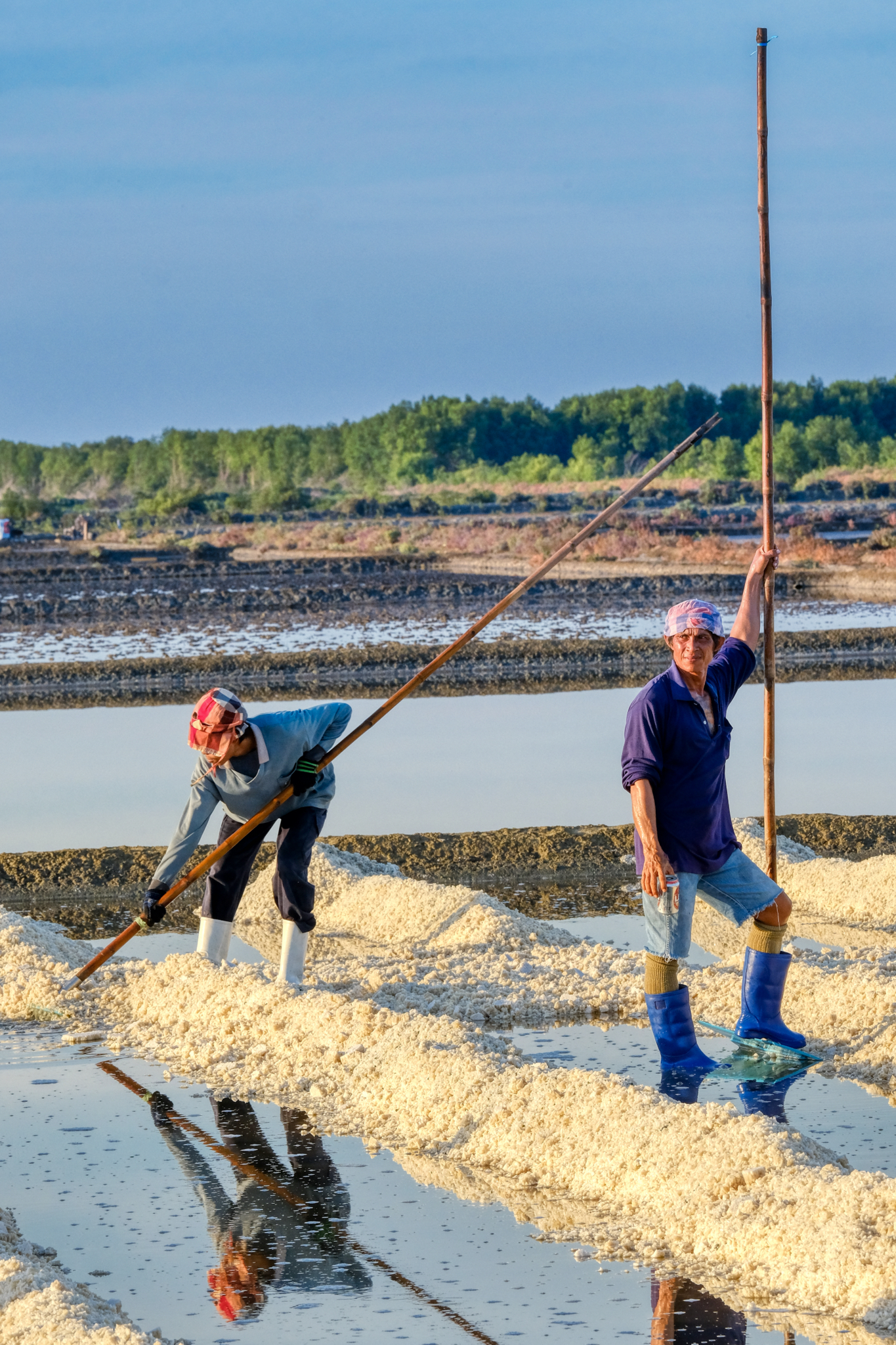 Such a photogenic scene . . . especially when the salt workers pose for you!!!
Such a photogenic scene . . . especially when the salt workers pose for you!!!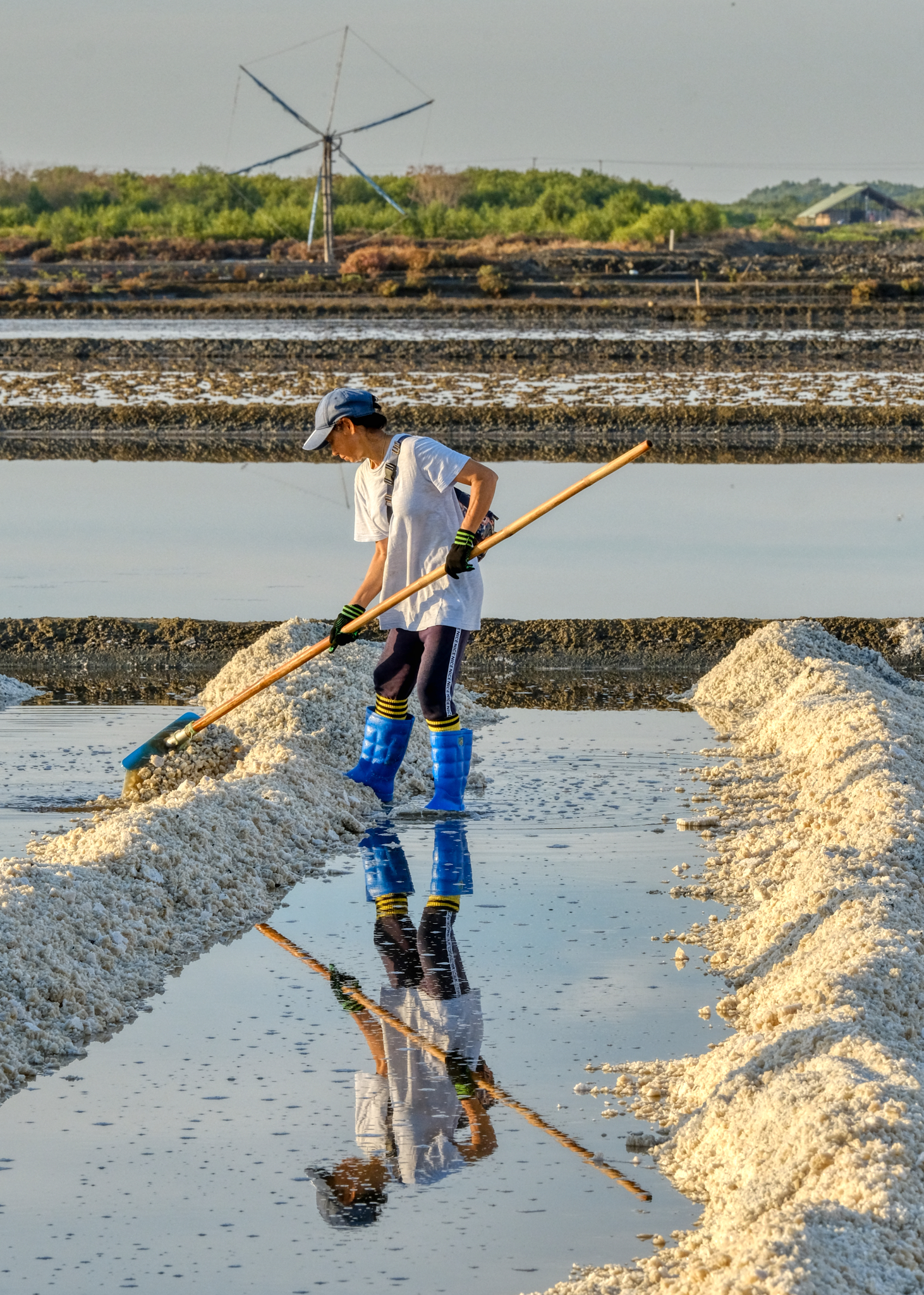 Windmills, salt, humanity, reflections . . .
Windmills, salt, humanity, reflections . . .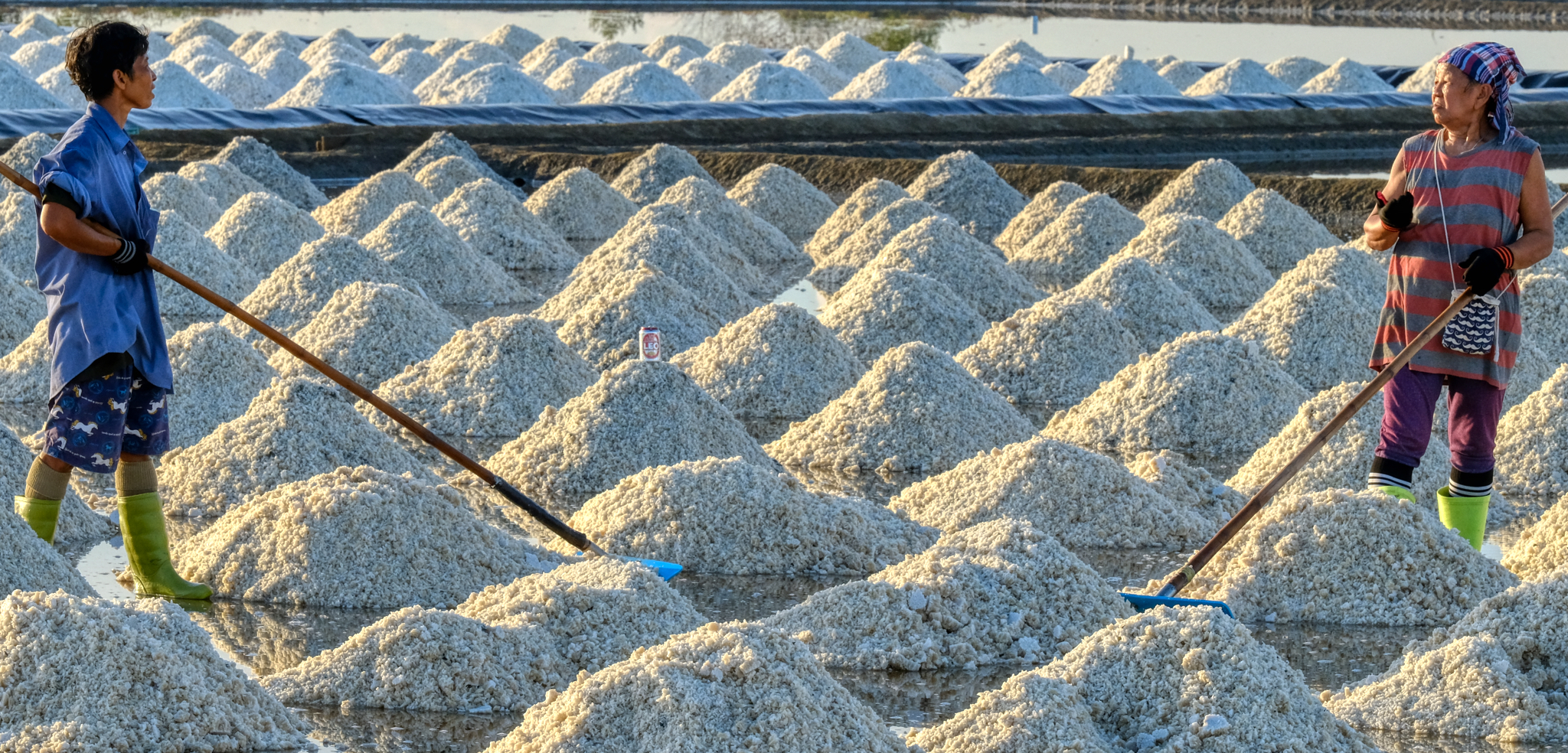 Having a chat while working . . .
Having a chat while working . . . 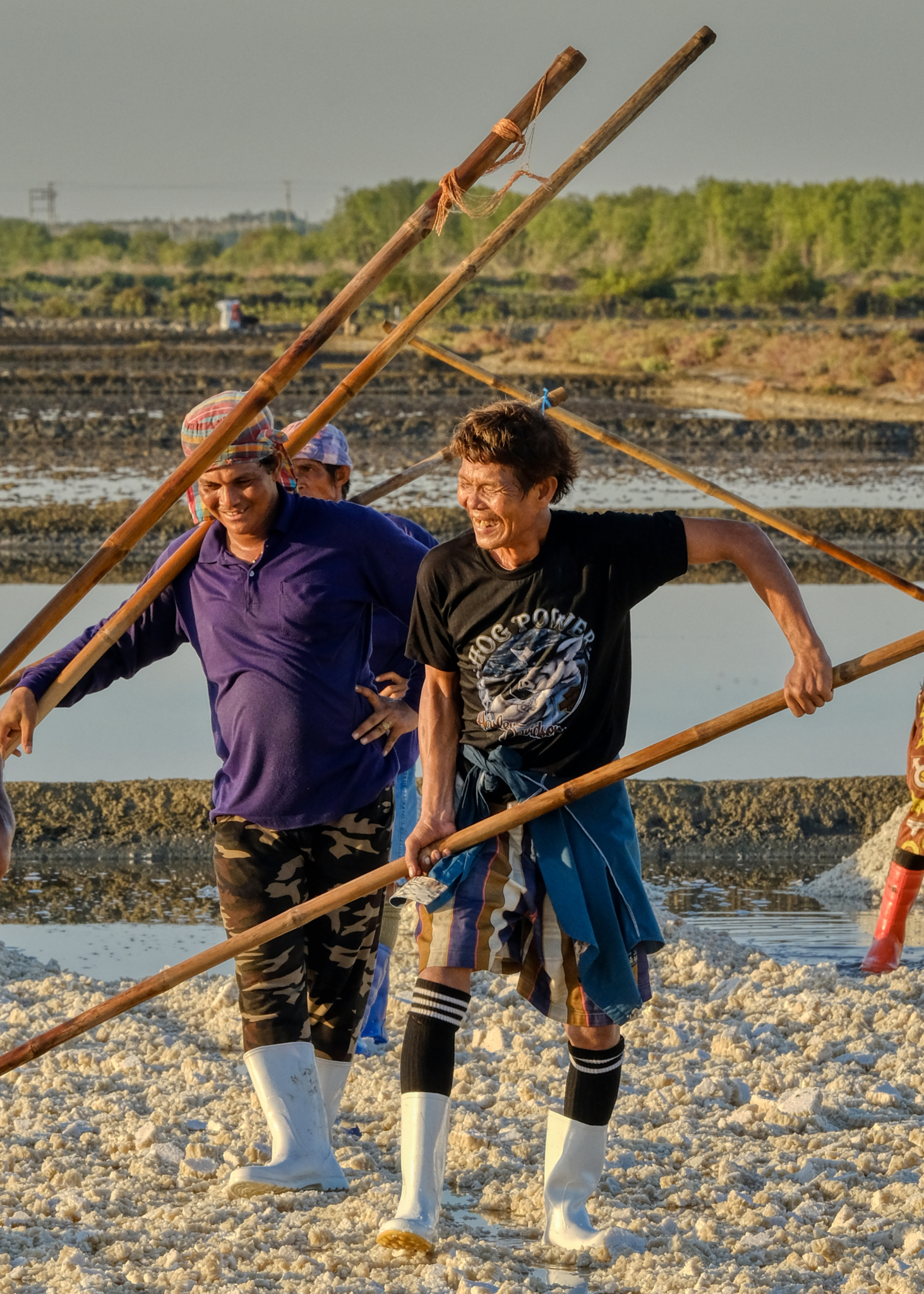 The salt workers seemed to know each other well . . . it's more enjoyable to work while sharing a joke with your friends.
The salt workers seemed to know each other well . . . it's more enjoyable to work while sharing a joke with your friends.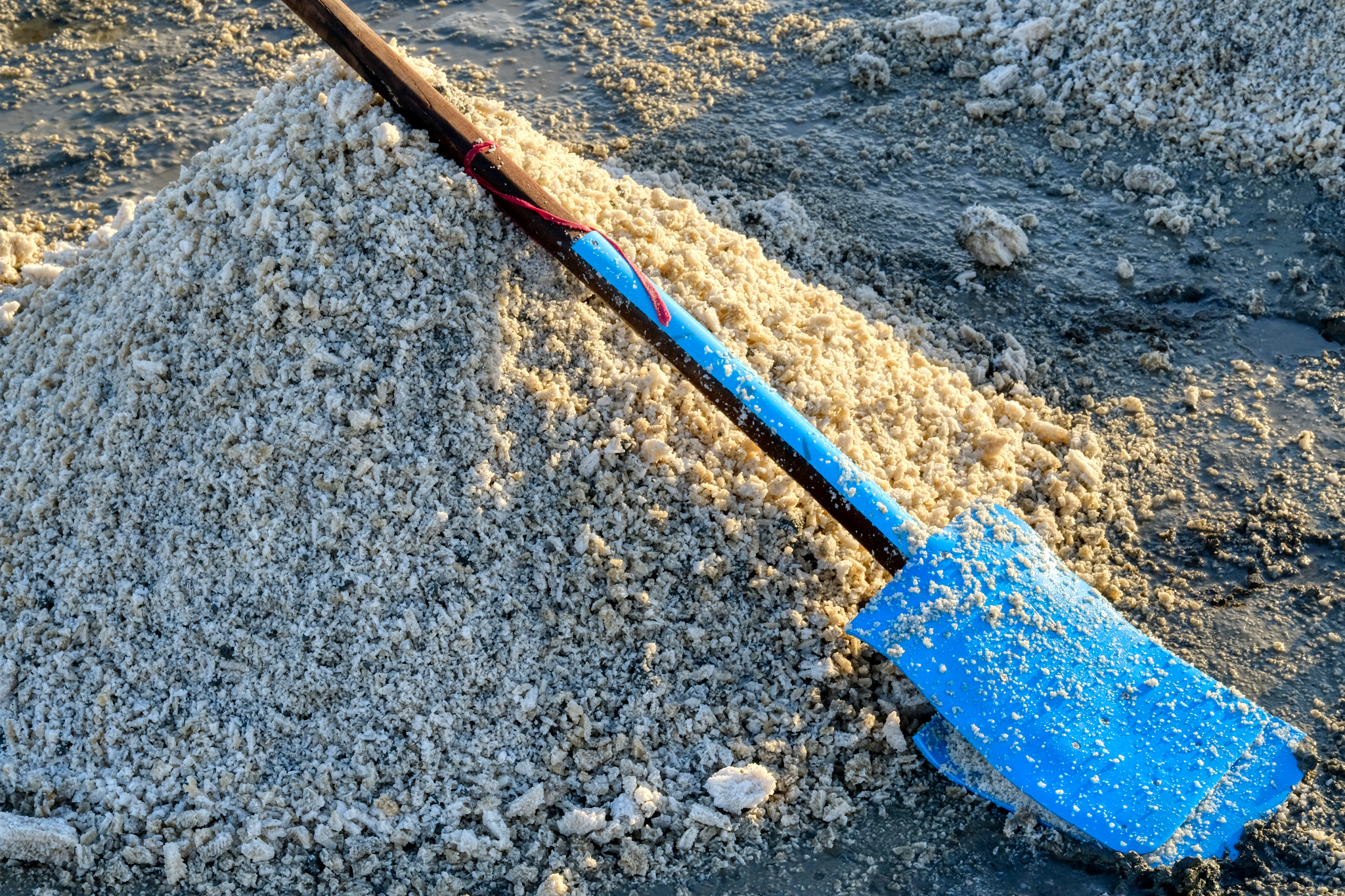 Home made crude scrapers for piling the salt into cones.
Home made crude scrapers for piling the salt into cones.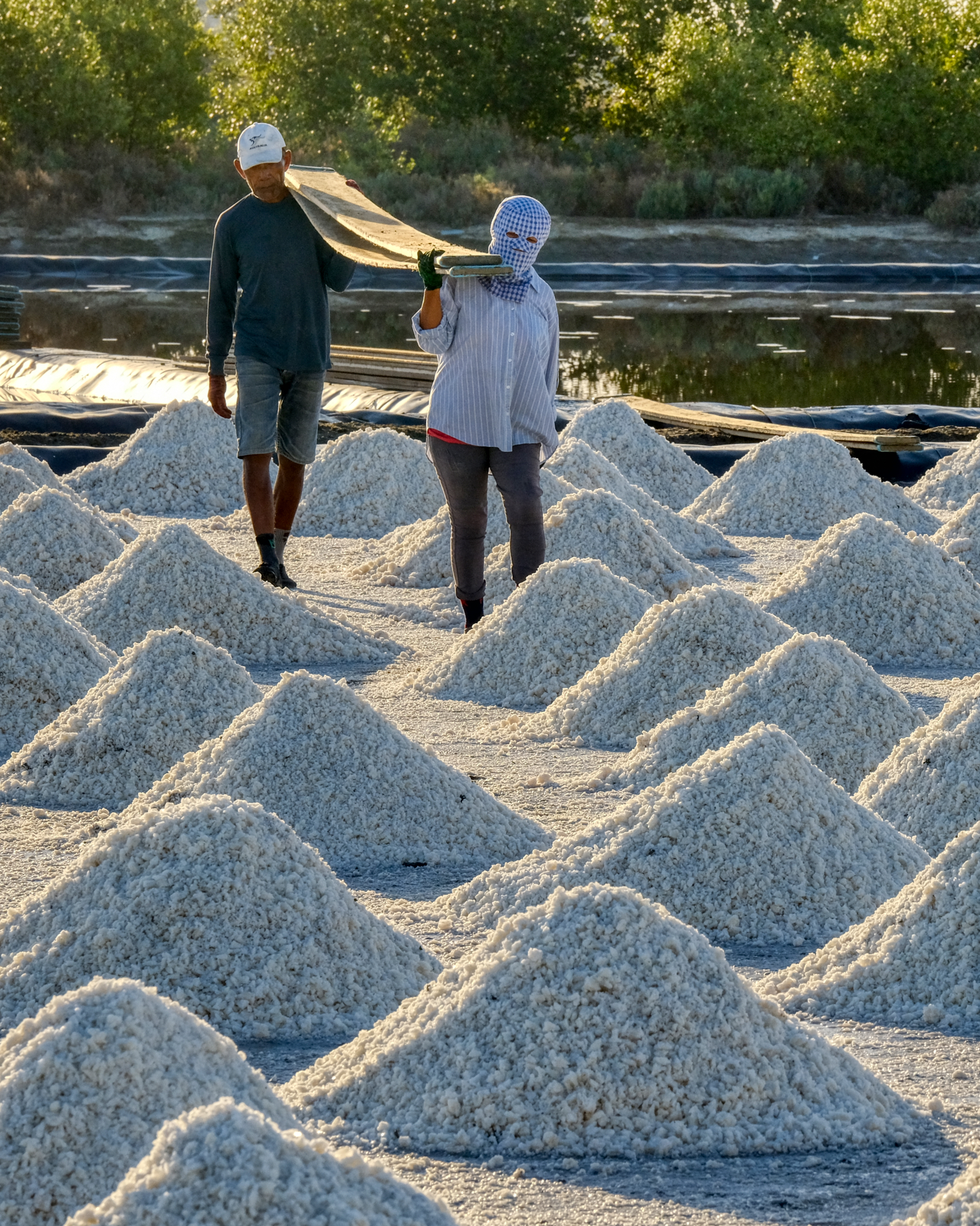 Moving and placing heavy planks for the wheelbarrows that will come to remove the salt from the pans.
Moving and placing heavy planks for the wheelbarrows that will come to remove the salt from the pans.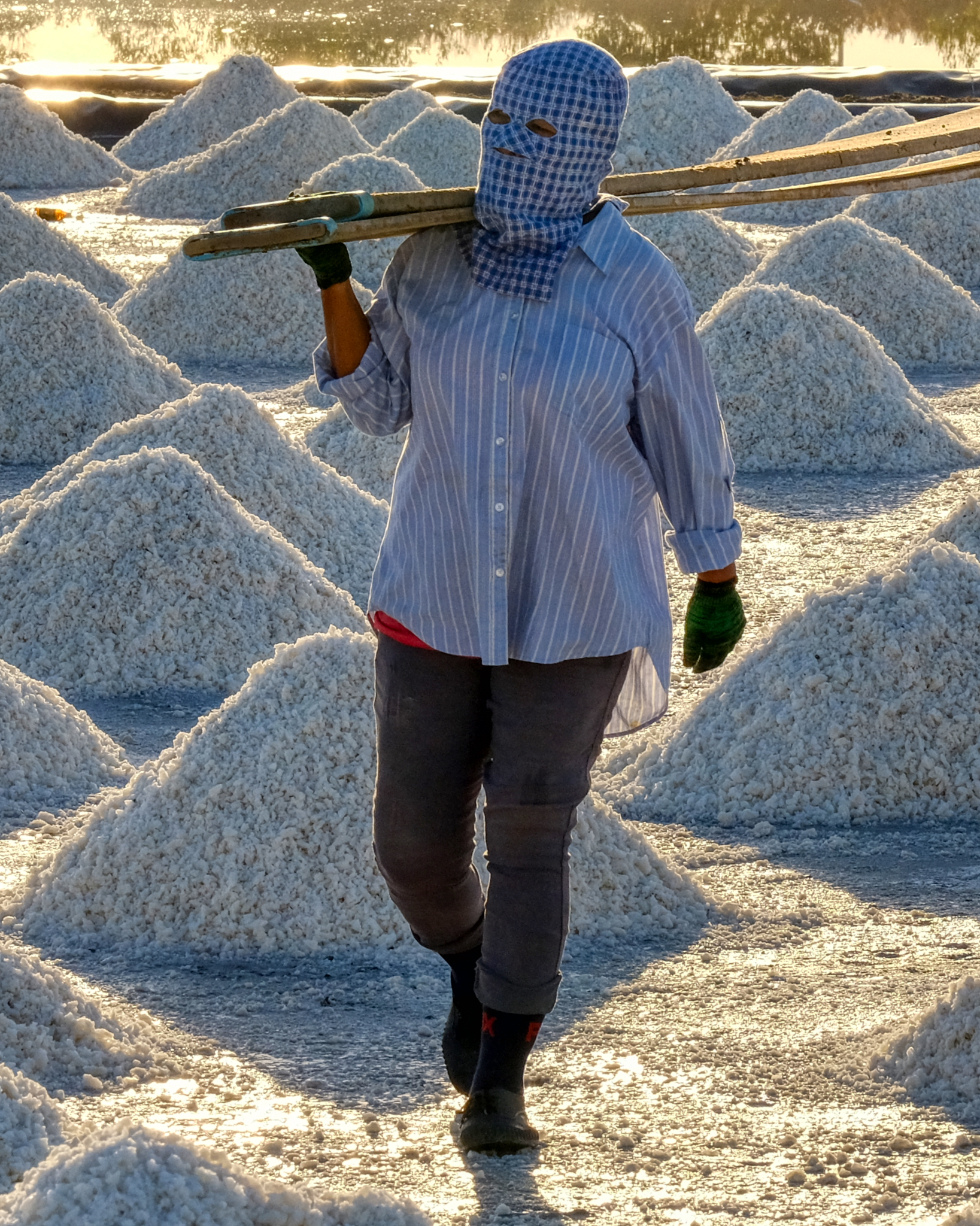 Protection from the sun . . . .
Protection from the sun . . . .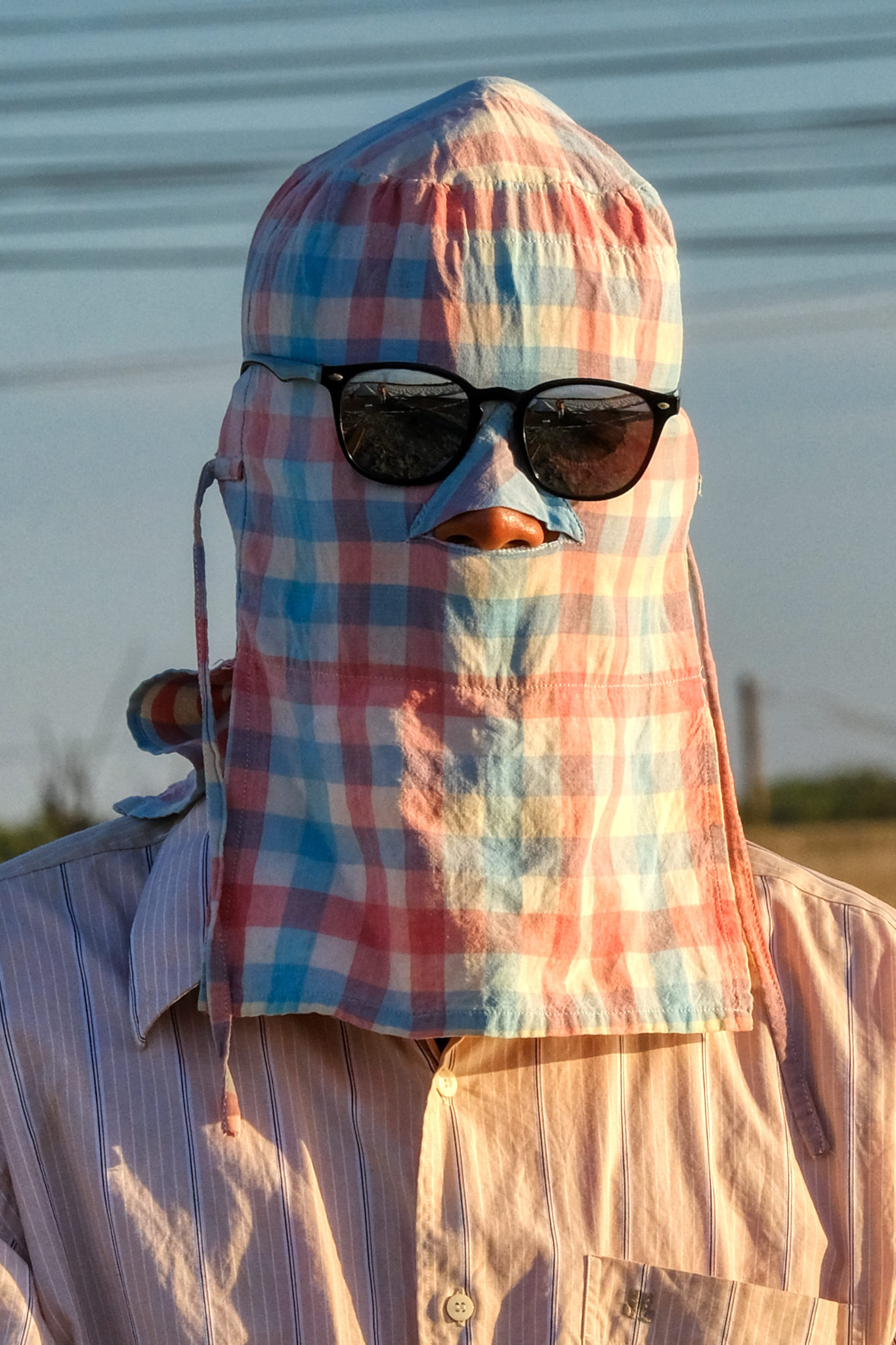 Extreme sun protection . . . it must be very hot under that hood in this oppressive heat and humidity.
Extreme sun protection . . . it must be very hot under that hood in this oppressive heat and humidity.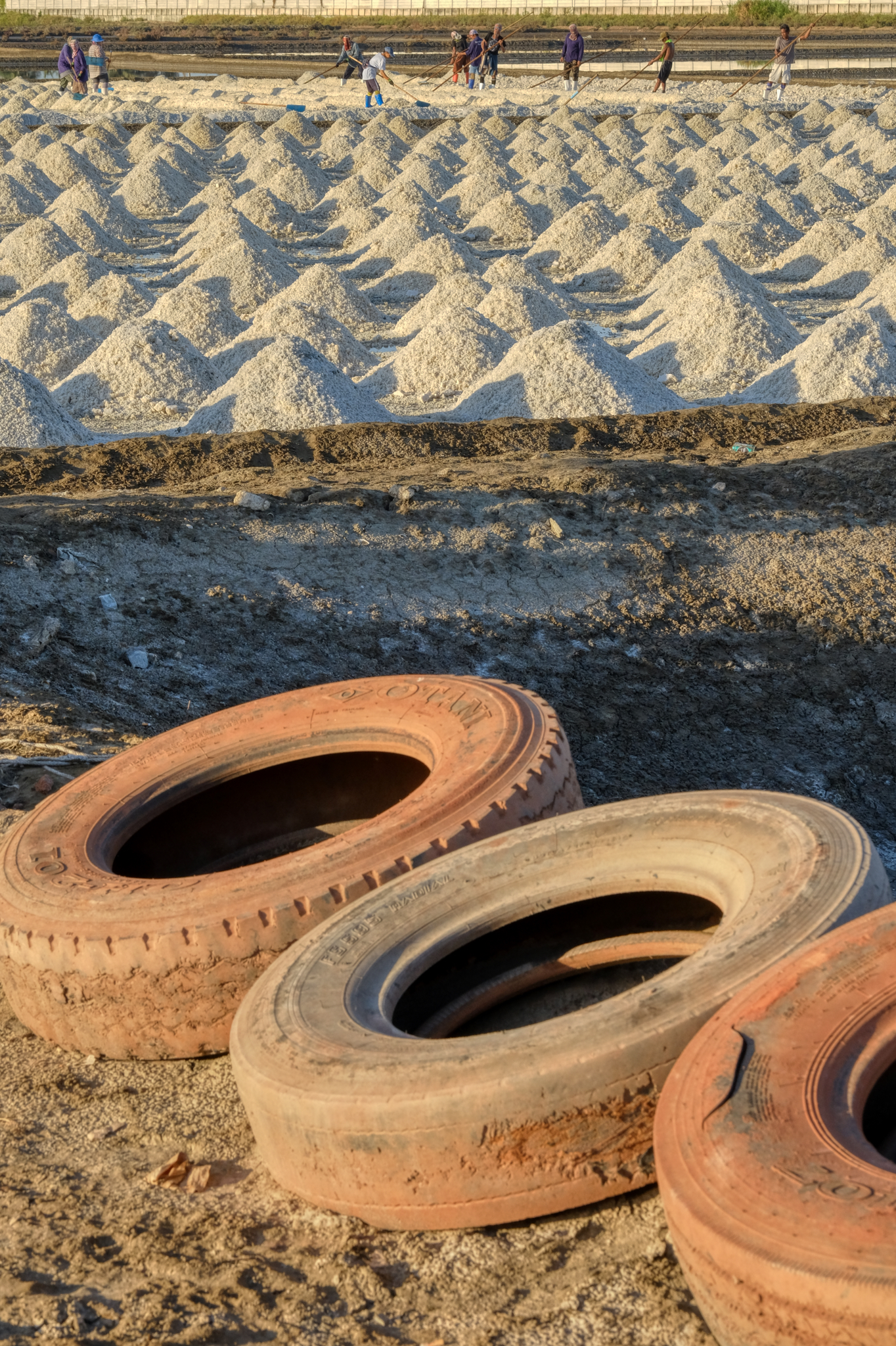 The is much to see in the area, so we moved on . . .
The is much to see in the area, so we moved on . . .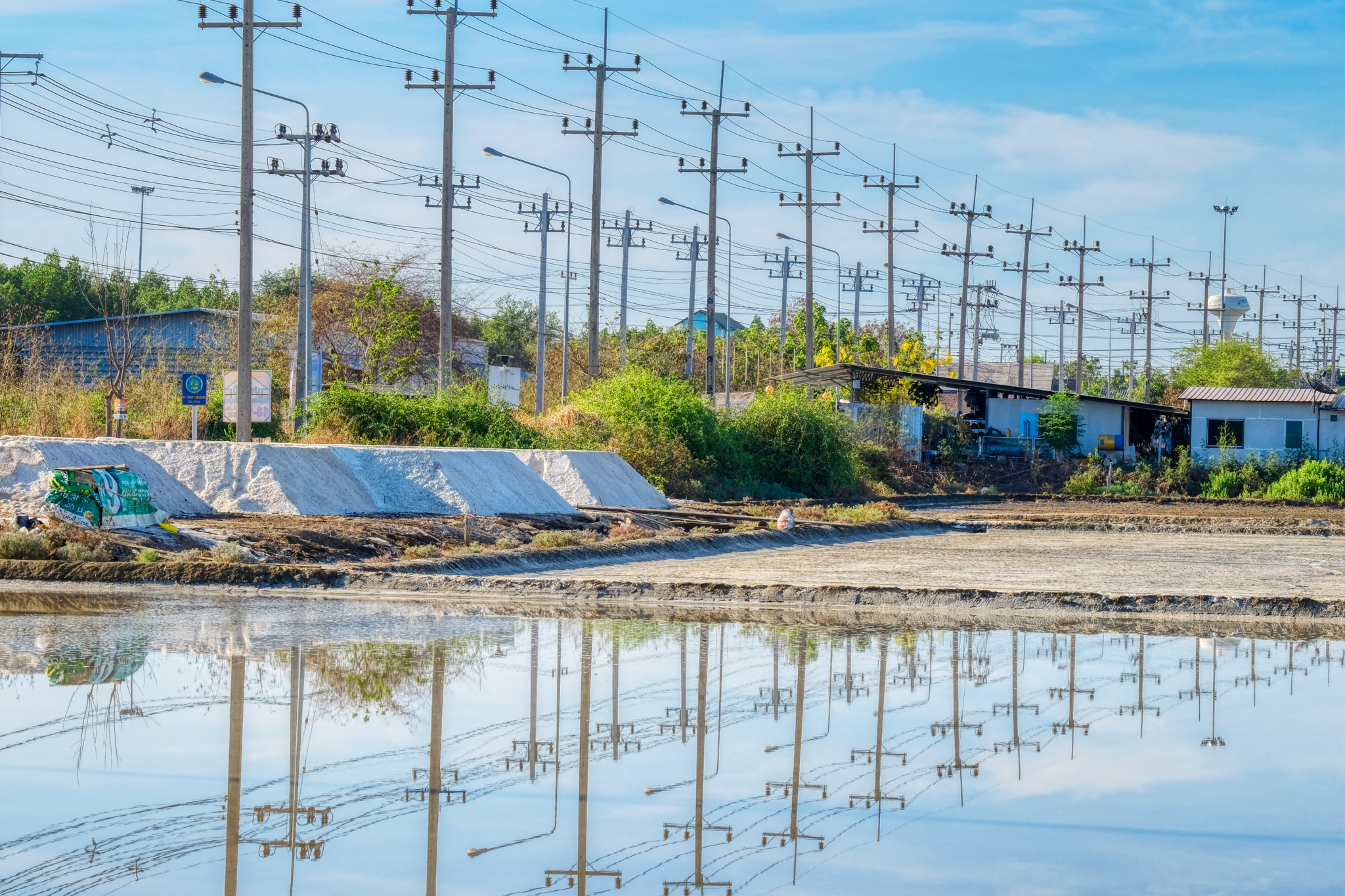 Rural roads are few and far between - valuable land is not used up for roads. As such, the roads that do exist serve for arterials for power, phone, and water. This is Thai local highway 2001.
Rural roads are few and far between - valuable land is not used up for roads. As such, the roads that do exist serve for arterials for power, phone, and water. This is Thai local highway 2001.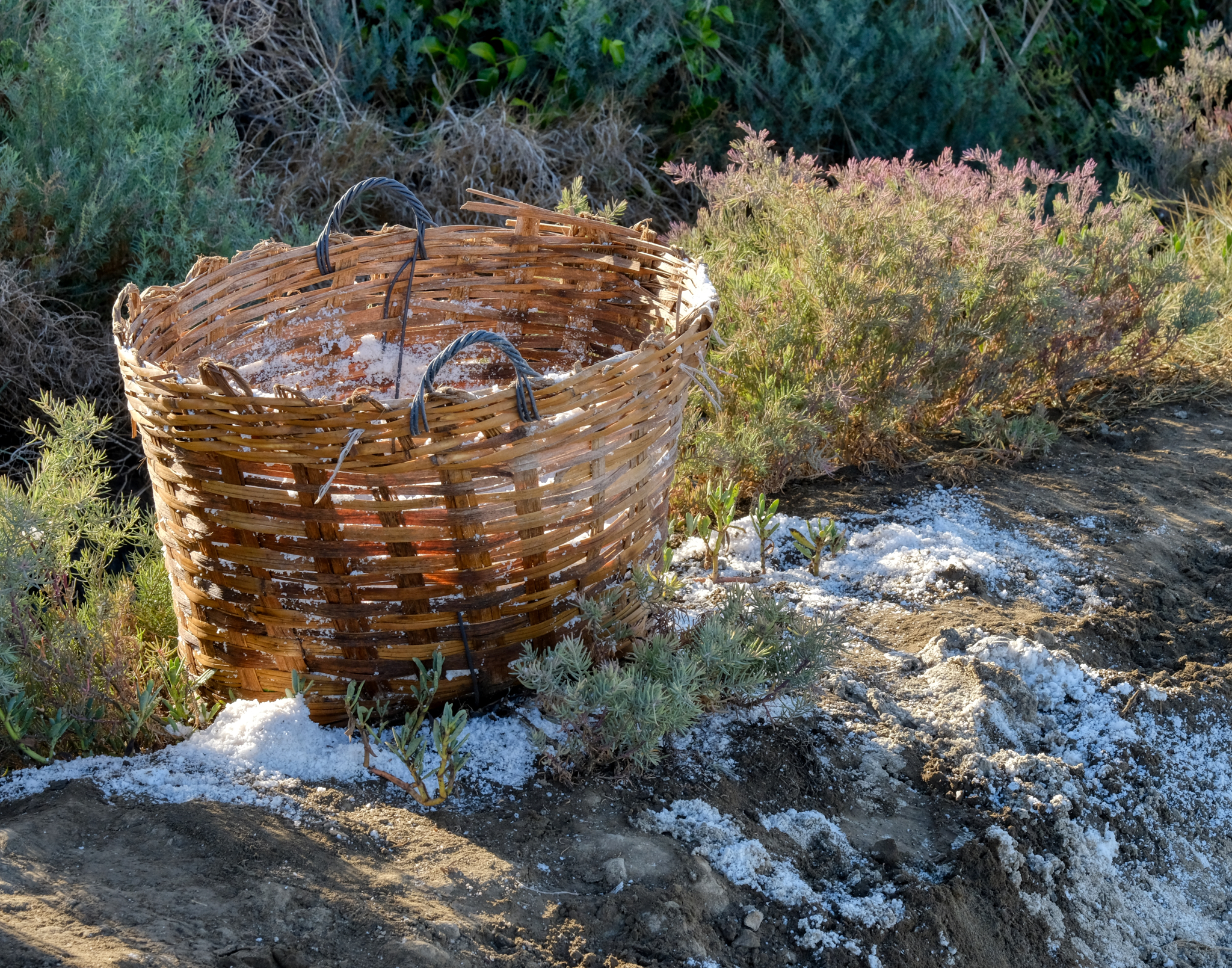 In the next salt pan, baskets were used to collect a special salt from the surface.
In the next salt pan, baskets were used to collect a special salt from the surface.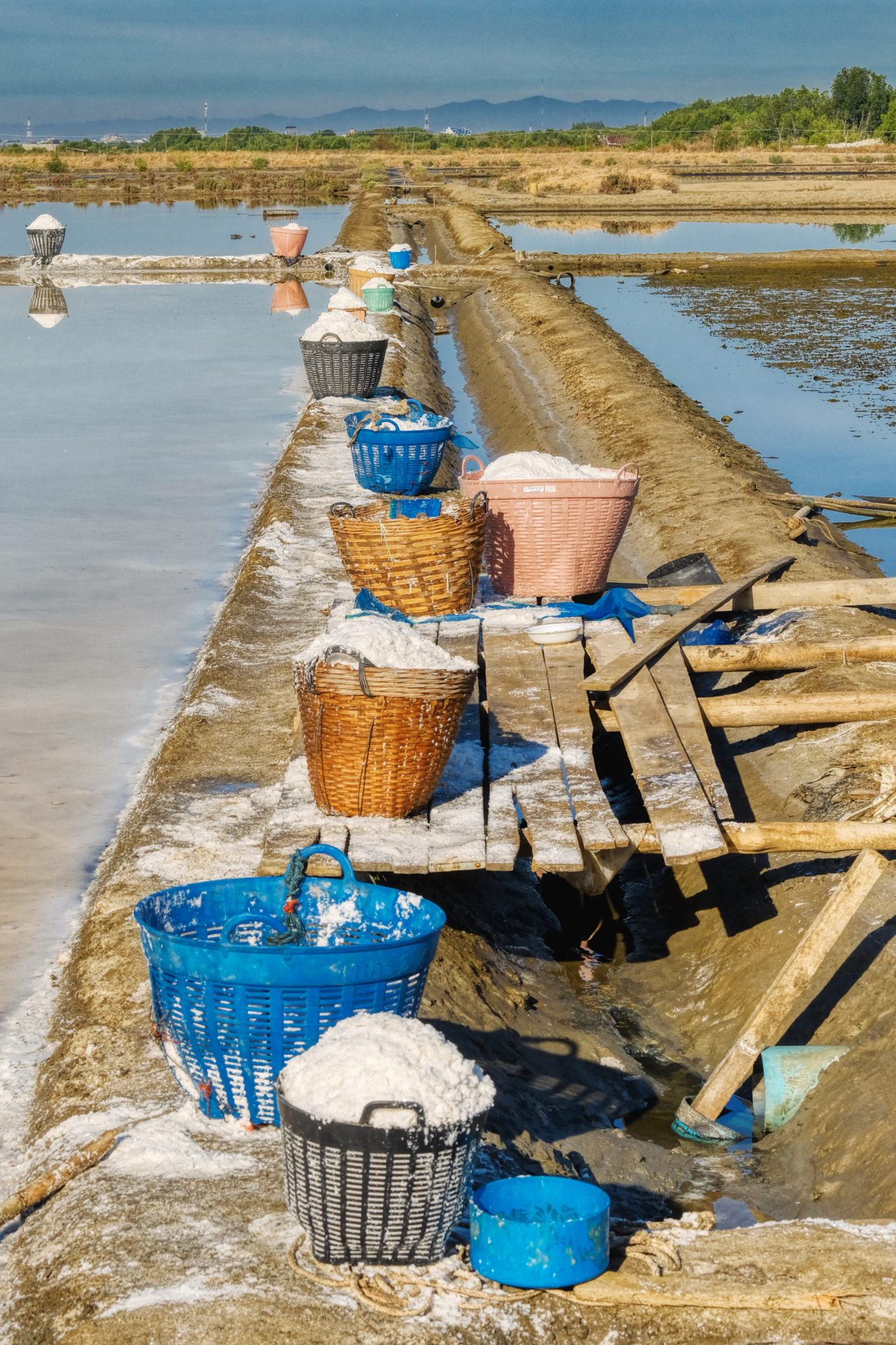 Ongoing salt harvesting.
Ongoing salt harvesting.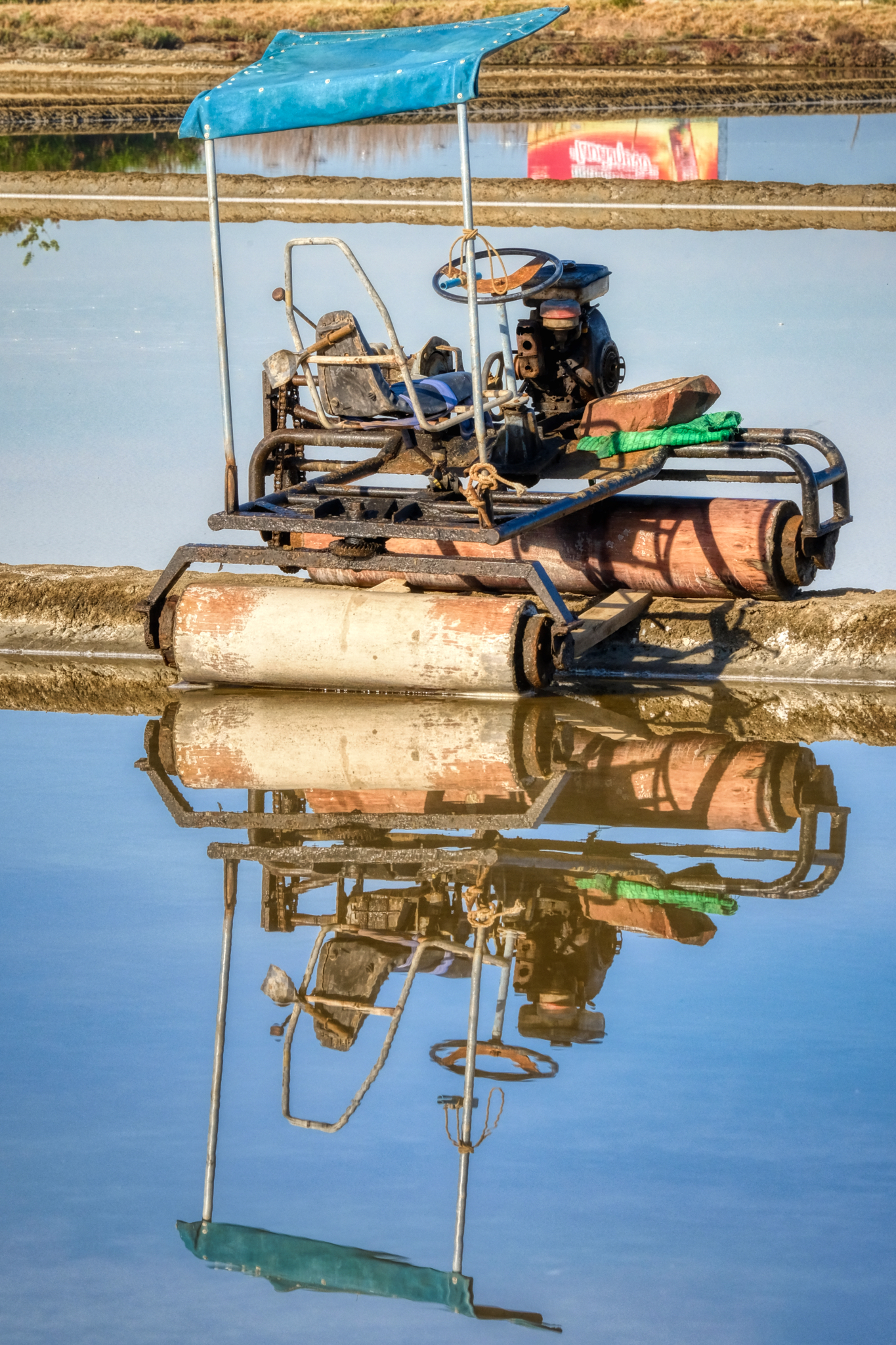 I love these amazing contraptions . . . used to flatten the pans after the salt has been removed.
I love these amazing contraptions . . . used to flatten the pans after the salt has been removed.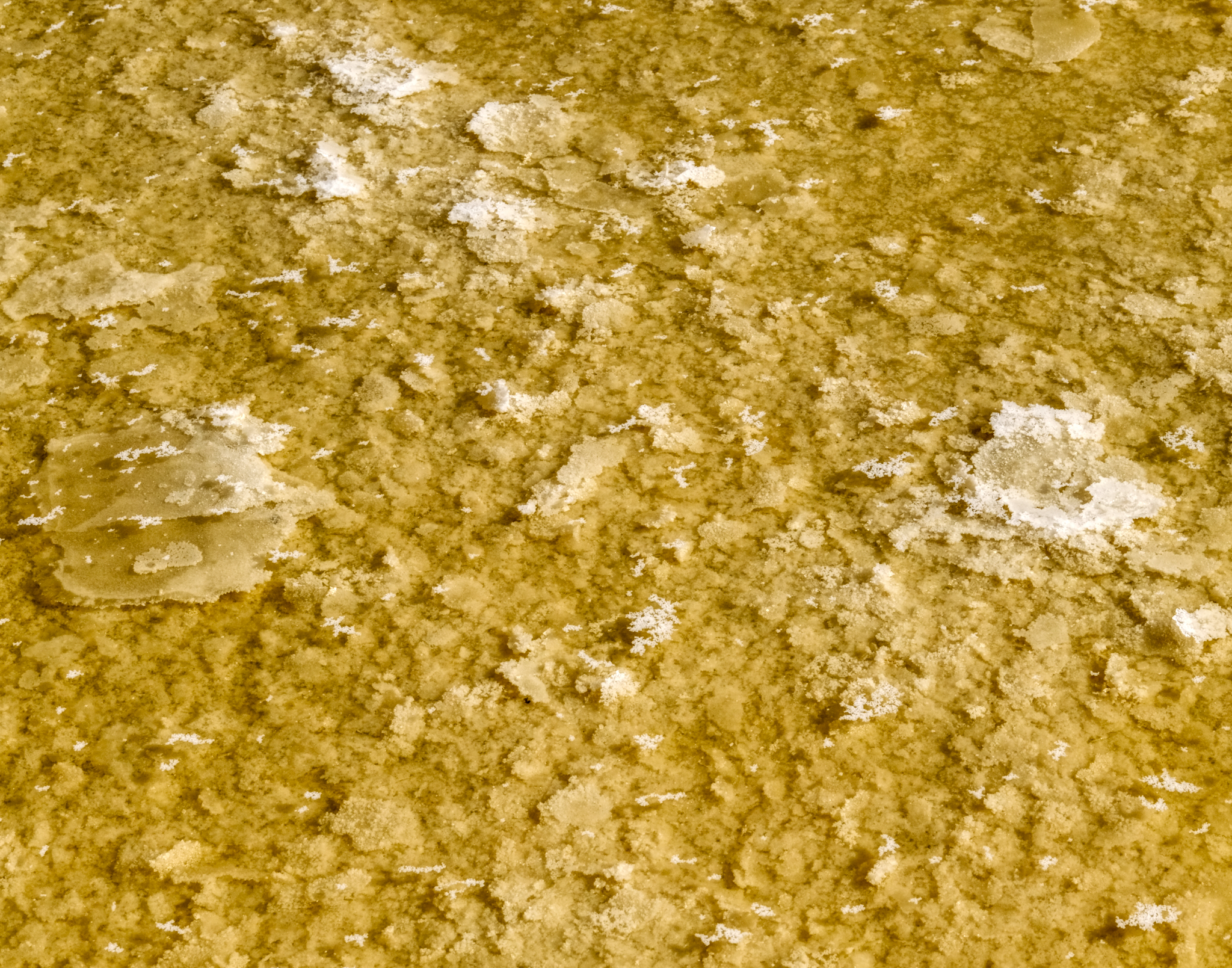 This is a rare (and valuable) form of flake salt favored by chefs . . . it floats on top of the supersaturated pans and is harvested in baskets (above).
This is a rare (and valuable) form of flake salt favored by chefs . . . it floats on top of the supersaturated pans and is harvested in baskets (above).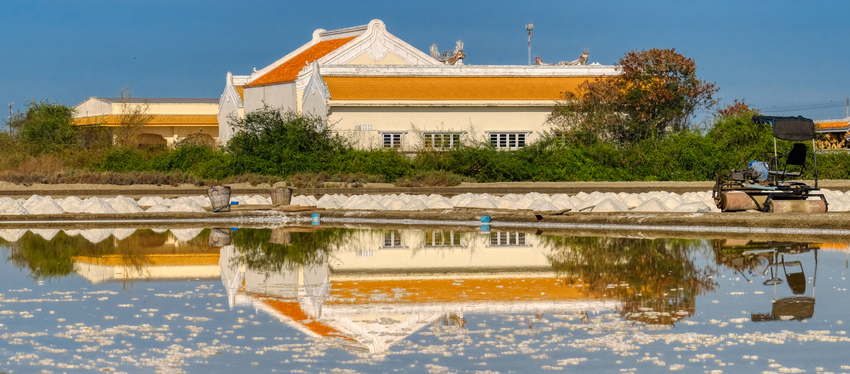 A beautiful Chinese-style Buddhist temple reflected in the salt pans.
A beautiful Chinese-style Buddhist temple reflected in the salt pans.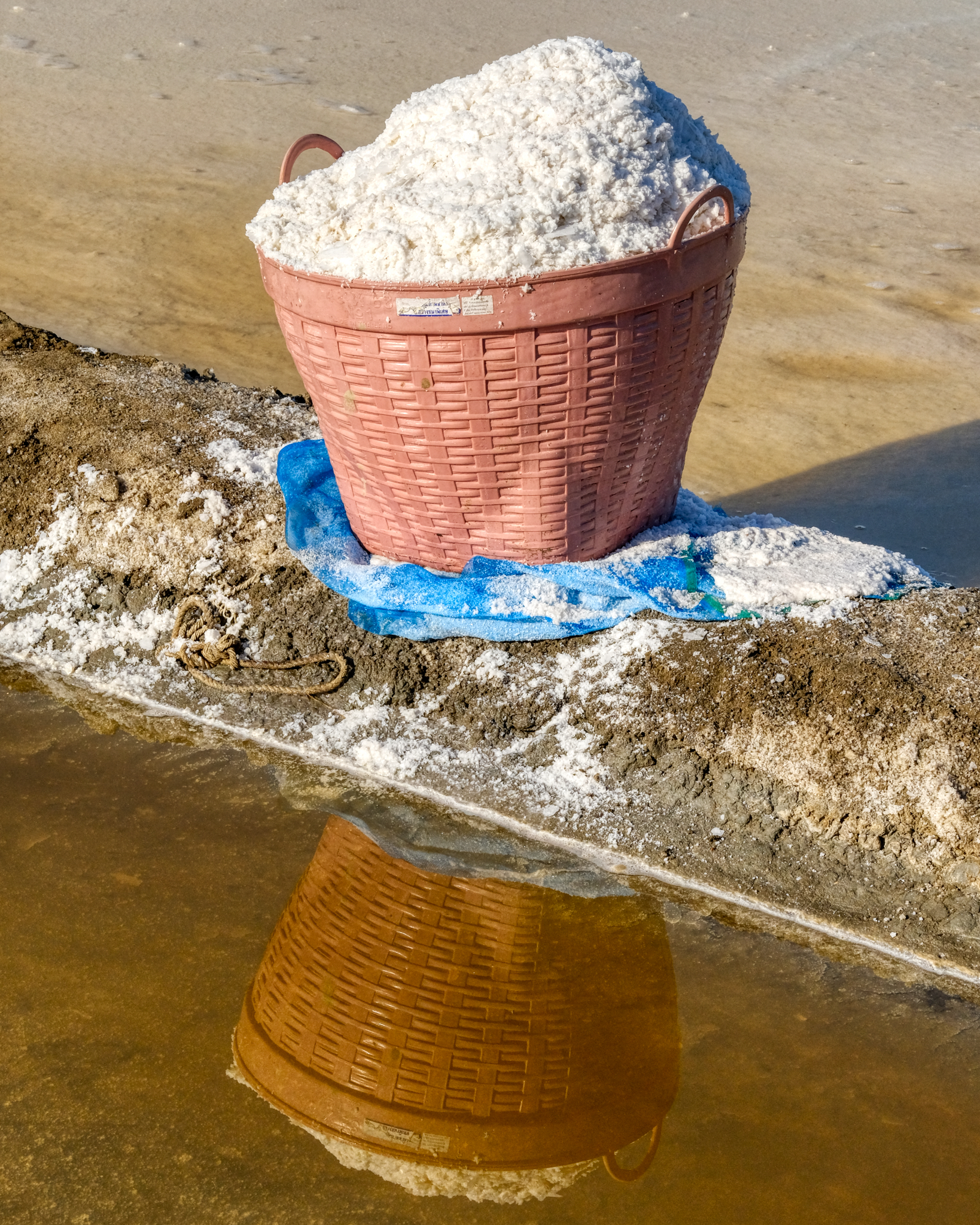 Light and flakey salt -- very valuable and sought after.
Light and flakey salt -- very valuable and sought after.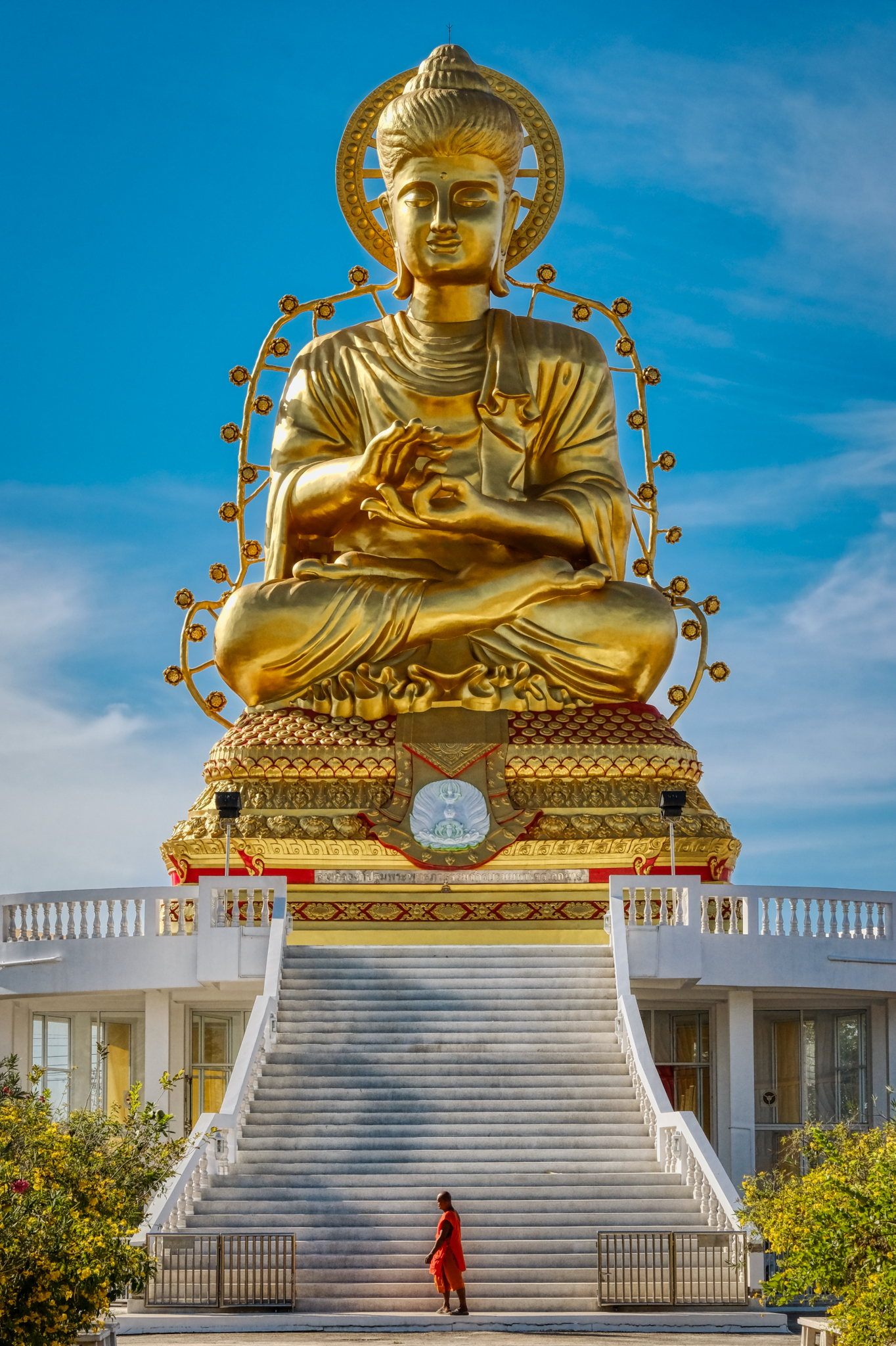 Directly across from the flake salt gathering was the Buddhist Wat I came to see after 5 years . . . . Wat Lat Yai with the Buddha colossus.
Directly across from the flake salt gathering was the Buddhist Wat I came to see after 5 years . . . . Wat Lat Yai with the Buddha colossus. 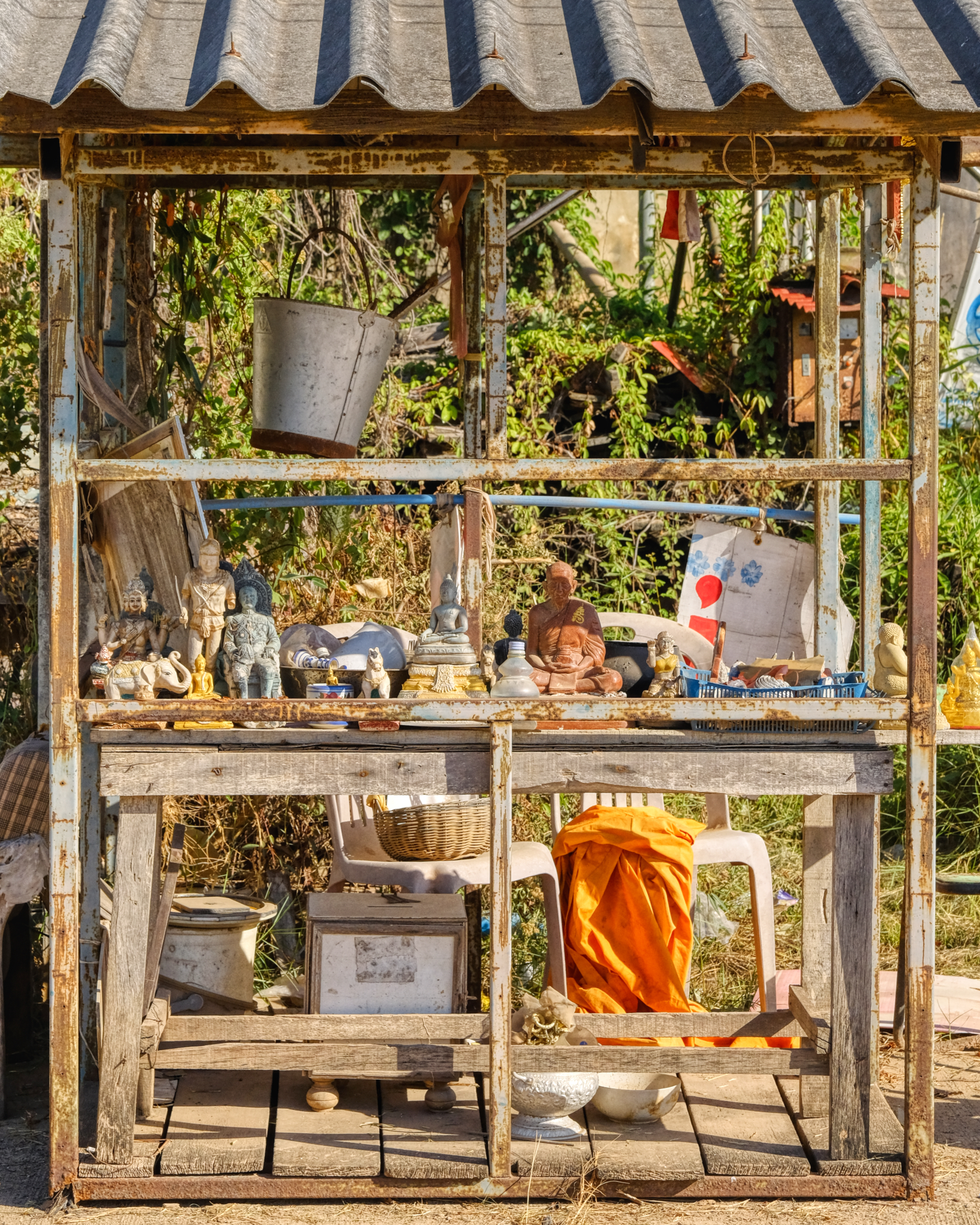 I had such wonderful memories of the spirituality of this Wat when I last visited. There are always interesting and unexpected things to see in a Wat. Some of what you see are what the monks themselves have arranged (like this small altar), but most of what is seen in a Wat are the results of what the big, rich donors want there to be.
I had such wonderful memories of the spirituality of this Wat when I last visited. There are always interesting and unexpected things to see in a Wat. Some of what you see are what the monks themselves have arranged (like this small altar), but most of what is seen in a Wat are the results of what the big, rich donors want there to be.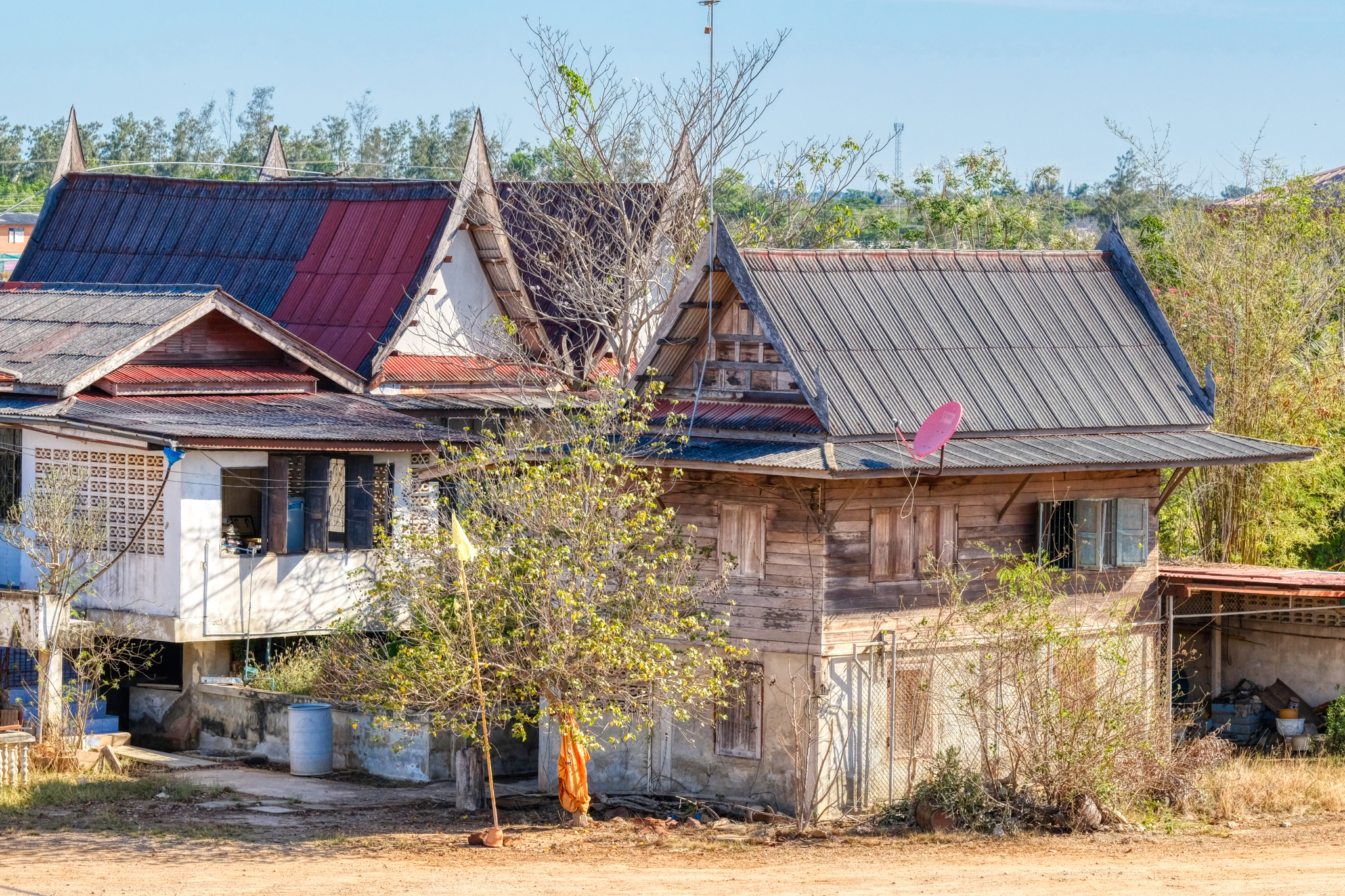 The surviving old monk quarters. I am always amazed to see a satellite dish in a Buddhist temple . . .
The surviving old monk quarters. I am always amazed to see a satellite dish in a Buddhist temple . . . 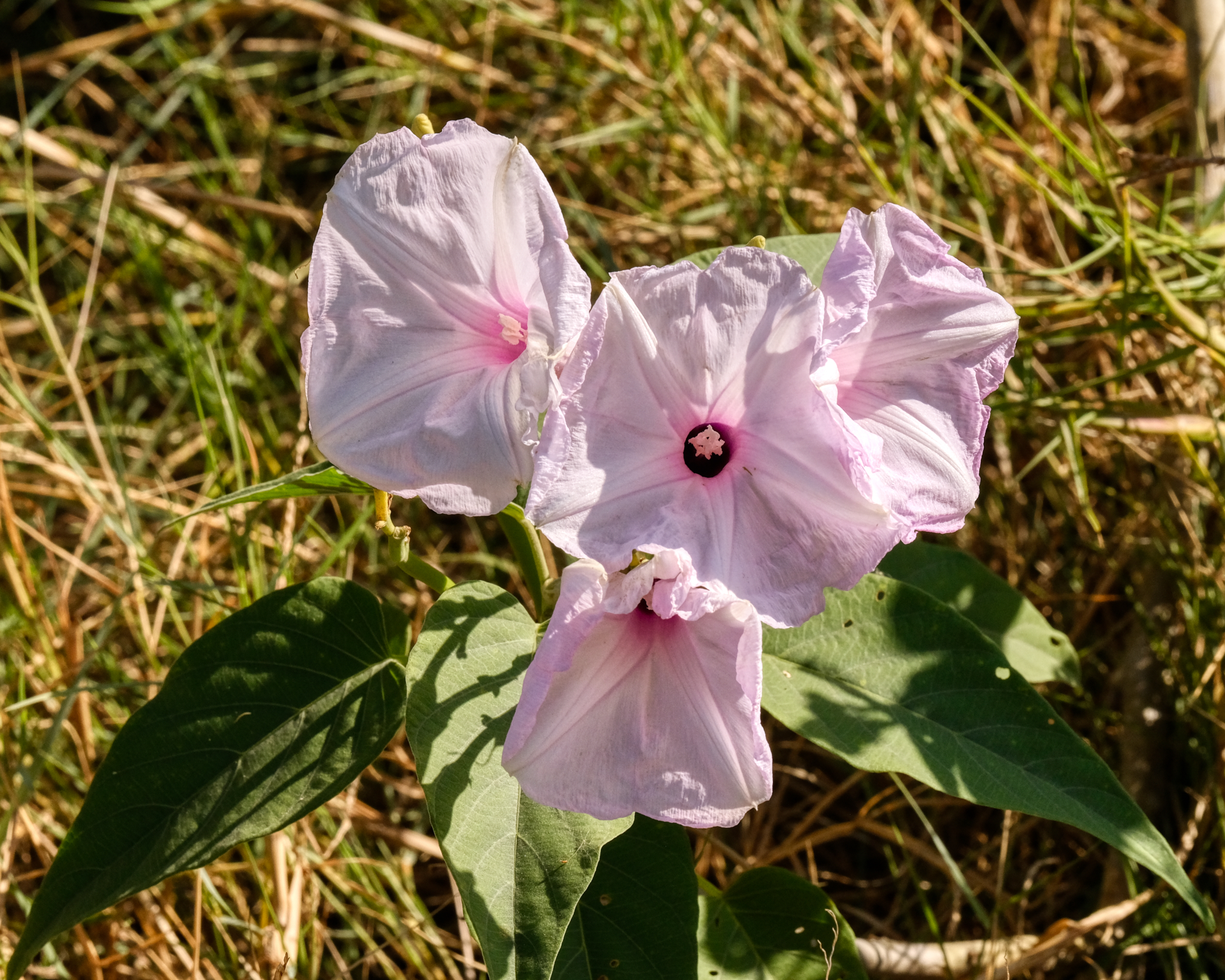 Always beautiful flowers to be seen in a Wat.
Always beautiful flowers to be seen in a Wat.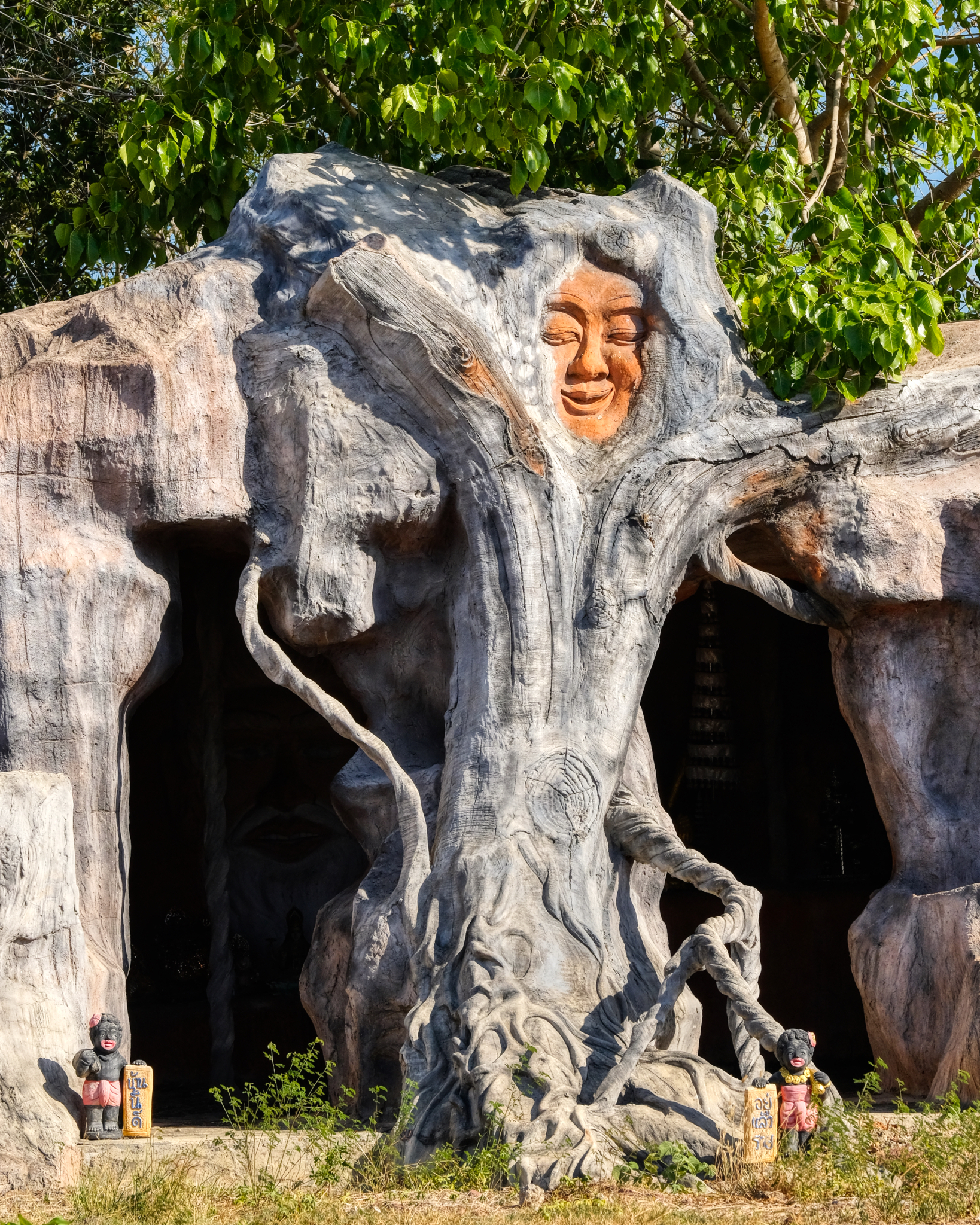 Wat Lat Yai has some of the strangest 'grottos' I have ever seen. From the outside they are just plain weird . . .
Wat Lat Yai has some of the strangest 'grottos' I have ever seen. From the outside they are just plain weird . . .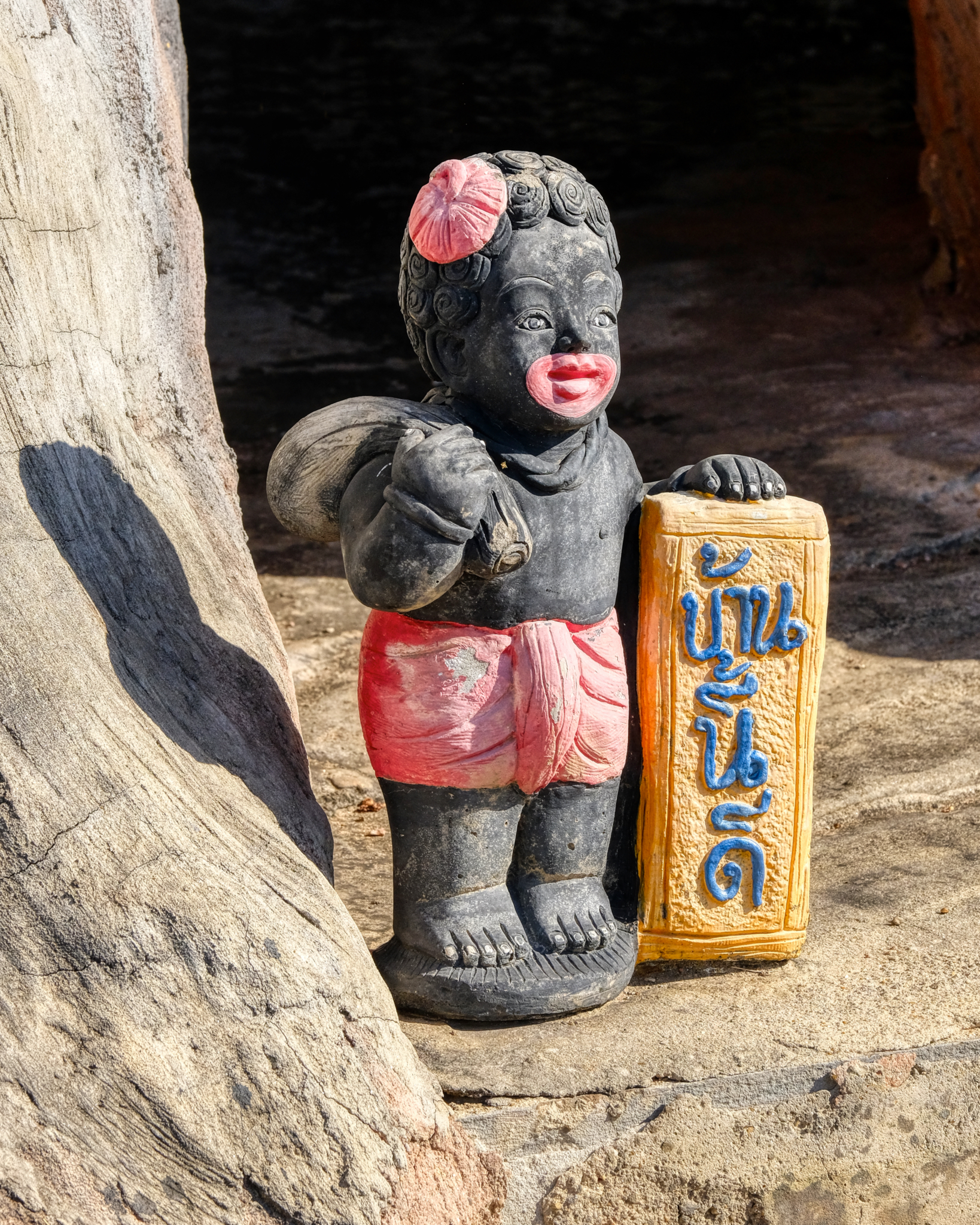 What exactly is going on here? Remember, these things are placed in temples by the doners, not by the monks, who renounce material things. But still . . . .
What exactly is going on here? Remember, these things are placed in temples by the doners, not by the monks, who renounce material things. But still . . . .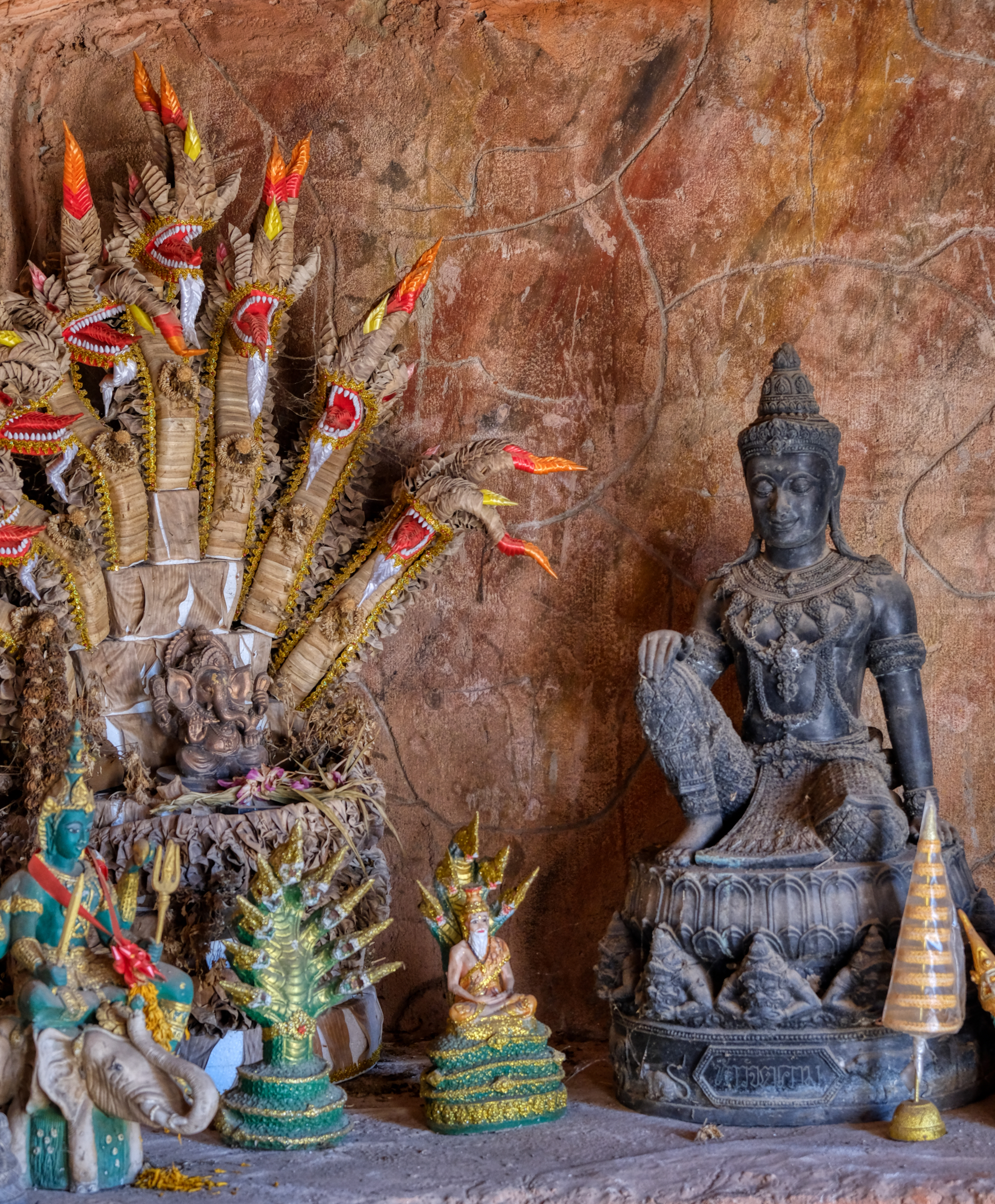 Although the outside of this man-made grotto was a little strange, the inside was magic.
Although the outside of this man-made grotto was a little strange, the inside was magic.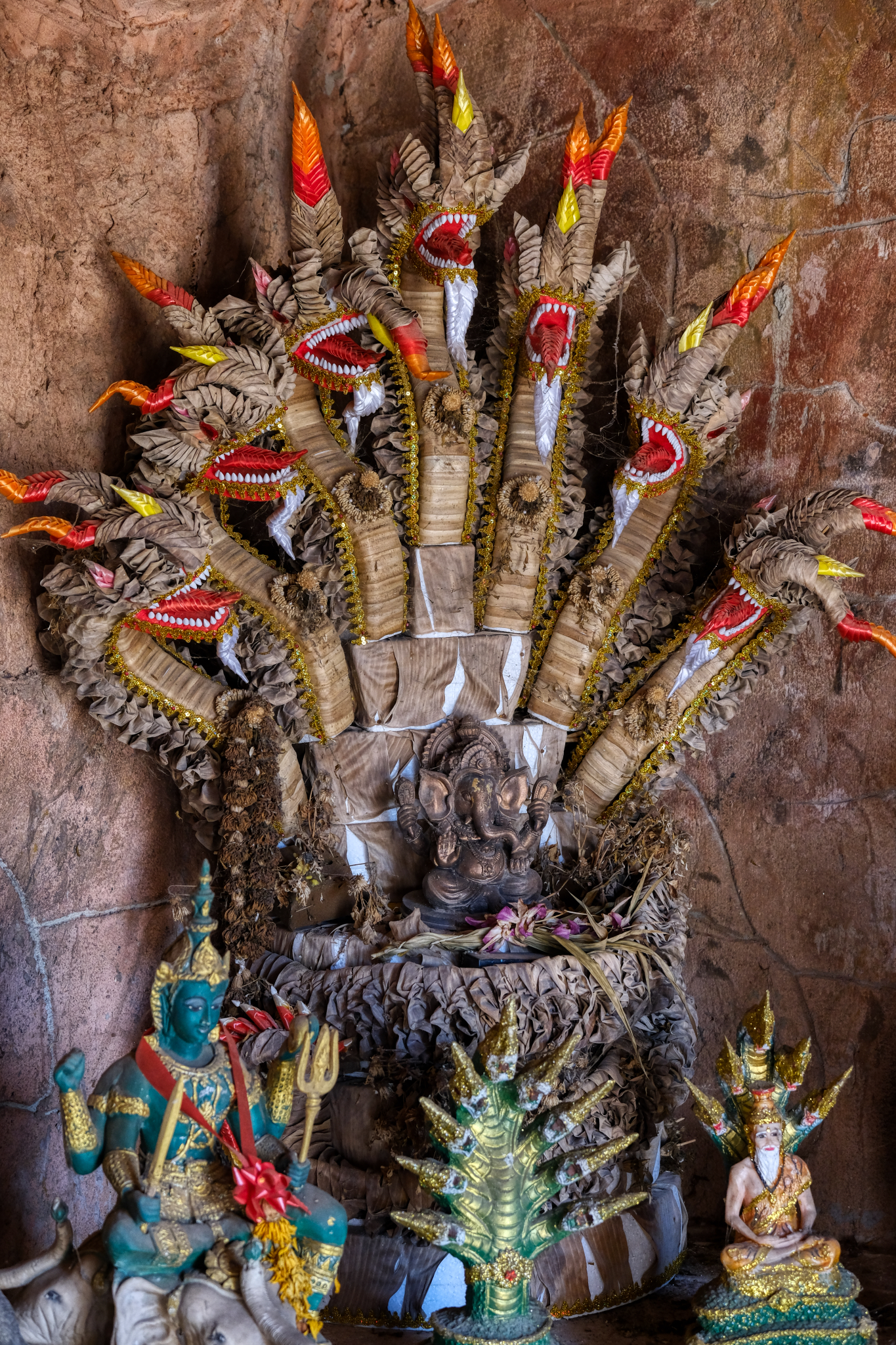 The banana leaf origami on this altar piece was stunningly beautiful. I felt a little like Indiana Jones discovering a lost tomb or ancient temple never seen before. These are Hindu religious items revered in Thailand along side The Buddha.
The banana leaf origami on this altar piece was stunningly beautiful. I felt a little like Indiana Jones discovering a lost tomb or ancient temple never seen before. These are Hindu religious items revered in Thailand along side The Buddha.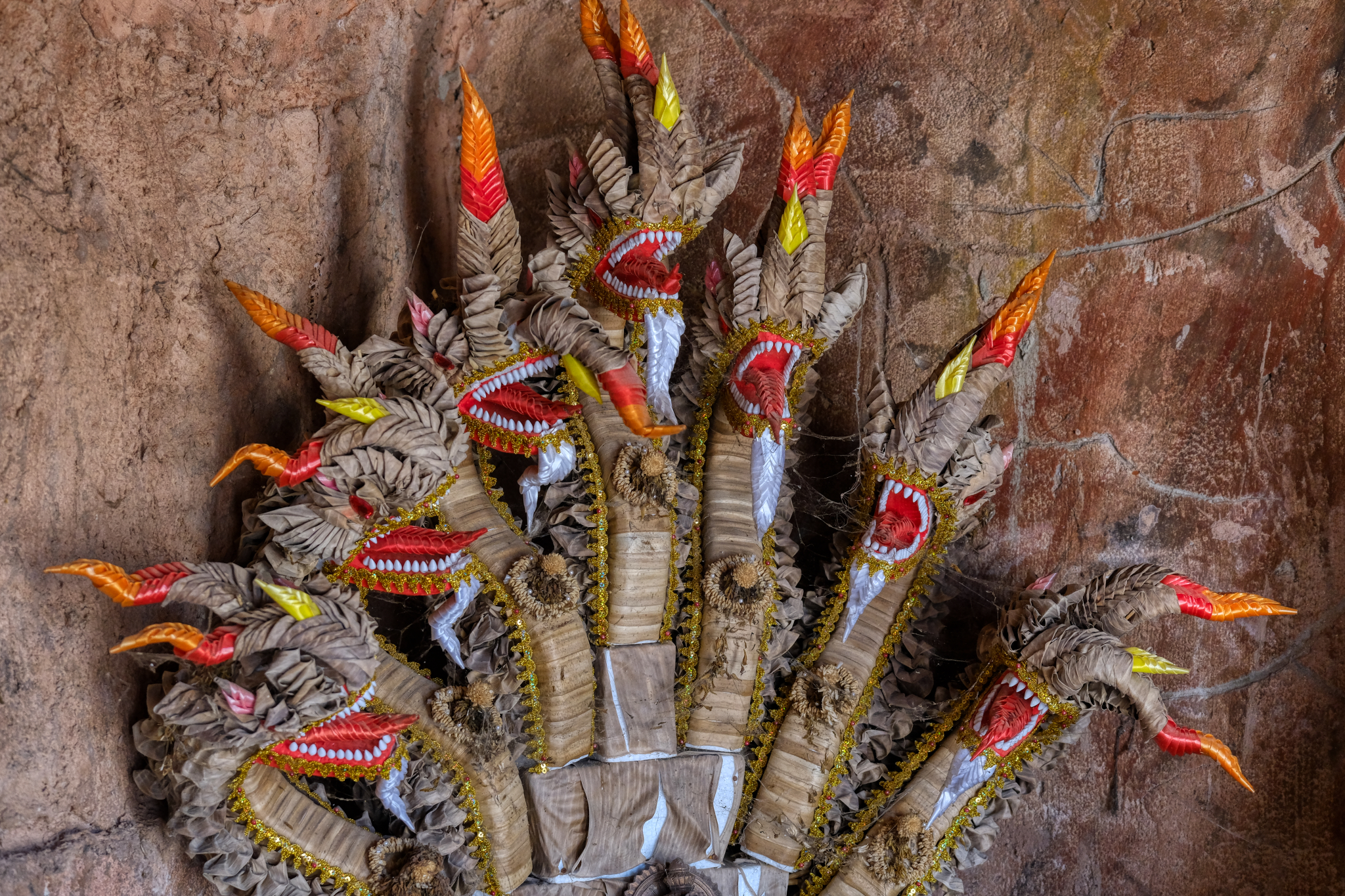 Remarkable fine detailing.
Remarkable fine detailing.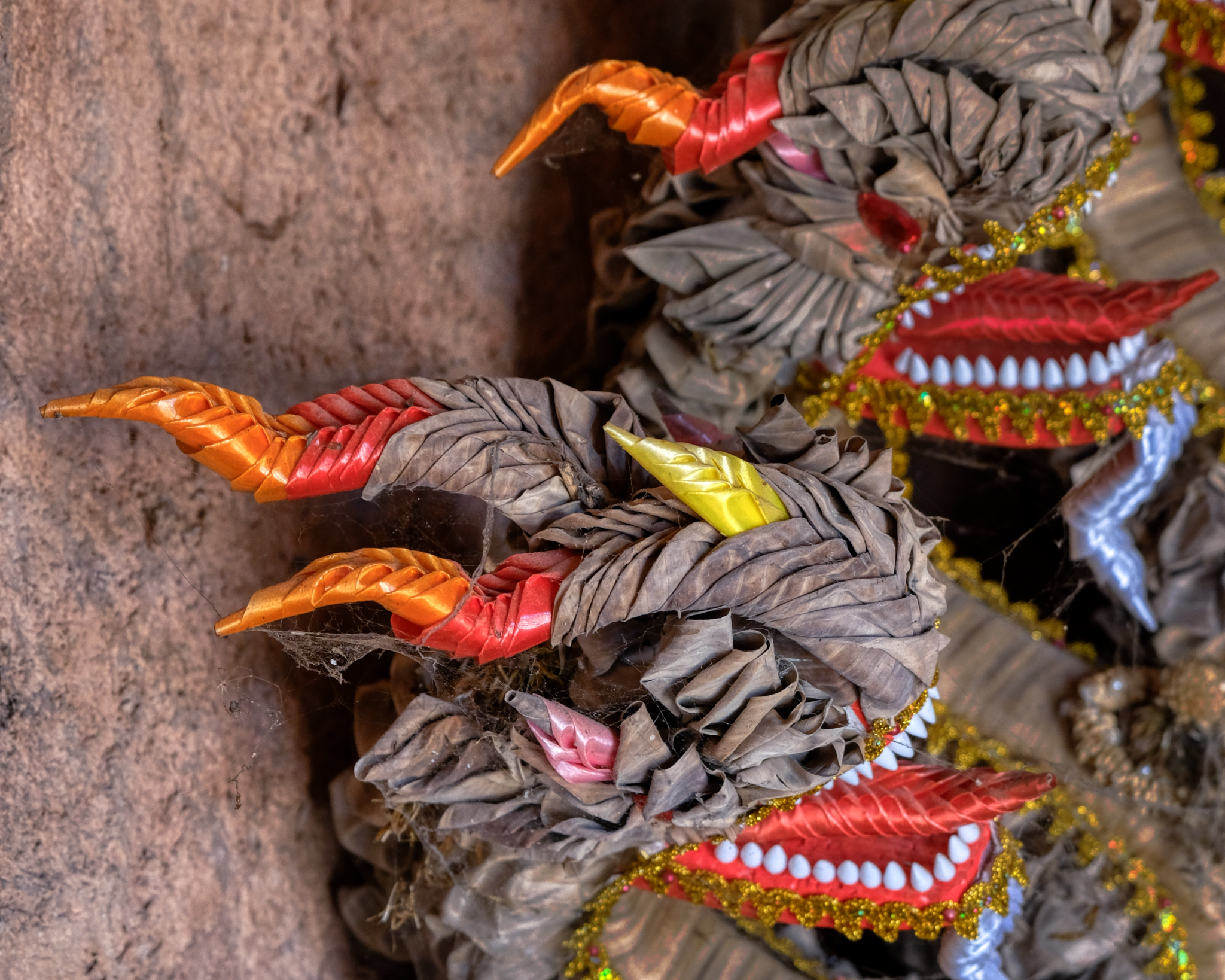 Even the cobwebs seem to belong; adding to the spiritual power of this votive object.
Even the cobwebs seem to belong; adding to the spiritual power of this votive object.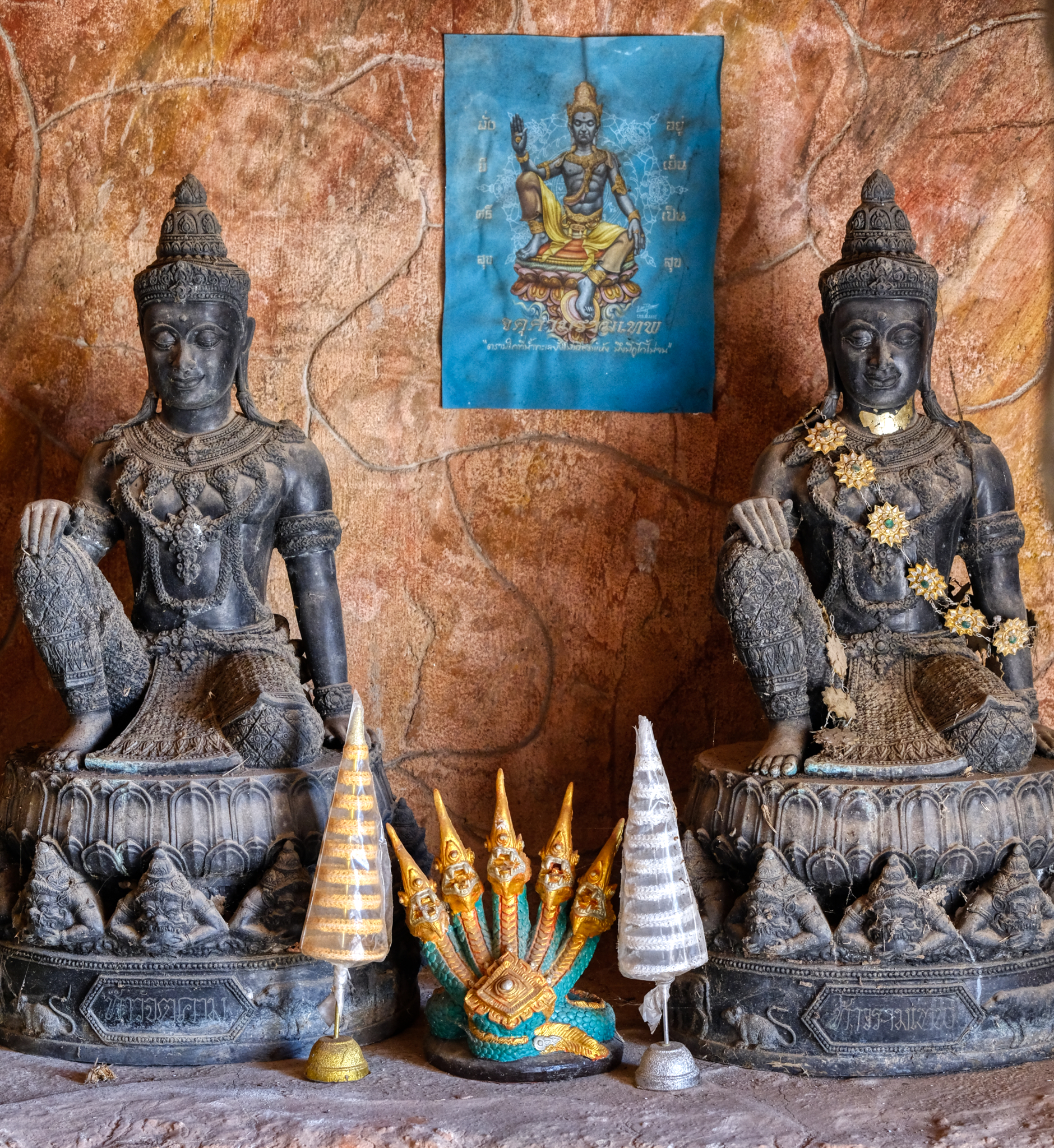 Bikkus, listeners of the Buddha teaching the dharma.
Bikkus, listeners of the Buddha teaching the dharma.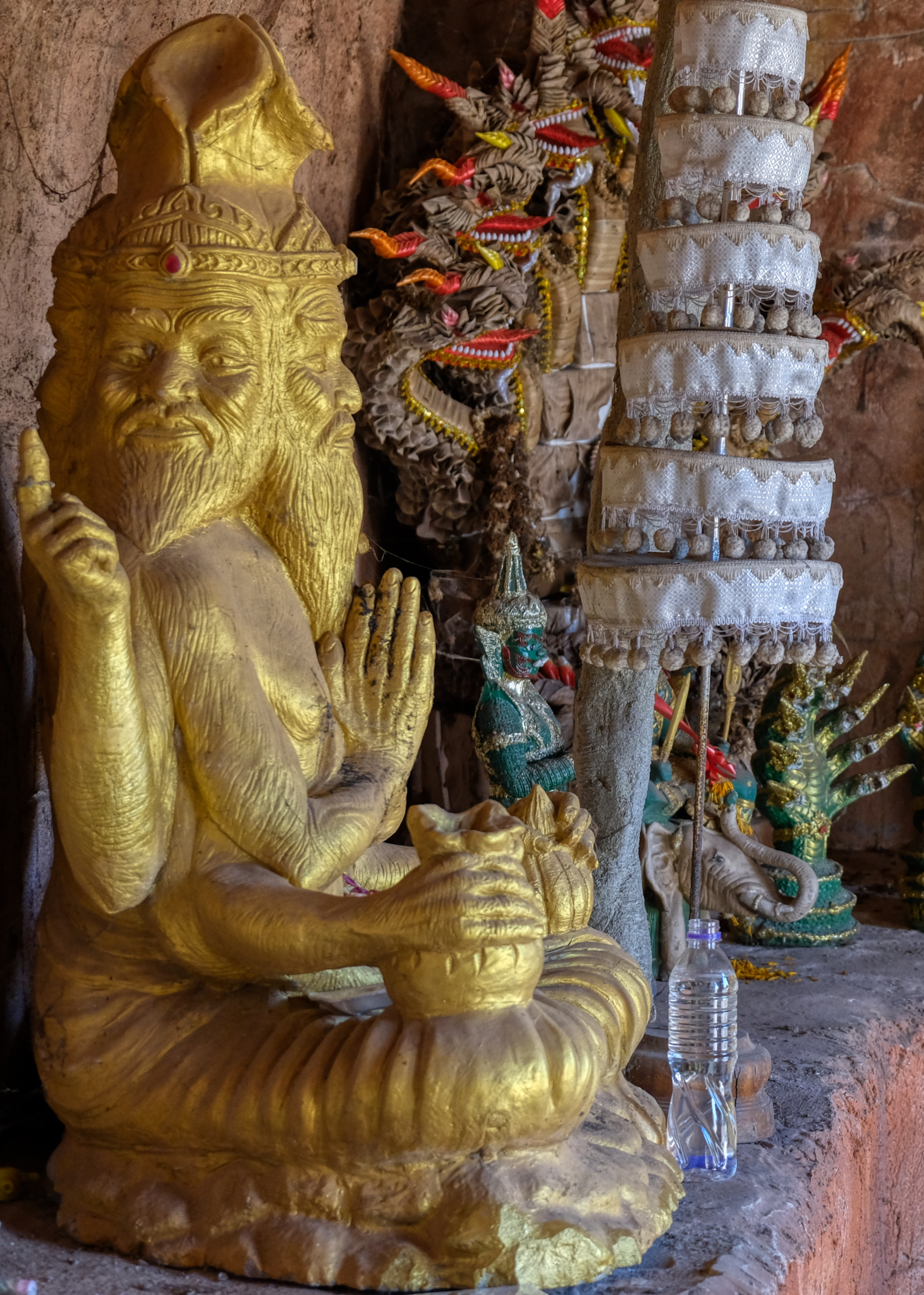 Another Hindu reference . . . a four face sadhu.
Another Hindu reference . . . a four face sadhu.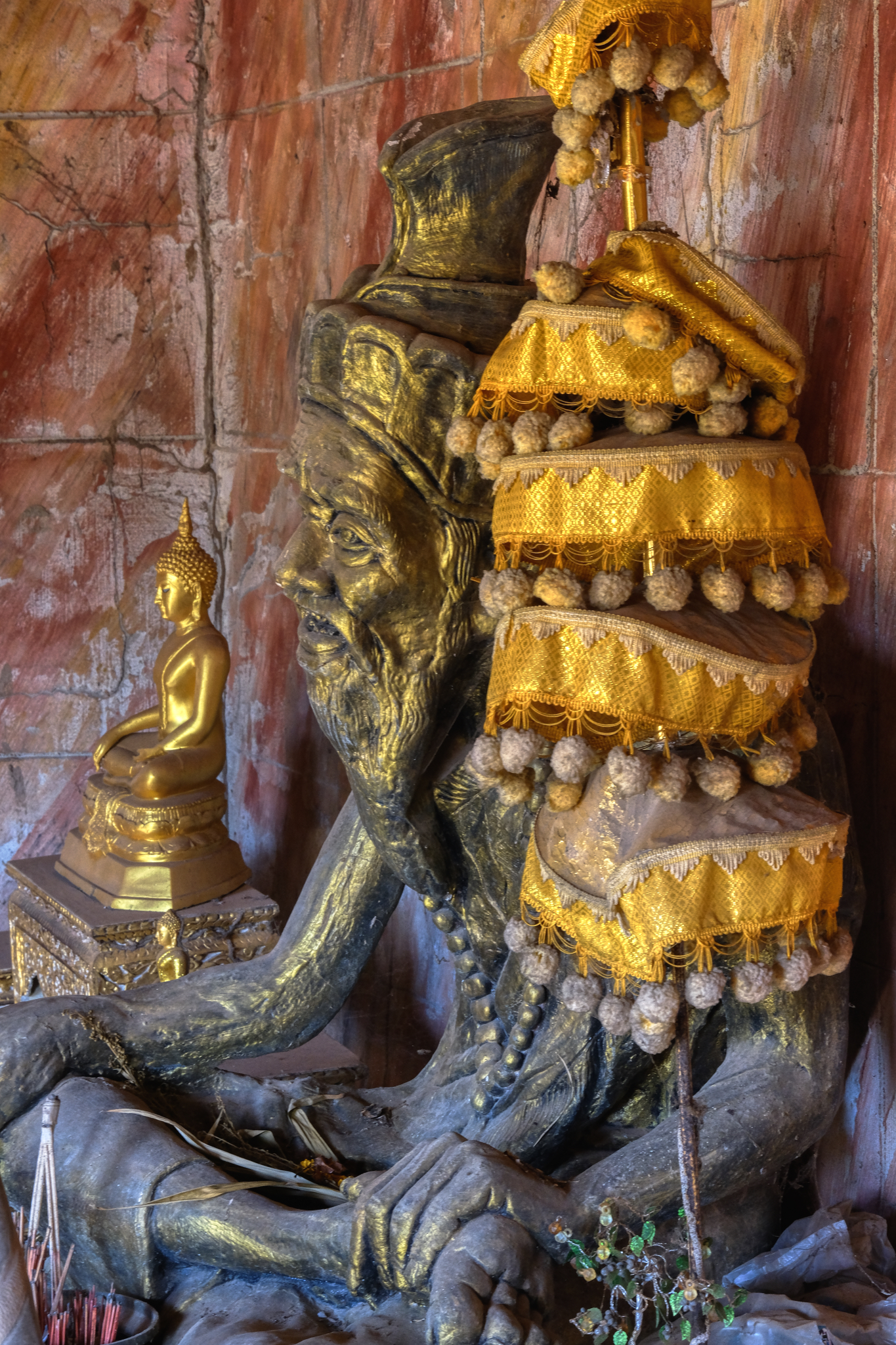 Sadhu and Buddha images in the grotto. I loved being in that space . . .
Sadhu and Buddha images in the grotto. I loved being in that space . . .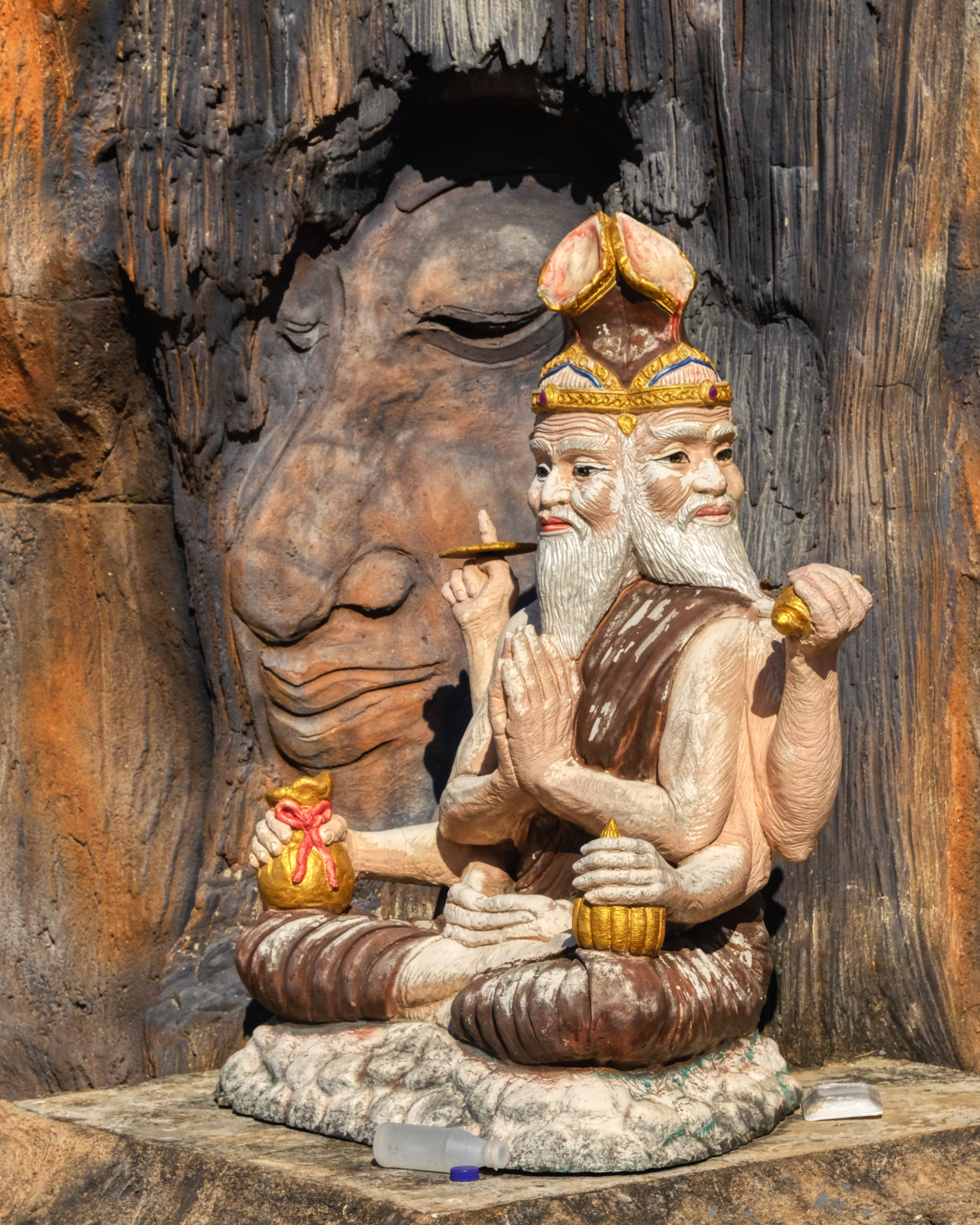 There were also a series of enclave altars around the outside and back of the grotto structure.
There were also a series of enclave altars around the outside and back of the grotto structure.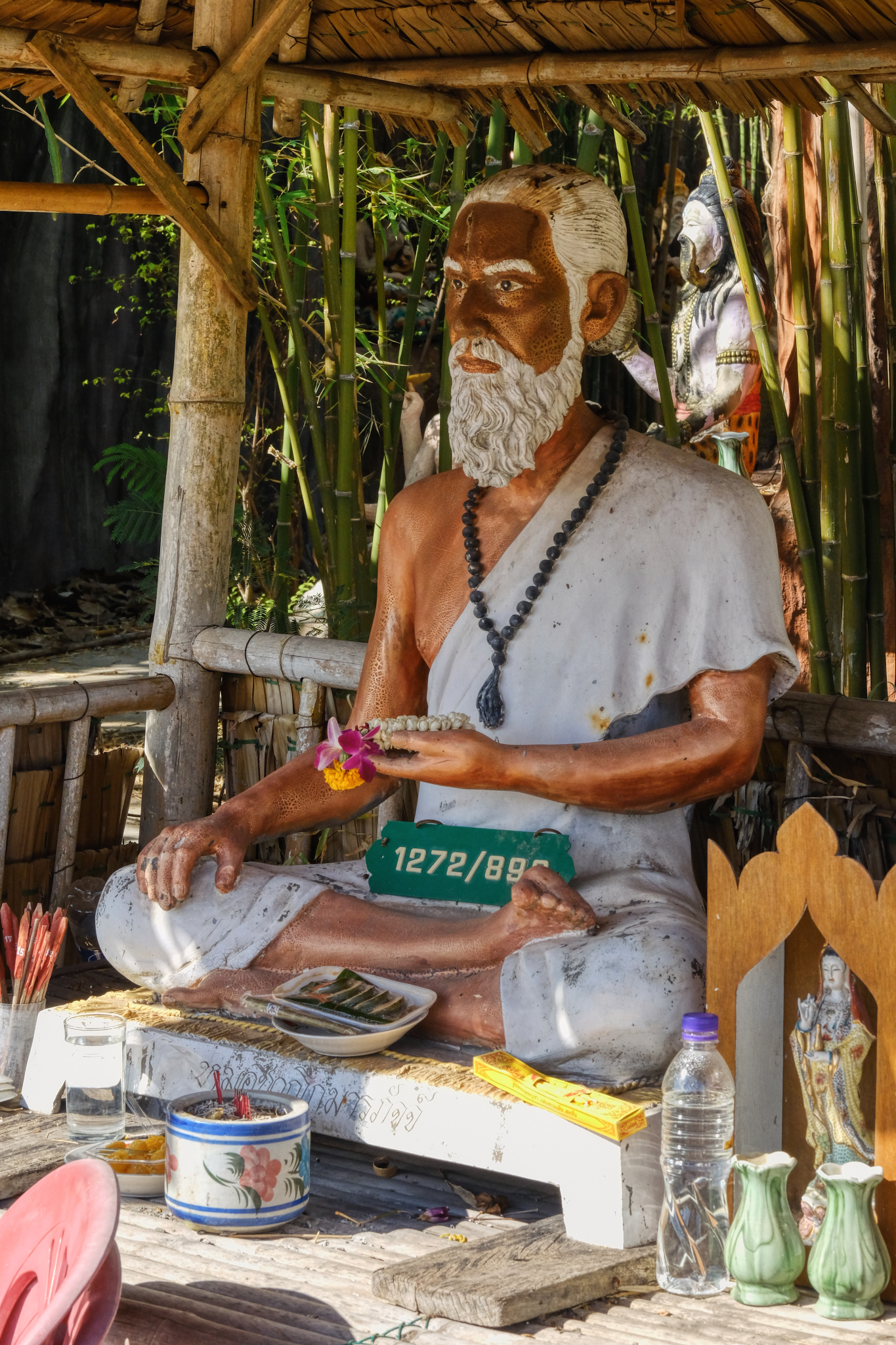 These are living altars. As can be seen, people bring offerings, usually wishing or hoping for good luck. Notice that someone has left the address plate from their house on the altar . . .
These are living altars. As can be seen, people bring offerings, usually wishing or hoping for good luck. Notice that someone has left the address plate from their house on the altar . . .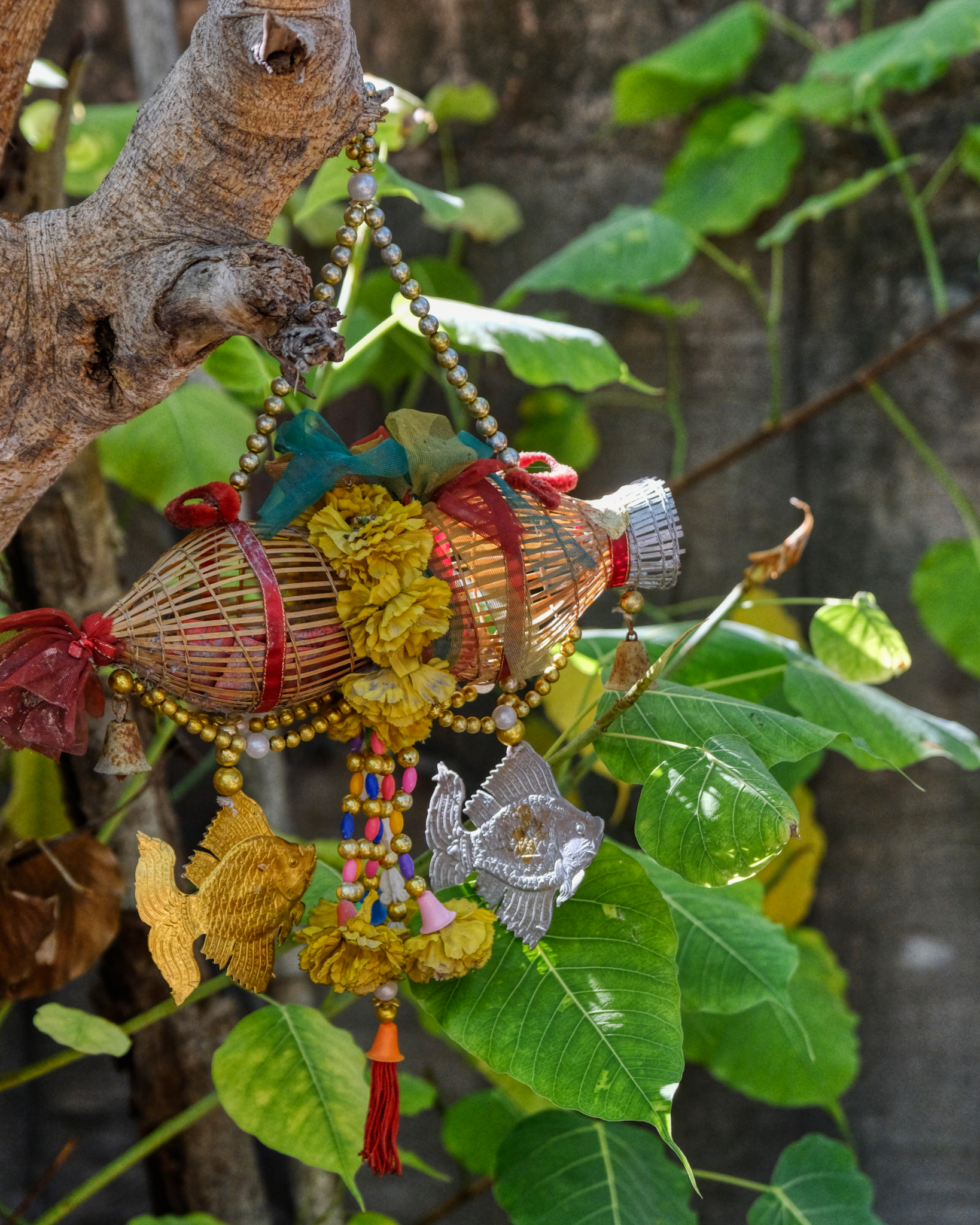 Slung here and there, votive charms festoon the temple trees.
Slung here and there, votive charms festoon the temple trees.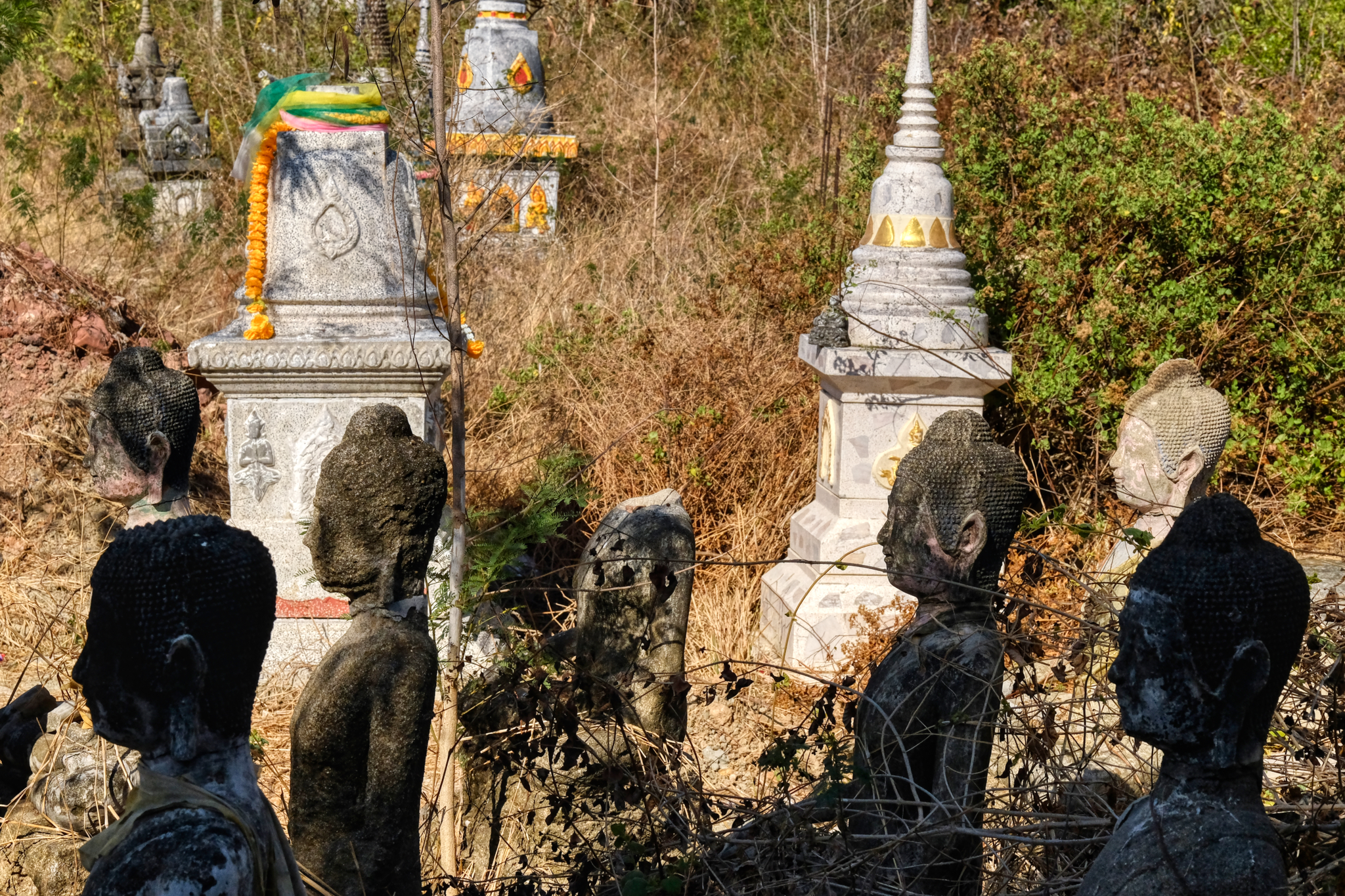 The reason I wanted to return to this Wat and bring friends, was because there used to be a tropical pine grove with old Buddha images in it . . . covered in pine needles. The pine forest is gone: slashed because they did not fit the plan of a doner with a new vision for this temple. The old Buddhas were still there, but looking like they have been 'mothballed' . . .
The reason I wanted to return to this Wat and bring friends, was because there used to be a tropical pine grove with old Buddha images in it . . . covered in pine needles. The pine forest is gone: slashed because they did not fit the plan of a doner with a new vision for this temple. The old Buddhas were still there, but looking like they have been 'mothballed' . . .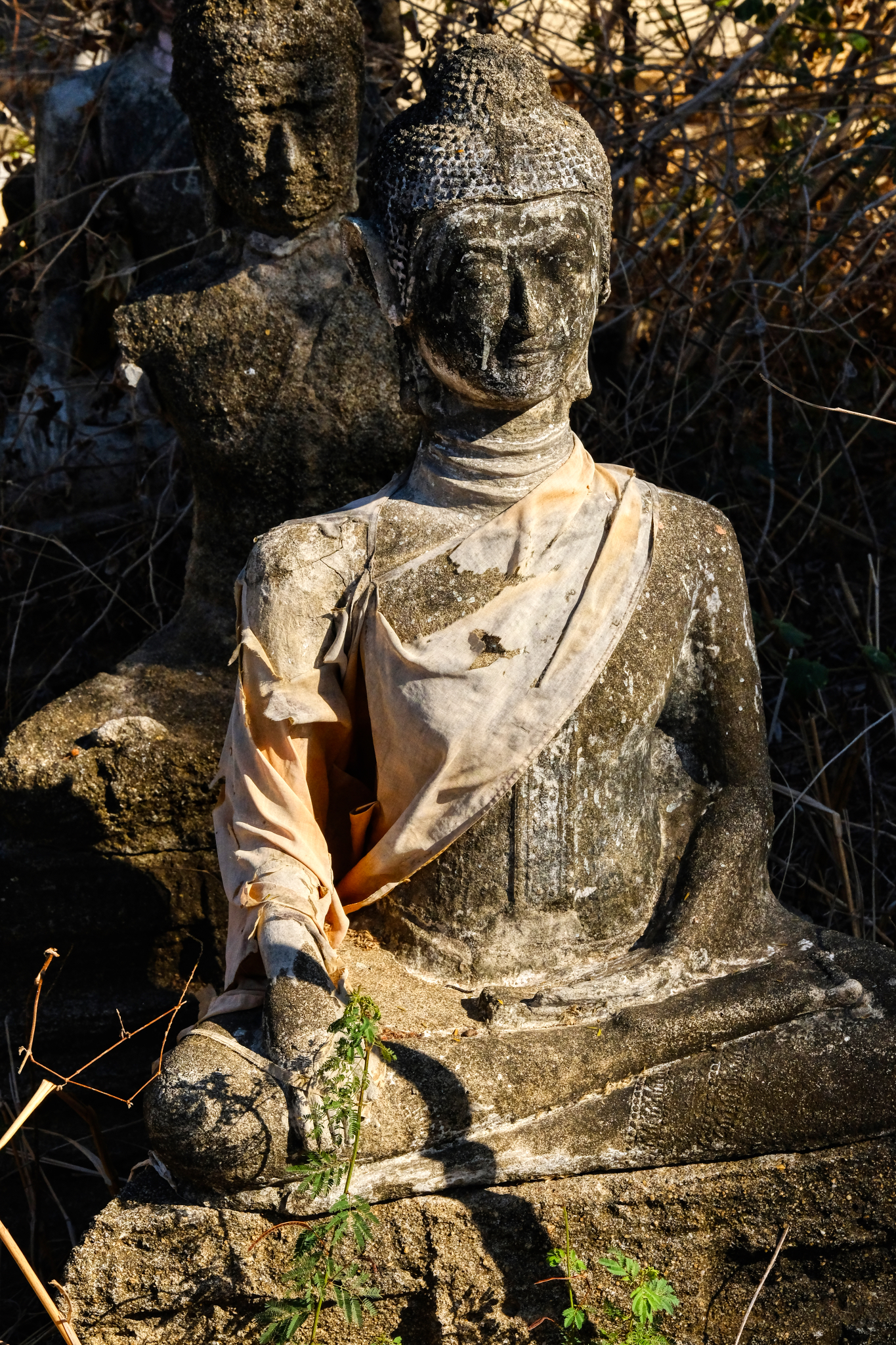 These old, and seemingly discarded, Buddha images seemed to me to be highly spiritual reminders of the project that the Buddha called us to try.
These old, and seemingly discarded, Buddha images seemed to me to be highly spiritual reminders of the project that the Buddha called us to try.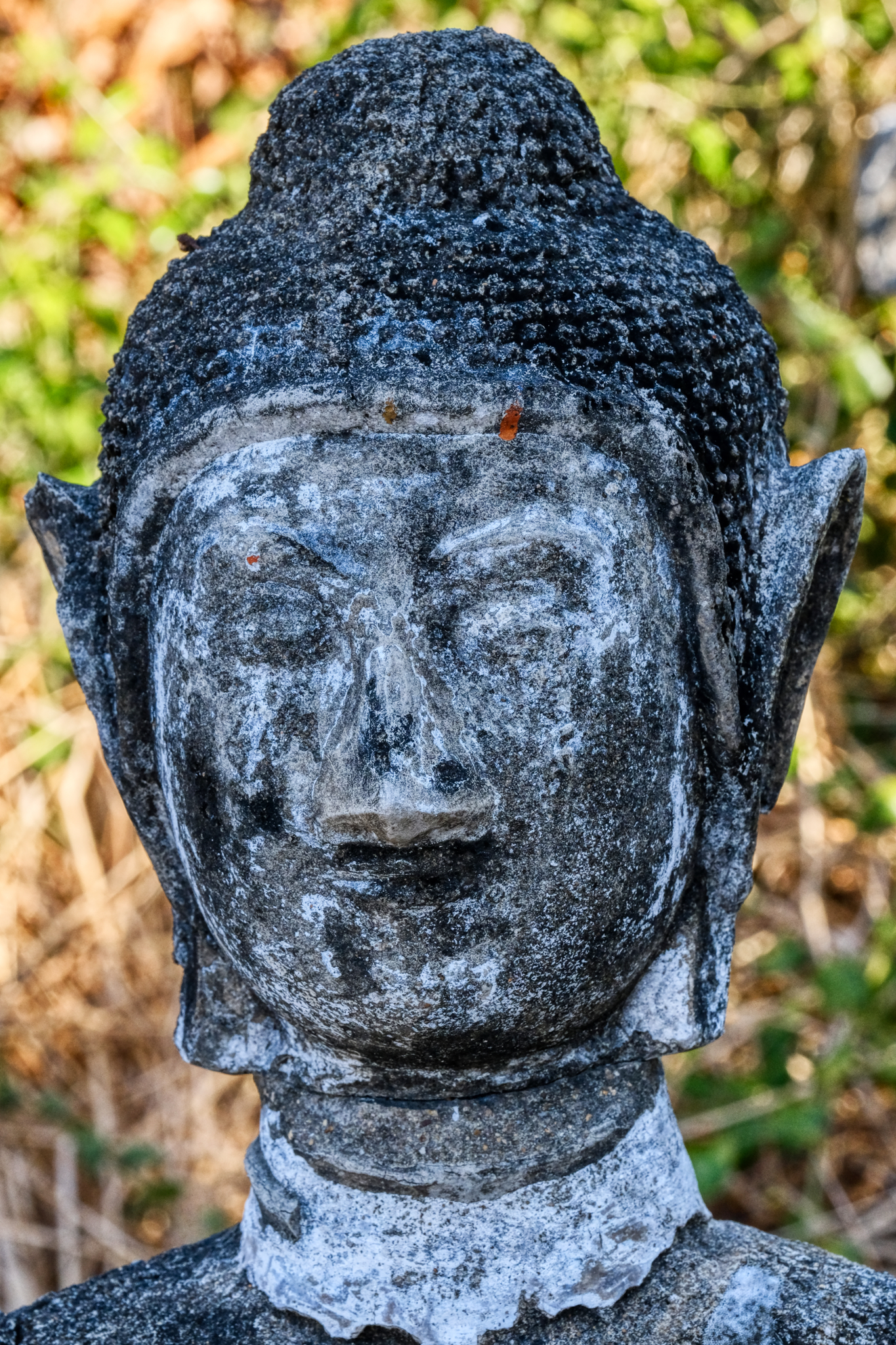 It seems like someone has taken a scraper to clean some of the moss of of this Buddha image.
It seems like someone has taken a scraper to clean some of the moss of of this Buddha image.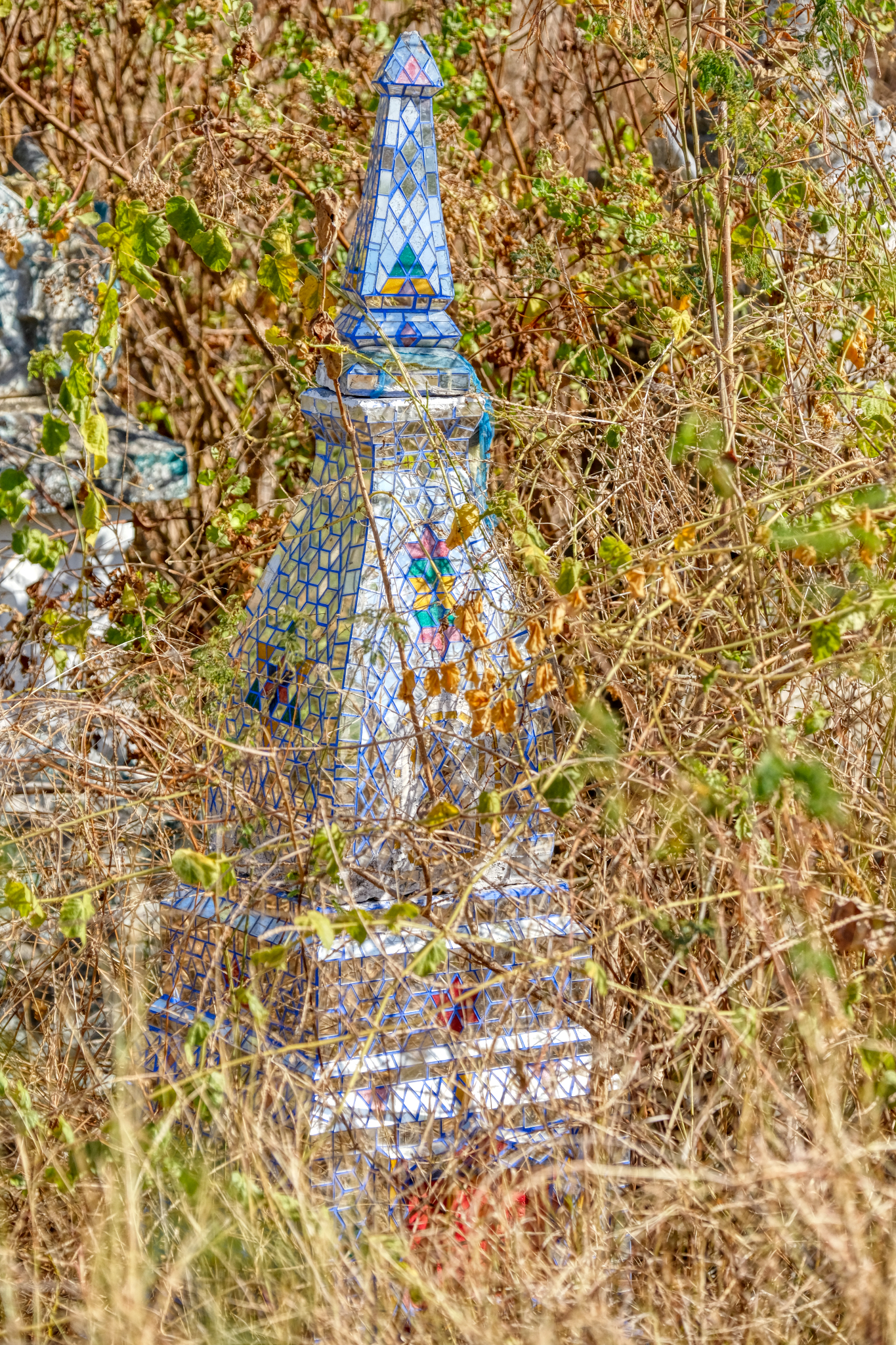 Still bright and shiny . . . an overgrown mirror chedi.
Still bright and shiny . . . an overgrown mirror chedi.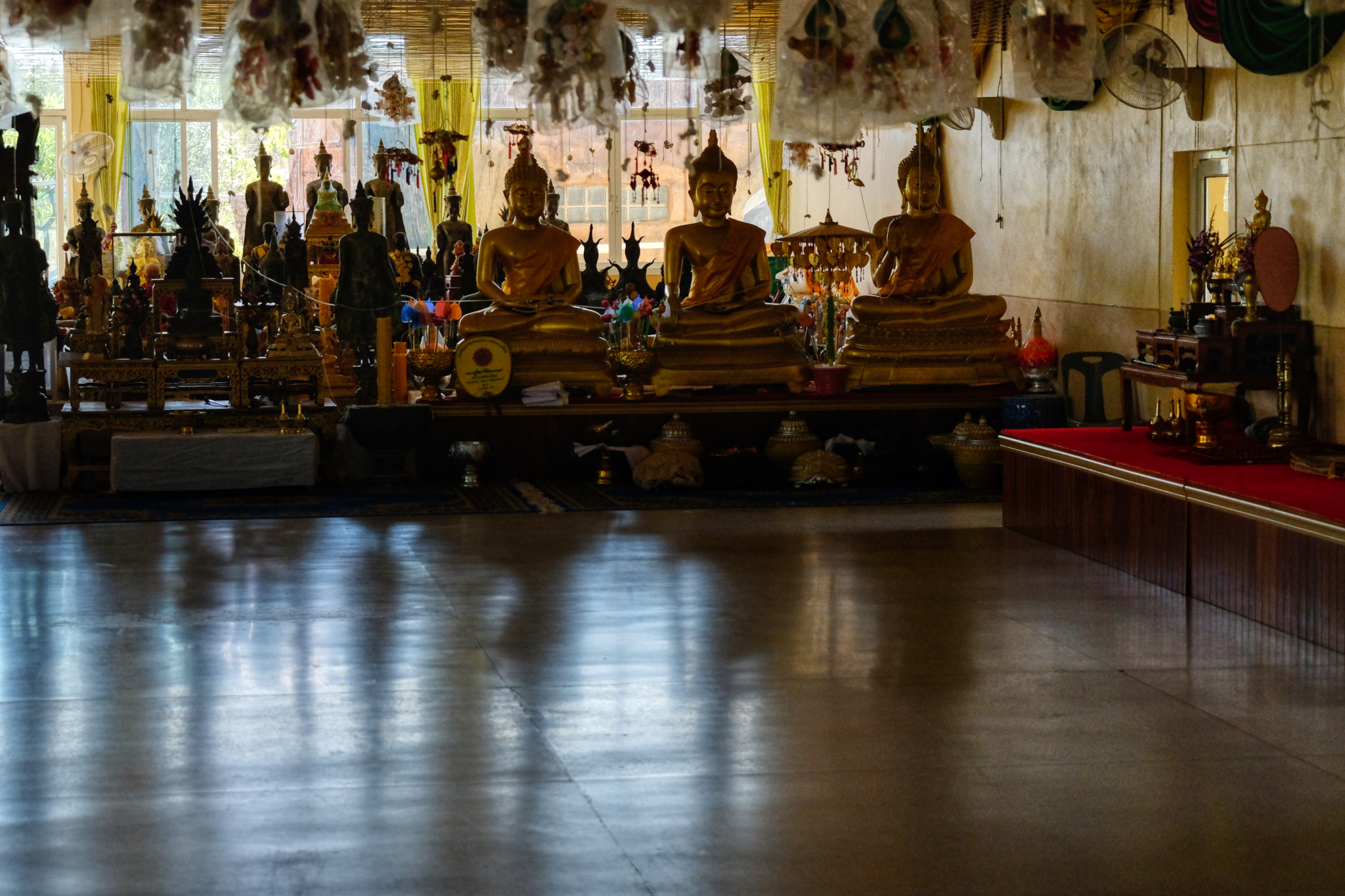 By this time of the morning (9:00am) it was already devilishly hot: well over 40c. We went inside to the shaded hall where two nice old ladies (helpers) brought us bottled water. The hall seemed temporary, perhaps being used until some other structure was being built.
By this time of the morning (9:00am) it was already devilishly hot: well over 40c. We went inside to the shaded hall where two nice old ladies (helpers) brought us bottled water. The hall seemed temporary, perhaps being used until some other structure was being built.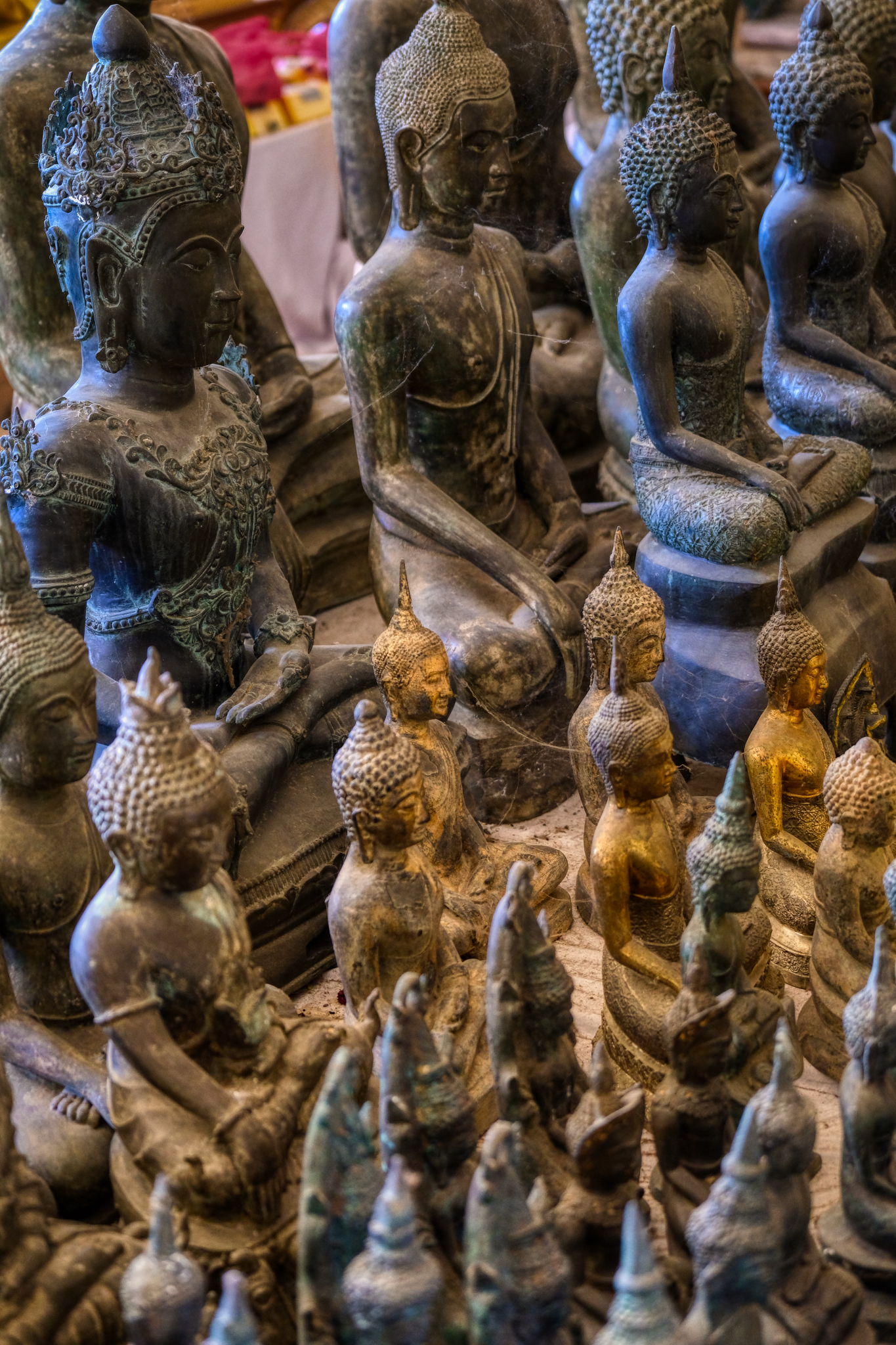 The altar was crowded with Buddha images. Fascinating.
The altar was crowded with Buddha images. Fascinating.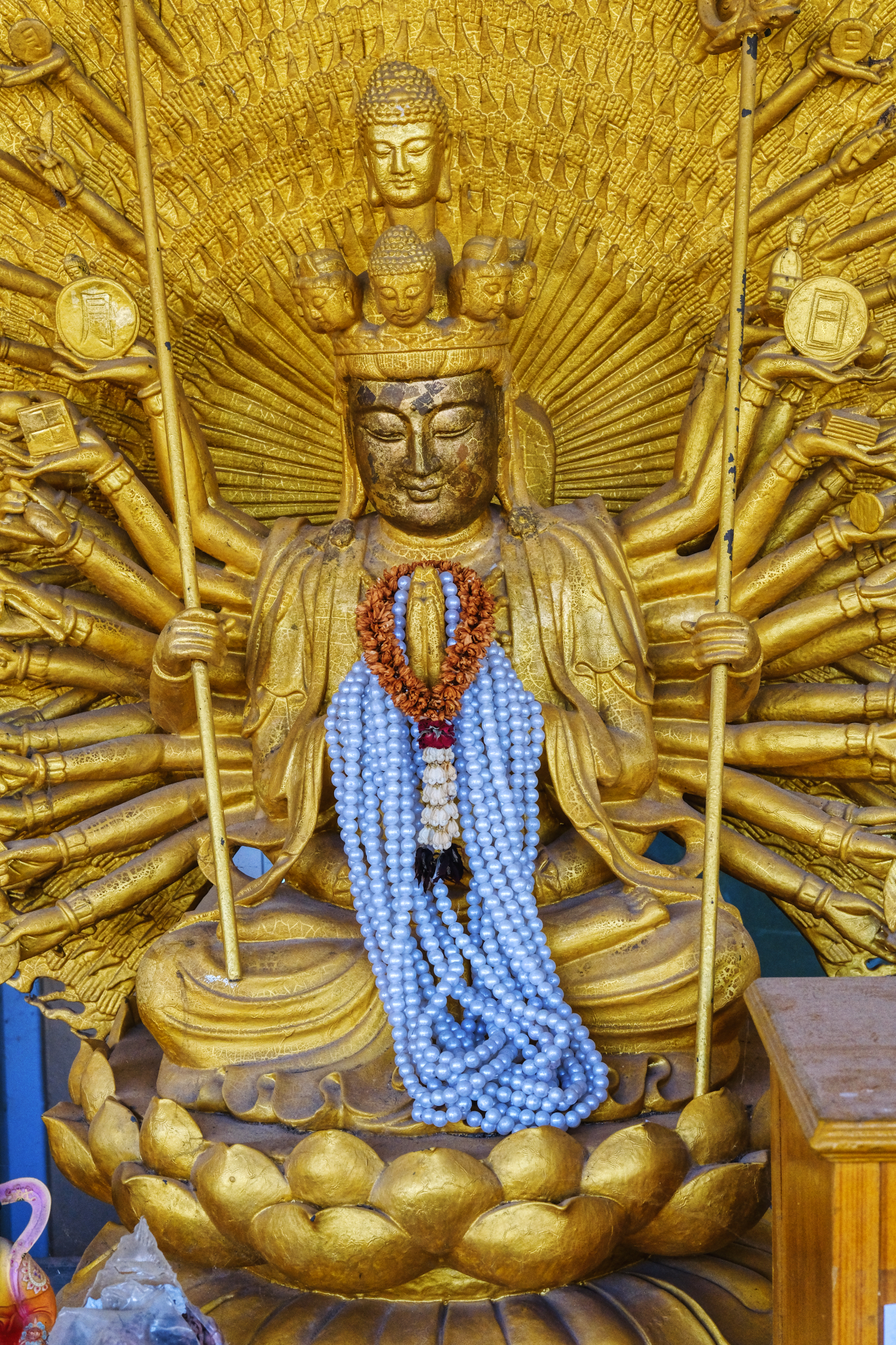 There seemed to be many more Hindu symbols in this Wat than others I have visited. I want a hat like this!
There seemed to be many more Hindu symbols in this Wat than others I have visited. I want a hat like this!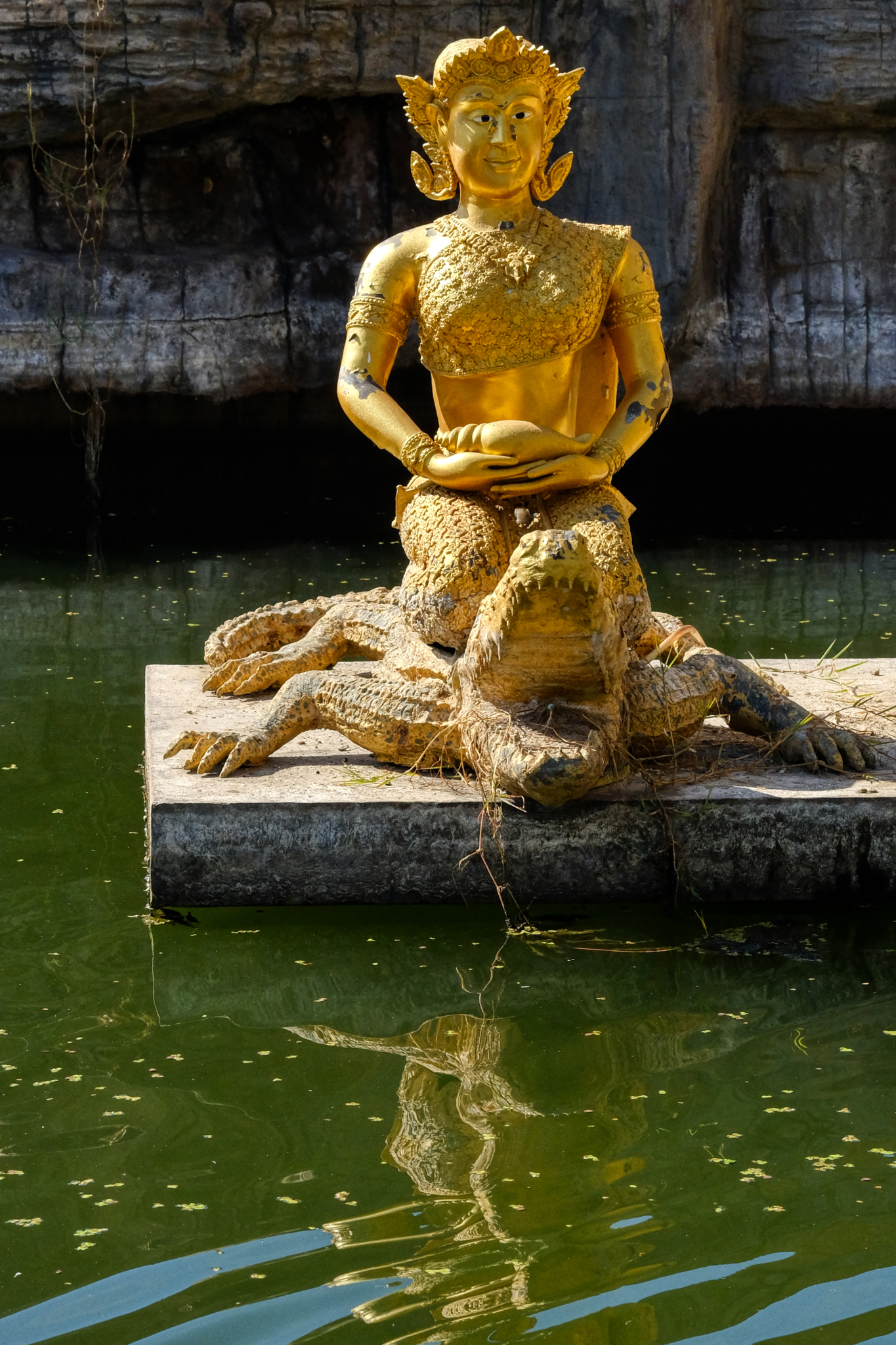 "What, me worry?" Supreme detachment. We left the Wat and headed back to the highway where we saw a sign pointing to small road and the name of another Wat . . .
"What, me worry?" Supreme detachment. We left the Wat and headed back to the highway where we saw a sign pointing to small road and the name of another Wat . . .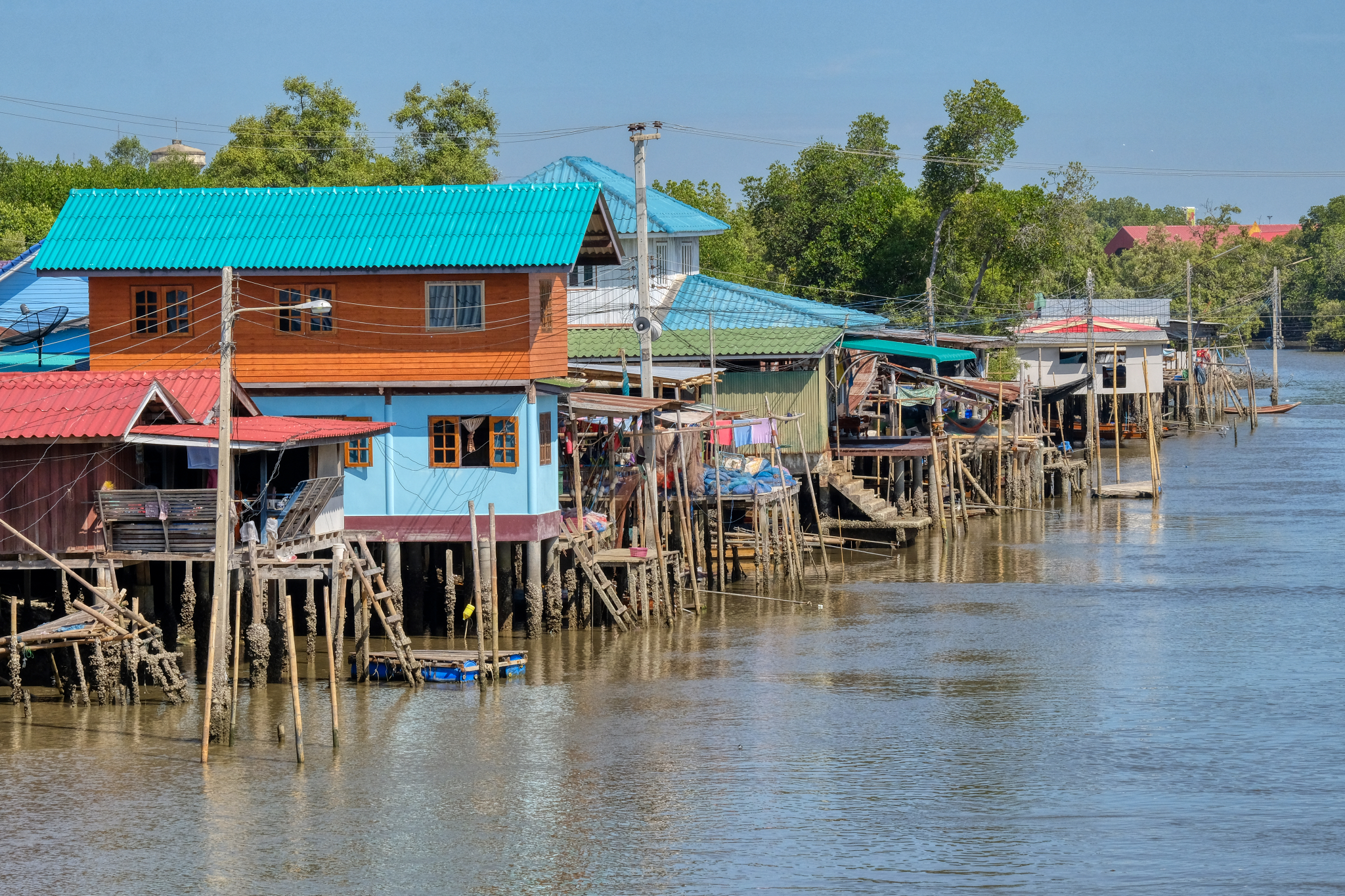 A short drive up a small rural road in search of another Buddhist temple to explore. We didn't find the temple, but we did find this wonderful village built on a canal not far from where it emptied into the Gulf of Thailand.
A short drive up a small rural road in search of another Buddhist temple to explore. We didn't find the temple, but we did find this wonderful village built on a canal not far from where it emptied into the Gulf of Thailand.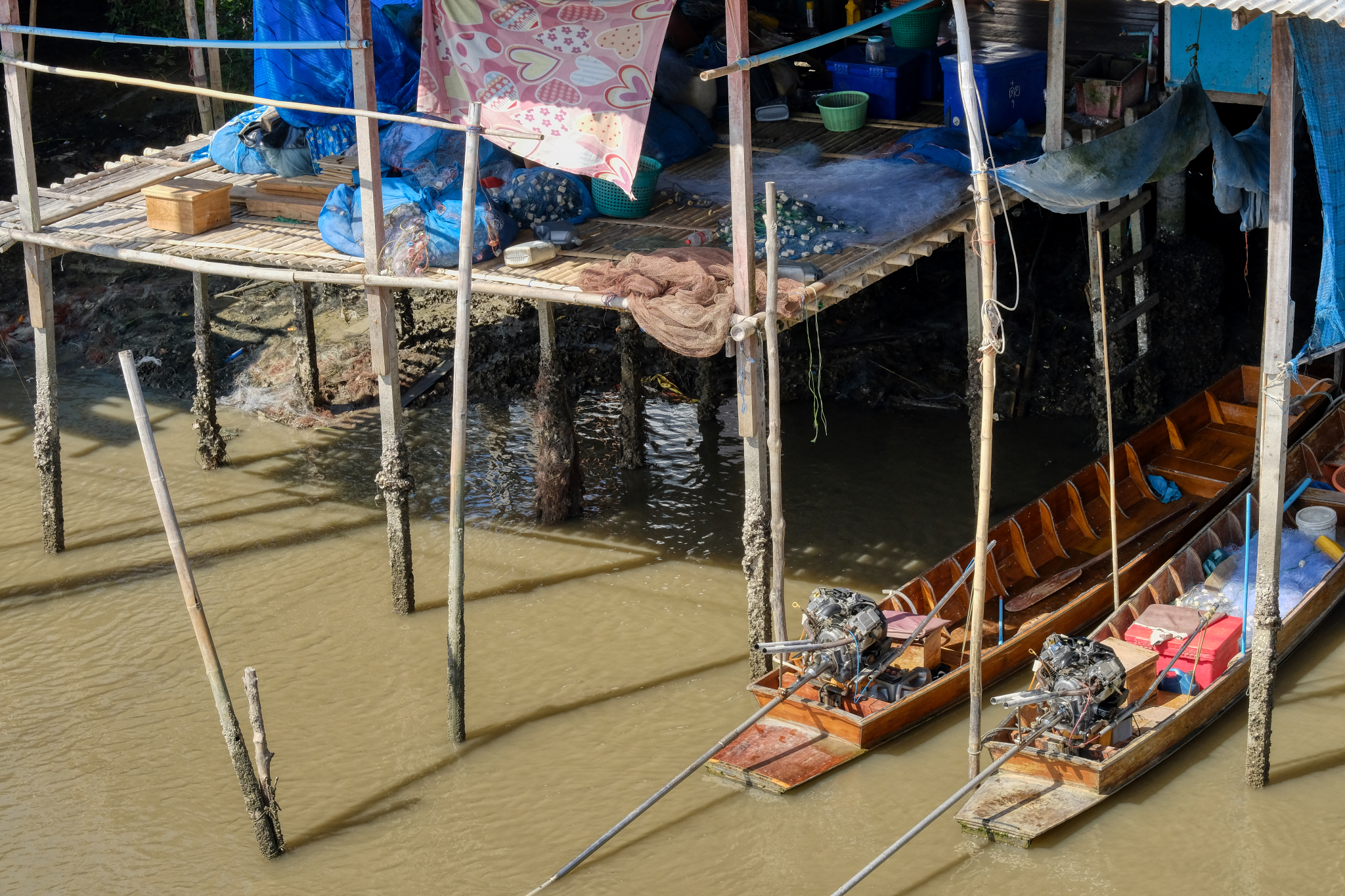 I love these canal side fishing villages . . . they are so picturesque . . . and visually complex.
I love these canal side fishing villages . . . they are so picturesque . . . and visually complex.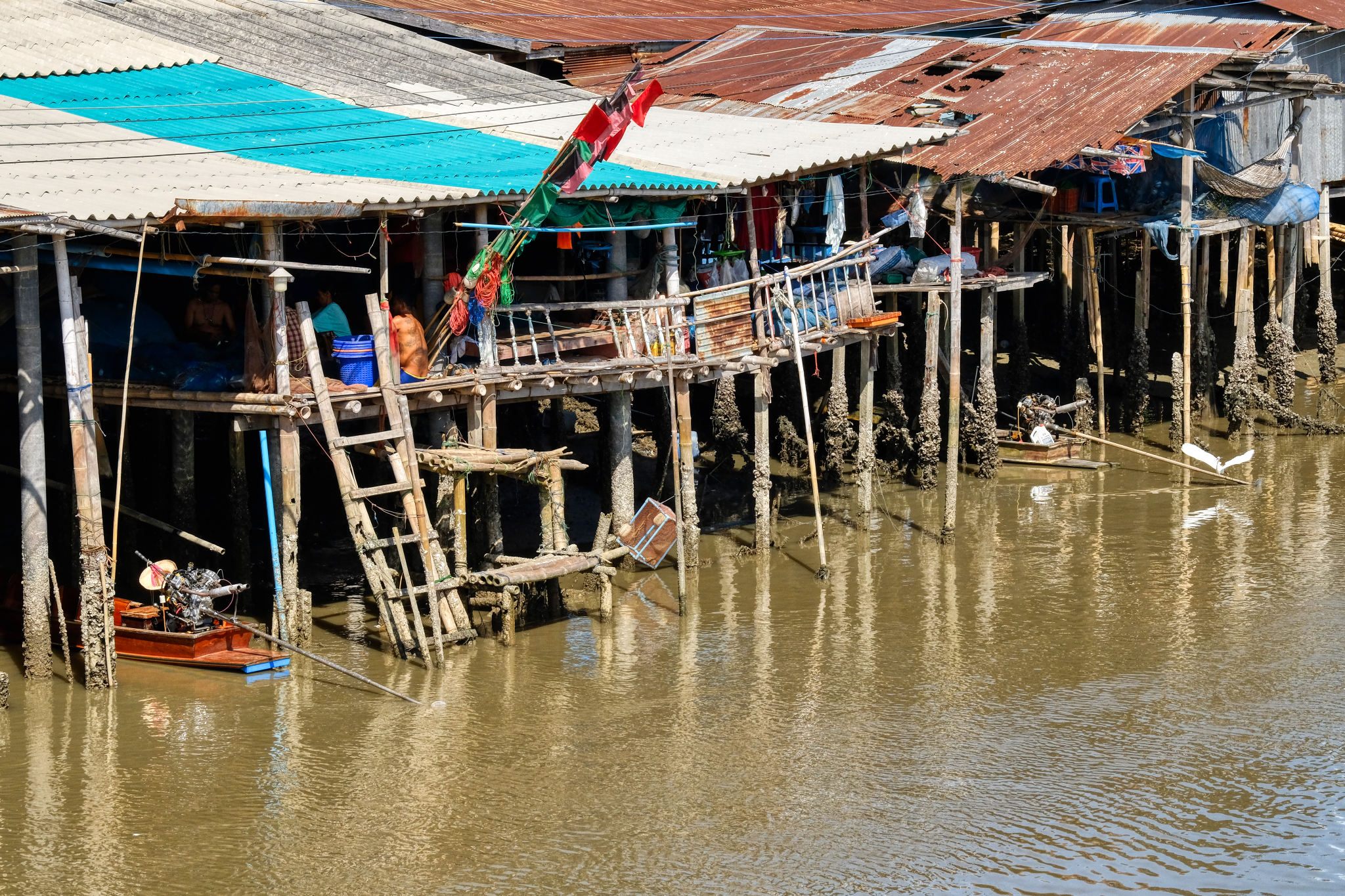 Too hot to do anything other than to sit around with your friends and family and mend nets . . . unless you are a falang photographer, that is!
Too hot to do anything other than to sit around with your friends and family and mend nets . . . unless you are a falang photographer, that is!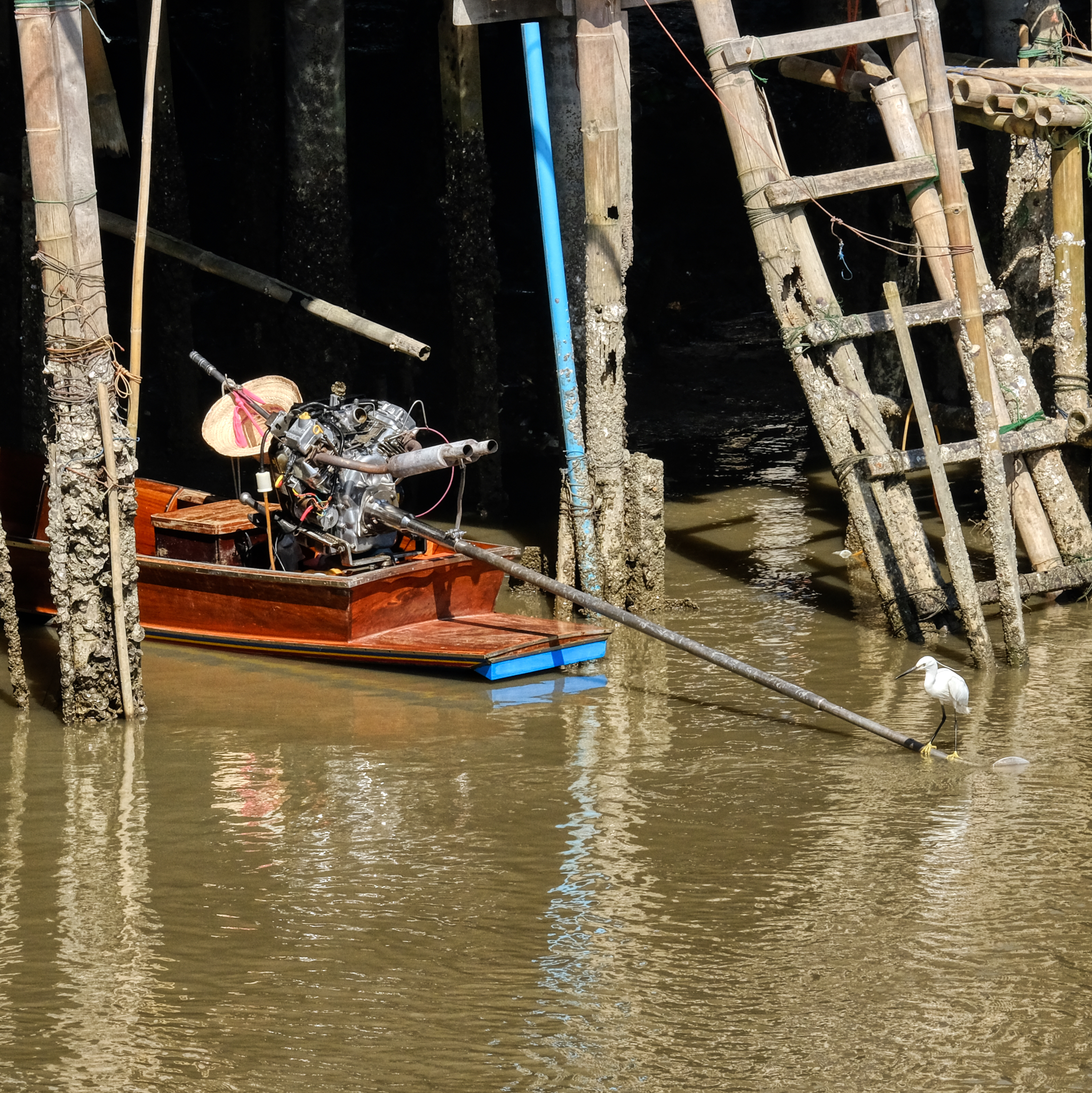 I'm not sure what the make of this V-2 long-tail boat engine is, but it was a beautiful scene.
I'm not sure what the make of this V-2 long-tail boat engine is, but it was a beautiful scene.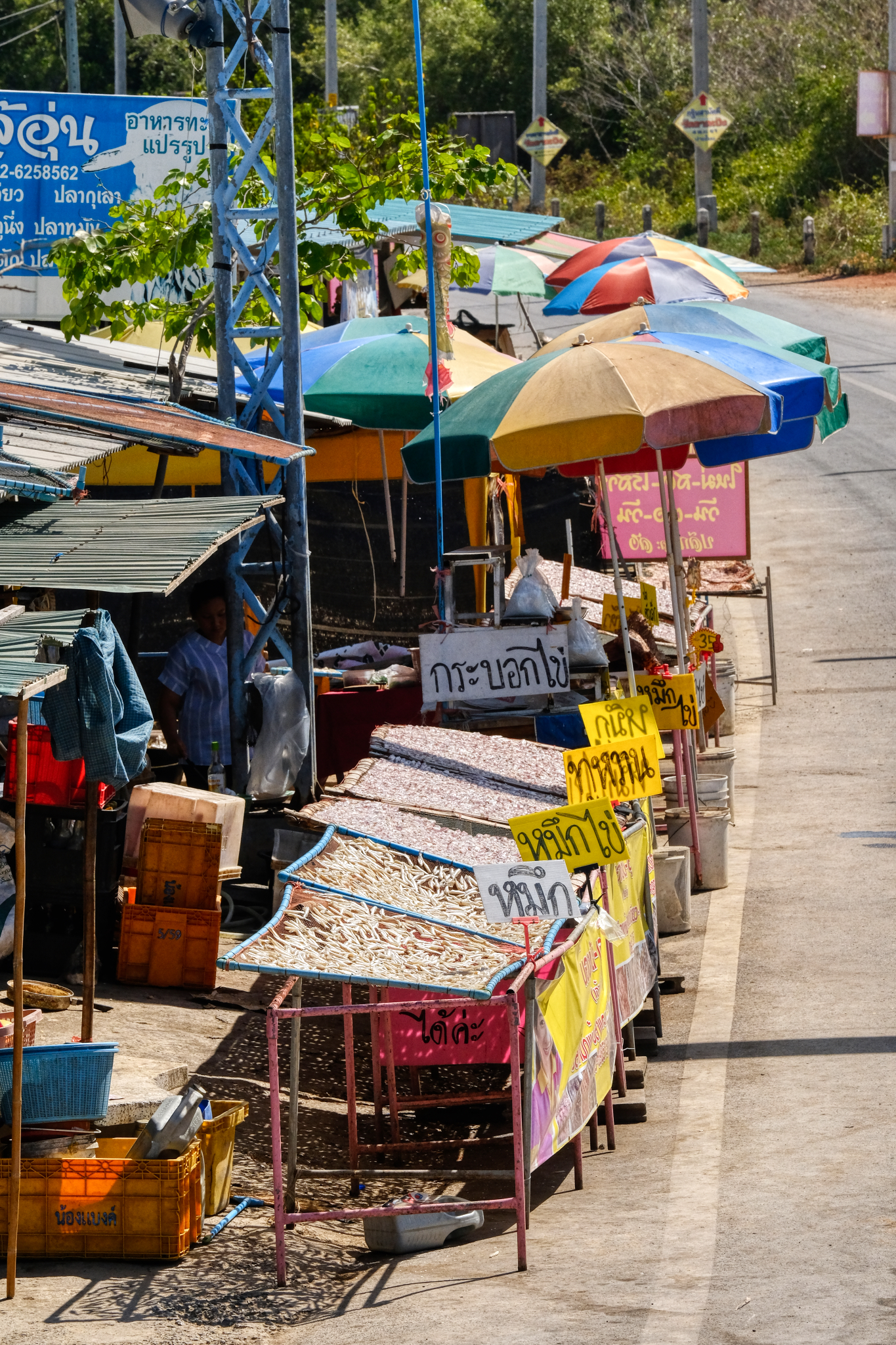 There was a lovely roadside fish market just outside the hamlet.
There was a lovely roadside fish market just outside the hamlet.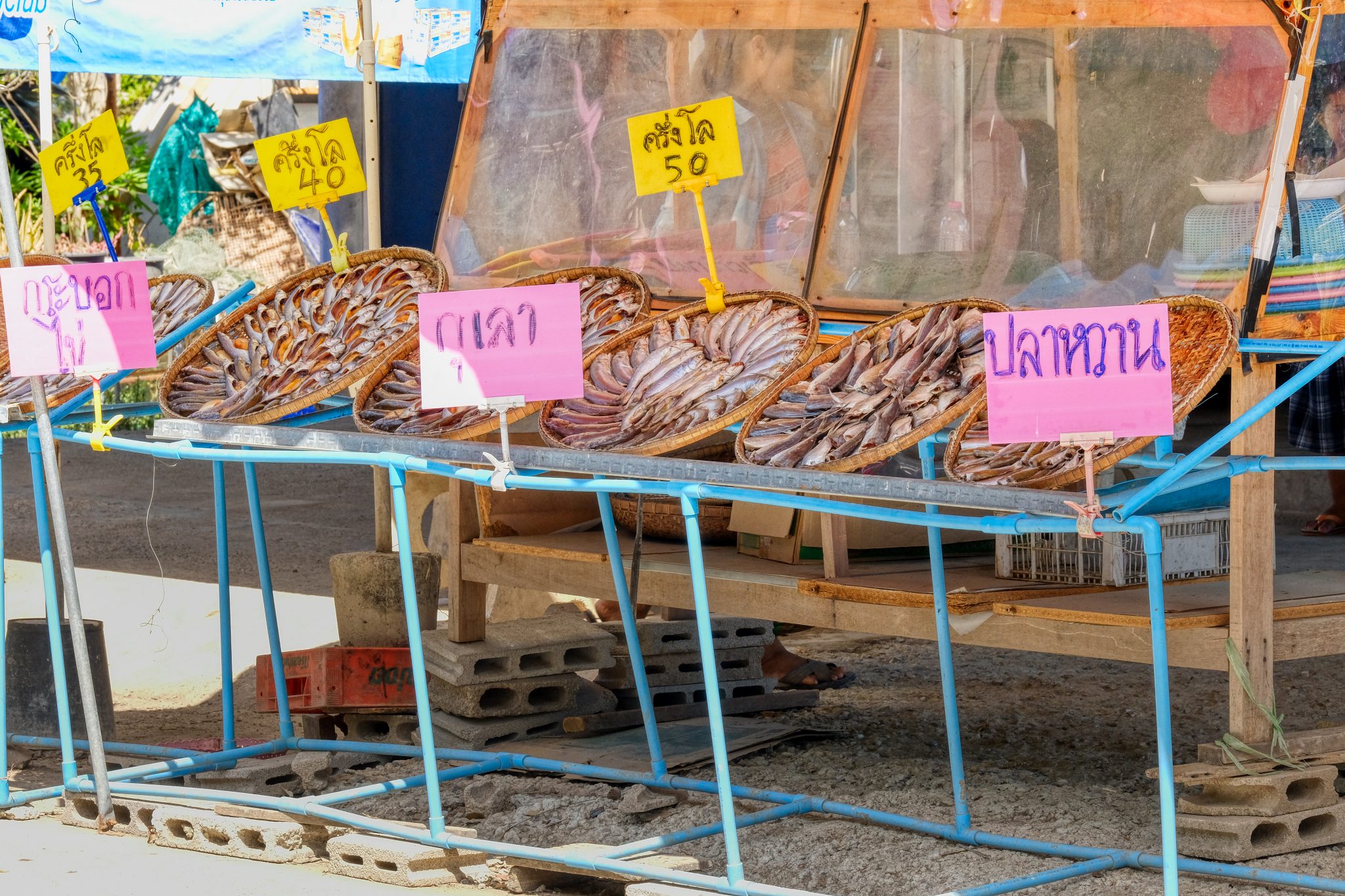 Many different kinds, sizes, and colors of fish . . . all inviting visual exploration.
Many different kinds, sizes, and colors of fish . . . all inviting visual exploration.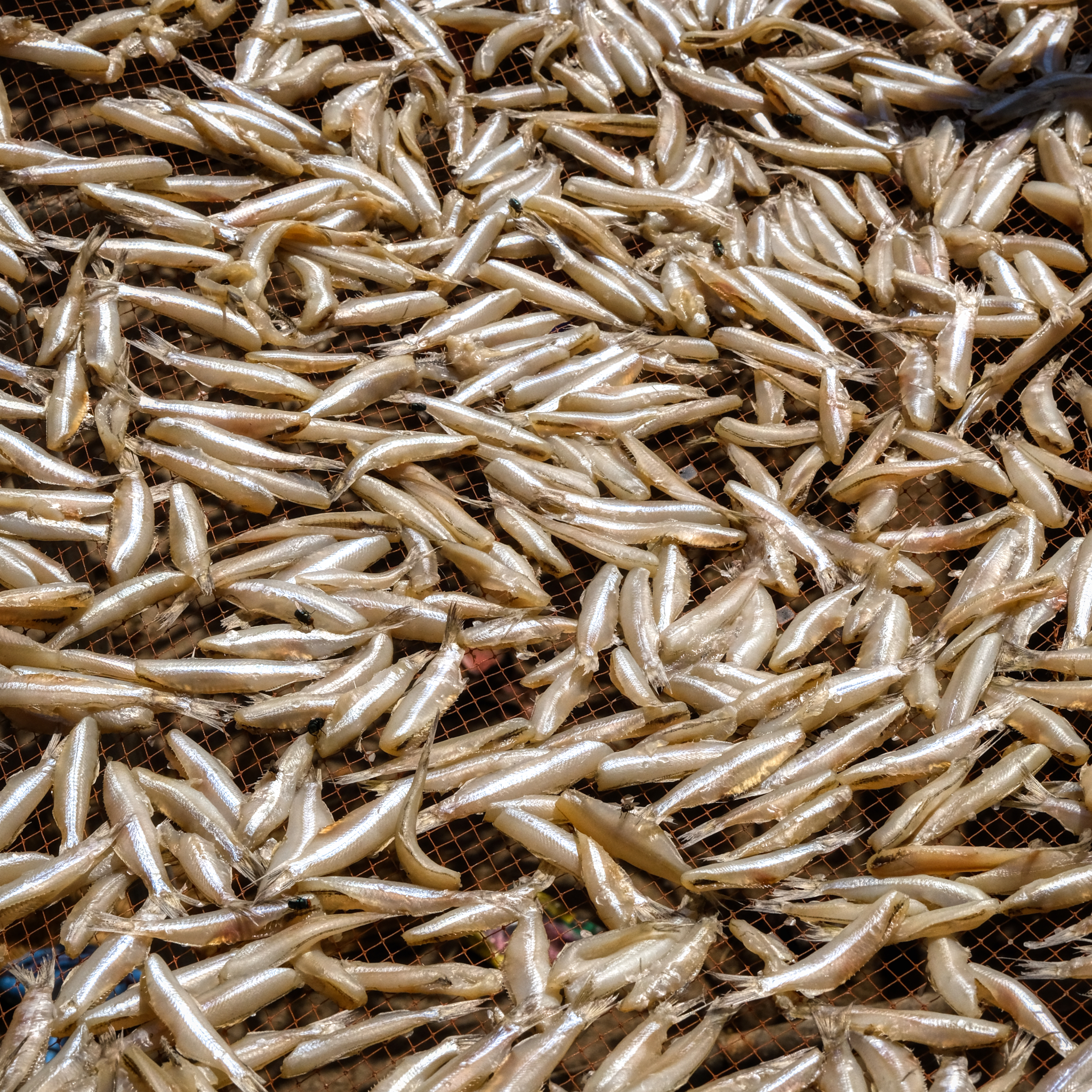 These small 'smelt' are very tasty when deep fat fried. One of my favorites.
These small 'smelt' are very tasty when deep fat fried. One of my favorites.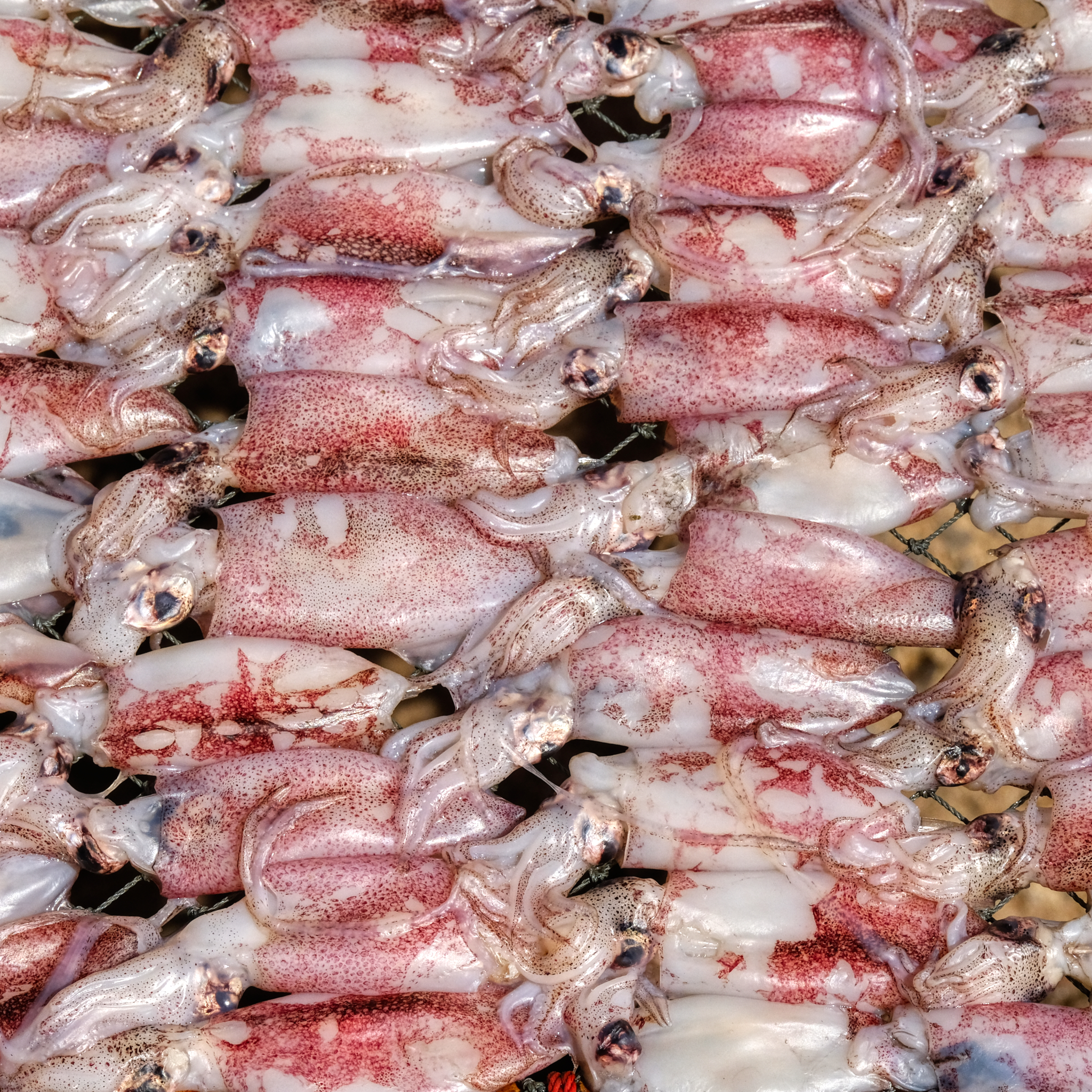 Delicious-looking baby squid. My favorite.
Delicious-looking baby squid. My favorite.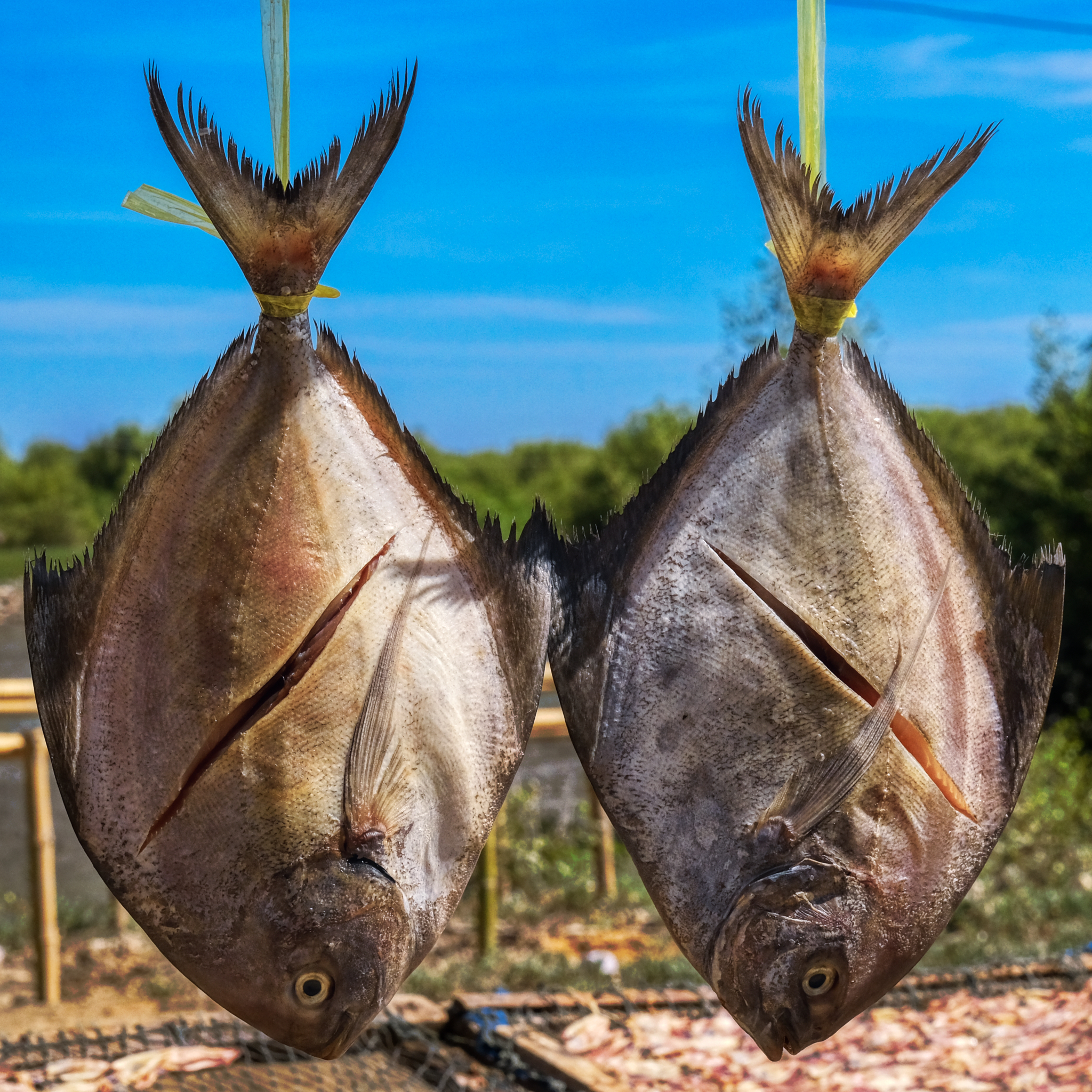 Good looking fish.
Good looking fish.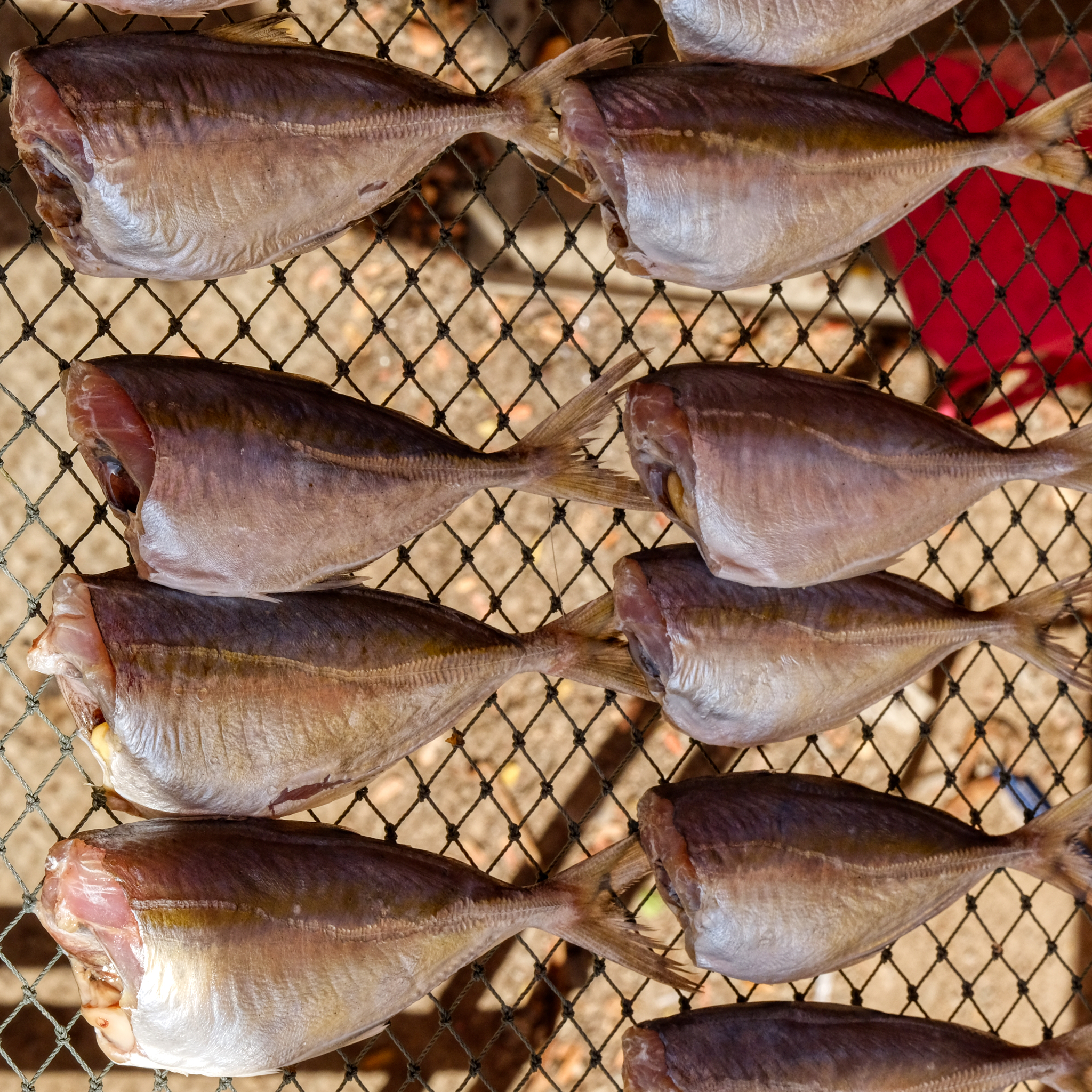 The drying fish are meant to be used in soups and curries.
The drying fish are meant to be used in soups and curries. But, of course, the most visually interesting fish were the baskets with their intricately patterned fish on display.
But, of course, the most visually interesting fish were the baskets with their intricately patterned fish on display.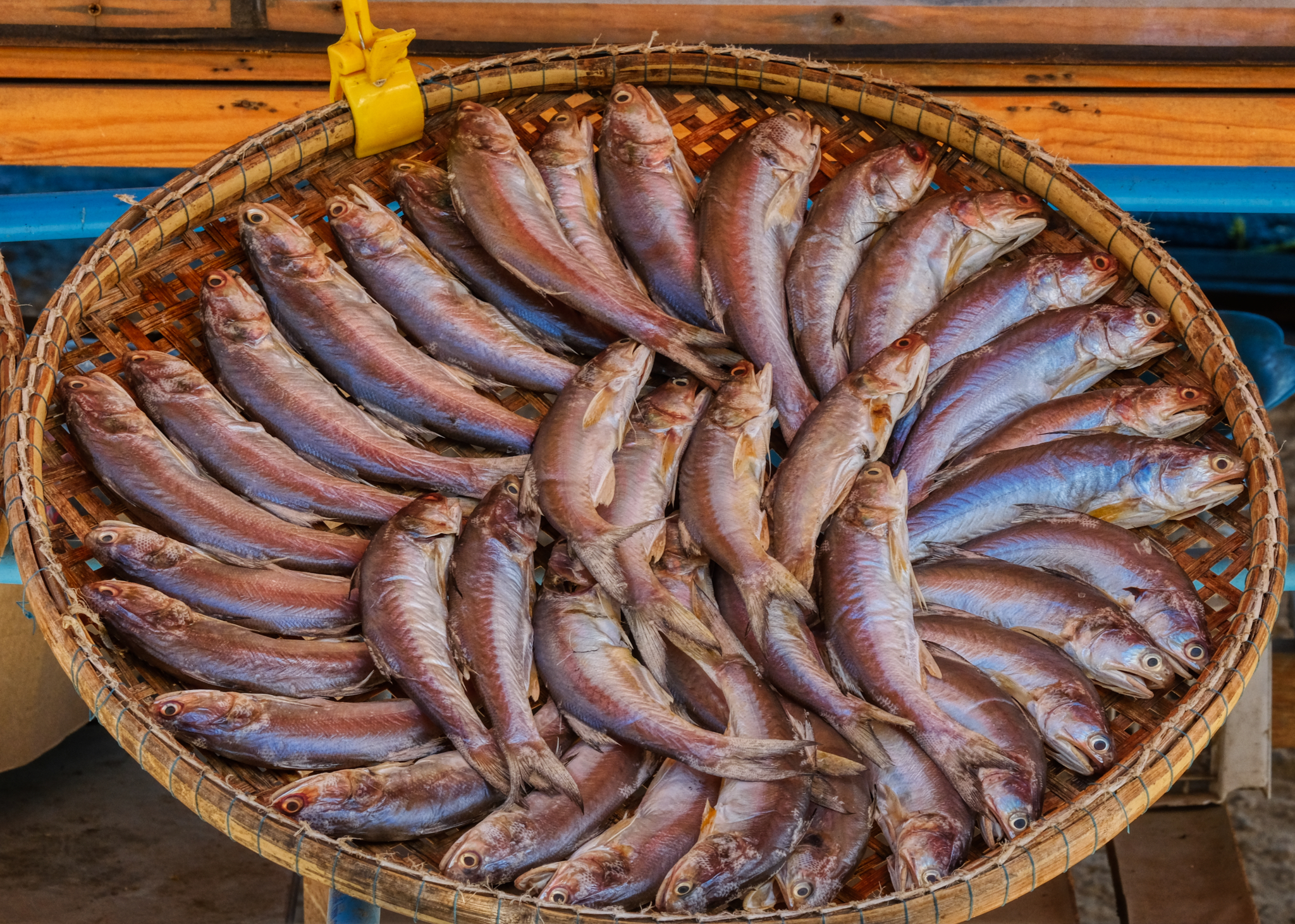 While I was photographing these fish baskets, I was thinking that these would print and frame very beautifully as a set.
While I was photographing these fish baskets, I was thinking that these would print and frame very beautifully as a set.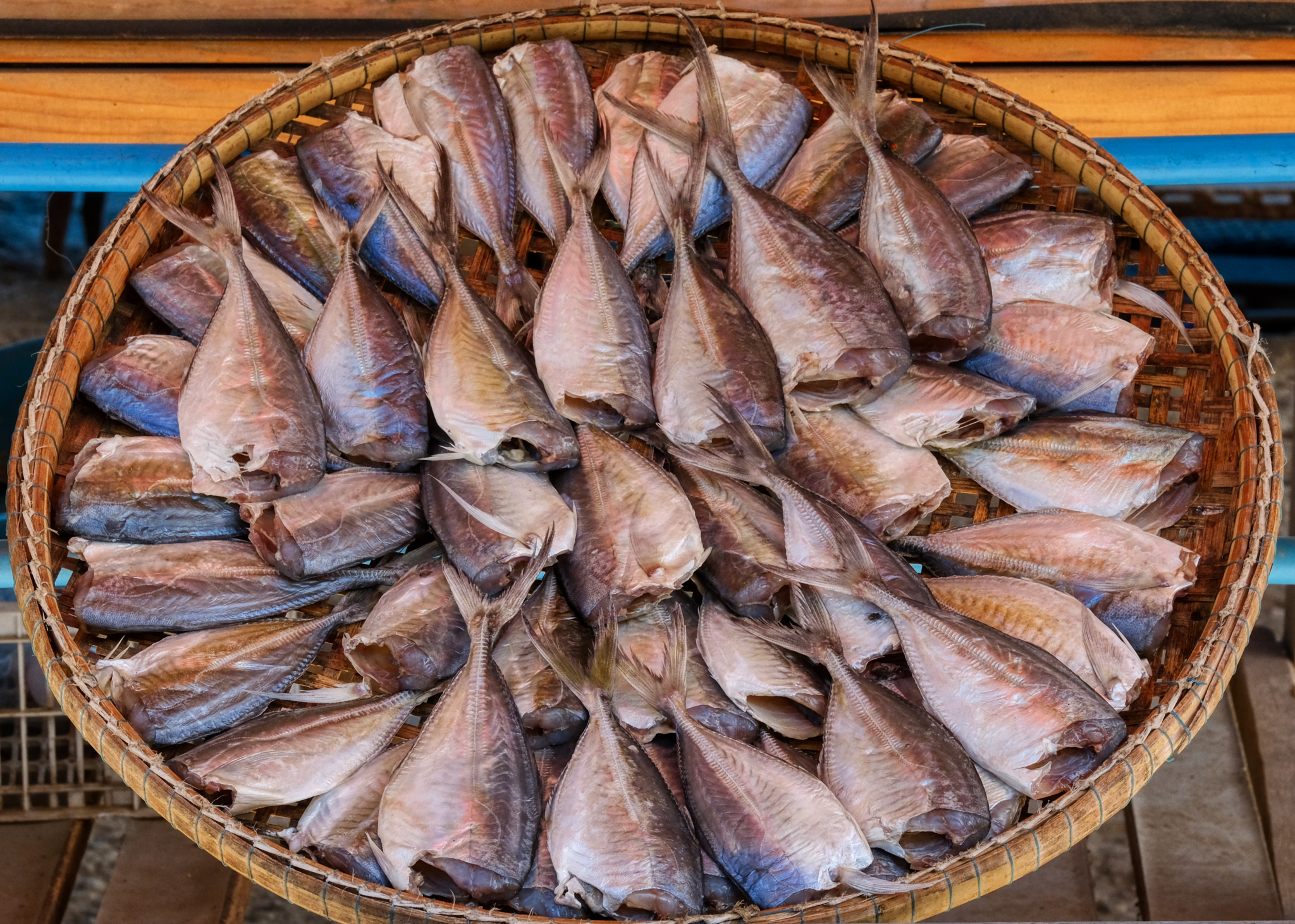 Perhaps I should come back here with a big tripod and reflectors for more professional, and better framed, shots . . .
Perhaps I should come back here with a big tripod and reflectors for more professional, and better framed, shots . . .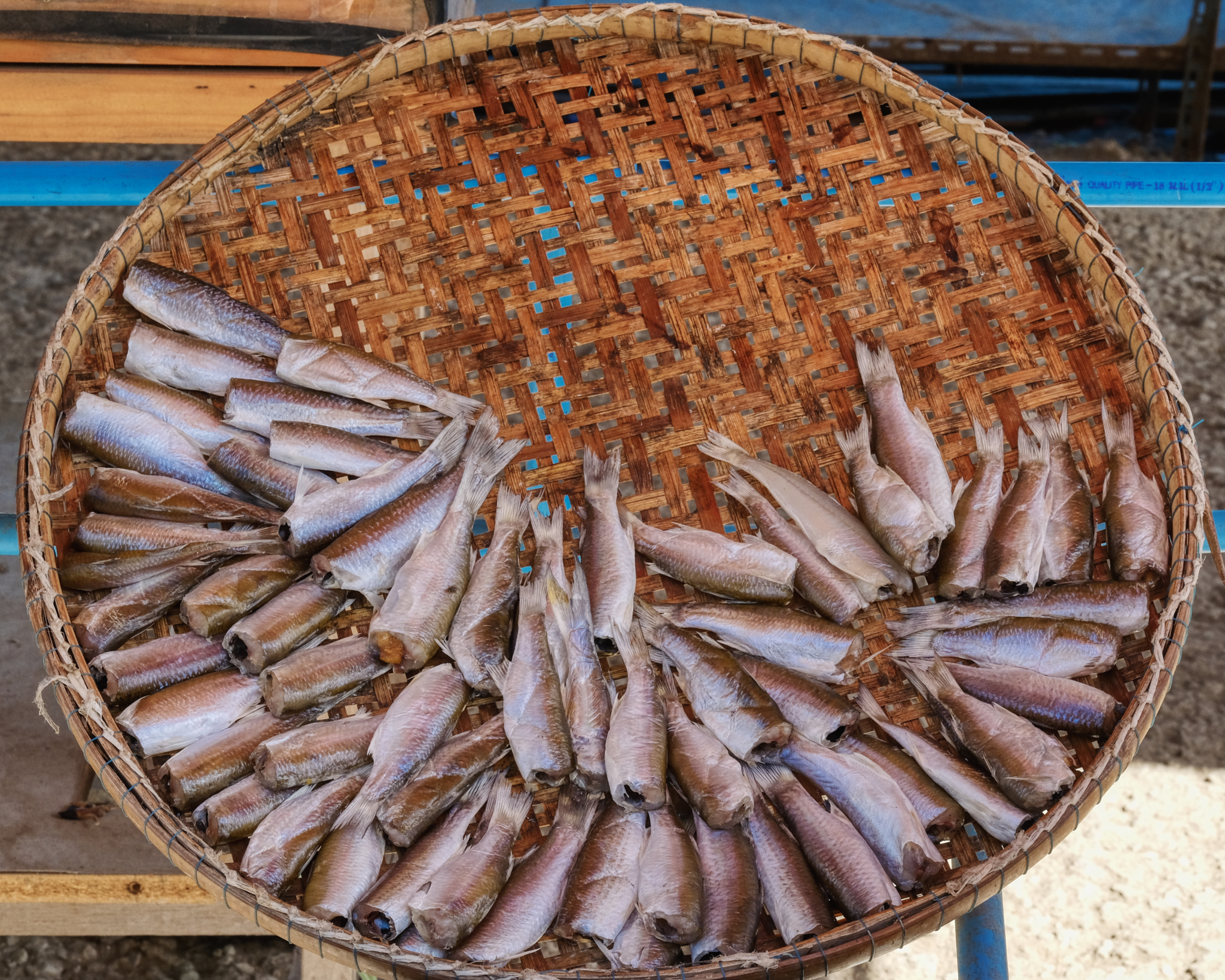 I took many, many photos of these beautiful fish baskets, but only post a few here.
I took many, many photos of these beautiful fish baskets, but only post a few here. We asked one of the fish hawkers how to get to the seashore and they pointed to a small road. We passed this woman busily building a boat on the roadside in tremendous heat and humidity.
We asked one of the fish hawkers how to get to the seashore and they pointed to a small road. We passed this woman busily building a boat on the roadside in tremendous heat and humidity.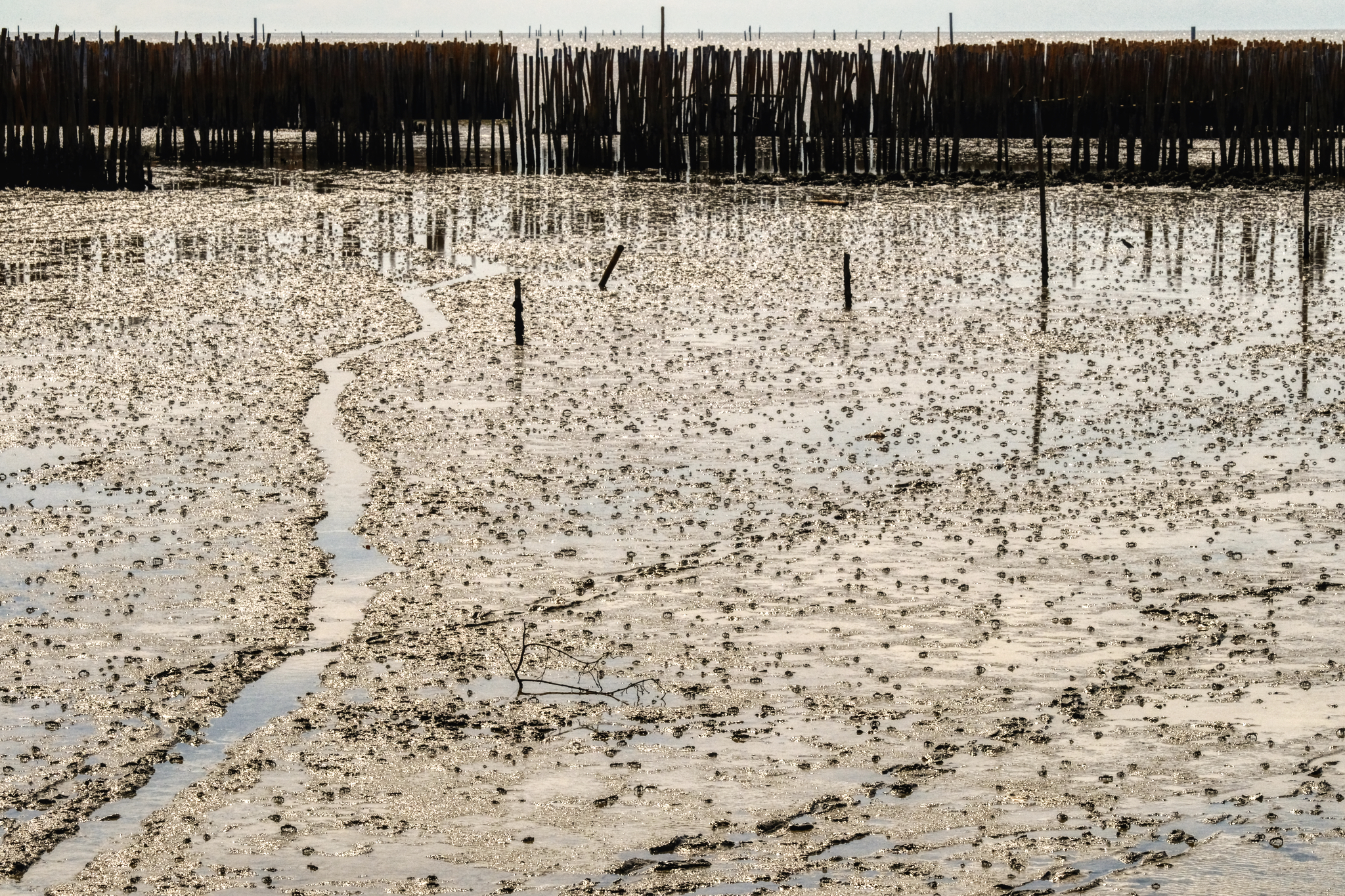 The small dirt road dumped us out at the foot of these mud flats . . . crawling with small crabs. These are the mud flats famous for a particular type of small clam that the Thais absolutely love to eat.
The small dirt road dumped us out at the foot of these mud flats . . . crawling with small crabs. These are the mud flats famous for a particular type of small clam that the Thais absolutely love to eat. 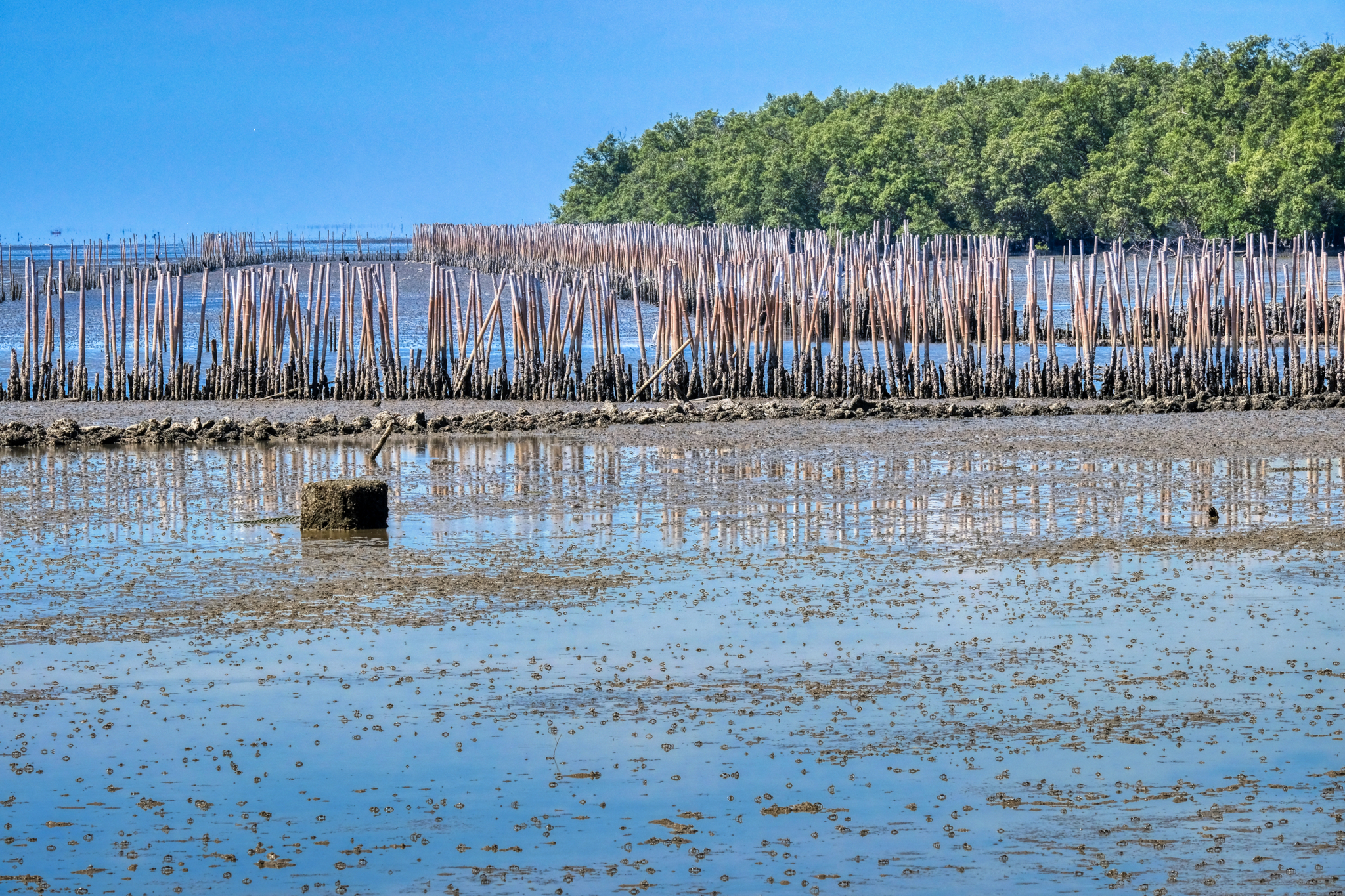 The elaborate bamboo barrier works extended for miles and miles along these mud flats . . . and off into the horizon of the Gulf of Thailand.
The elaborate bamboo barrier works extended for miles and miles along these mud flats . . . and off into the horizon of the Gulf of Thailand.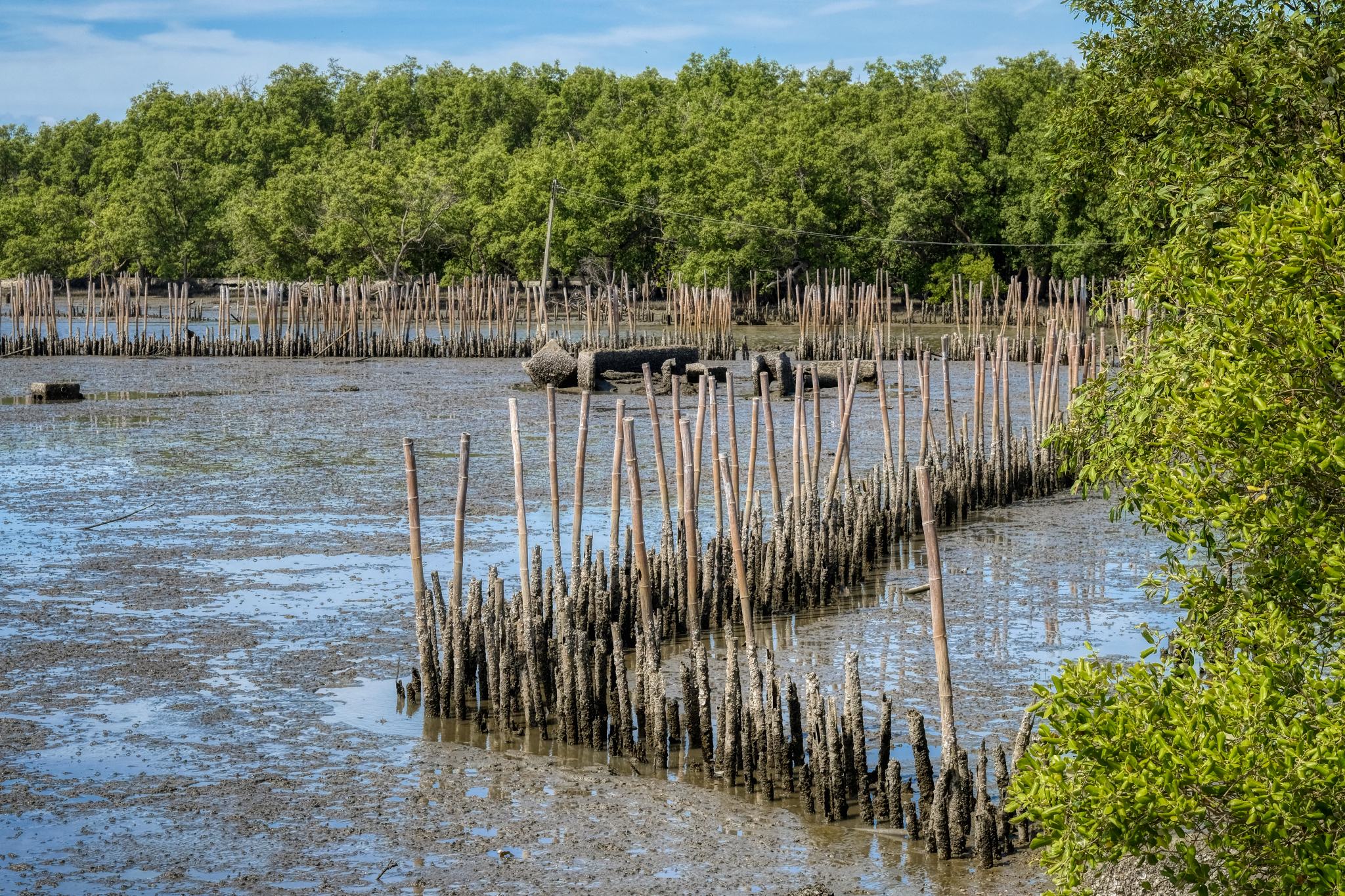 At a point of a small canal entering the mud flats there were many kinds of barrier works.
At a point of a small canal entering the mud flats there were many kinds of barrier works.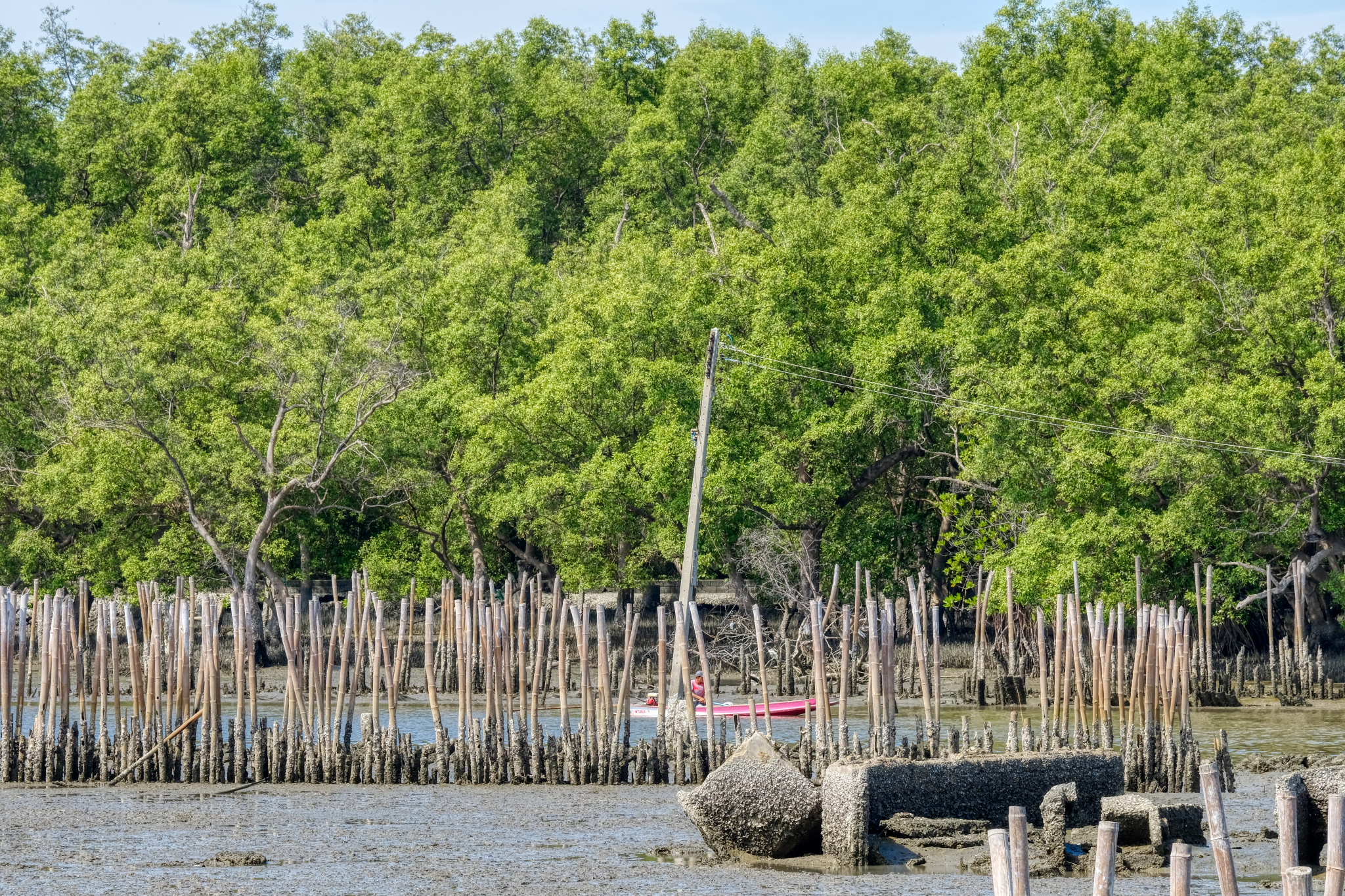 A workman out doing maintenance on the bamboo works.
A workman out doing maintenance on the bamboo works.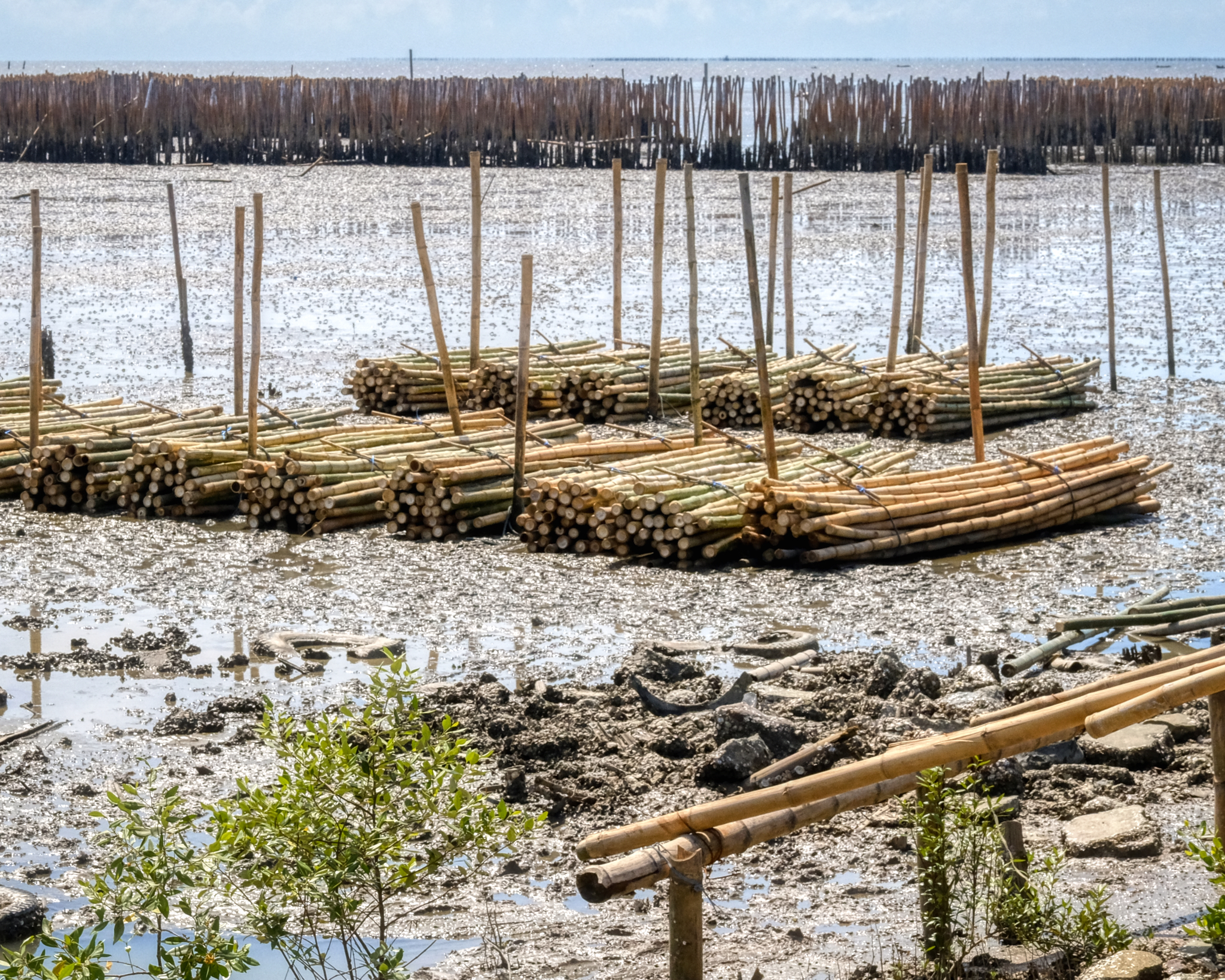 Fresh cut bamboo was being unloaded and made into rafts to bring out into the sea. This was a huge project . . .
Fresh cut bamboo was being unloaded and made into rafts to bring out into the sea. This was a huge project . . .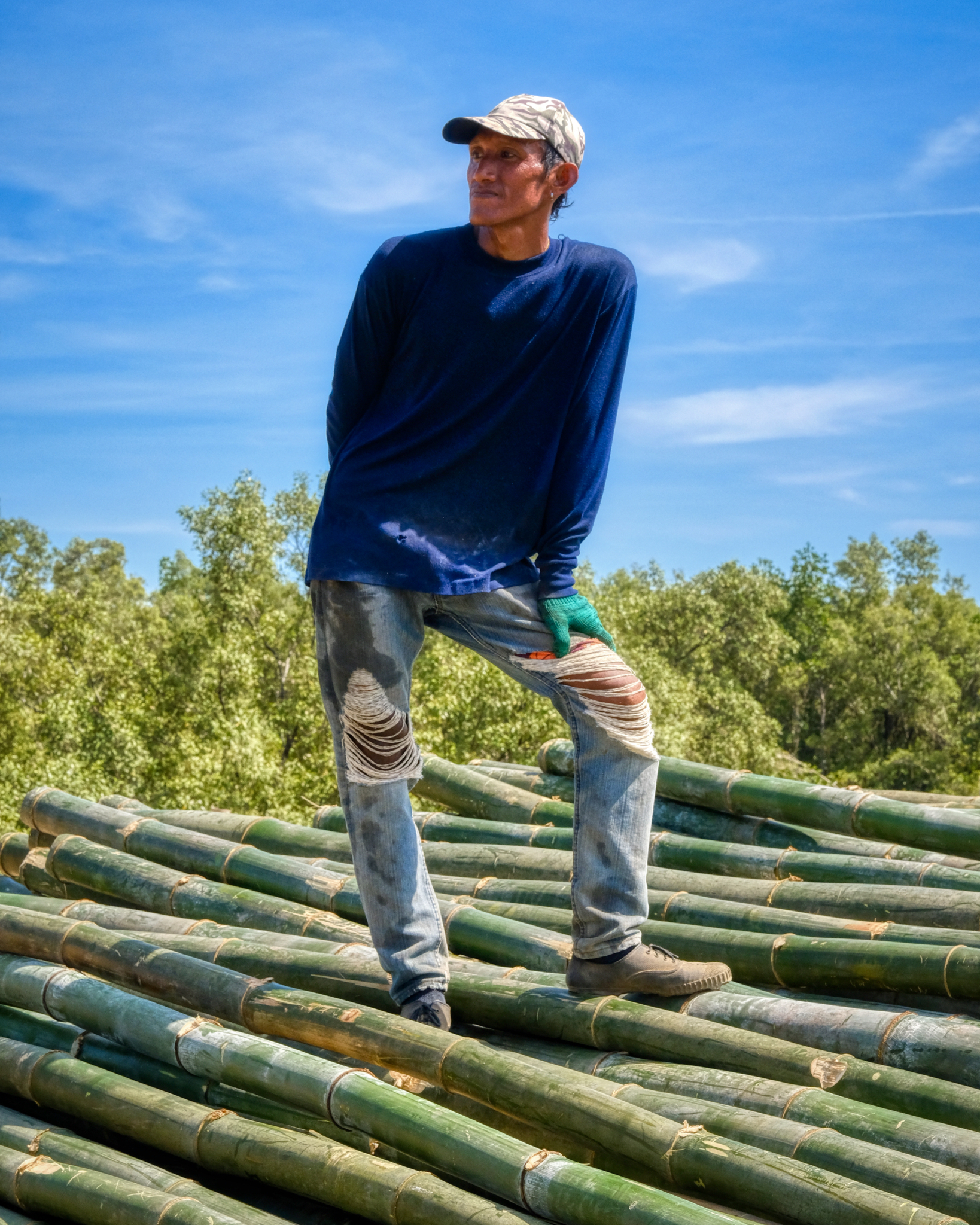 A Samut bamboo wrangler.
A Samut bamboo wrangler.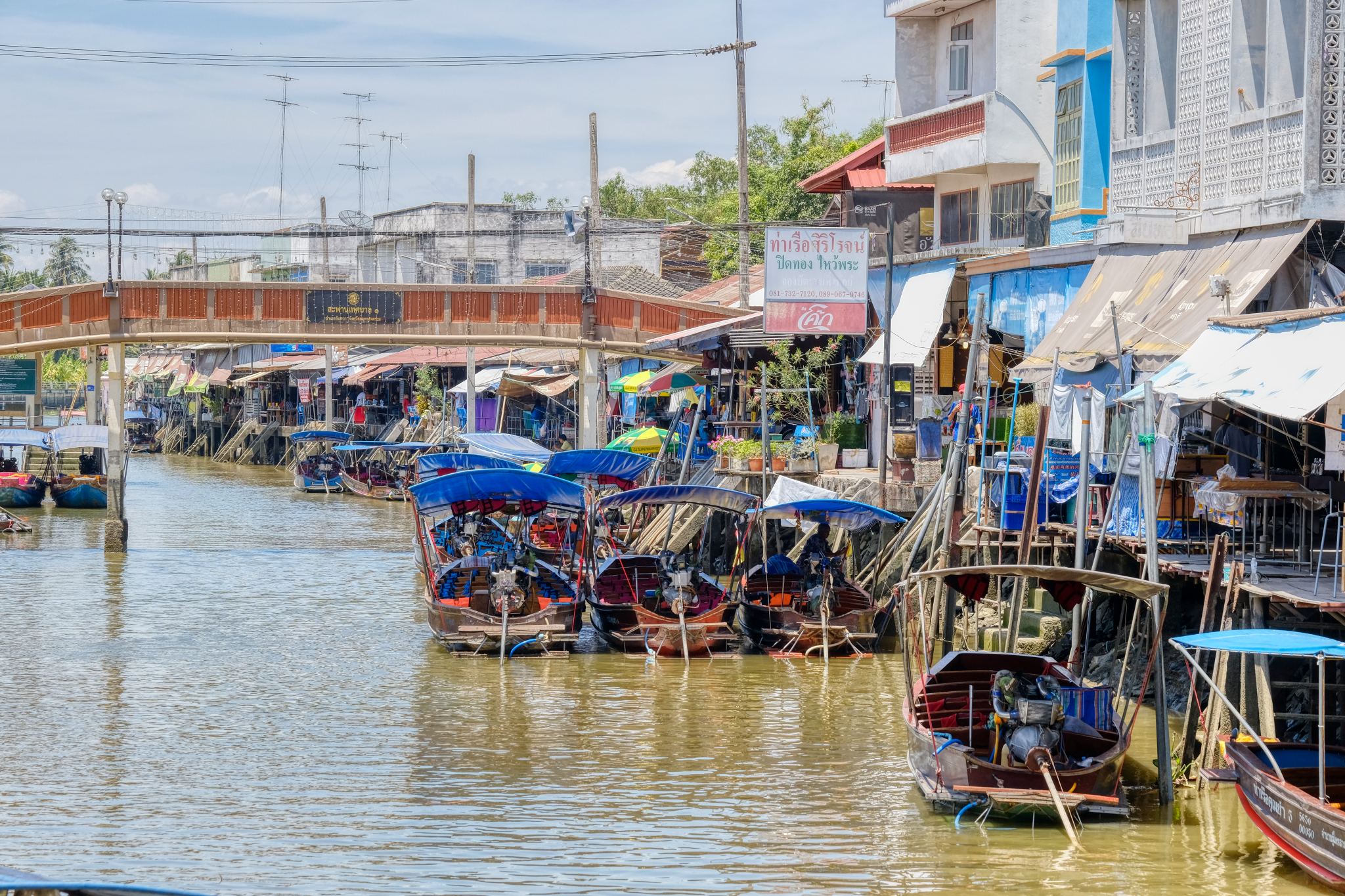 Our next stop was at the village of Amphawa, a floating market. Too much tourism has changed the feeling of this place since I last visited it nearly 20 years ago. It is still very charming . . . and visually interesting.
Our next stop was at the village of Amphawa, a floating market. Too much tourism has changed the feeling of this place since I last visited it nearly 20 years ago. It is still very charming . . . and visually interesting.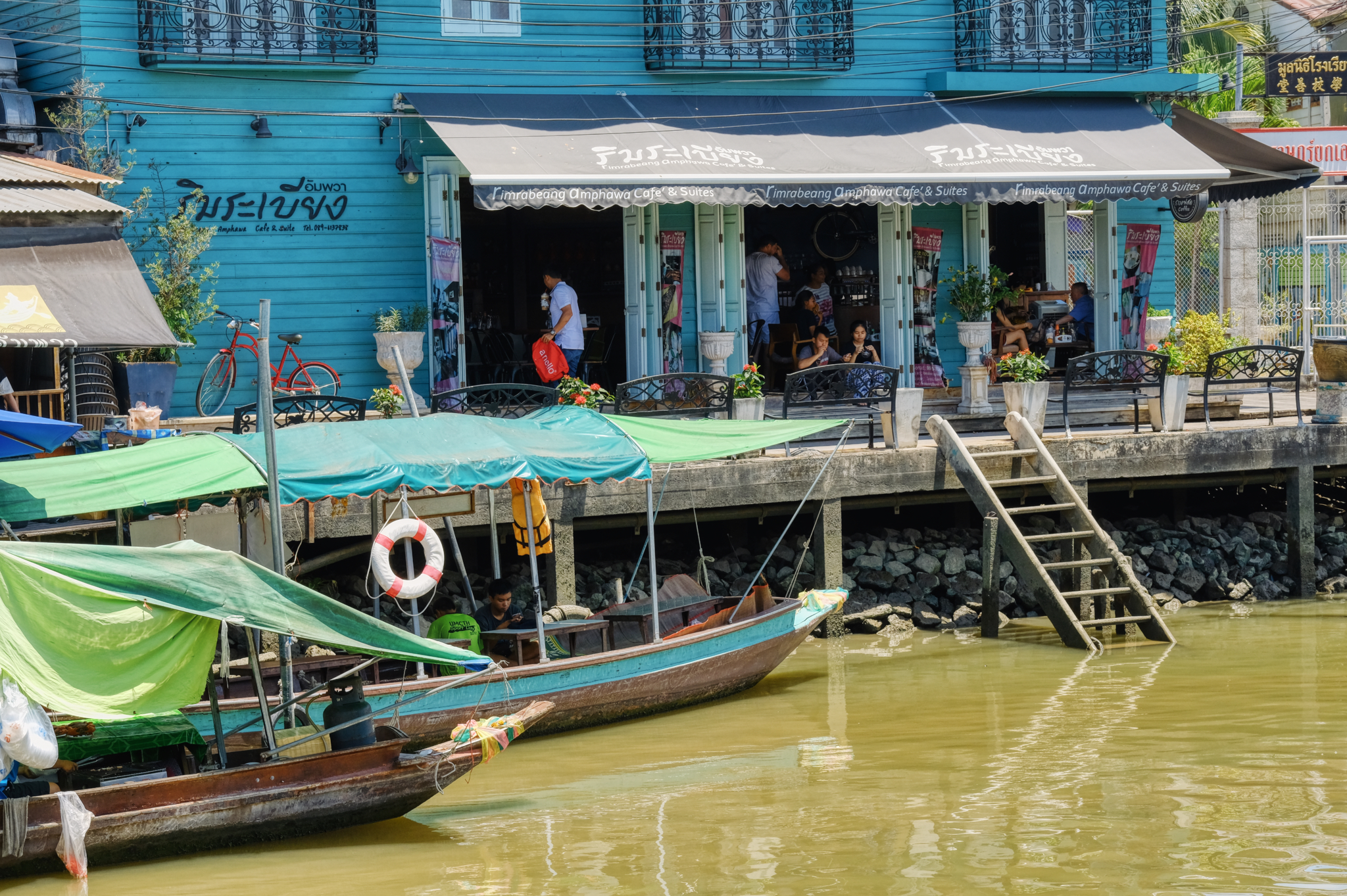 There are many very nice, upscale coffee shops and nice restaurants . . . a big change from an authentic fishing and market village.
There are many very nice, upscale coffee shops and nice restaurants . . . a big change from an authentic fishing and market village. 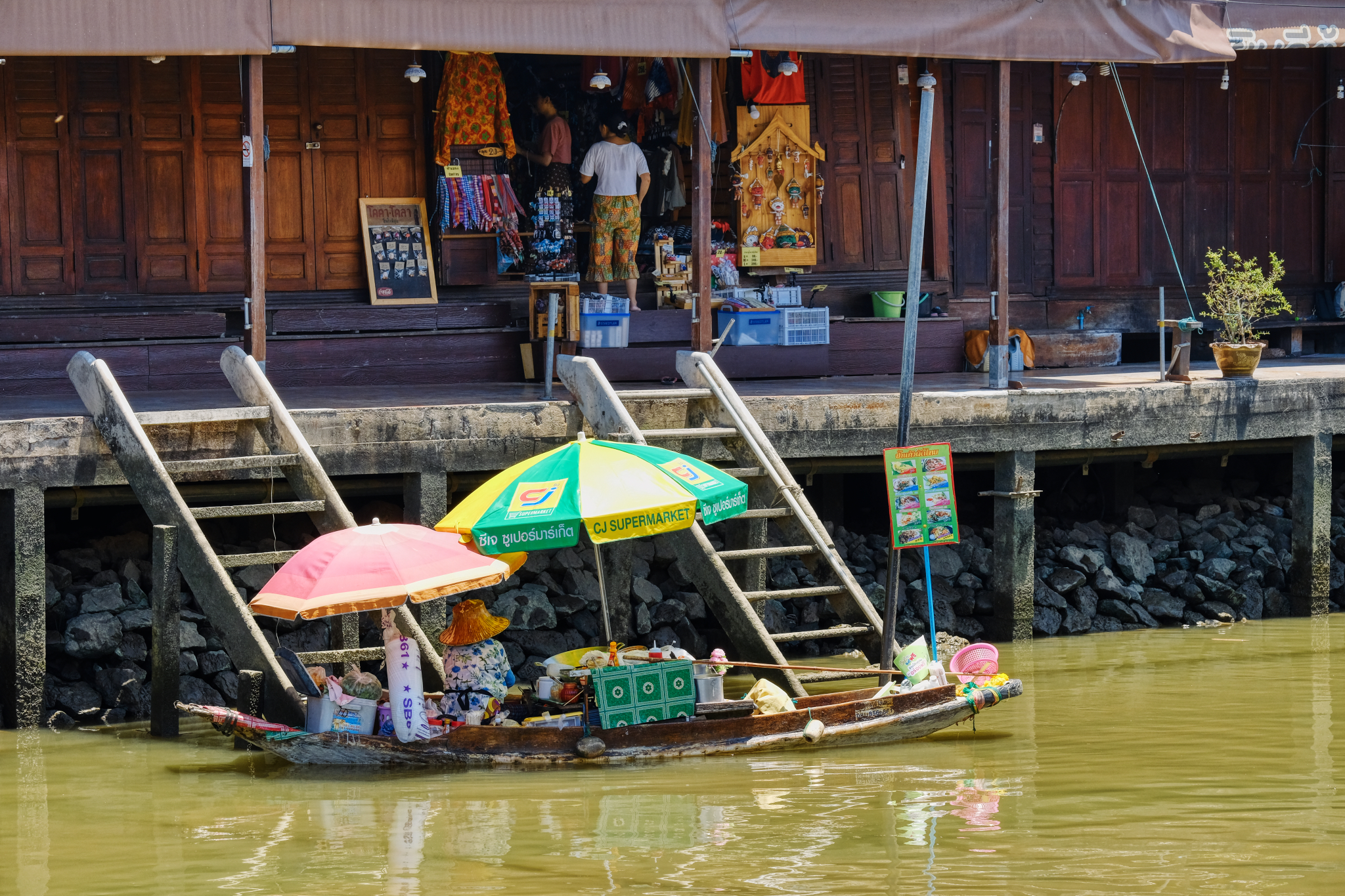 With the ambient temperature above 105(f) with high humidity, it was little wonder there were few people out and about.
With the ambient temperature above 105(f) with high humidity, it was little wonder there were few people out and about.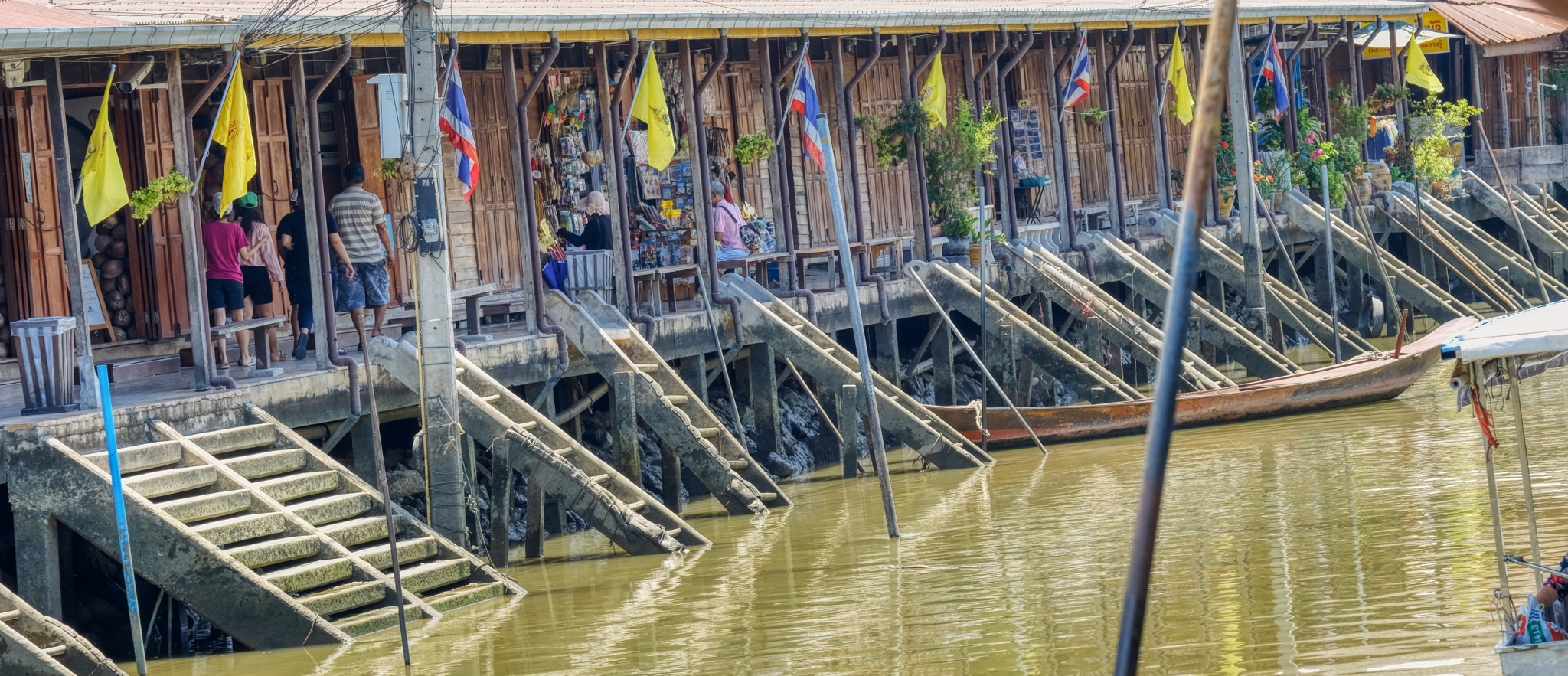 The repeating patterns of the klong access steps made for a fascinating study.
The repeating patterns of the klong access steps made for a fascinating study.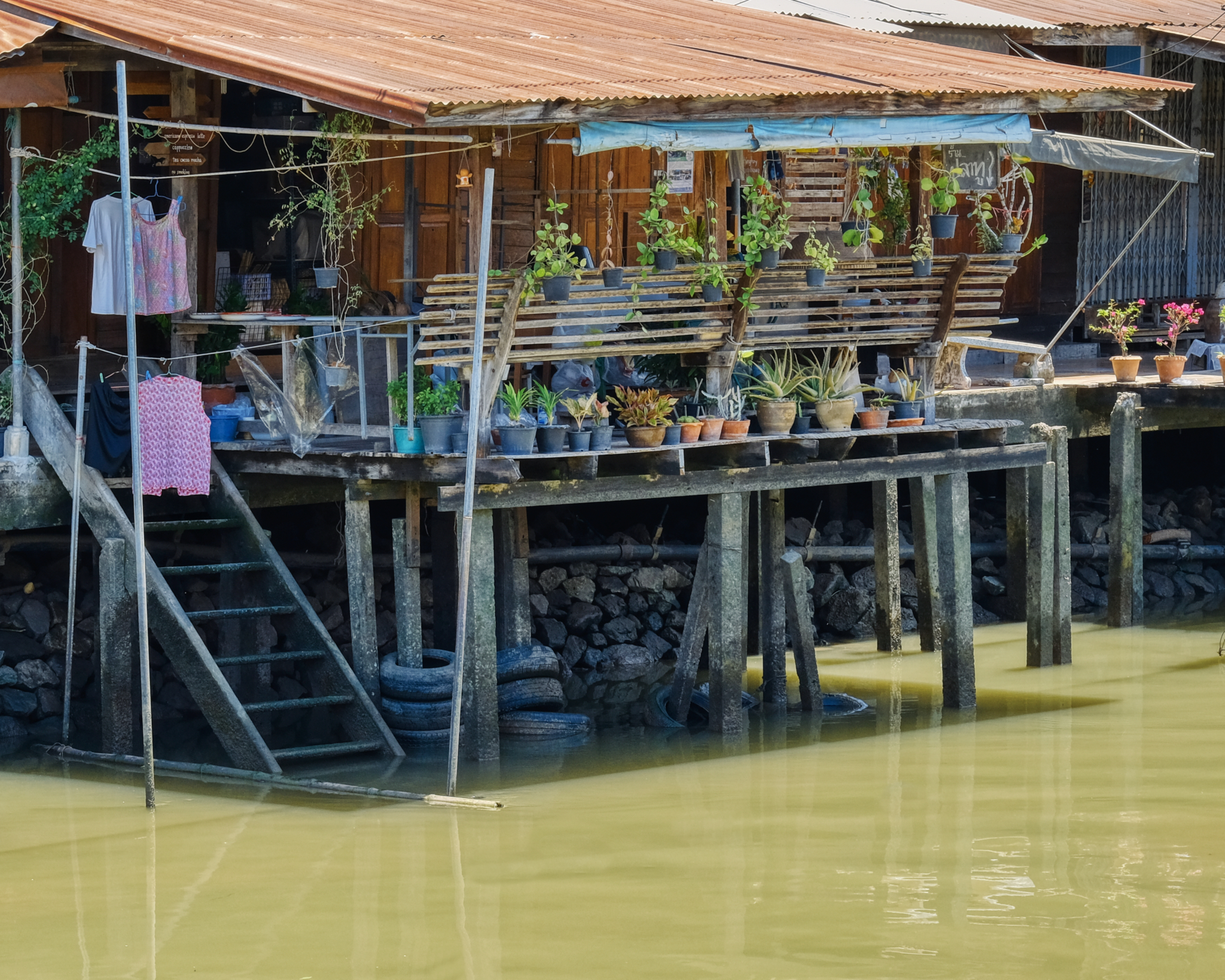 Life along the canal (klong) . . .
Life along the canal (klong) . . .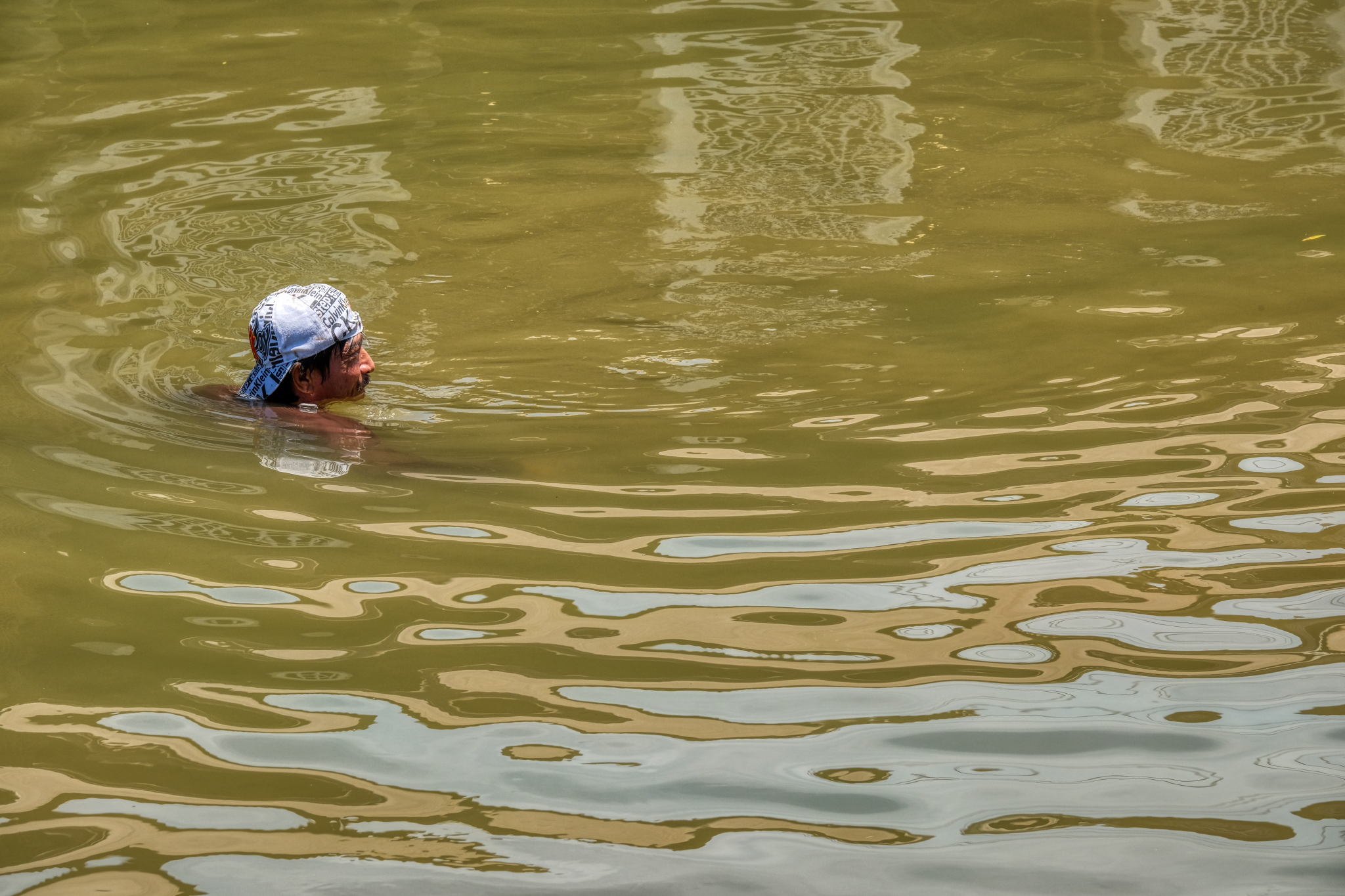 Swimming to beat the heat? No . . . fishing for bottom feeders with a long-handled net.
Swimming to beat the heat? No . . . fishing for bottom feeders with a long-handled net.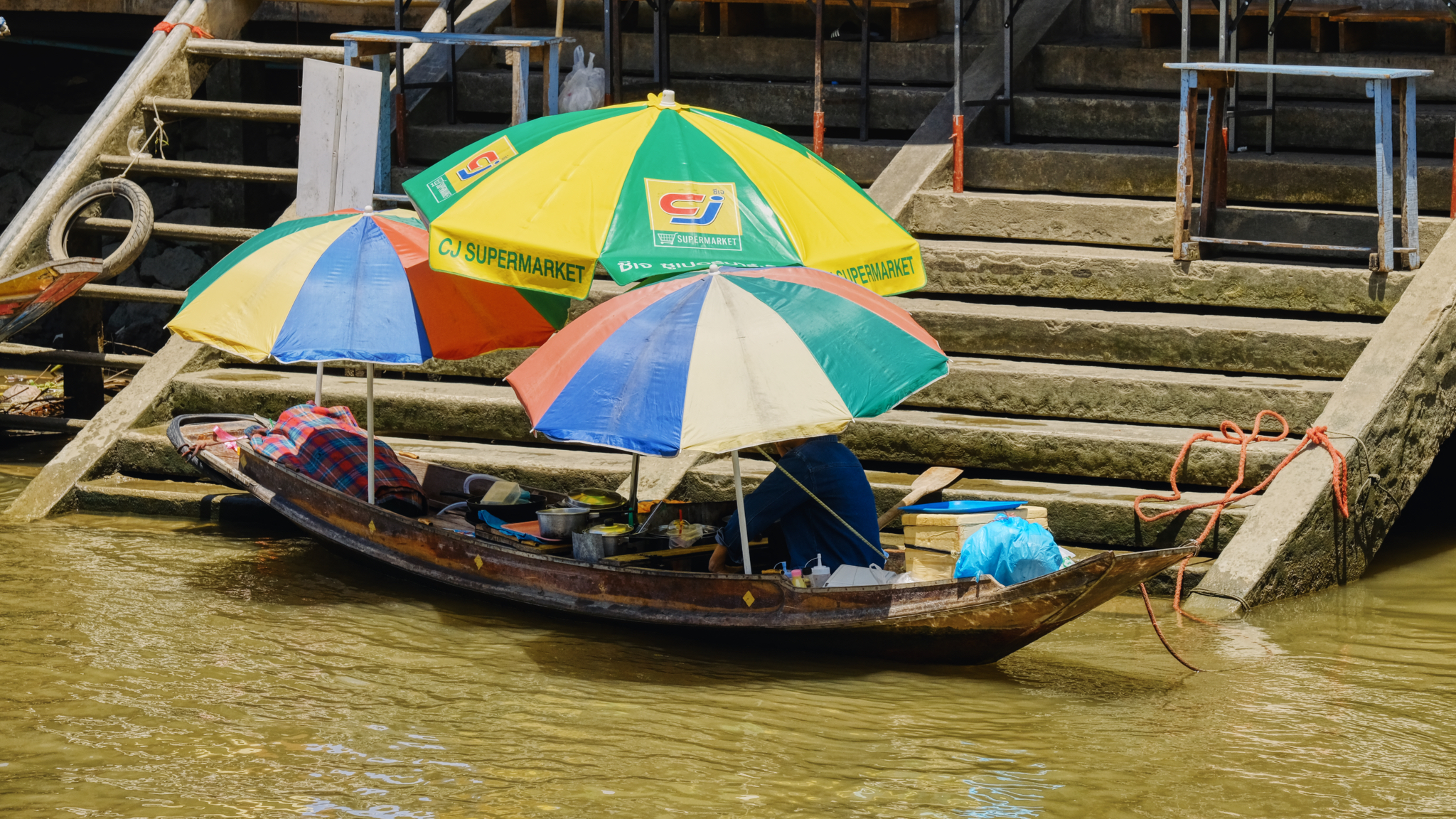 With few tourists around, and crushing heat, the boat vendors sat in quiet repose . . . waiting for a sale.
With few tourists around, and crushing heat, the boat vendors sat in quiet repose . . . waiting for a sale. When the canal is full of tourists in their small boats, these floating restaurants serve the water traffic.
When the canal is full of tourists in their small boats, these floating restaurants serve the water traffic.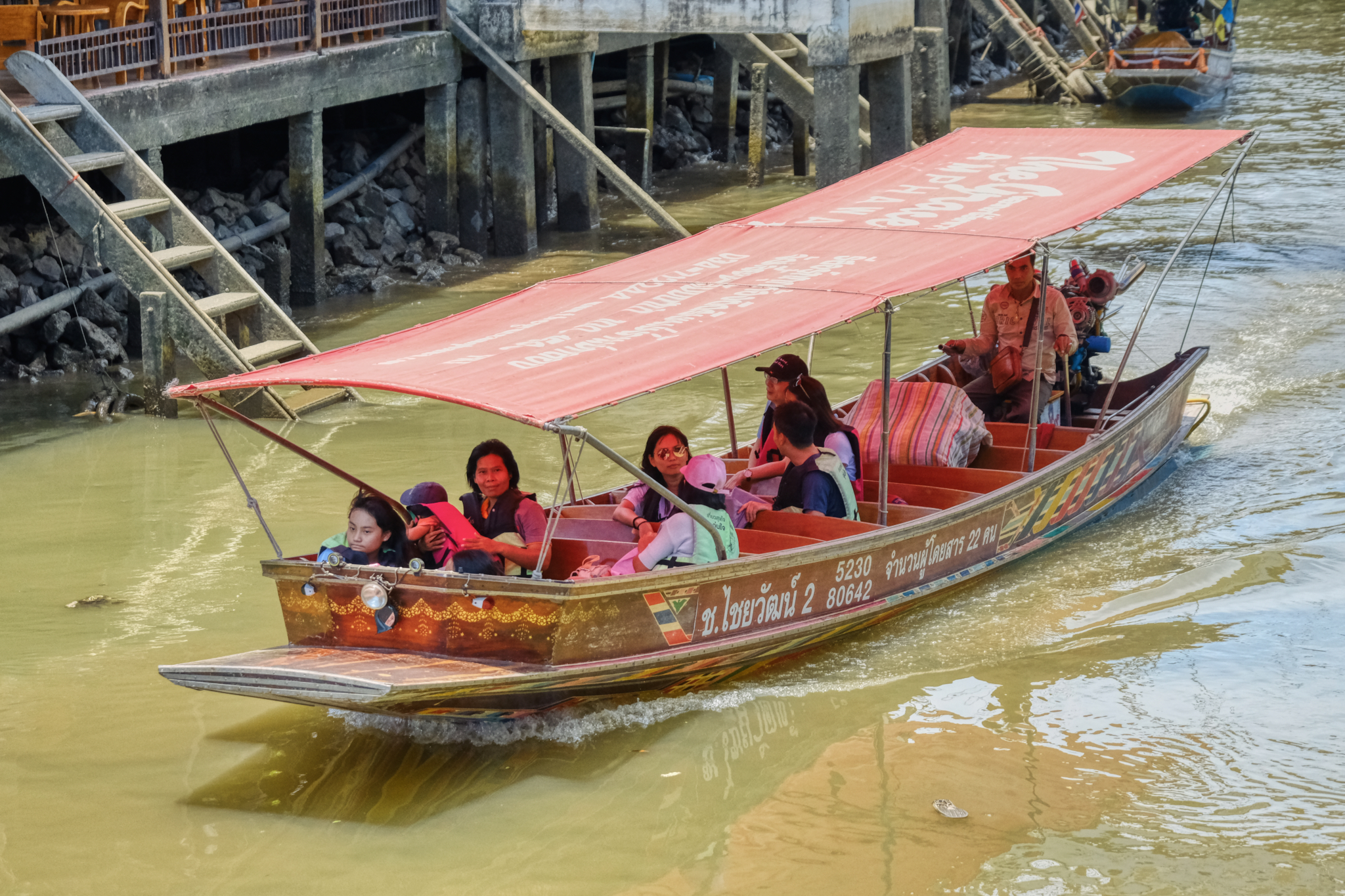 This was the only tourist boat we say all afternoon . . . and they looked HOT!
This was the only tourist boat we say all afternoon . . . and they looked HOT!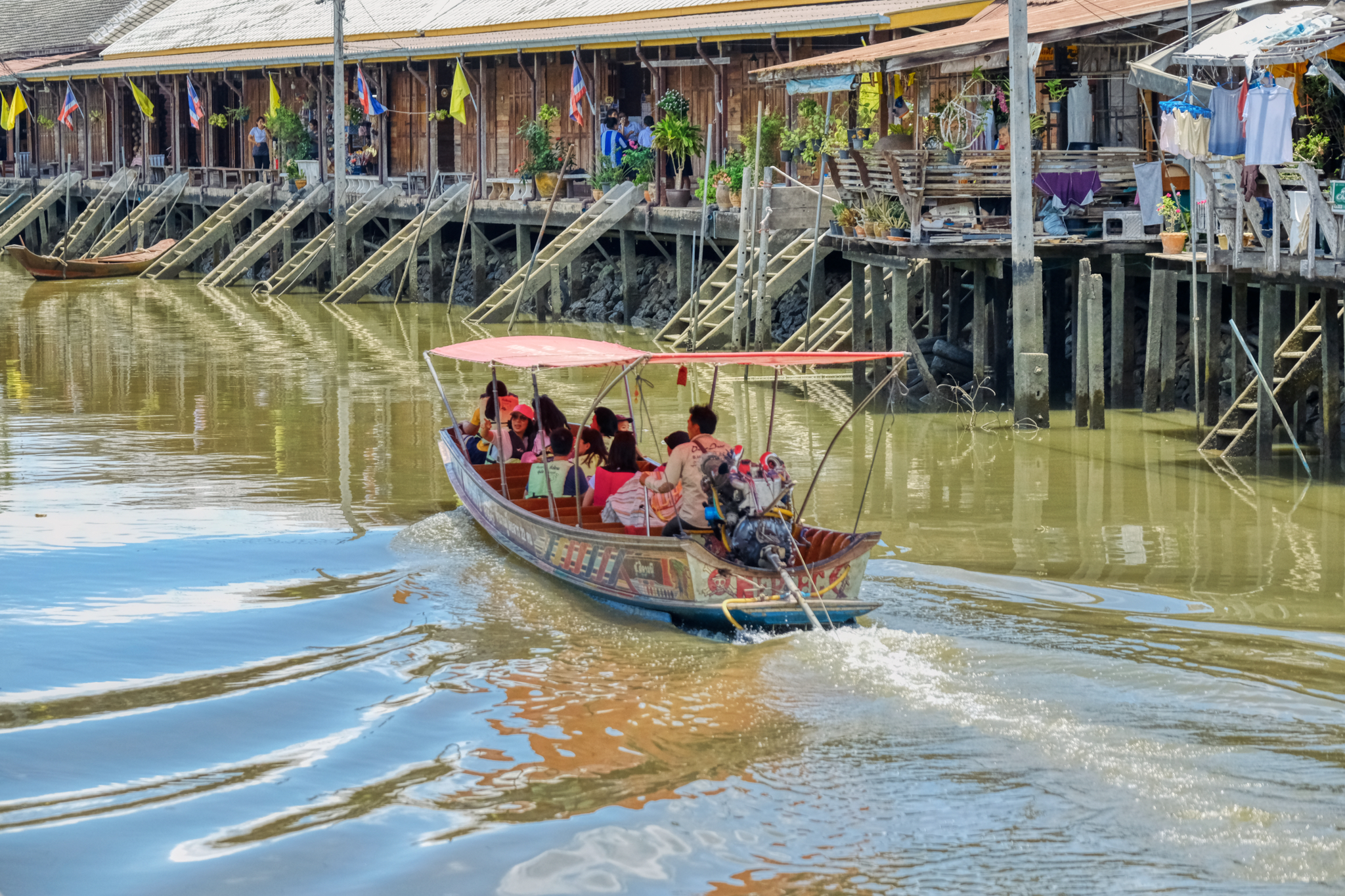 In some respects, this might be the best time of year to visit Amphawa . . . the rest of the year it is overcrowded with tourists. They had the place to themselves.
In some respects, this might be the best time of year to visit Amphawa . . . the rest of the year it is overcrowded with tourists. They had the place to themselves.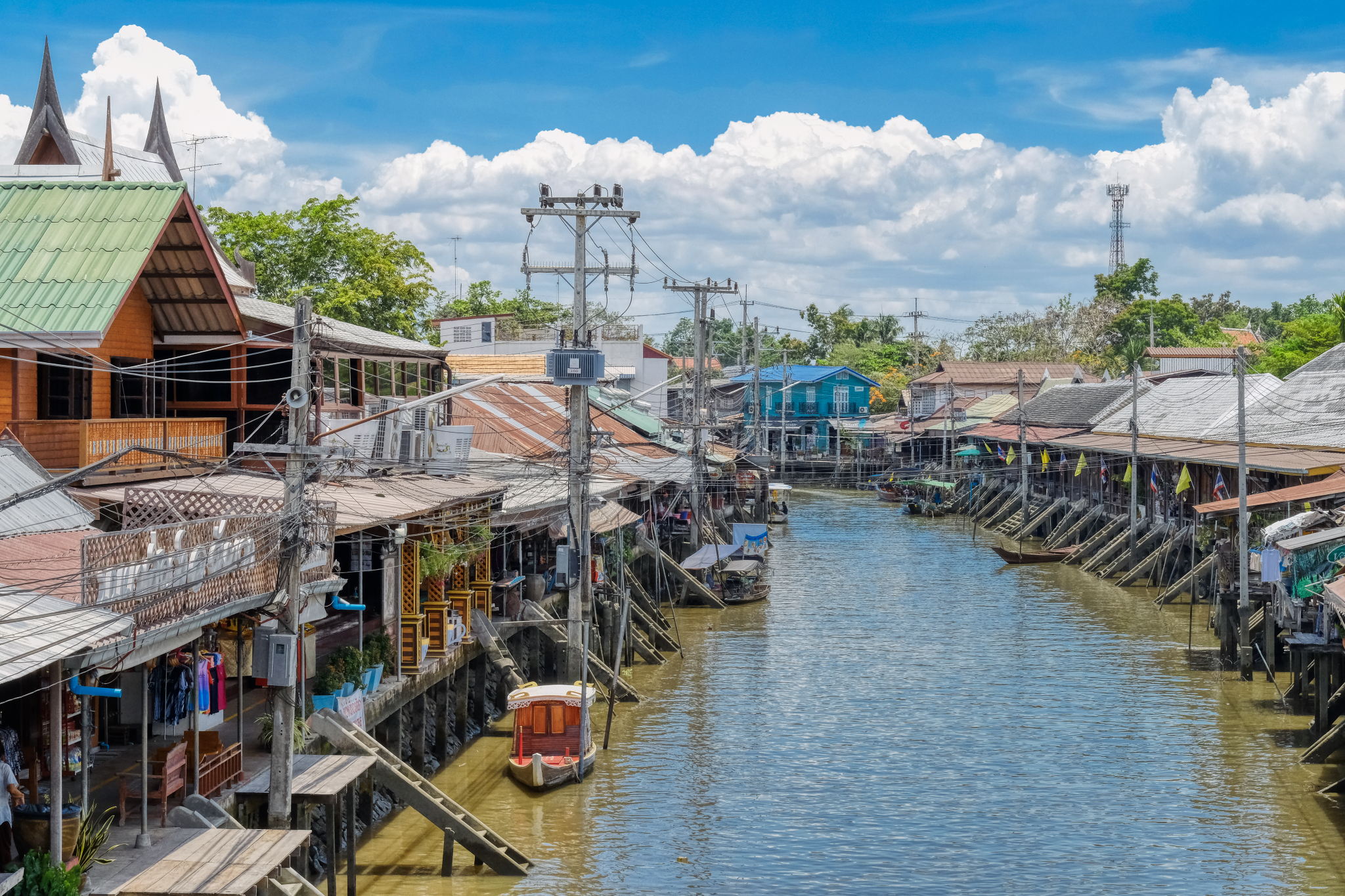 Standing on a bridge over the canal . . and a view one way . . . and . . .
Standing on a bridge over the canal . . and a view one way . . . and . . .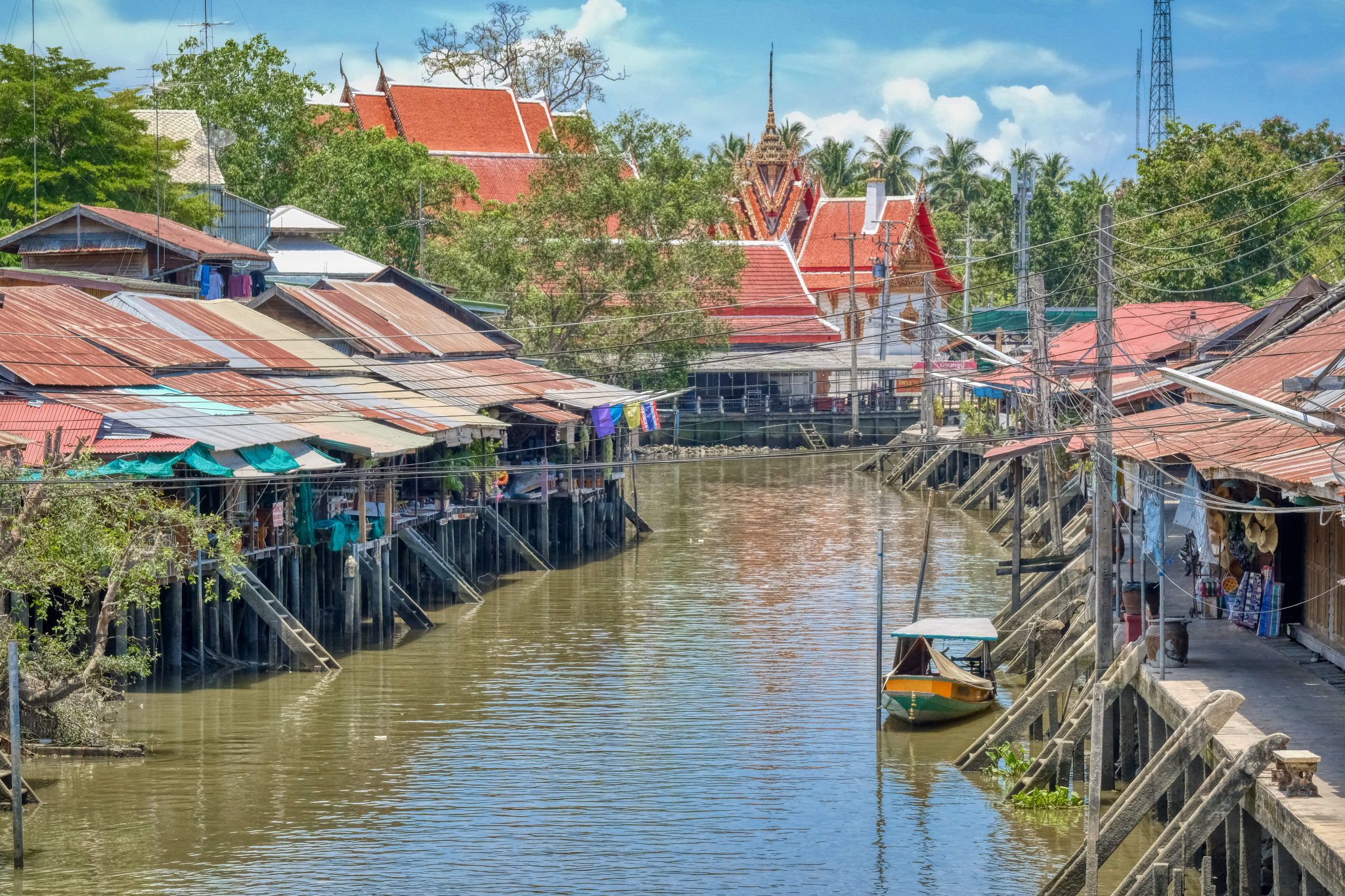 . . . the view in the other direction toward a Buddhist temple (wat).
. . . the view in the other direction toward a Buddhist temple (wat).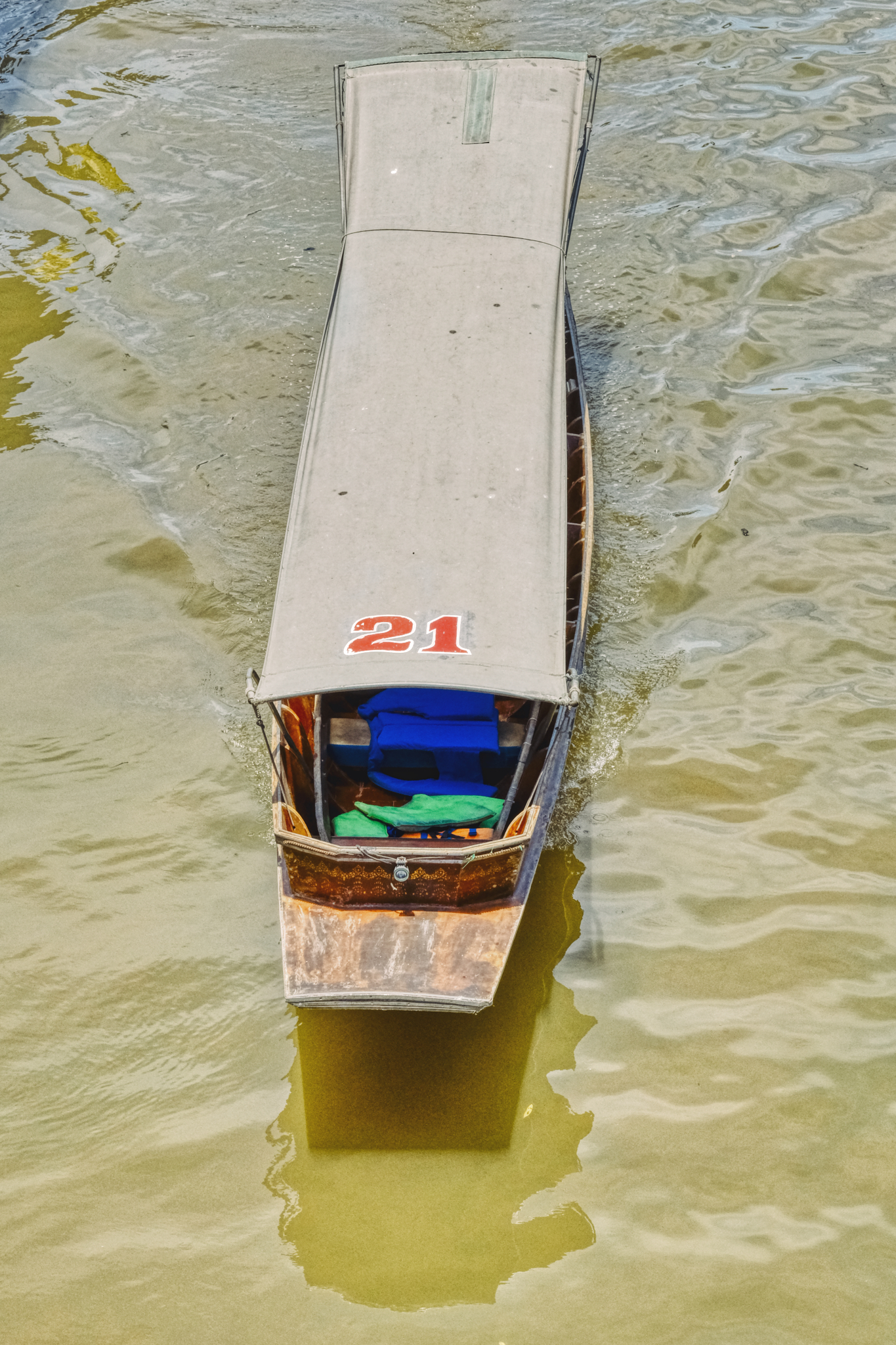 A tourist boat cruising for a fare . . . unsuccessfully.
A tourist boat cruising for a fare . . . unsuccessfully.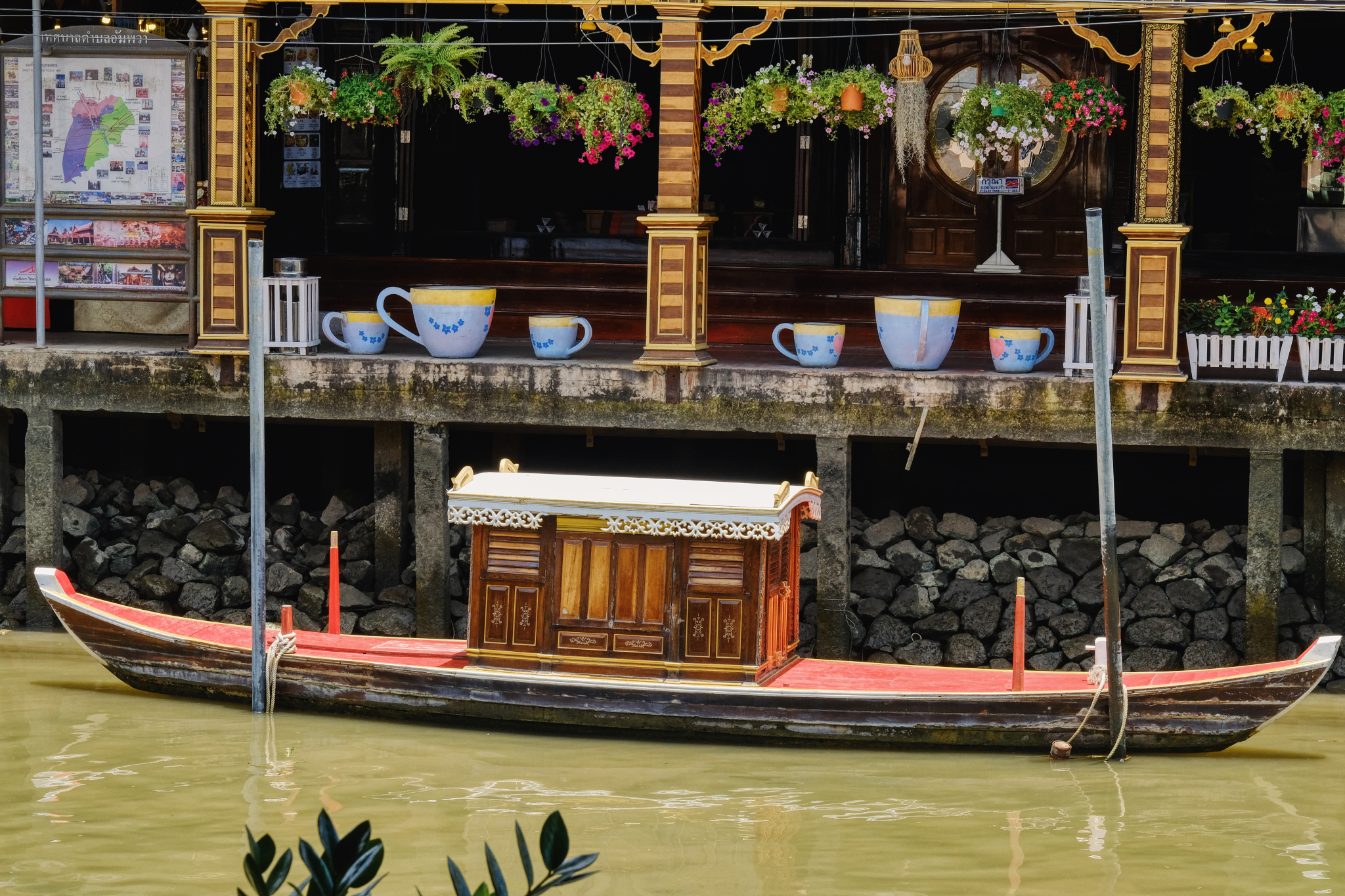 That looks inviting. We went over to this marvelous Old Thai style coffee house for some ice coffee and cold water.
That looks inviting. We went over to this marvelous Old Thai style coffee house for some ice coffee and cold water.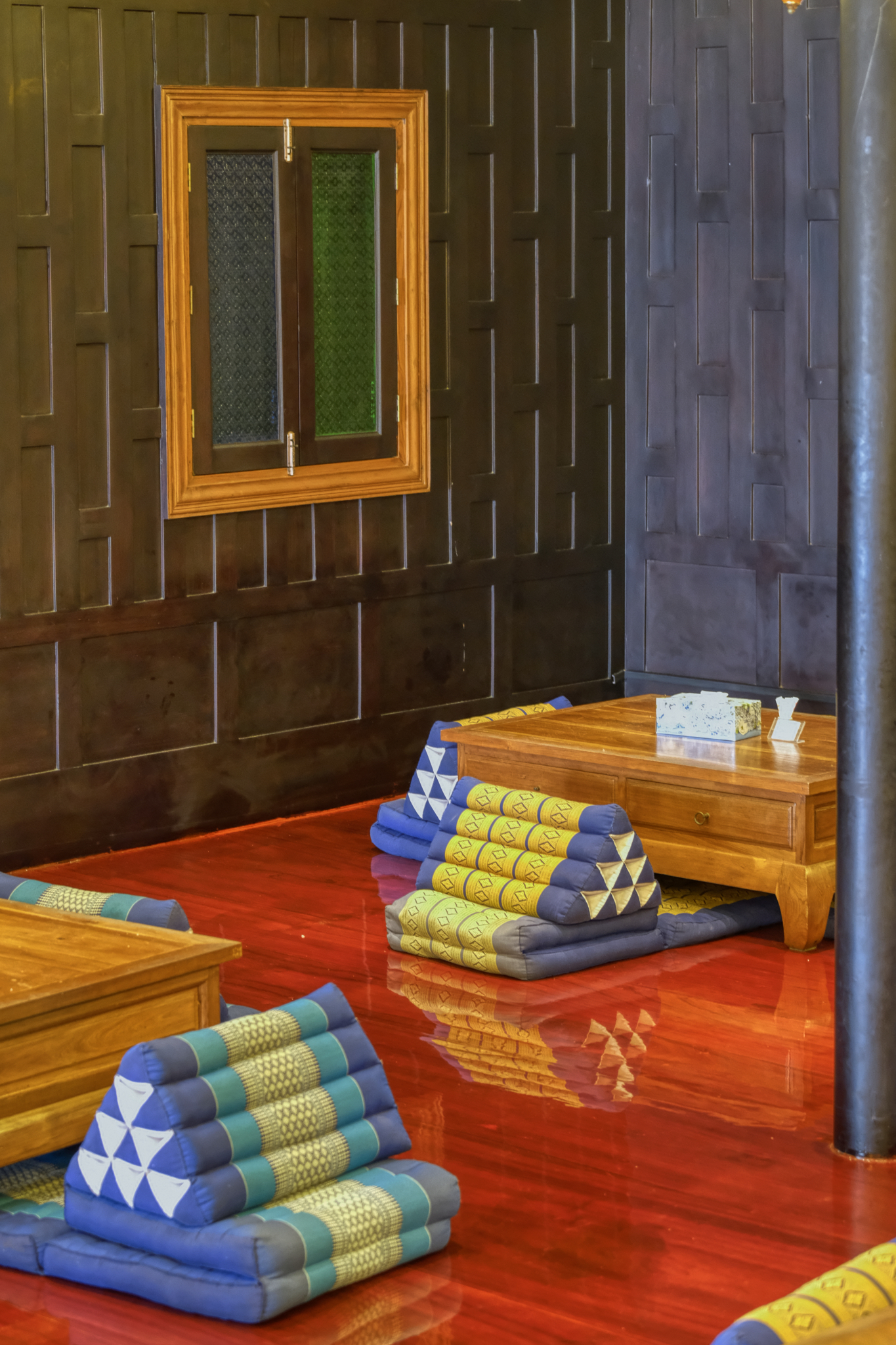 Such a beautiful place to rest, replenish, hydrate, and sit in front of some fans.
Such a beautiful place to rest, replenish, hydrate, and sit in front of some fans.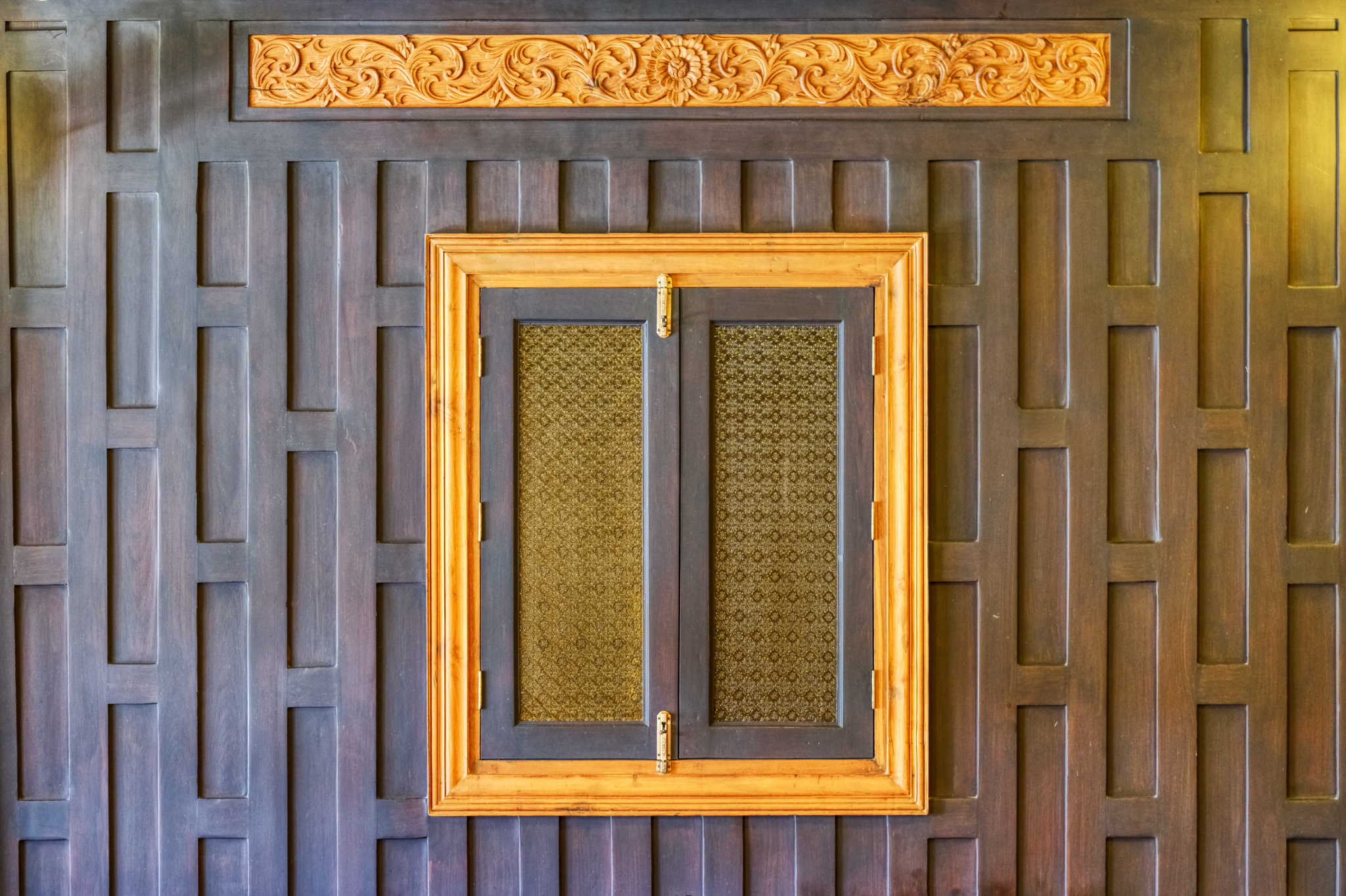 Old Thai style wood panels are so beautiful.
Old Thai style wood panels are so beautiful.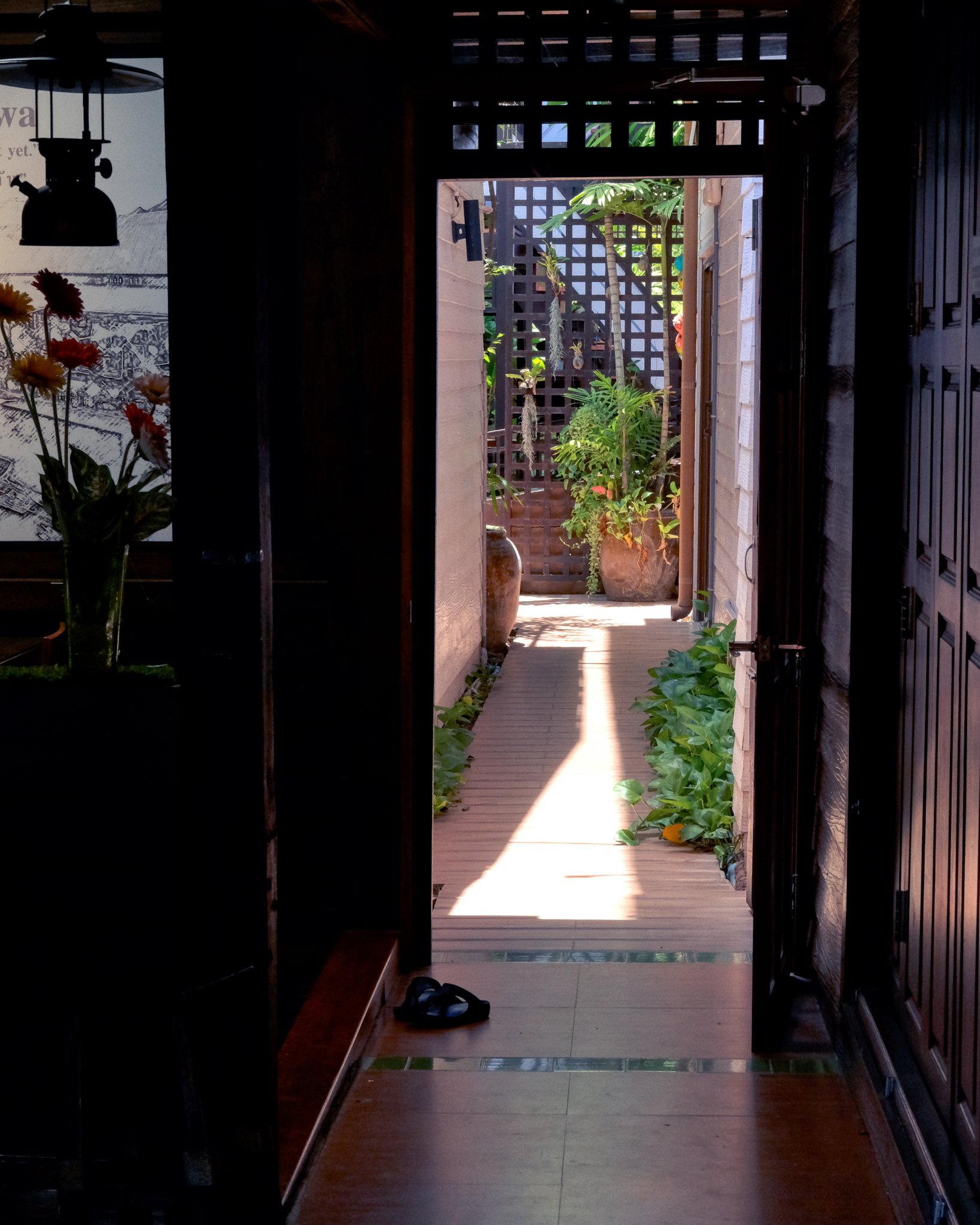 After a break we walked along he wooden boardwalks and secretly peaked into the houses. Such serene stillness in the oppressive heat and humidity.
After a break we walked along he wooden boardwalks and secretly peaked into the houses. Such serene stillness in the oppressive heat and humidity.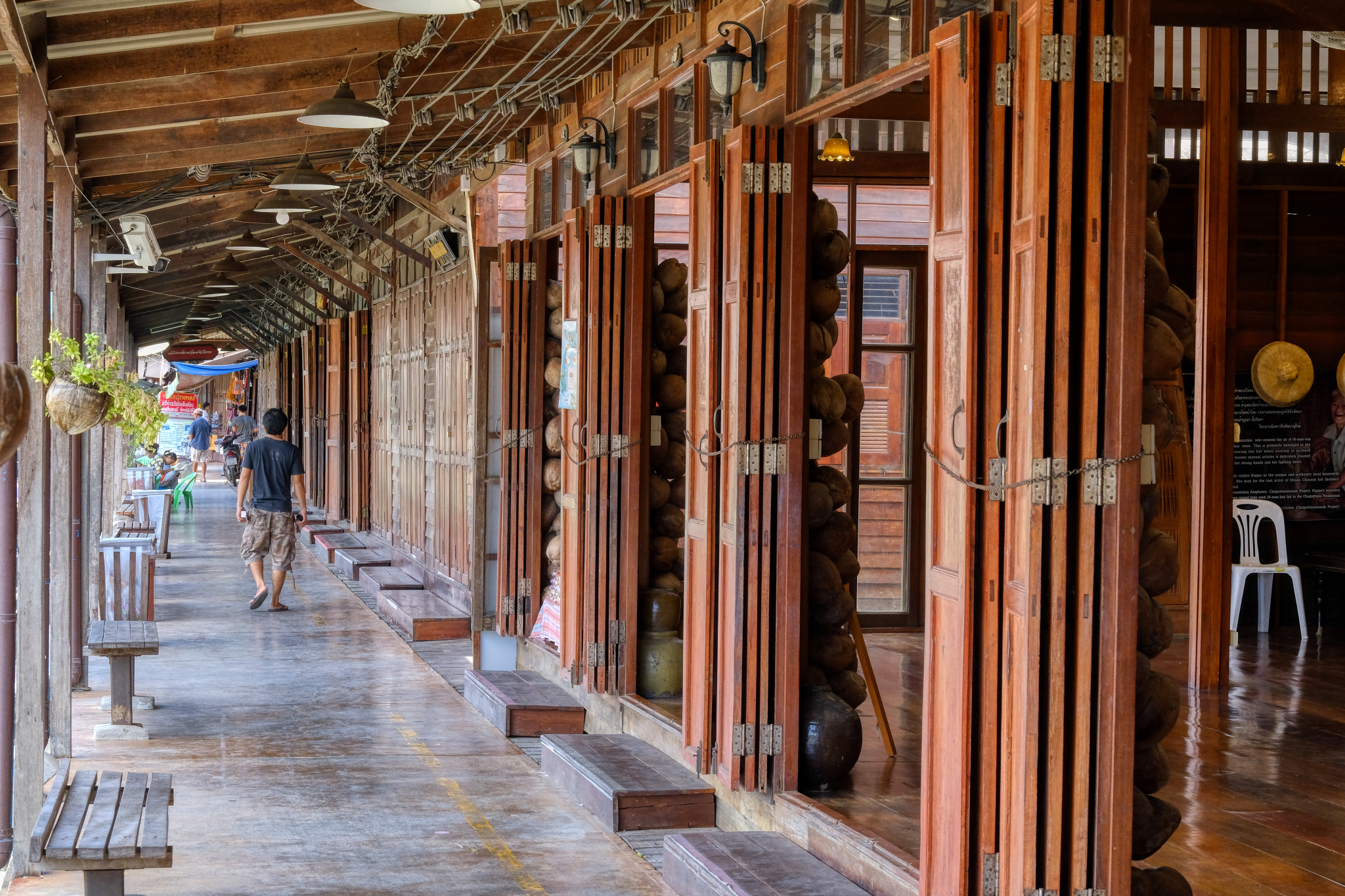 We took our time meandering along the shops . . . and this nice museum of the history of canal life.
We took our time meandering along the shops . . . and this nice museum of the history of canal life.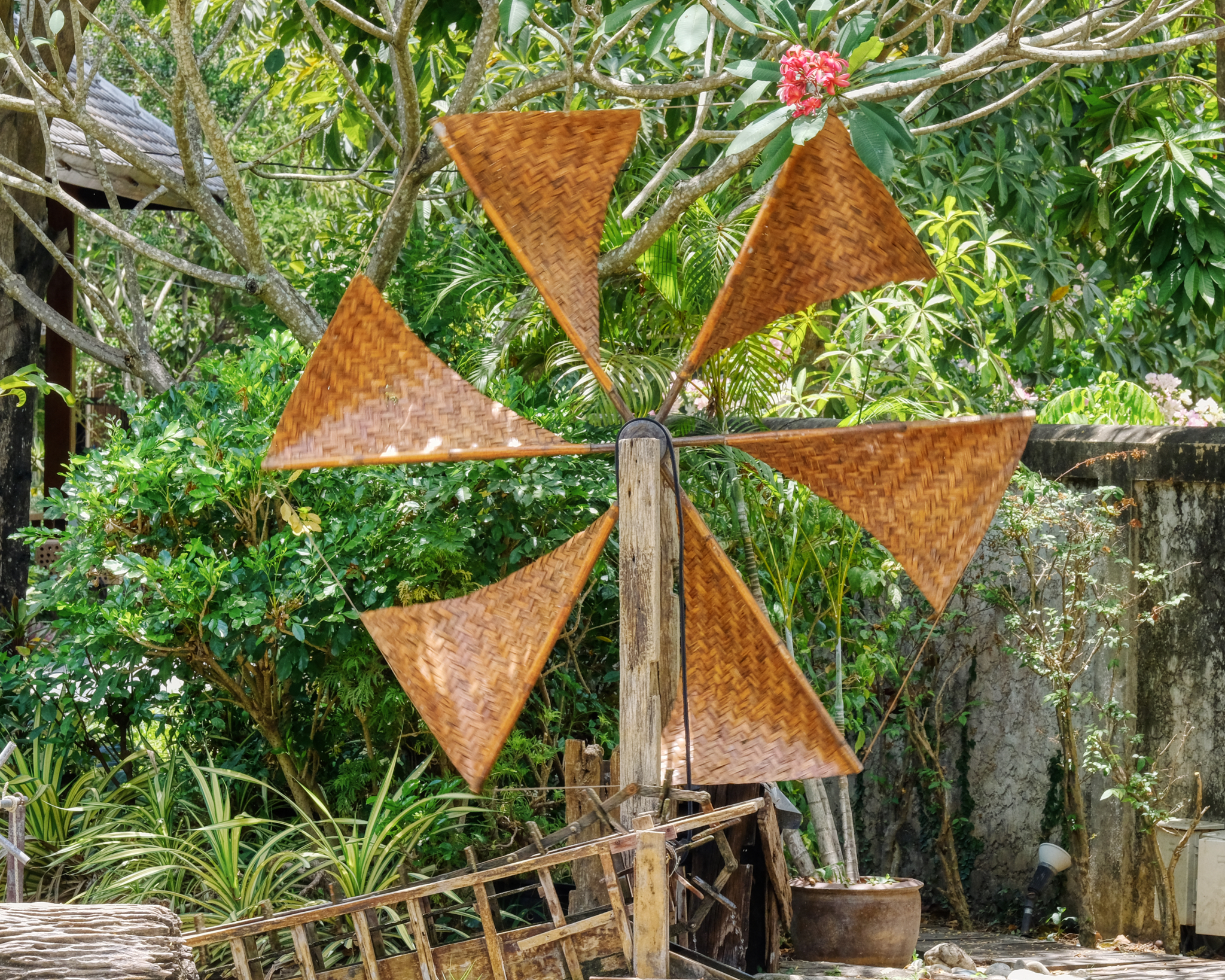 A spinning windmill behind the museum.
A spinning windmill behind the museum.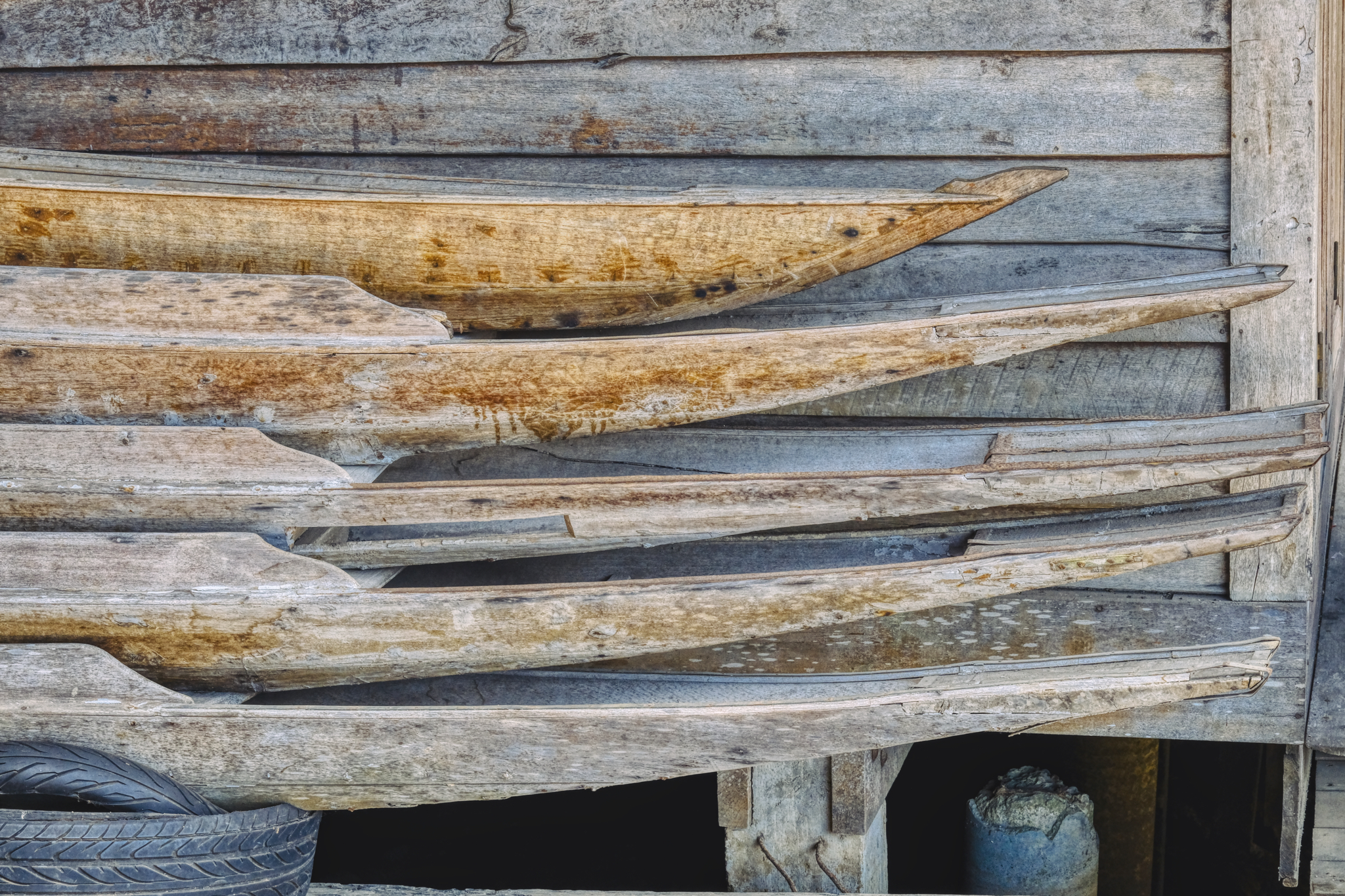 Antique canoes stacked along side the museum.
Antique canoes stacked along side the museum.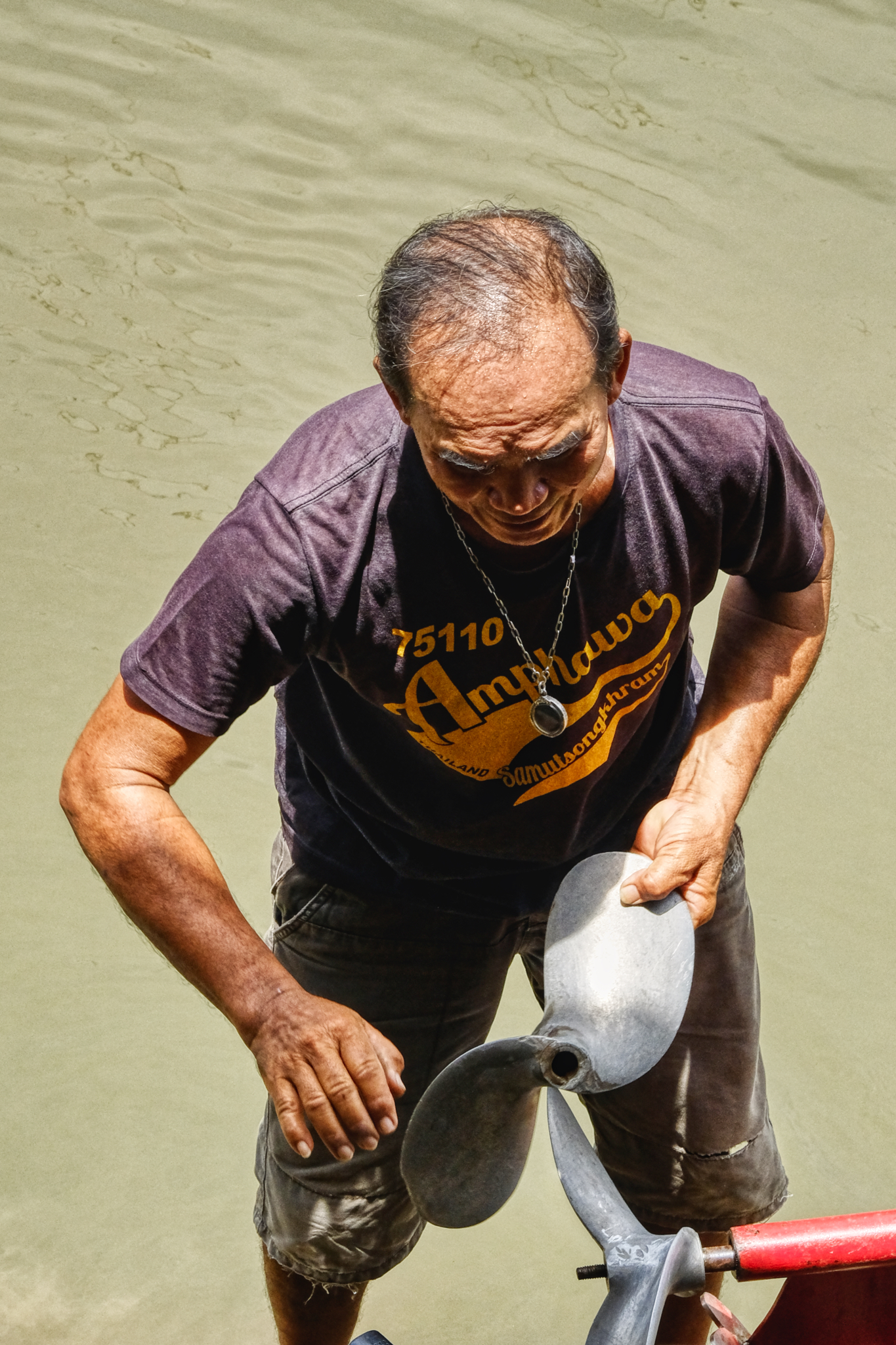 Even as hot as it was, the propeller still needed repairing.
Even as hot as it was, the propeller still needed repairing.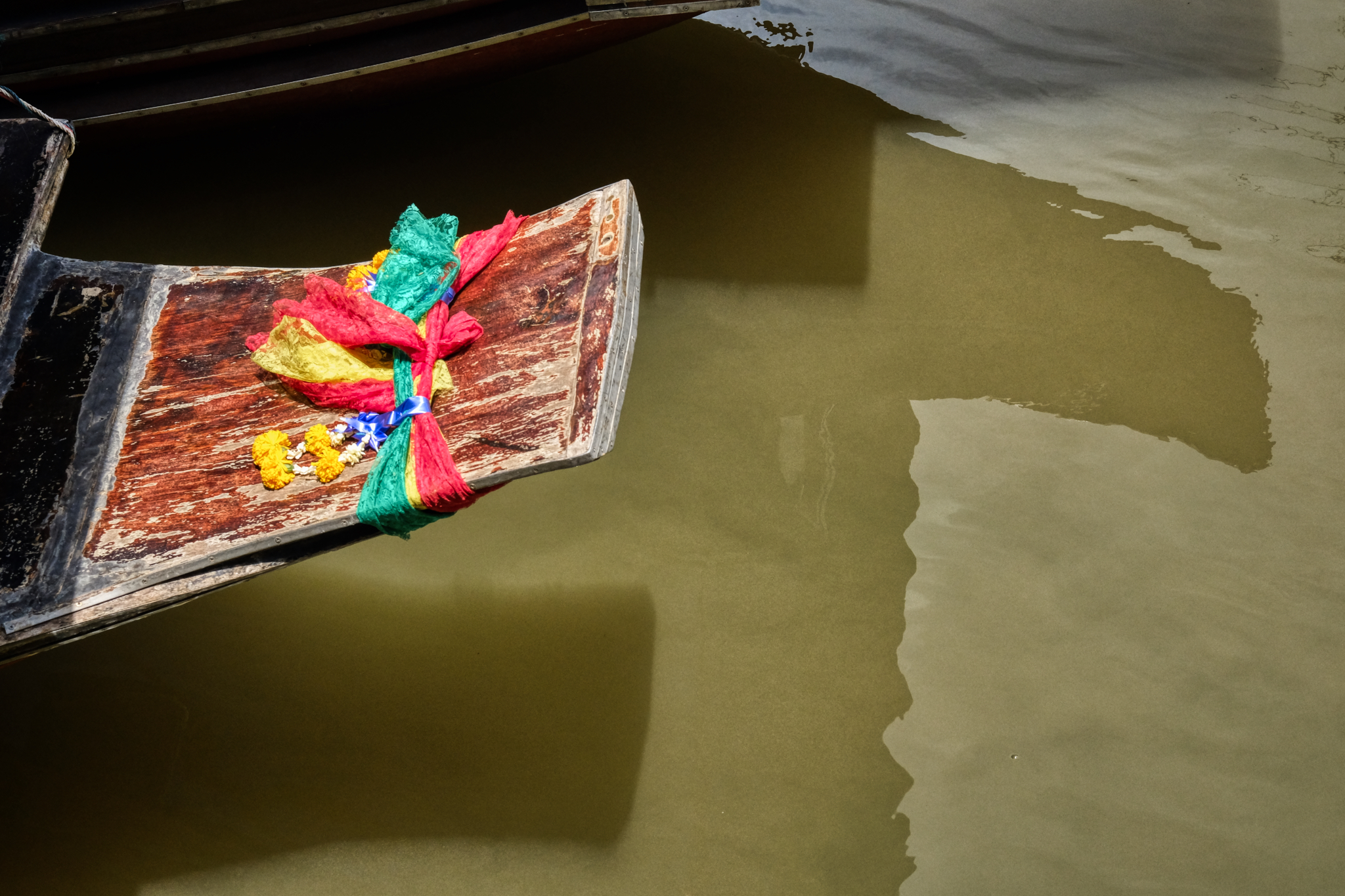 The tourist boas were beautifully decorated . . . in hopes of attracting business . . . which never came on this scorching day.
The tourist boas were beautifully decorated . . . in hopes of attracting business . . . which never came on this scorching day.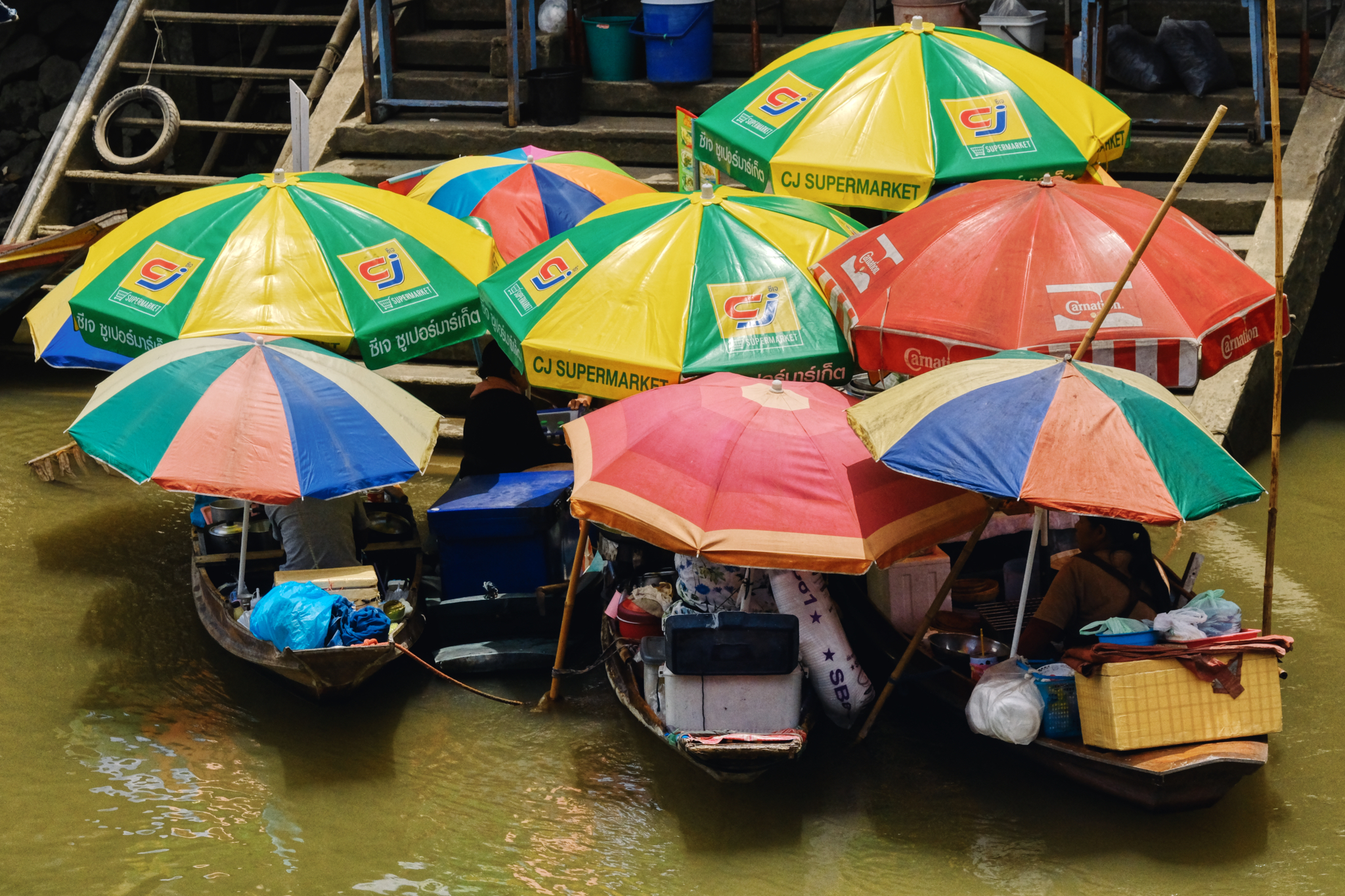 The ladies in their food stall boats congregated to swat flies and swap lies, as they say. Not much else to do.
The ladies in their food stall boats congregated to swat flies and swap lies, as they say. Not much else to do.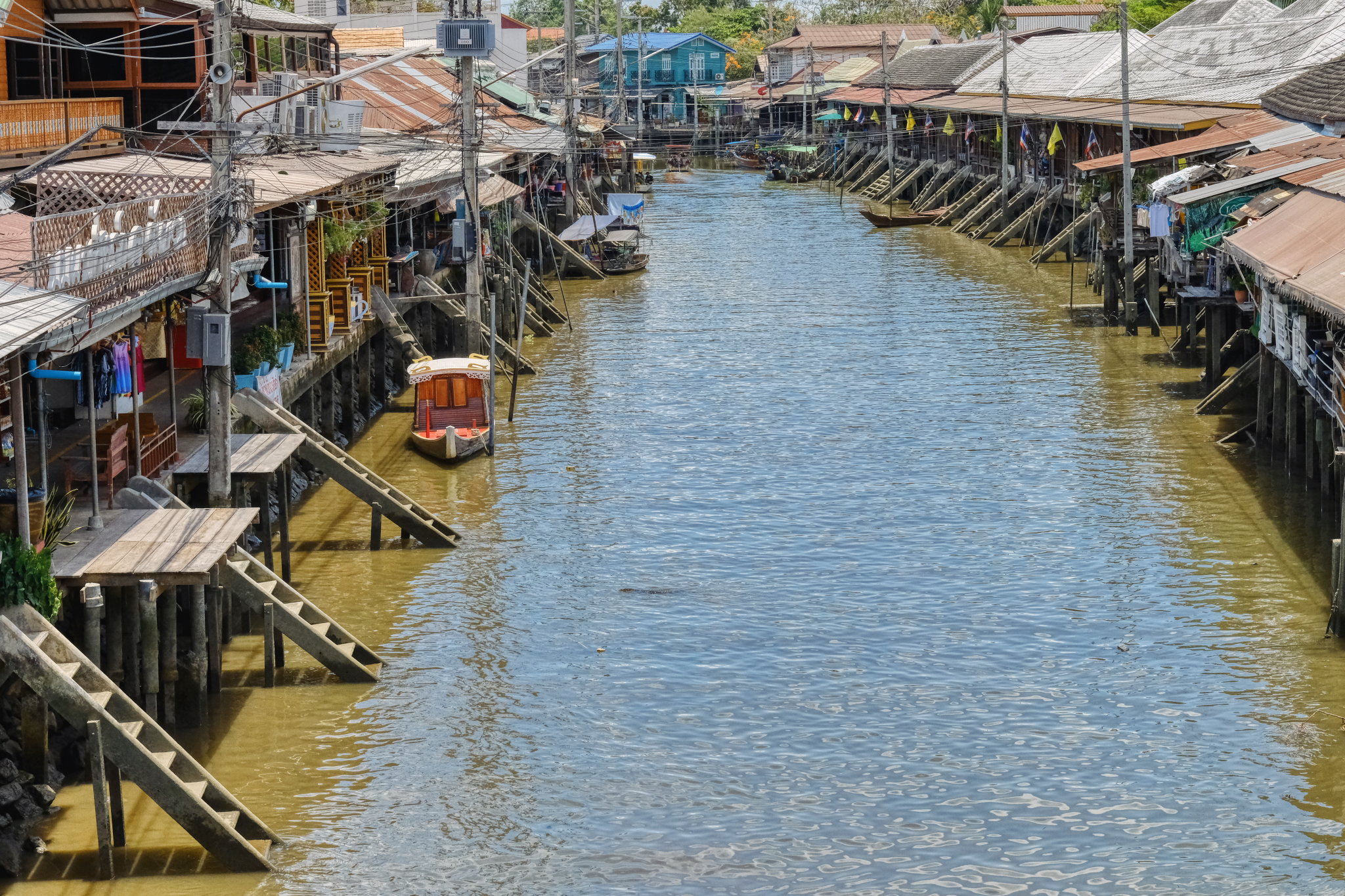 Back over the bridge toward the car. The hot day nearly over . . . the car air-conditioner is calling.
Back over the bridge toward the car. The hot day nearly over . . . the car air-conditioner is calling.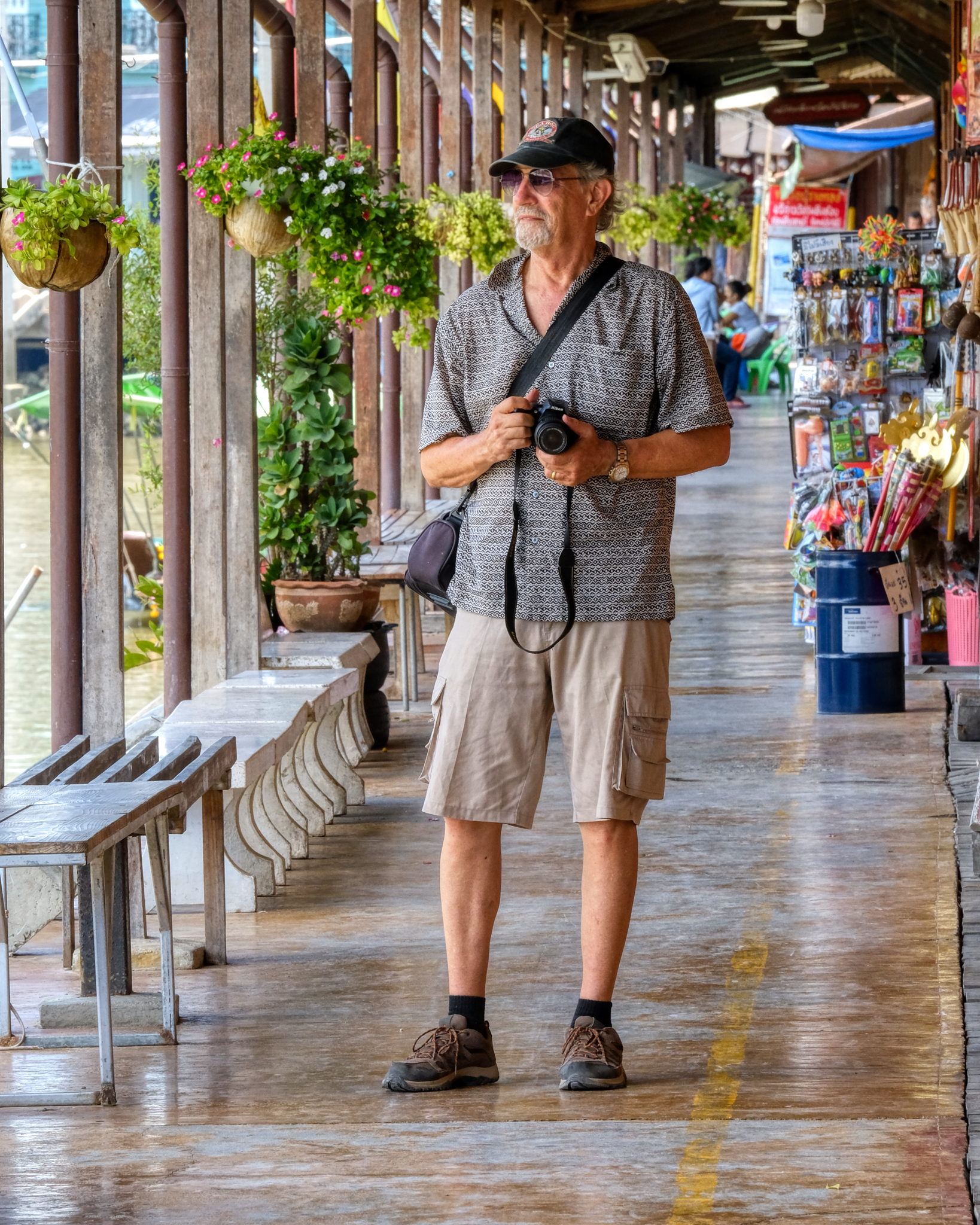 My friend John always on the look out for an amazing image.
My friend John always on the look out for an amazing image. We descended down into the sea of sun parasols and the tourist curios.
We descended down into the sea of sun parasols and the tourist curios.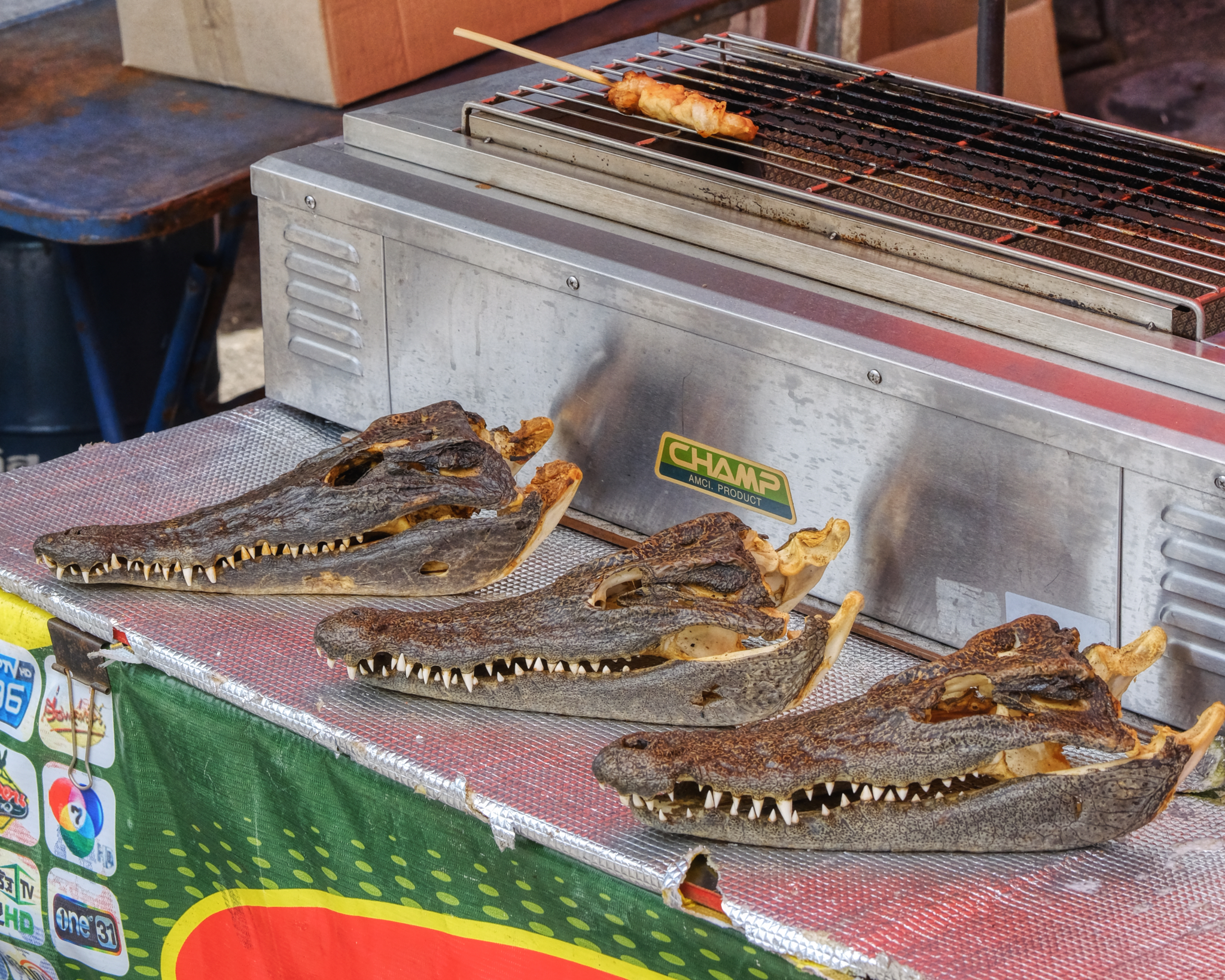 Our last act was to buy a 'croc-on-a-stick' brochet . . . Yes, it did taste like chicken, which makes a kind of sense since crocodiles are actually surviving dinosaurs . . . and birds are dinosaur descendants. We worried all the way back home that we could have eaten 'bad crocodile' . . . . but we were fine . . . no intestinal turmoil after all.
Our last act was to buy a 'croc-on-a-stick' brochet . . . Yes, it did taste like chicken, which makes a kind of sense since crocodiles are actually surviving dinosaurs . . . and birds are dinosaur descendants. We worried all the way back home that we could have eaten 'bad crocodile' . . . . but we were fine . . . no intestinal turmoil after all. Out and About in Pakkret, My Hometown
 Sunday, February 11, 2018 at 11:48AM
Sunday, February 11, 2018 at 11:48AM 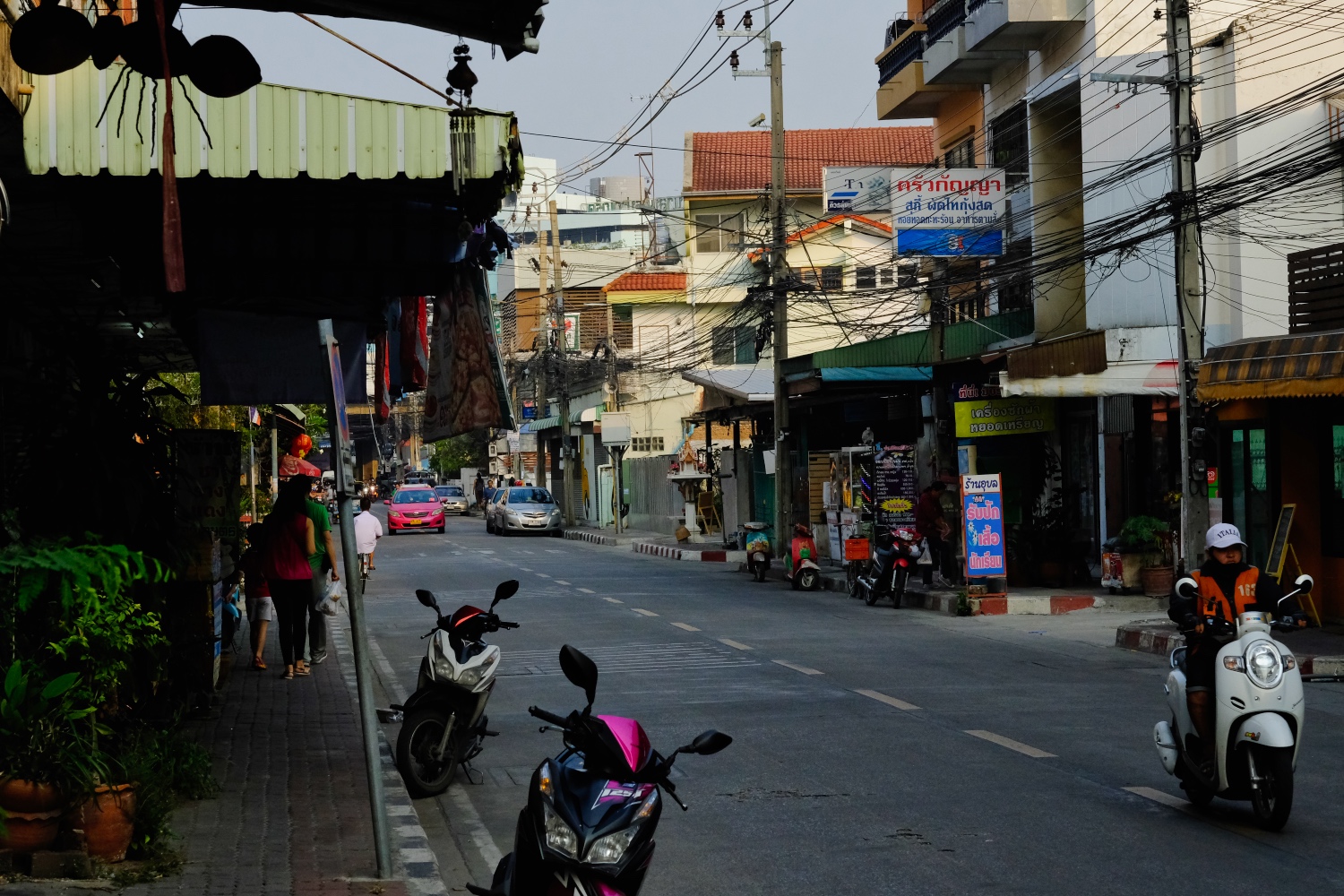 Pakkret* (variously Pak Kred or Pak Kret) is a small municipality (population 180,000) in the Thai province of Nonthaburi, 10 miles up the Chao Phayra River from the heart of Bangkok. [* The name Pakkret derives from the Thai, Ban Pak Tret Noi (บ้านปากเตร็ดน้อย), meaning village on the mouth of the lesser bypass.]
Pakkret* (variously Pak Kred or Pak Kret) is a small municipality (population 180,000) in the Thai province of Nonthaburi, 10 miles up the Chao Phayra River from the heart of Bangkok. [* The name Pakkret derives from the Thai, Ban Pak Tret Noi (บ้านปากเตร็ดน้อย), meaning village on the mouth of the lesser bypass.]
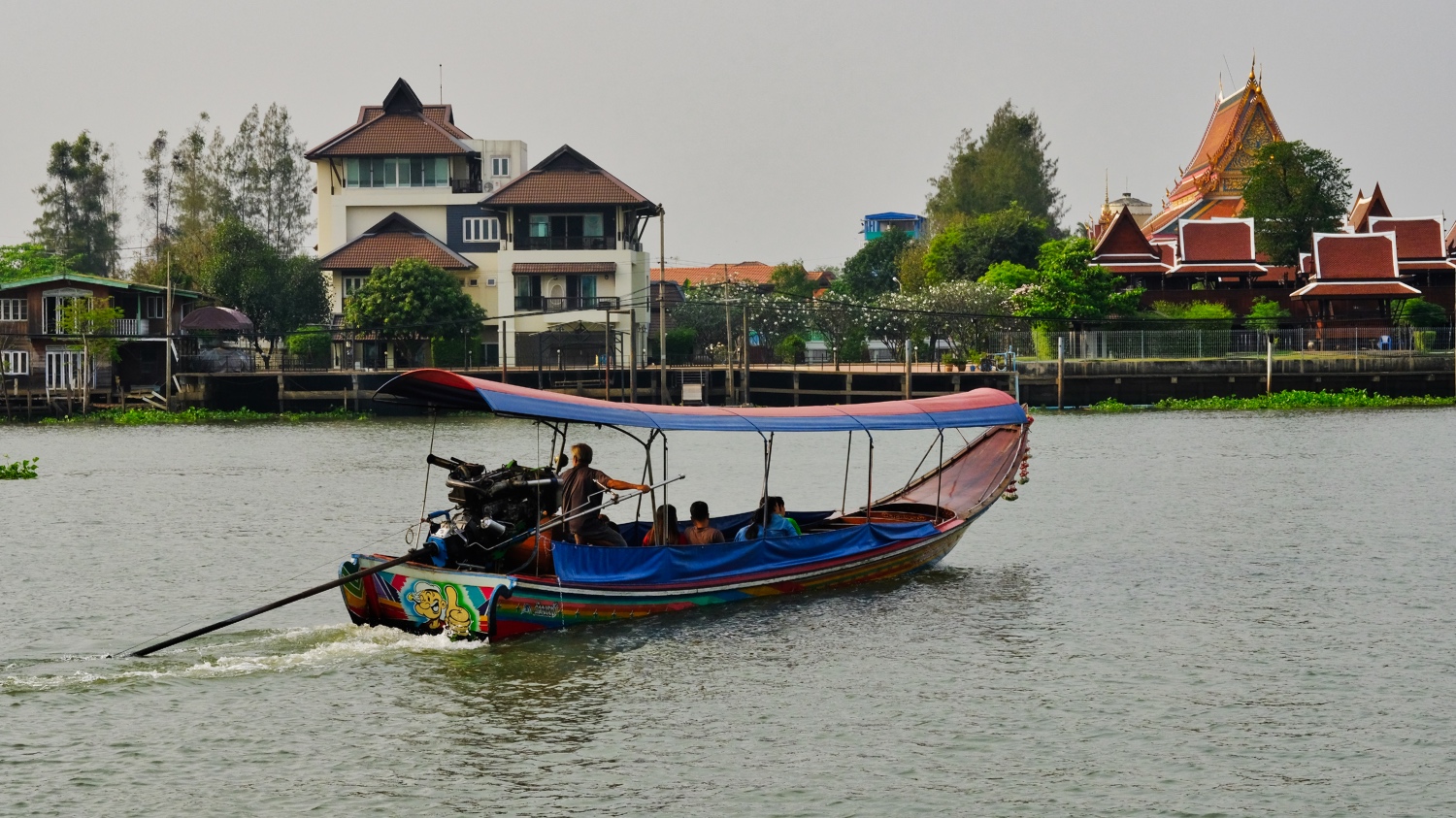 Pakkret sits on the east shore of the busy river. Longtail boats and ferries move people across and around the river banks.
Pakkret sits on the east shore of the busy river. Longtail boats and ferries move people across and around the river banks.
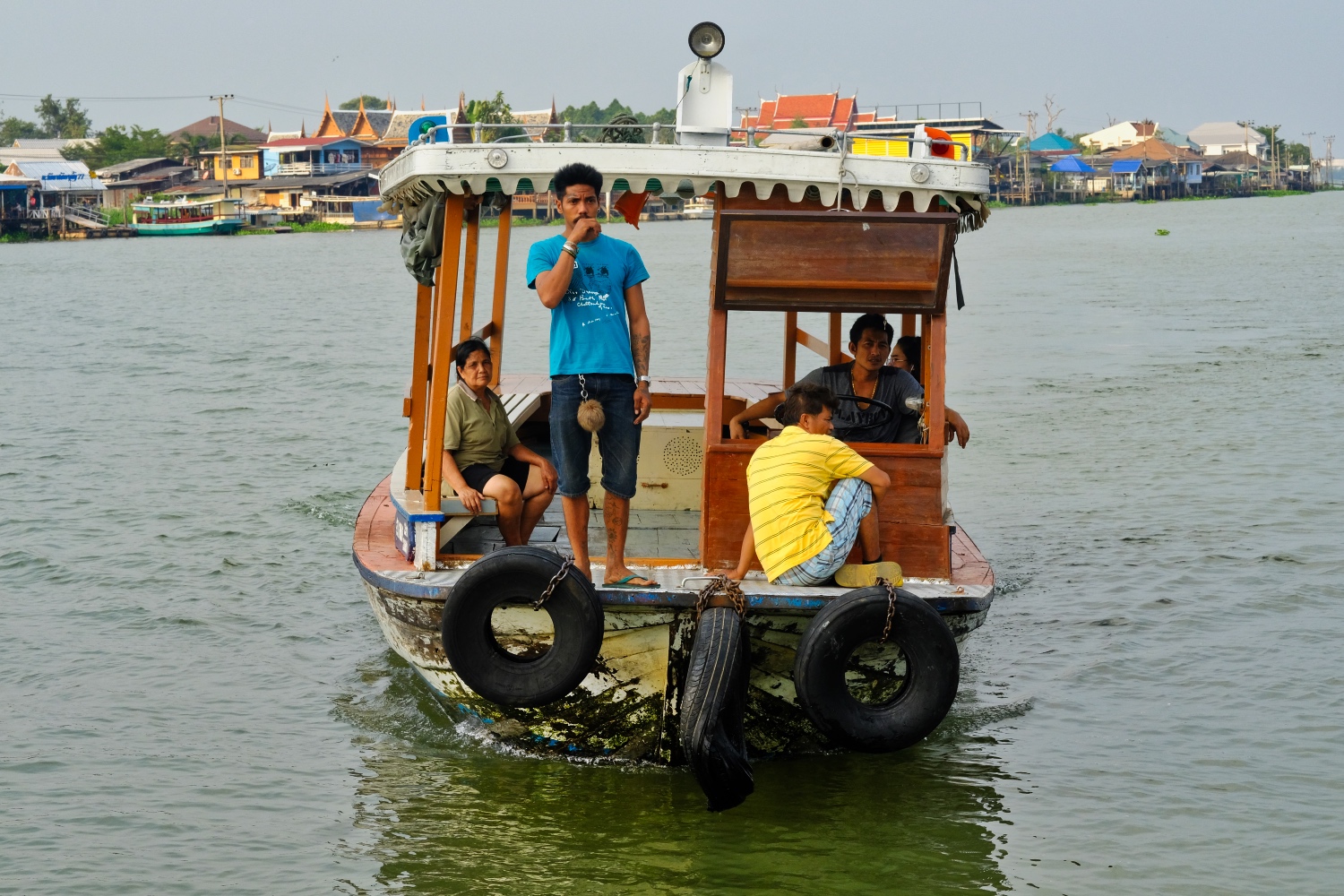 Small government ferries take shoppers headed to the big Pakkret Market . . . for 3 baht (US$0.09).
Small government ferries take shoppers headed to the big Pakkret Market . . . for 3 baht (US$0.09).
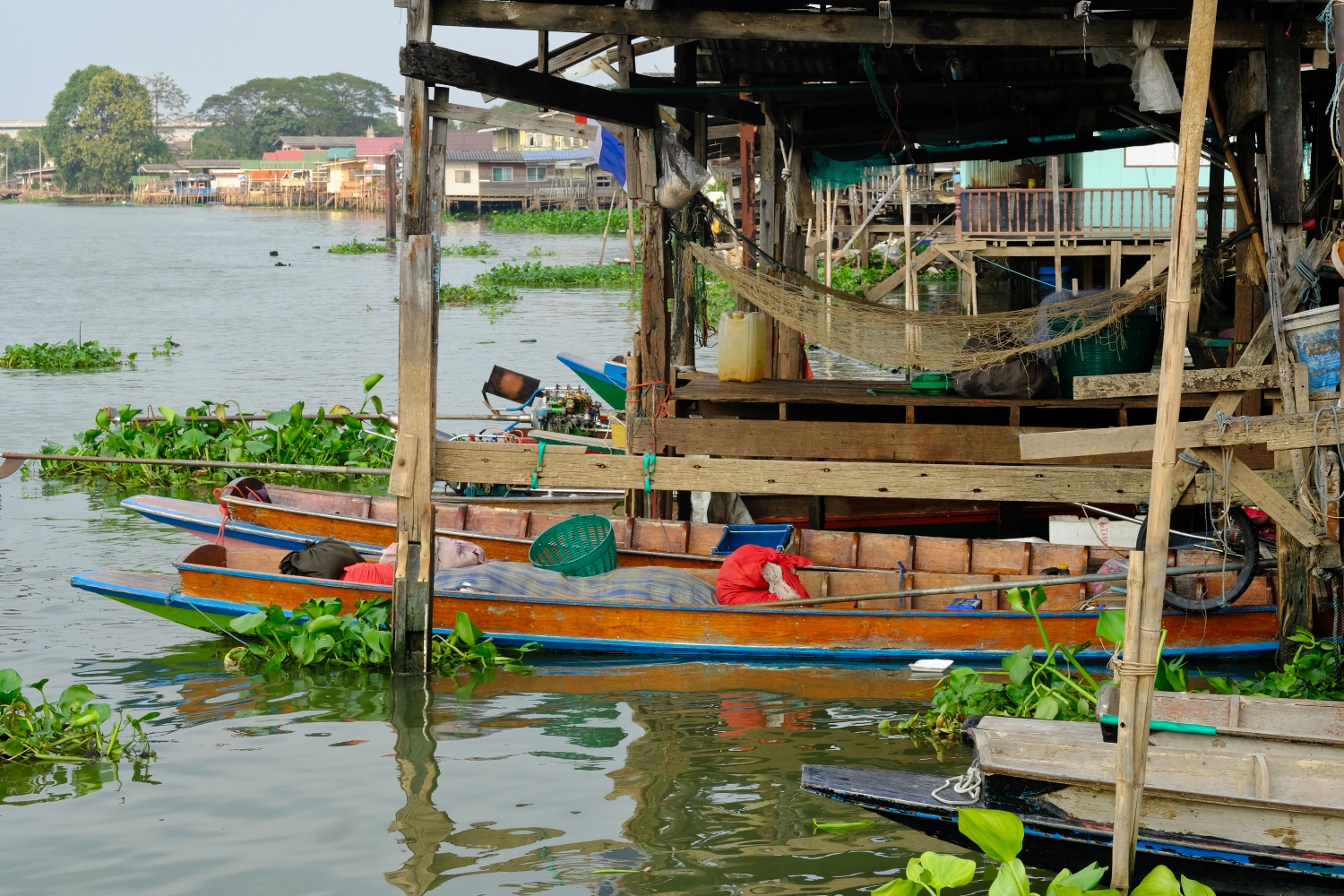 Many wooden houses on wooden pilings line the river at Pakkret. Many of these houses sit below the river flood level and the residents vacate their home for 2-3 months of the year.
Many wooden houses on wooden pilings line the river at Pakkret. Many of these houses sit below the river flood level and the residents vacate their home for 2-3 months of the year.
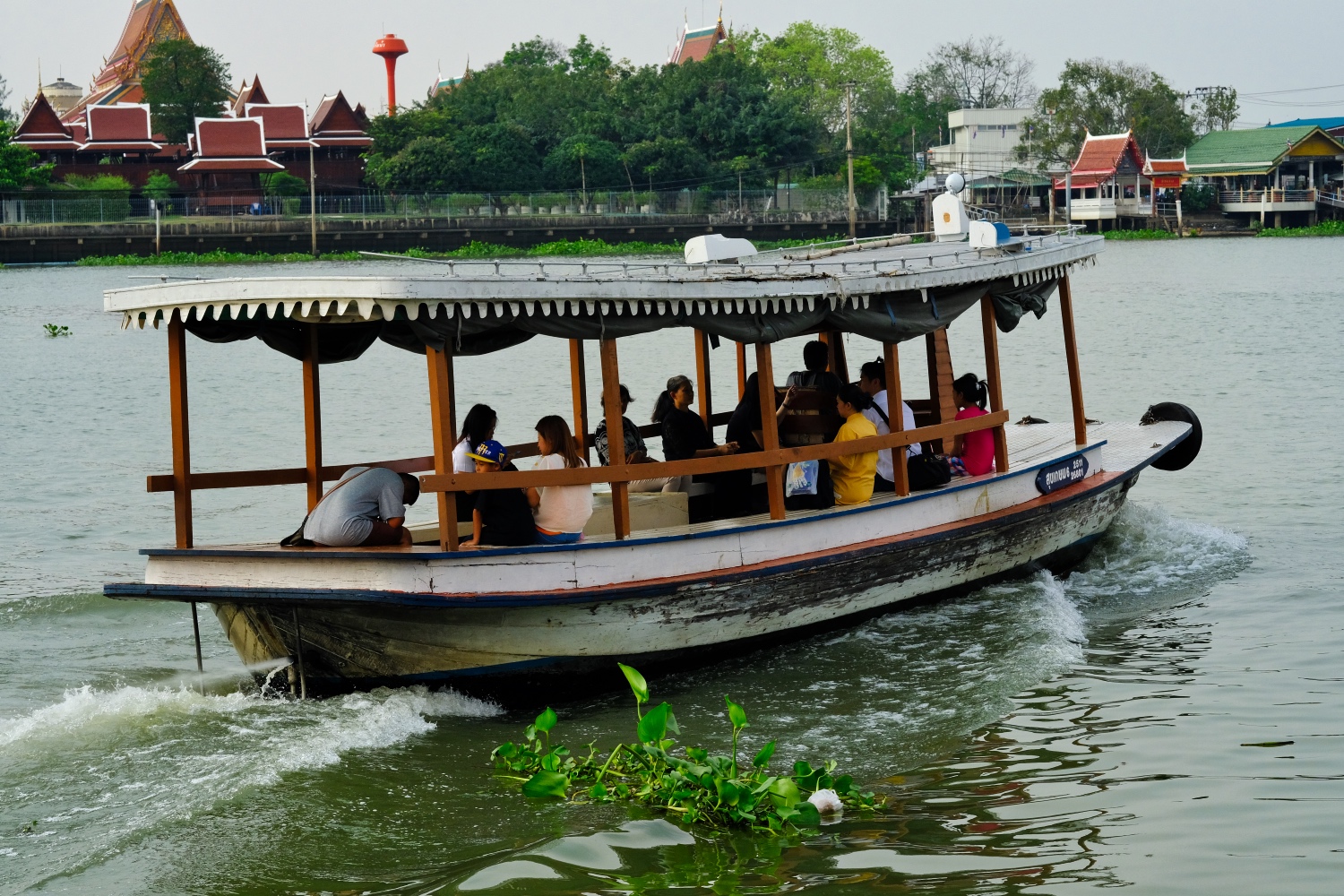 Shoppers going back across the river.
Shoppers going back across the river.
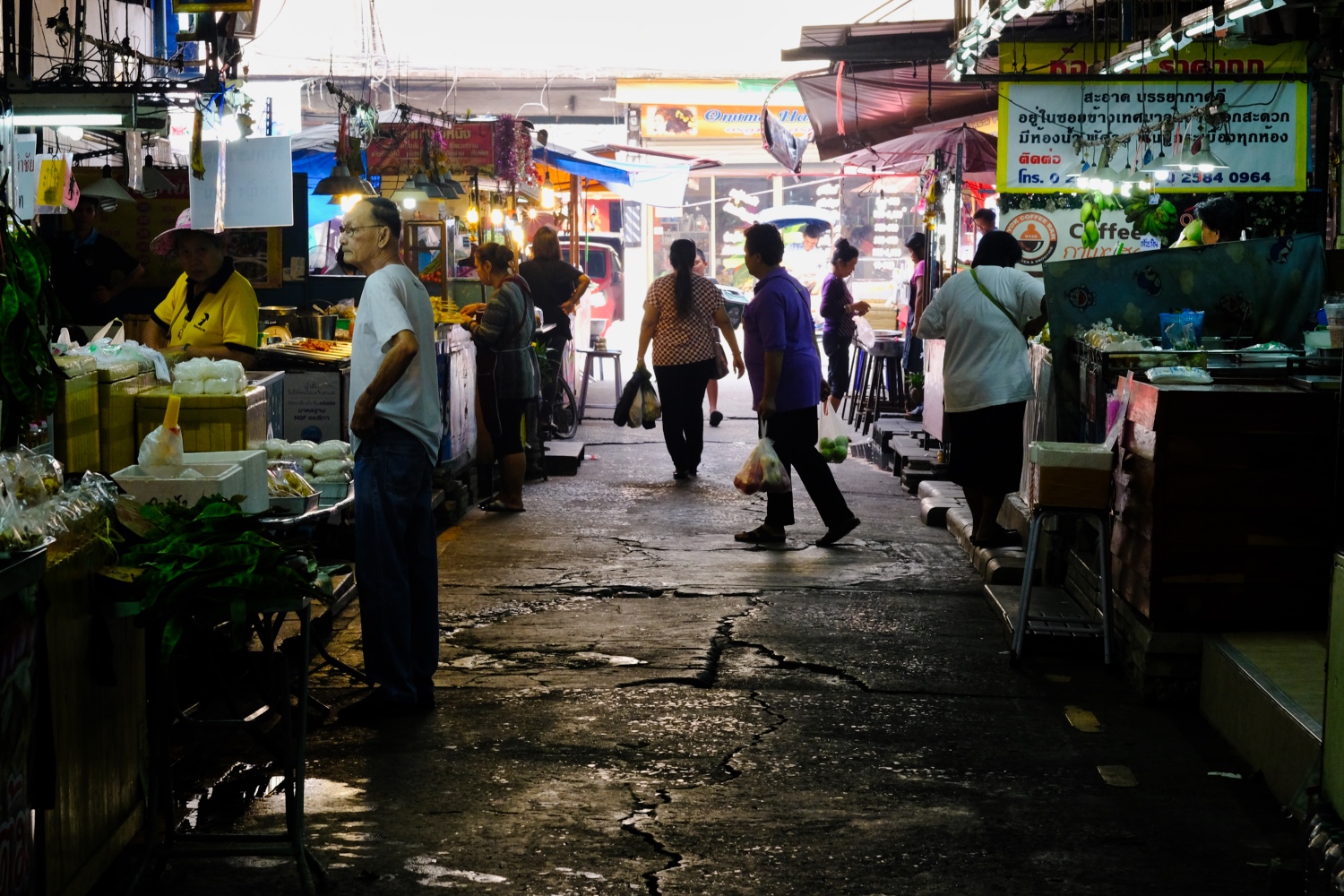 When I think of Pakkret I think of the river . . . and the two grand markets.
When I think of Pakkret I think of the river . . . and the two grand markets.
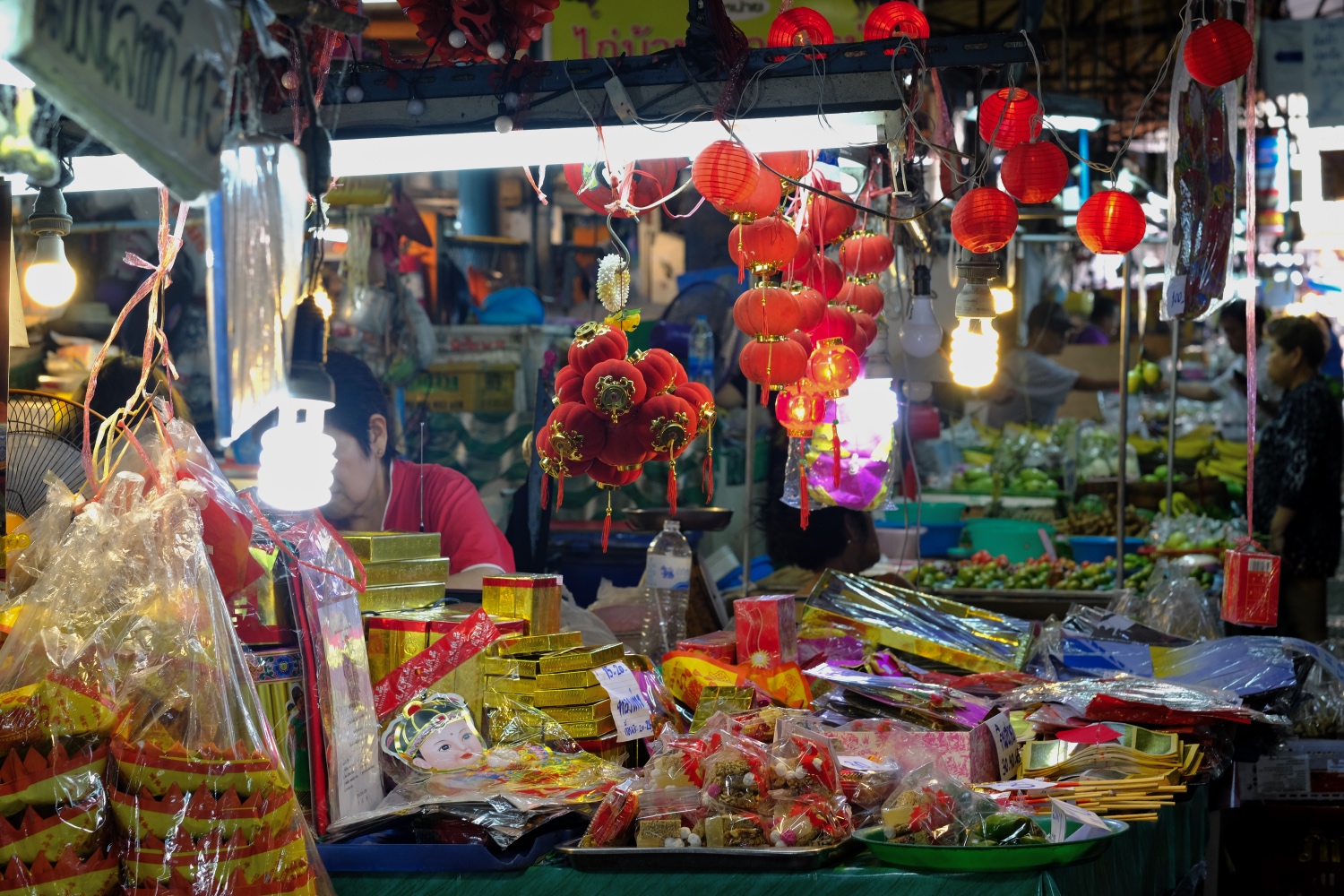 With Chinese New Year just a week away, the Pakkret market has taken on a festive feel.
With Chinese New Year just a week away, the Pakkret market has taken on a festive feel.
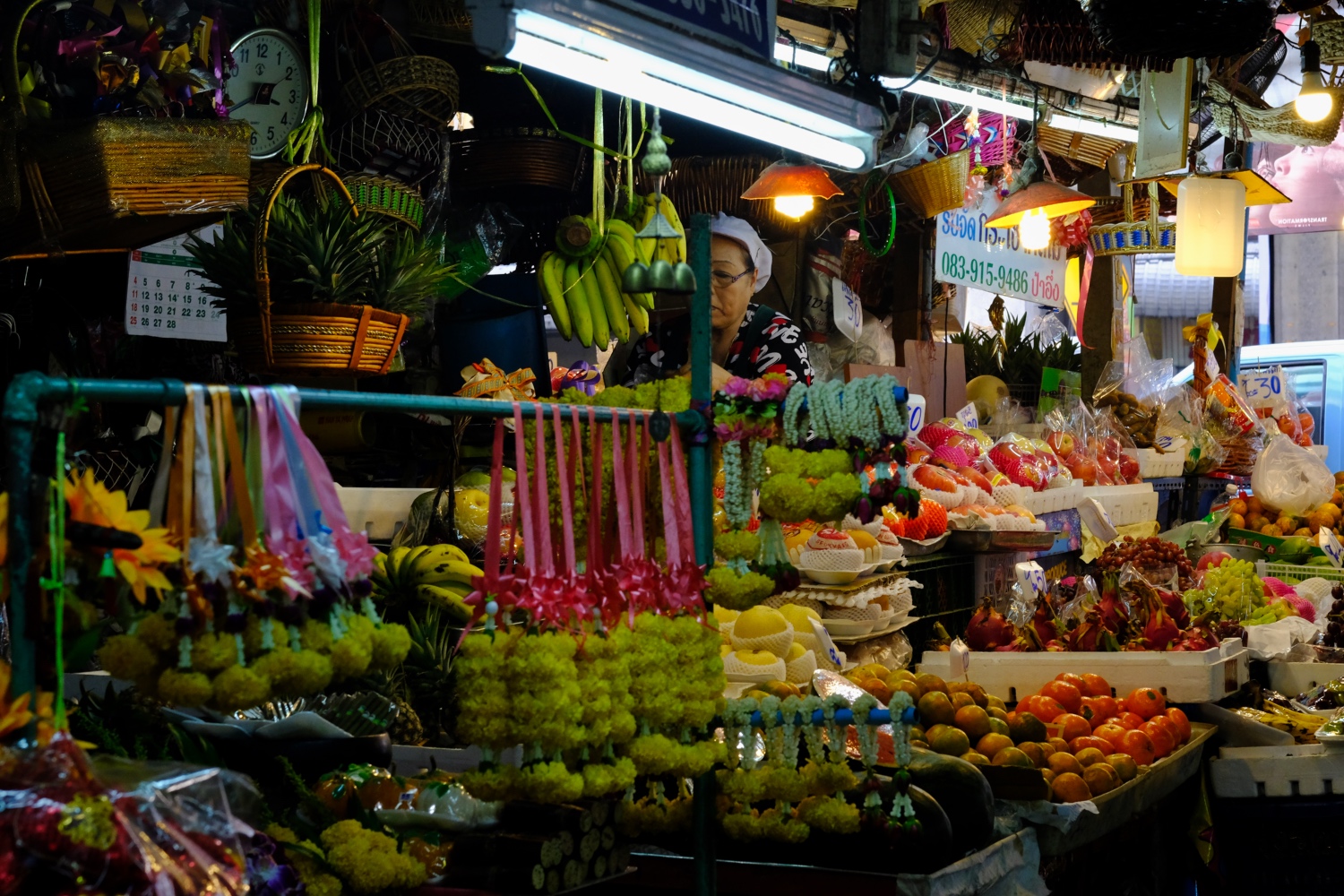 The Pakkret market is a very visually stimulating place . . . and an olfactory stimulating place. Wonderful smells.
The Pakkret market is a very visually stimulating place . . . and an olfactory stimulating place. Wonderful smells.
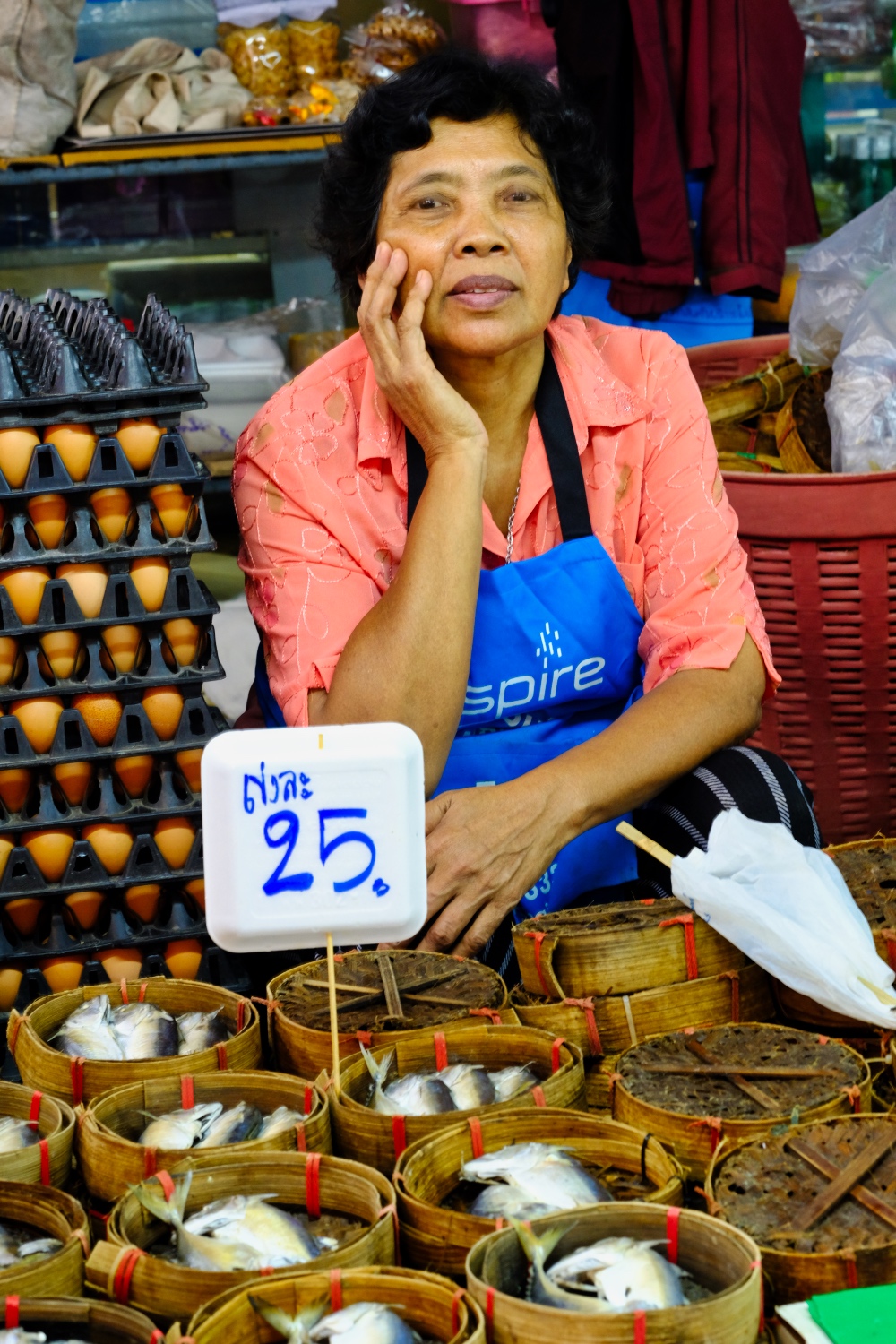 A Pakkret market fish hawker.
A Pakkret market fish hawker.
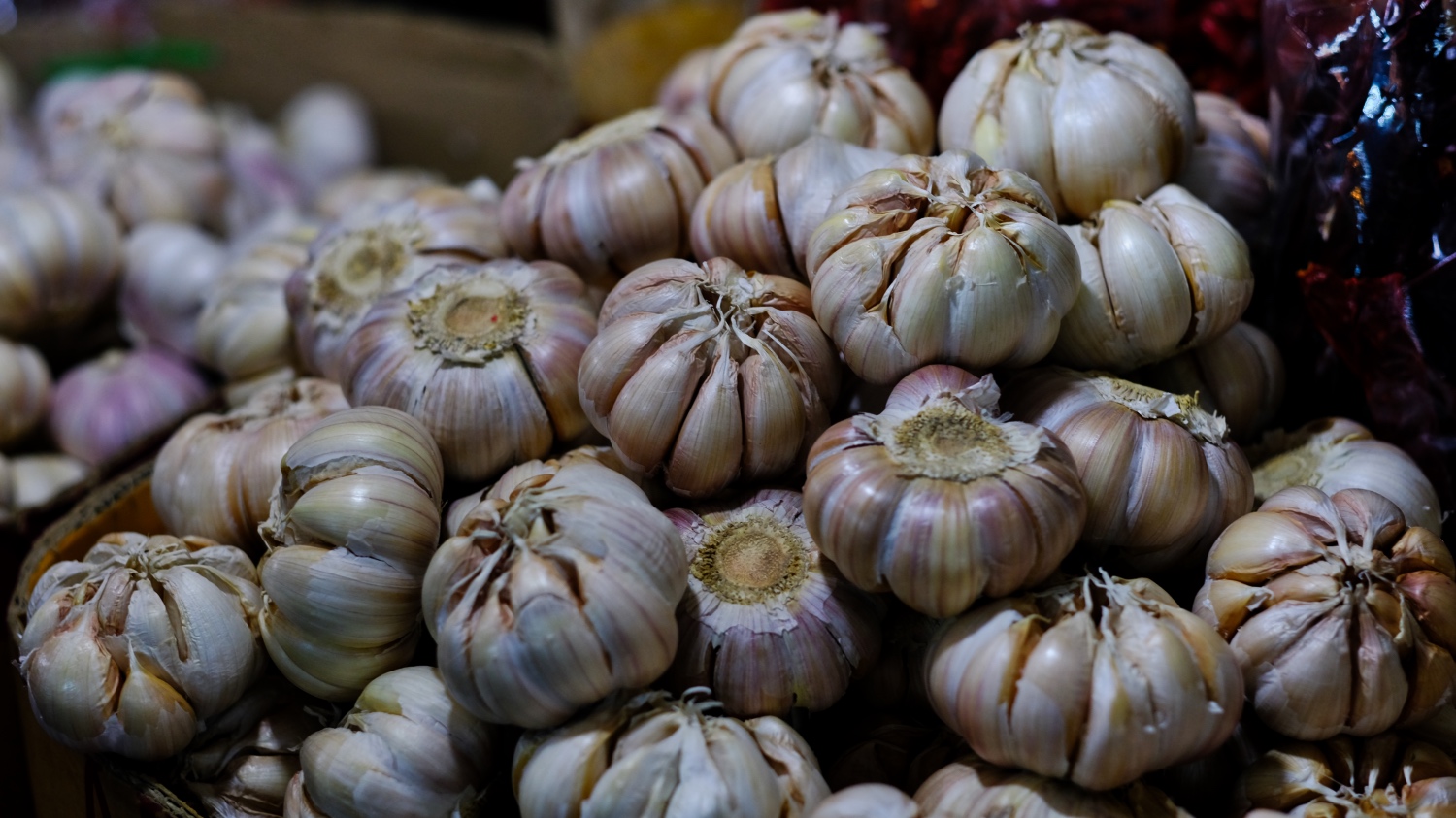 So many still life studies everywhere I looked.
So many still life studies everywhere I looked.
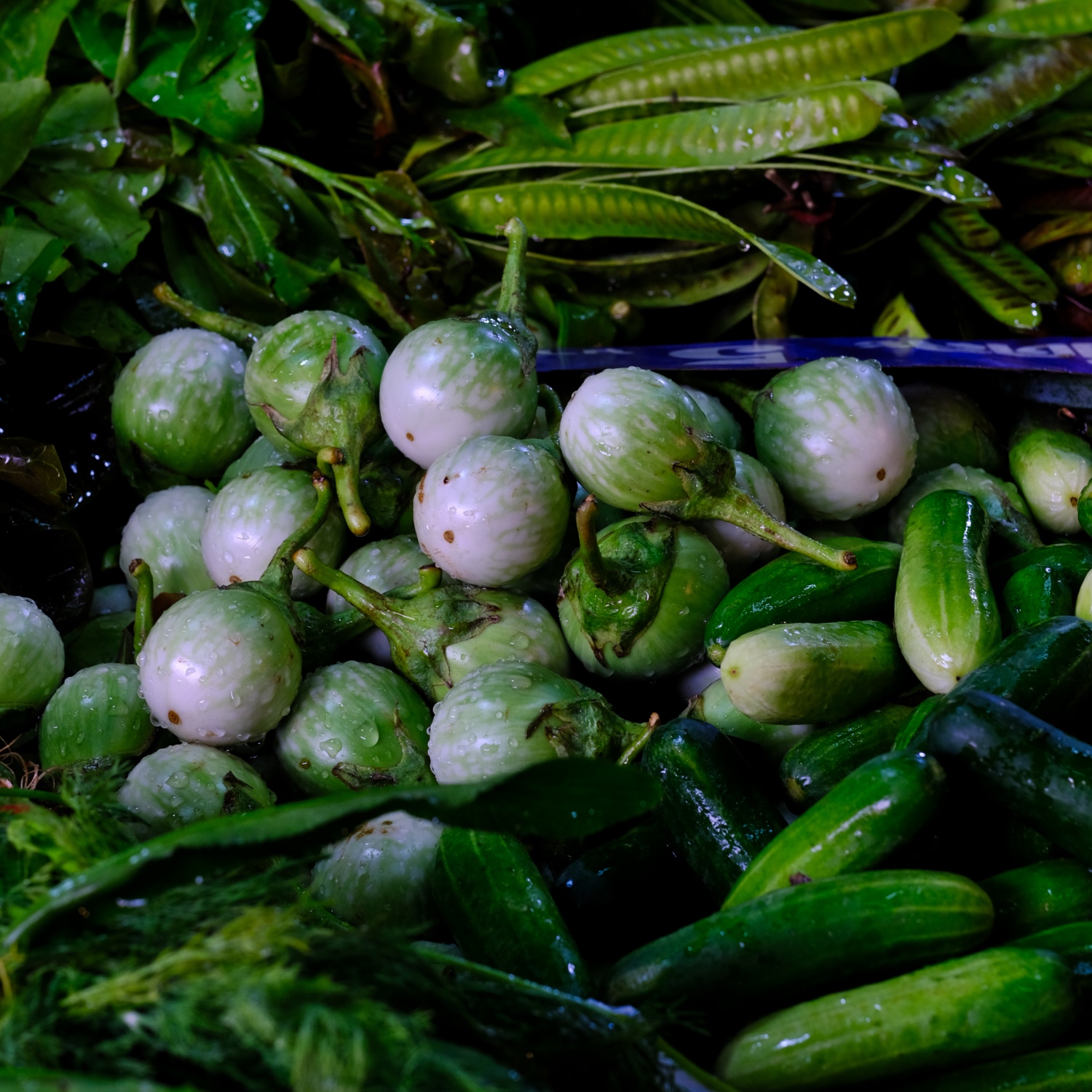 All that great tasting Thai street food has its origins in these 'wet markets.'
All that great tasting Thai street food has its origins in these 'wet markets.'
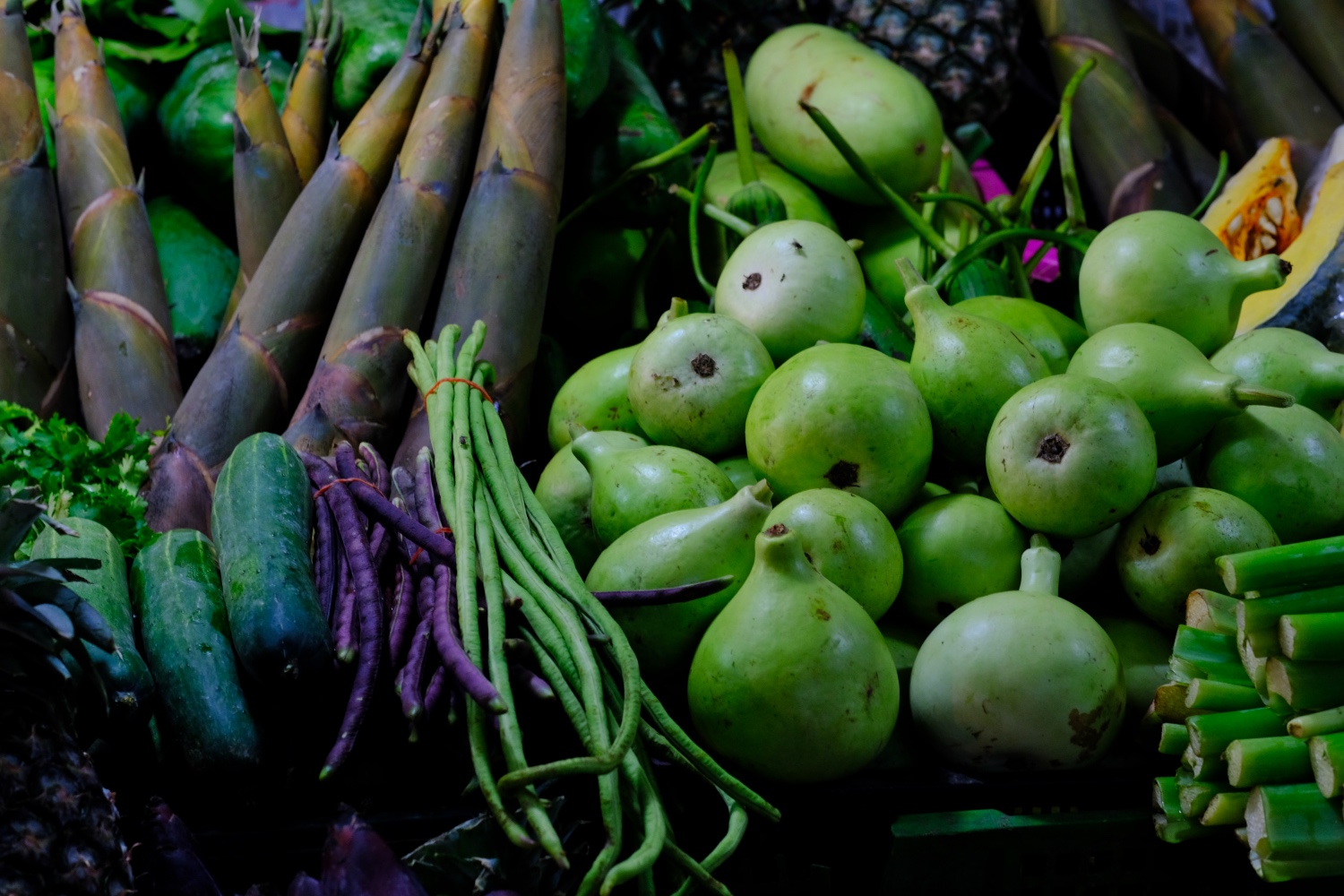 I am not even sure know the names of all of these interesting vegetables. I can't remember ever eating purple green beans . . .
I am not even sure know the names of all of these interesting vegetables. I can't remember ever eating purple green beans . . .
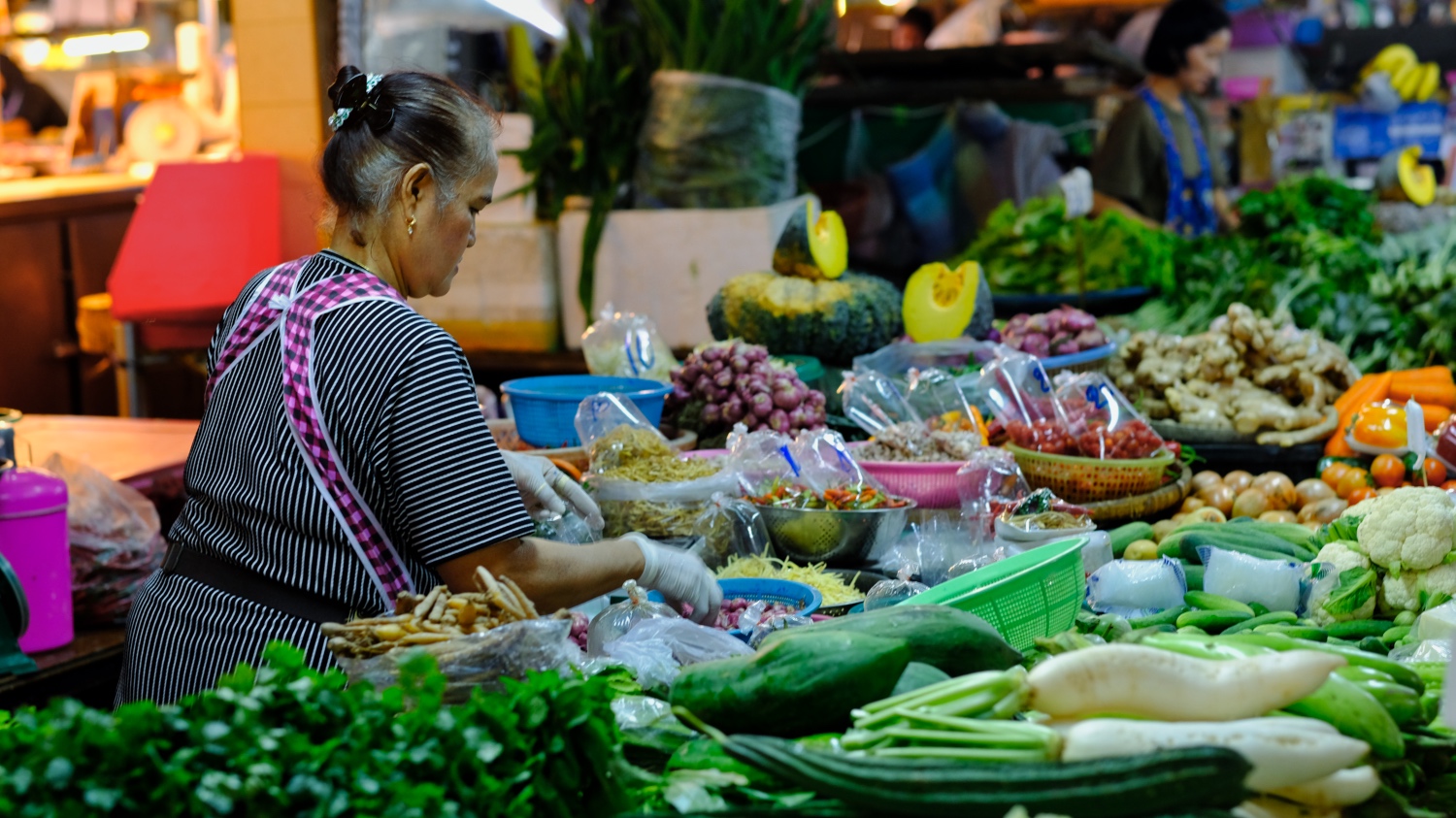 It was a late Saturday afternoon, so it was not a crowded as usual.
It was a late Saturday afternoon, so it was not a crowded as usual.
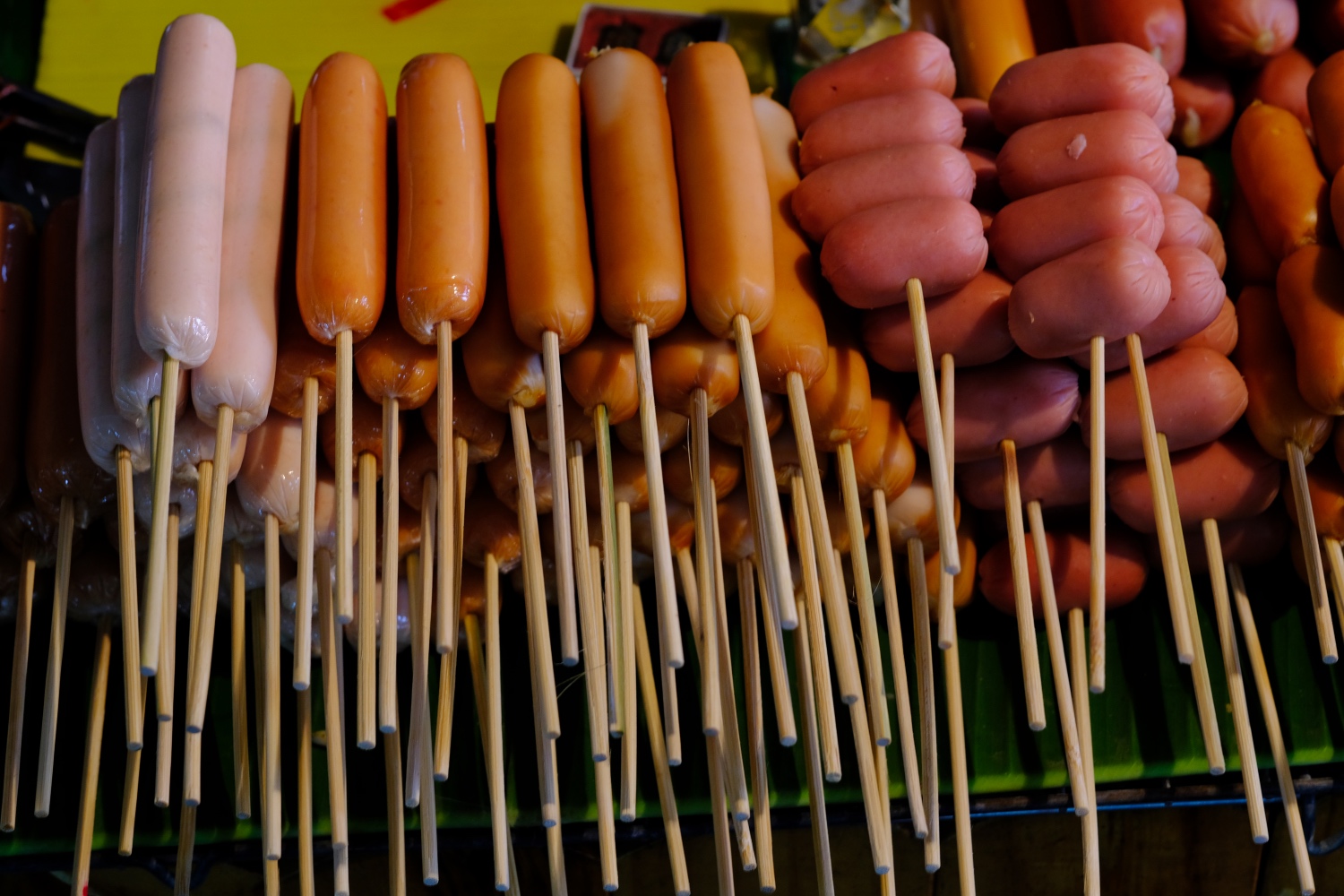 What would a Thai market be without the ubiquitous stuff-on-a-stick!
What would a Thai market be without the ubiquitous stuff-on-a-stick!
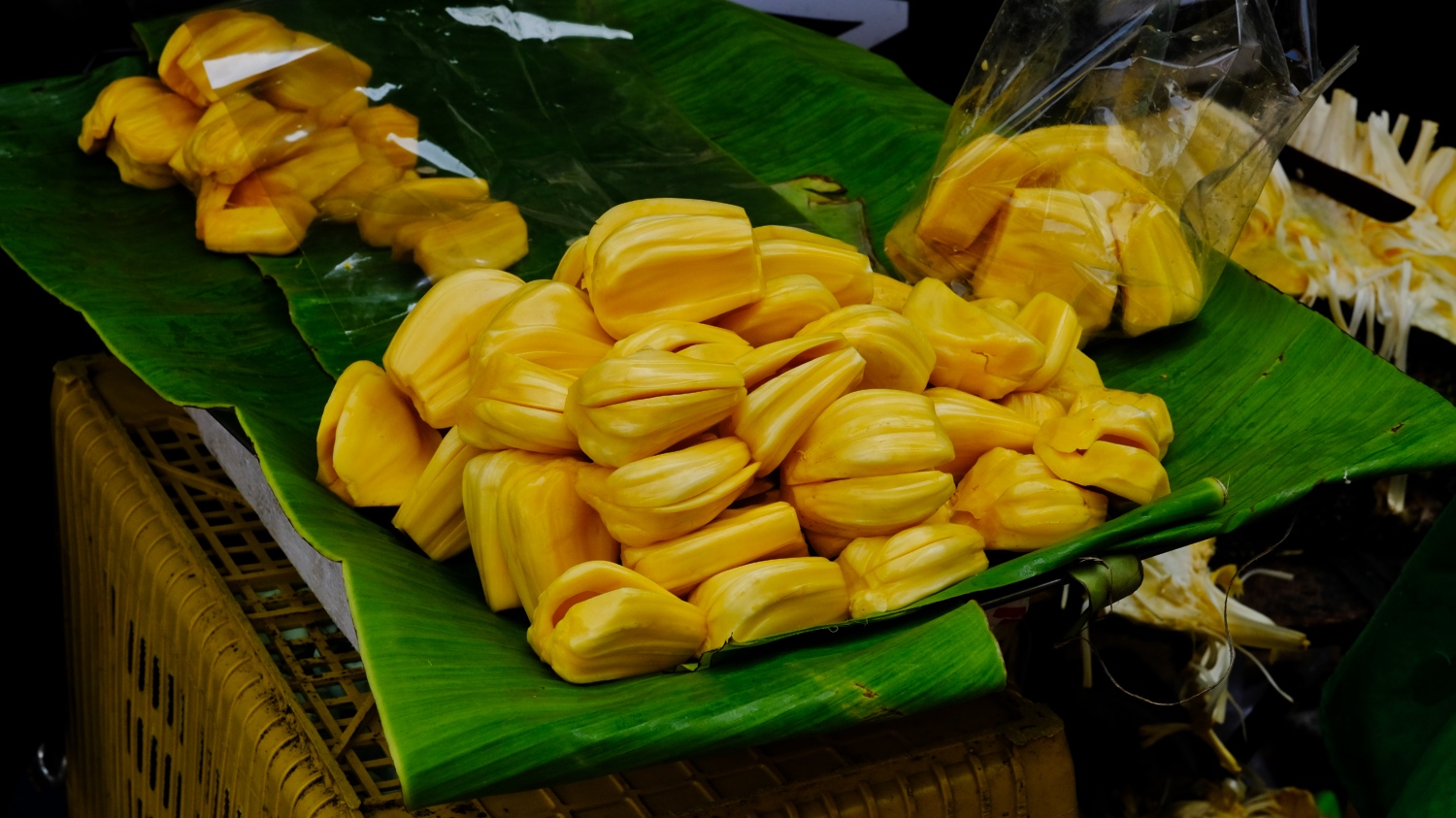 Delicious Jackfruit.
Delicious Jackfruit.
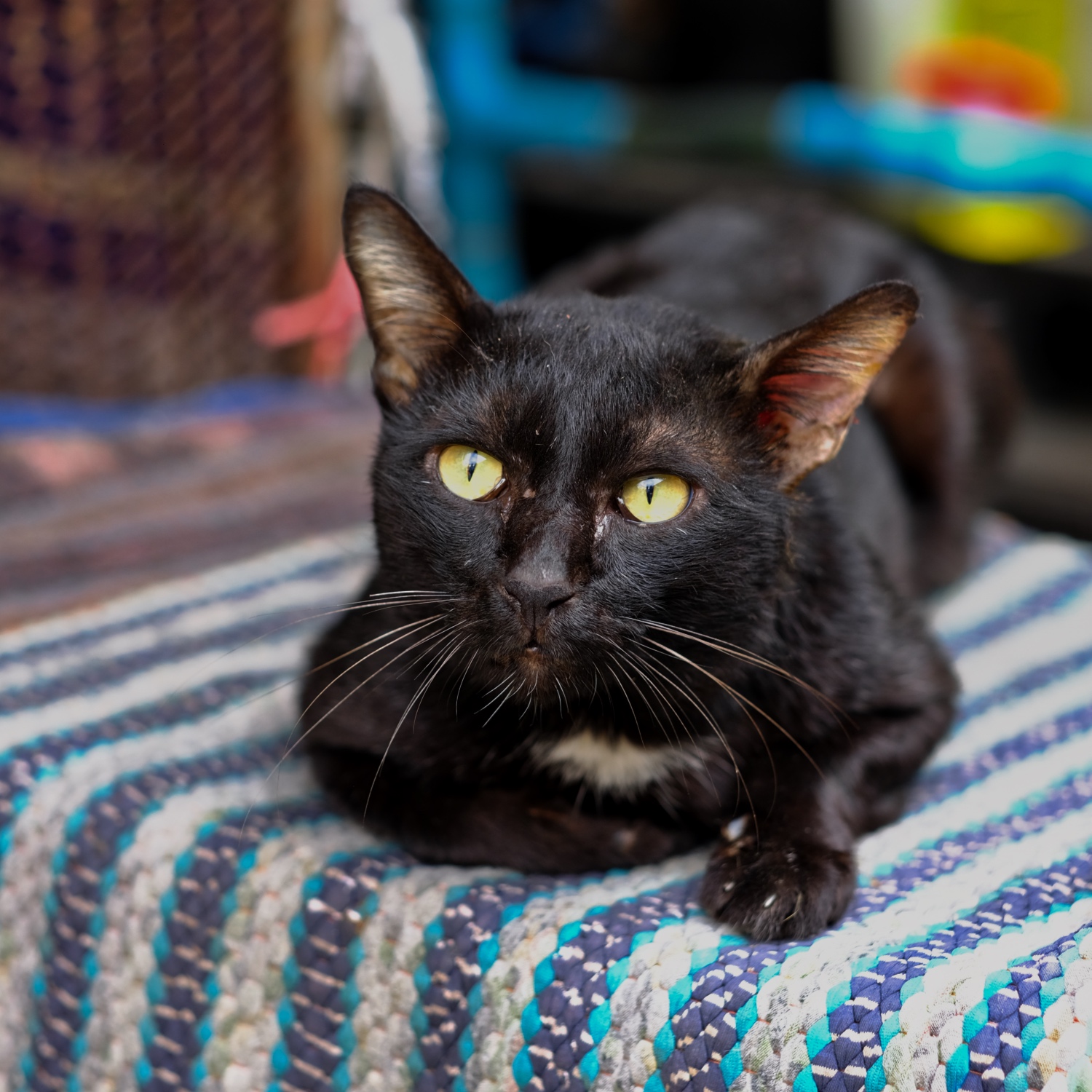 I don't normally take cat photos, but this forlorn market mouser with a recently chewed ear caught my eye.
I don't normally take cat photos, but this forlorn market mouser with a recently chewed ear caught my eye.
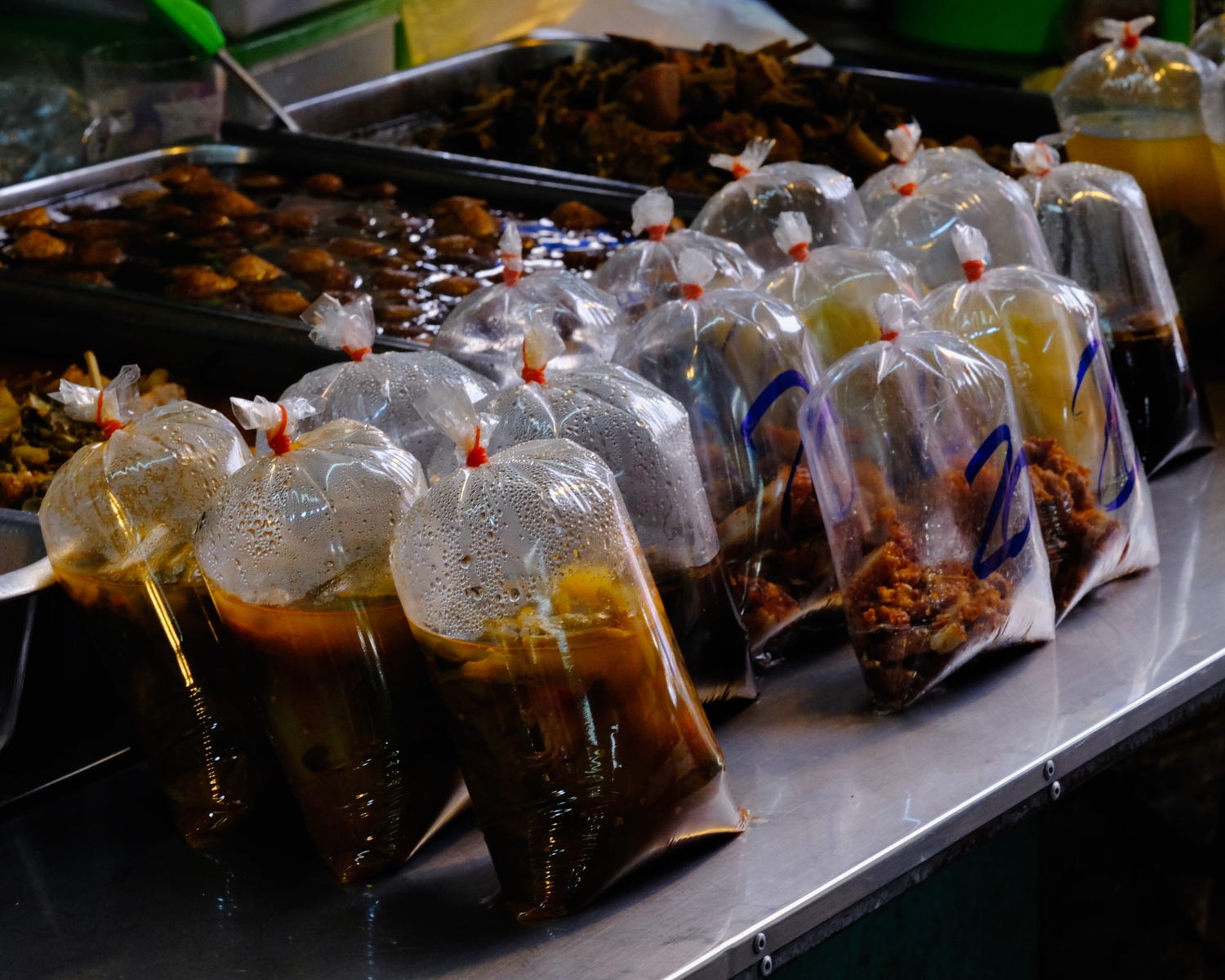 Food is very inexpensive in Thailand. Most markets have stalls selling these 'meals in a bag' for commuters. Just pick one of these up on the way to or from work.
Food is very inexpensive in Thailand. Most markets have stalls selling these 'meals in a bag' for commuters. Just pick one of these up on the way to or from work.
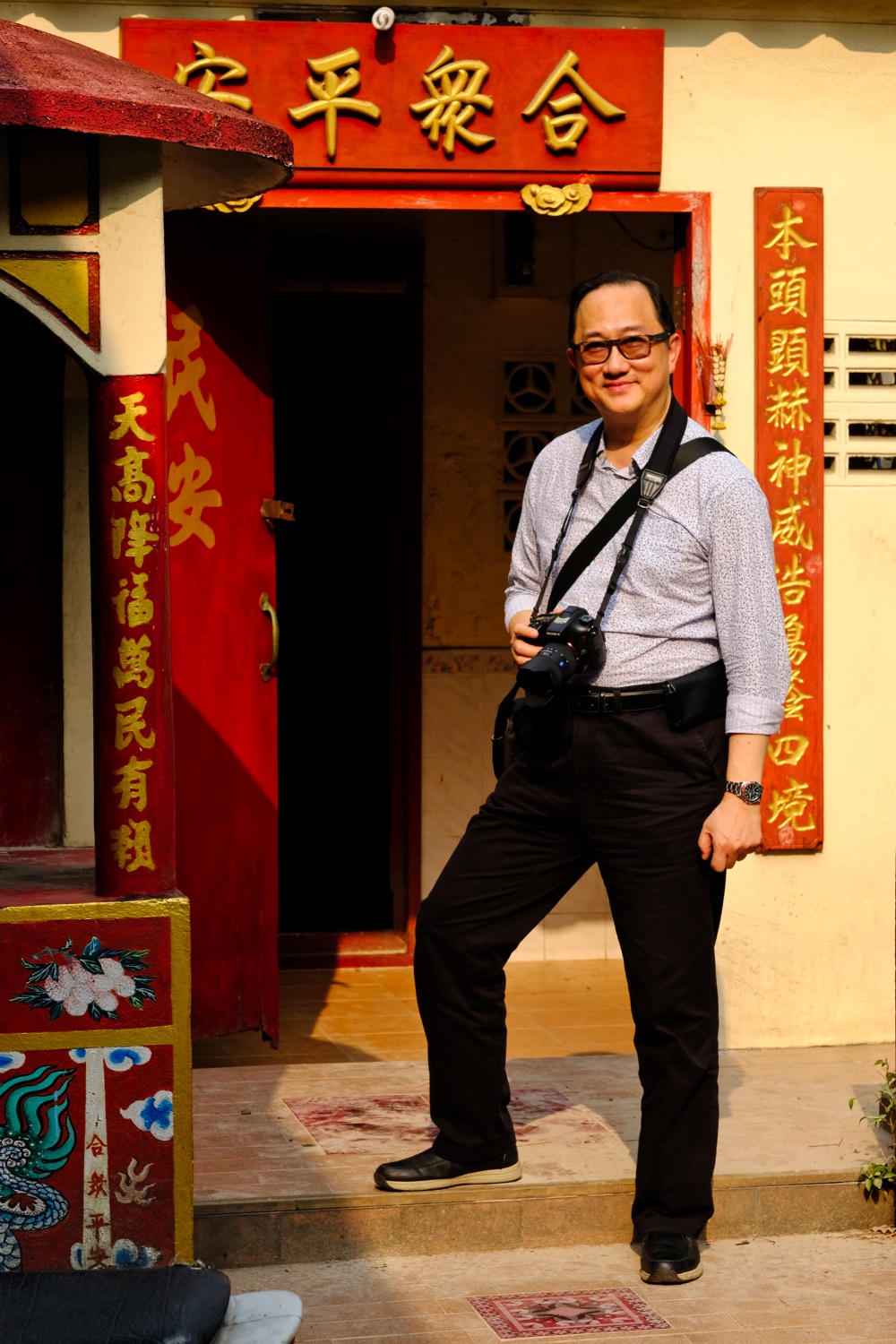 My brother-in-law from Hong Kong, and fellow photo buff, was the excuse to explore the market and riverside attractions. We found the little Chinese temple sandwiched in an alley.
My brother-in-law from Hong Kong, and fellow photo buff, was the excuse to explore the market and riverside attractions. We found the little Chinese temple sandwiched in an alley.
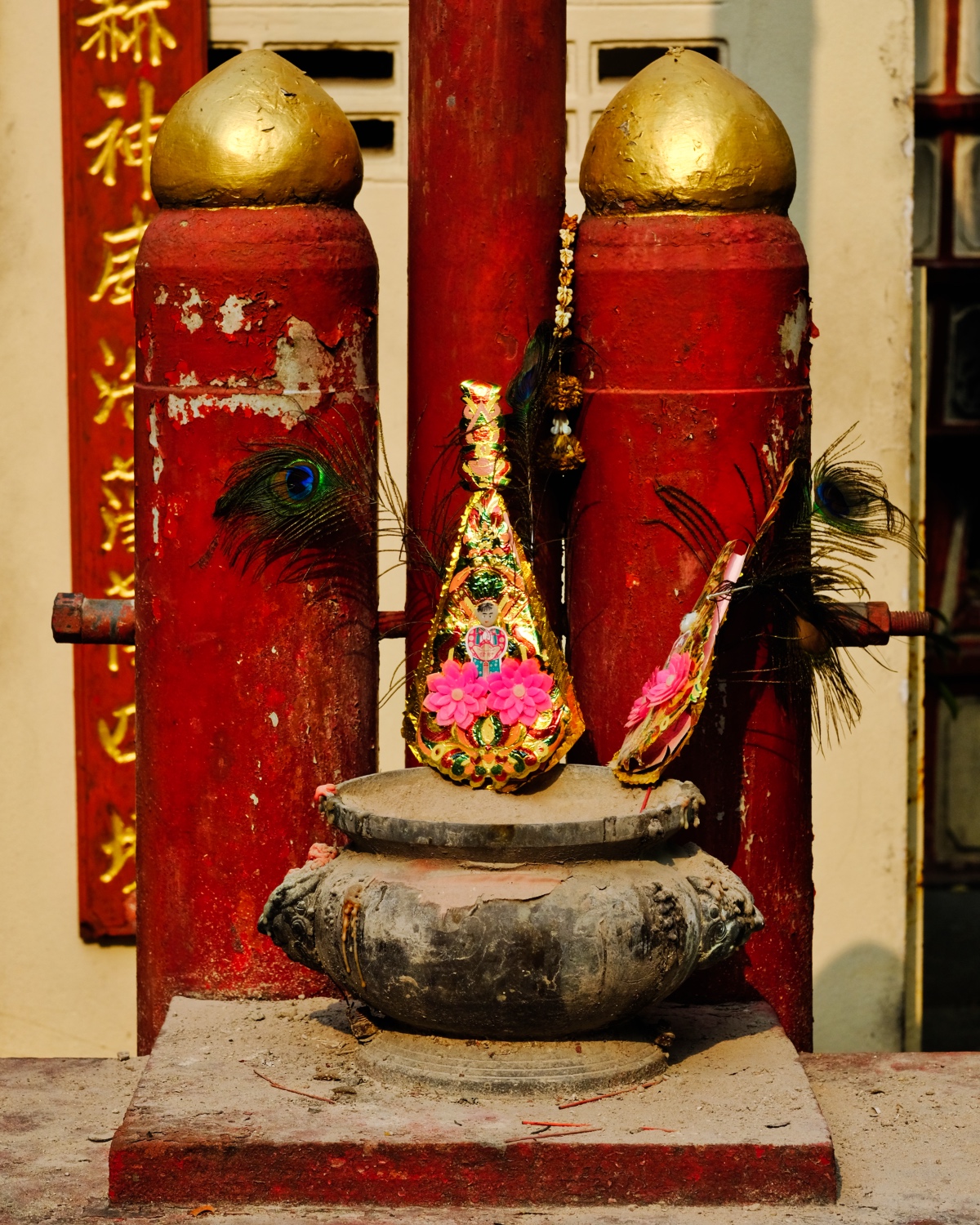 Chinese Temple detail . . .
Chinese Temple detail . . .
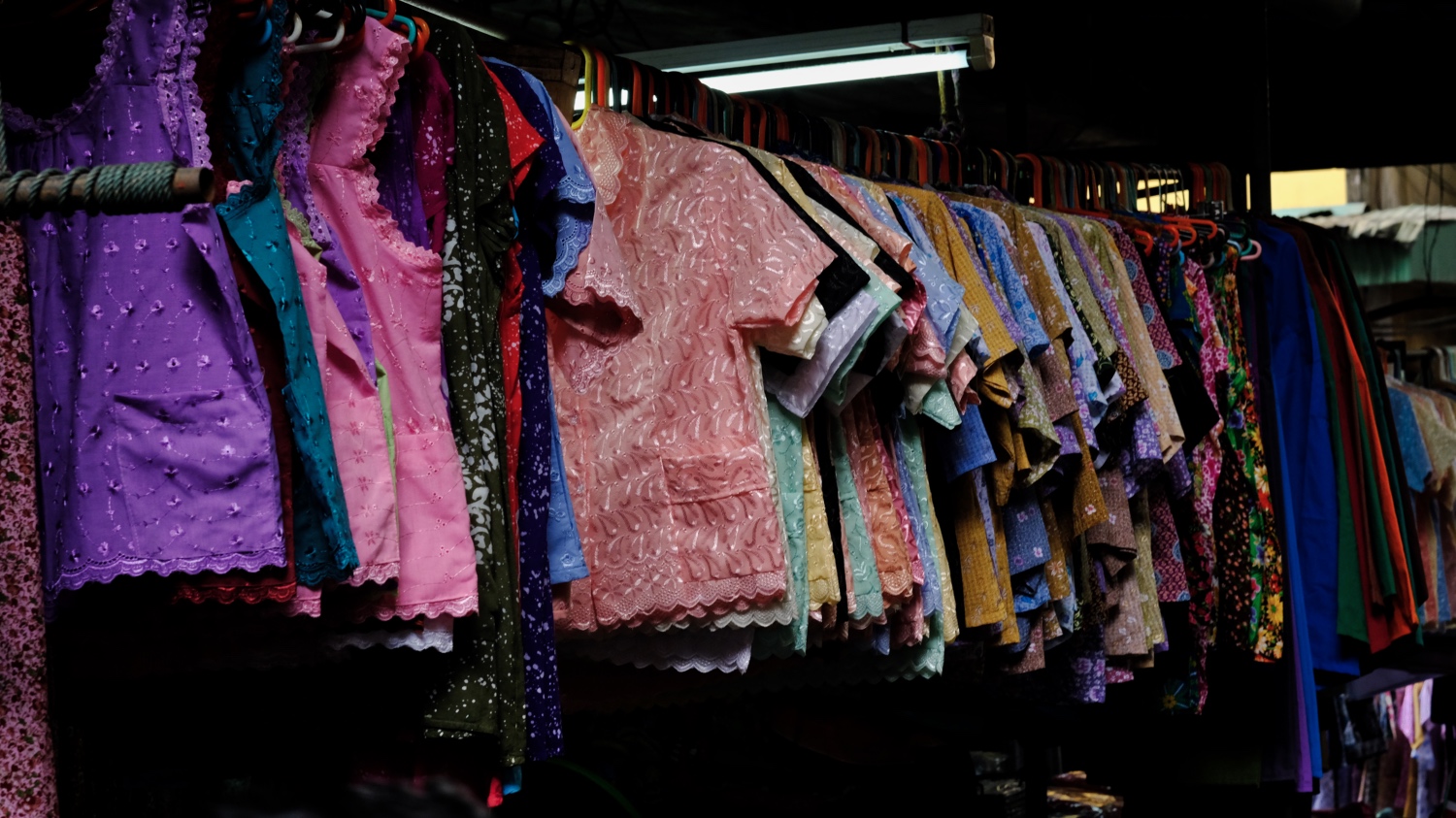 In addition to food, the Pakkret market also has sections for [old lady] clothes.
In addition to food, the Pakkret market also has sections for [old lady] clothes.
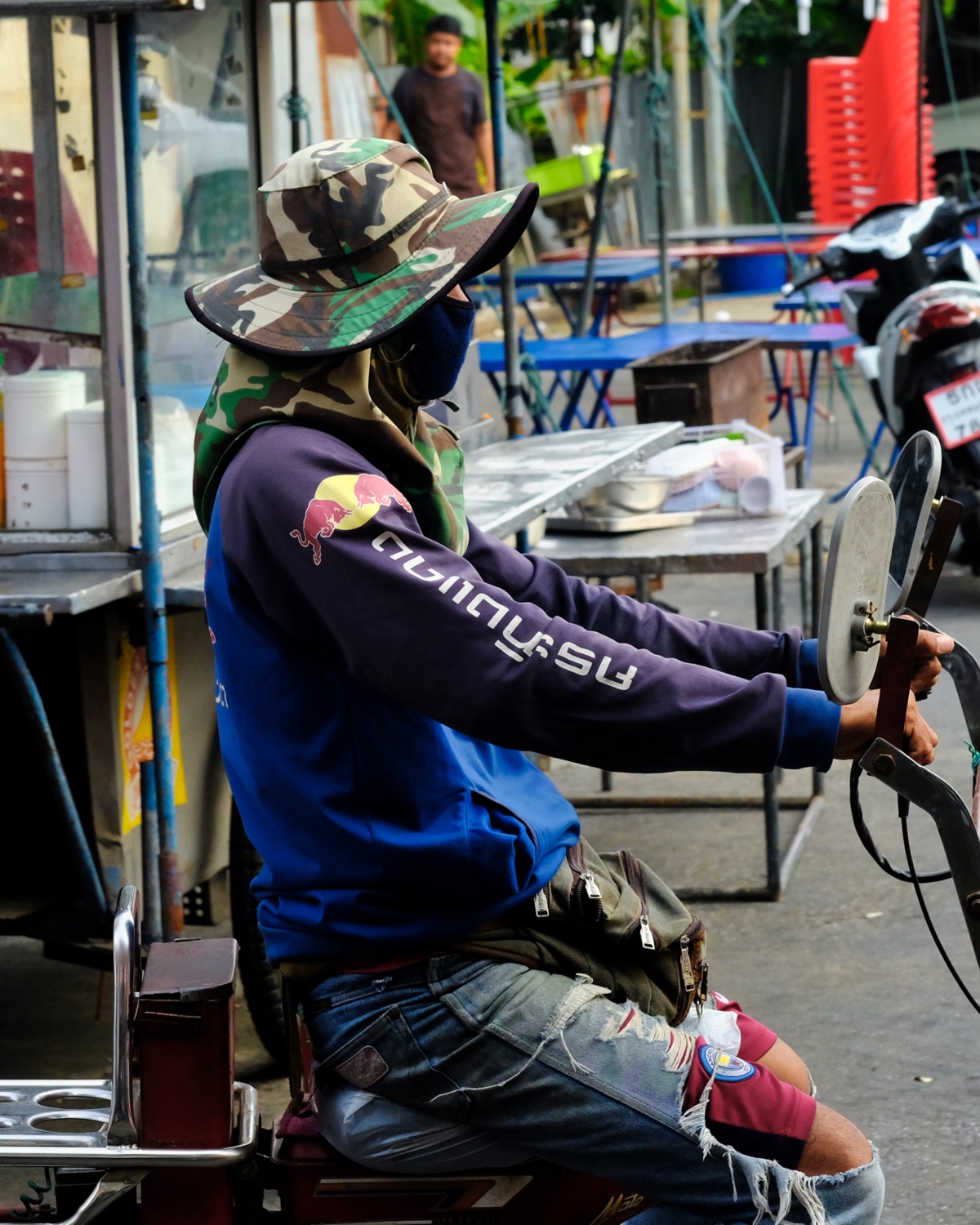 After shopping for your restaurant or market stall, you can hire a motorcycle taxi truck to get your stuff where you want it to go.
After shopping for your restaurant or market stall, you can hire a motorcycle taxi truck to get your stuff where you want it to go.
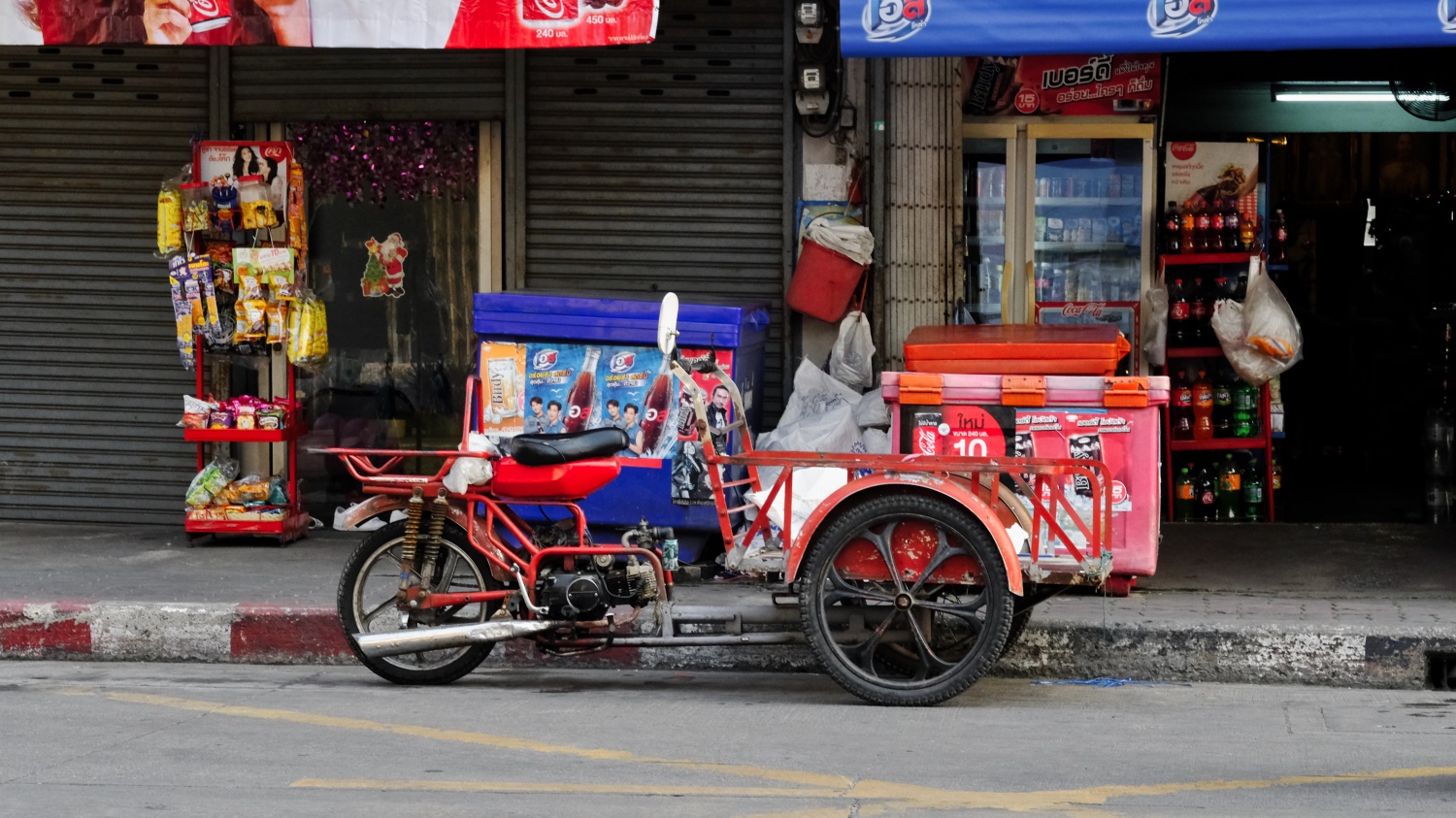 Motorized carts for moving produce and products around the market district.
Motorized carts for moving produce and products around the market district.
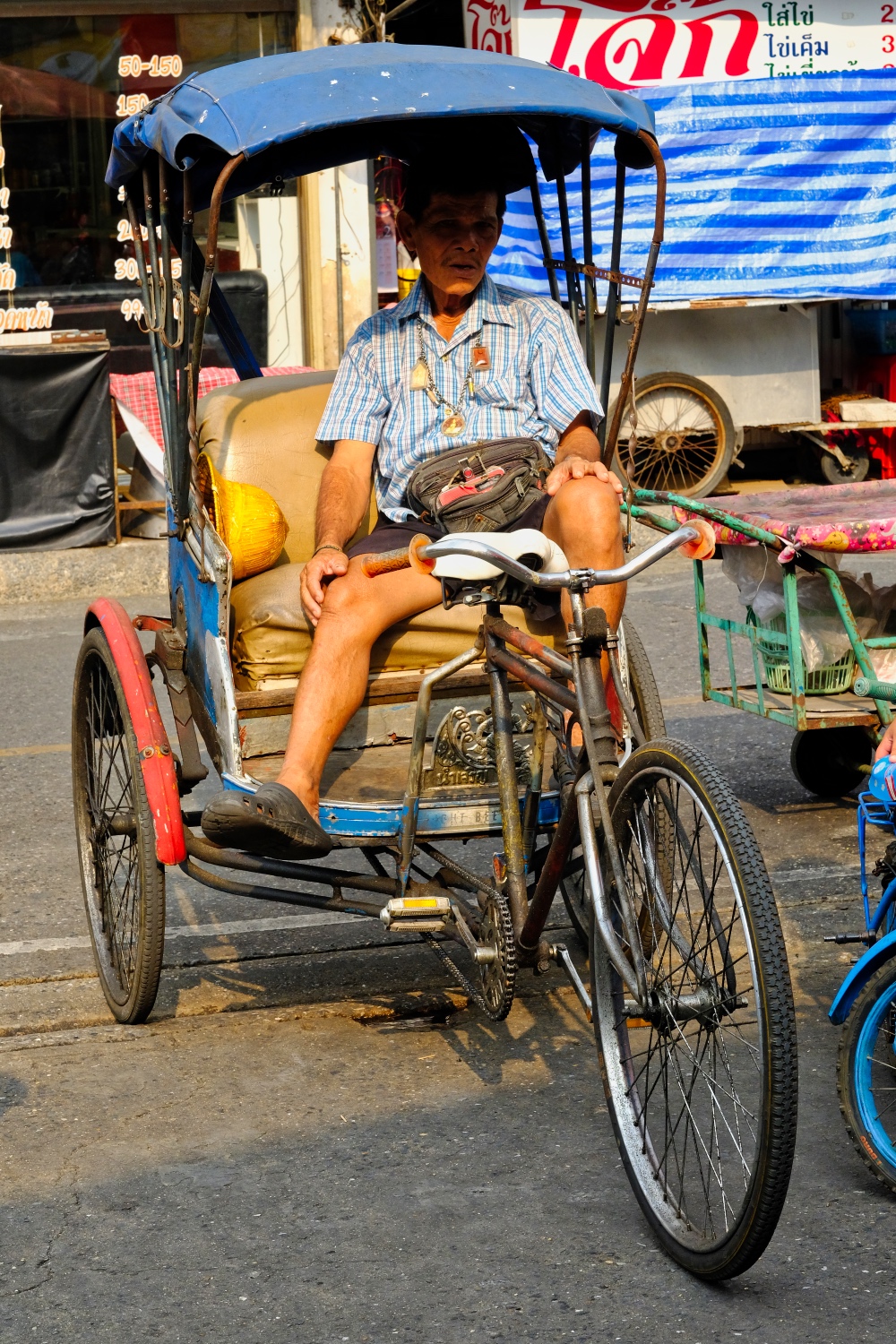 A traditional, and less expensive, means of transportation is the samlor.
A traditional, and less expensive, means of transportation is the samlor.
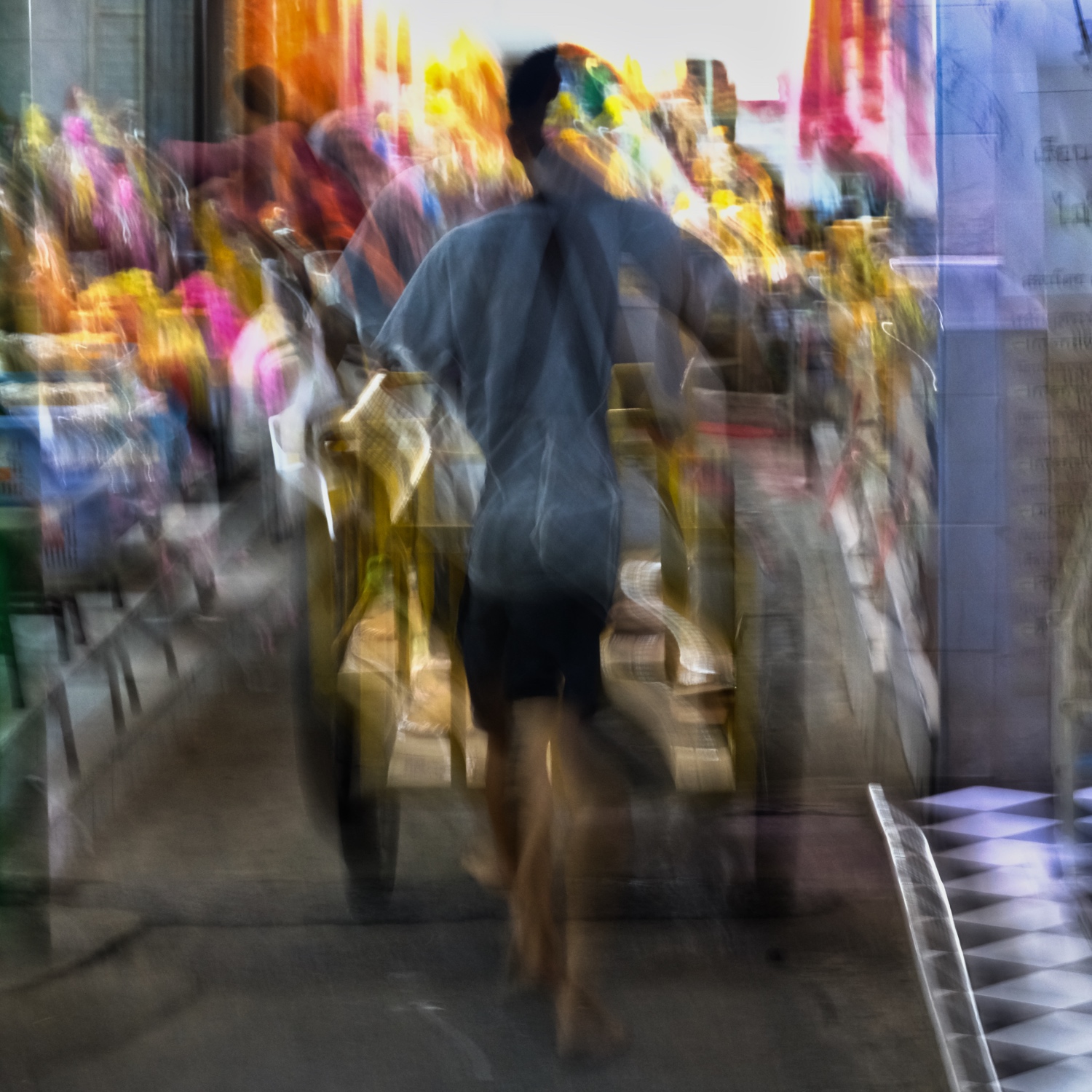 The Thai markets are places of constant action and movement.
The Thai markets are places of constant action and movement.
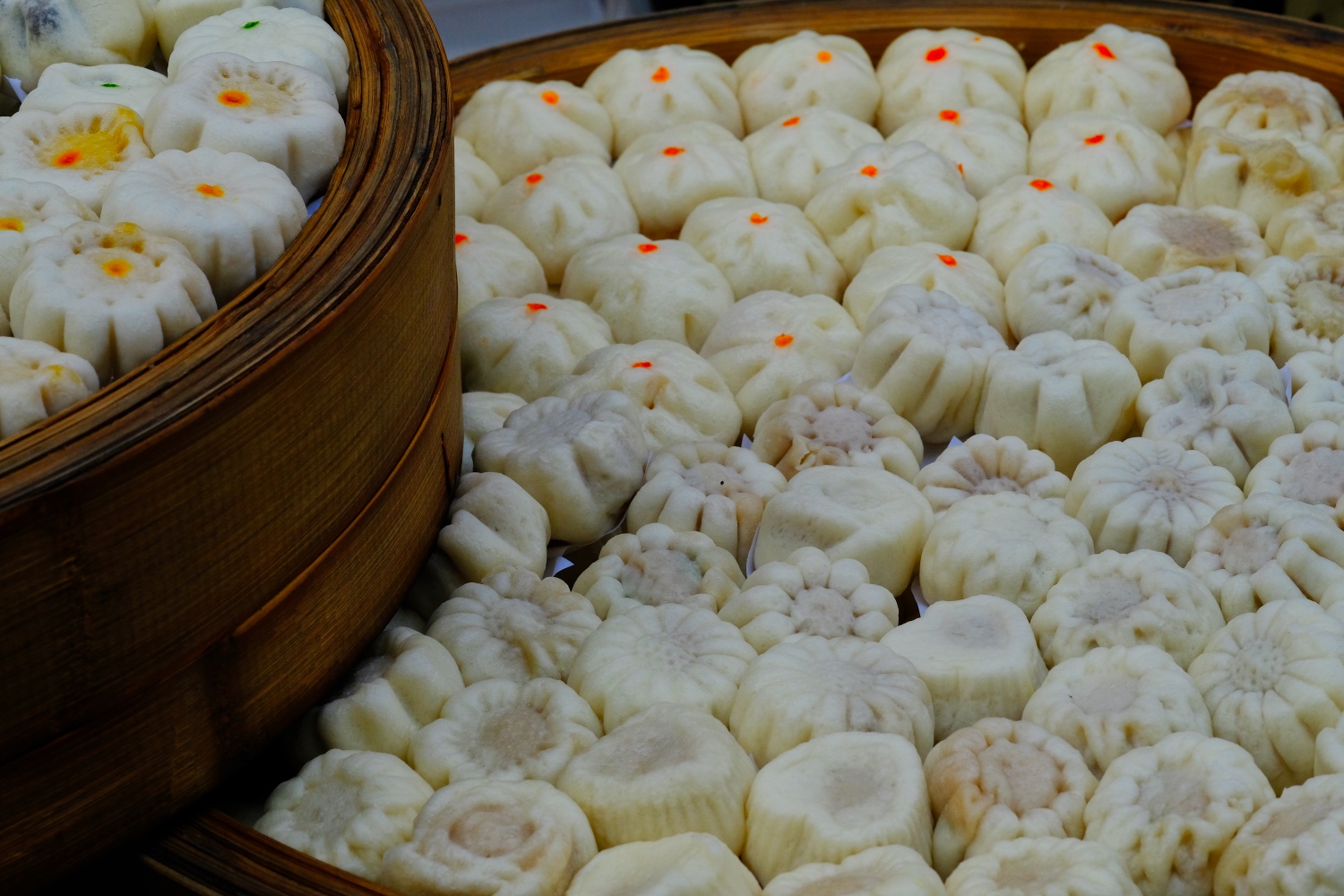 Outside the market, on the street, are even more edibles . . . steamed dim sum.
Outside the market, on the street, are even more edibles . . . steamed dim sum.
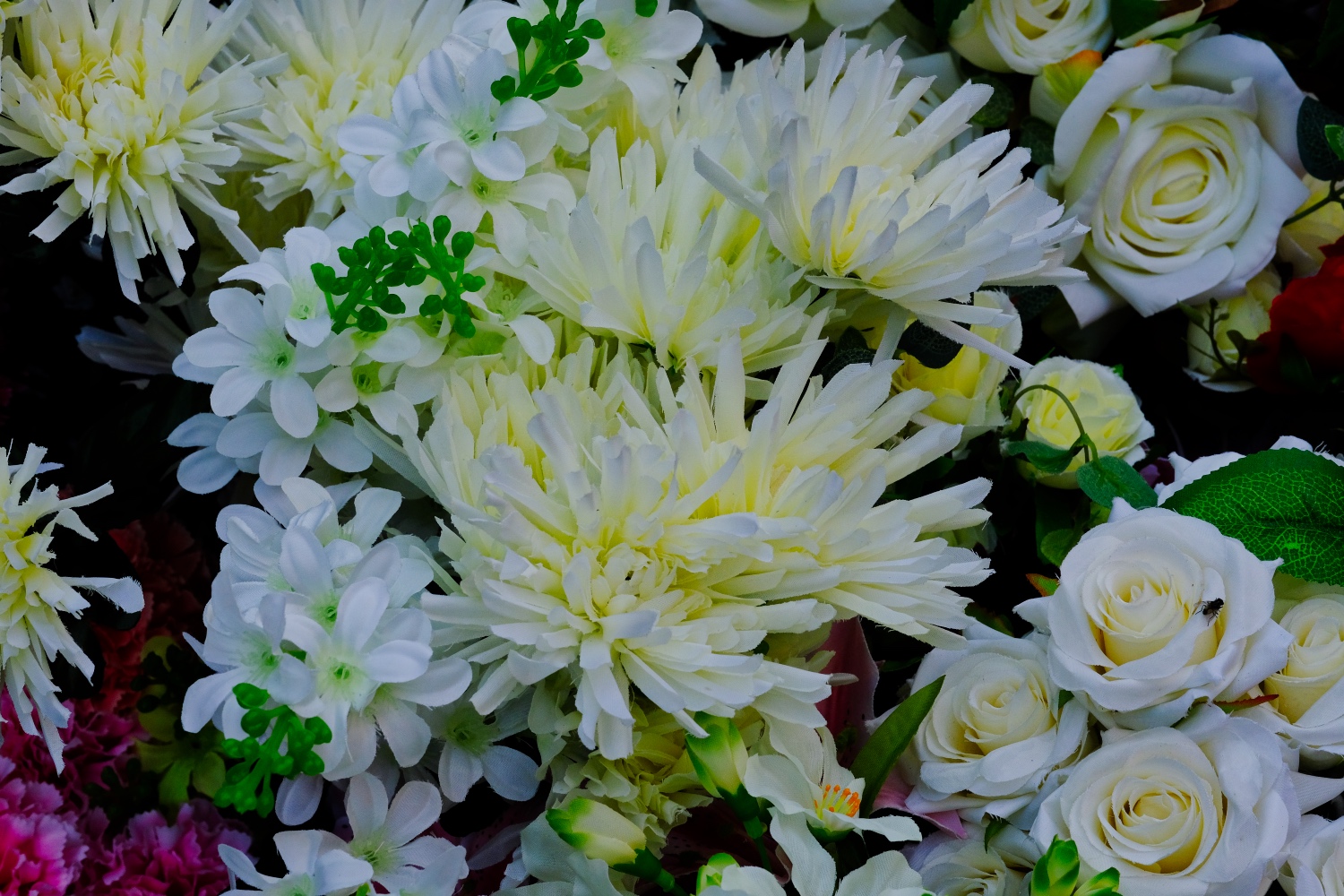 I am always amazed at the artistry of Thai artificial flowers!
I am always amazed at the artistry of Thai artificial flowers!
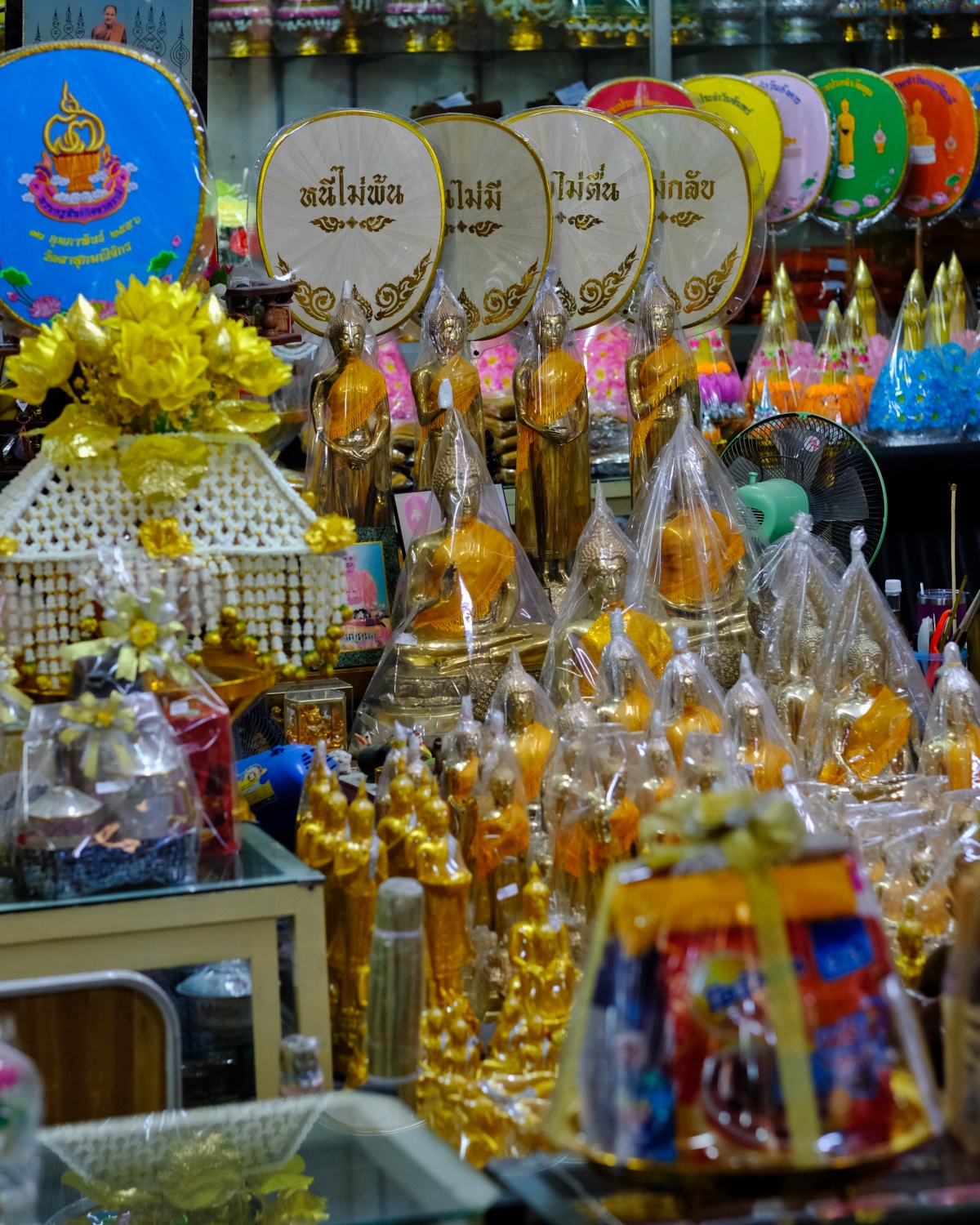 We wandered around in some alleyways along the river and discovered a Buddhist Temple Supply Shop.
We wandered around in some alleyways along the river and discovered a Buddhist Temple Supply Shop.
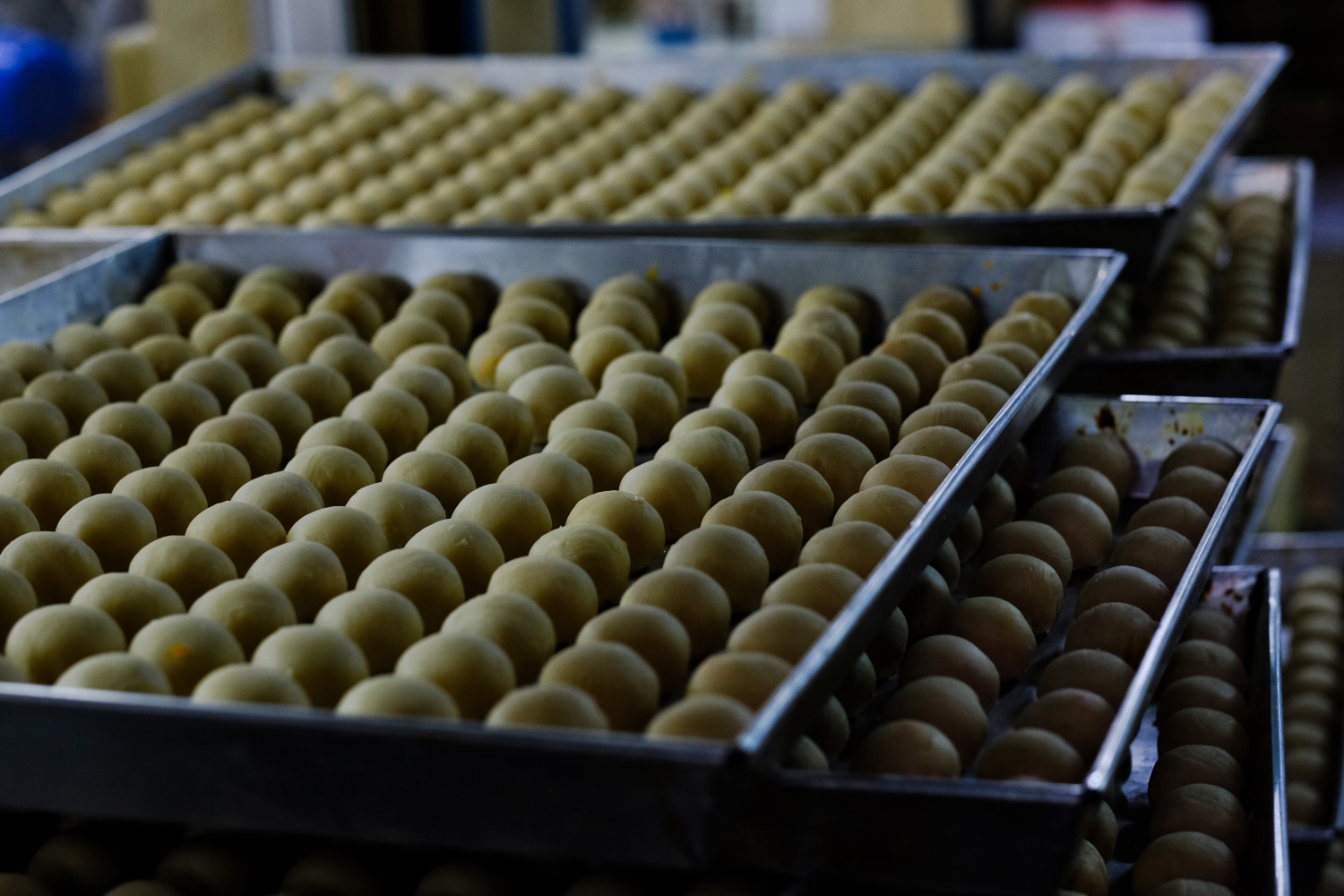 A back alley home cookie factory making traditional Chinese treats.
A back alley home cookie factory making traditional Chinese treats.
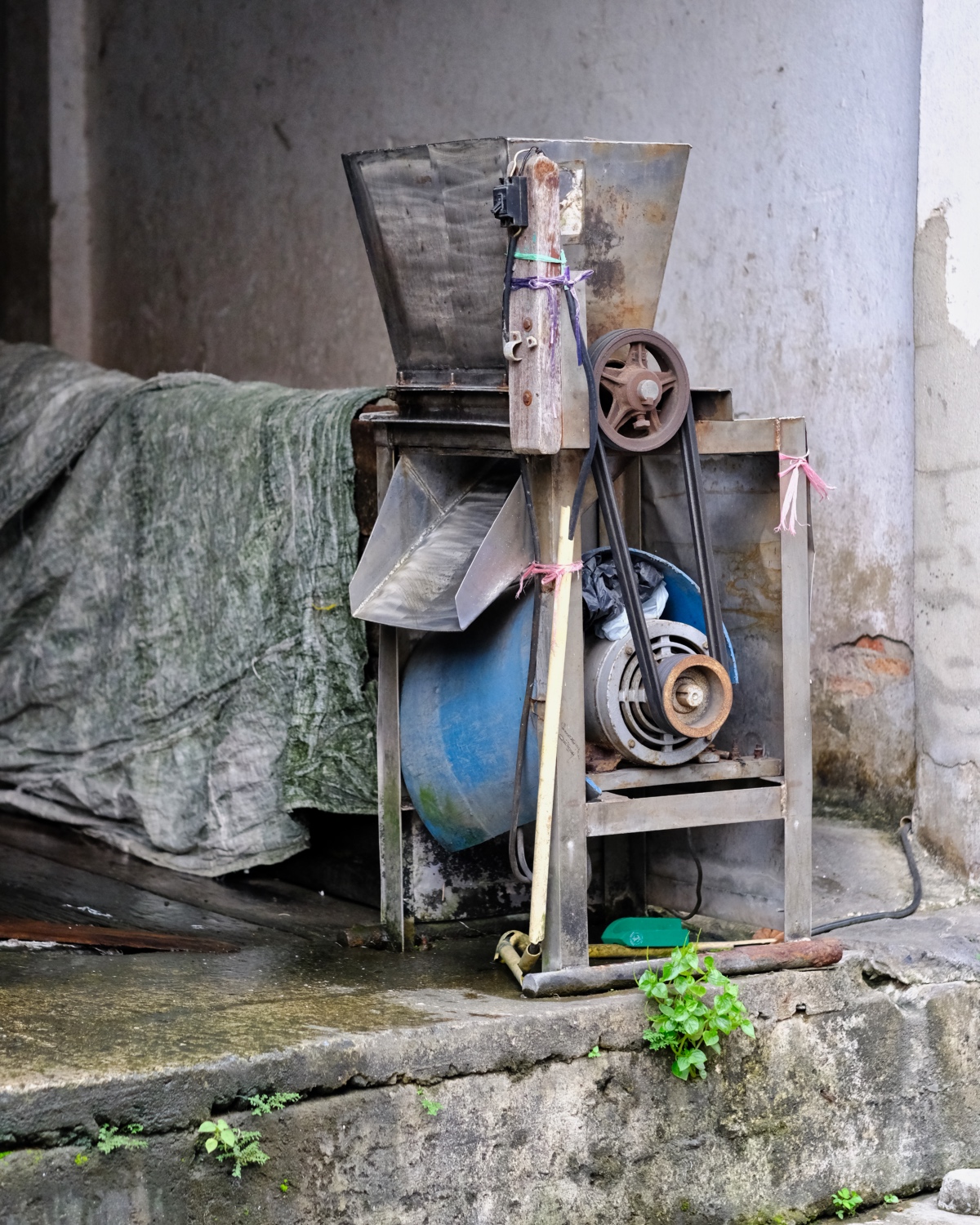 Somebody's business: crushed ice.
Somebody's business: crushed ice.
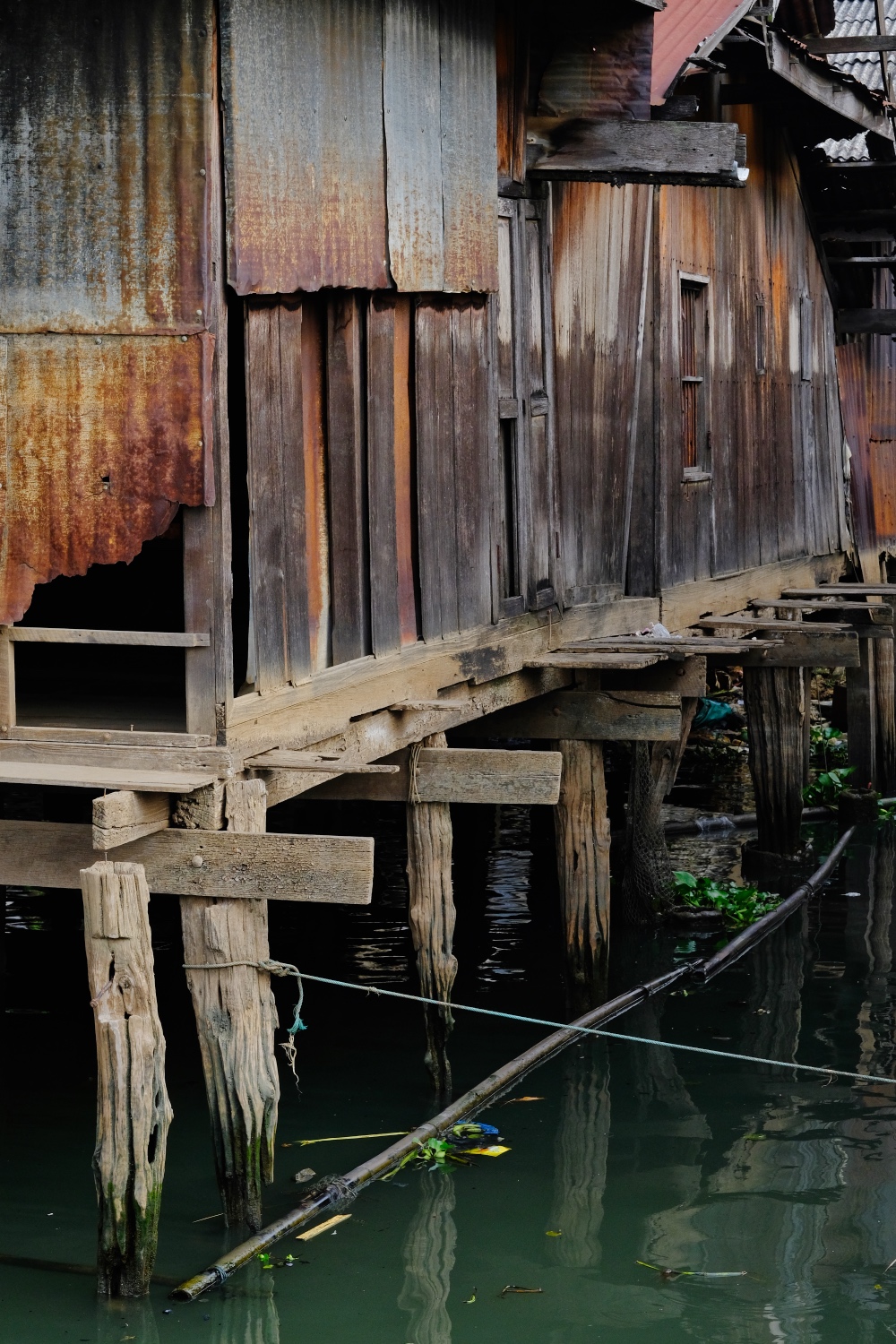 Down along the river . . .
Down along the river . . .
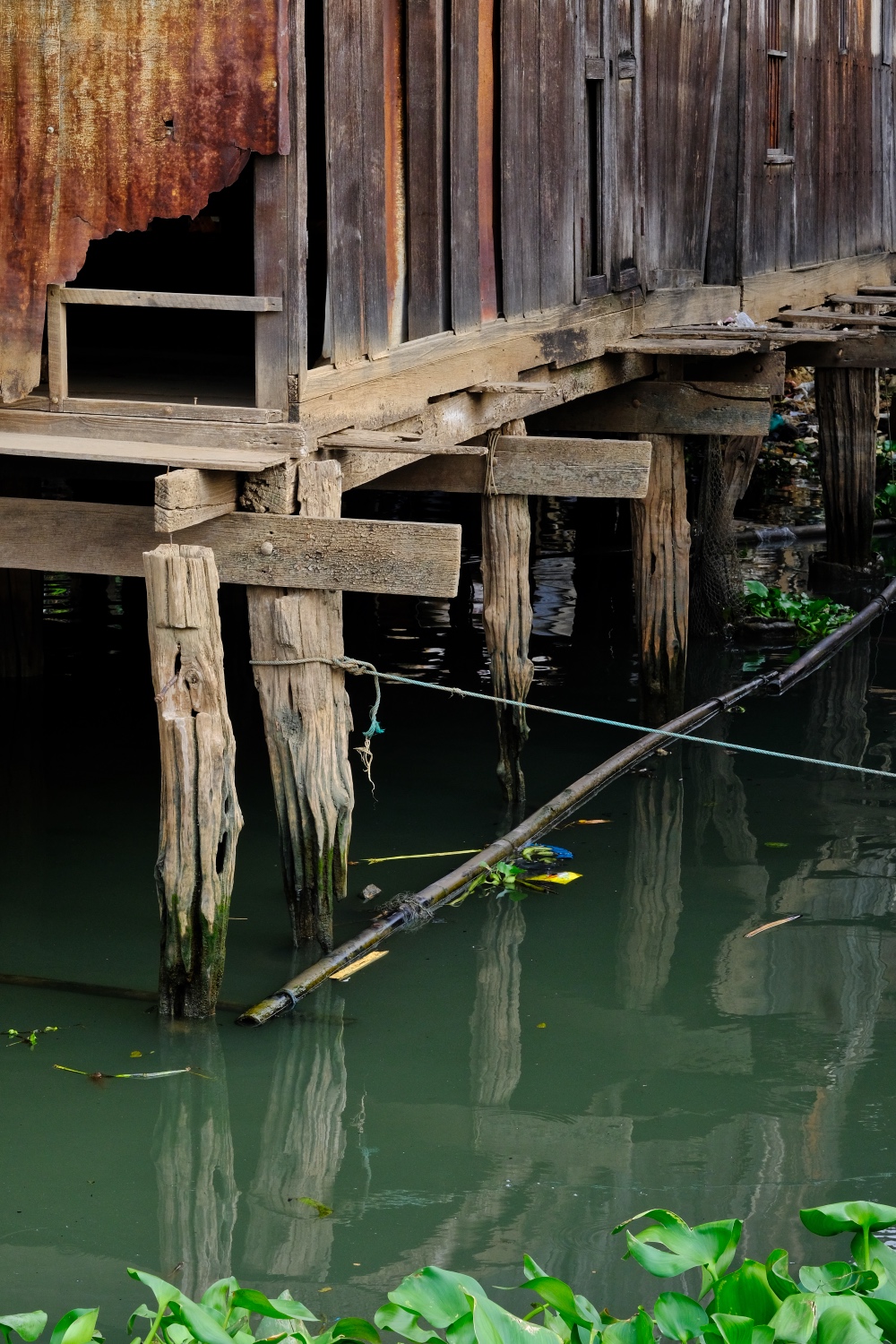 Our late afternoon walk brought us to the riverside . . . and this fantasticly weathered and decaying old wooden house . . .
Our late afternoon walk brought us to the riverside . . . and this fantasticly weathered and decaying old wooden house . . .
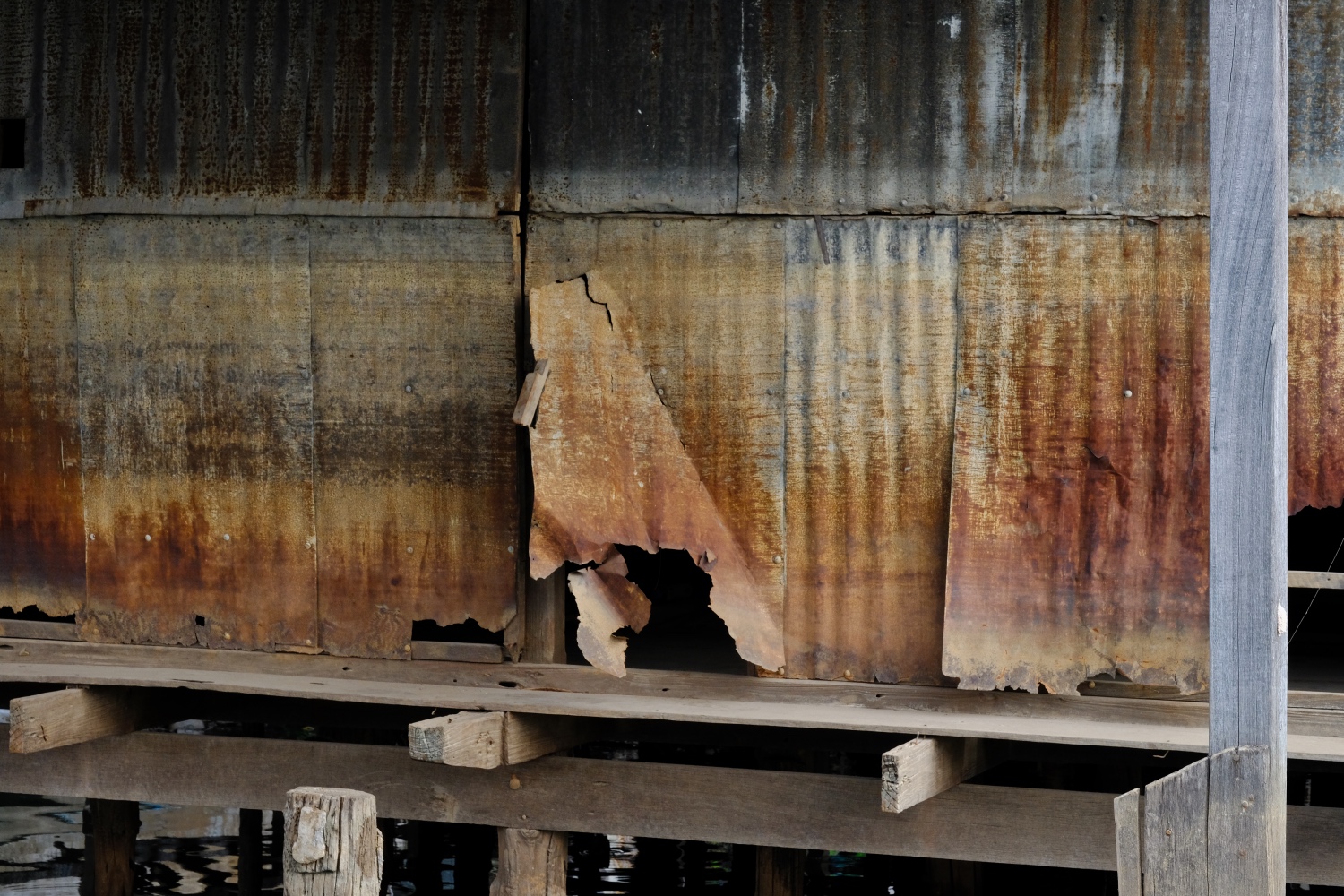 The high water lines of recent river flooding clearly shown on the old house.
The high water lines of recent river flooding clearly shown on the old house.
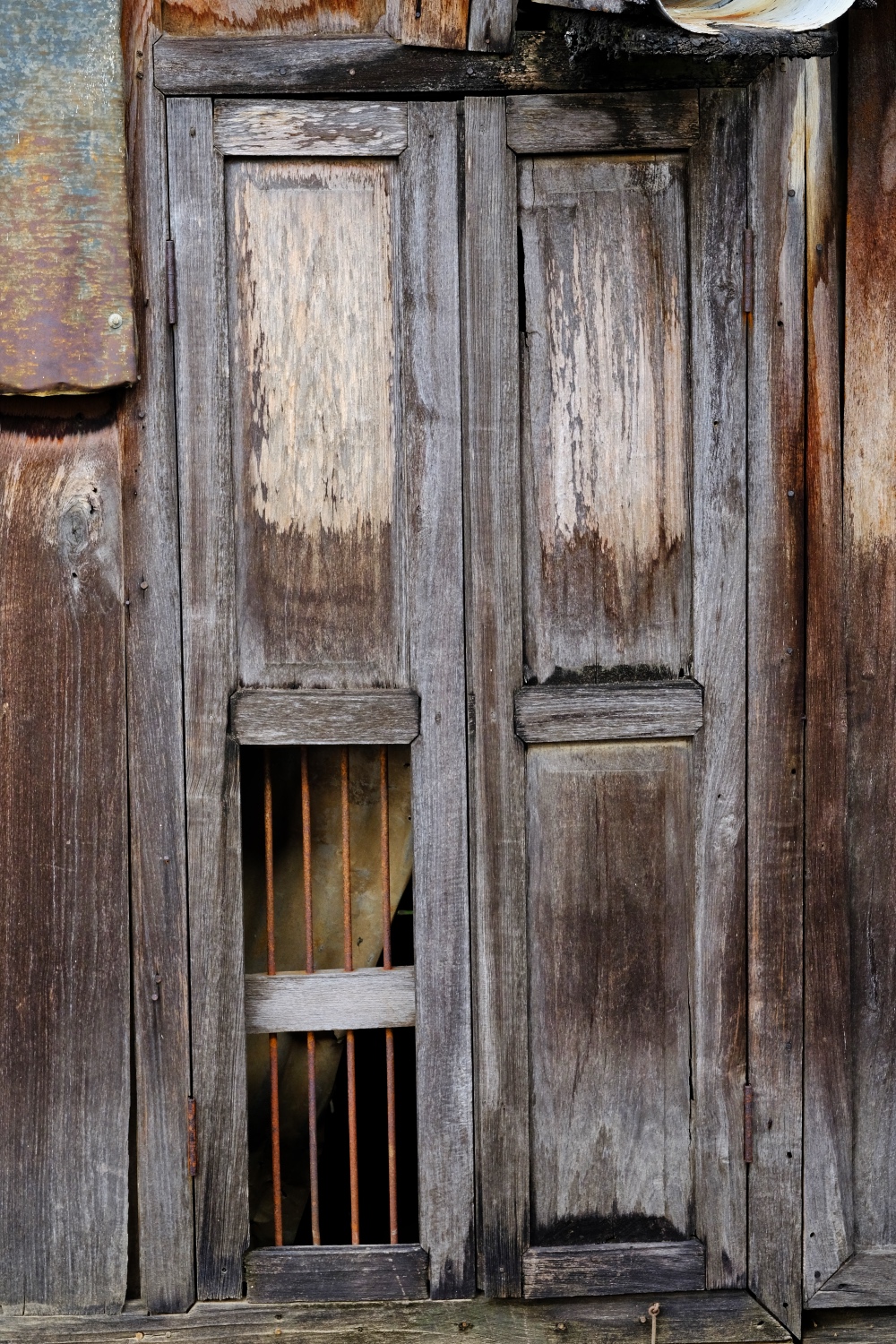 I love the textures of deteriorating wood on old doors and windows. This particular riverside house had absolutely scrumptious surfaces.
I love the textures of deteriorating wood on old doors and windows. This particular riverside house had absolutely scrumptious surfaces.
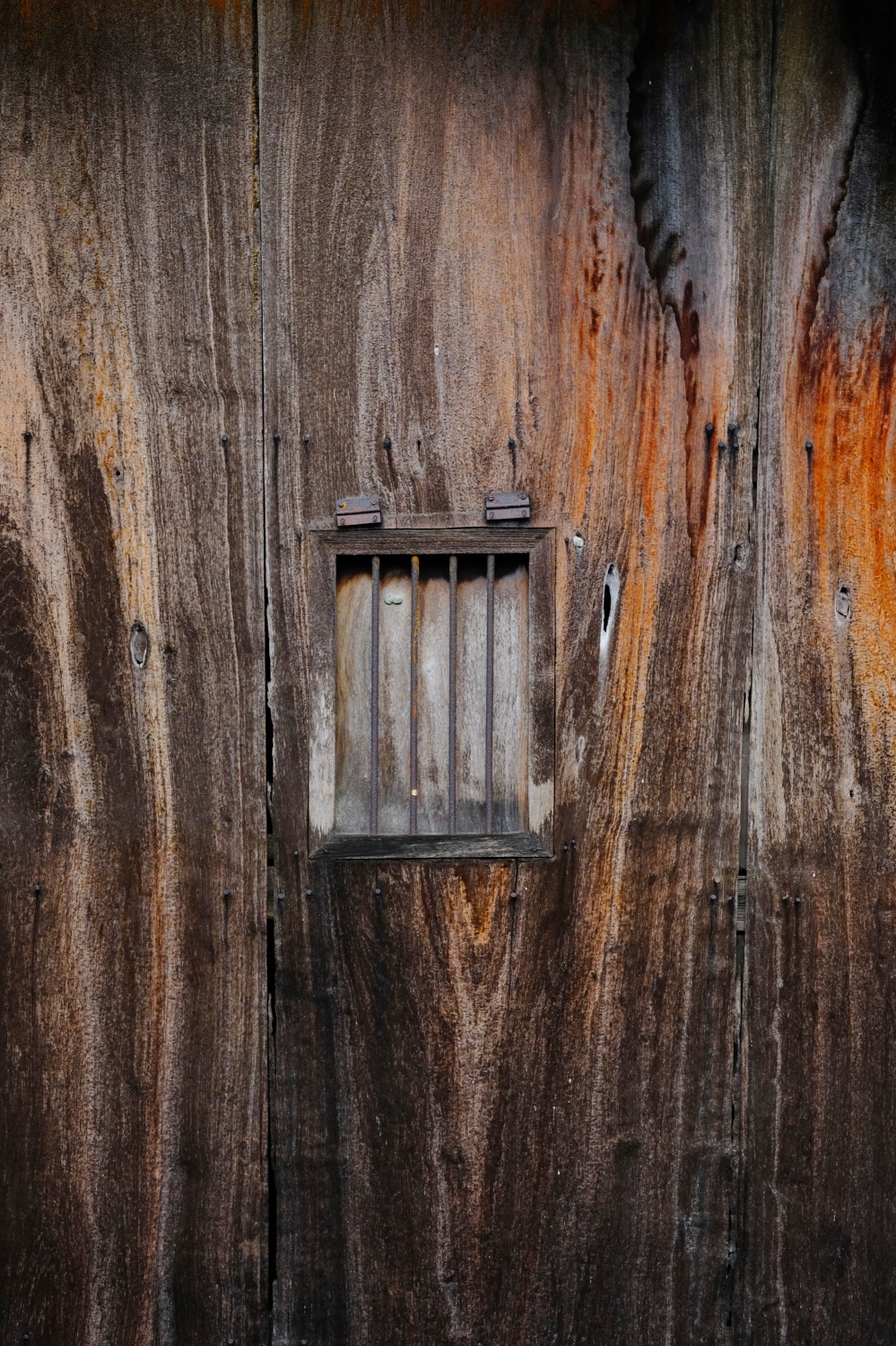 Yes, these are the actual colors . . . fantastic.
Yes, these are the actual colors . . . fantastic.
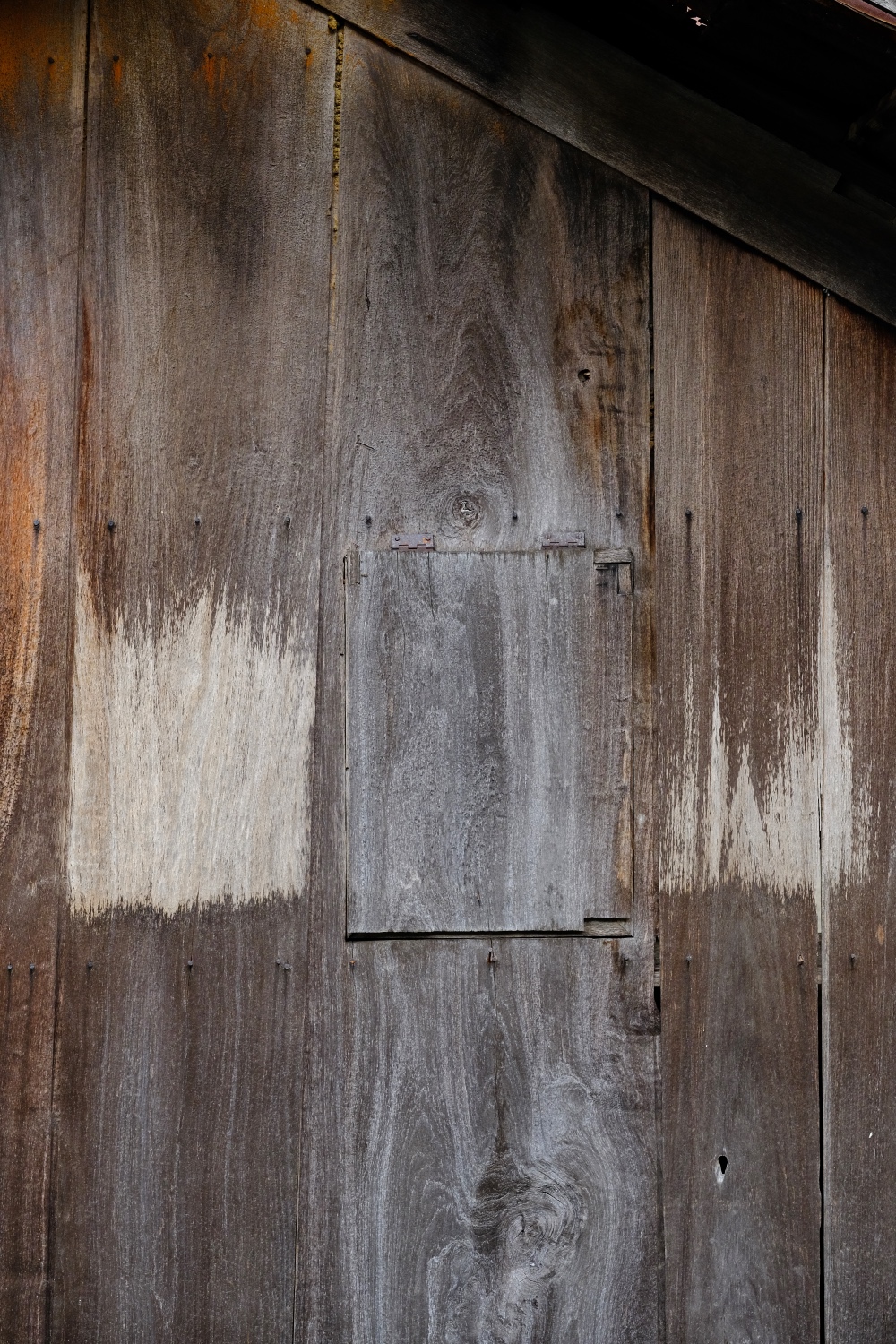 I think of the surface variegation on these surfaces as their histories.
I think of the surface variegation on these surfaces as their histories.
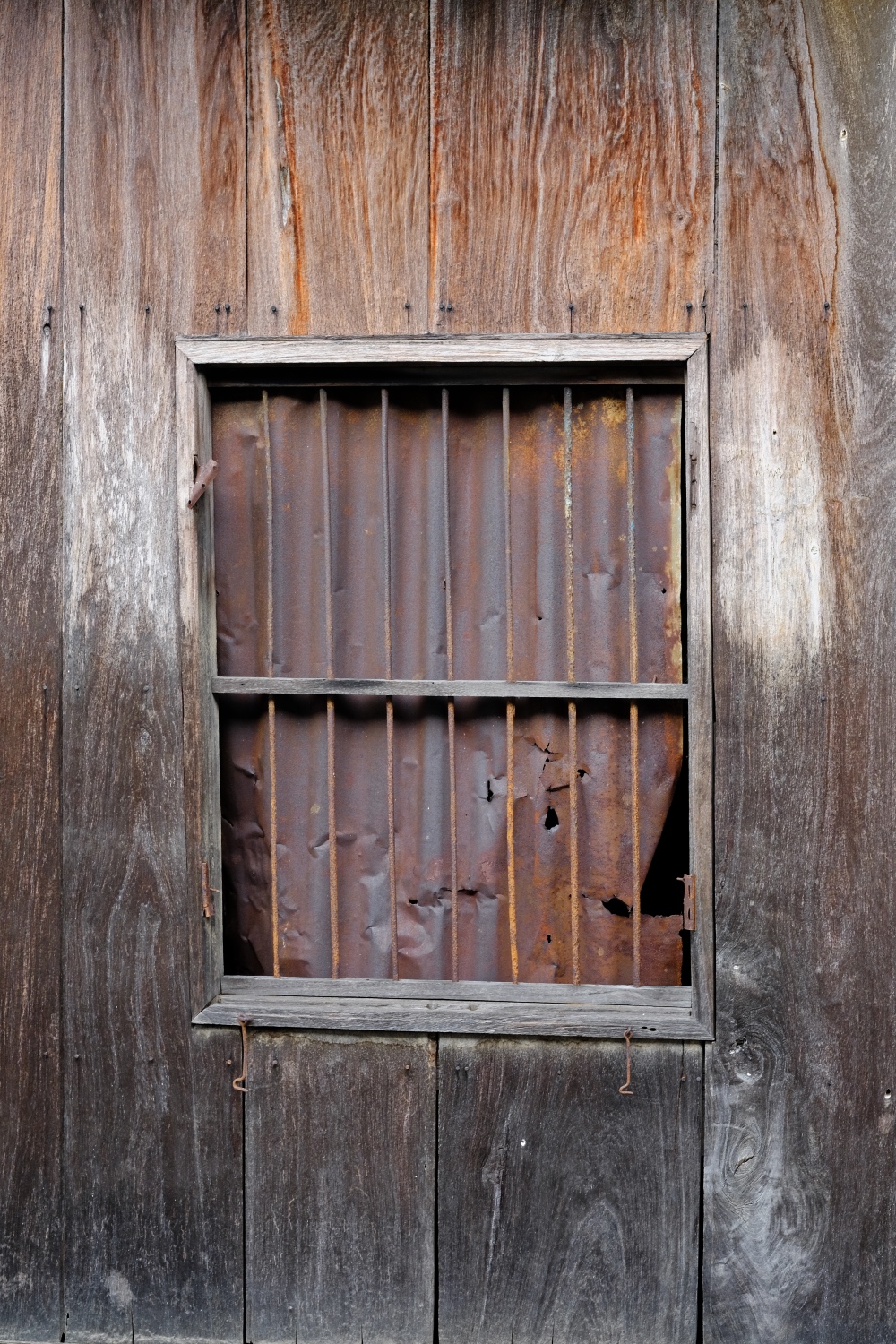 This window has everything I want in a photo: dilapidation, corrugation, and decay.
This window has everything I want in a photo: dilapidation, corrugation, and decay.
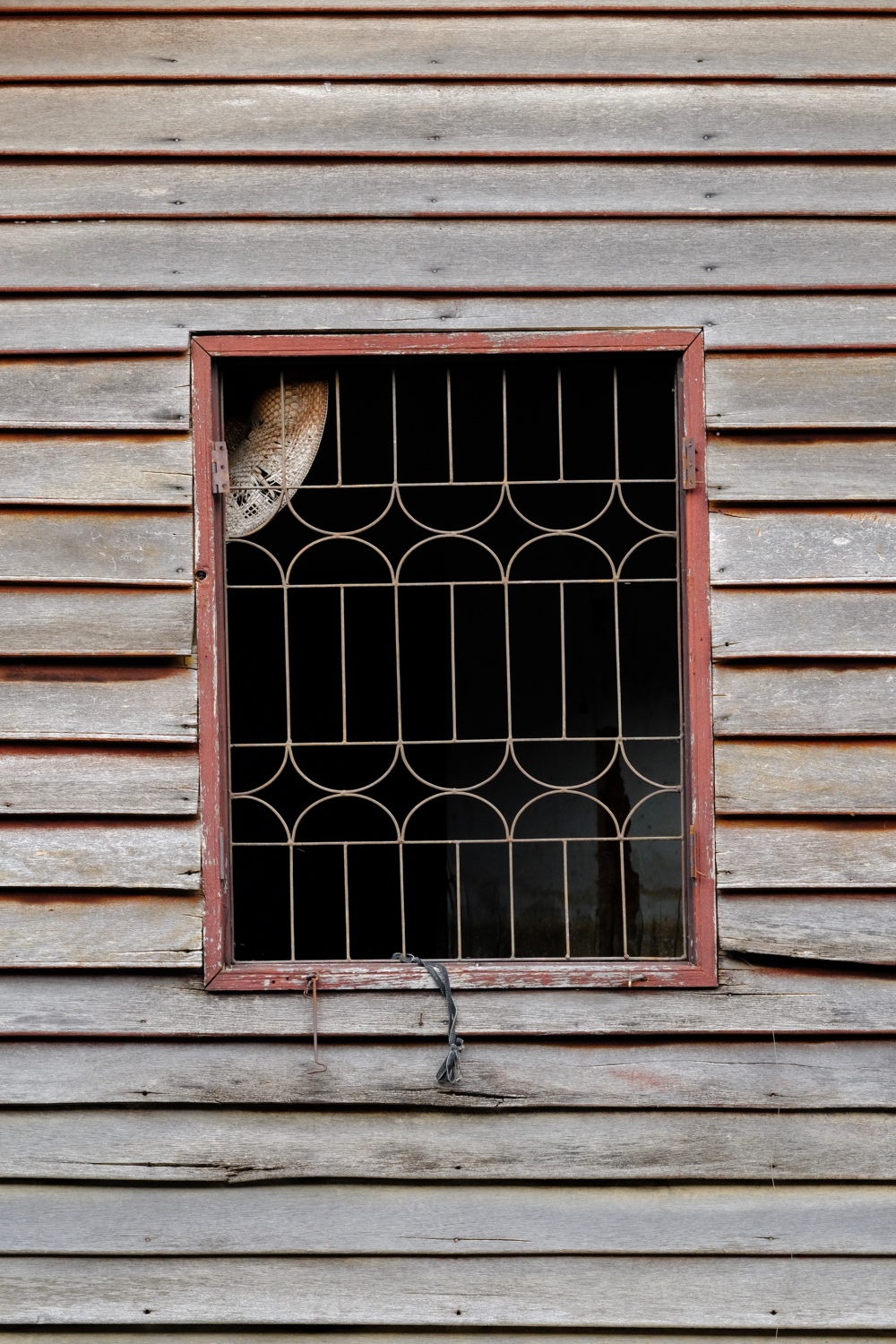 This window and those above are all on the same old wooden house sitting on pilings in the Chao Phraya River.
This window and those above are all on the same old wooden house sitting on pilings in the Chao Phraya River.
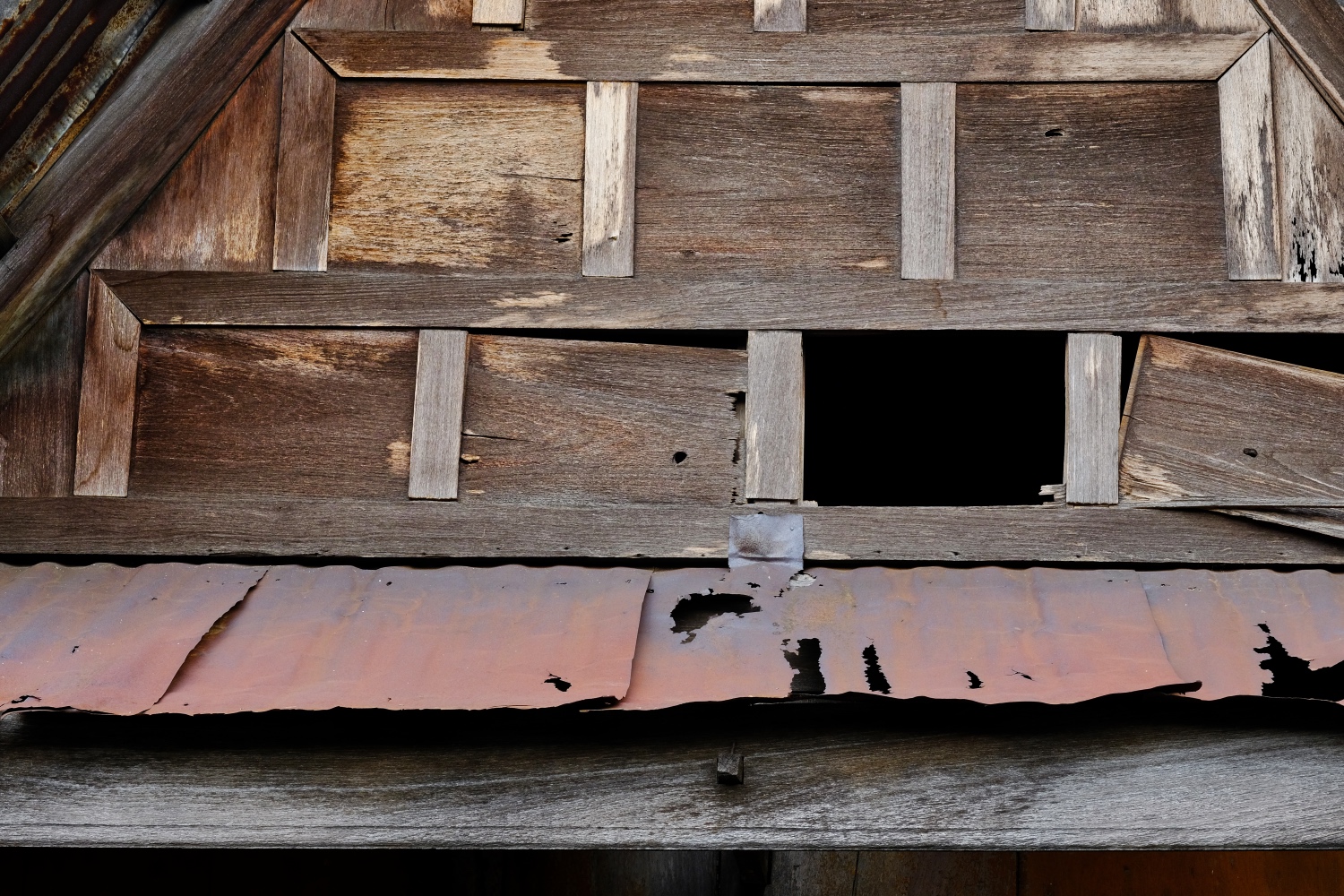 The Thai-style gabled roof . . . showing the age of this magnificent structure.
The Thai-style gabled roof . . . showing the age of this magnificent structure.
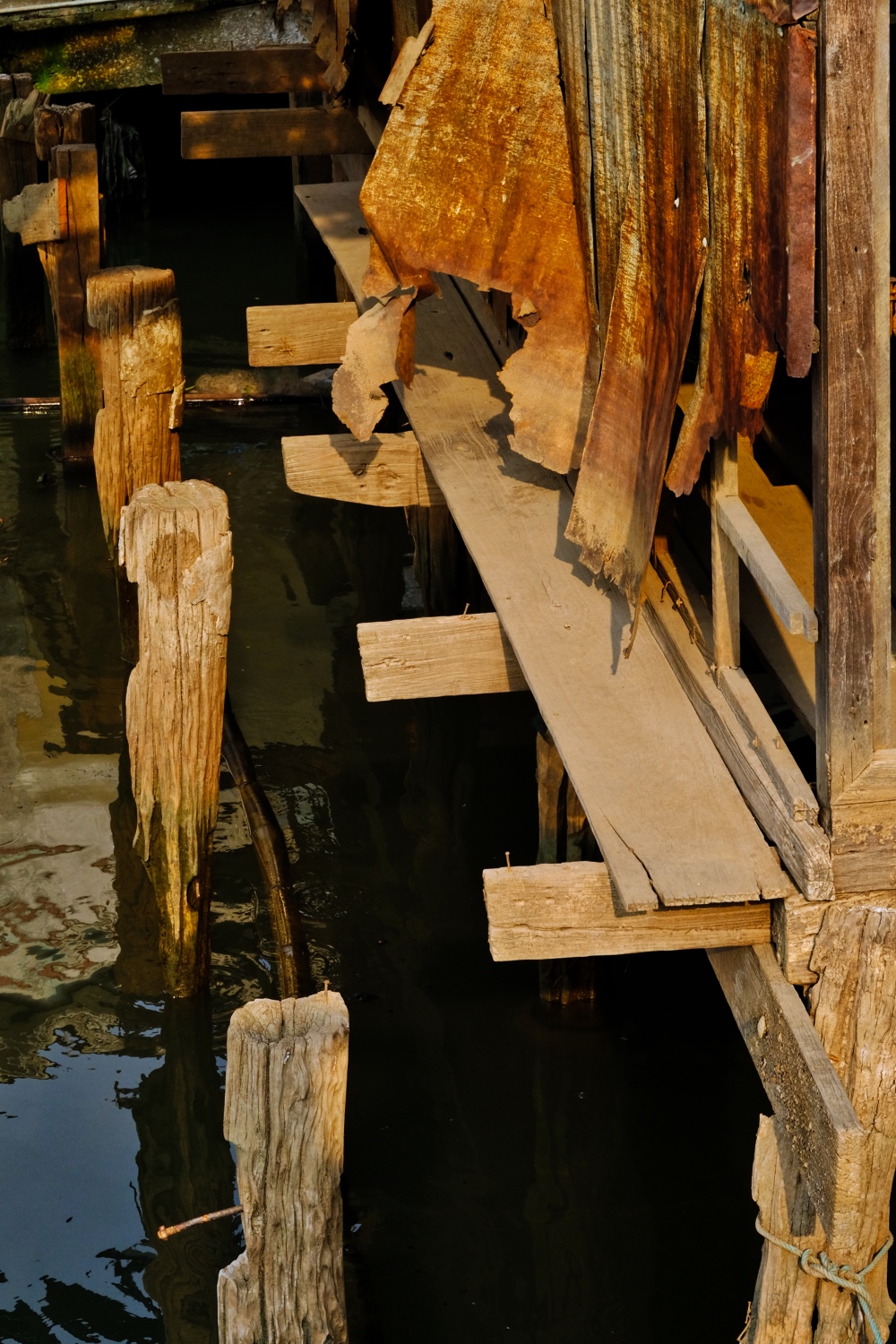 Just as we were leaving this beautiful place, the sun came out and shown magic afternoon light on the rotting piers of the old house.
Just as we were leaving this beautiful place, the sun came out and shown magic afternoon light on the rotting piers of the old house.
